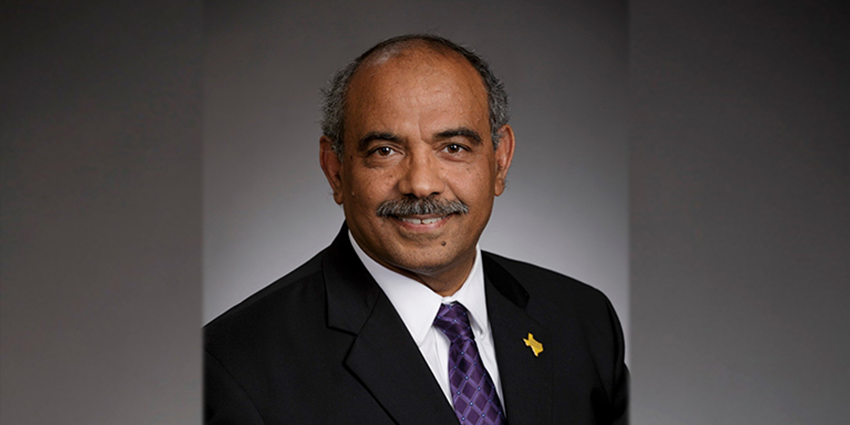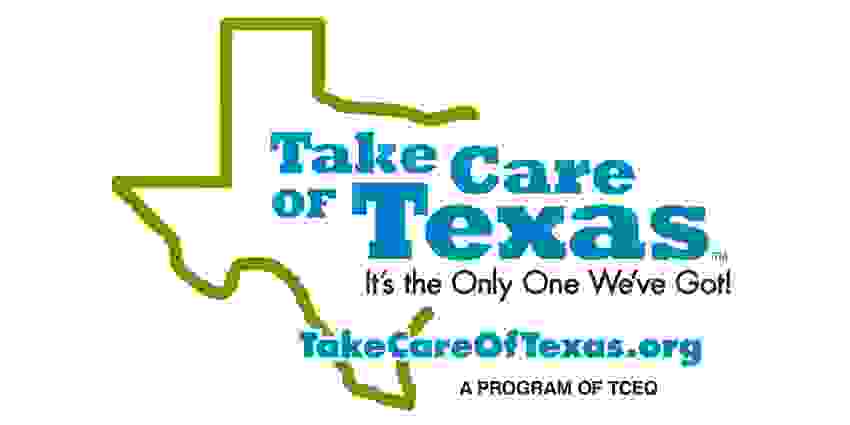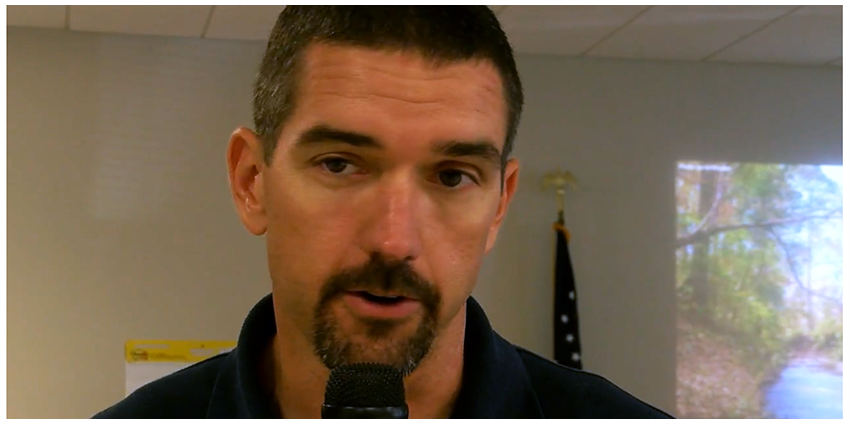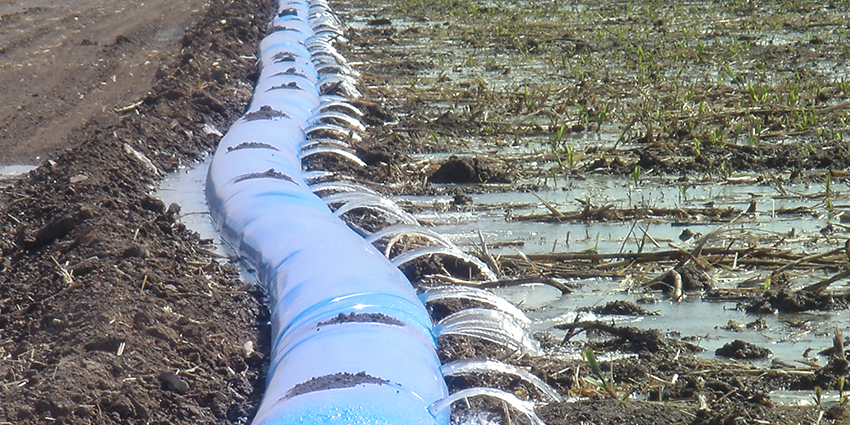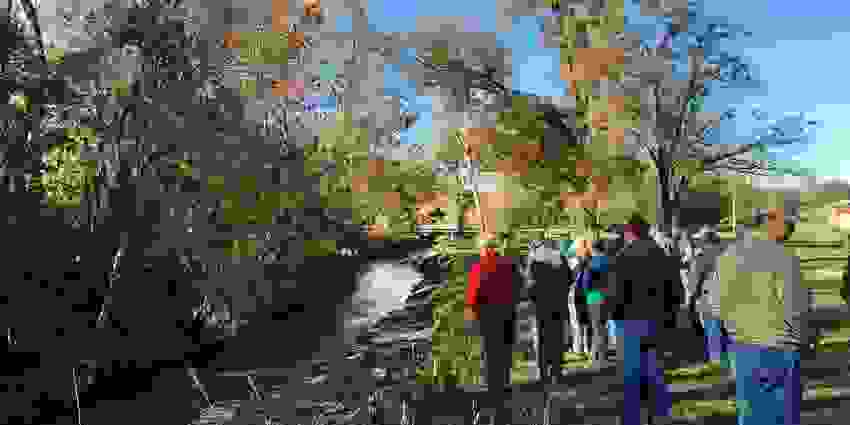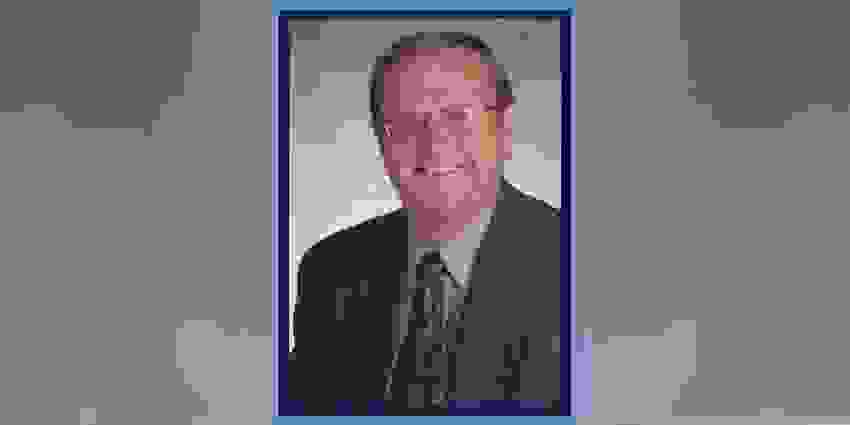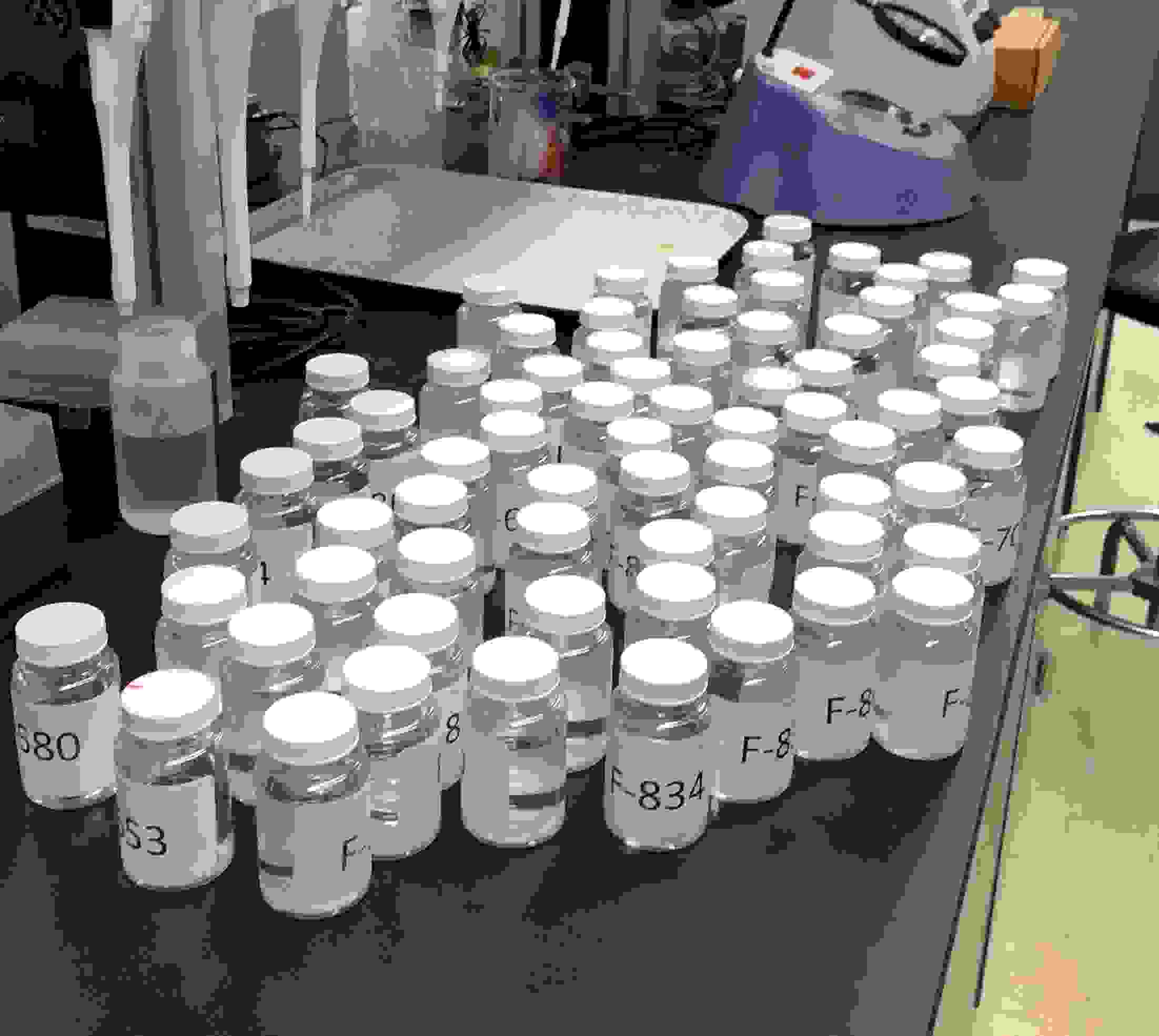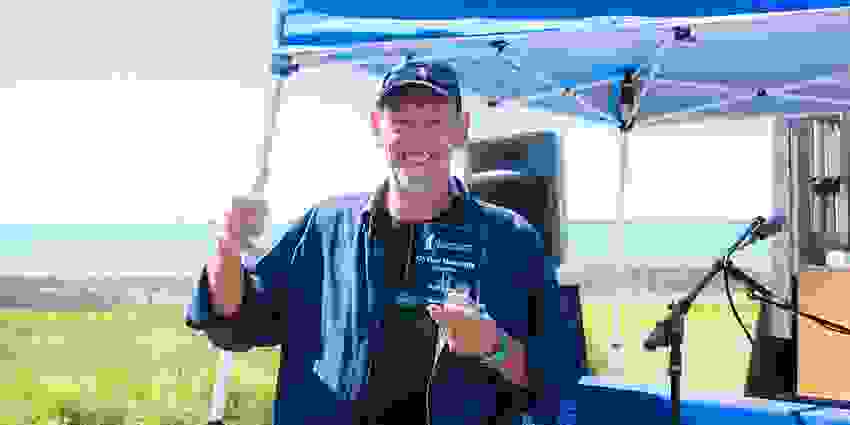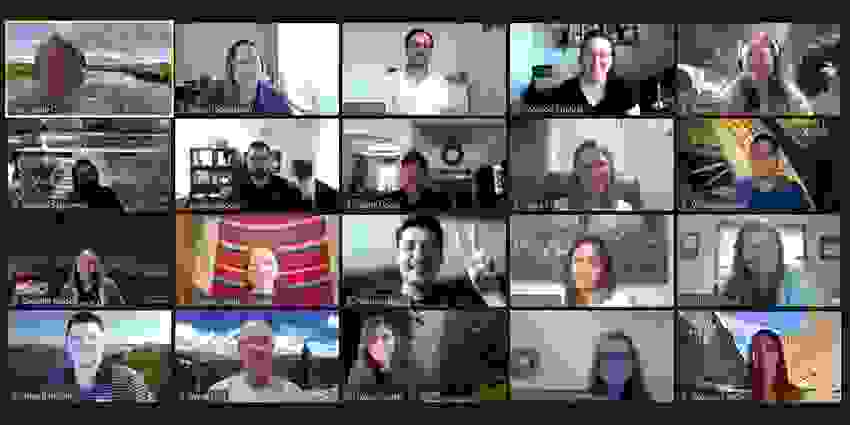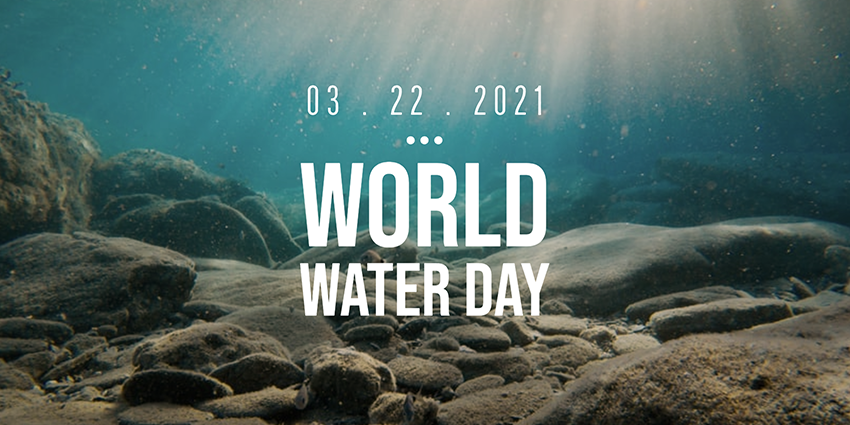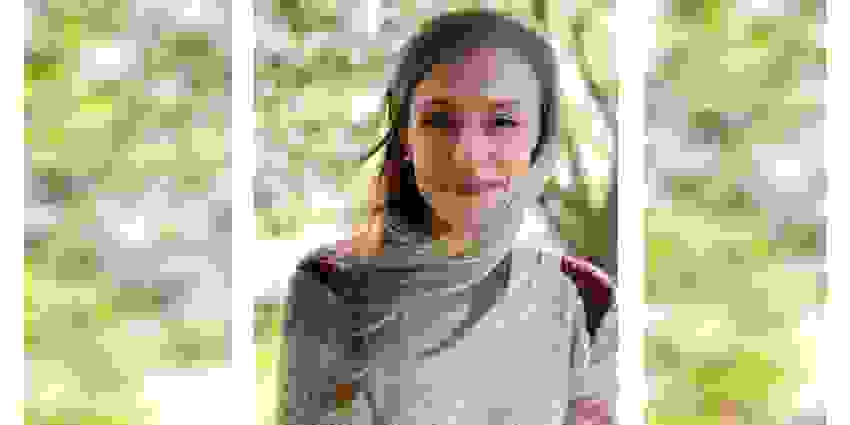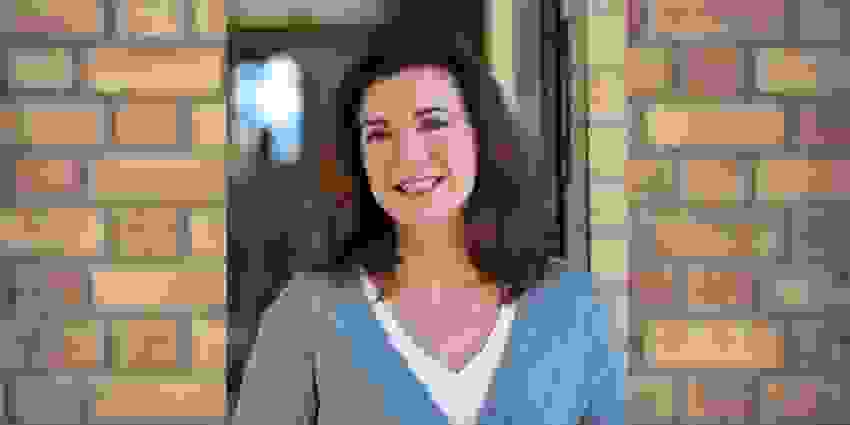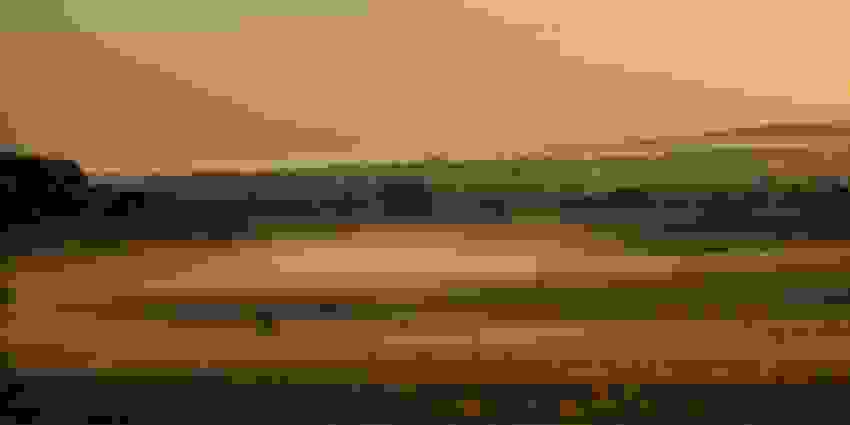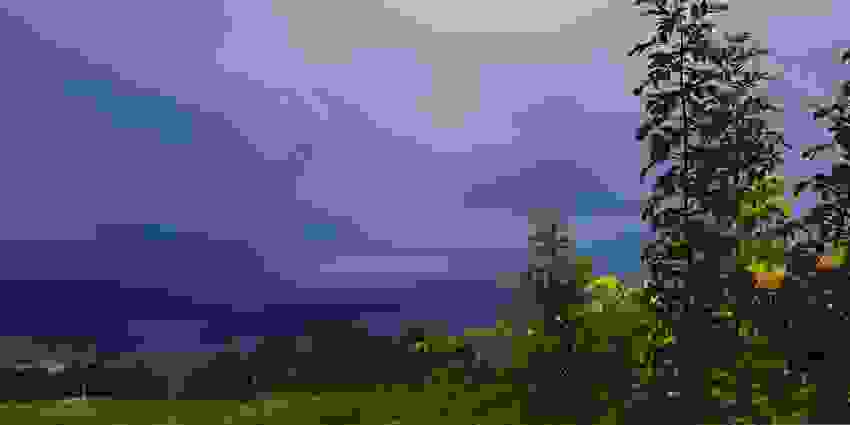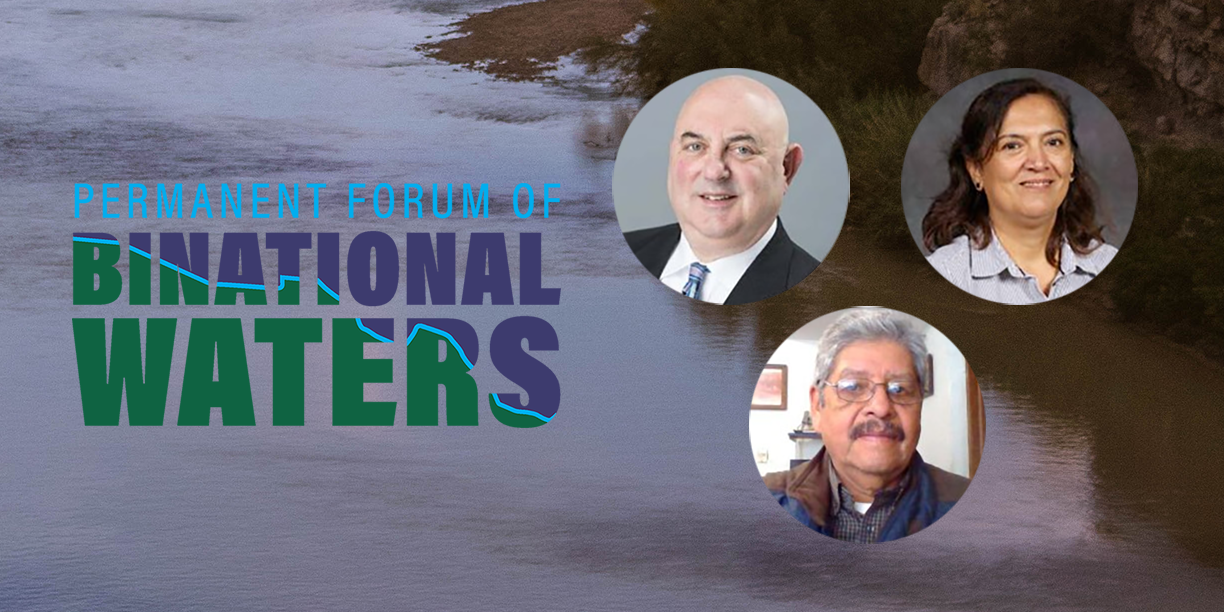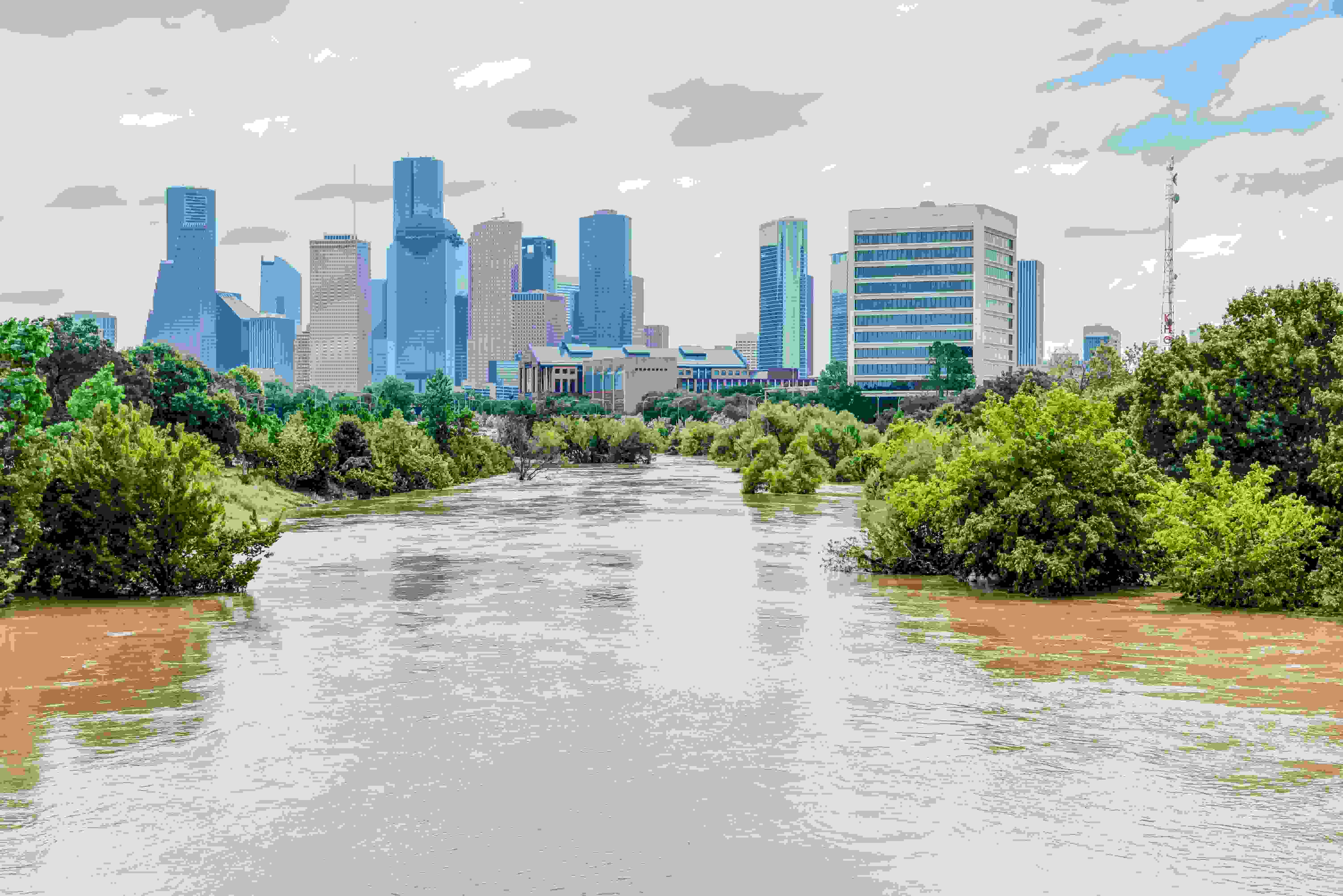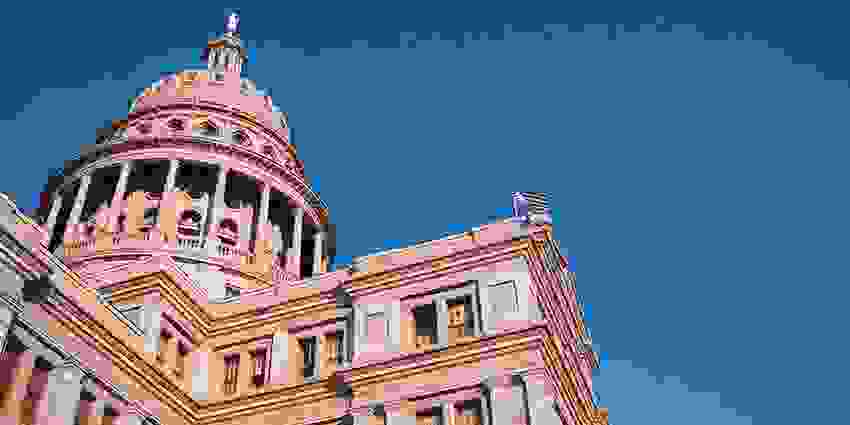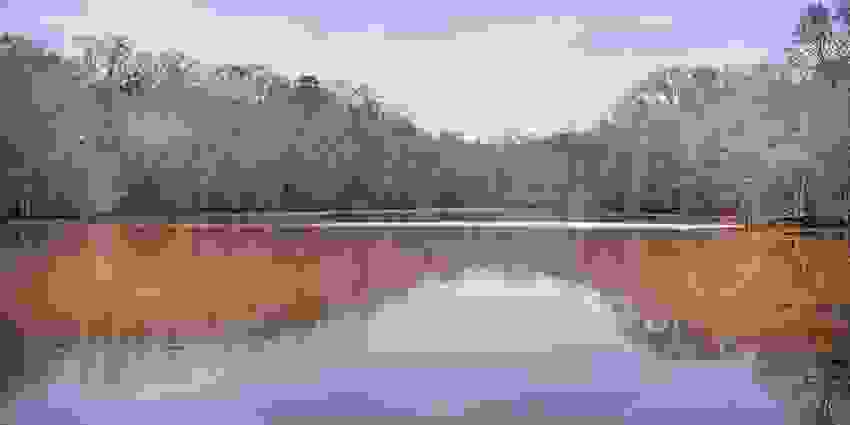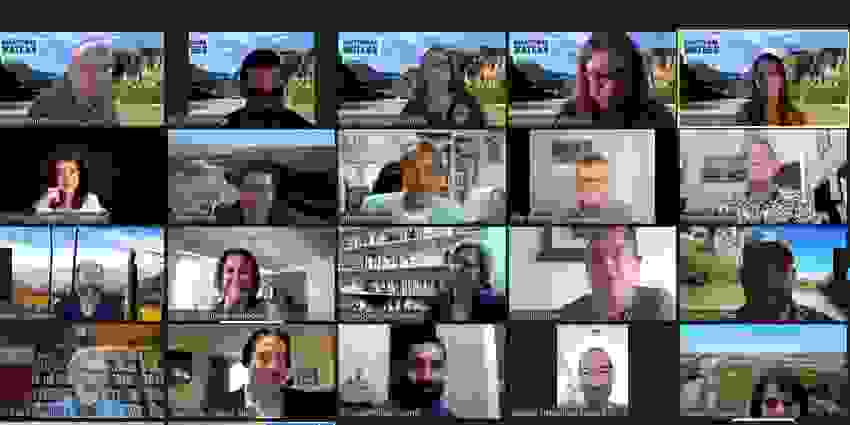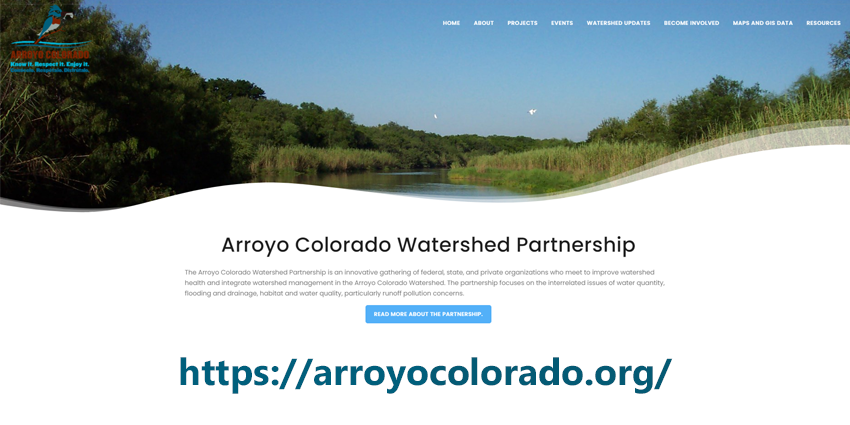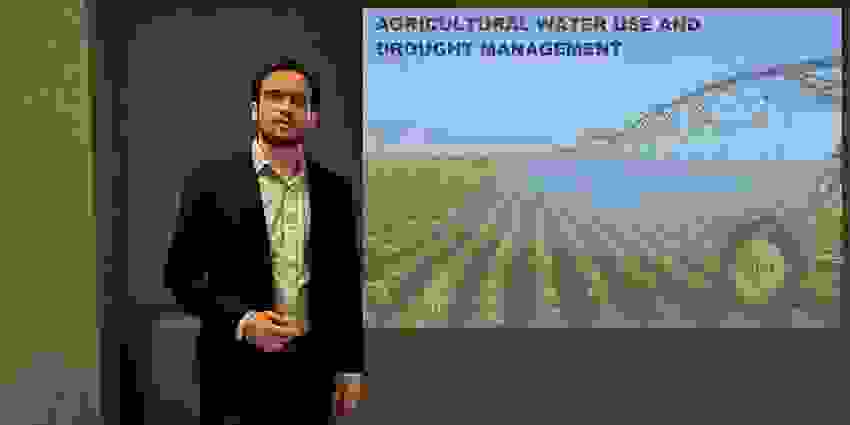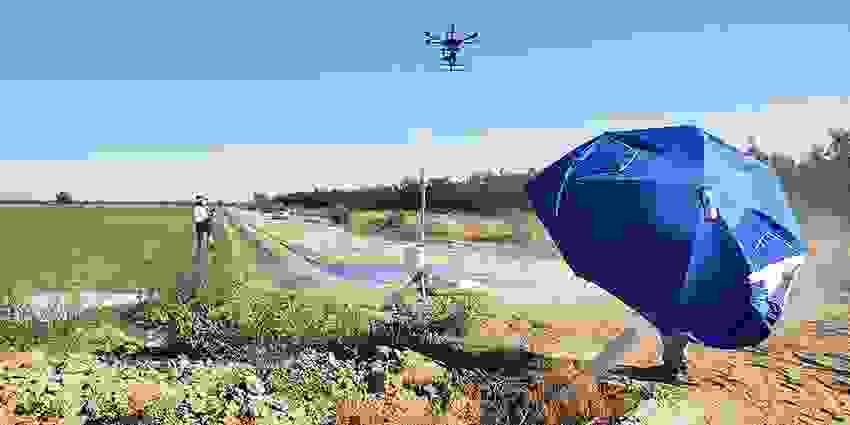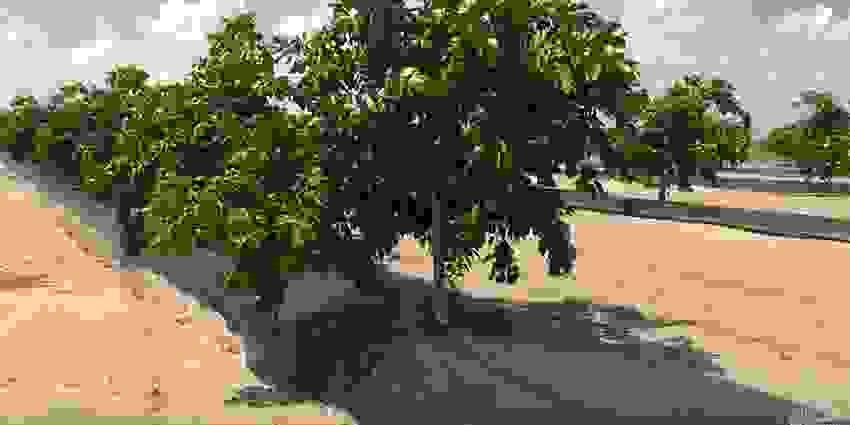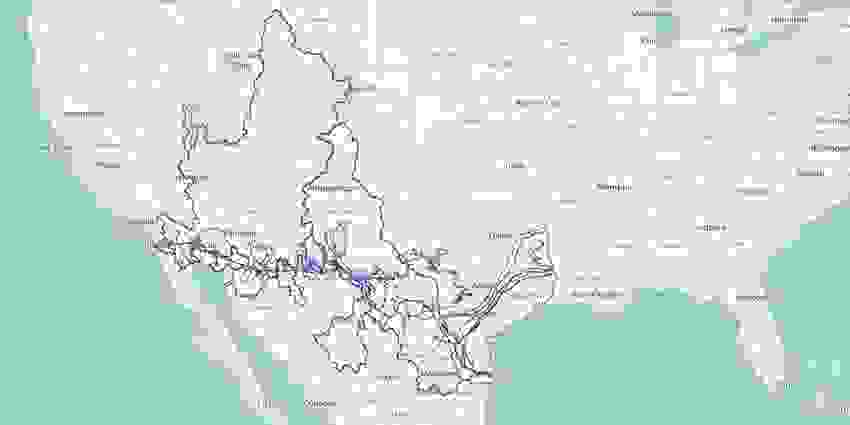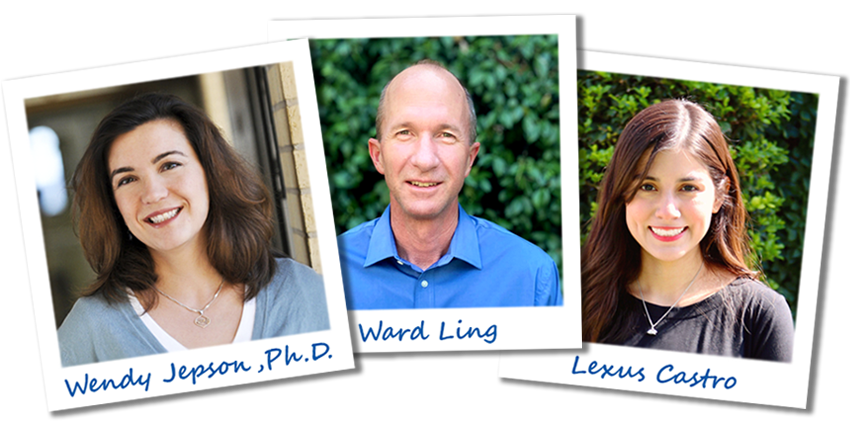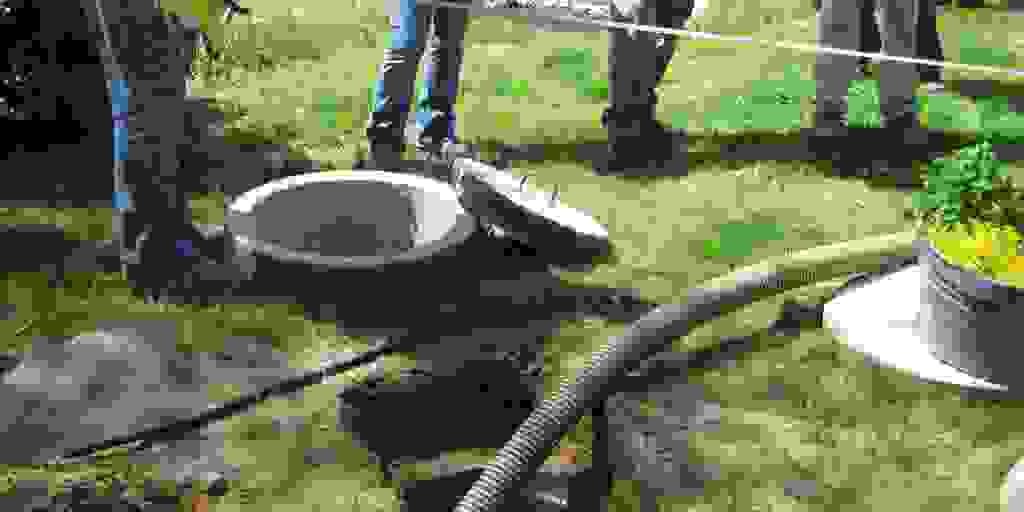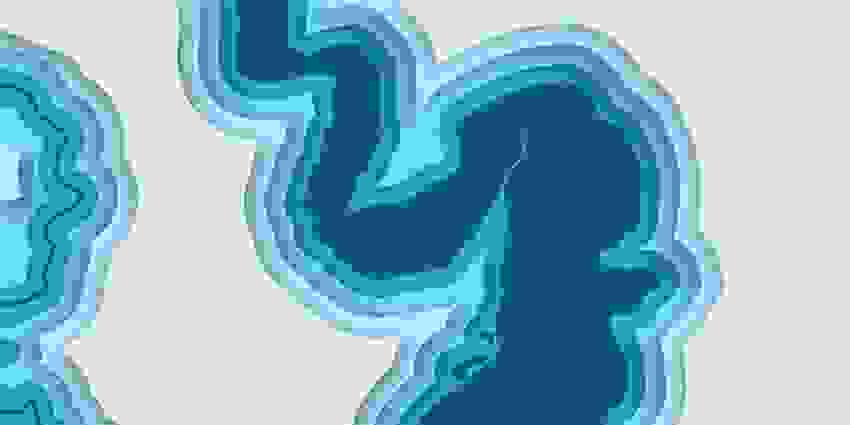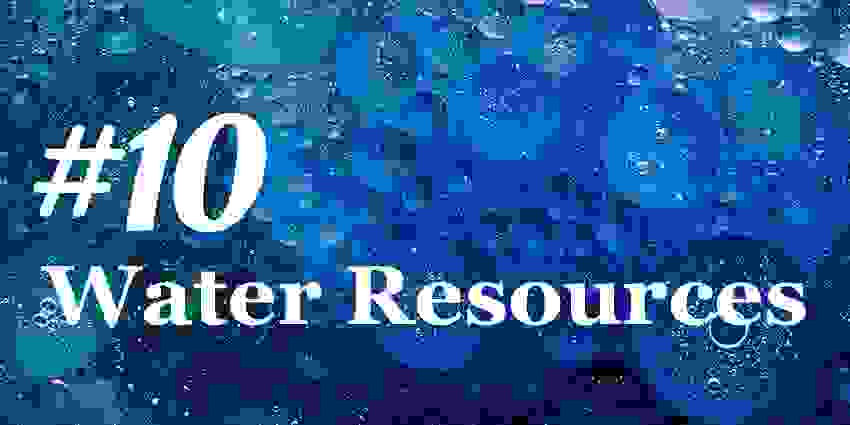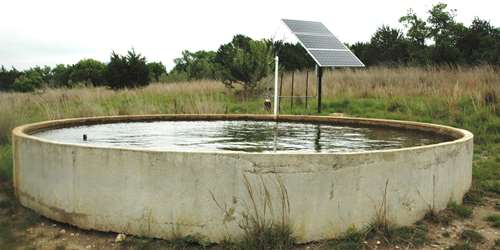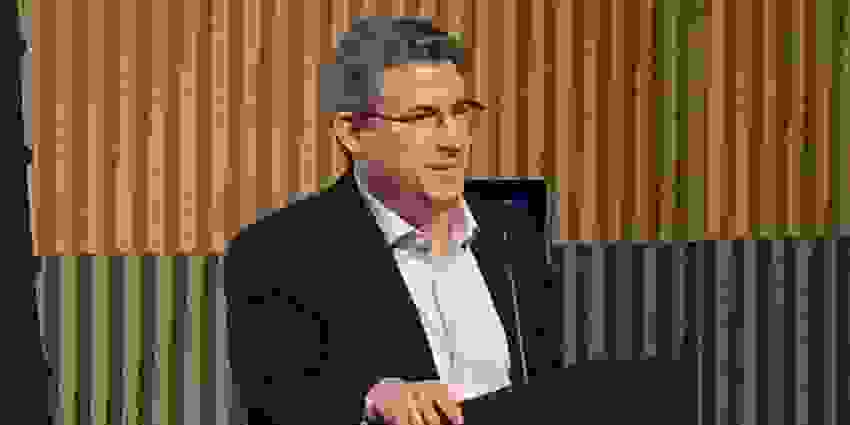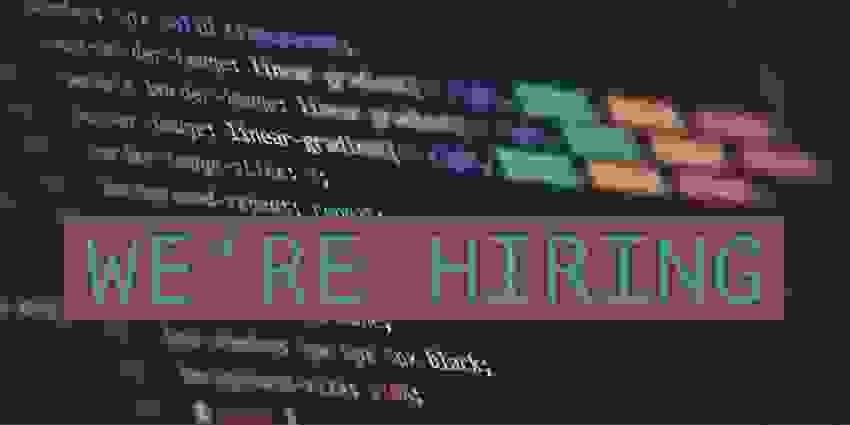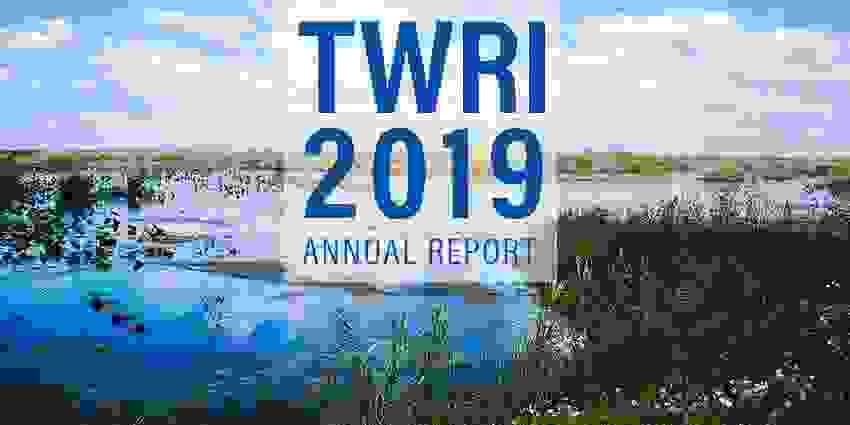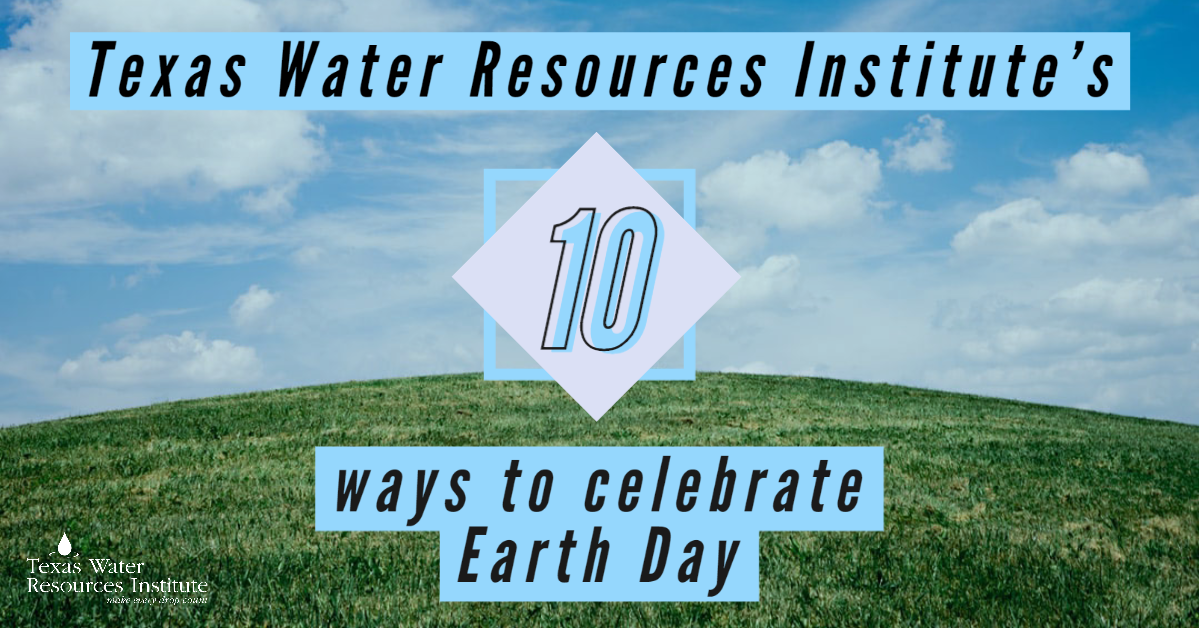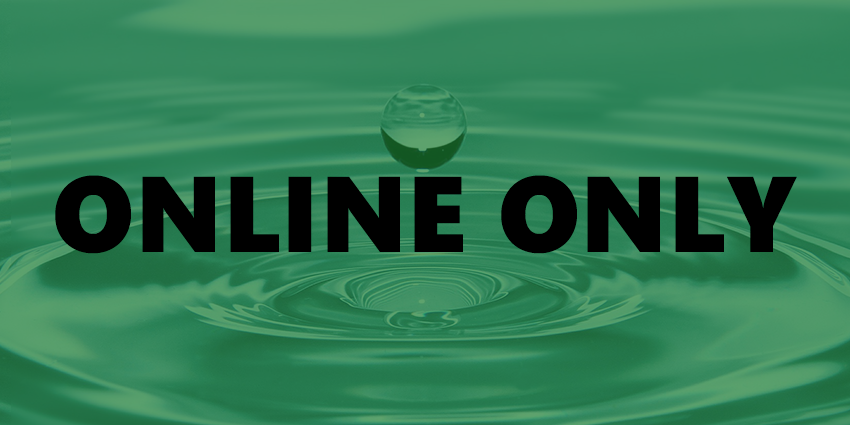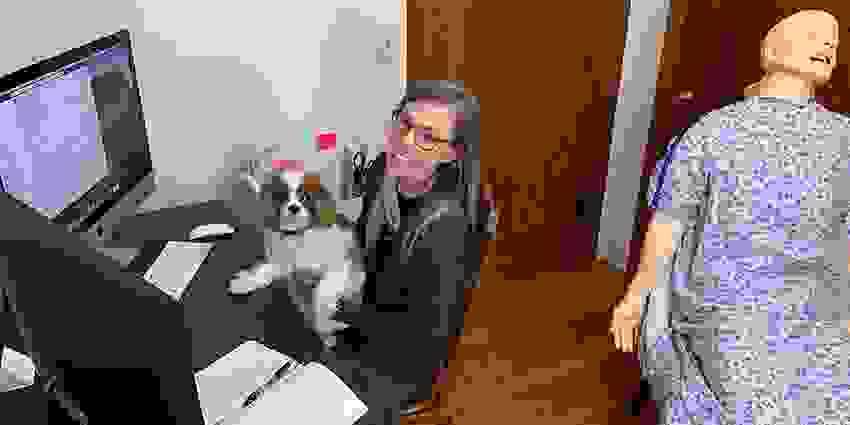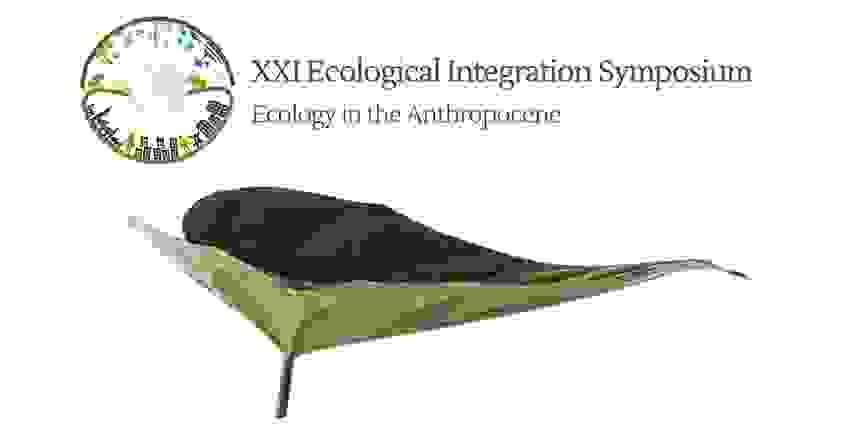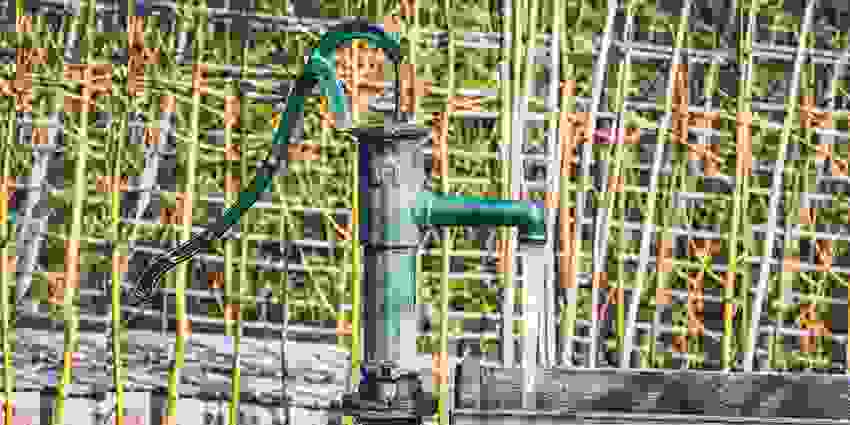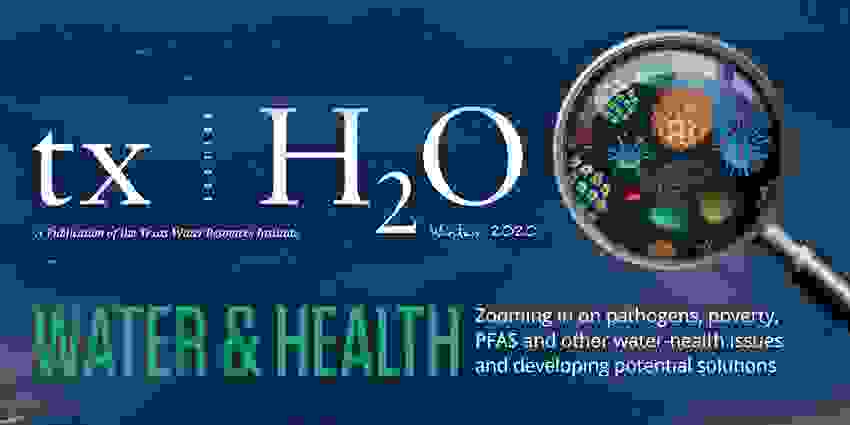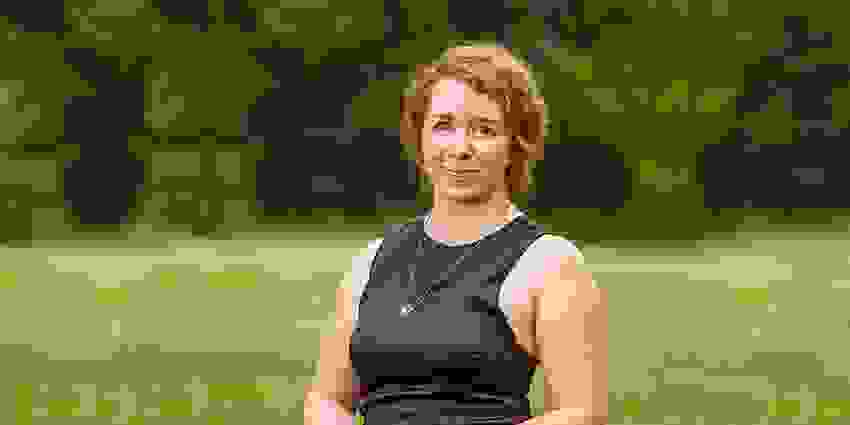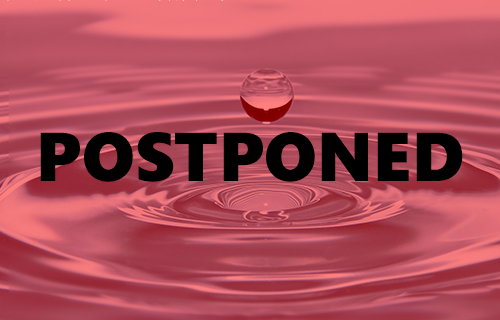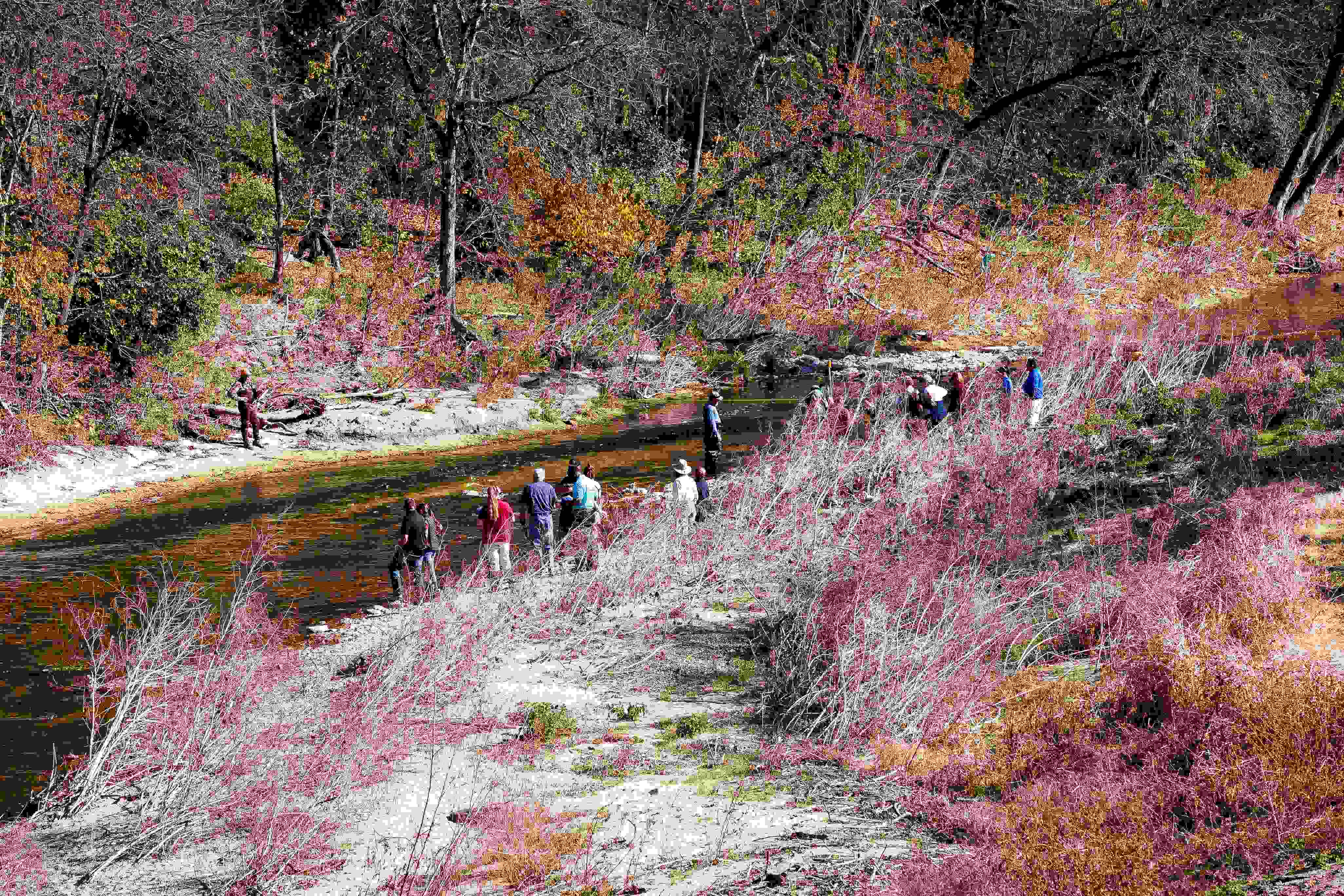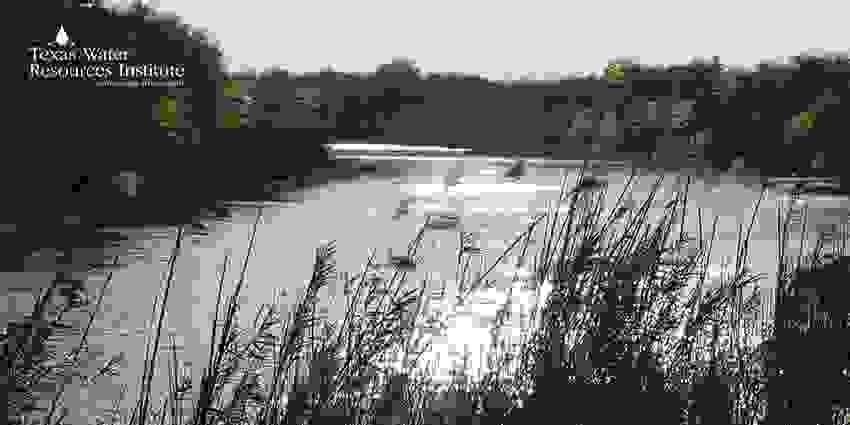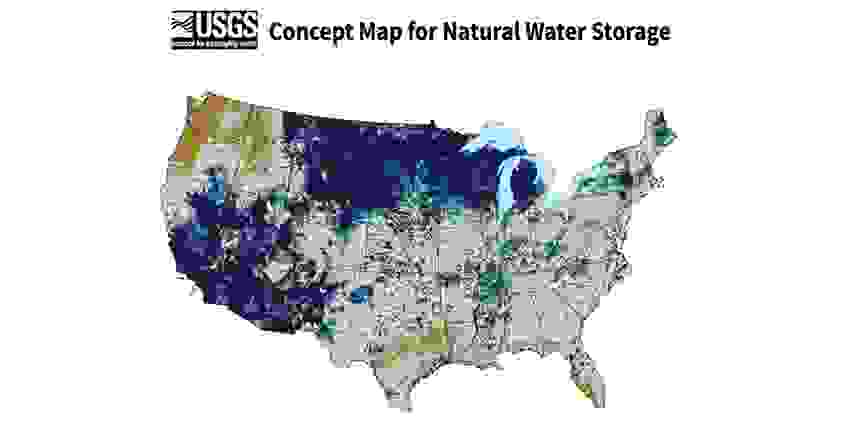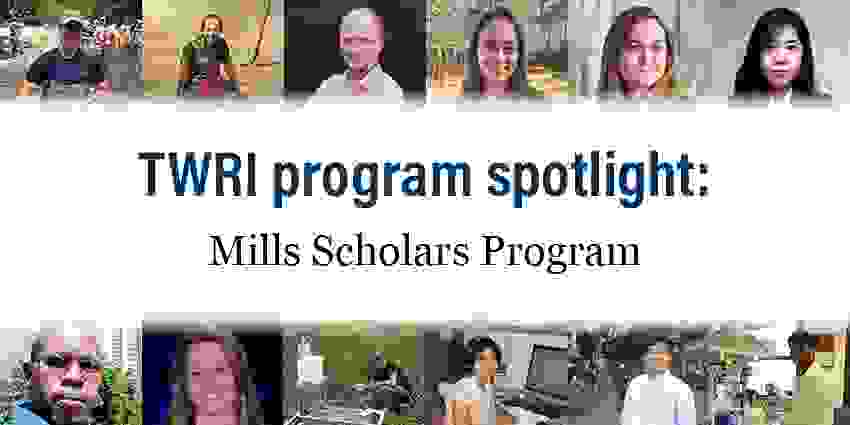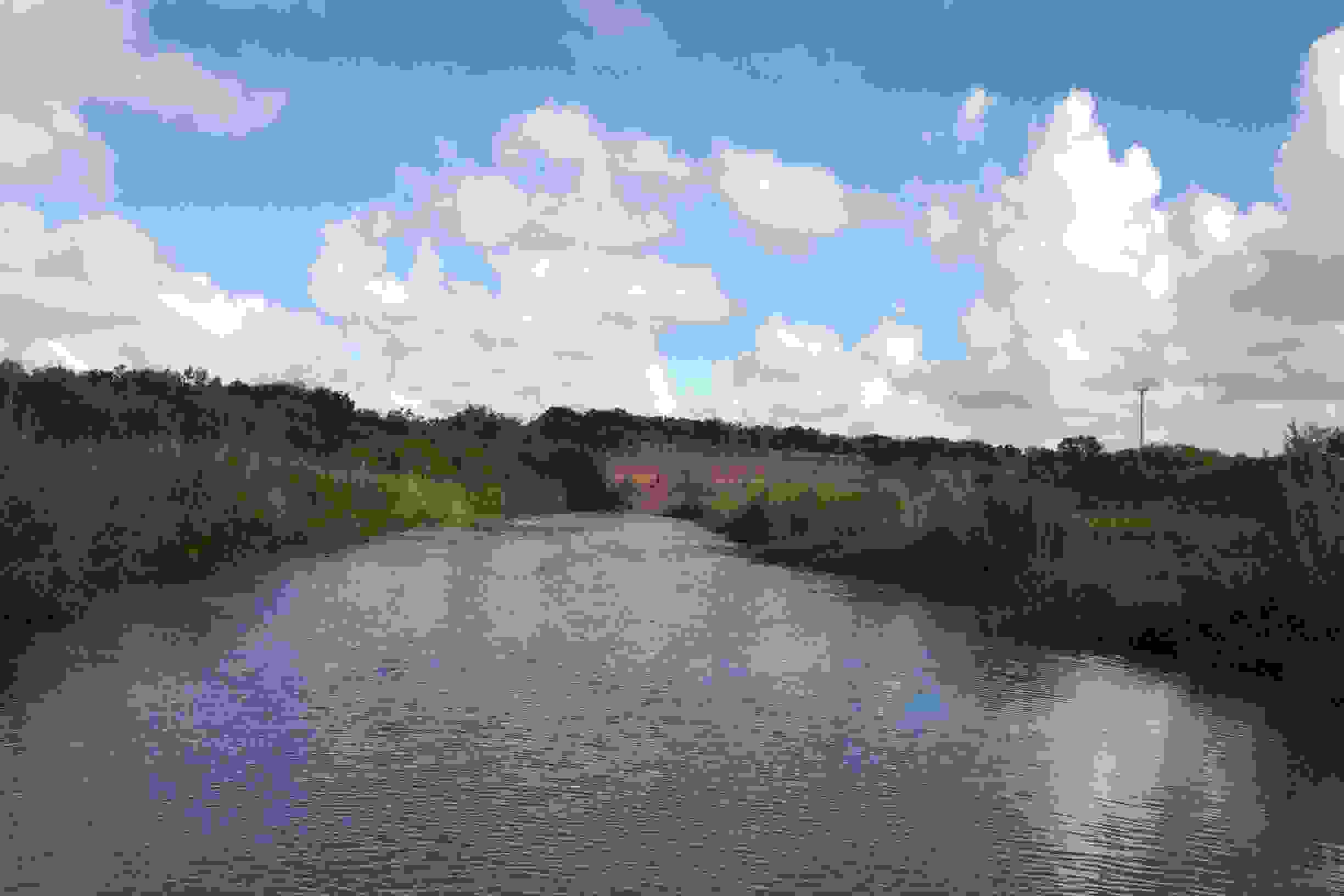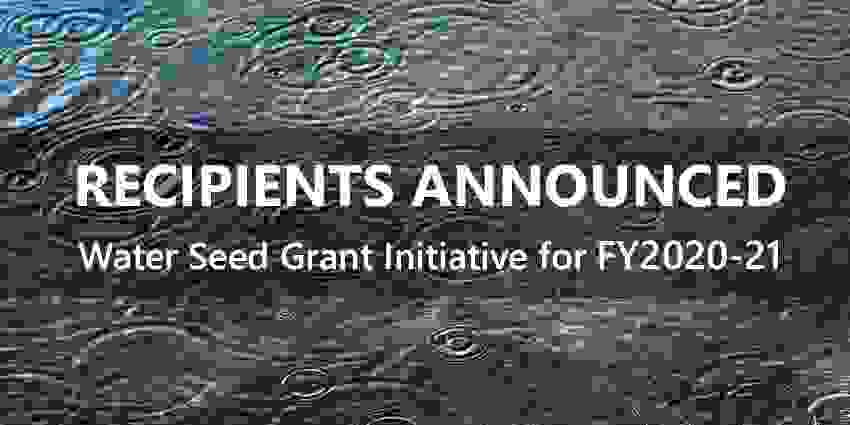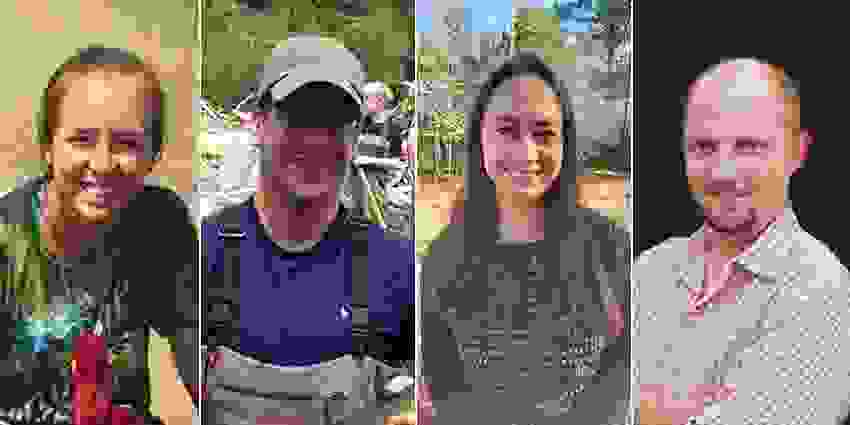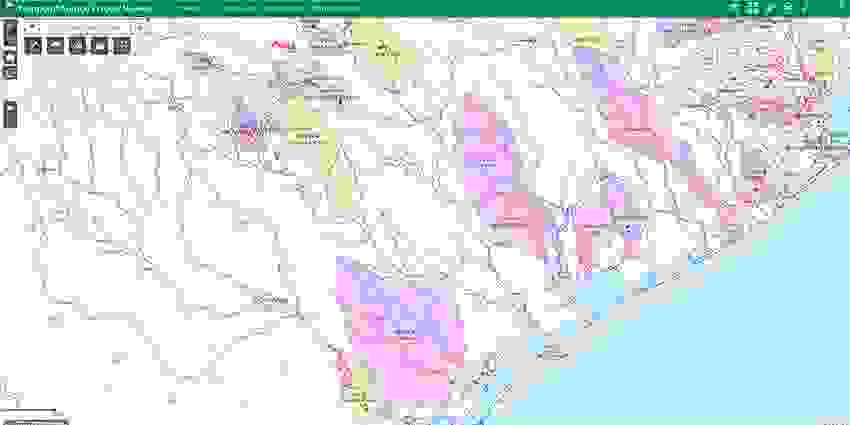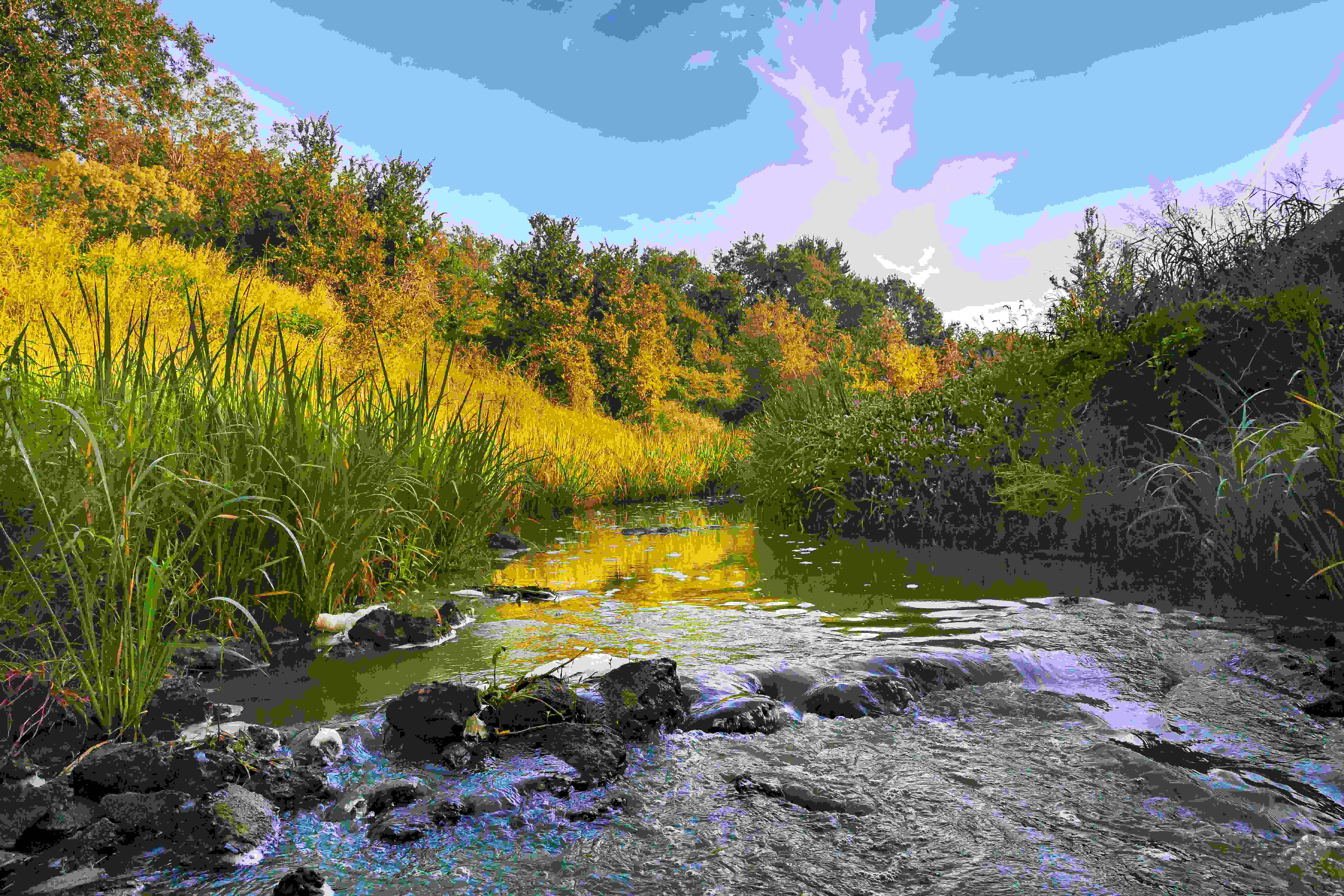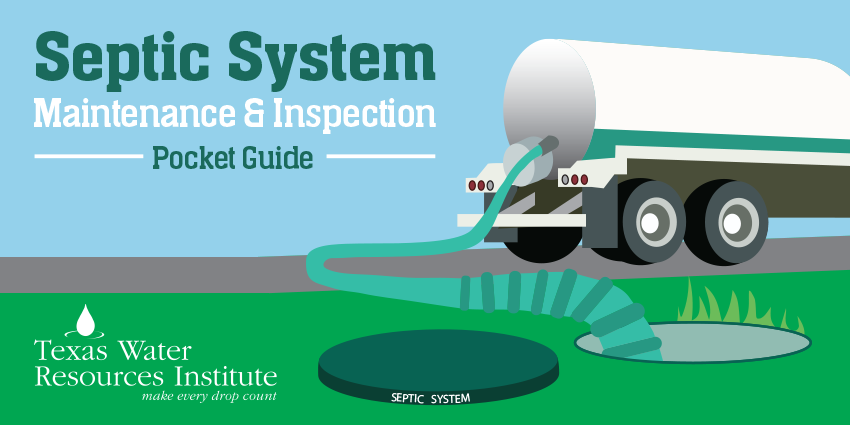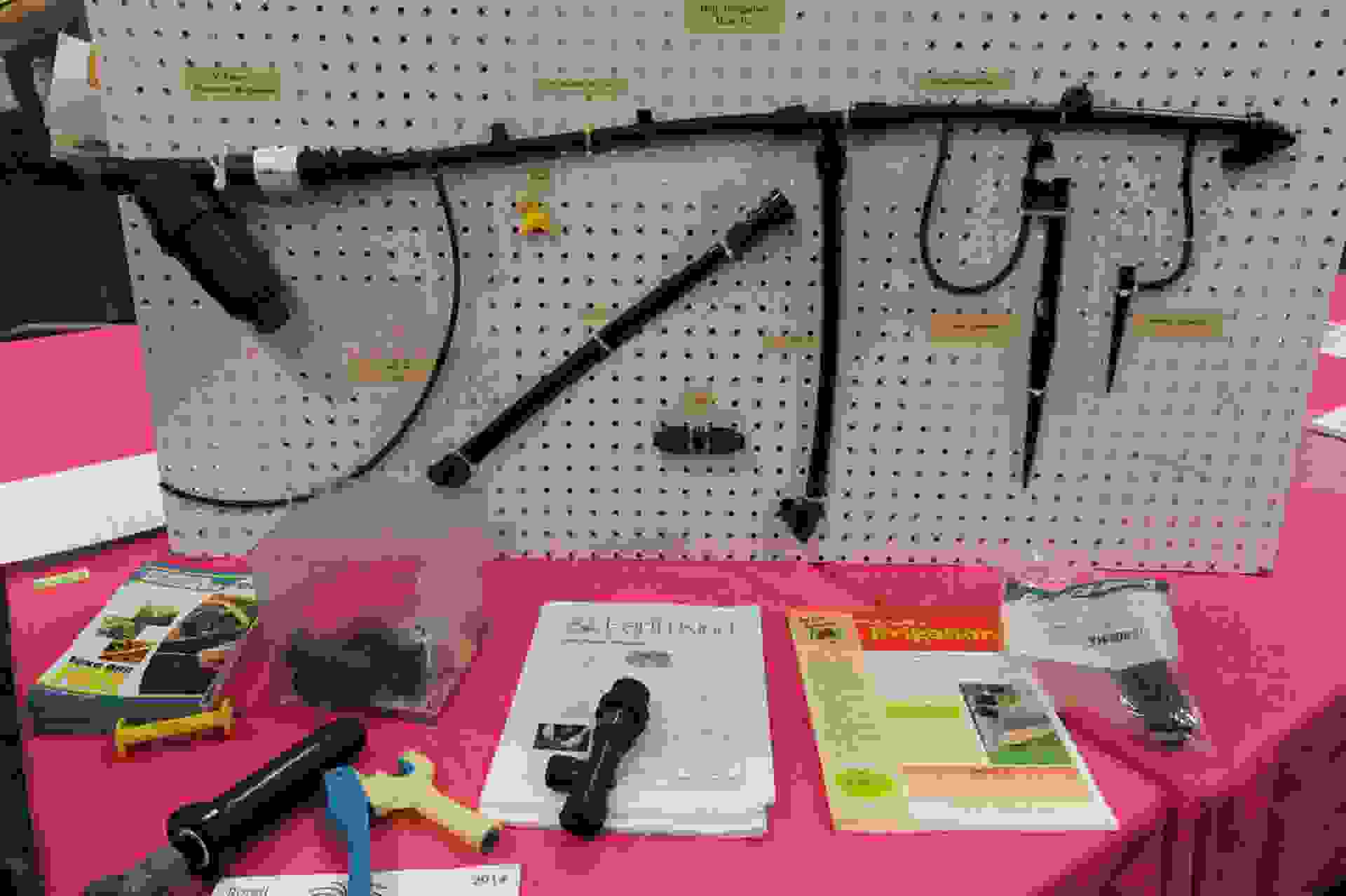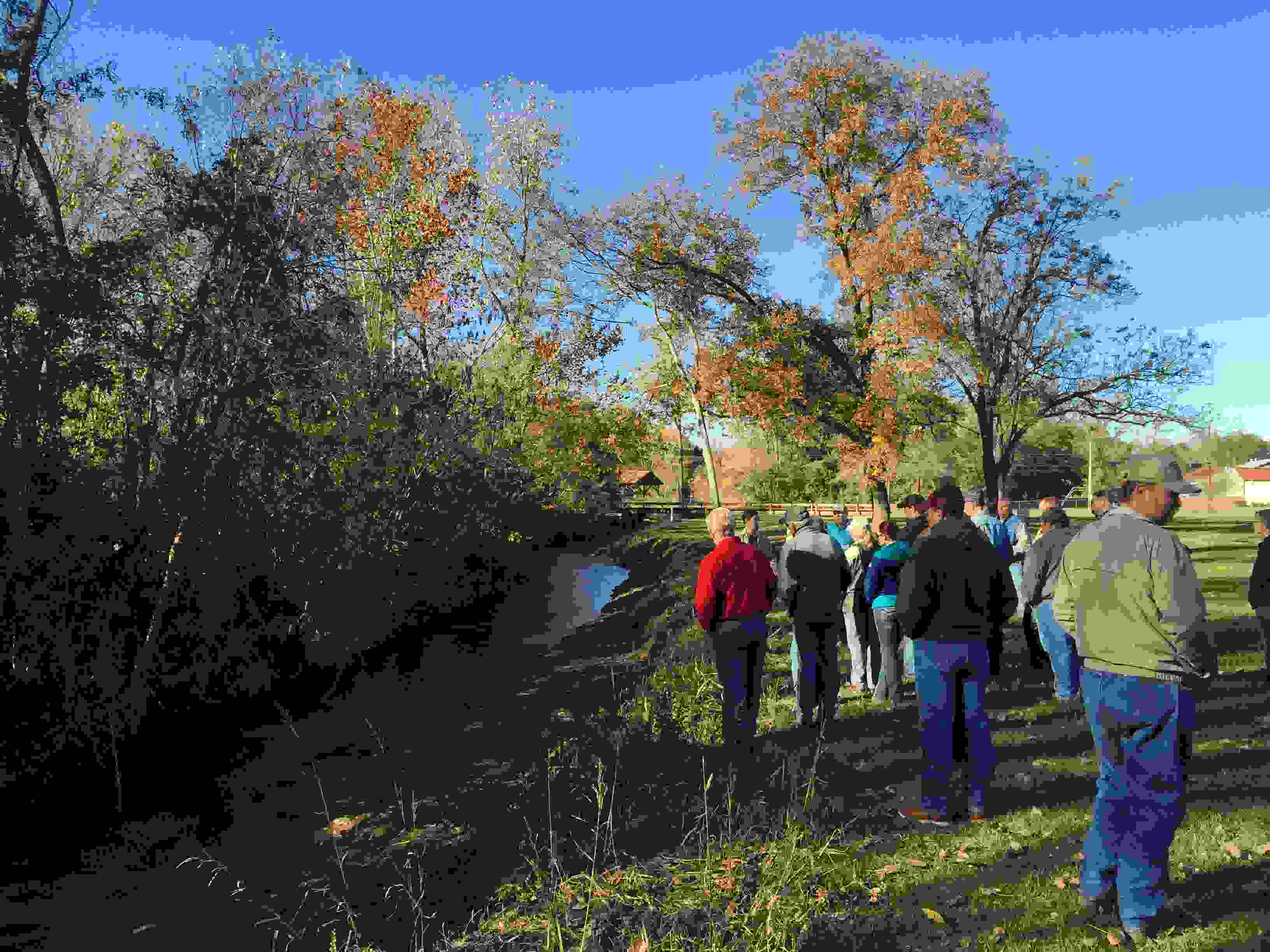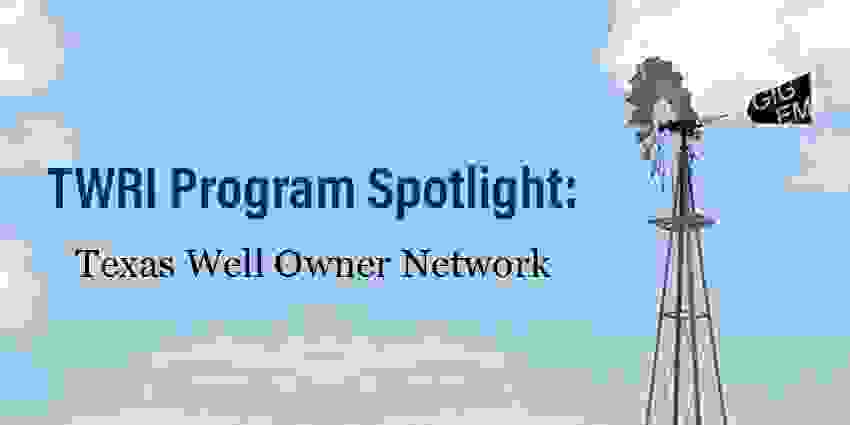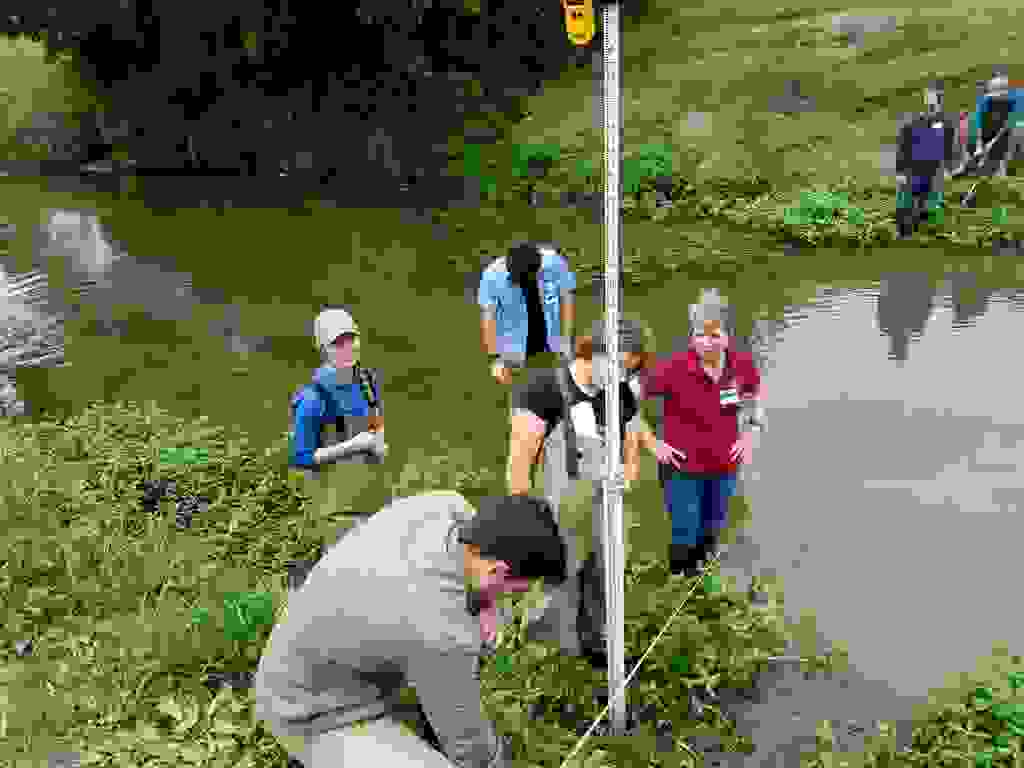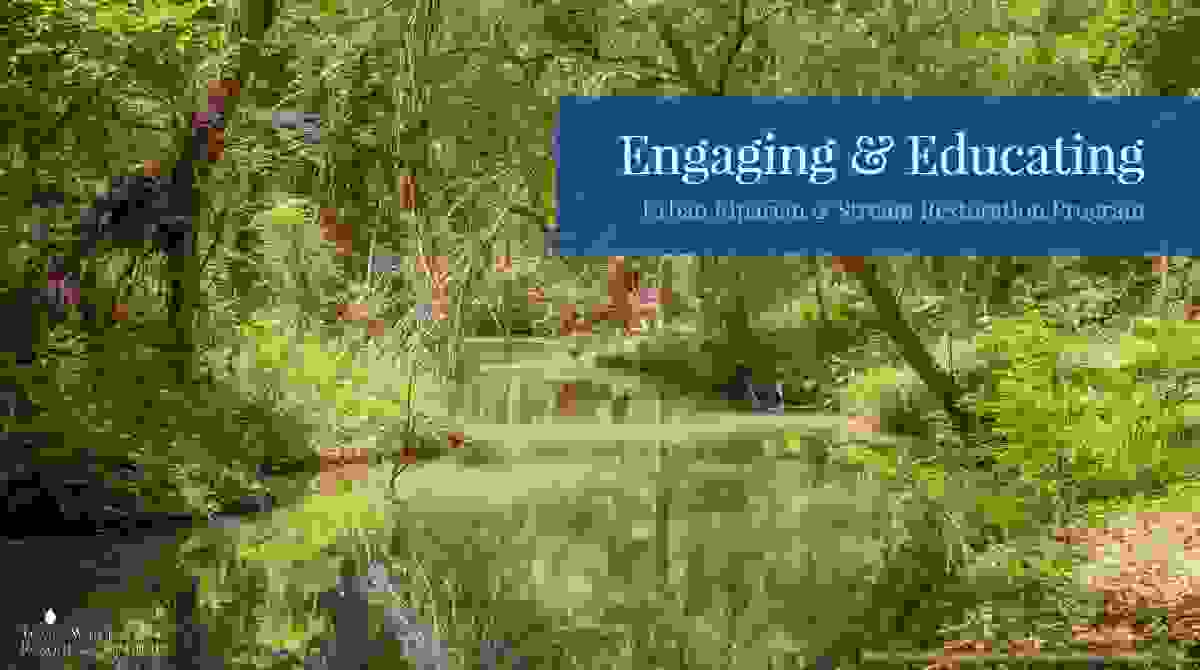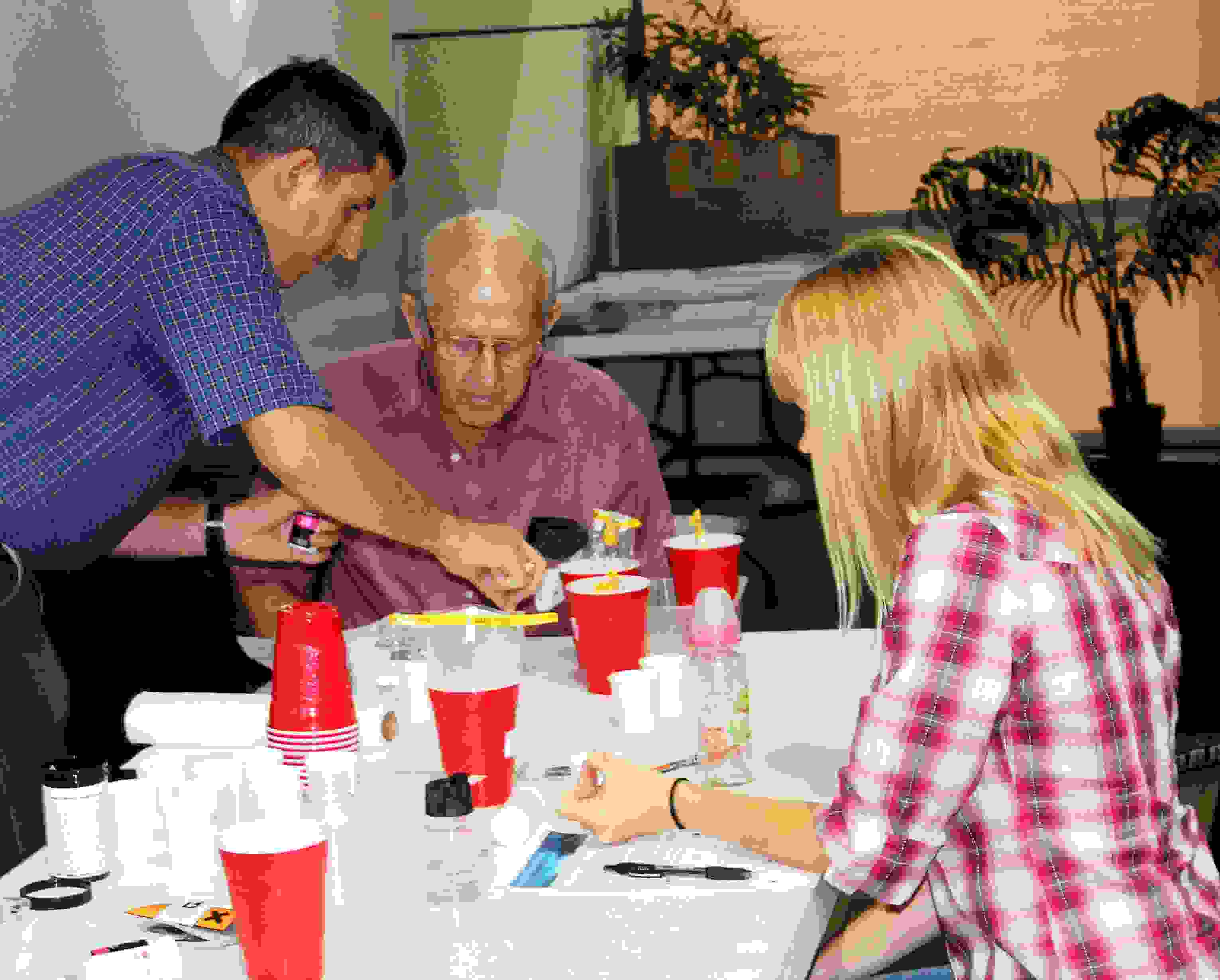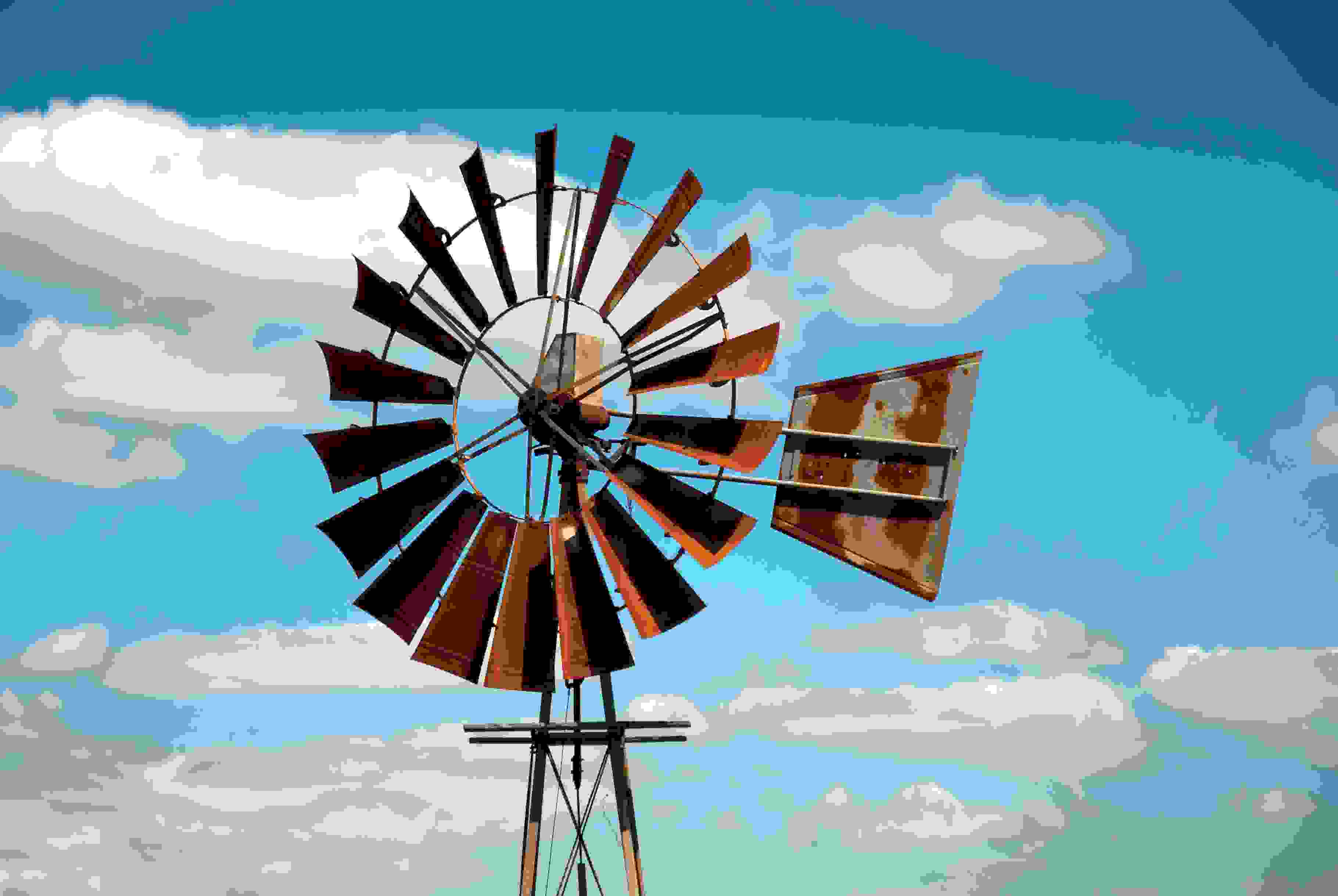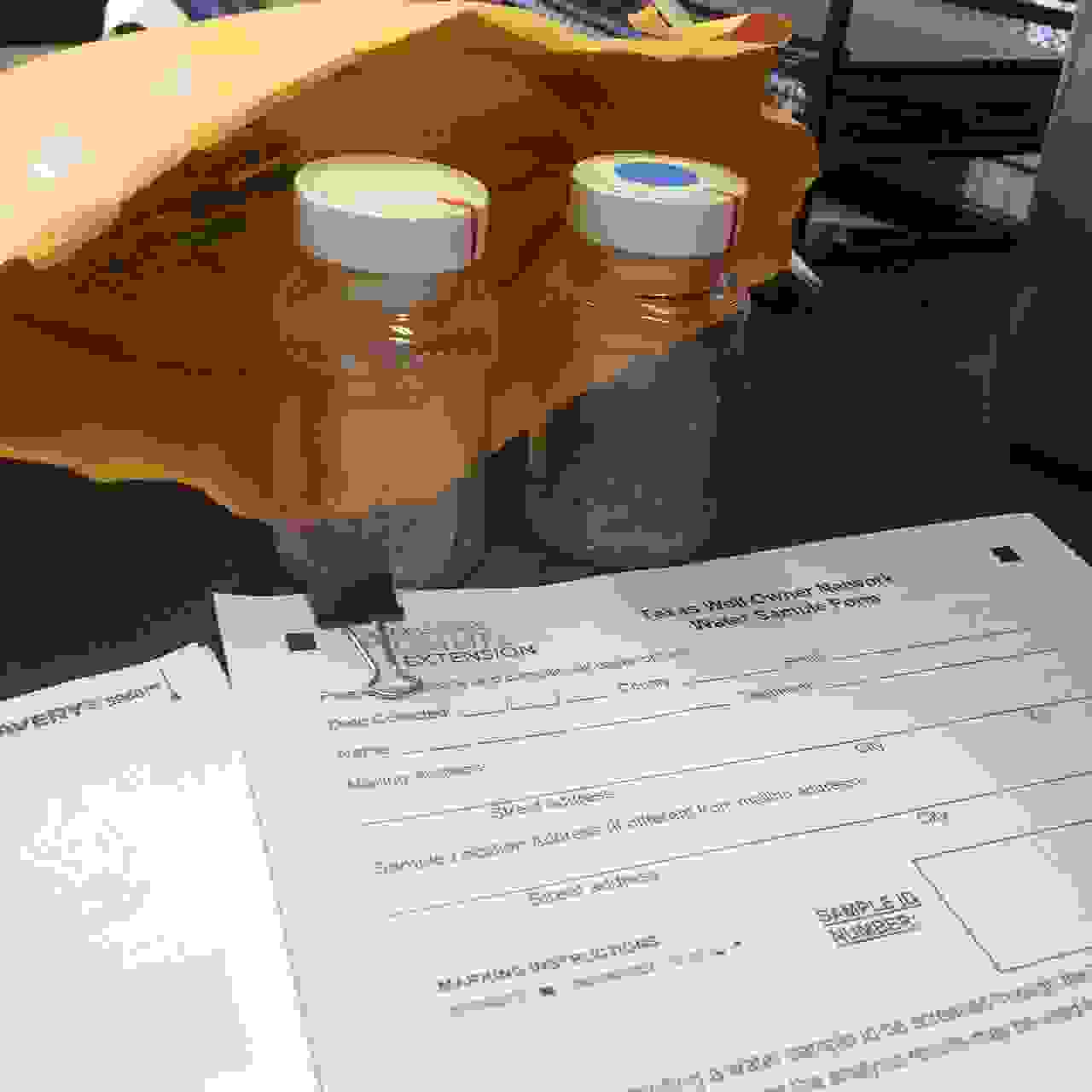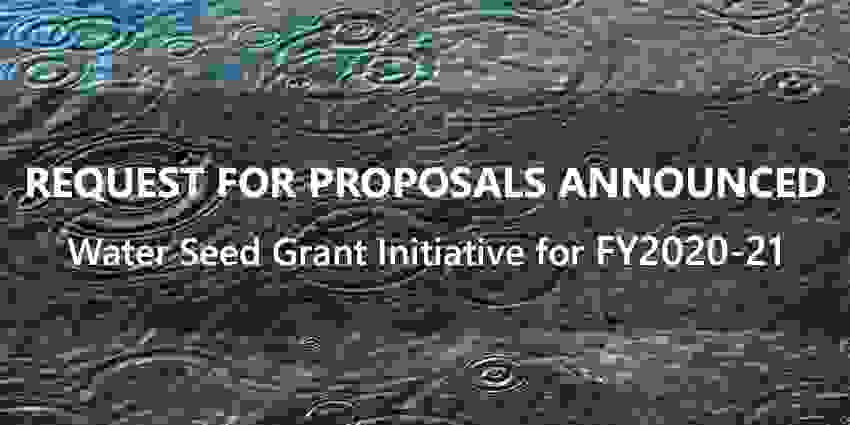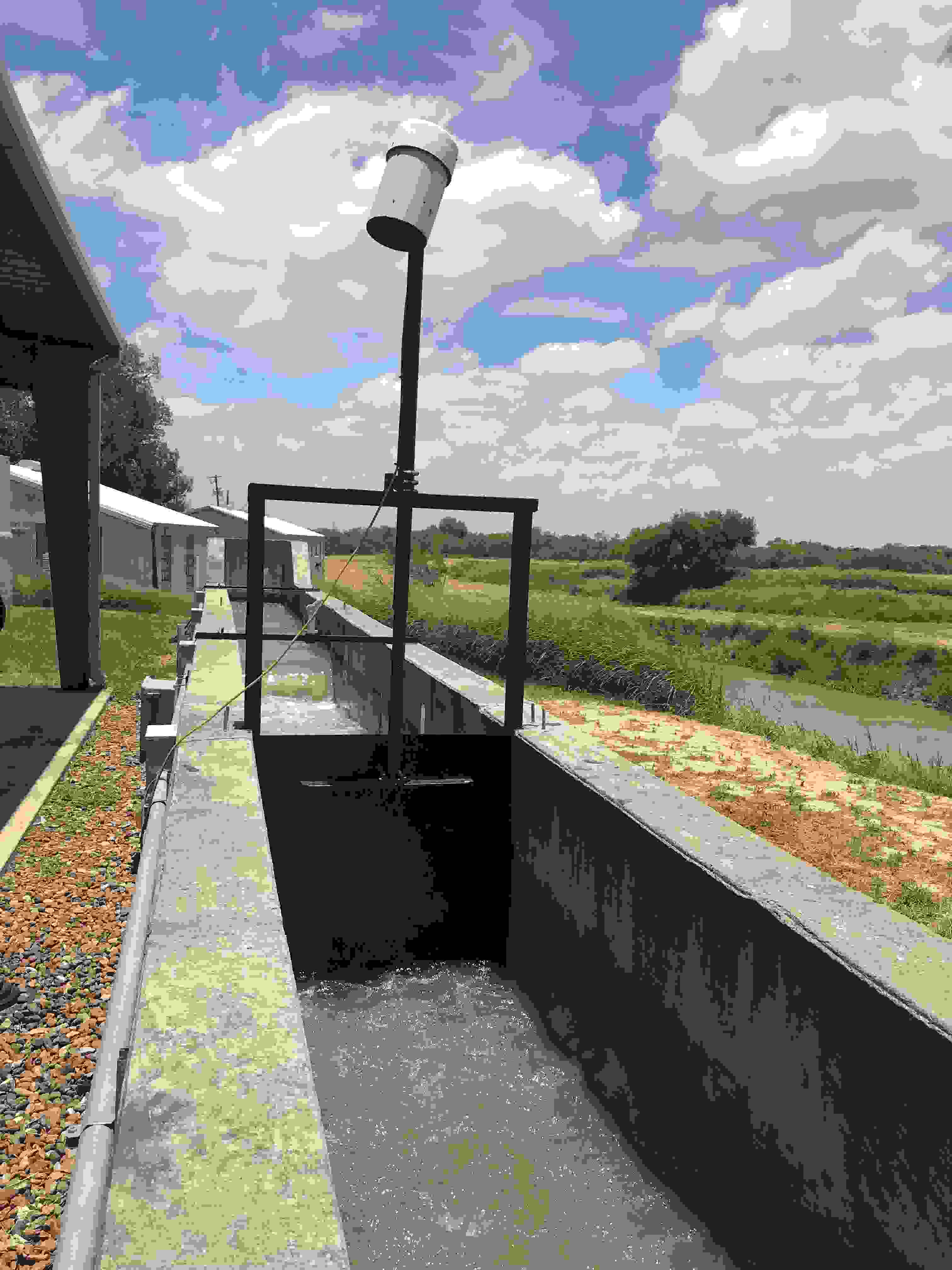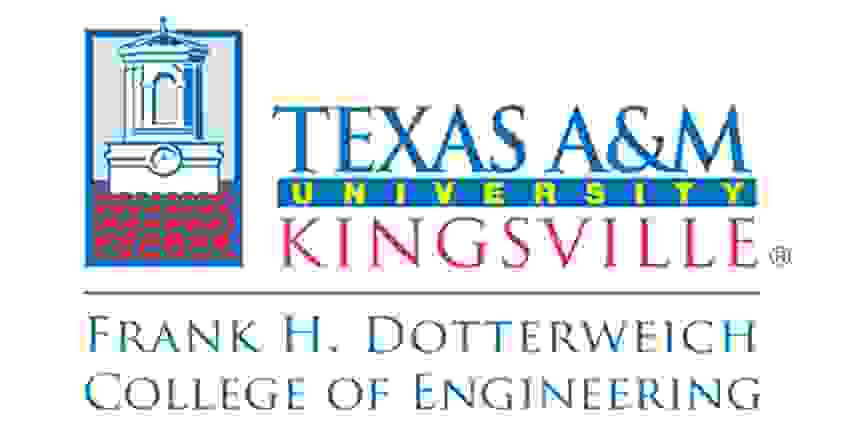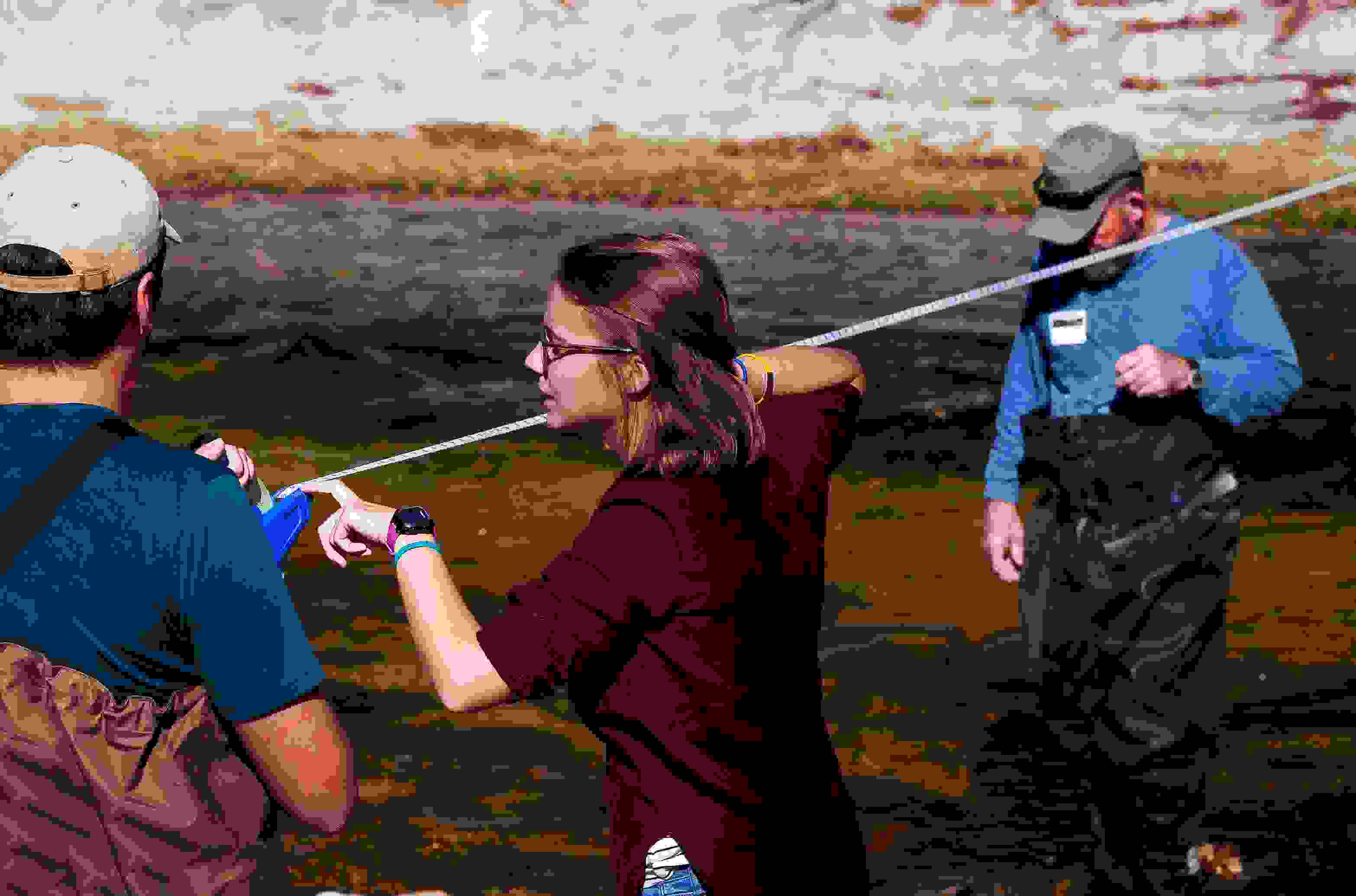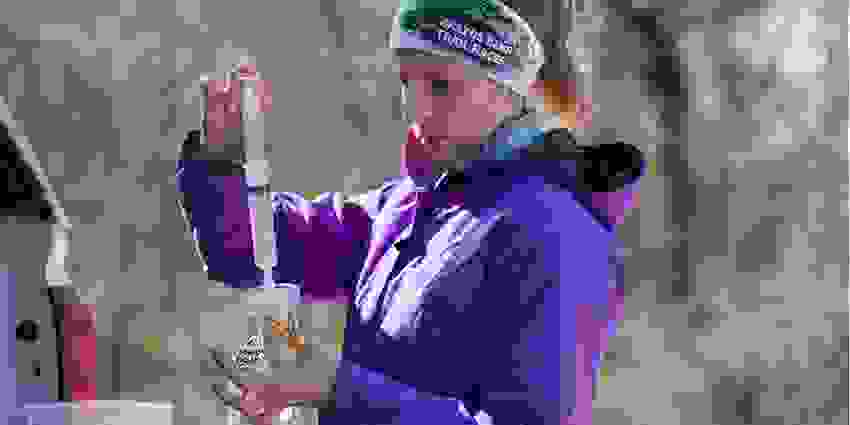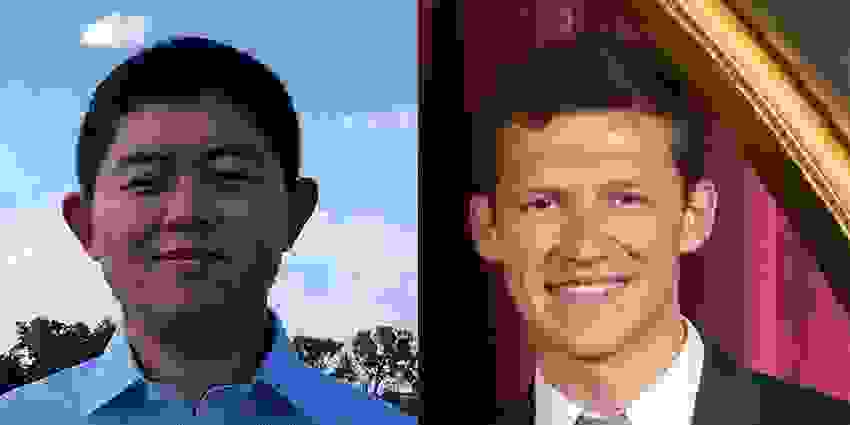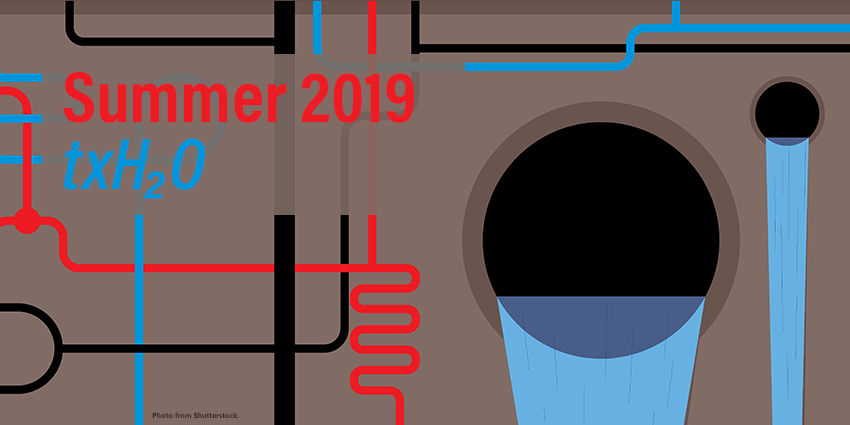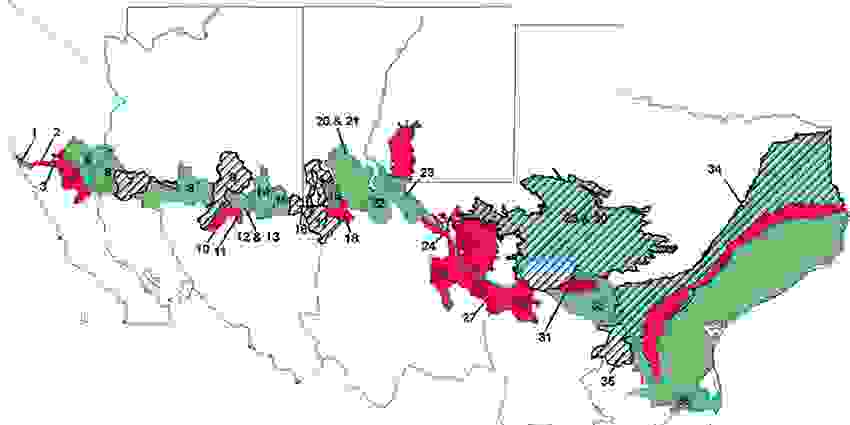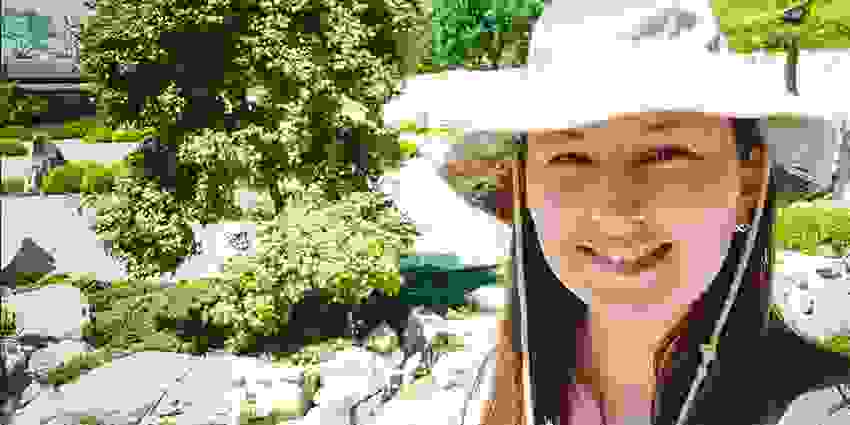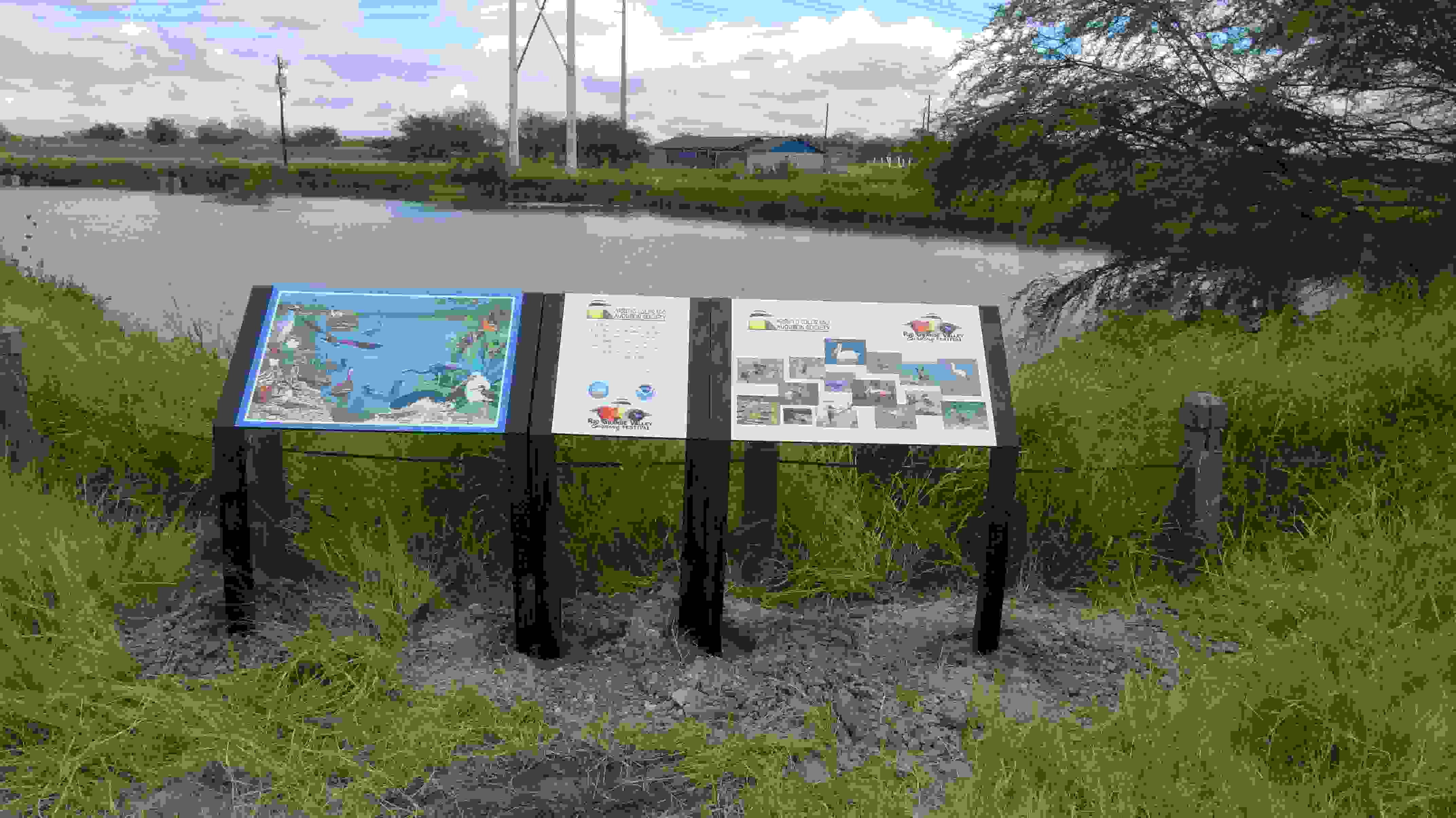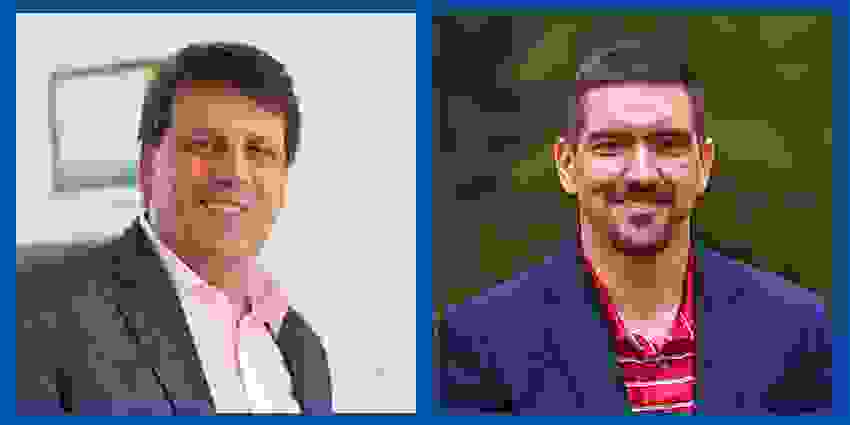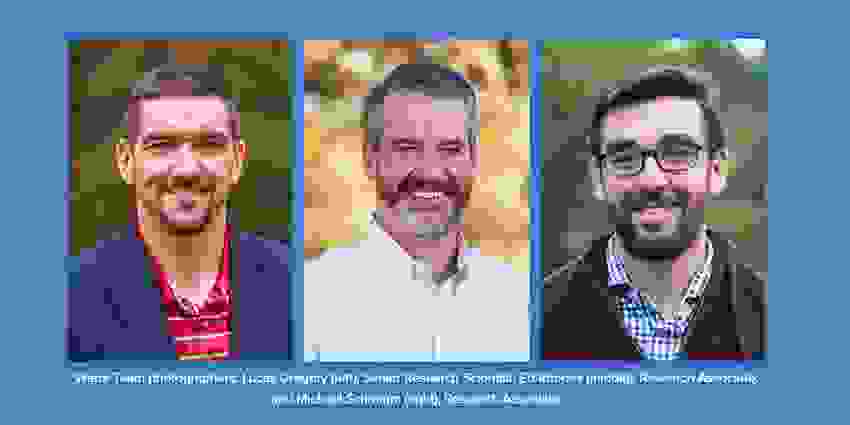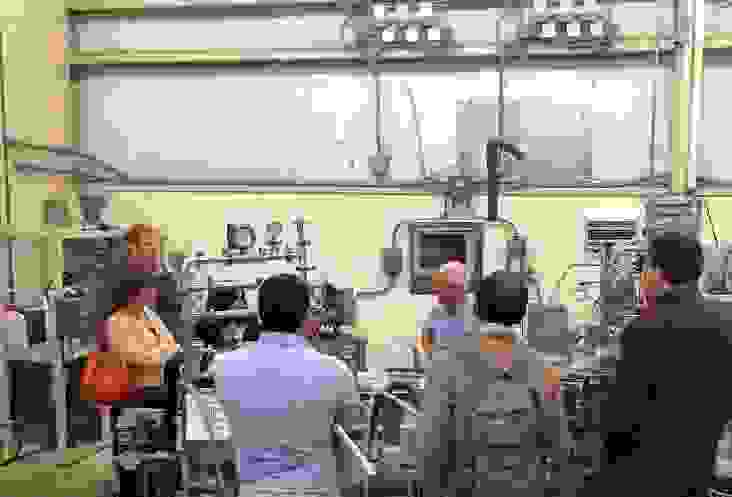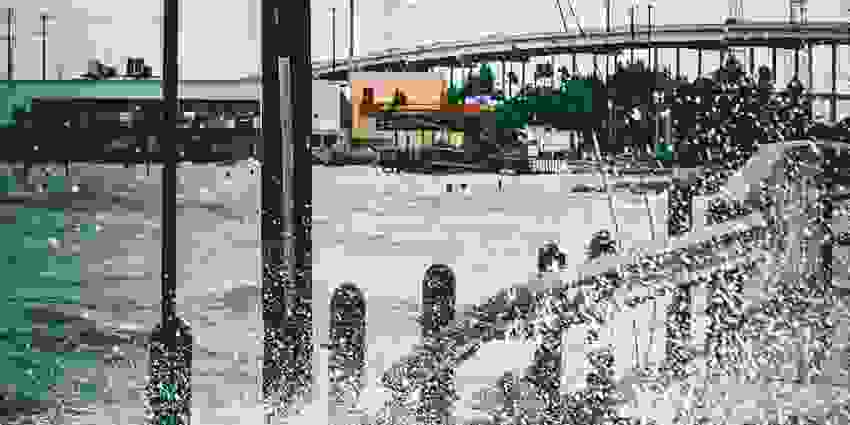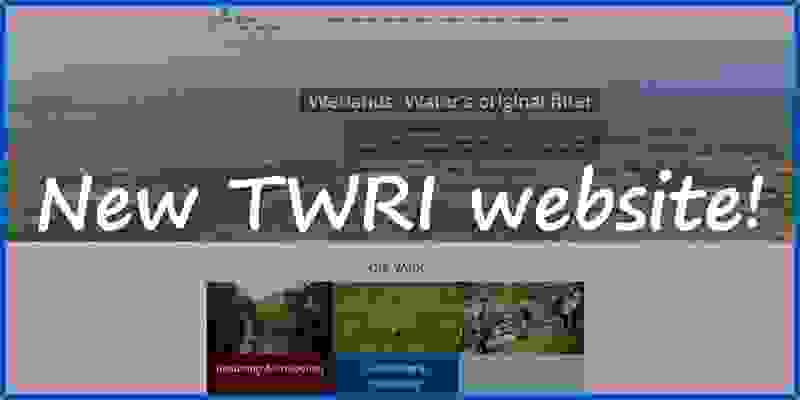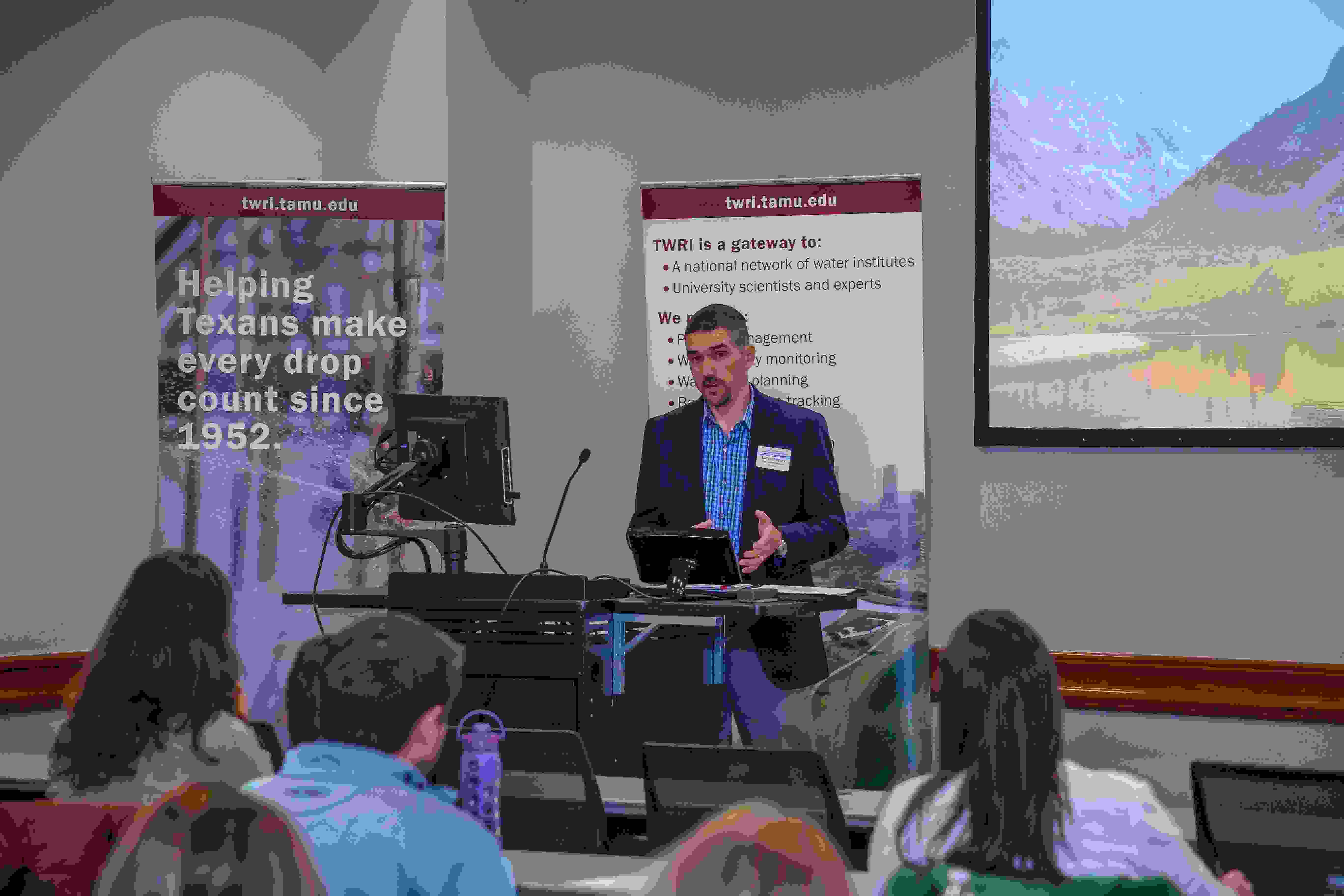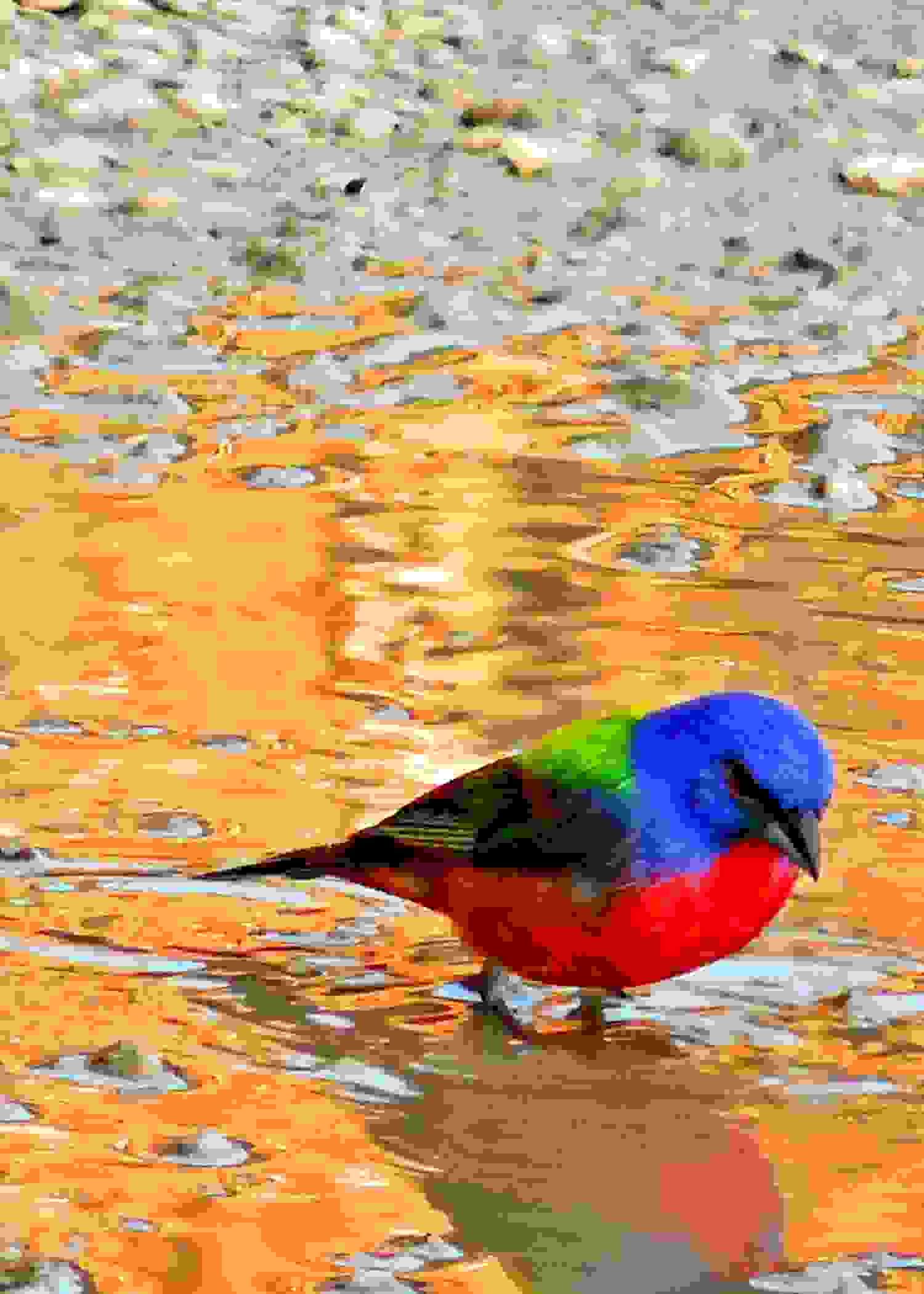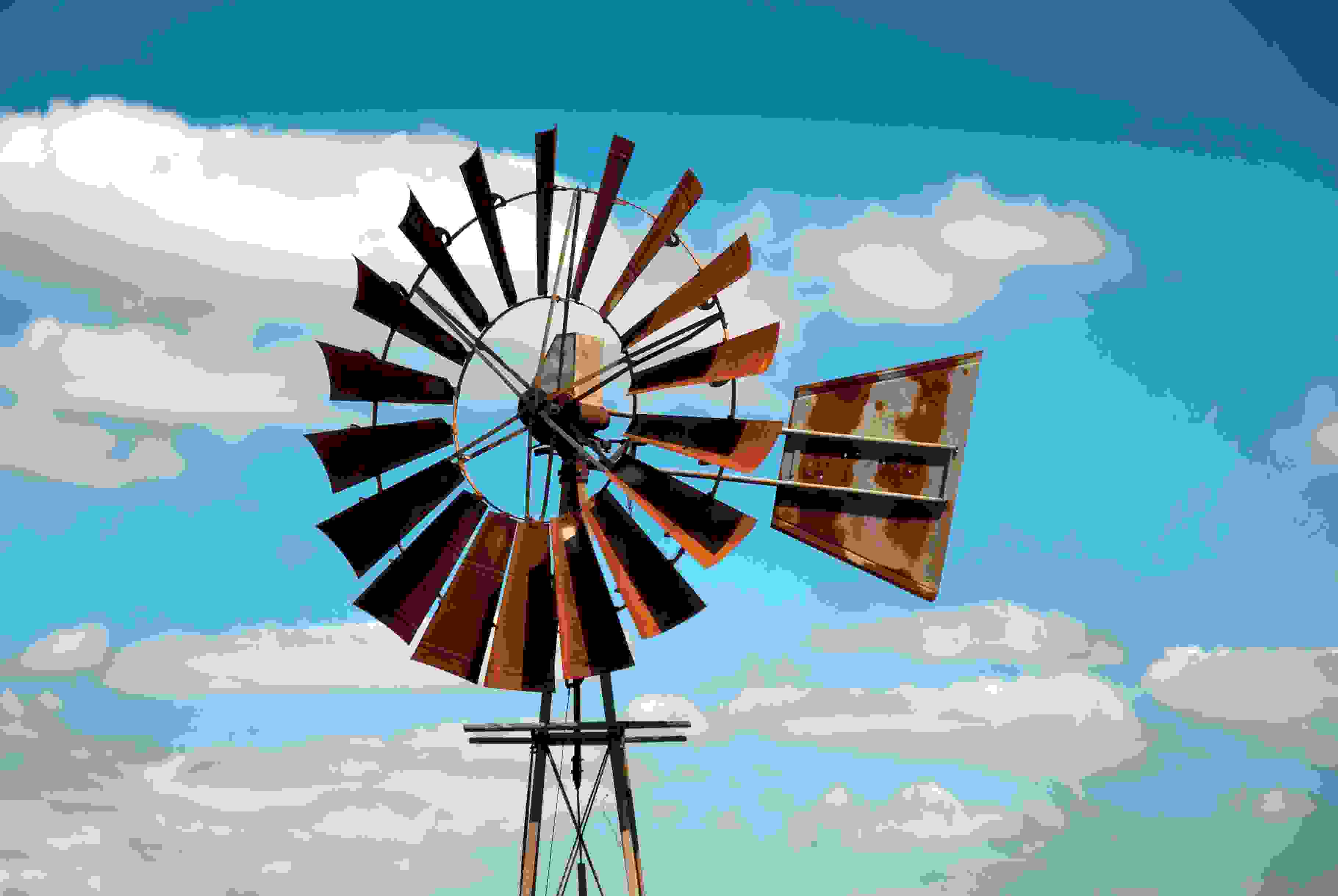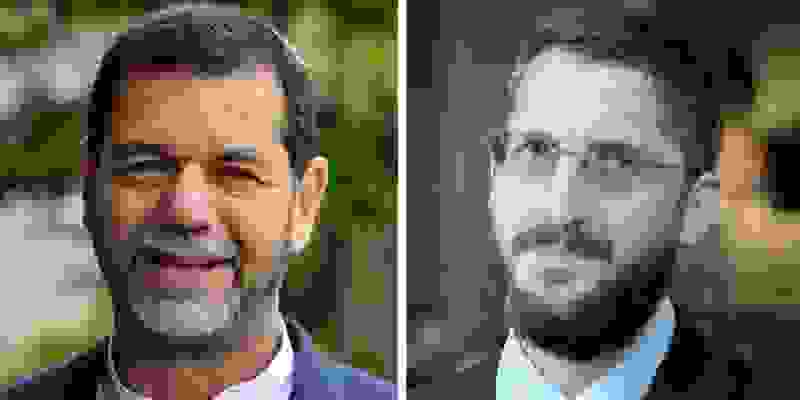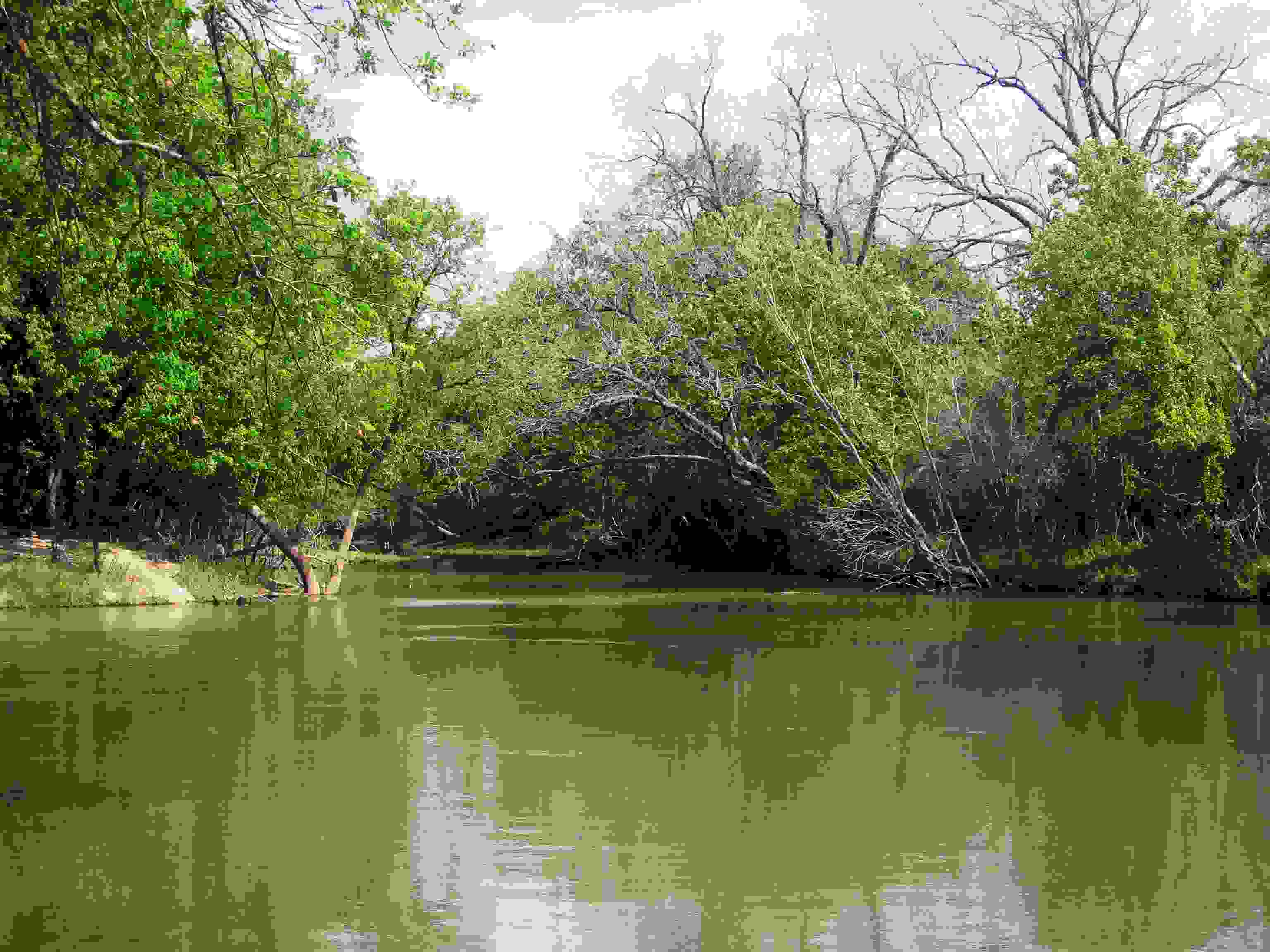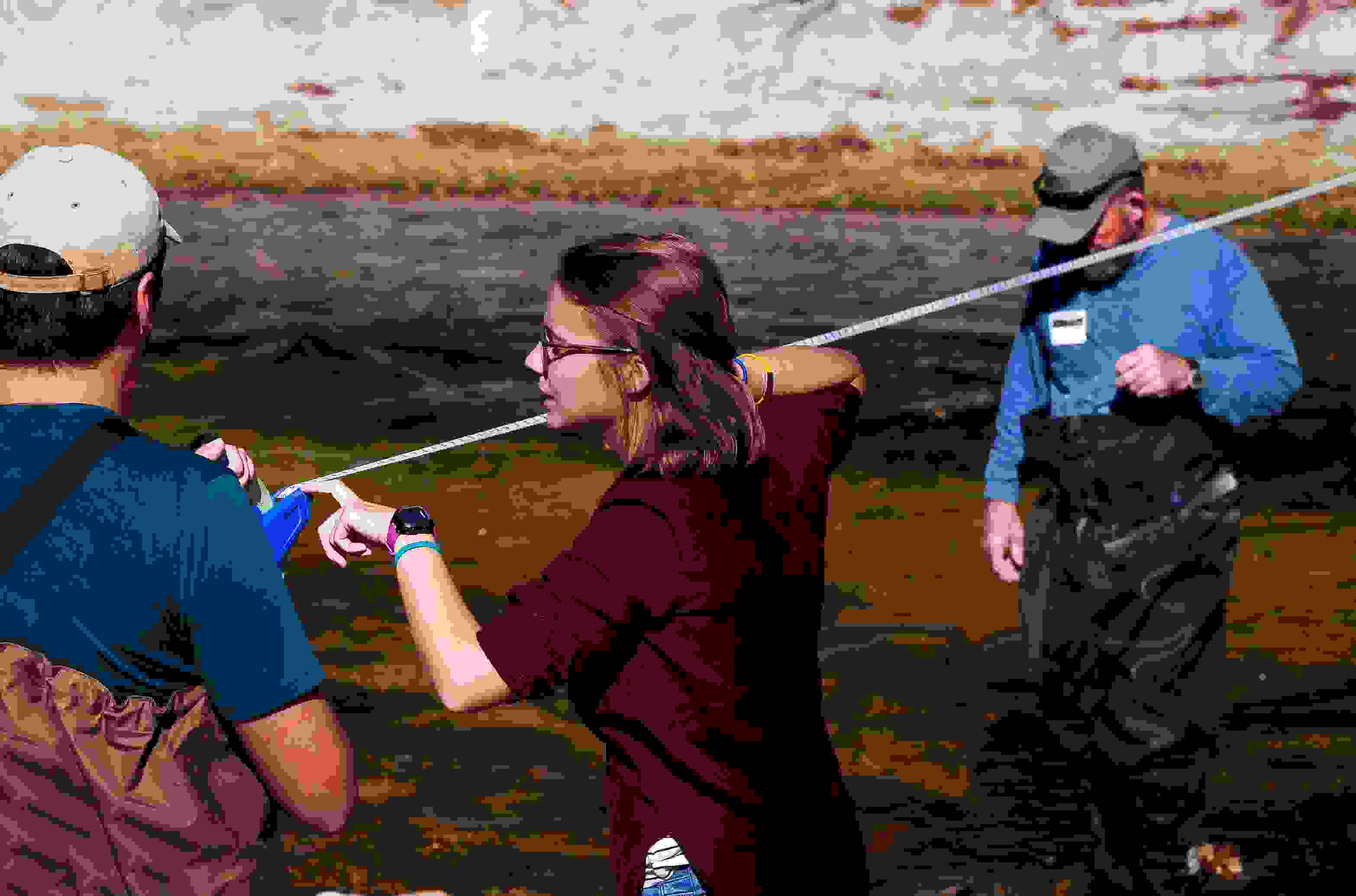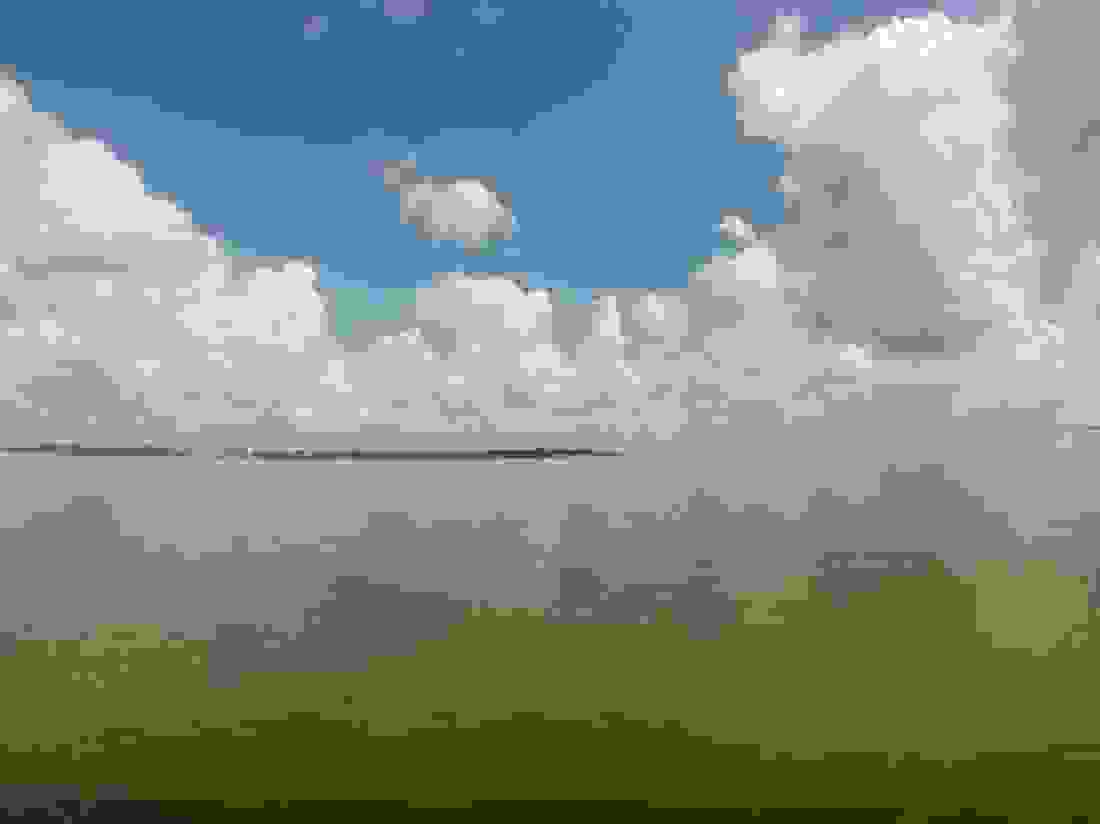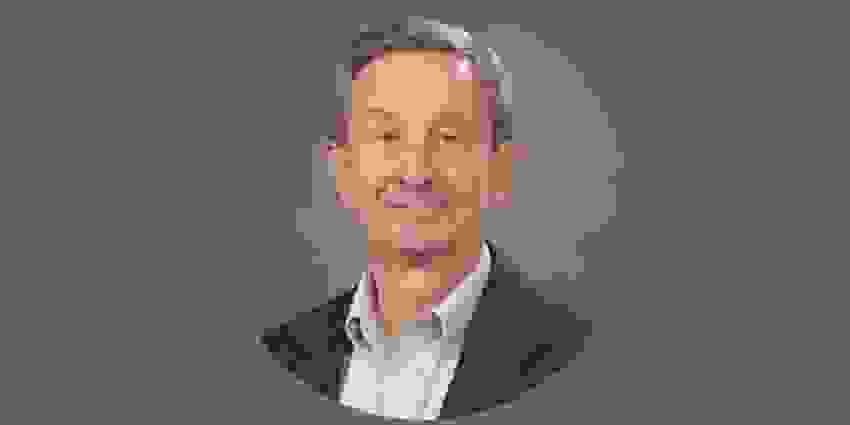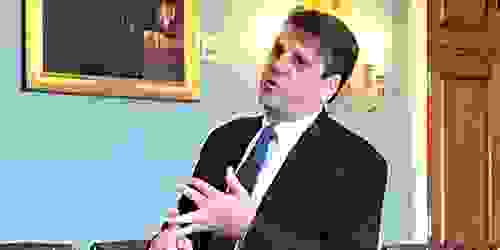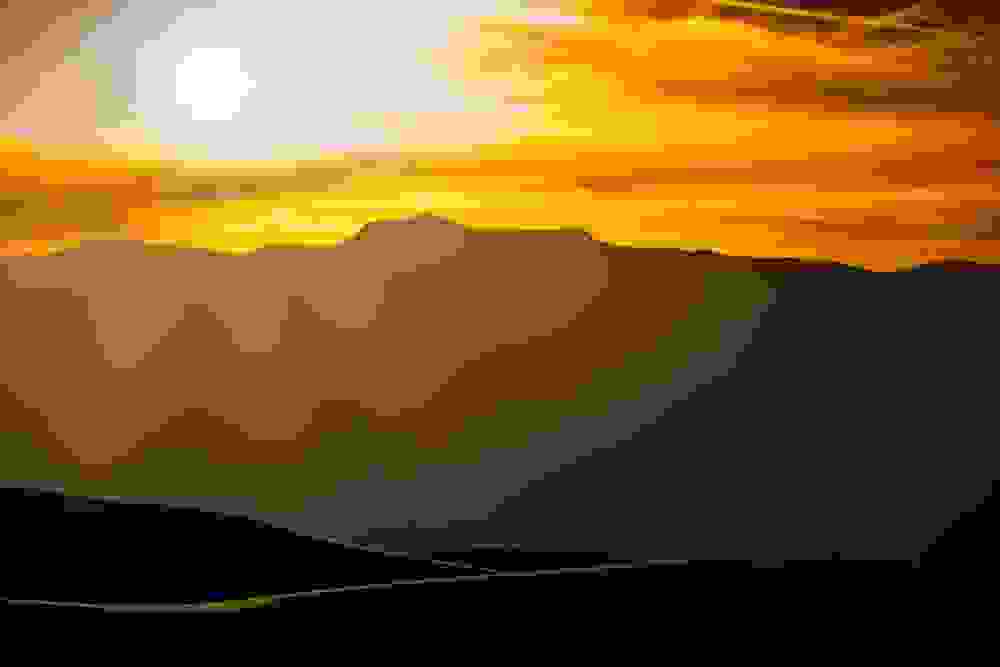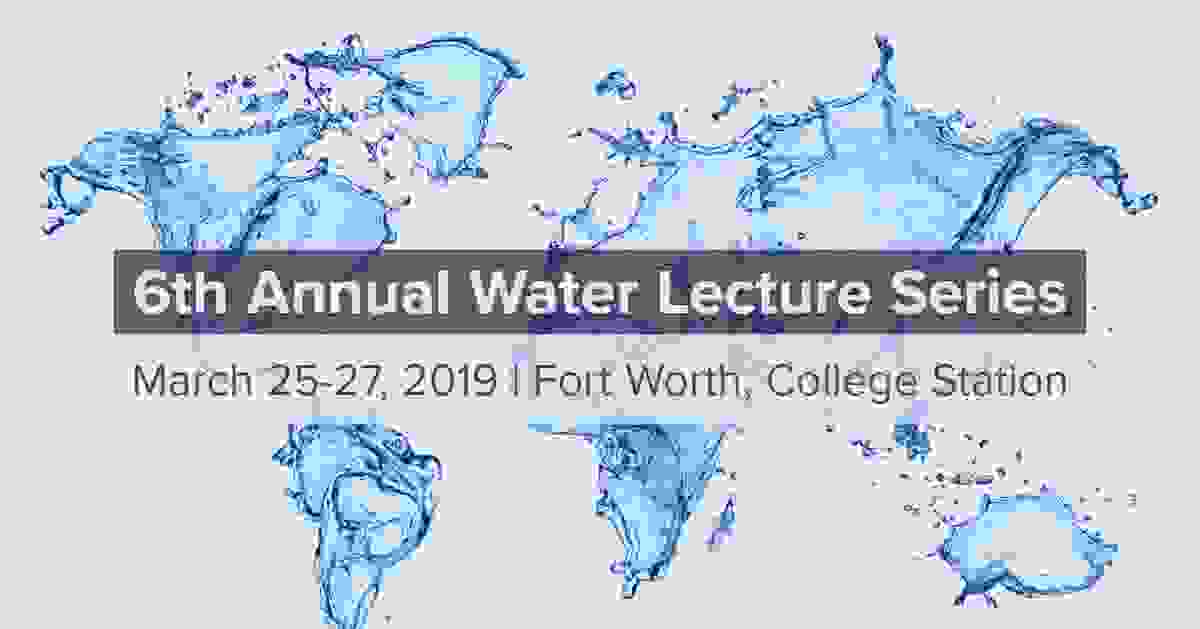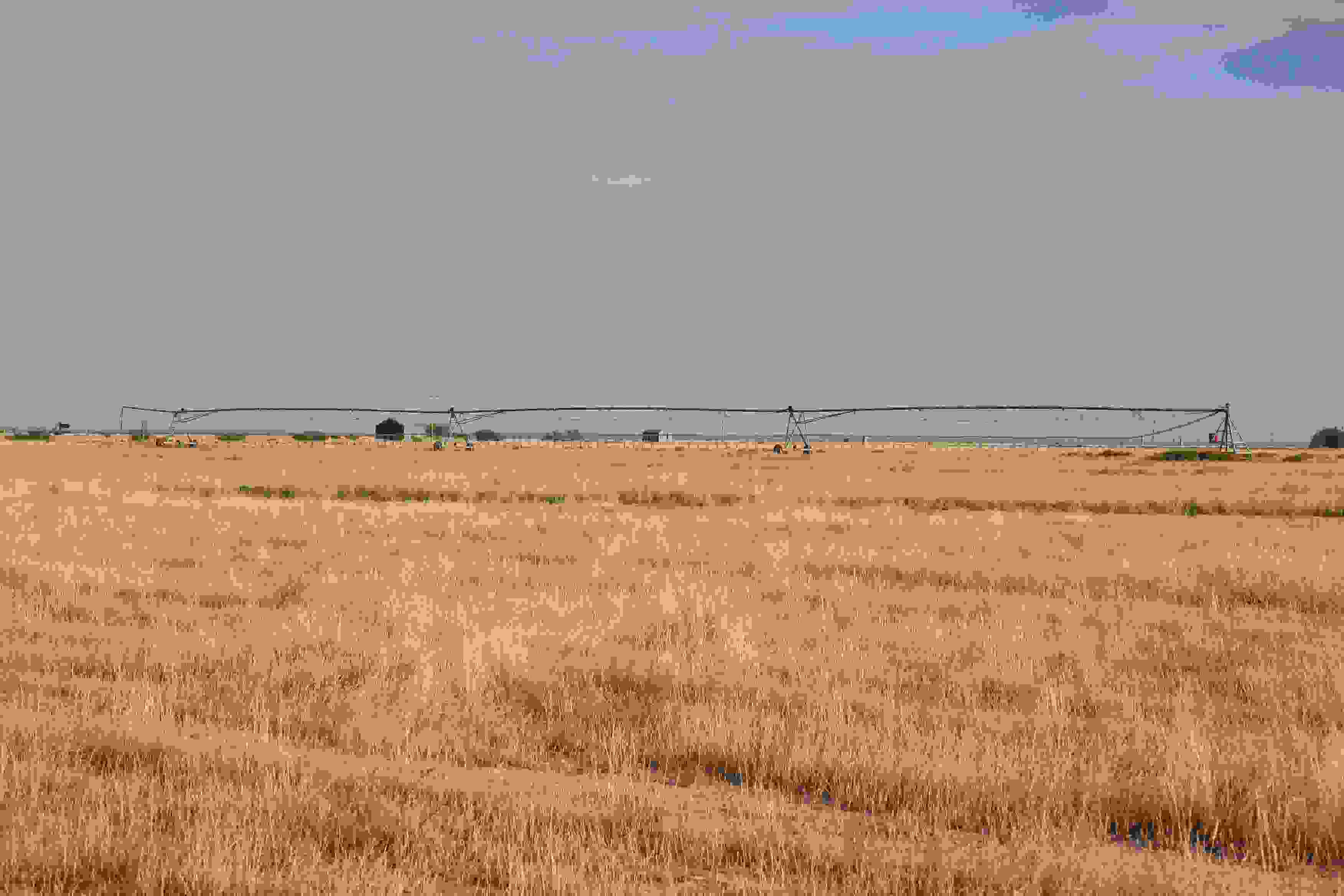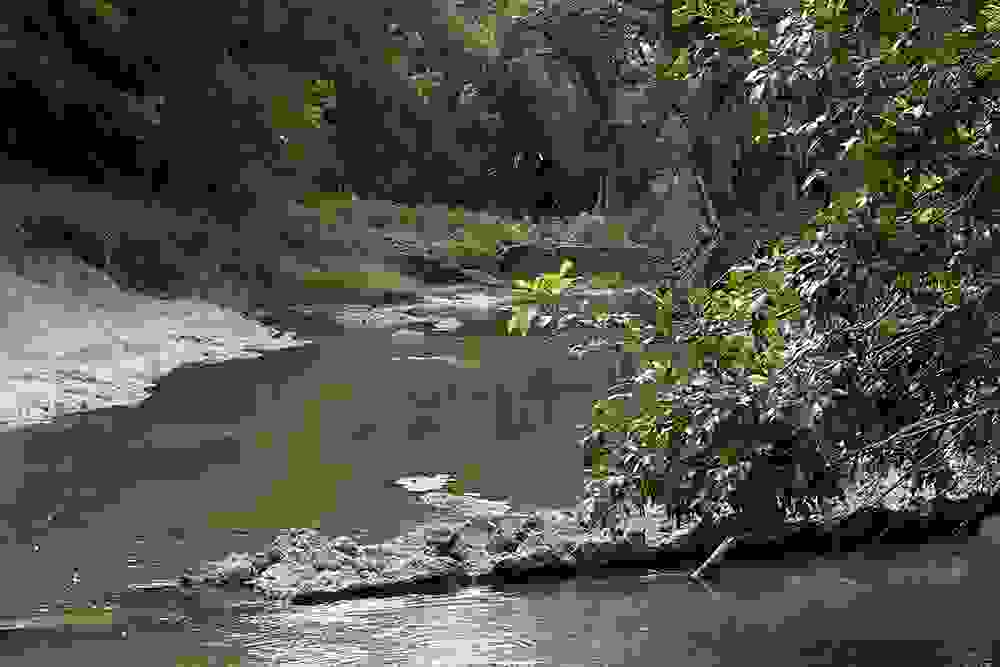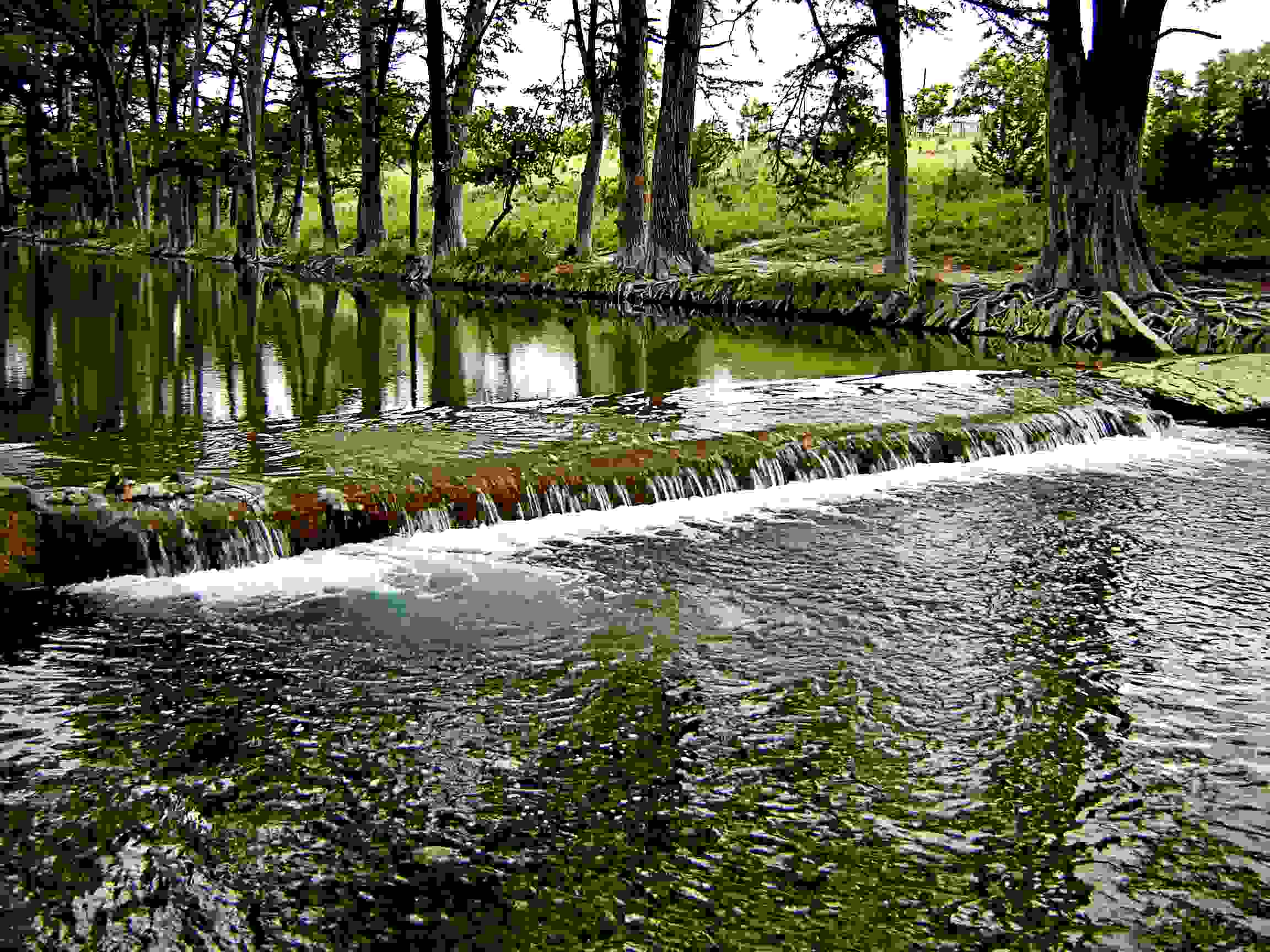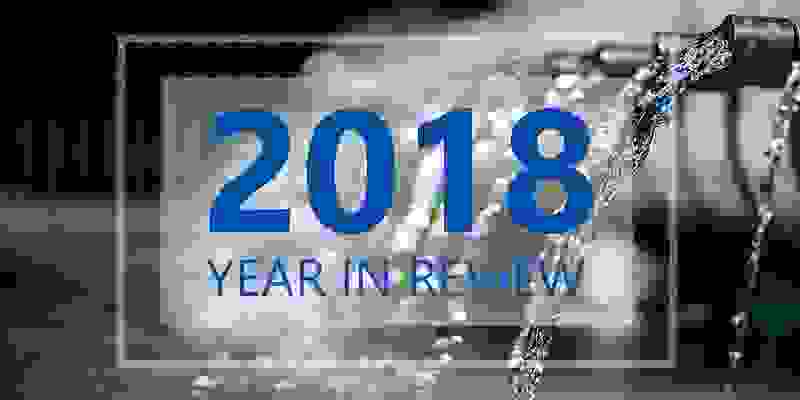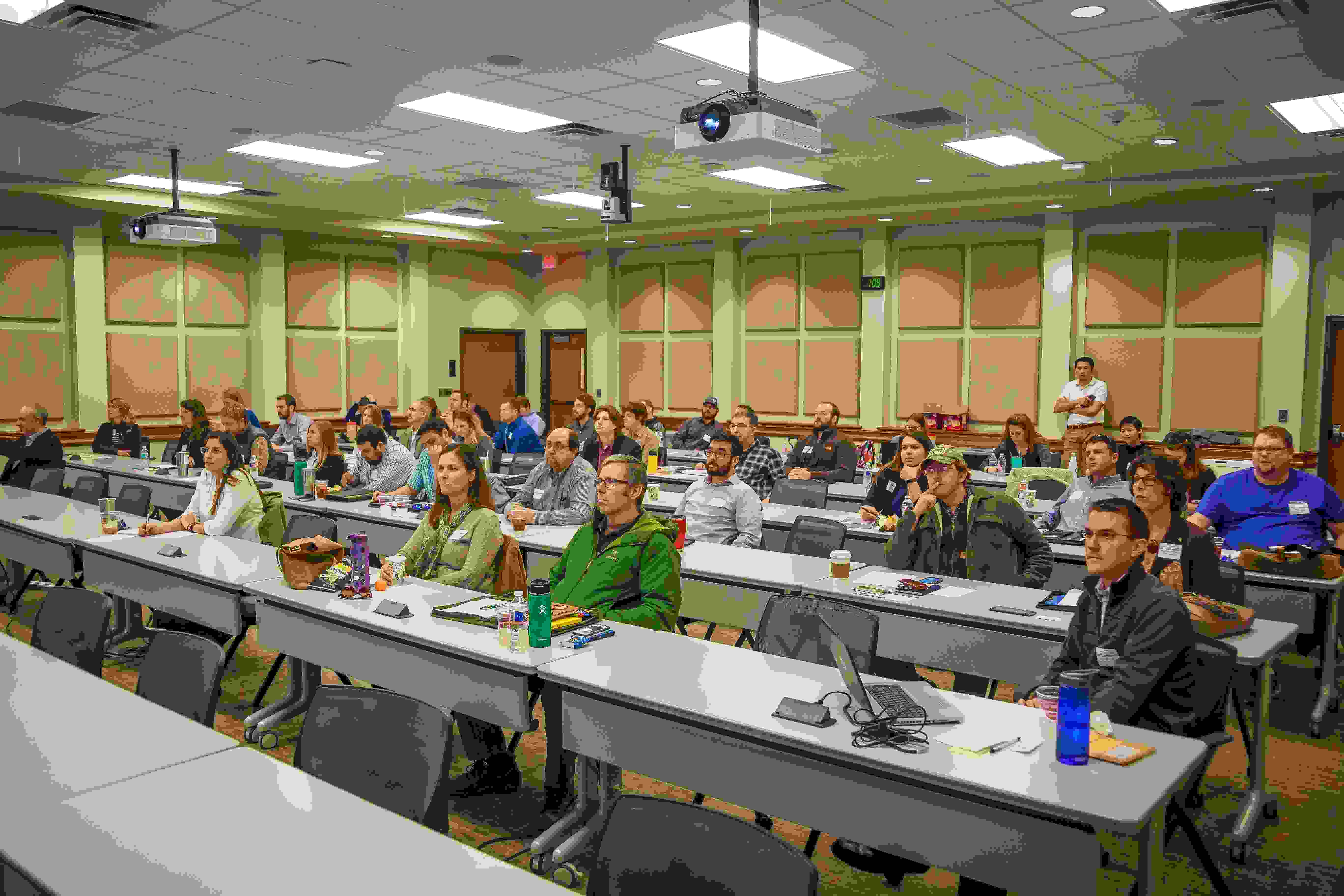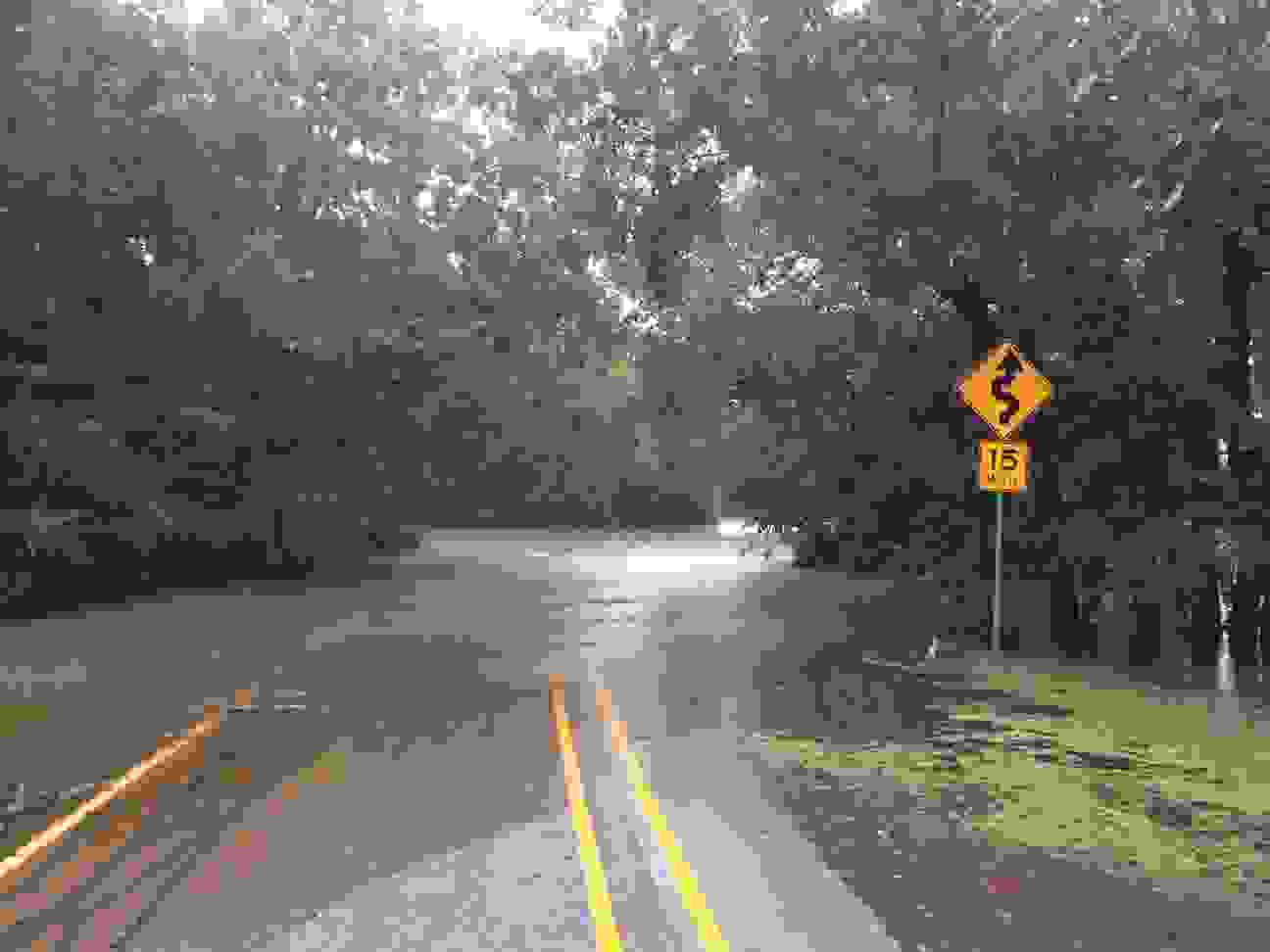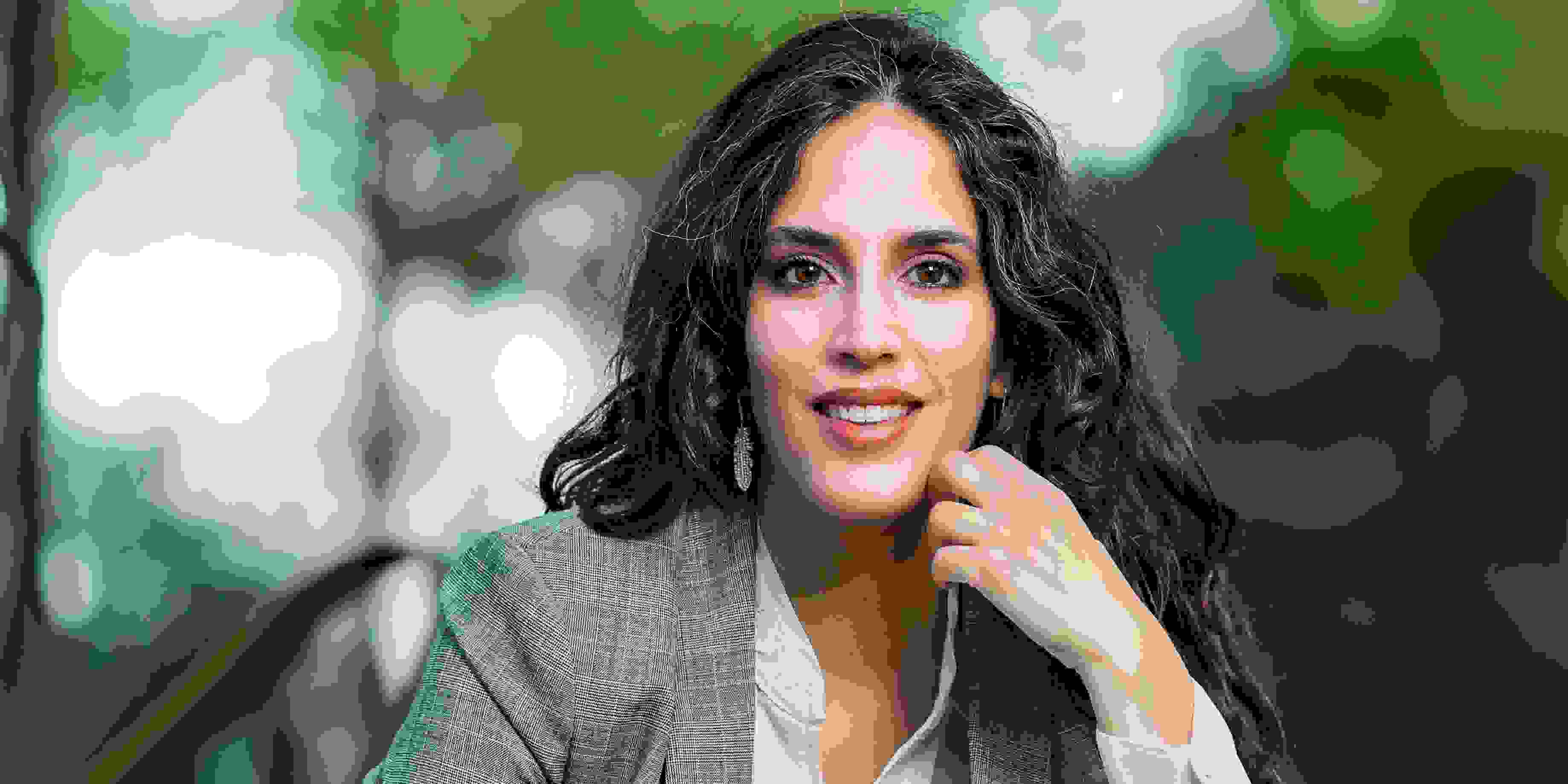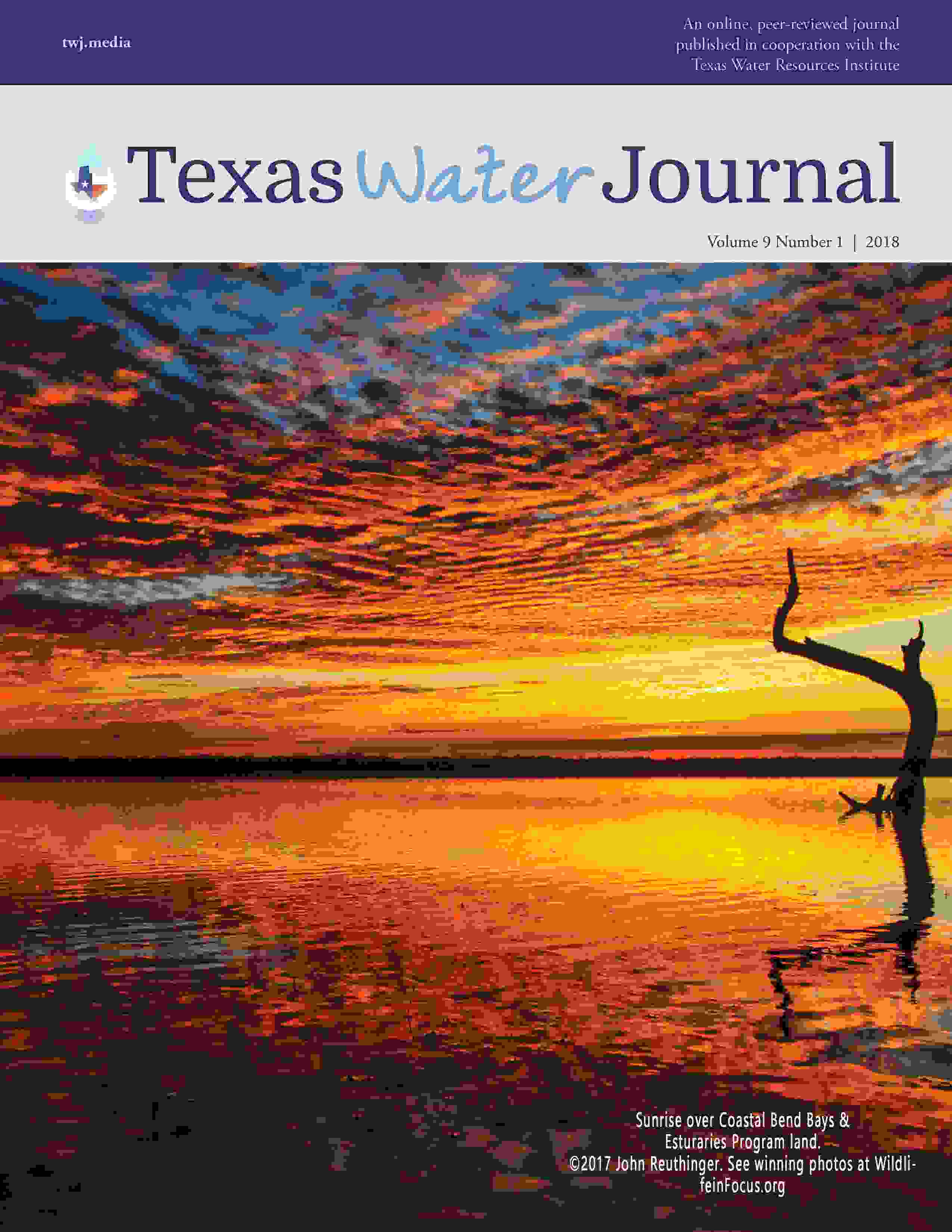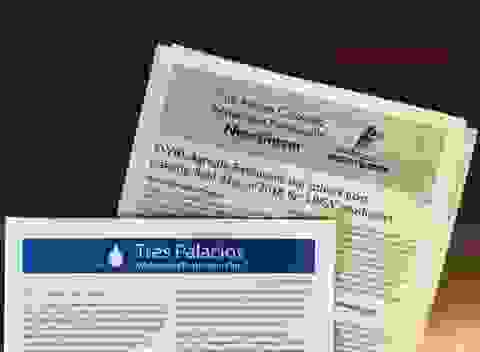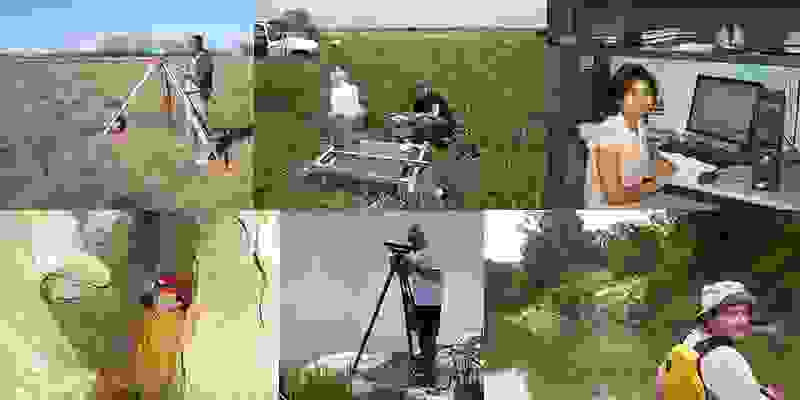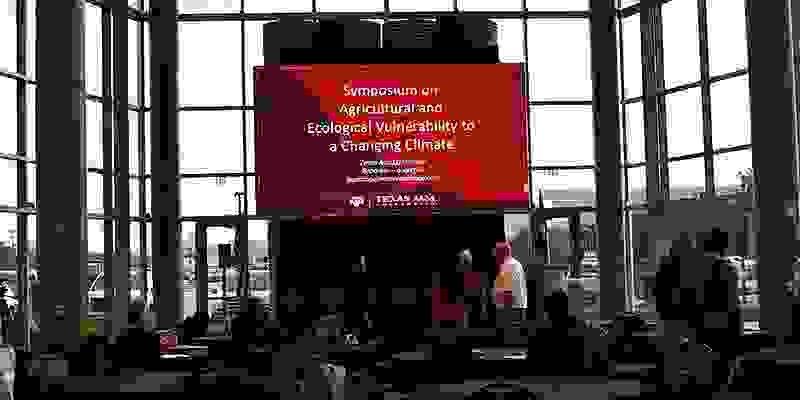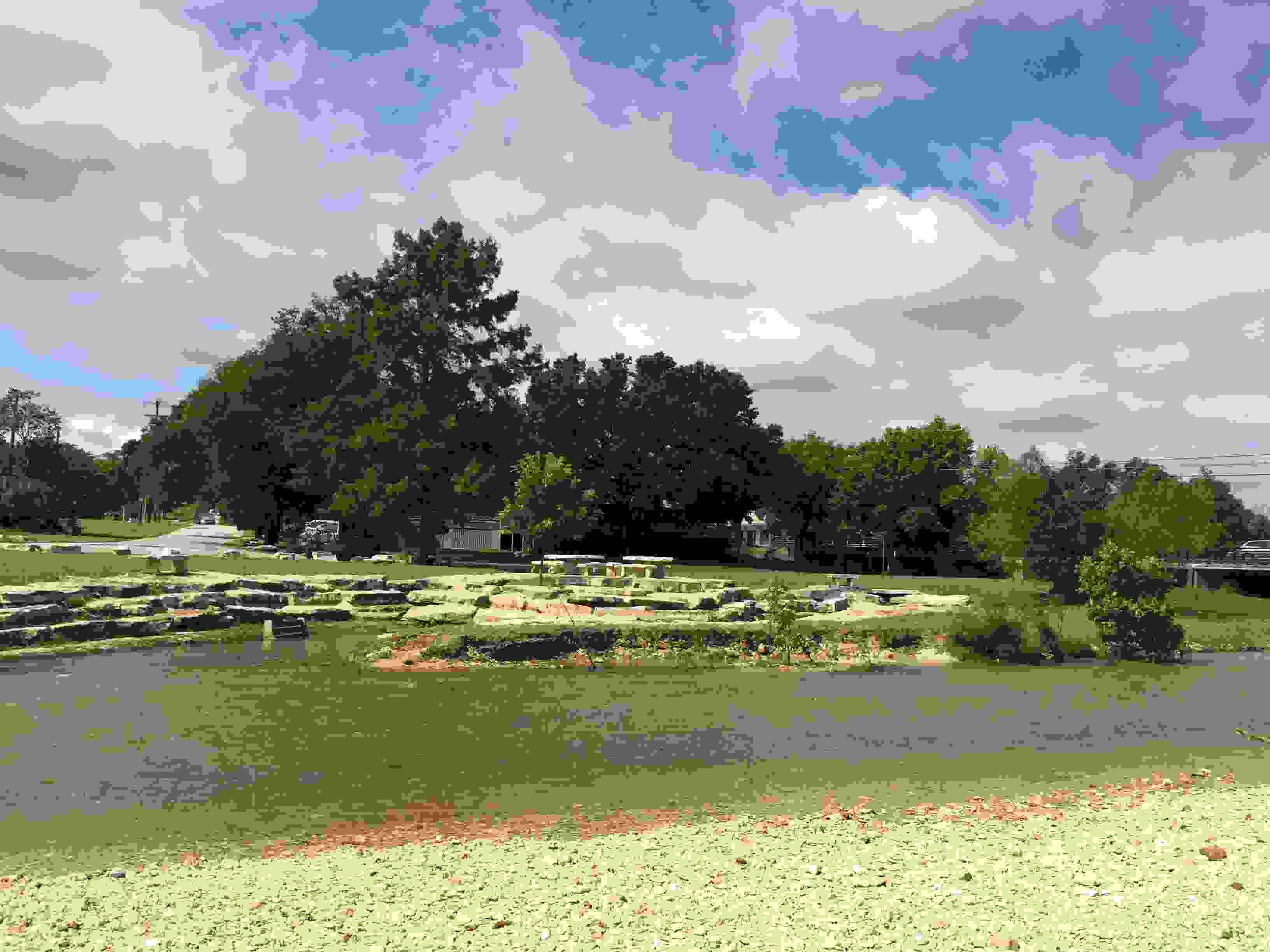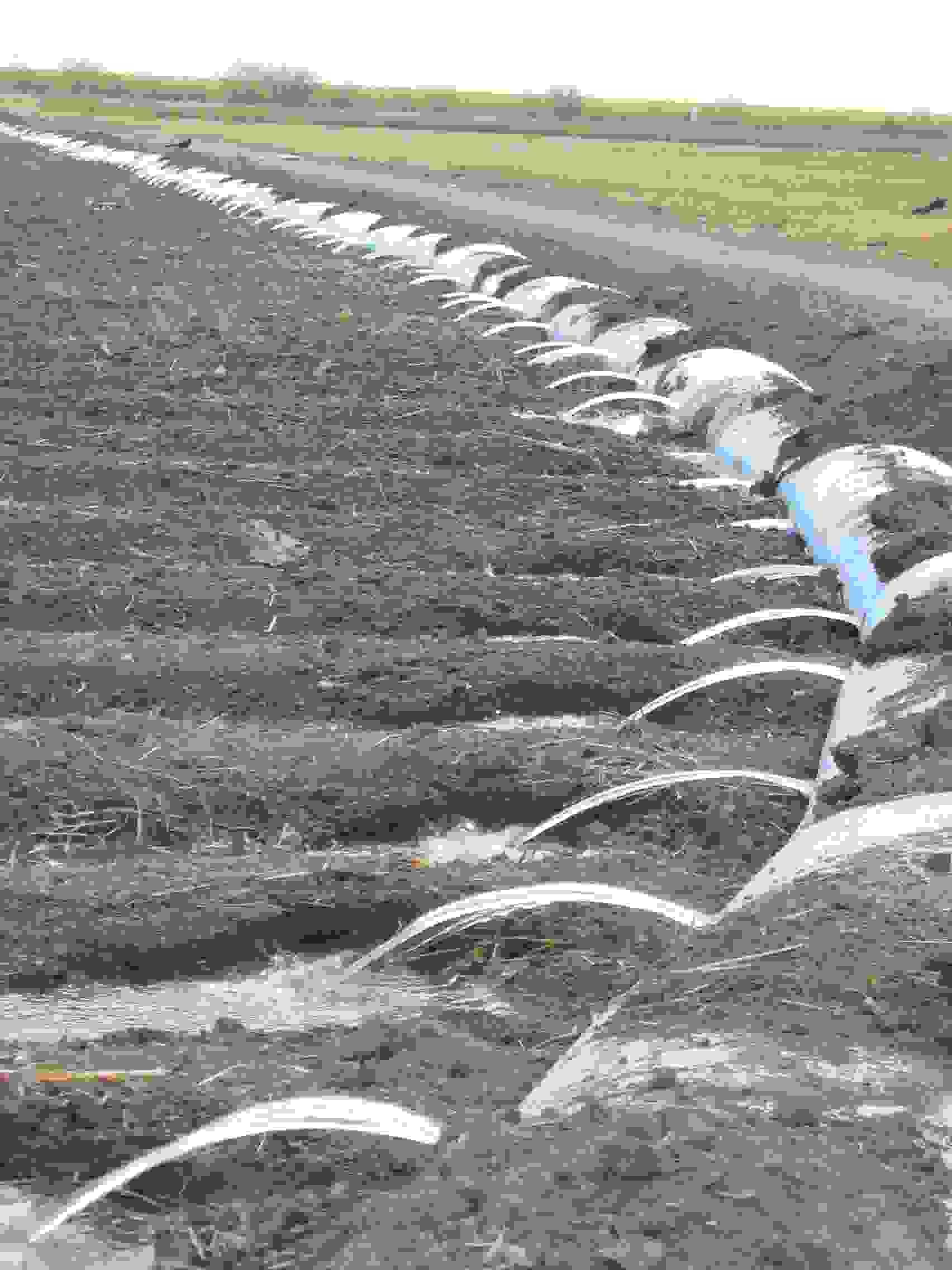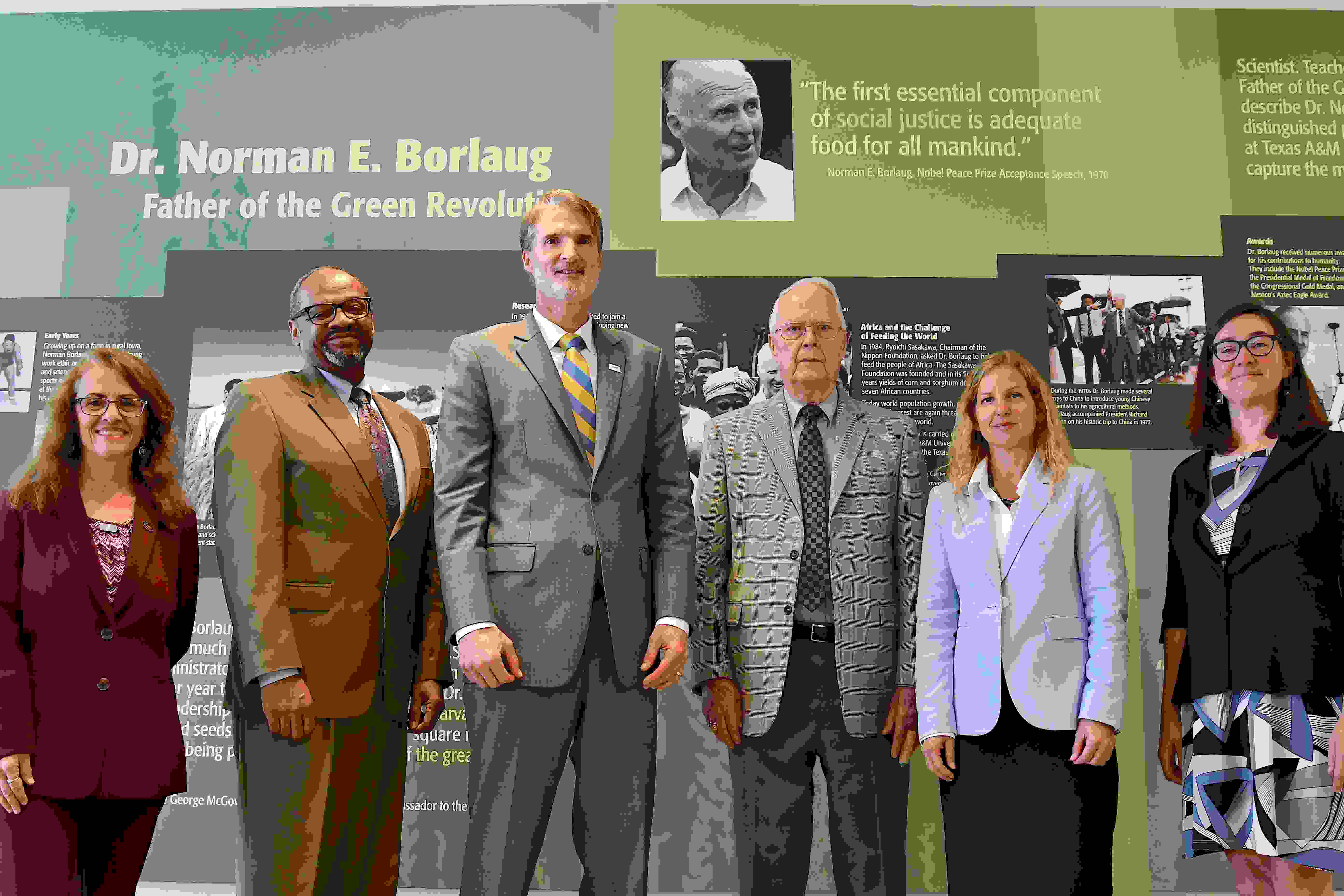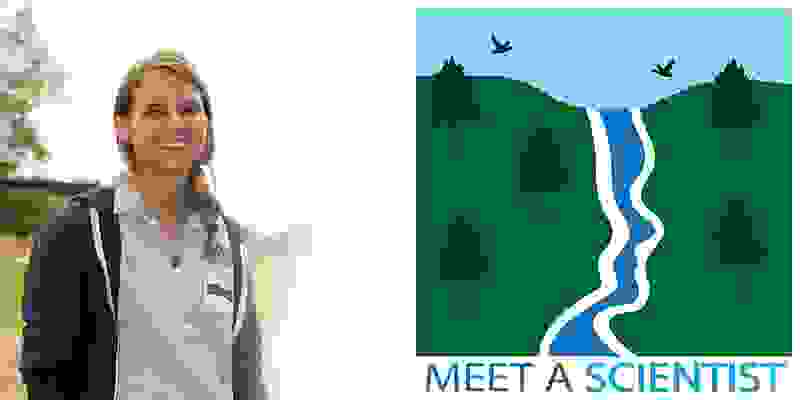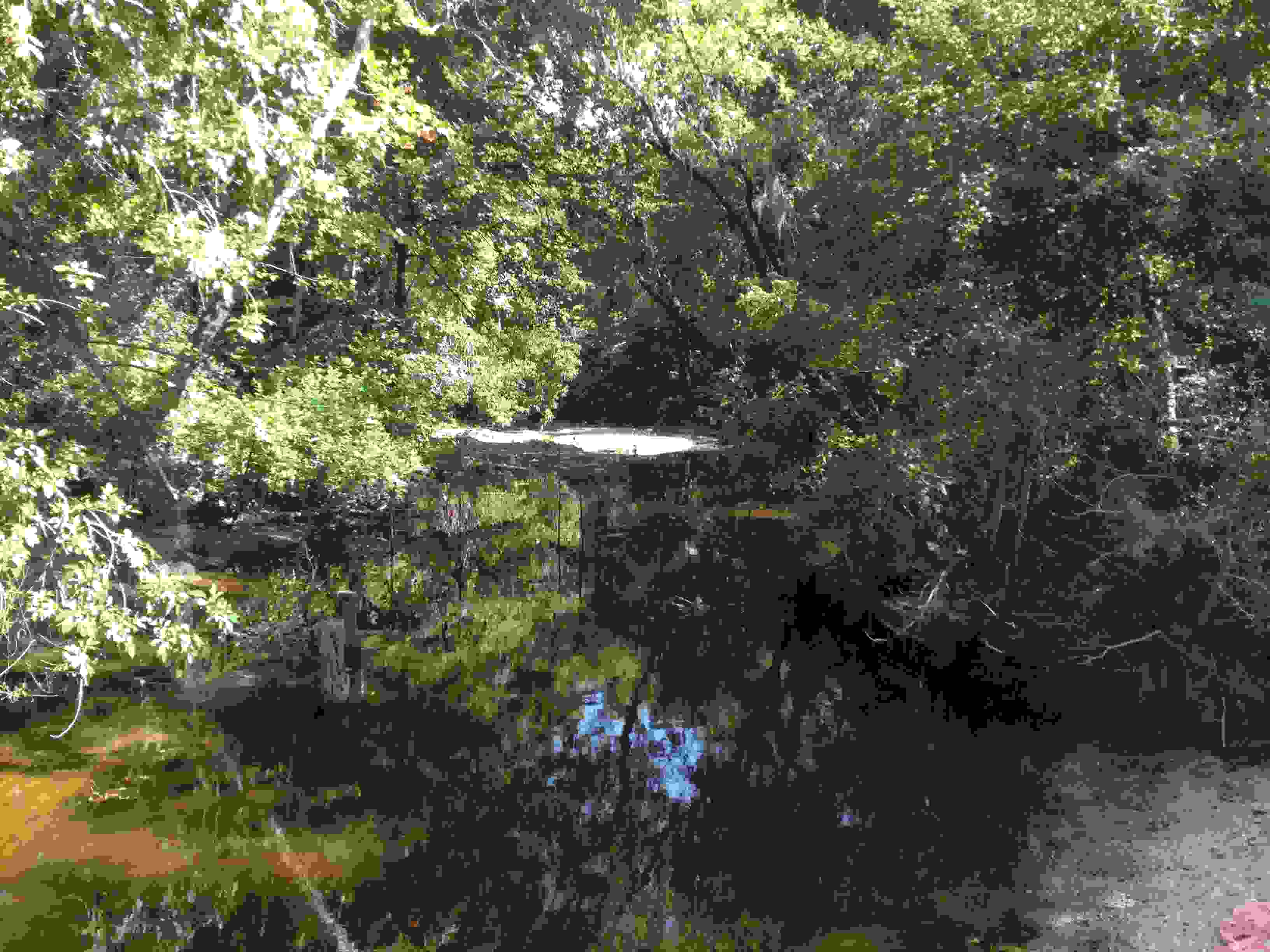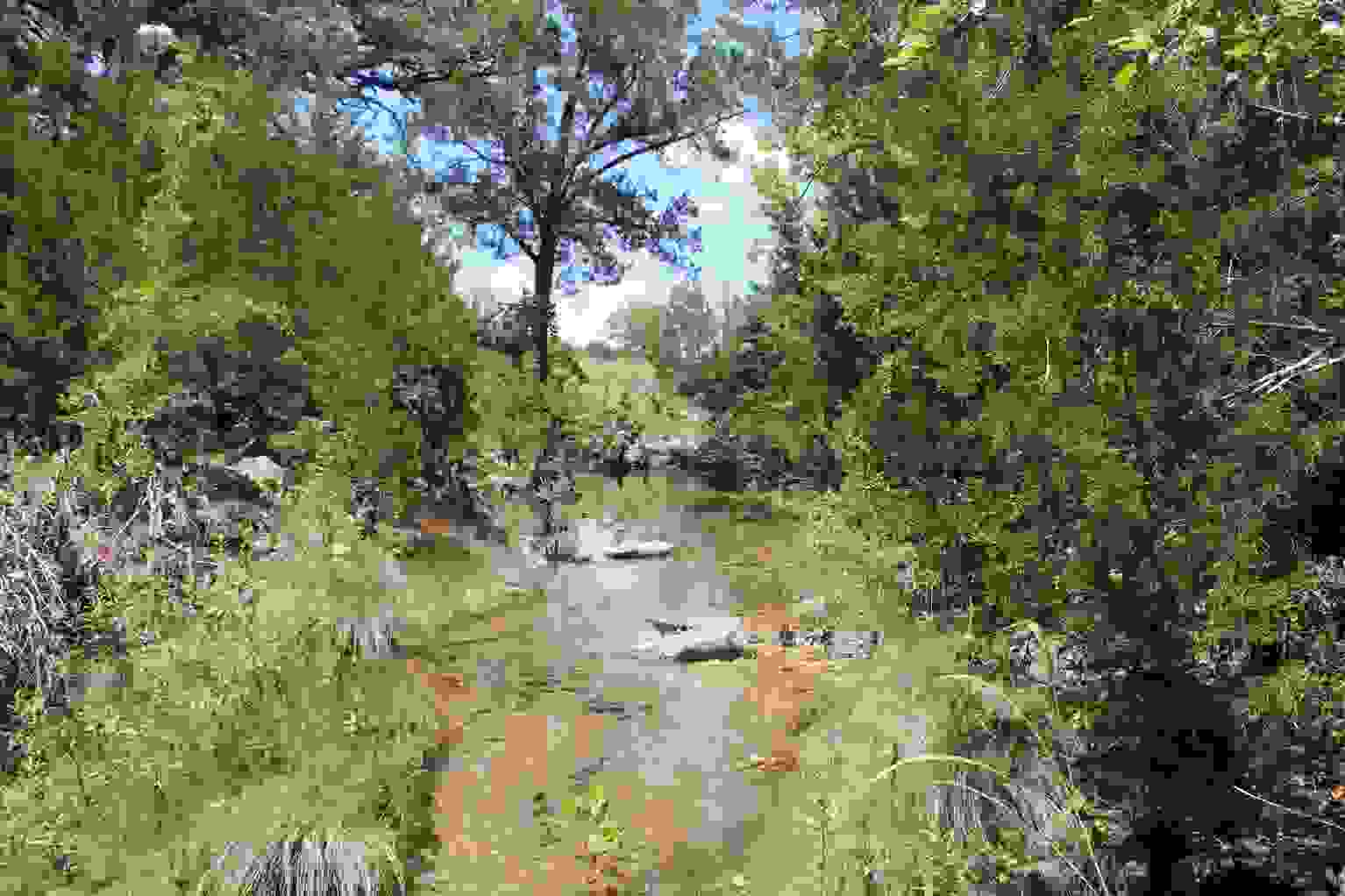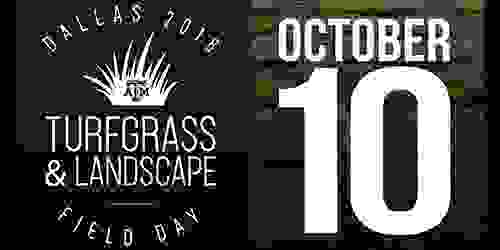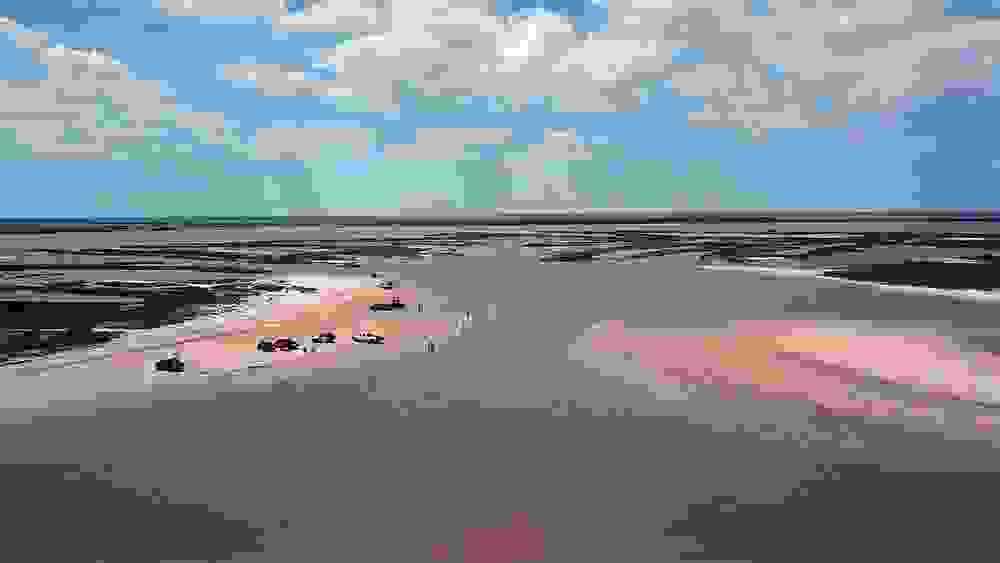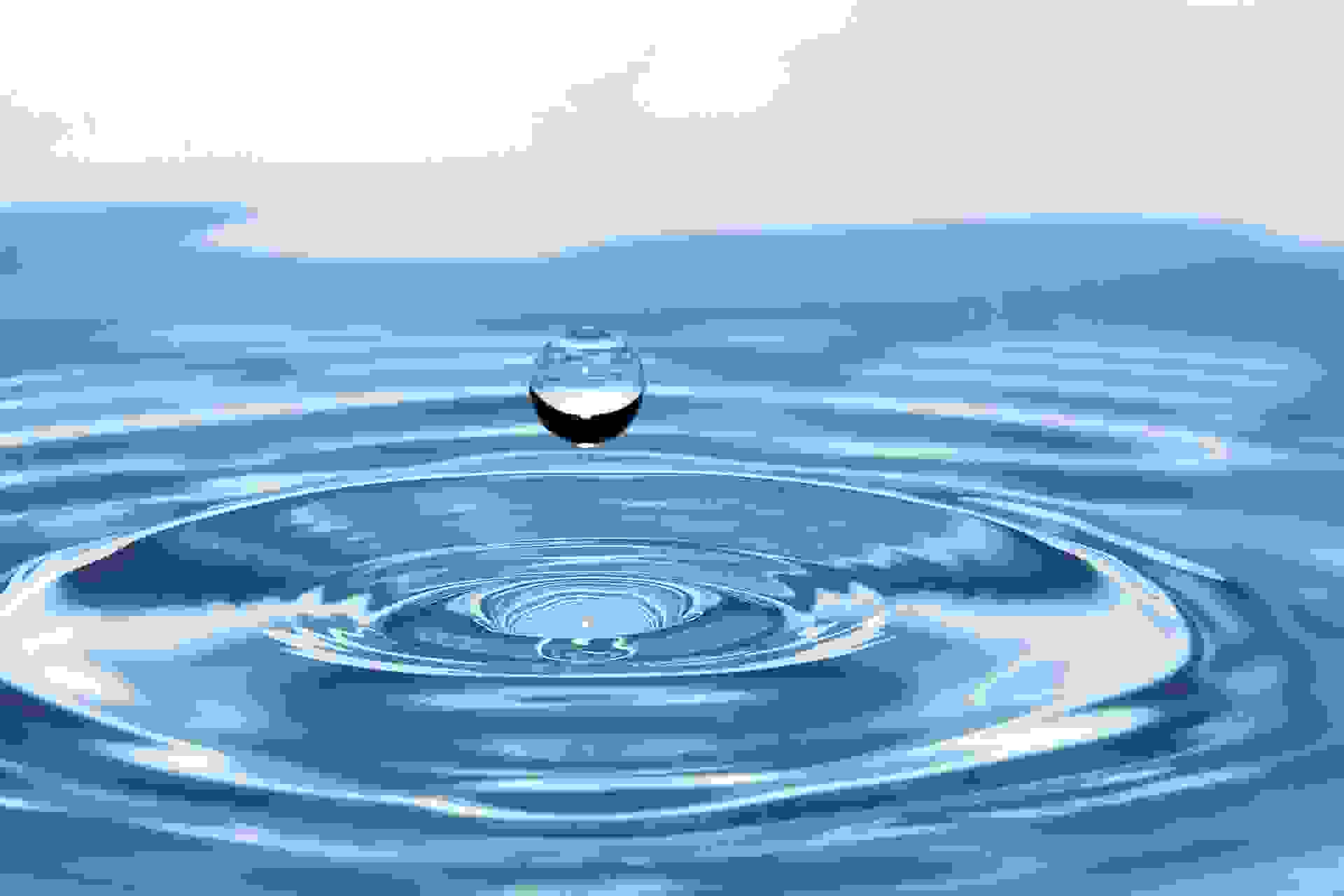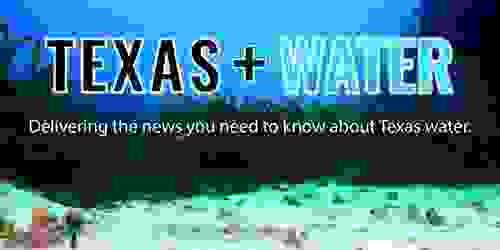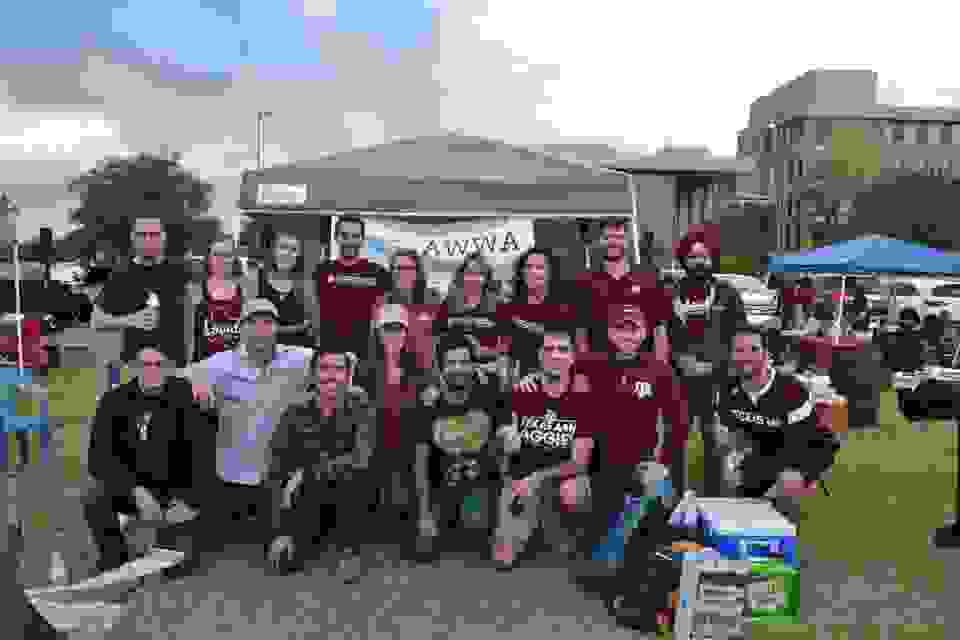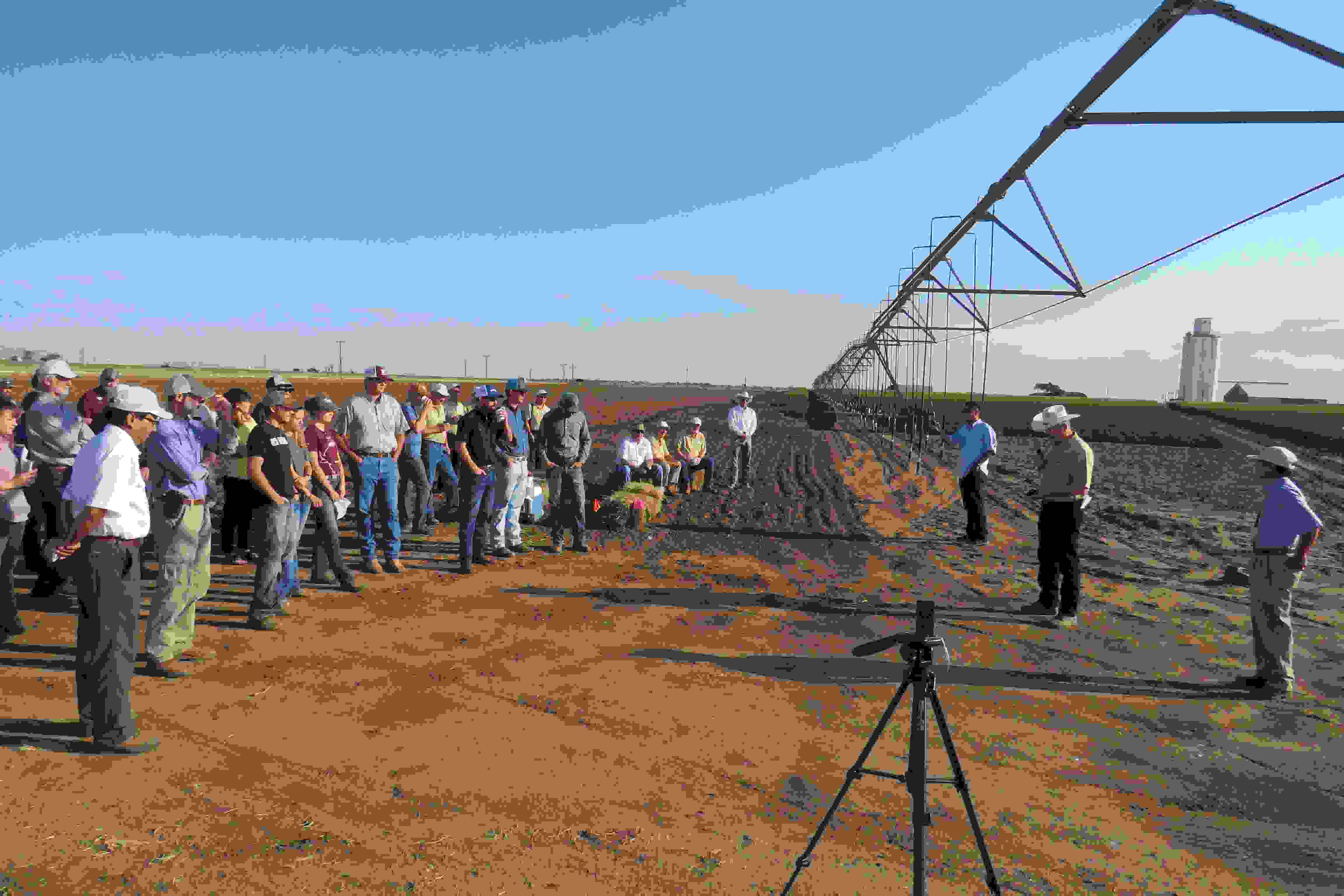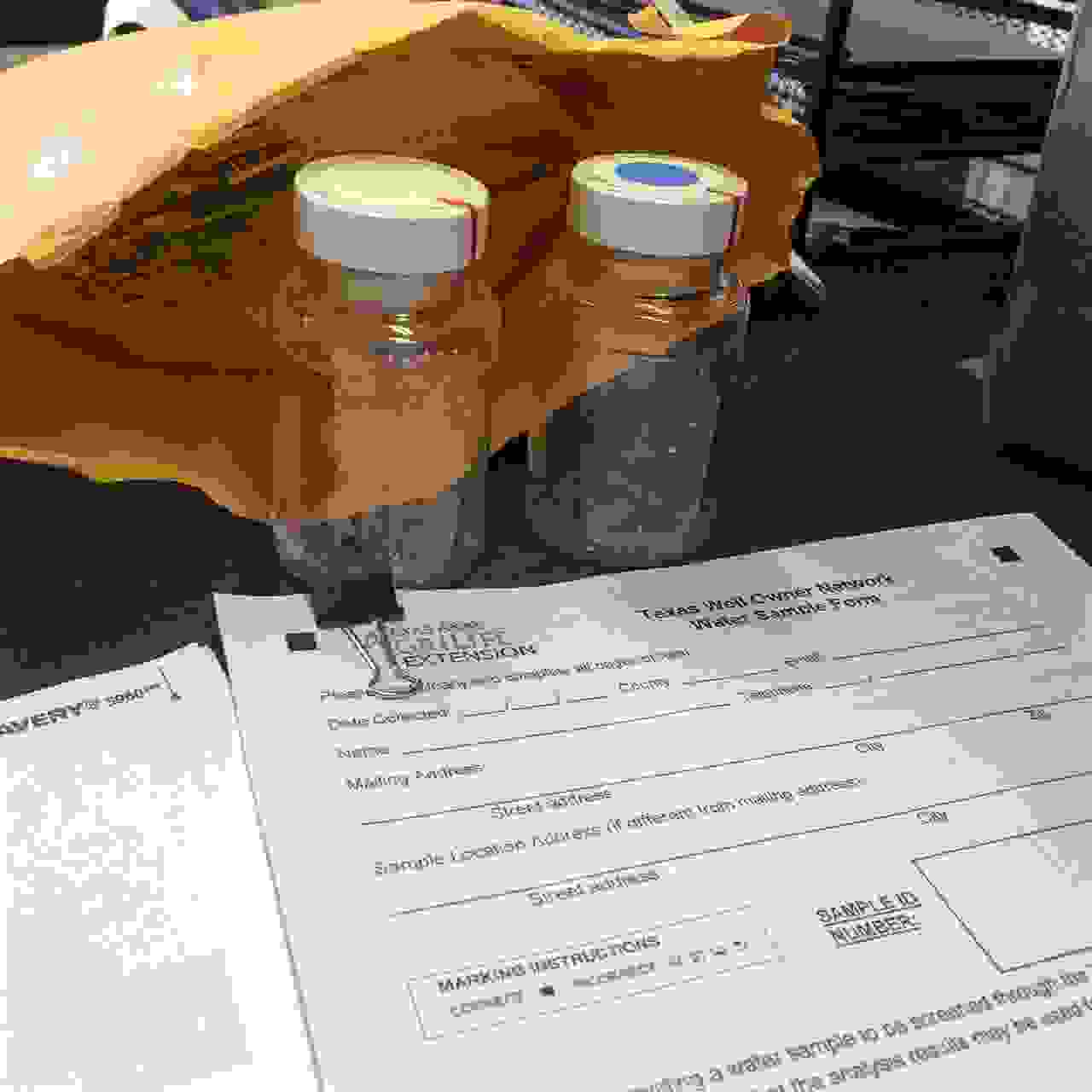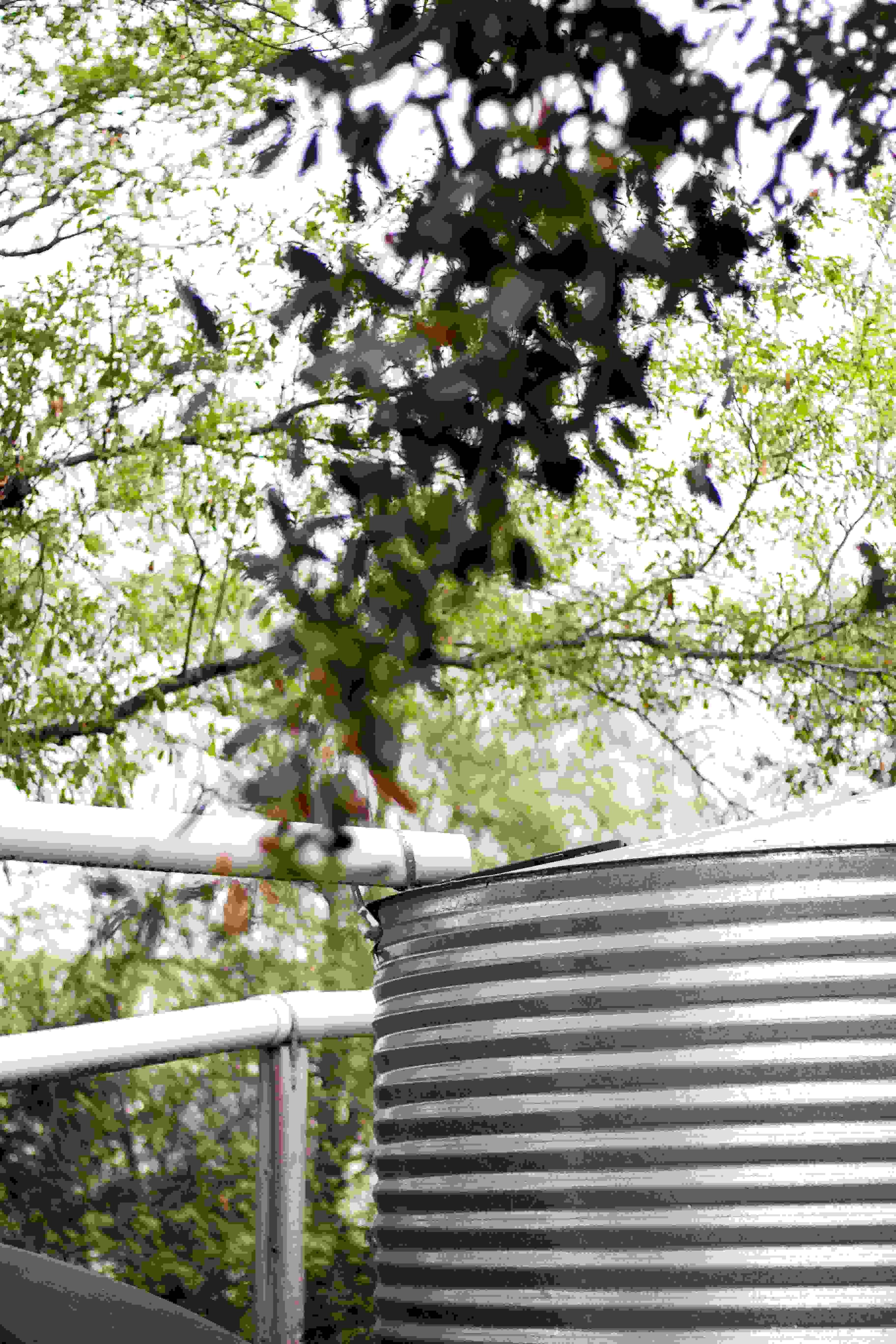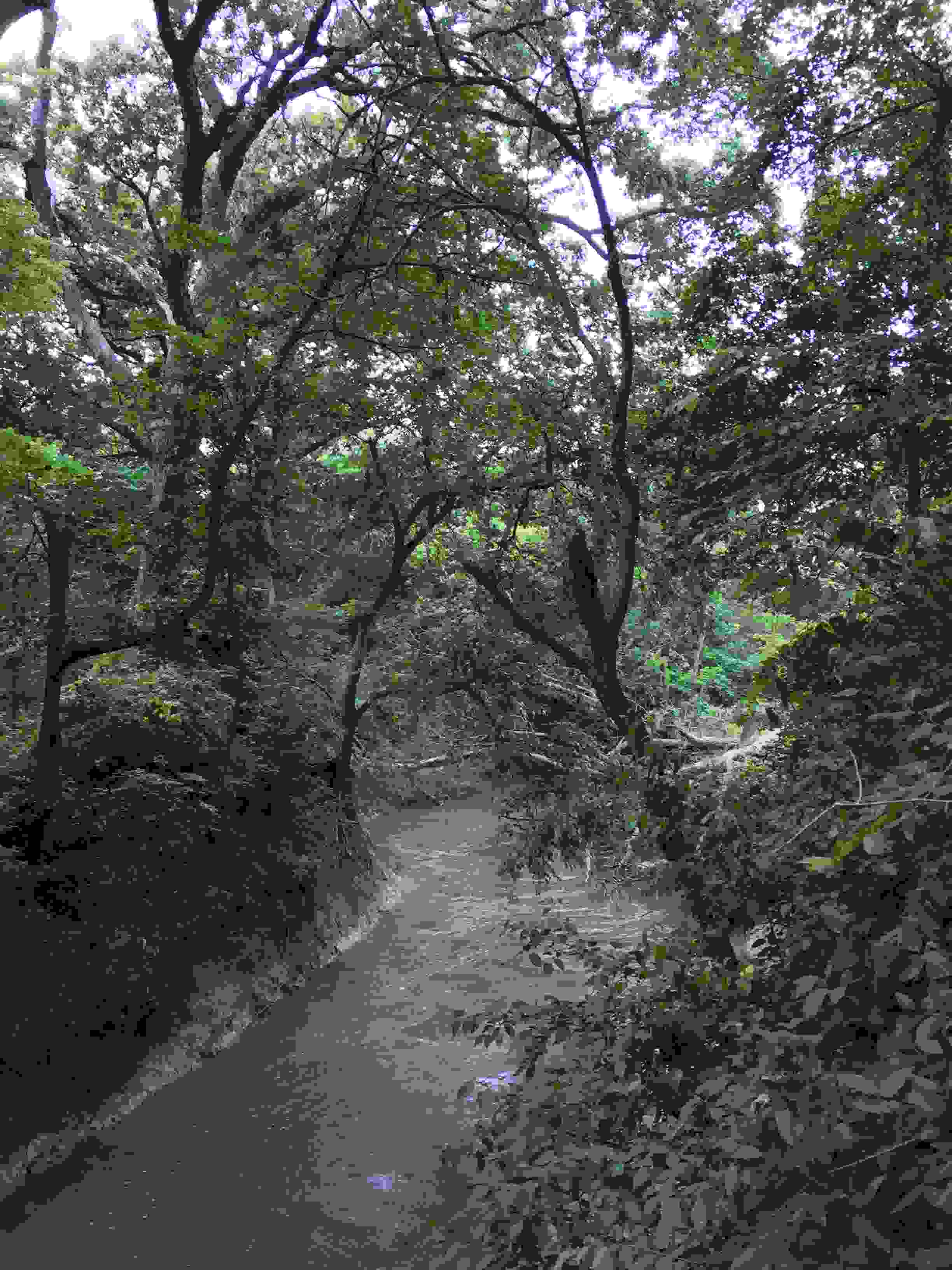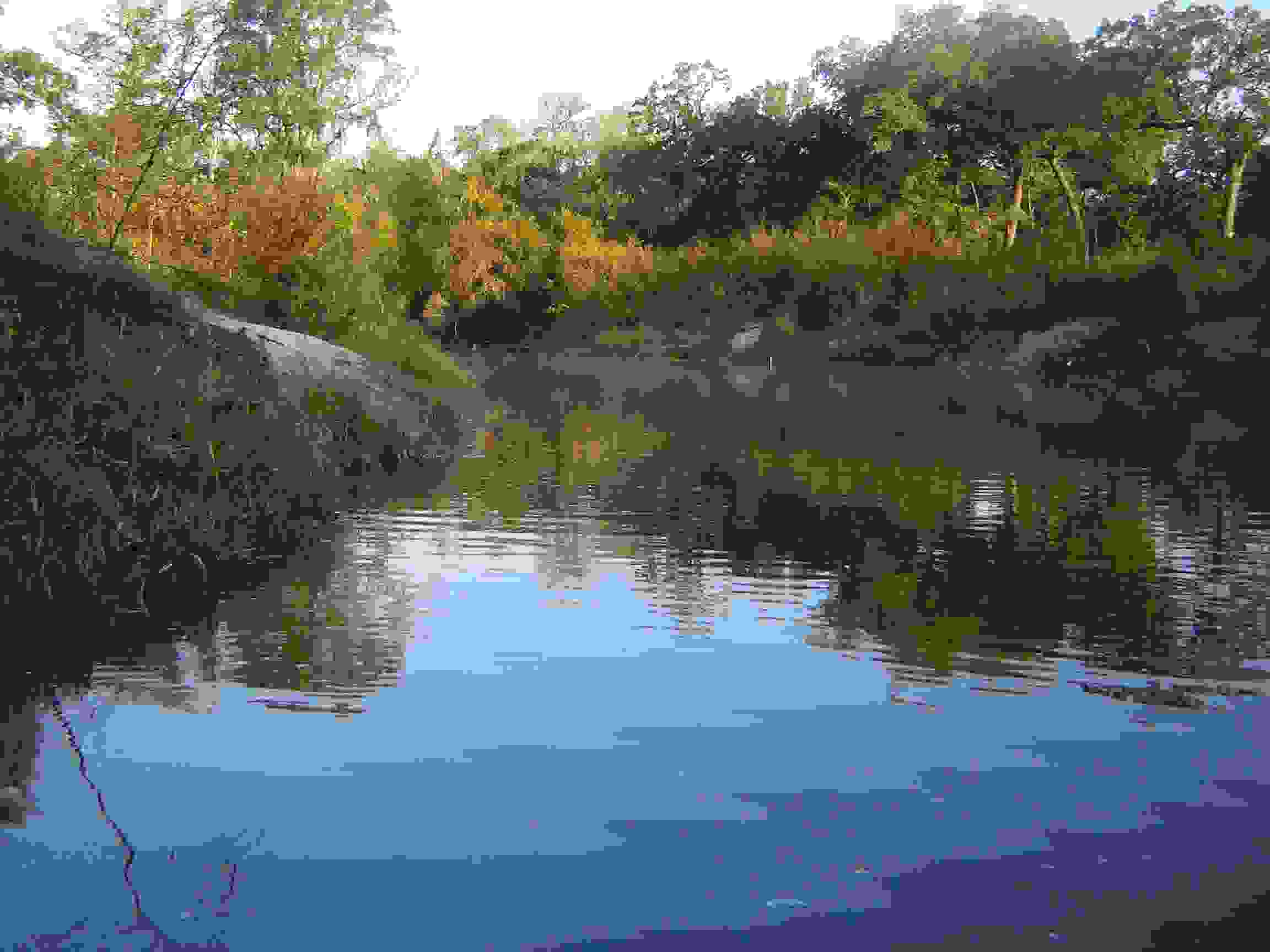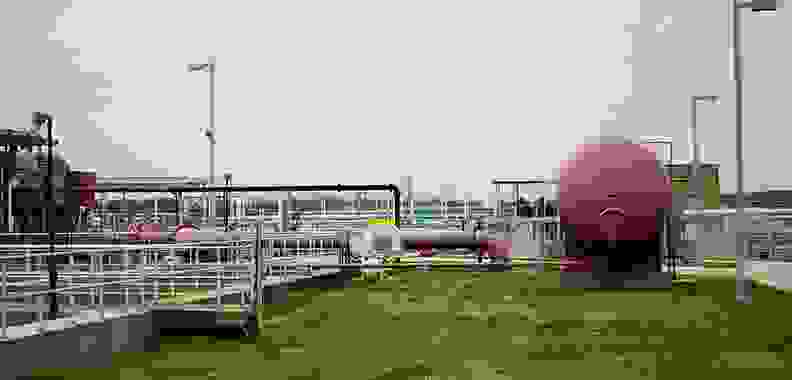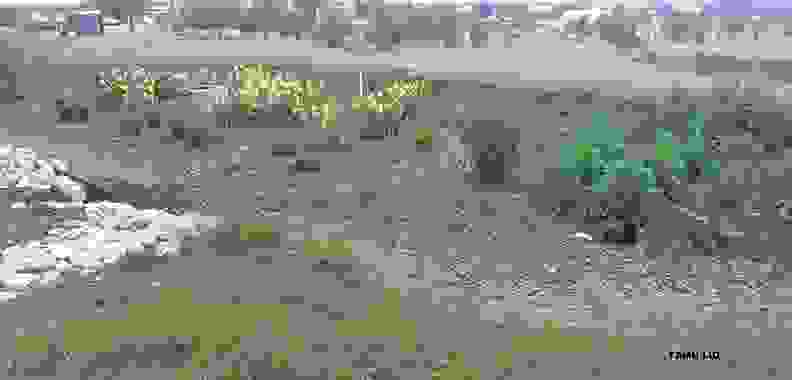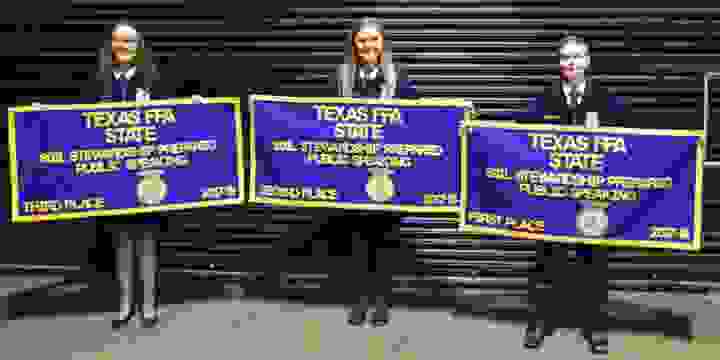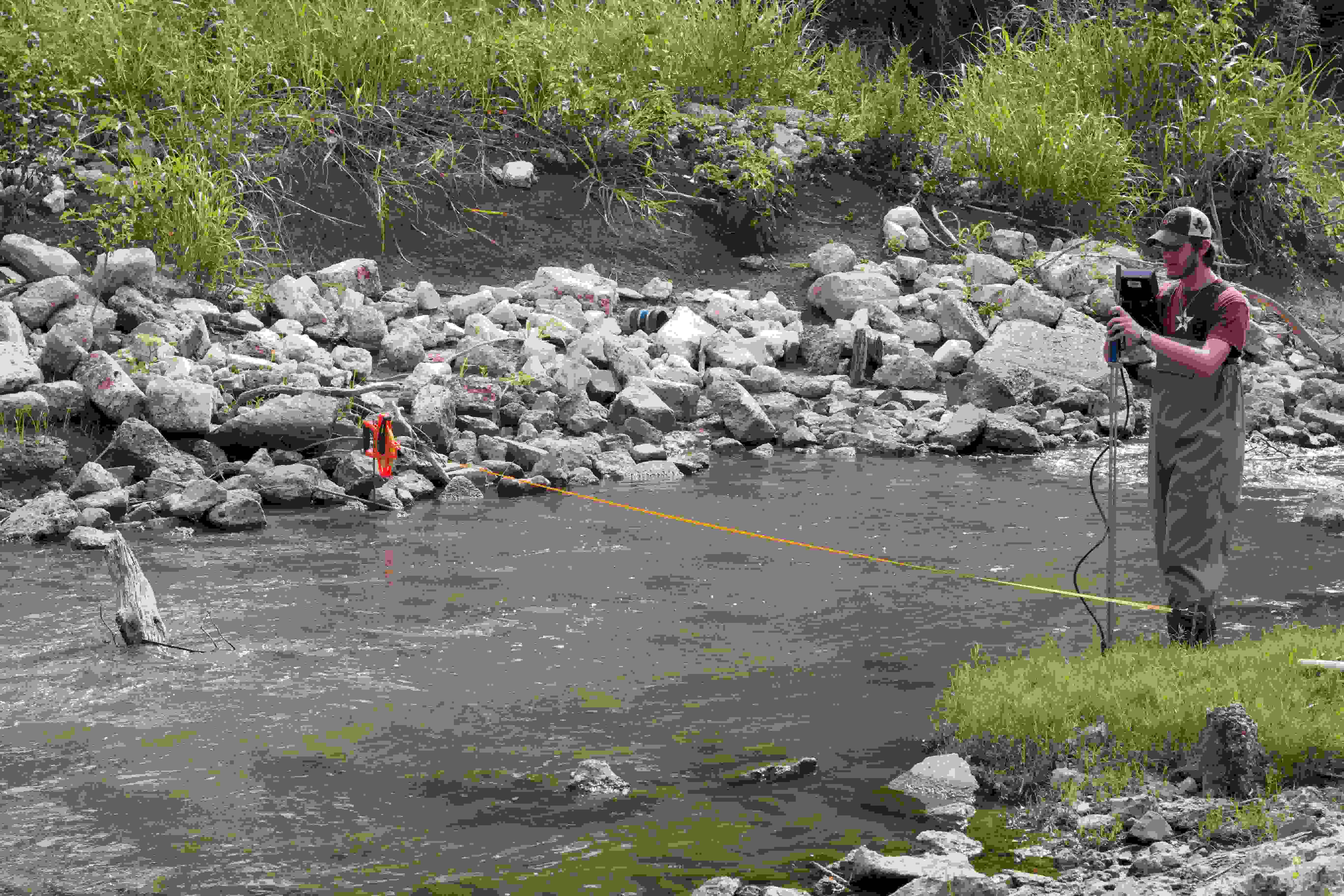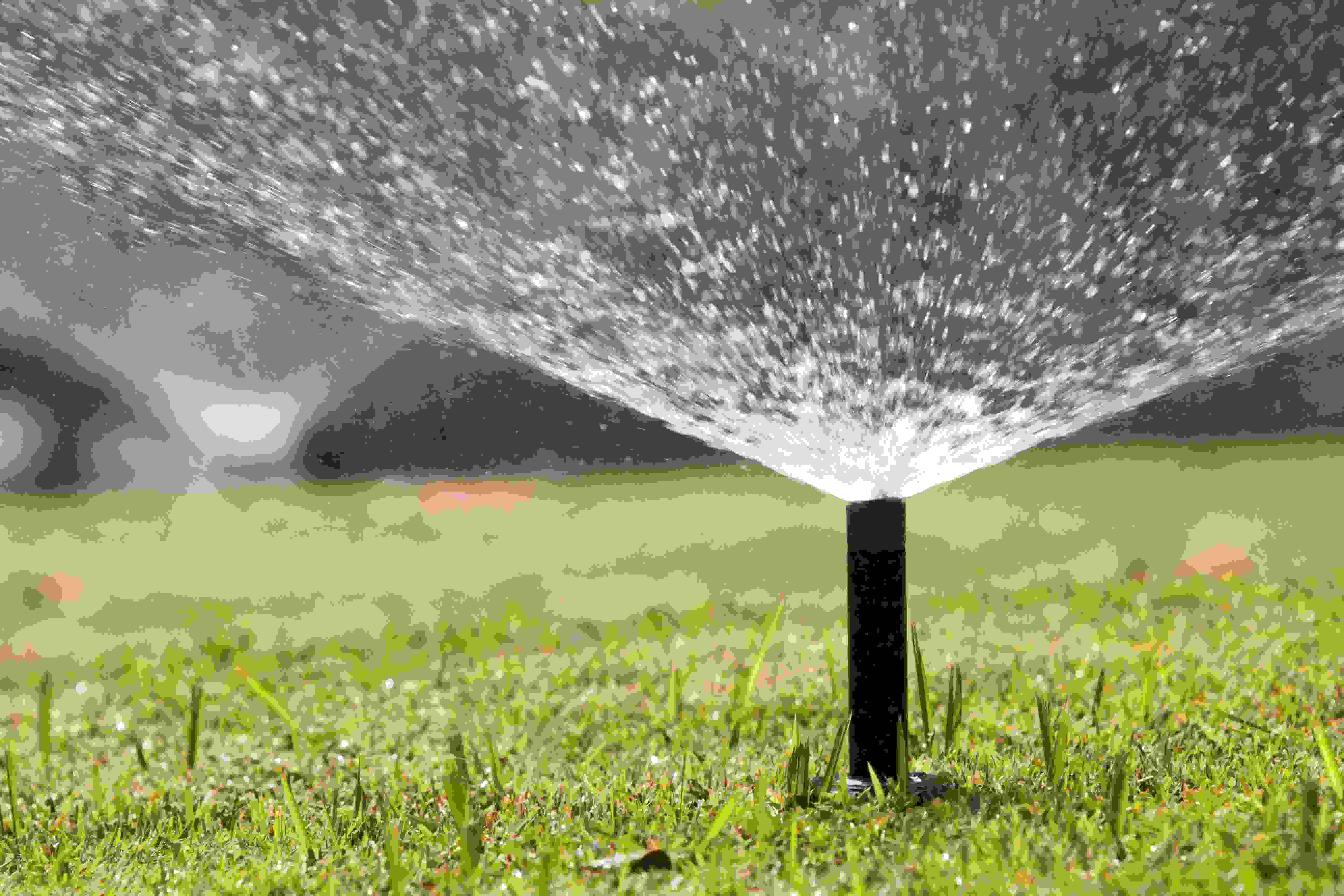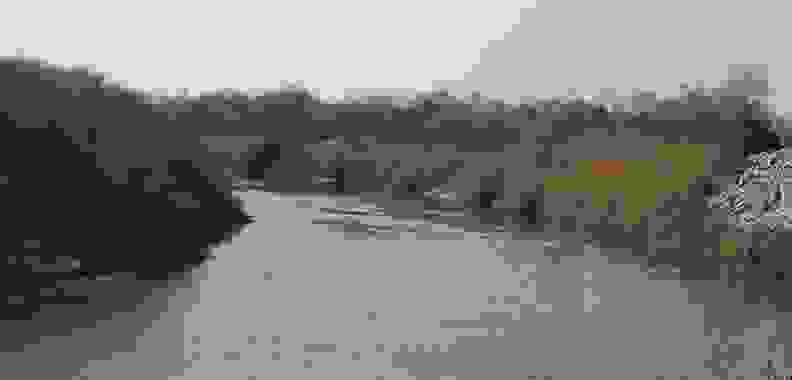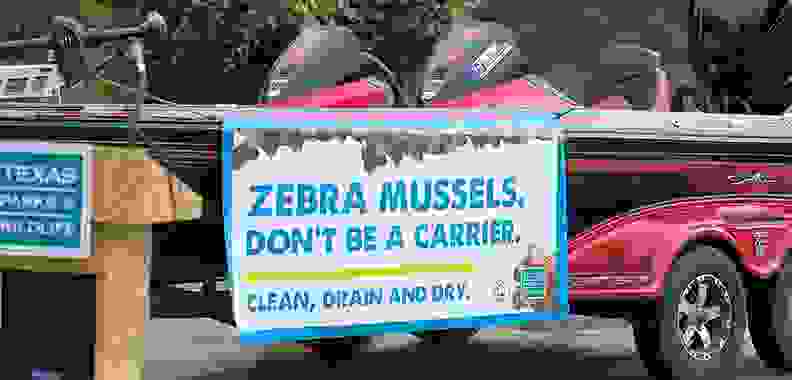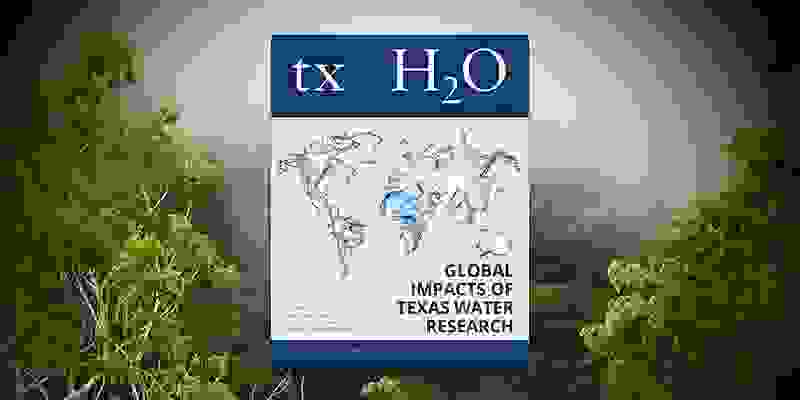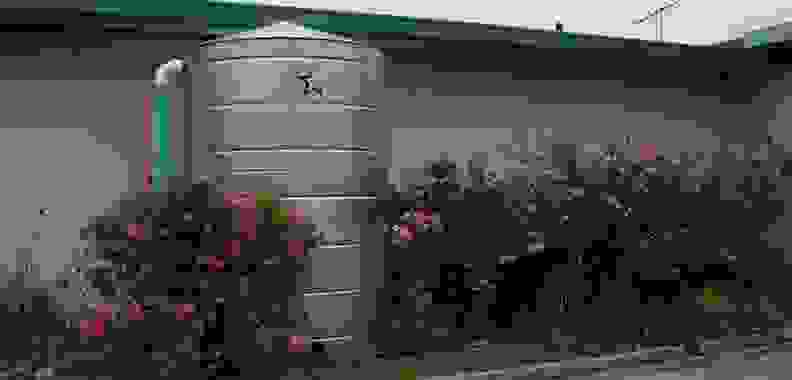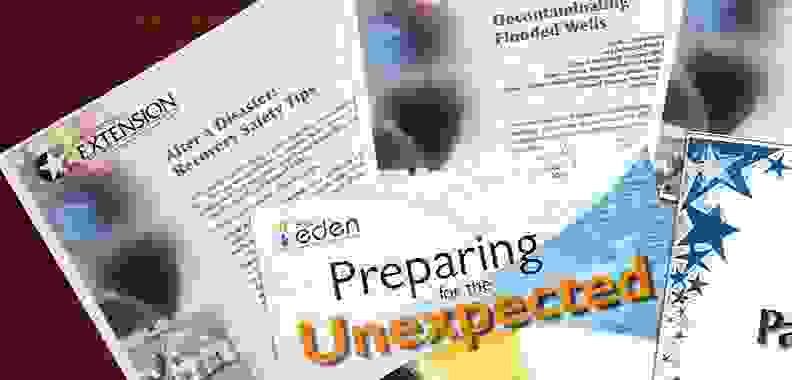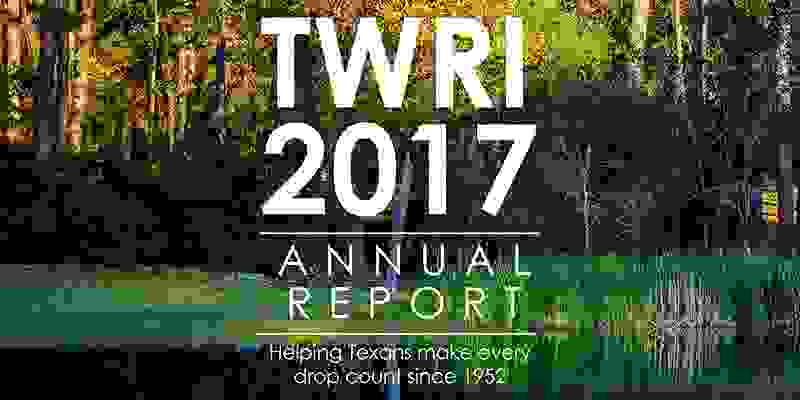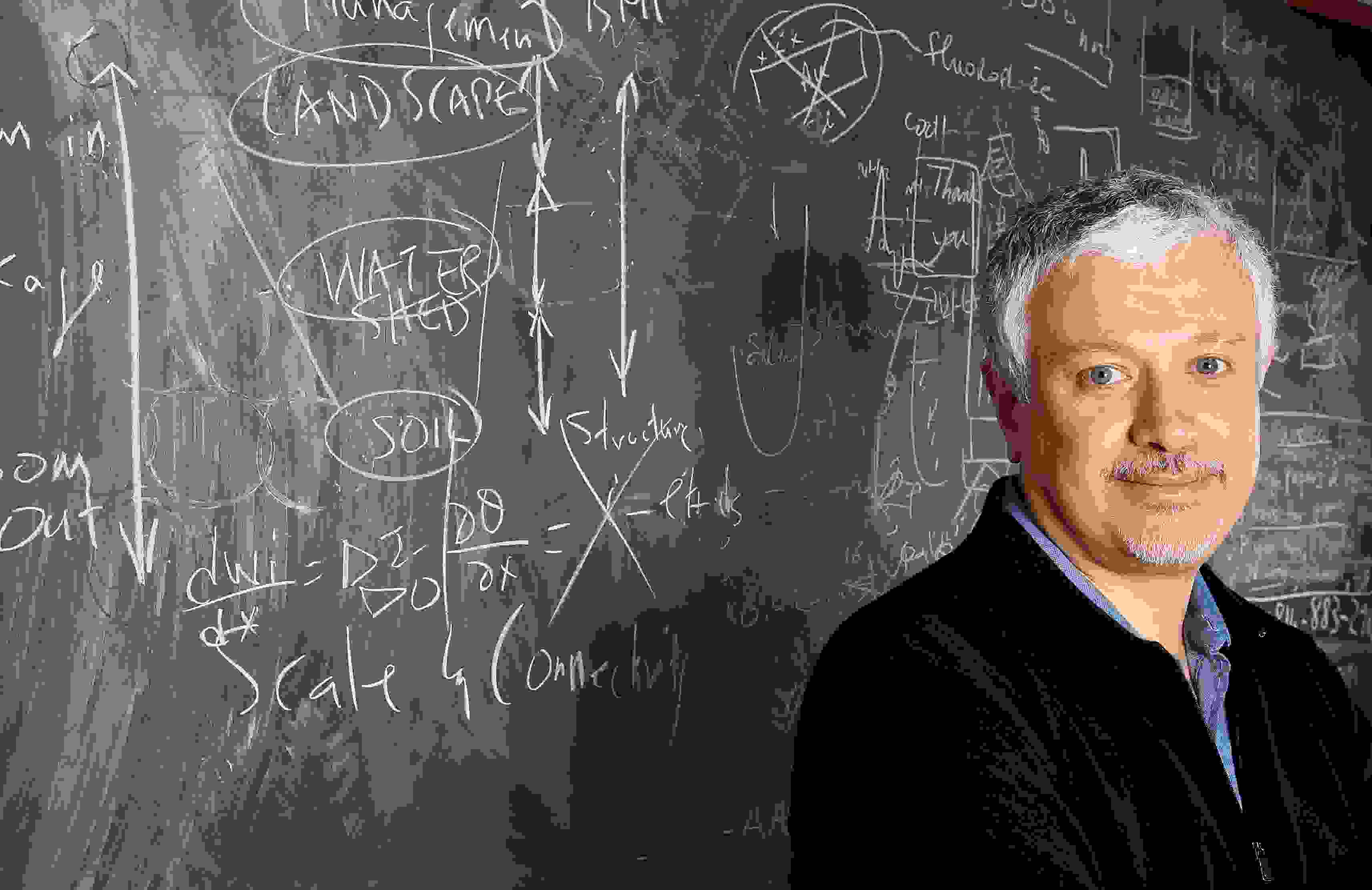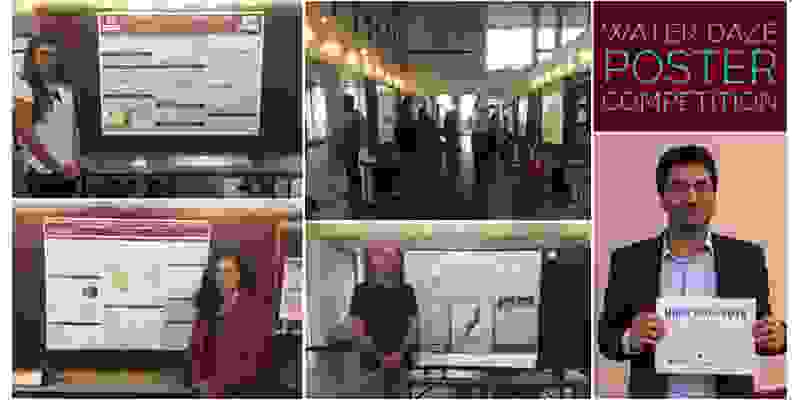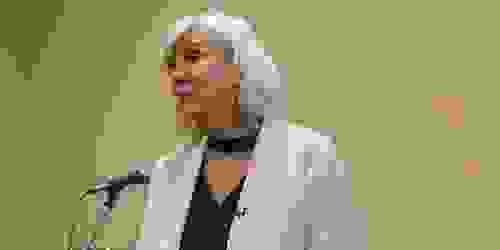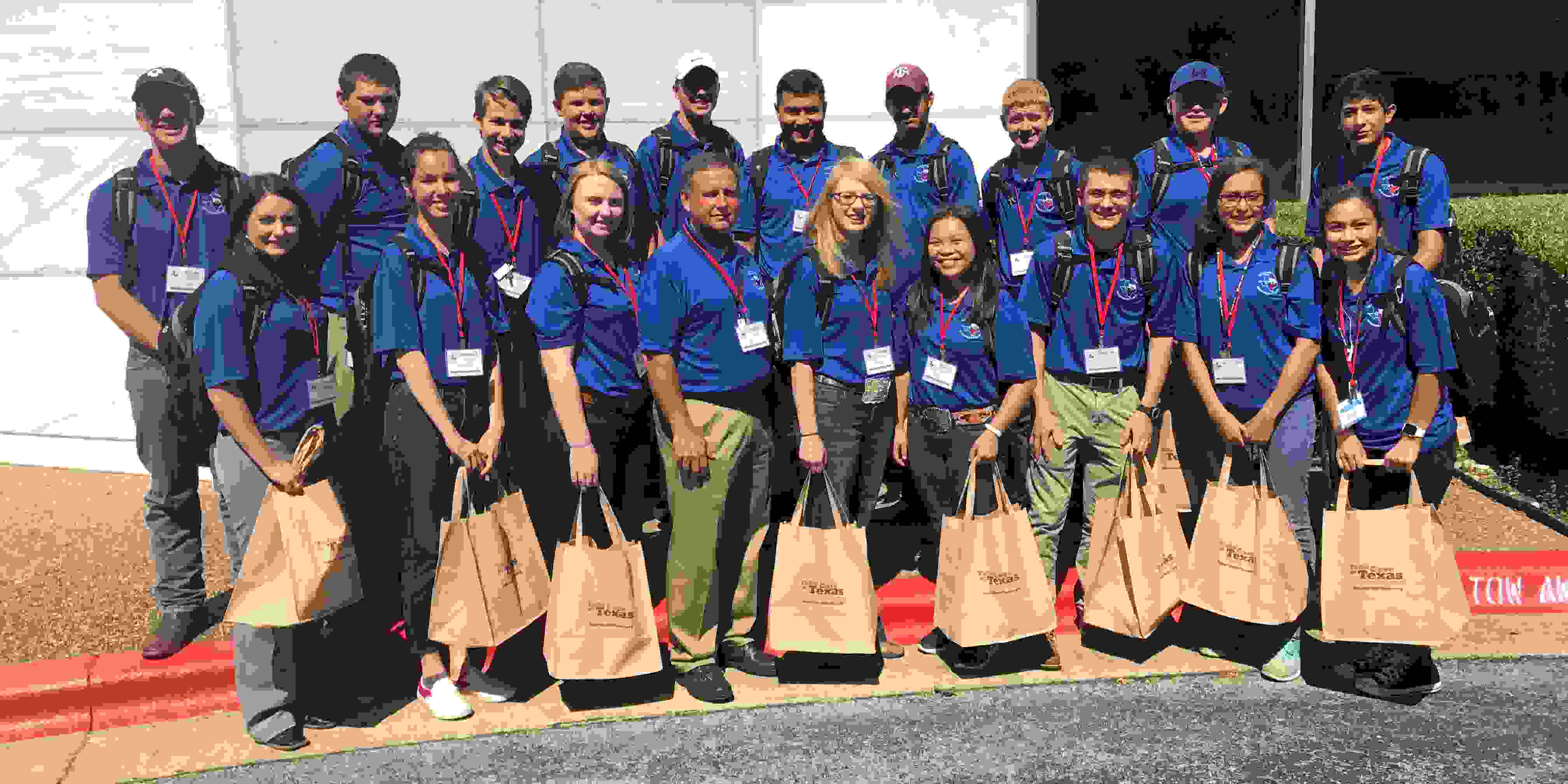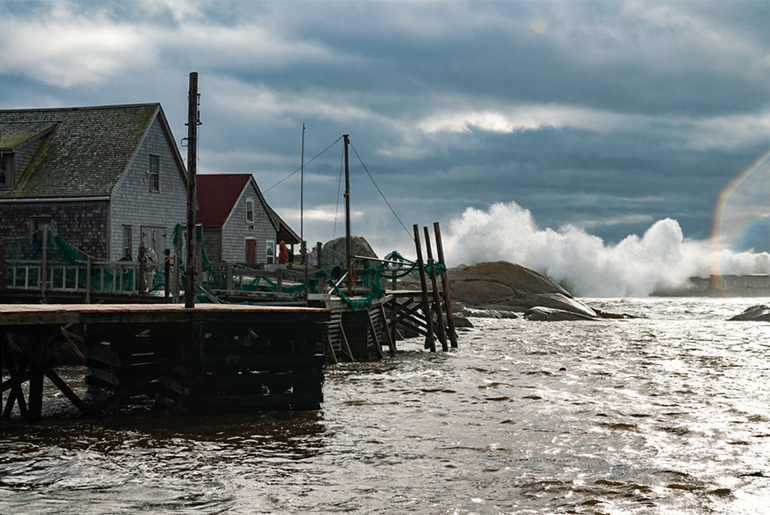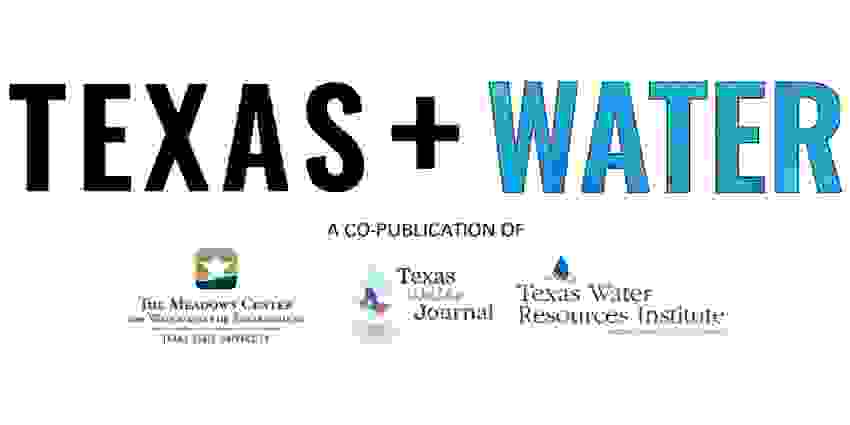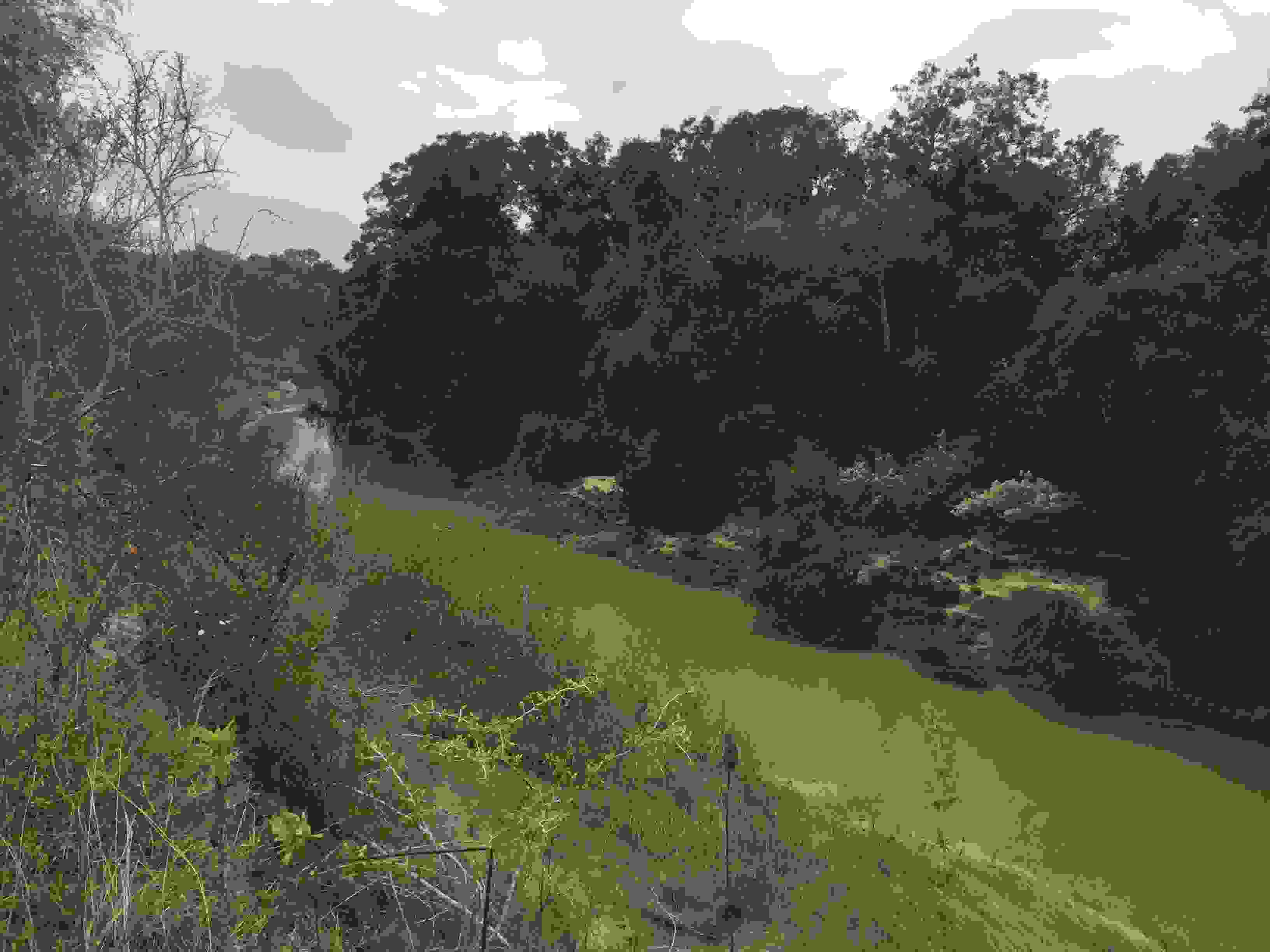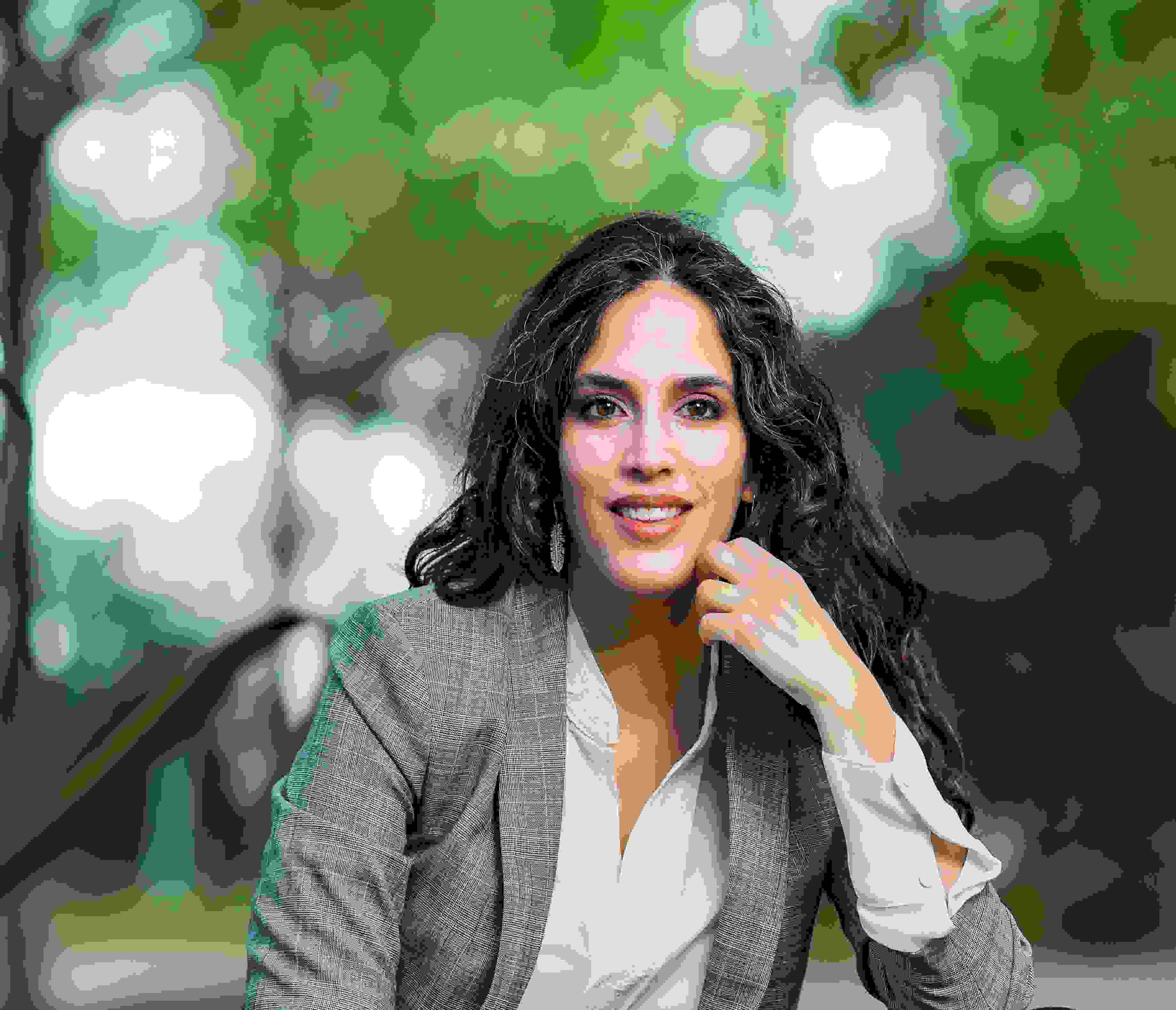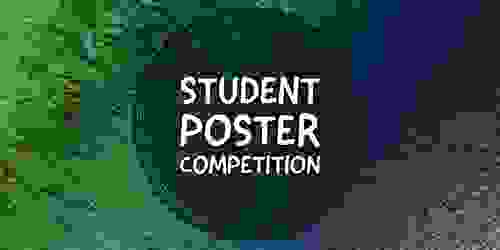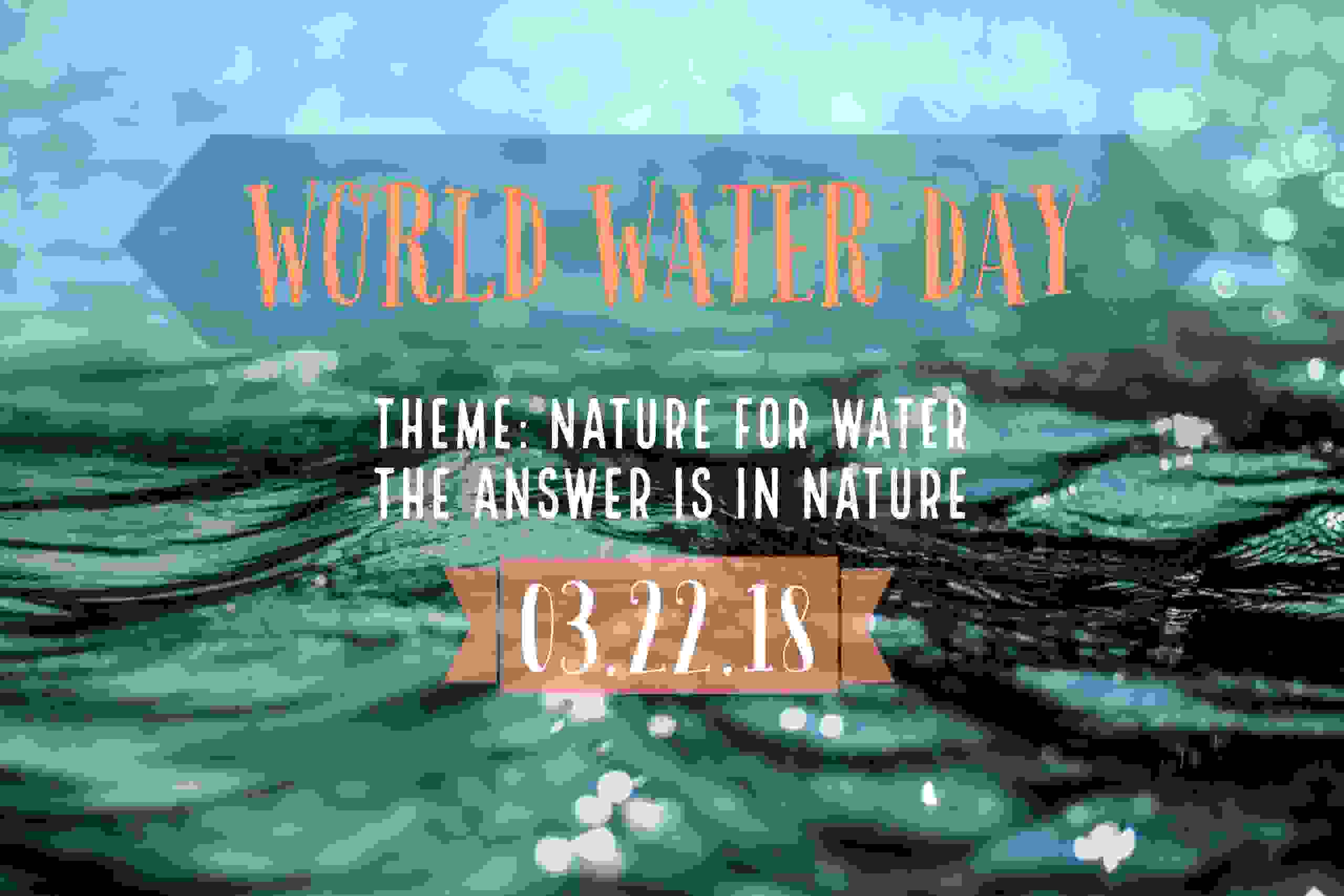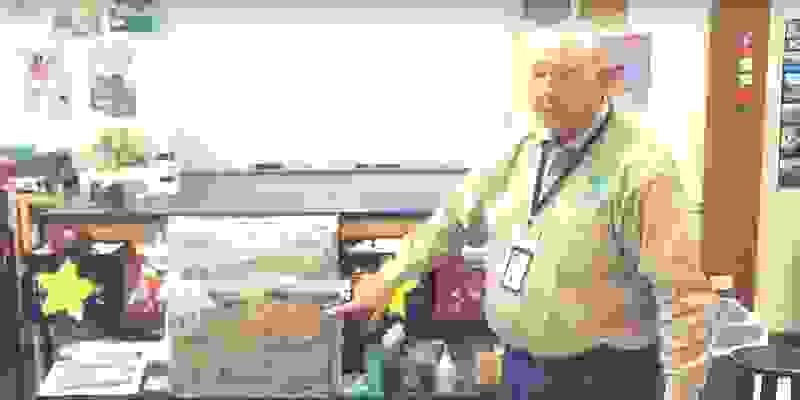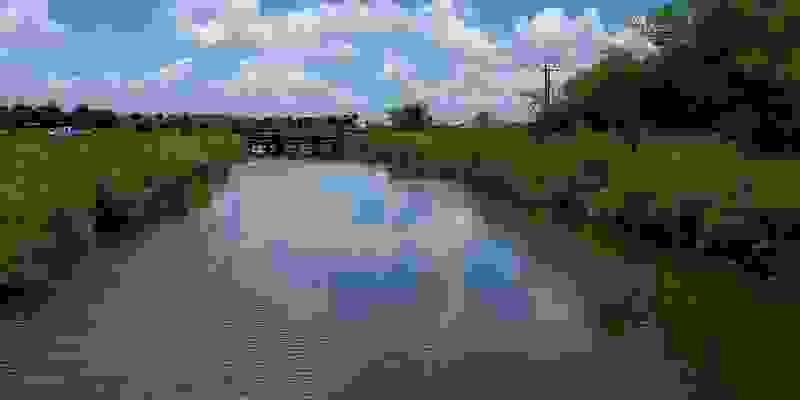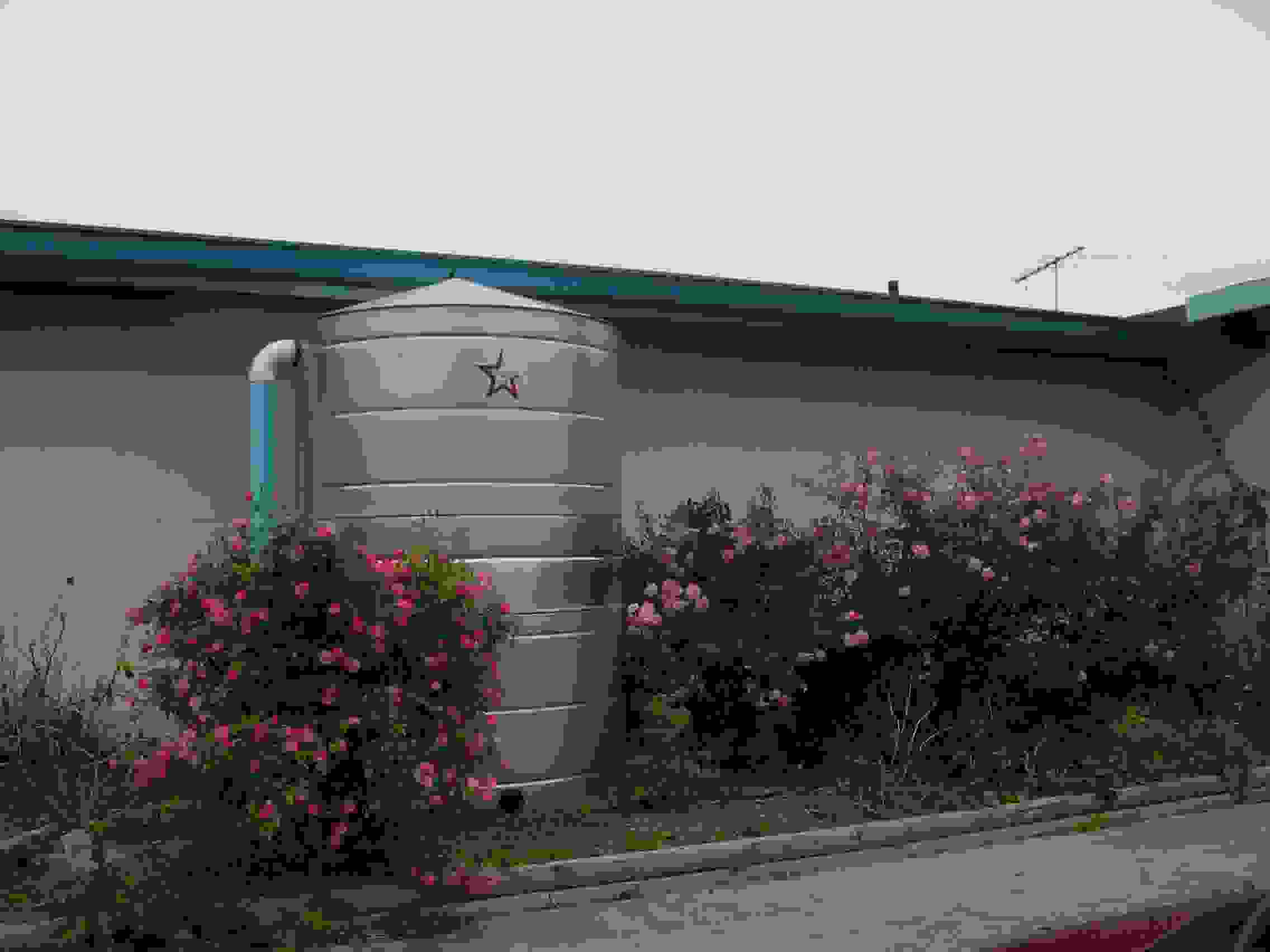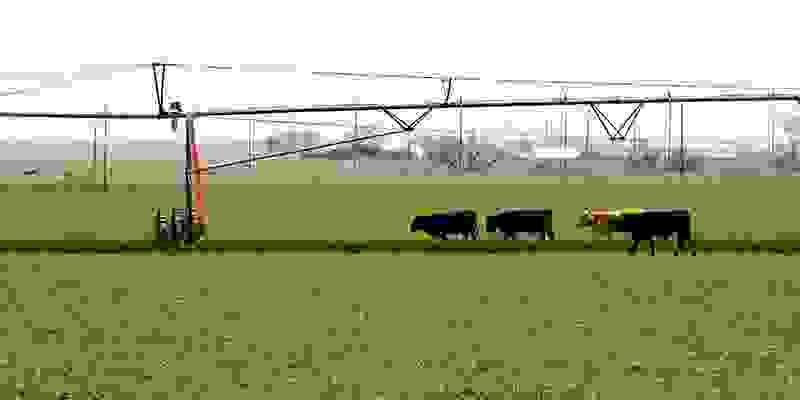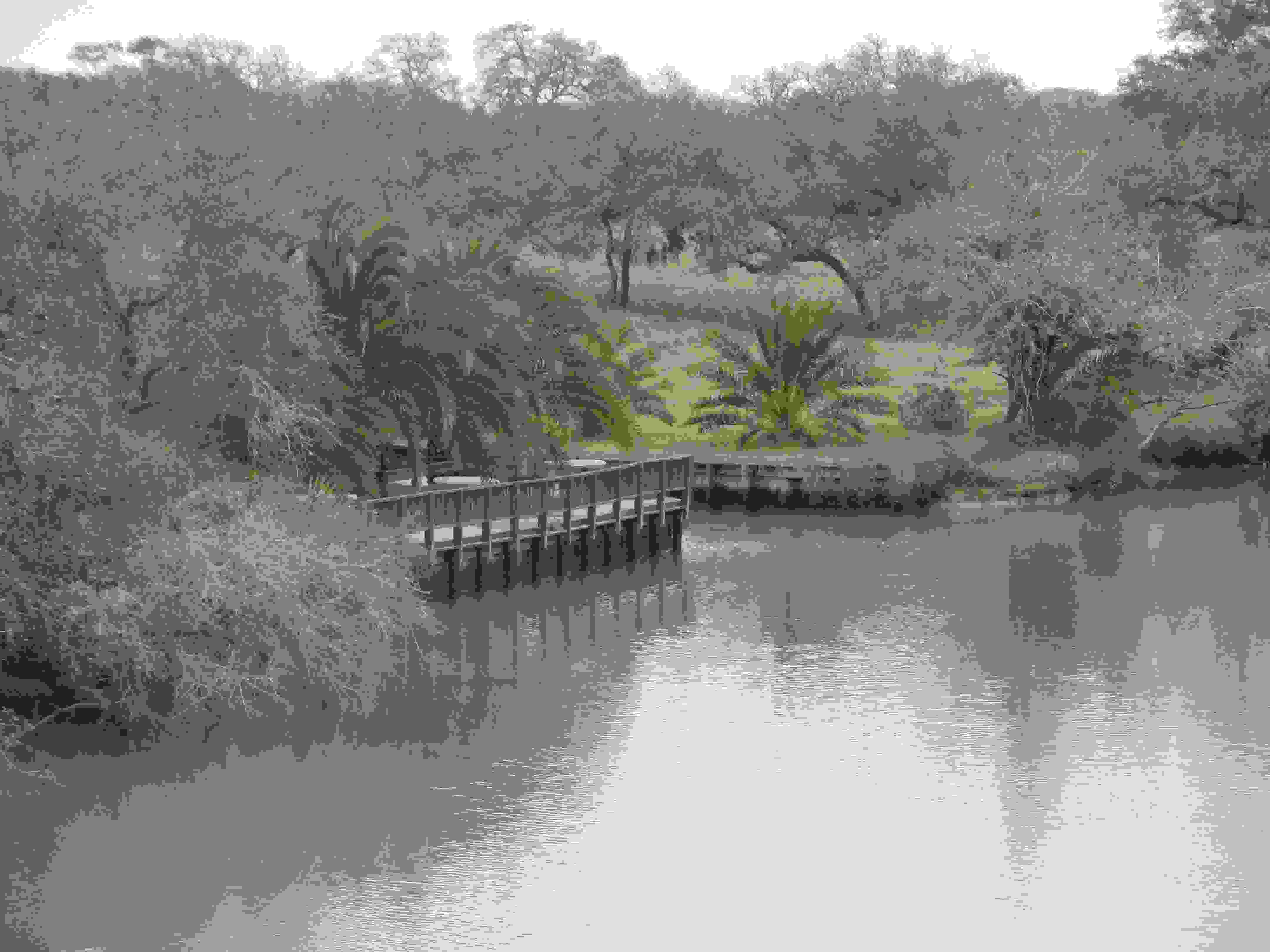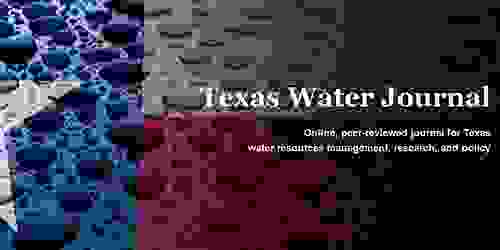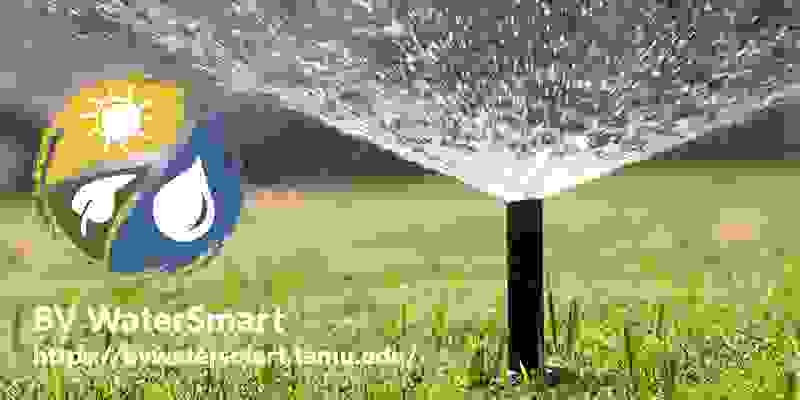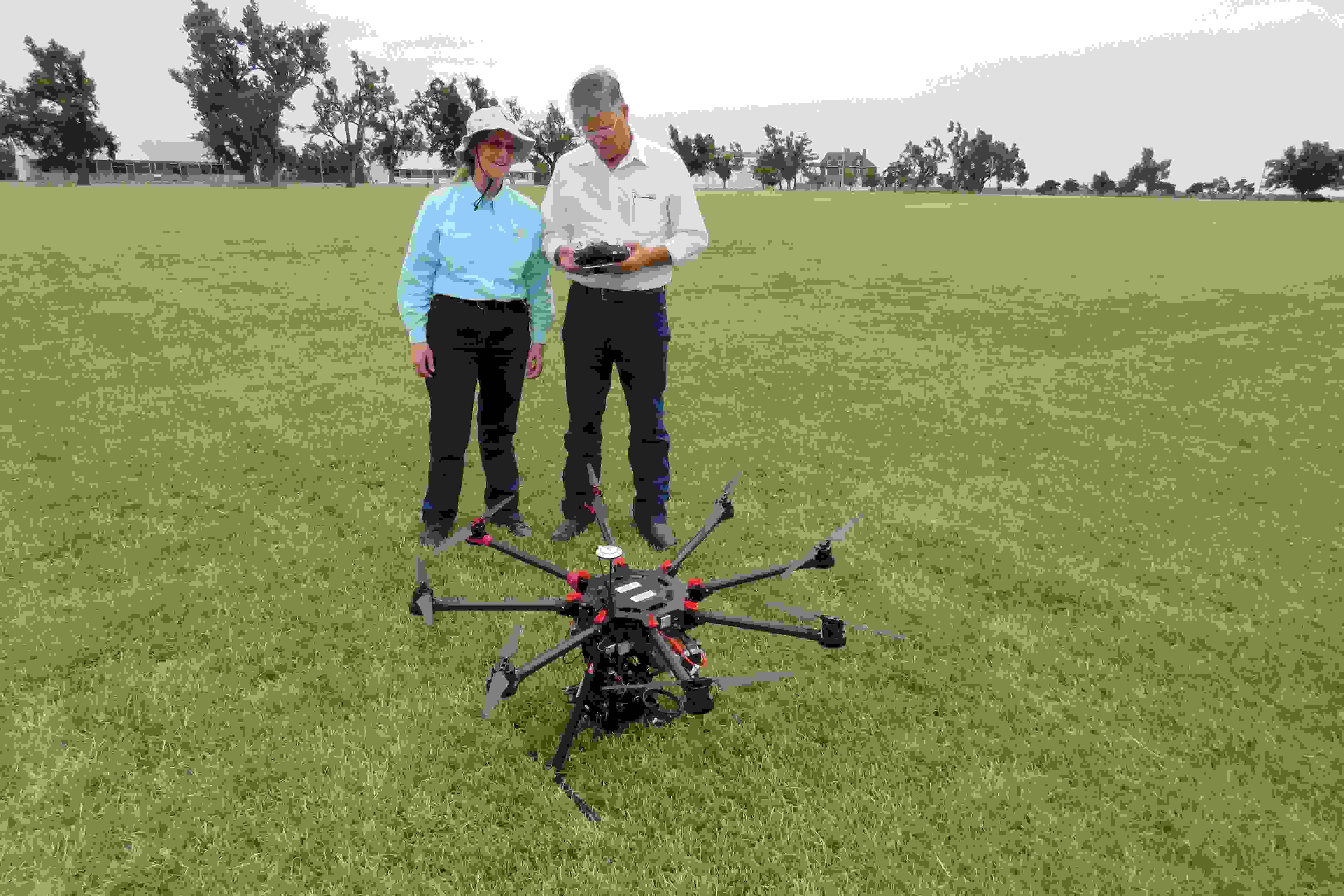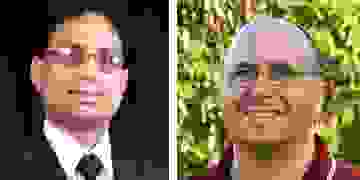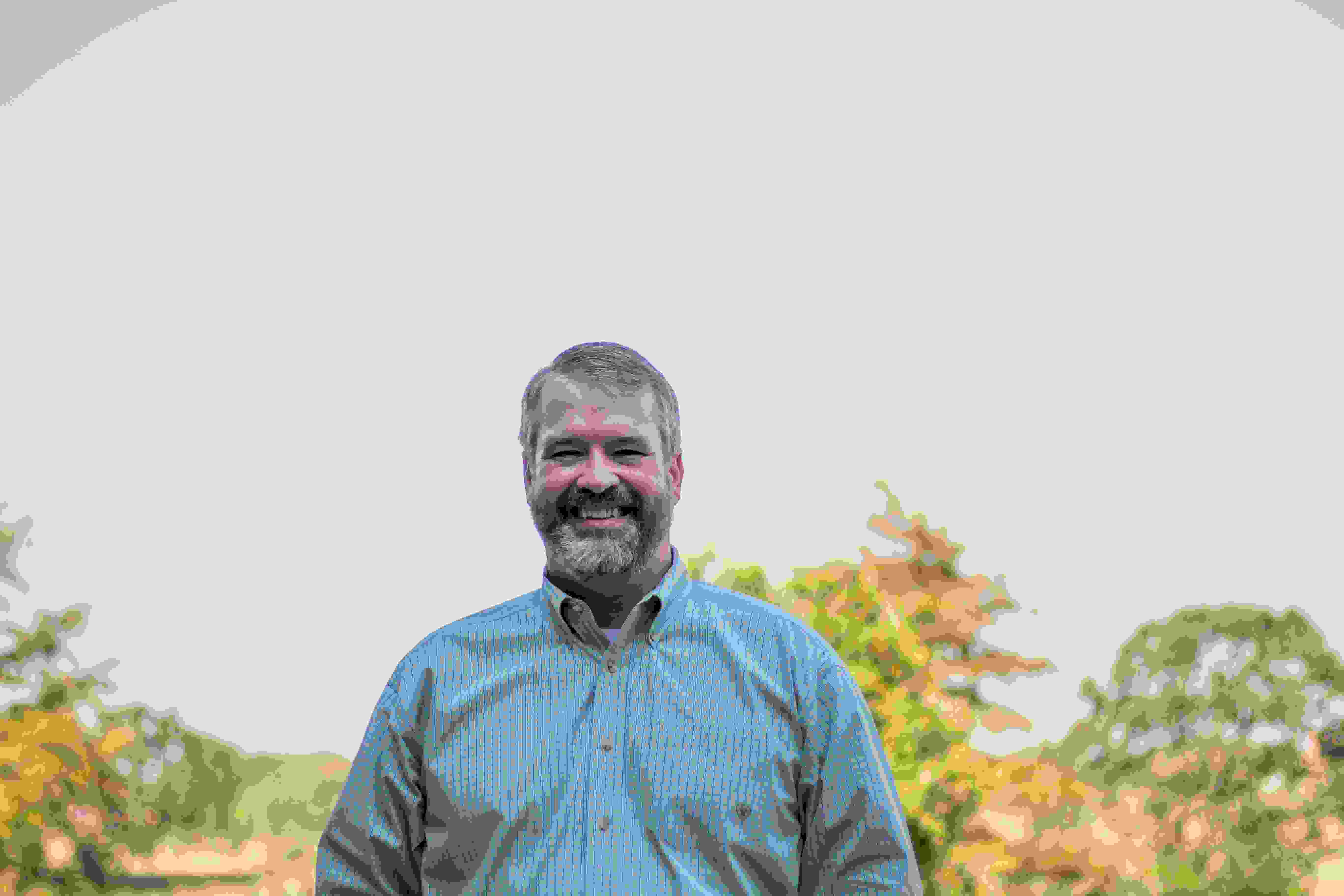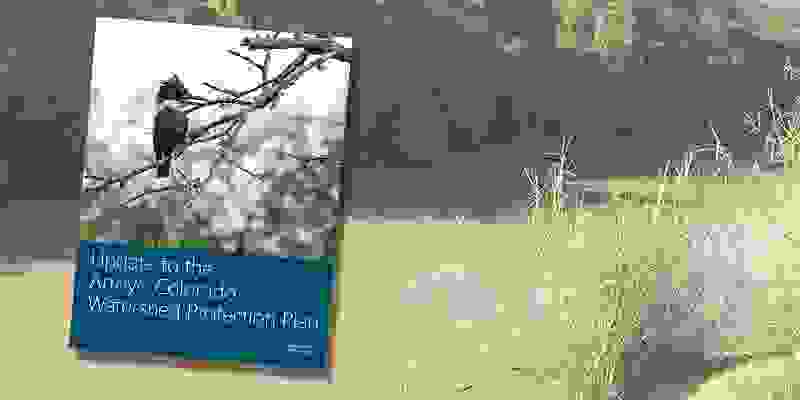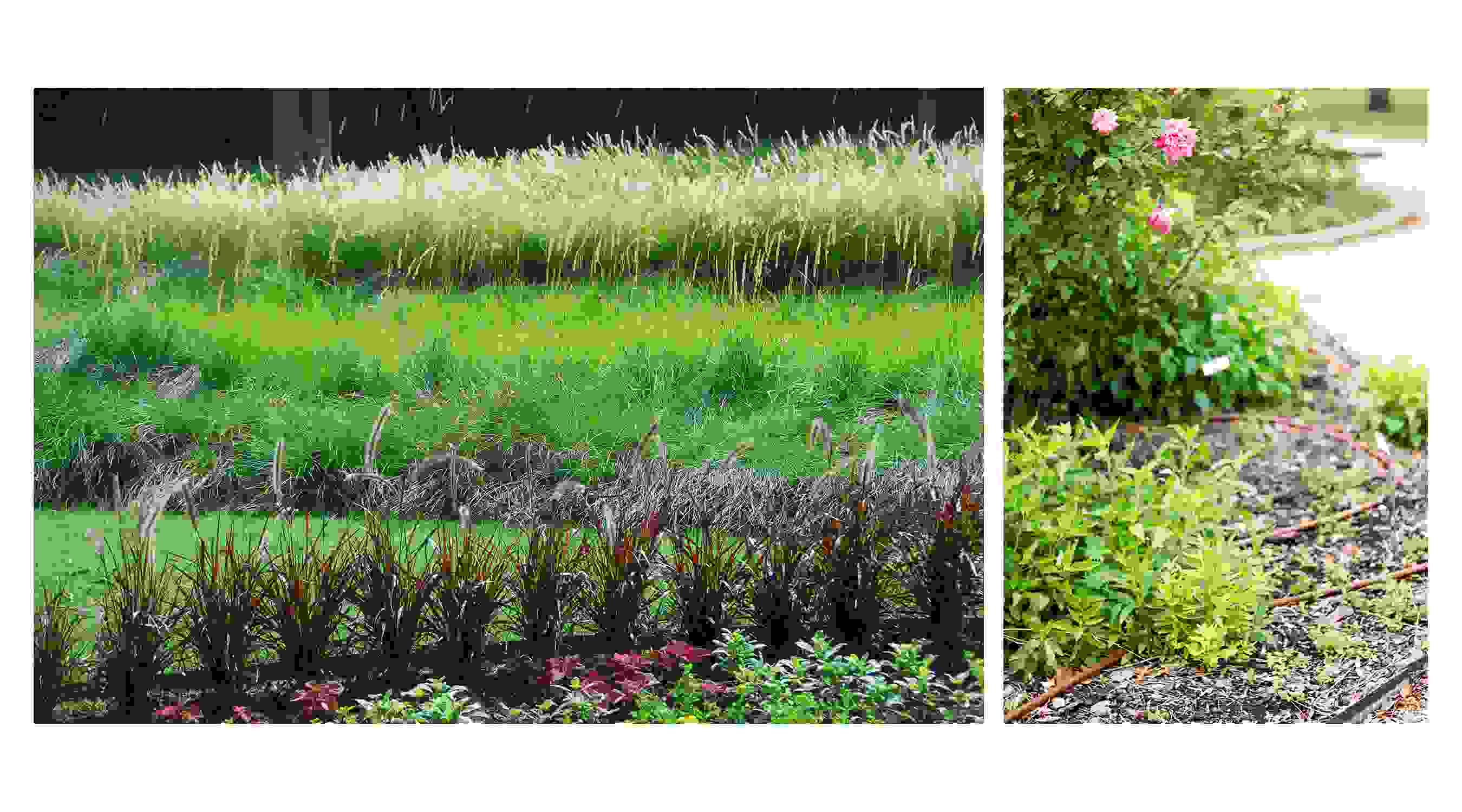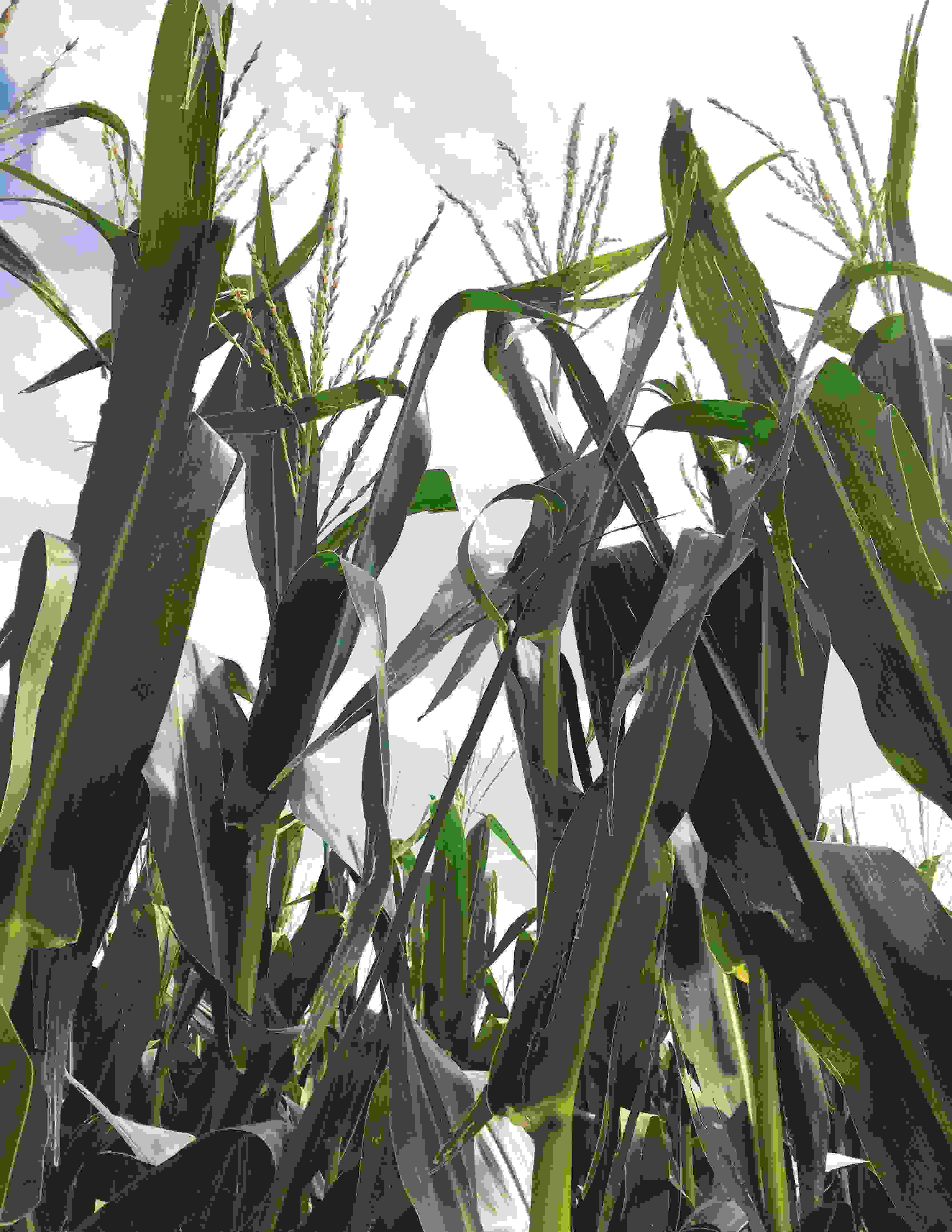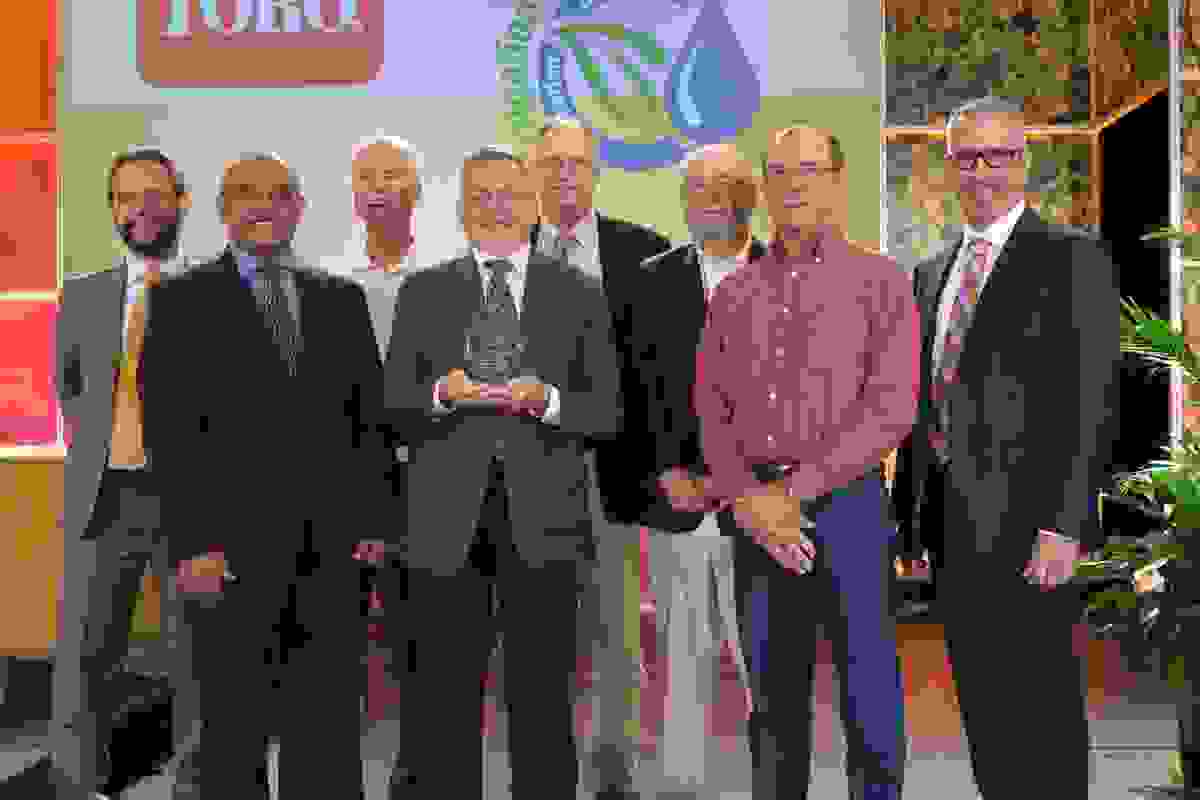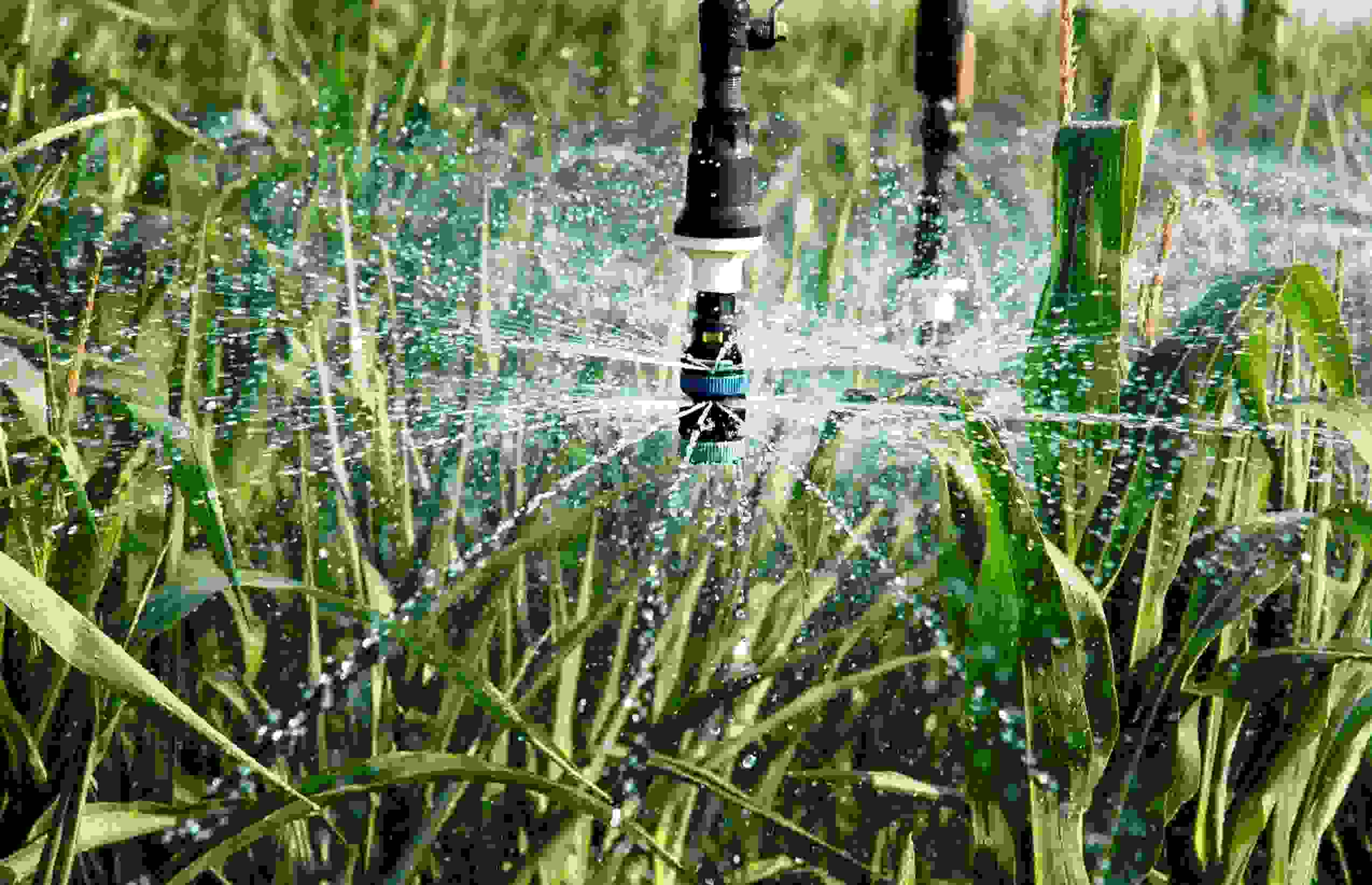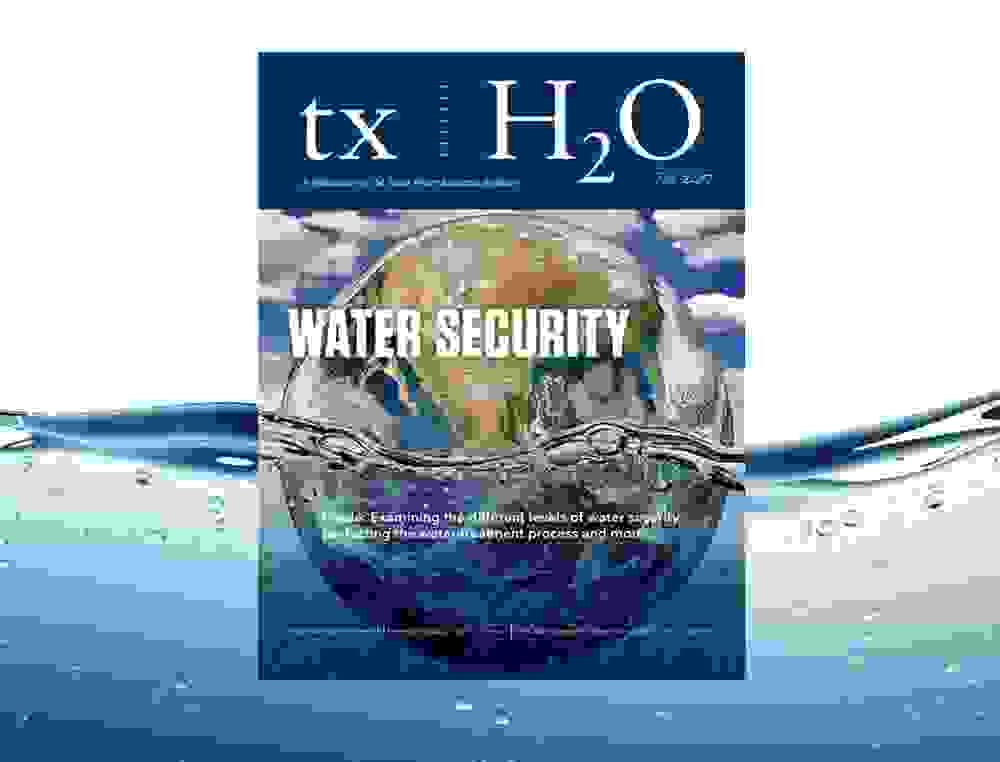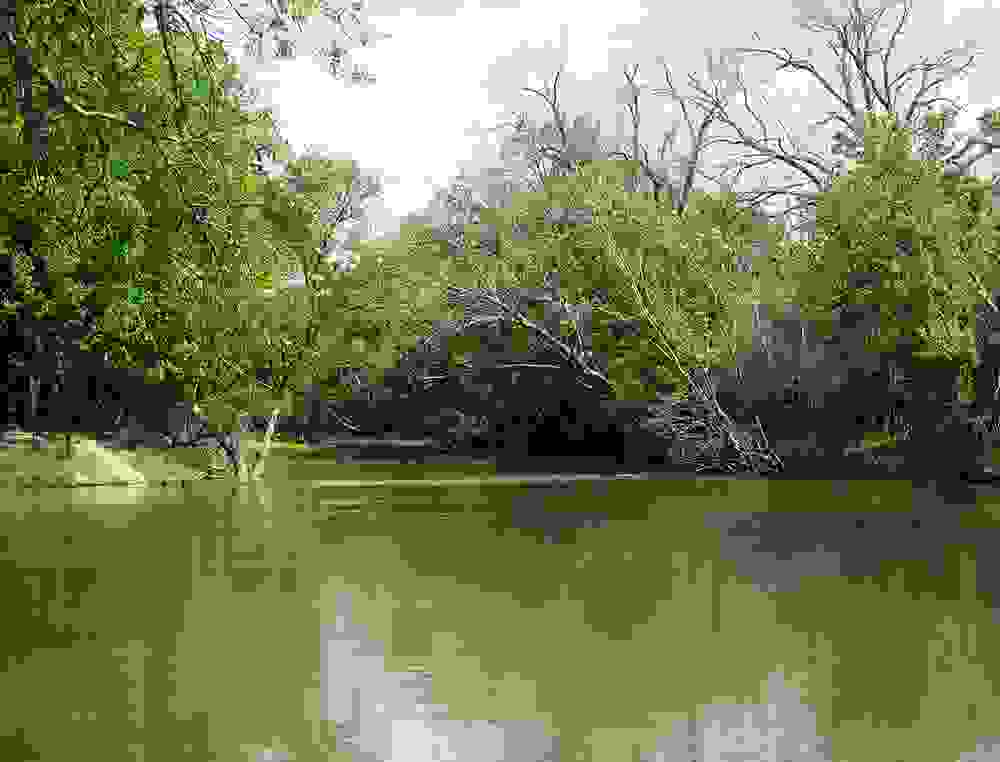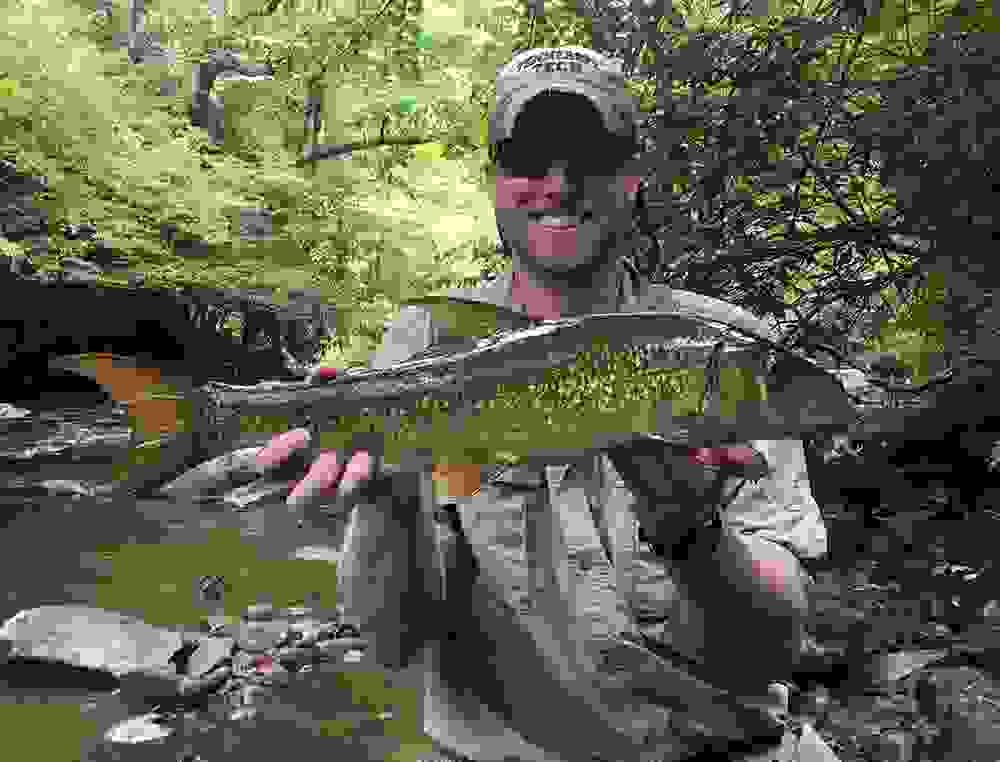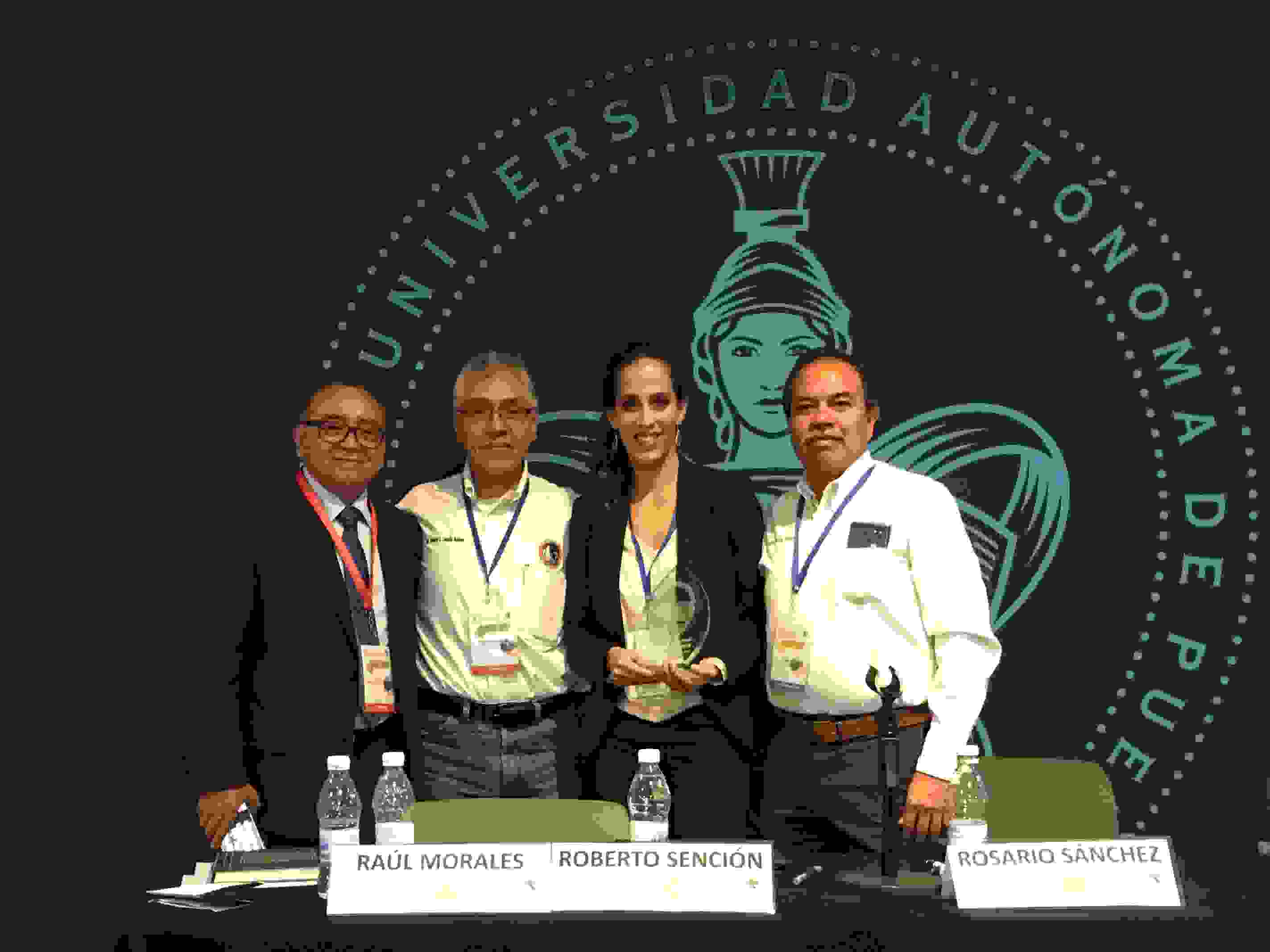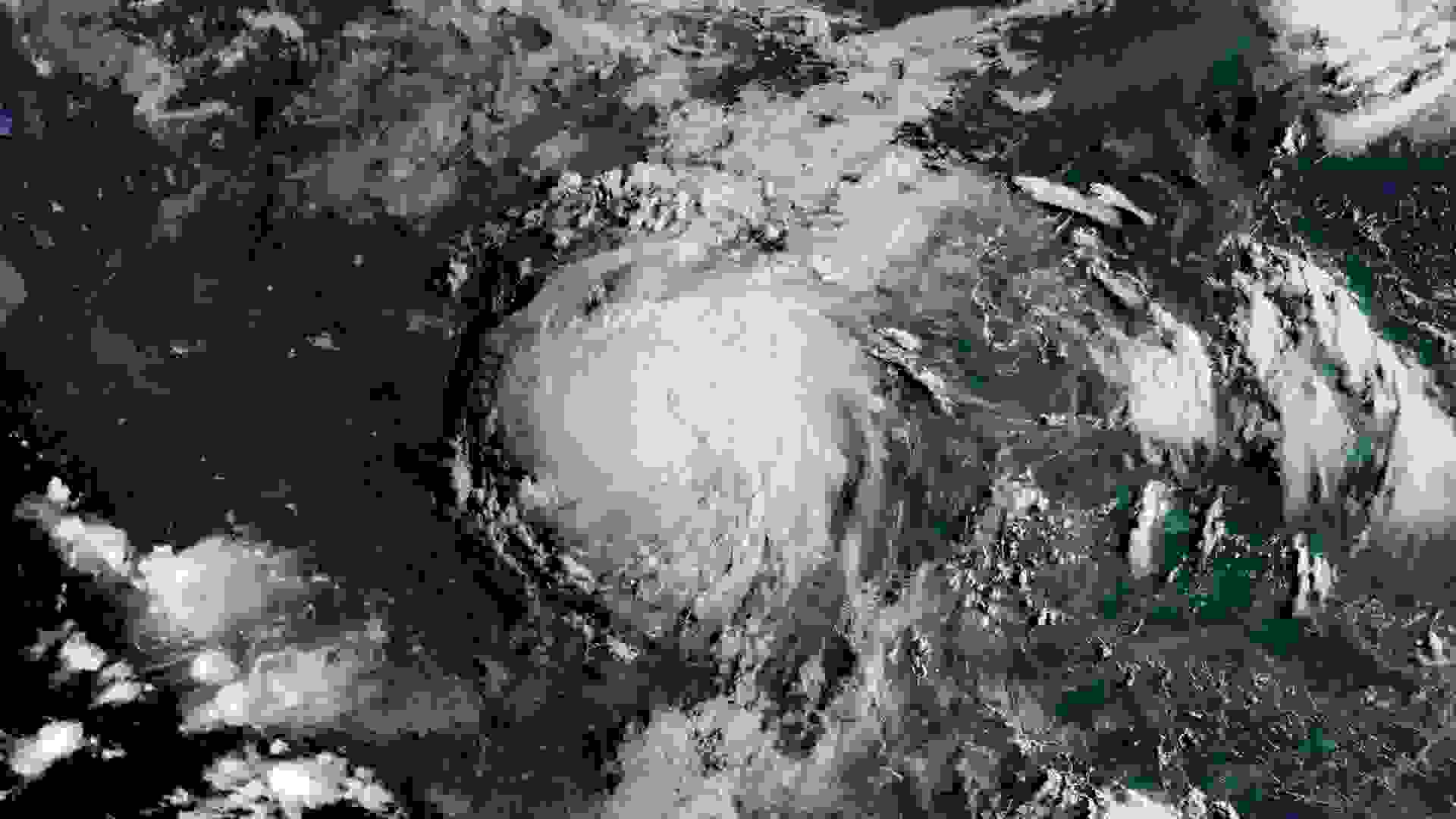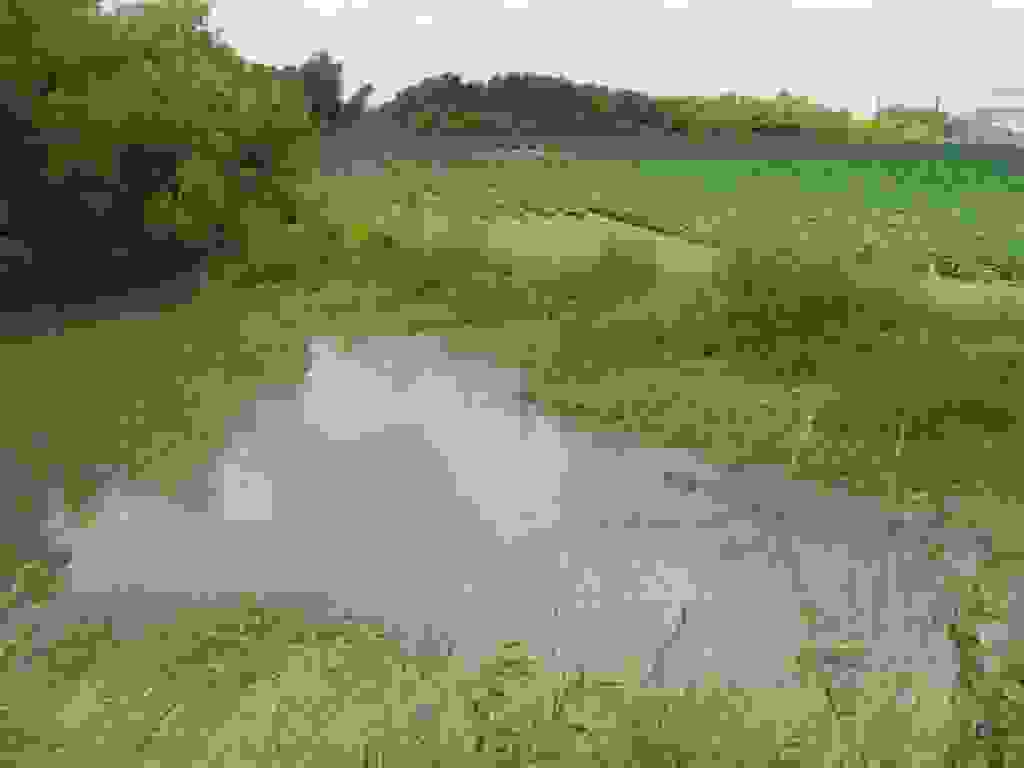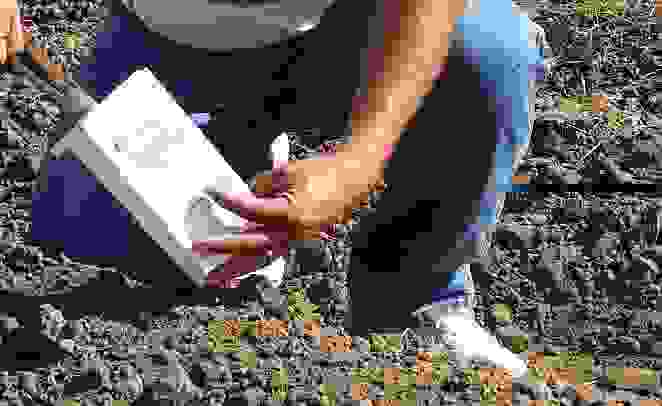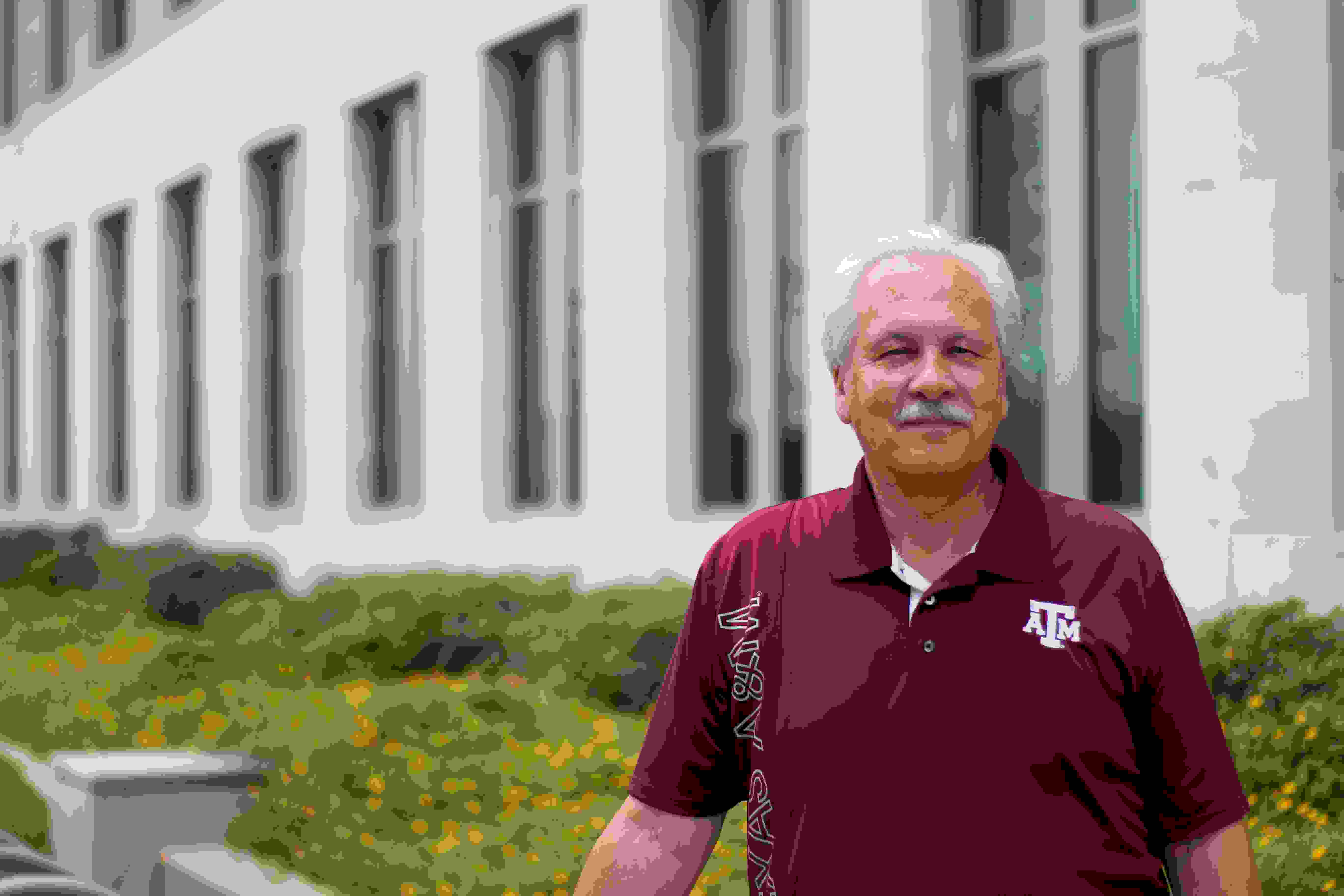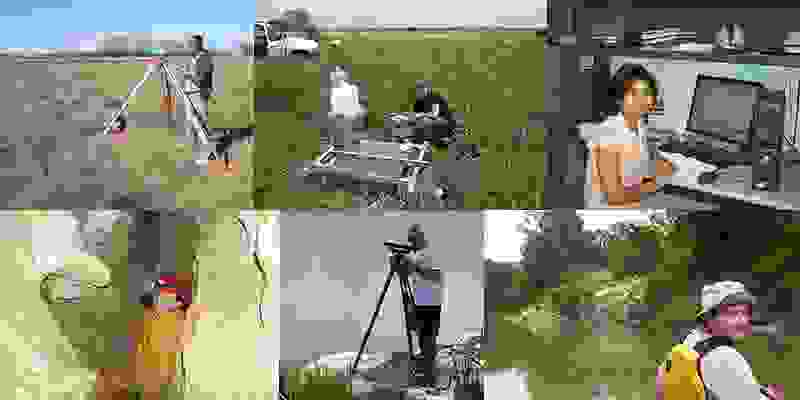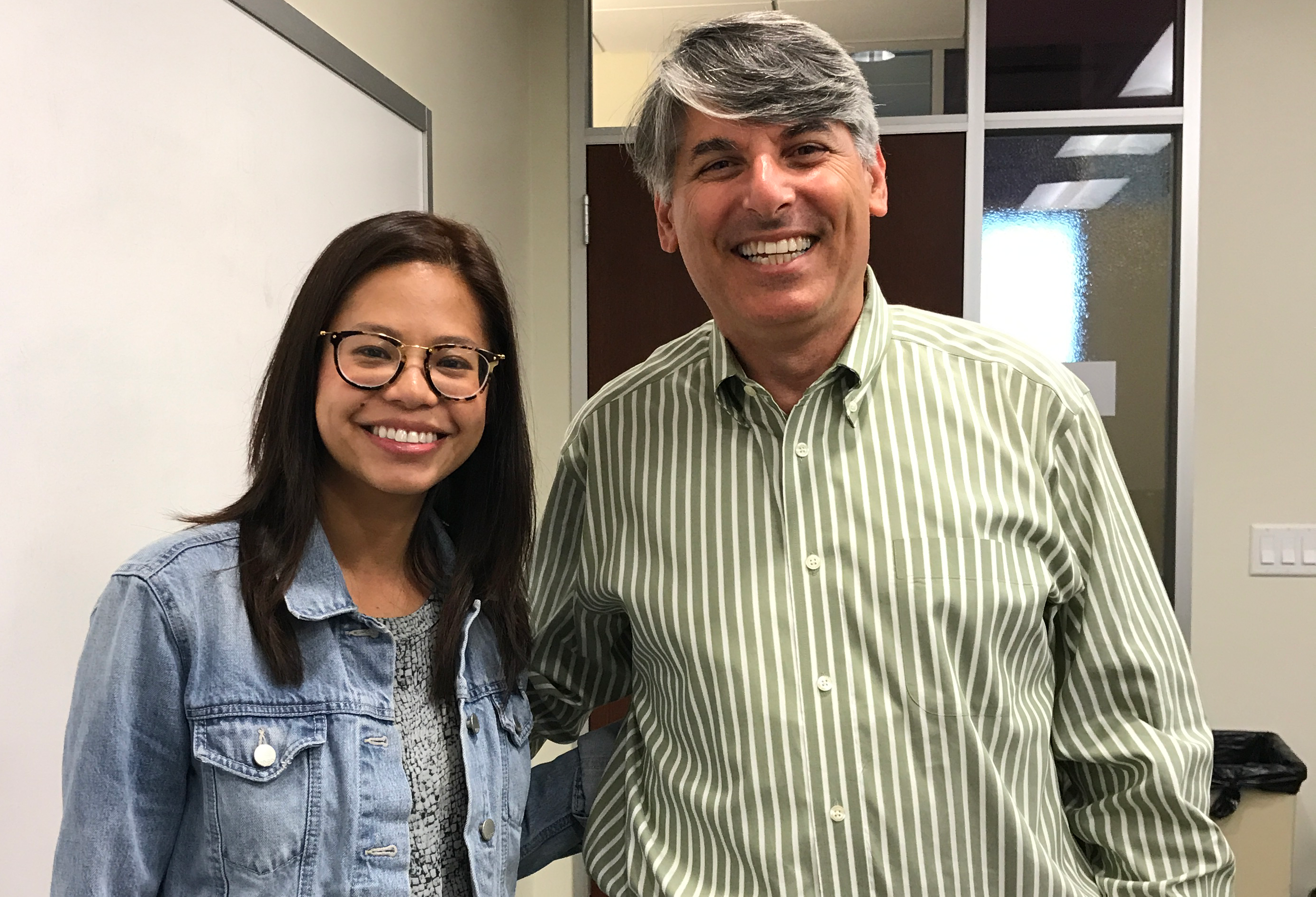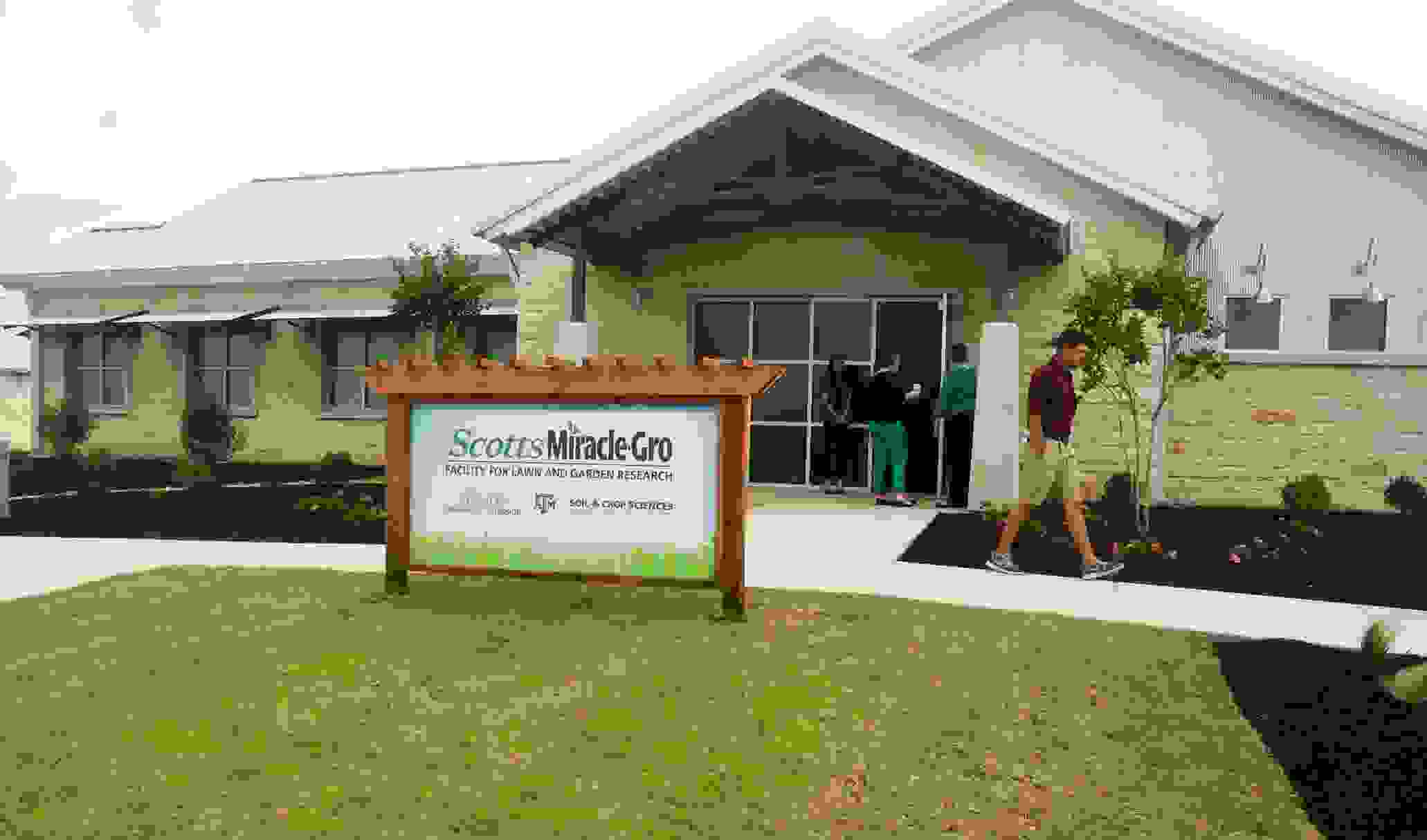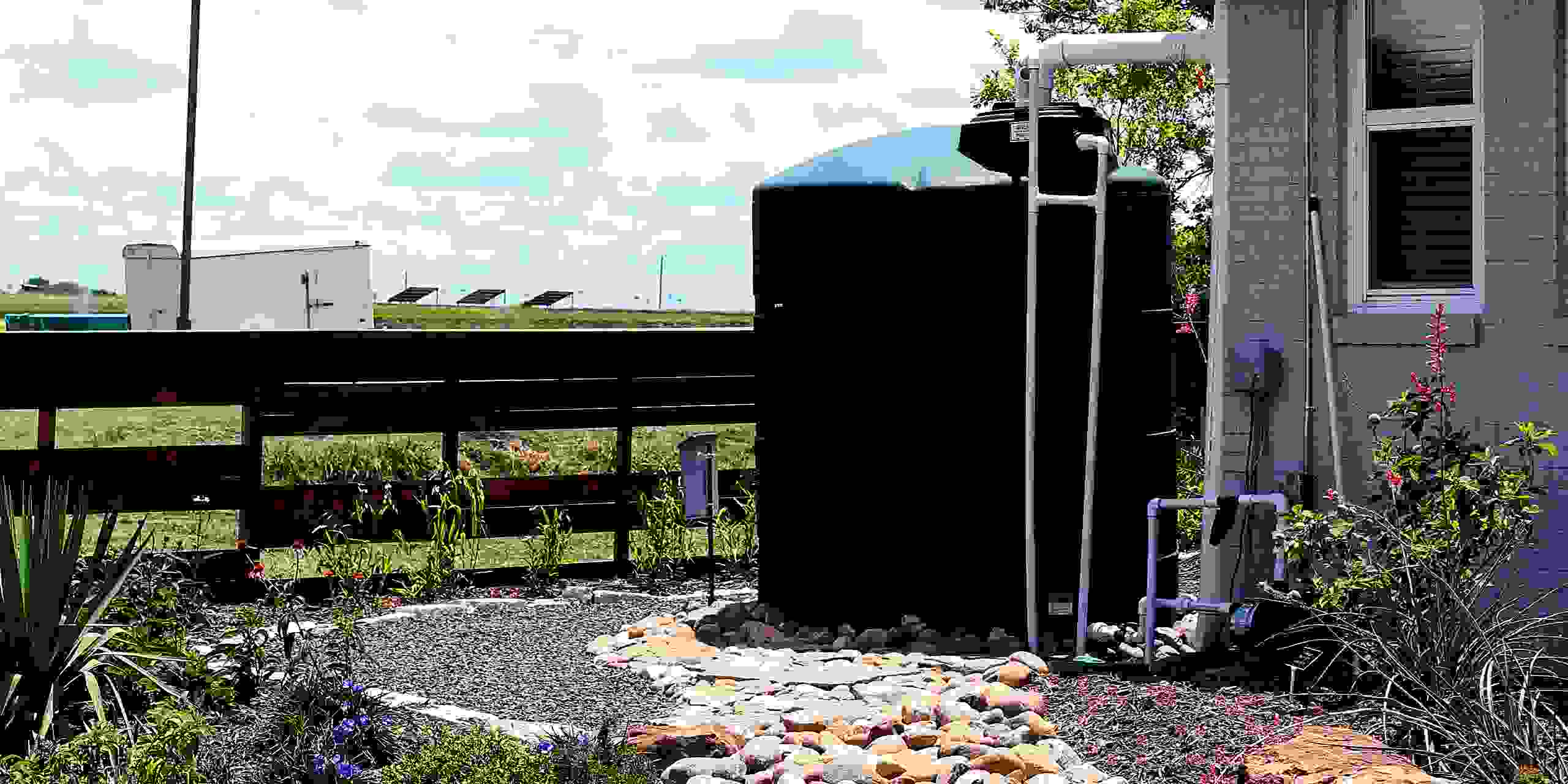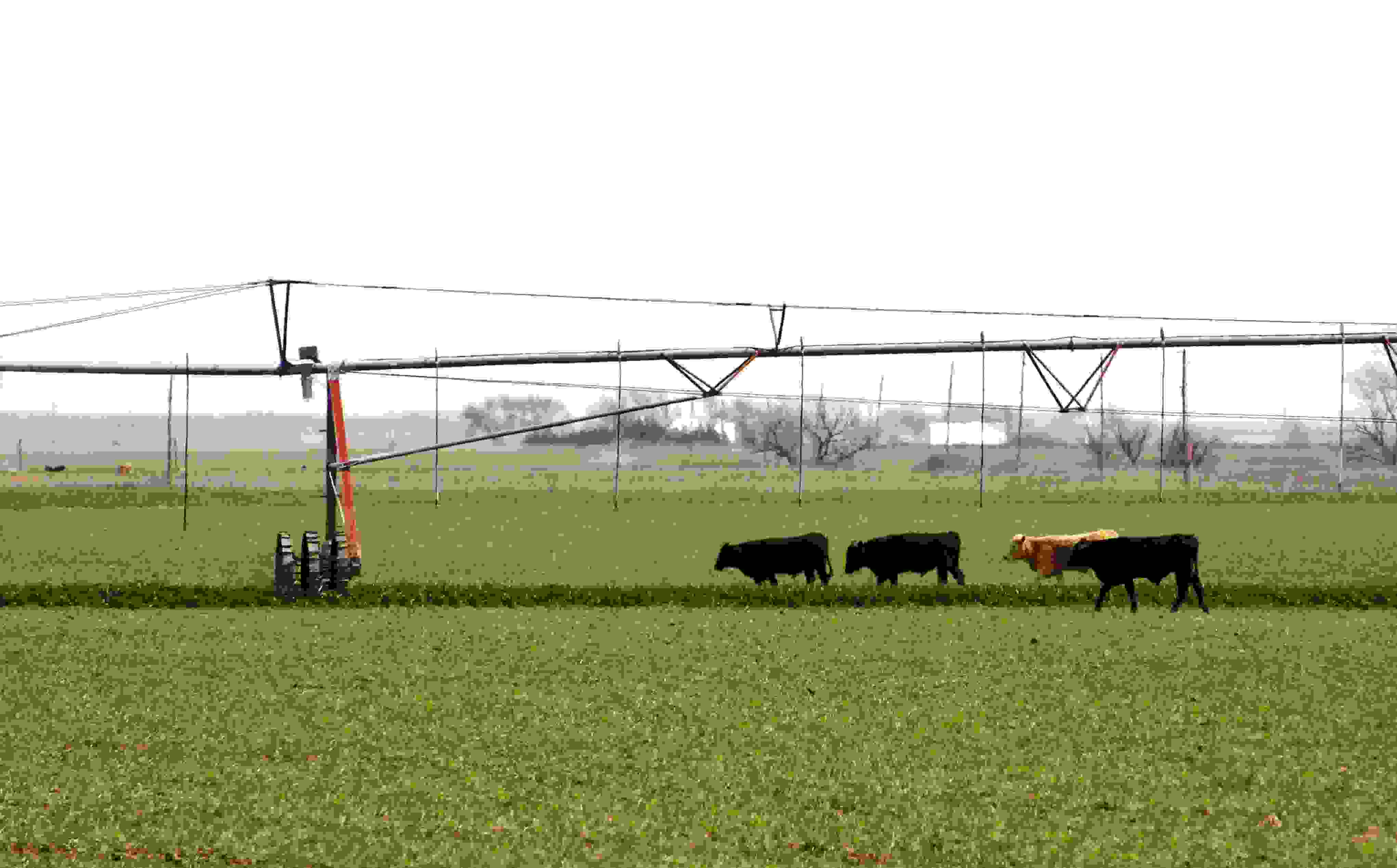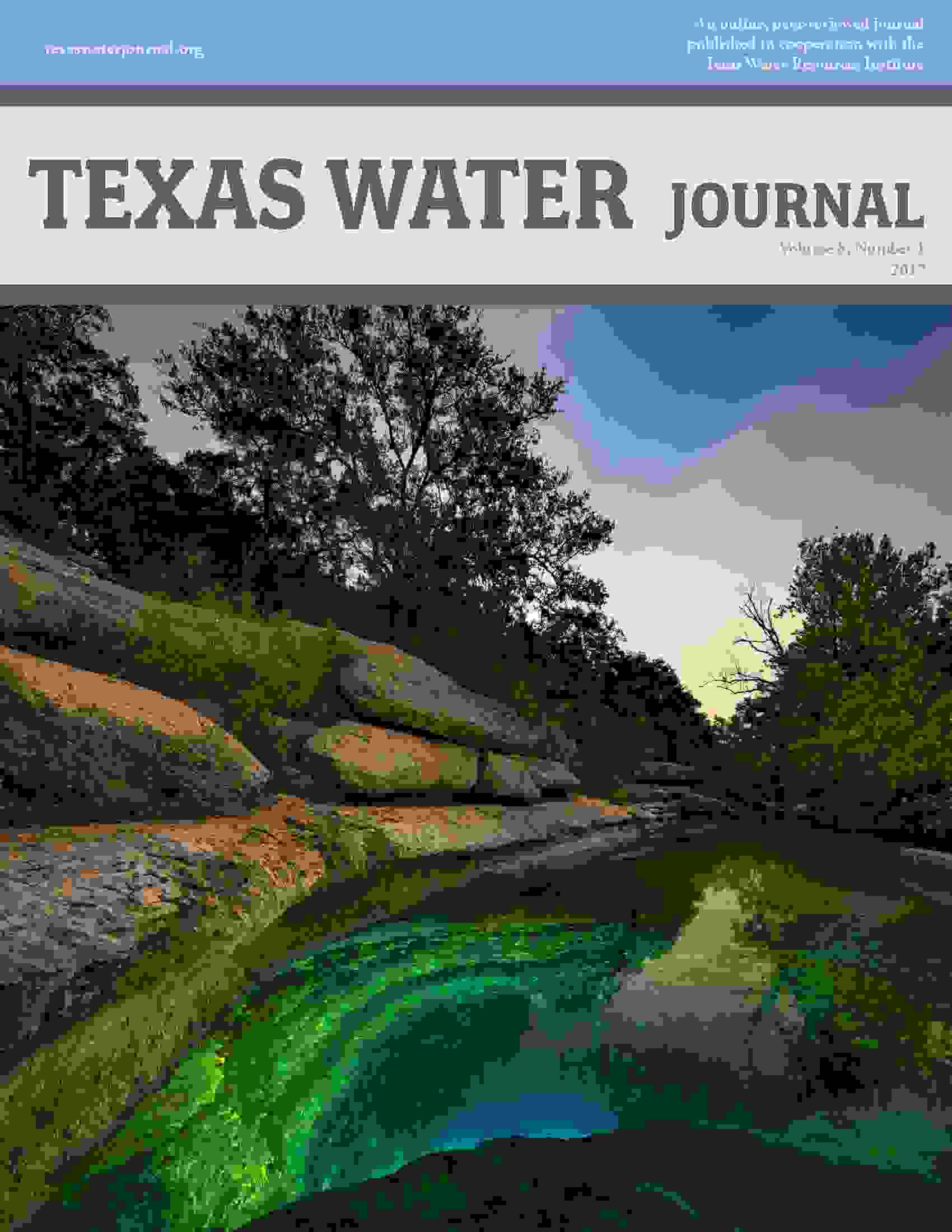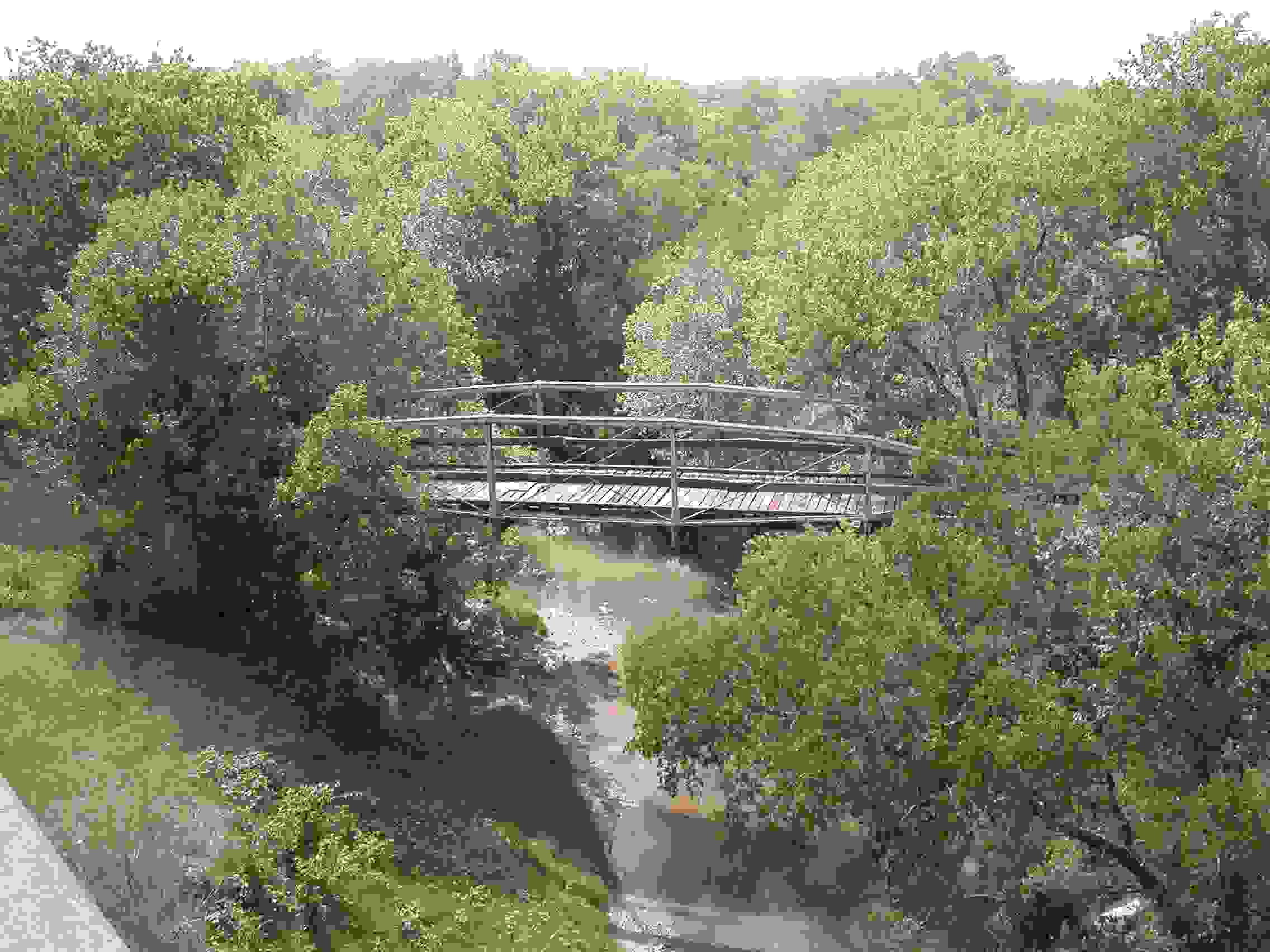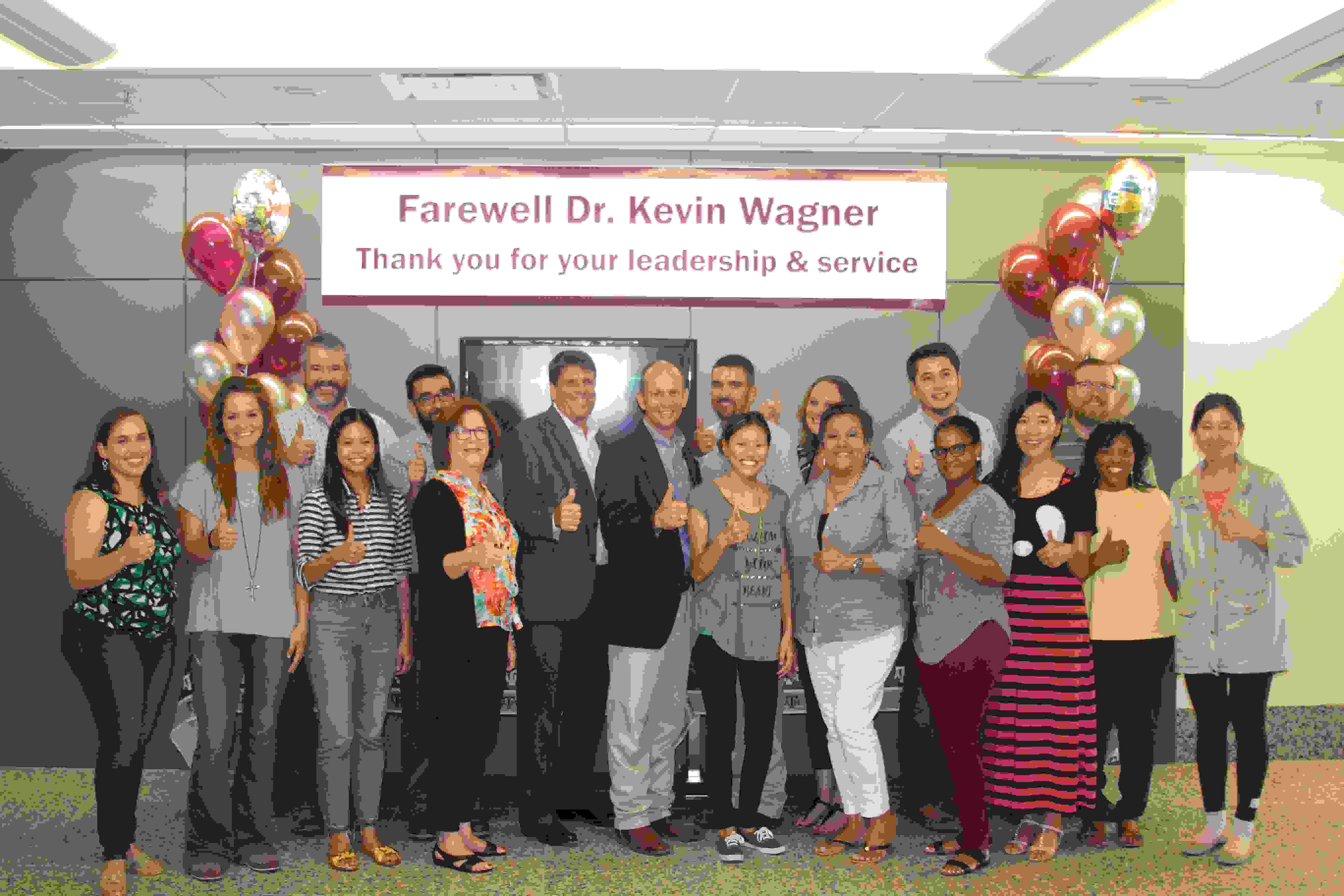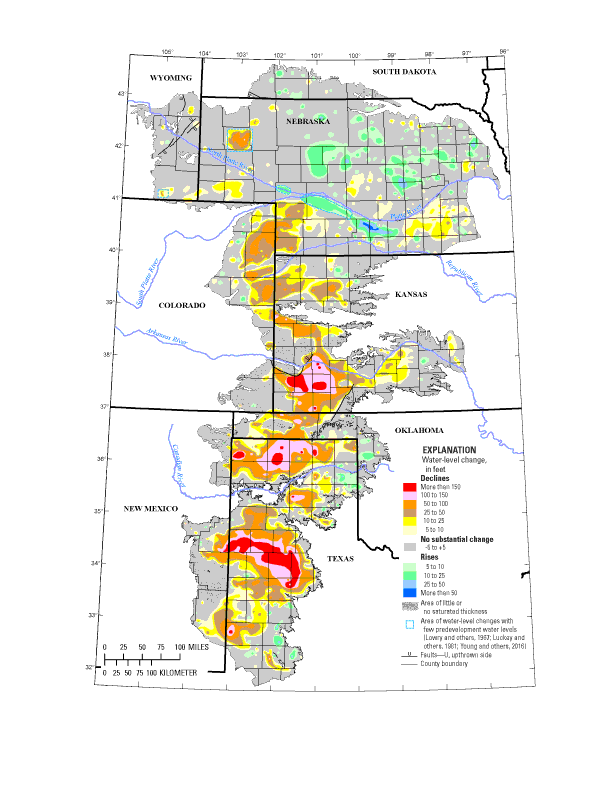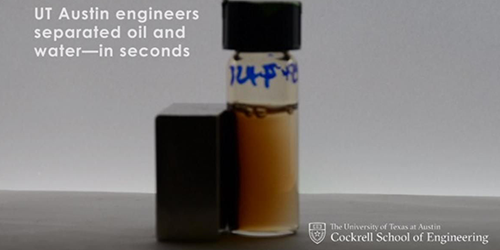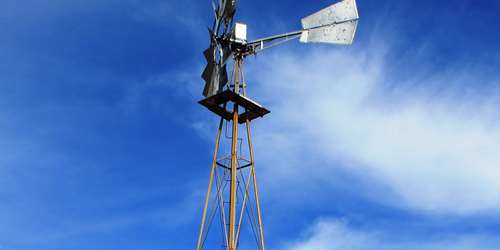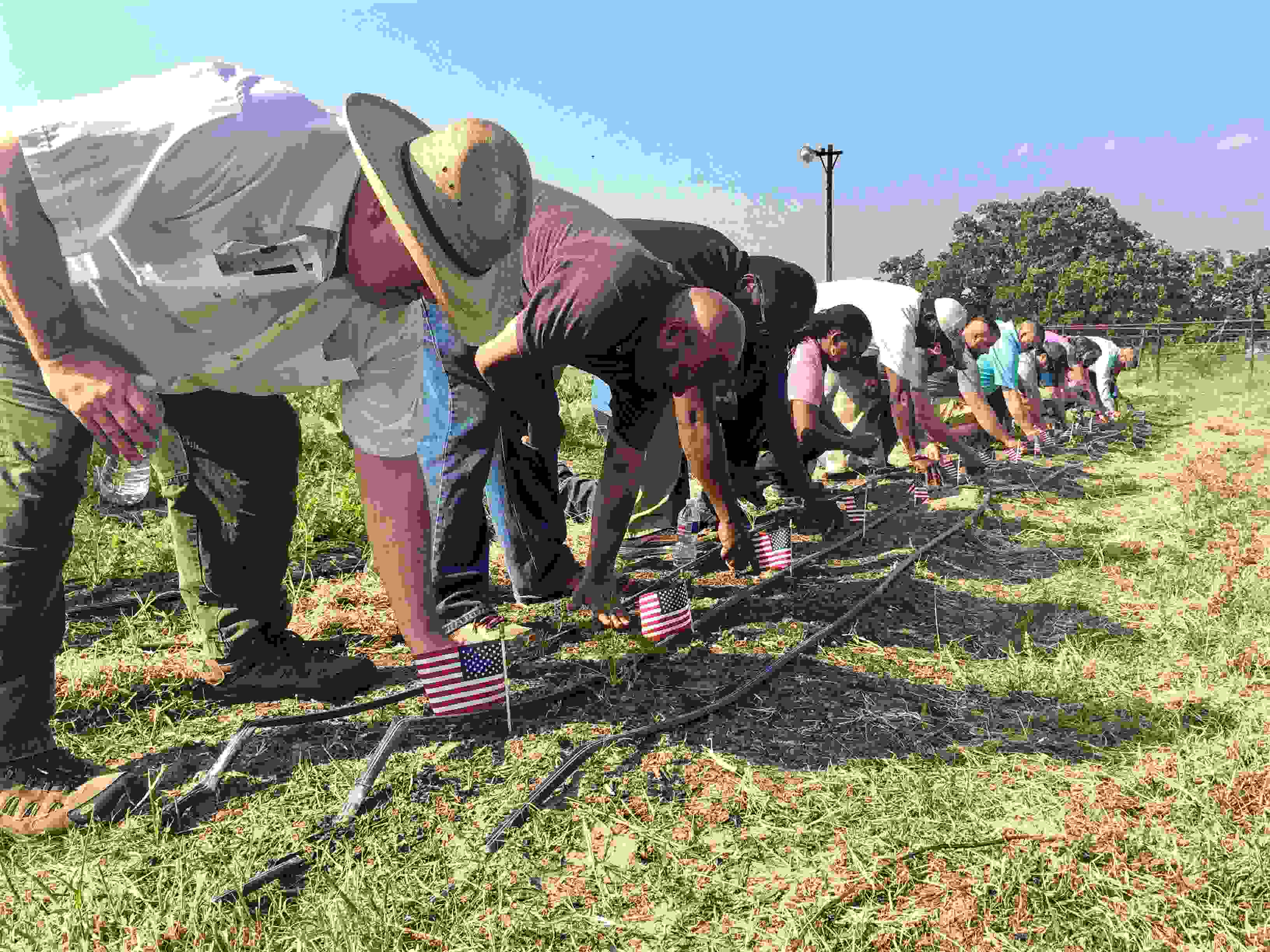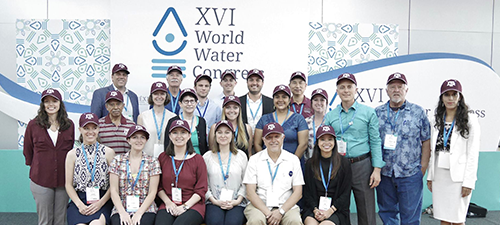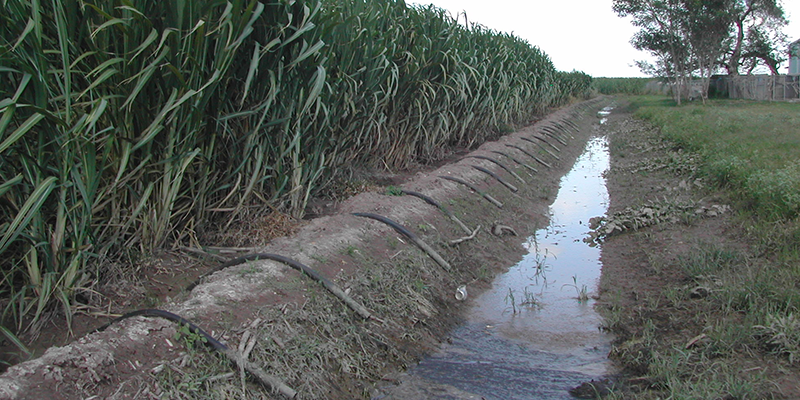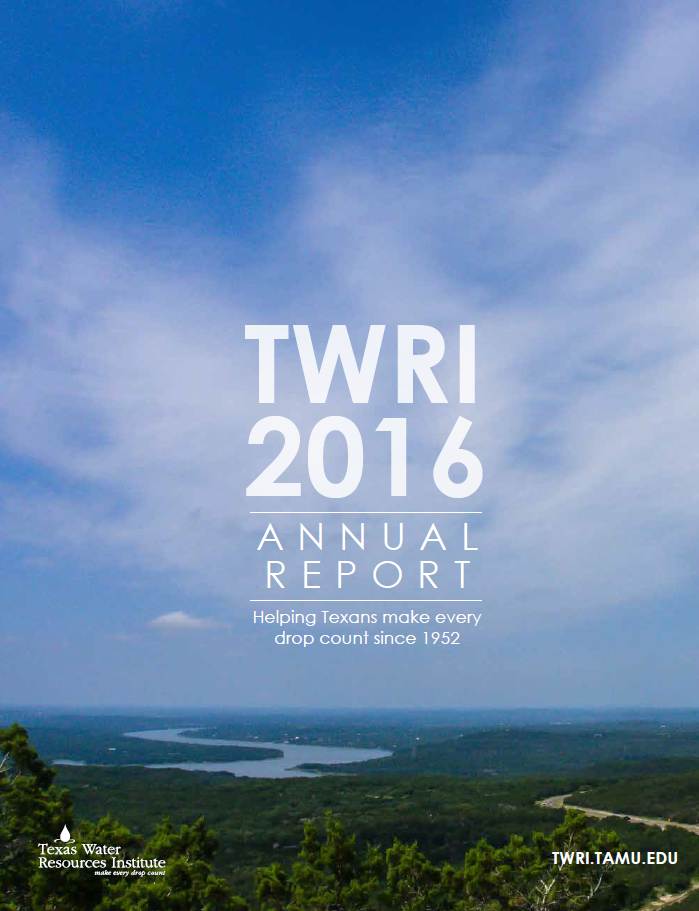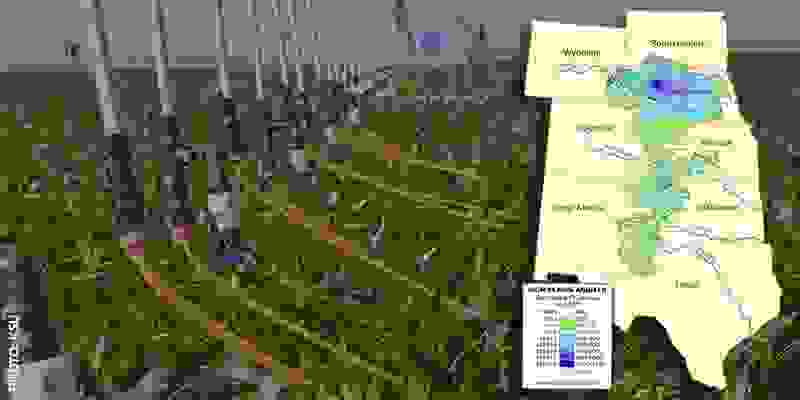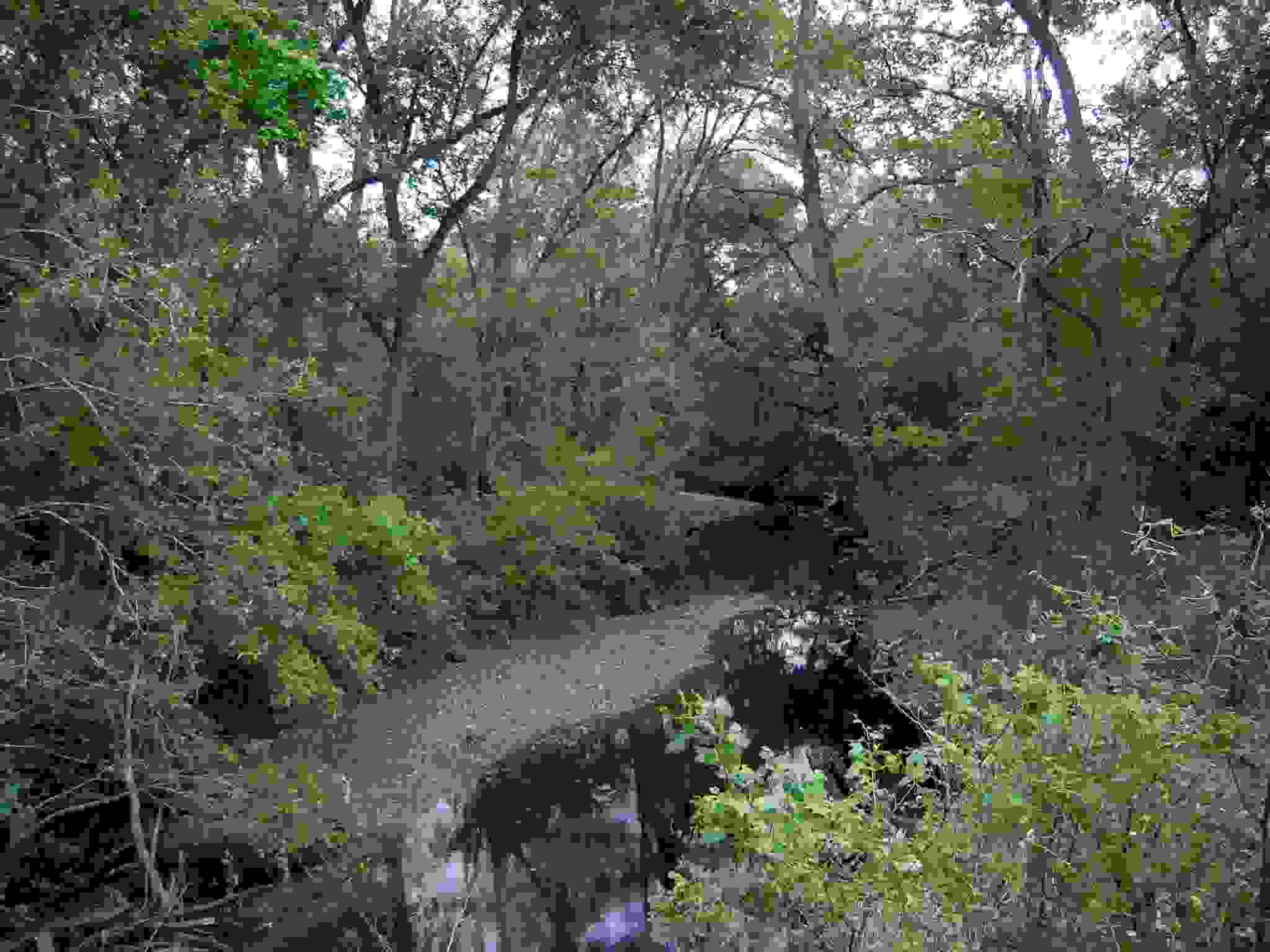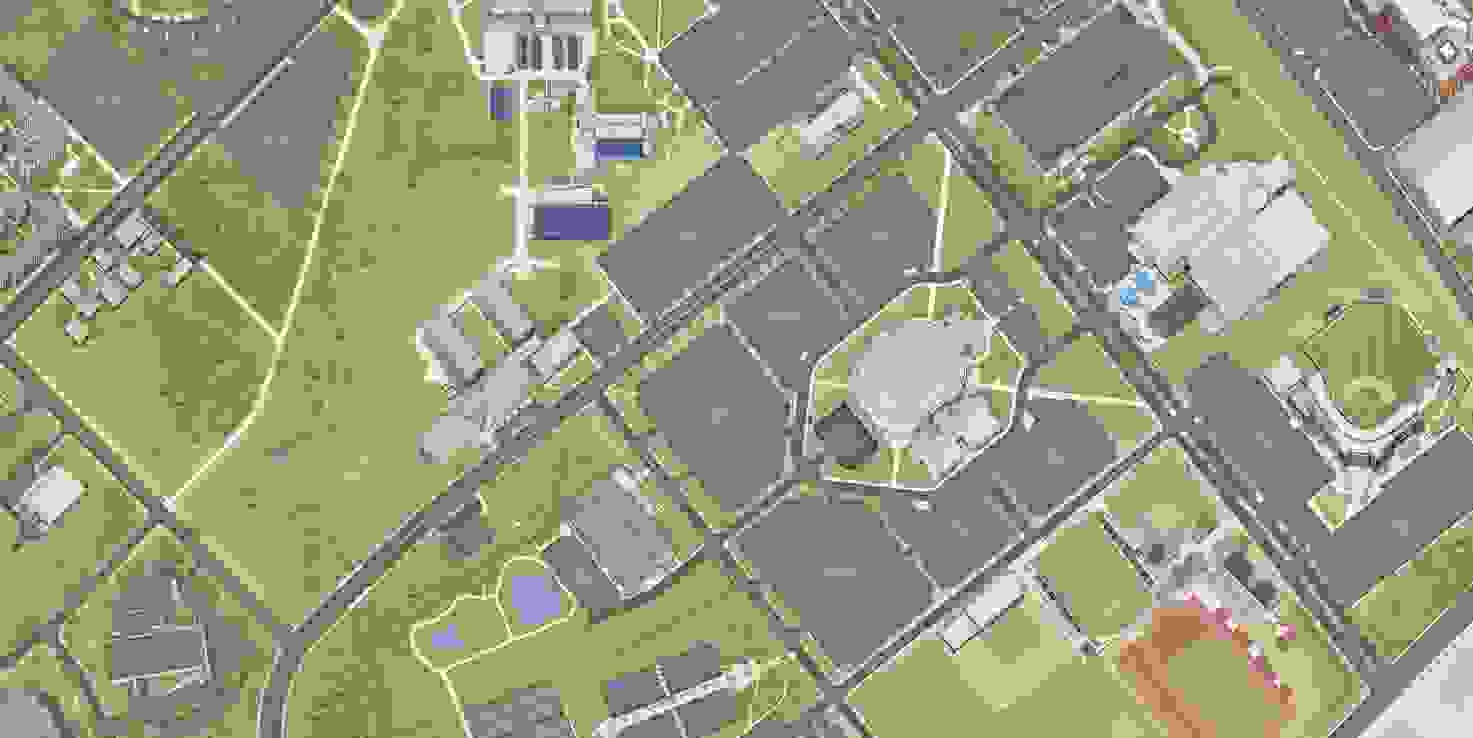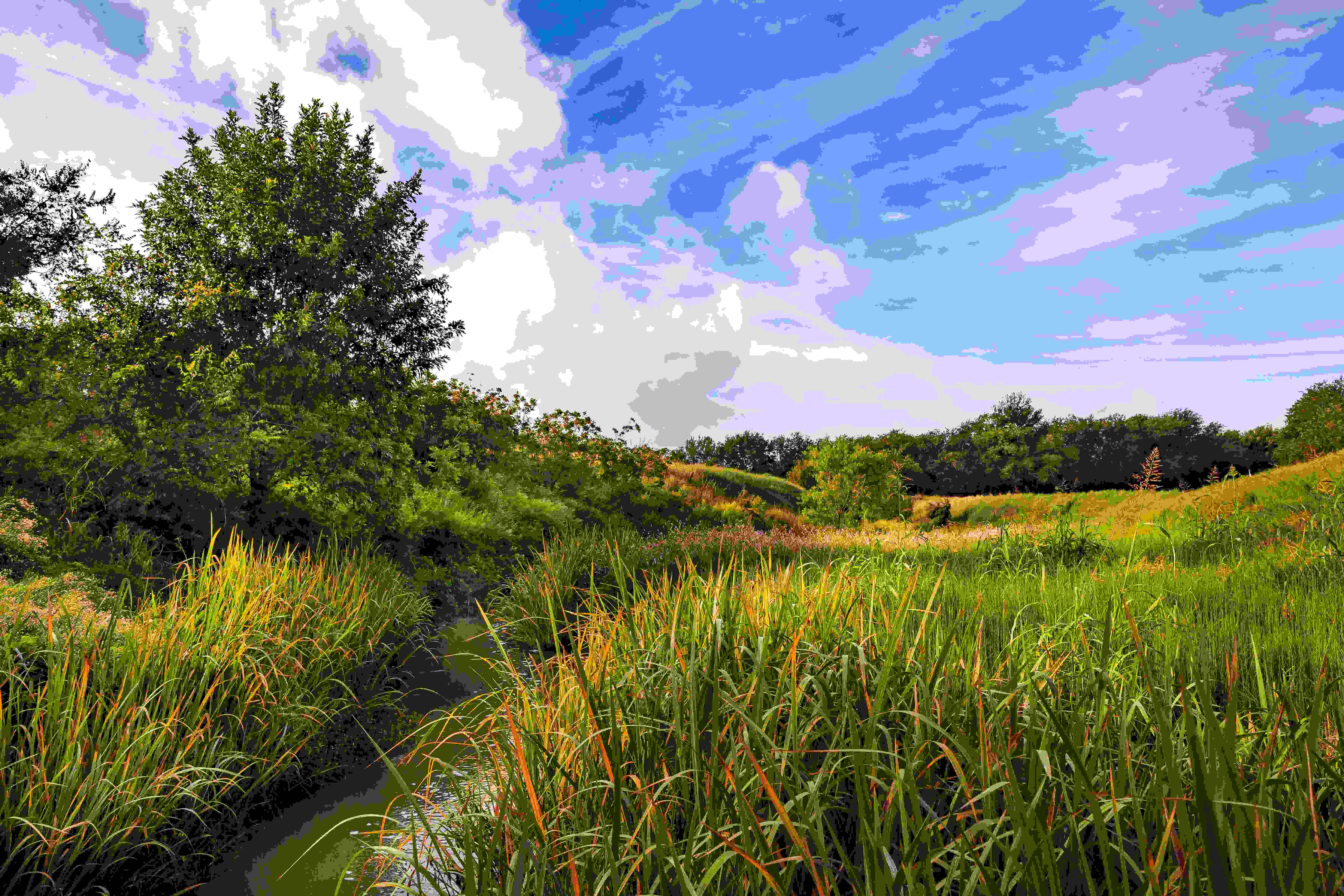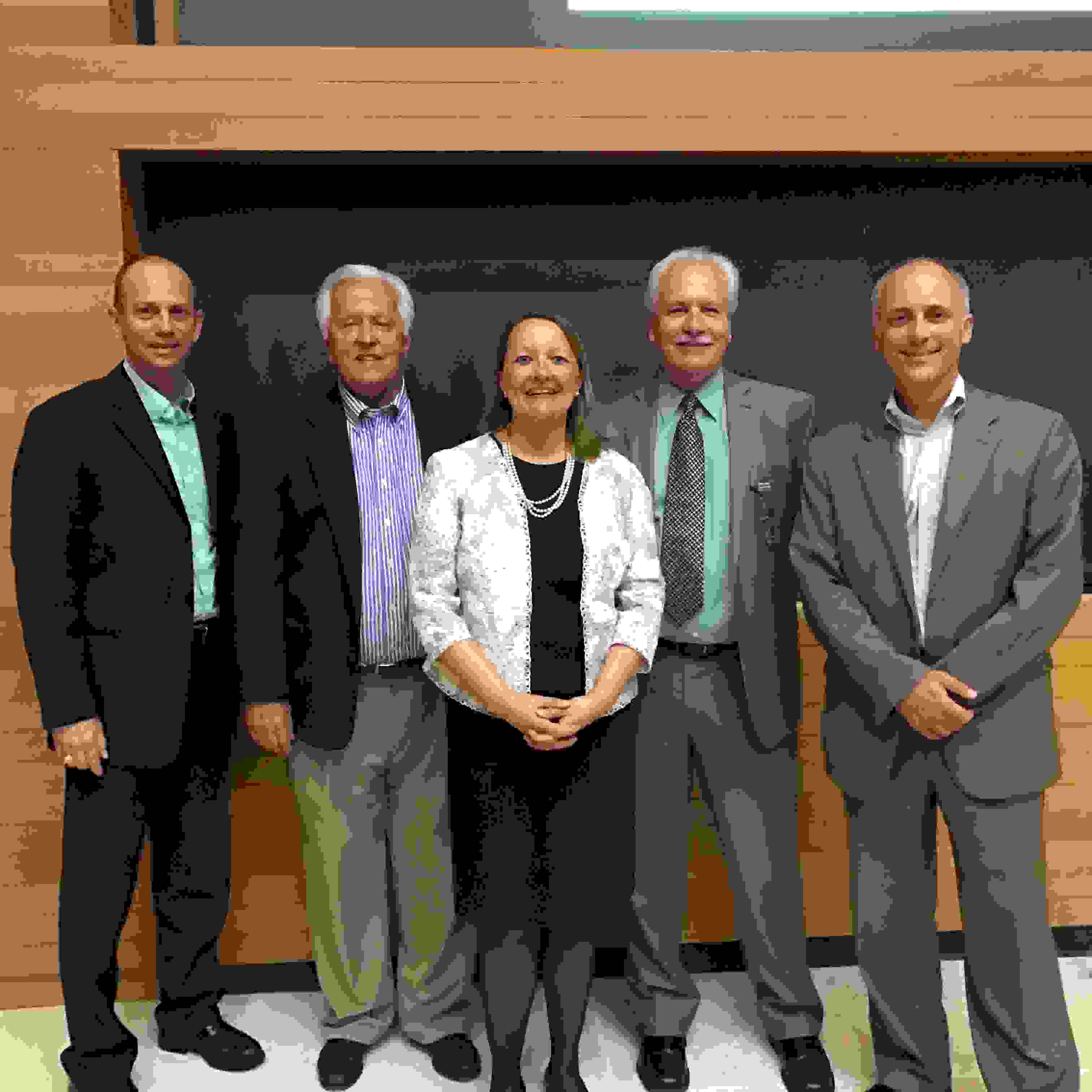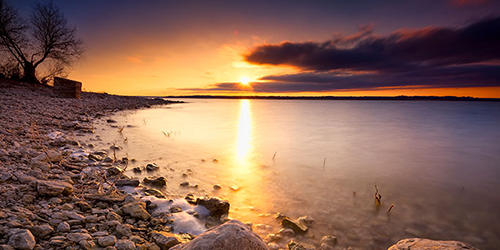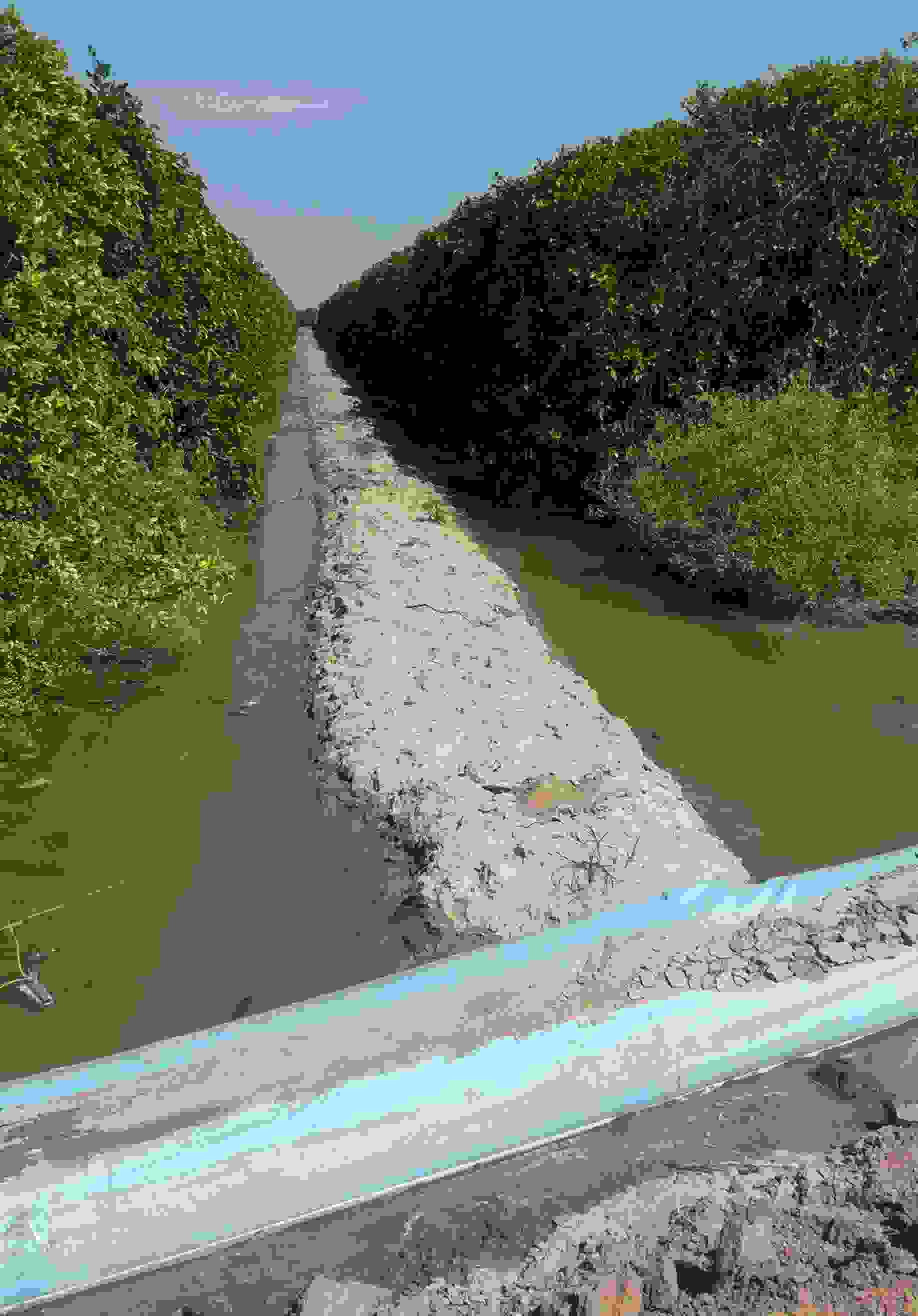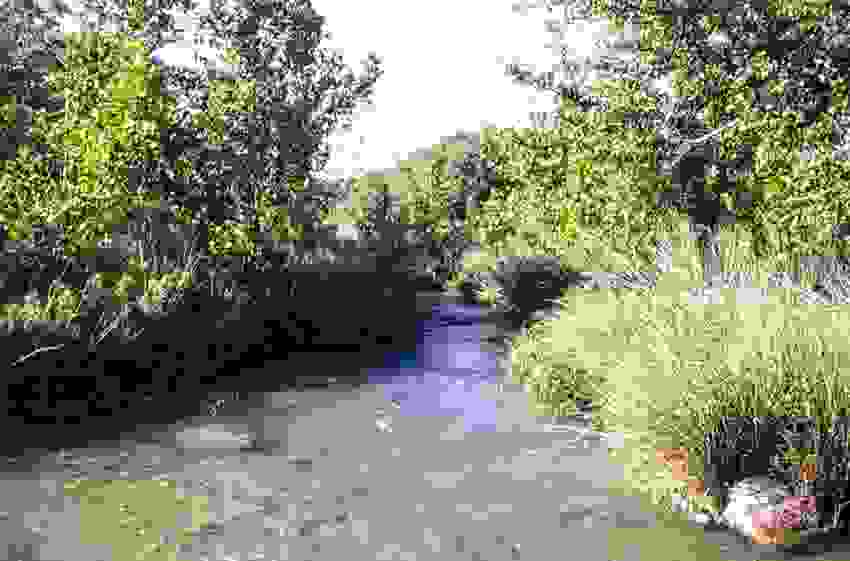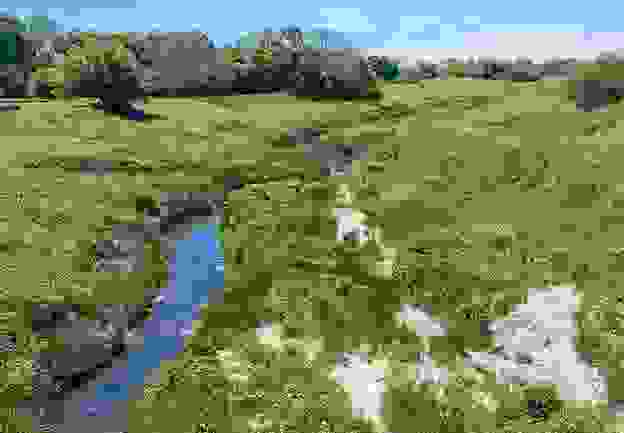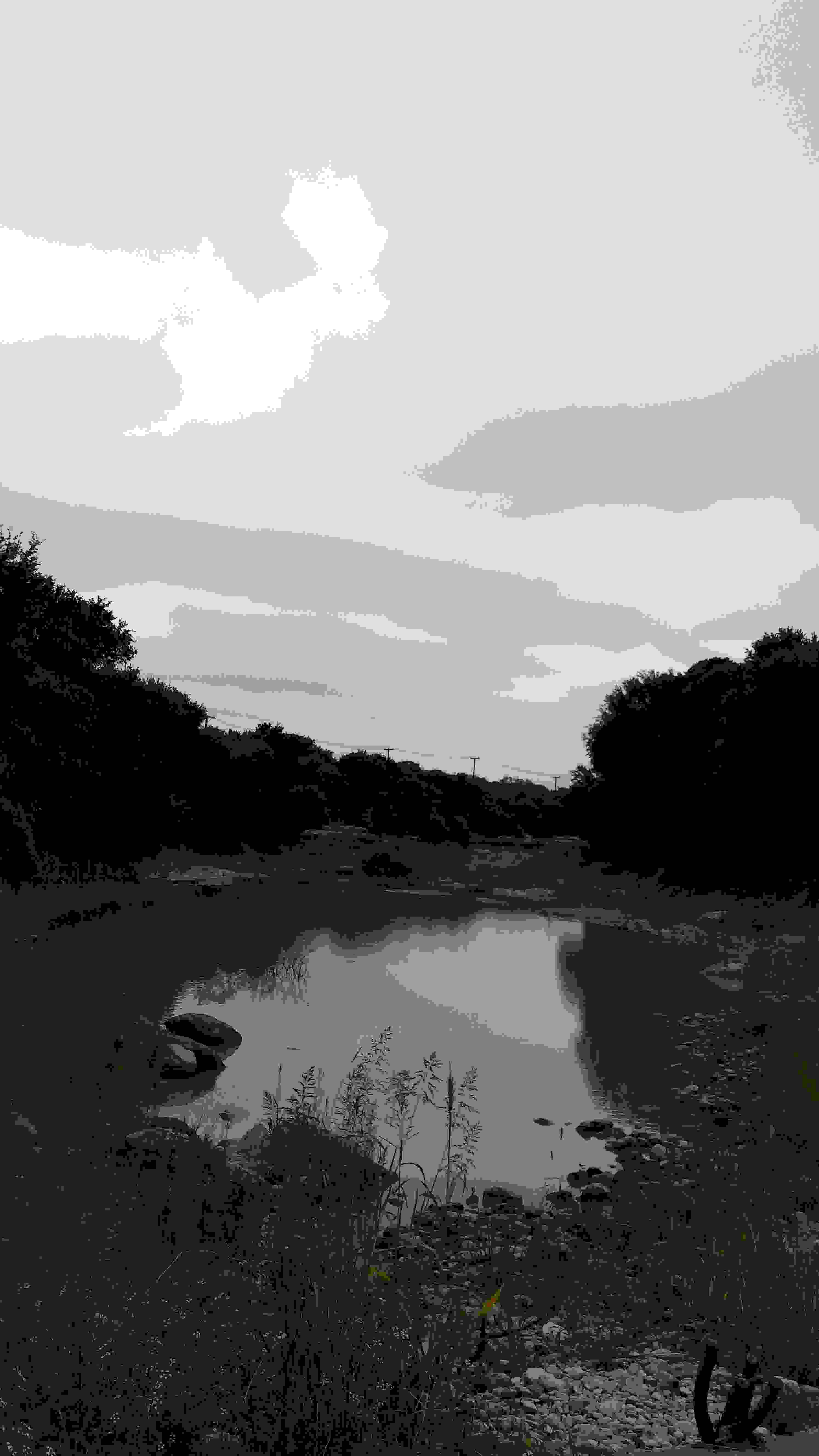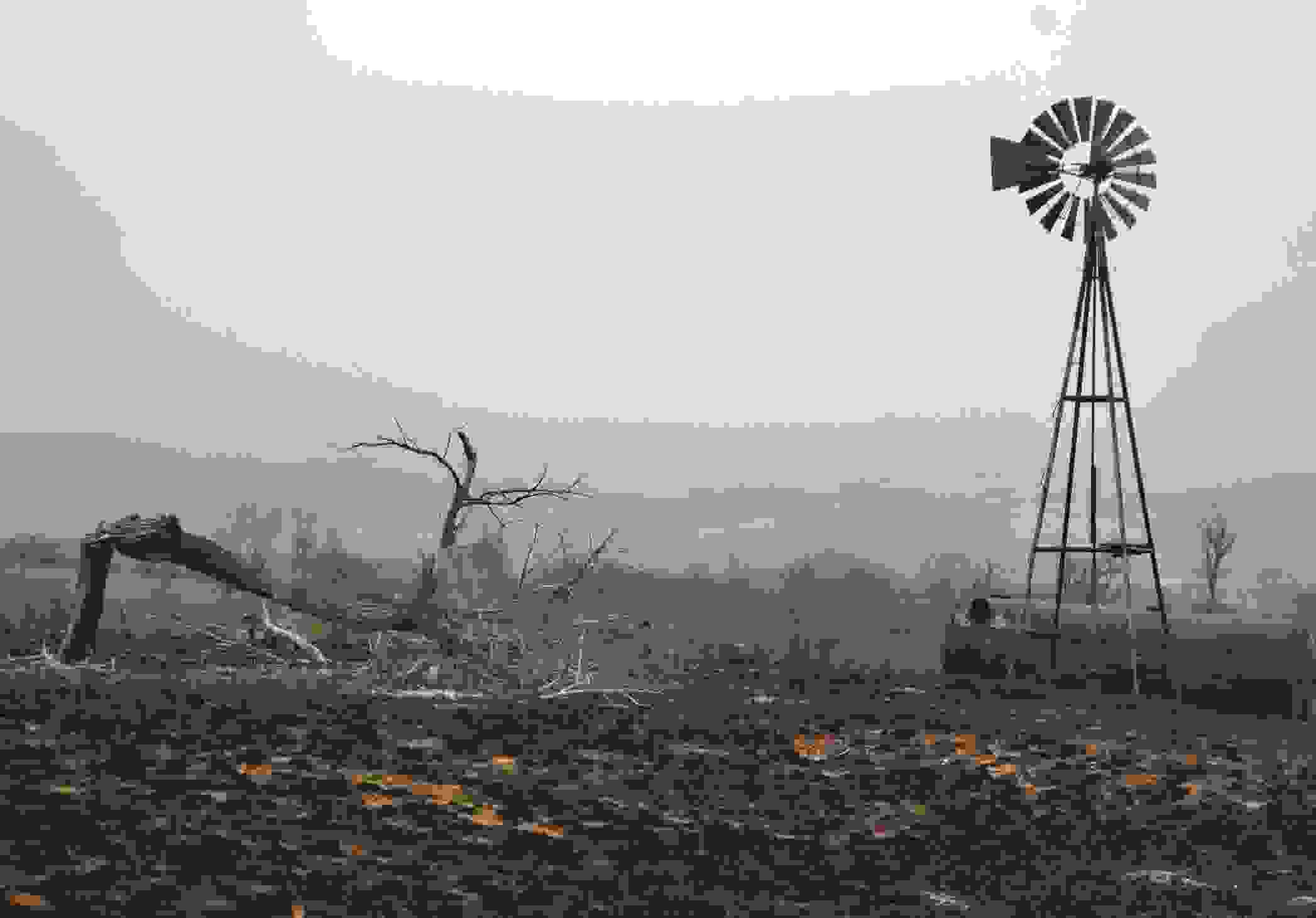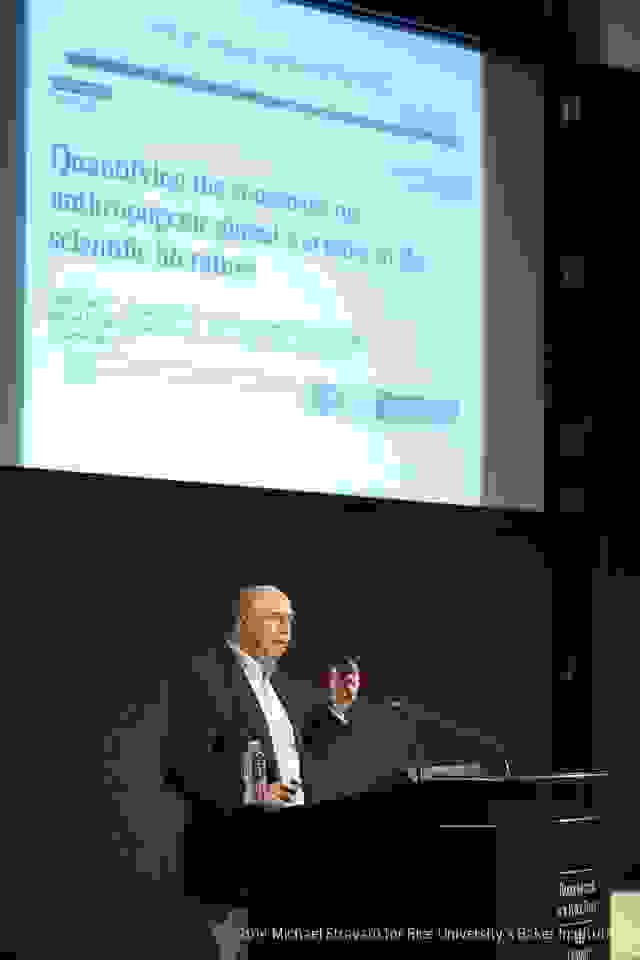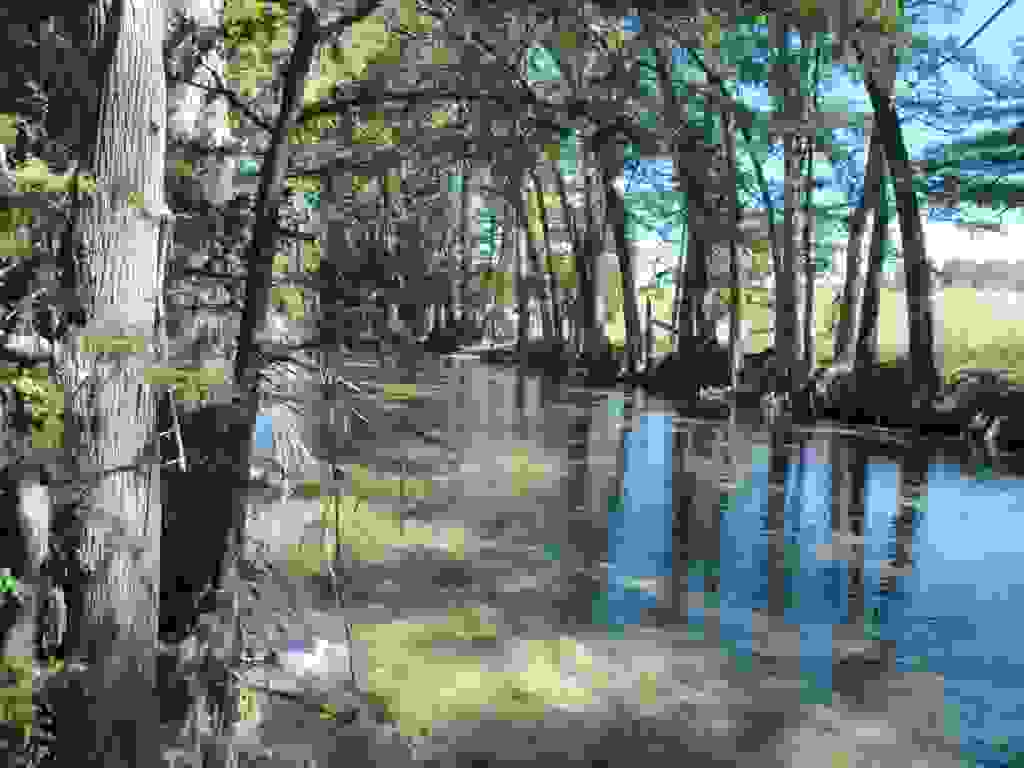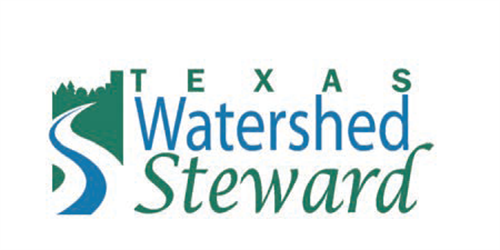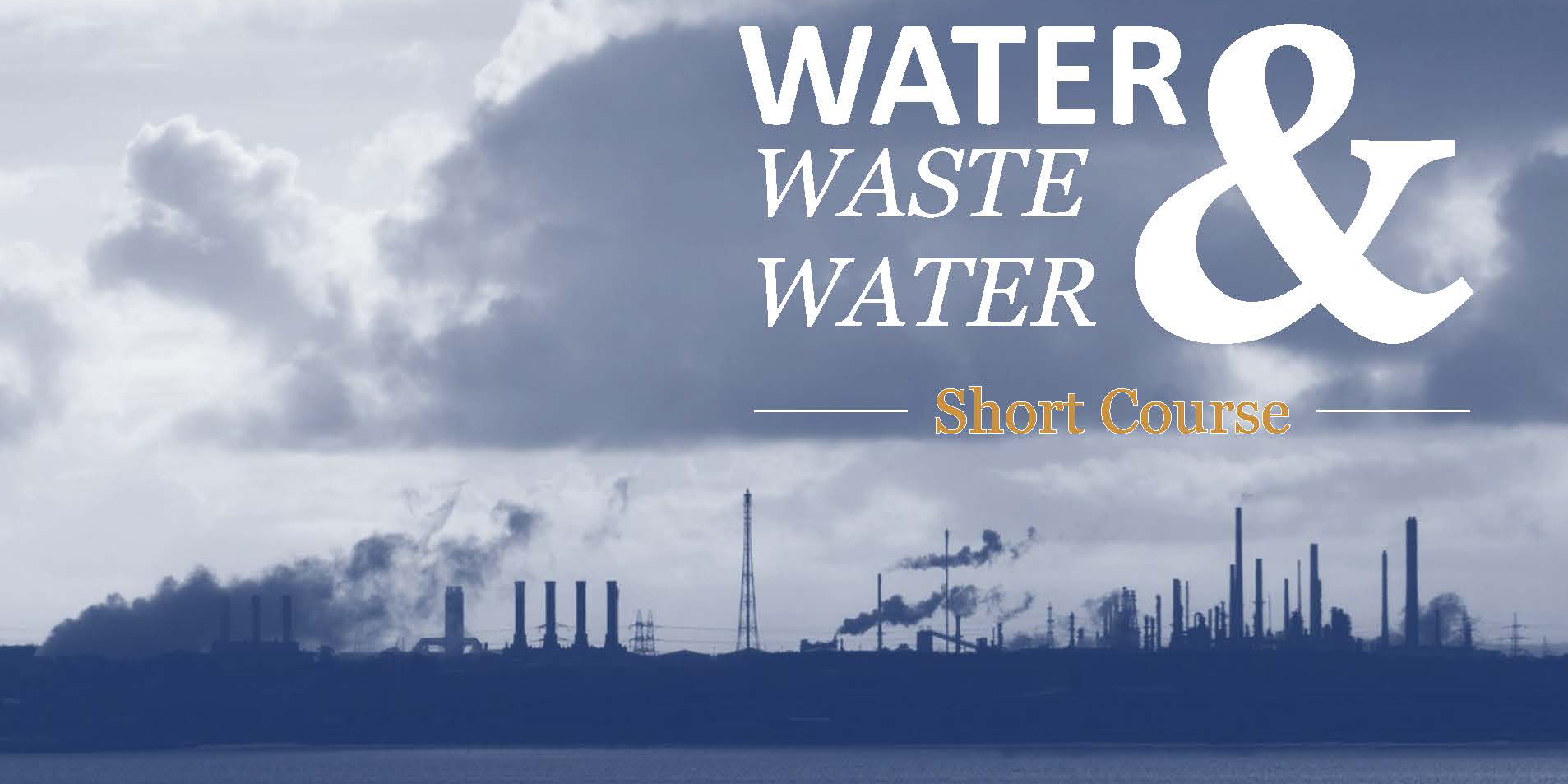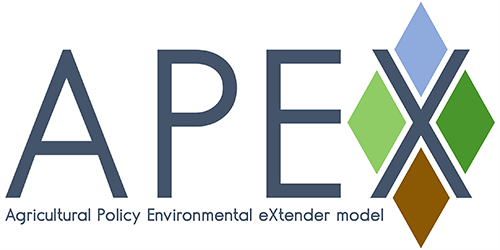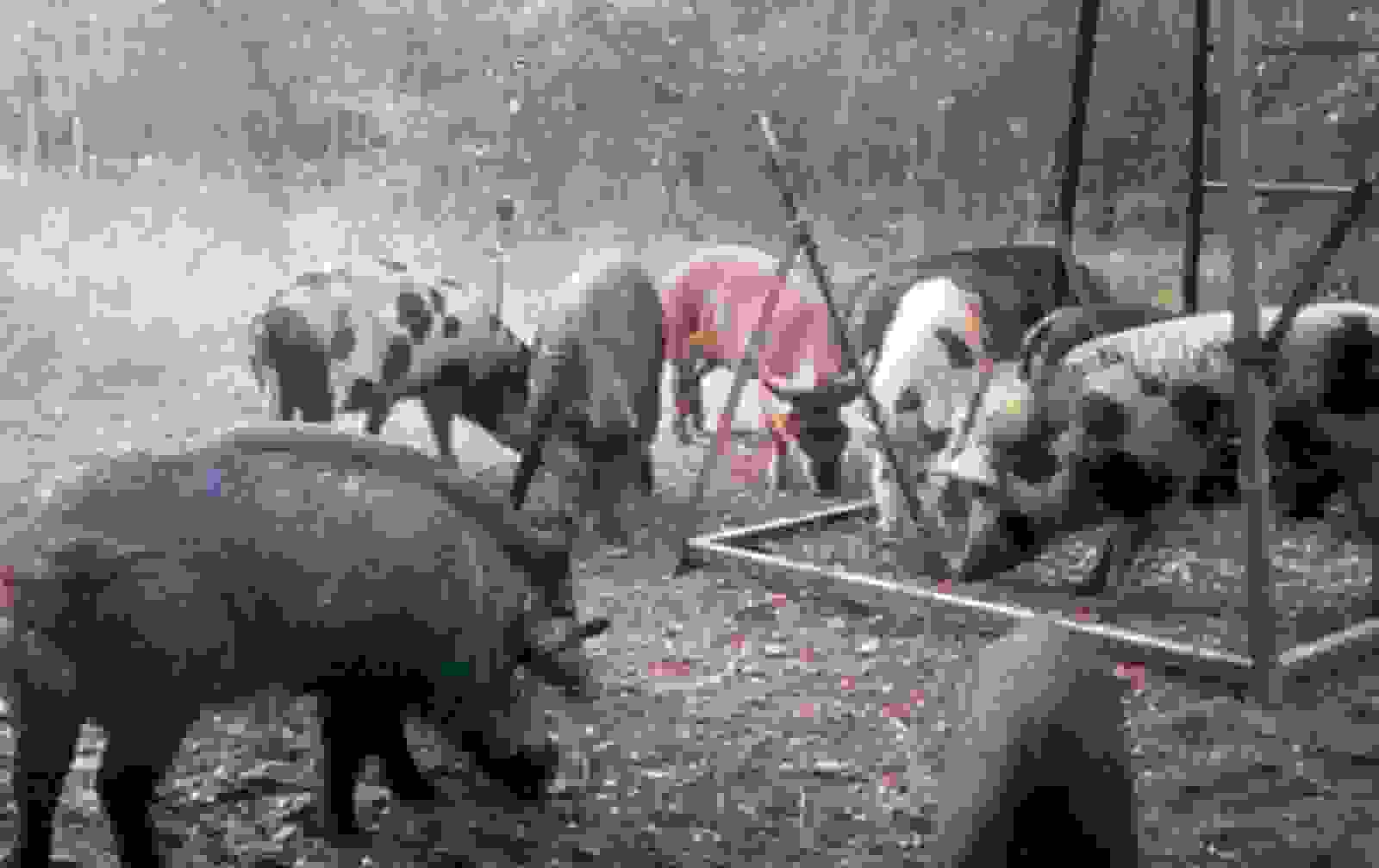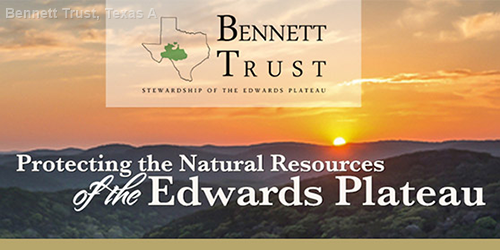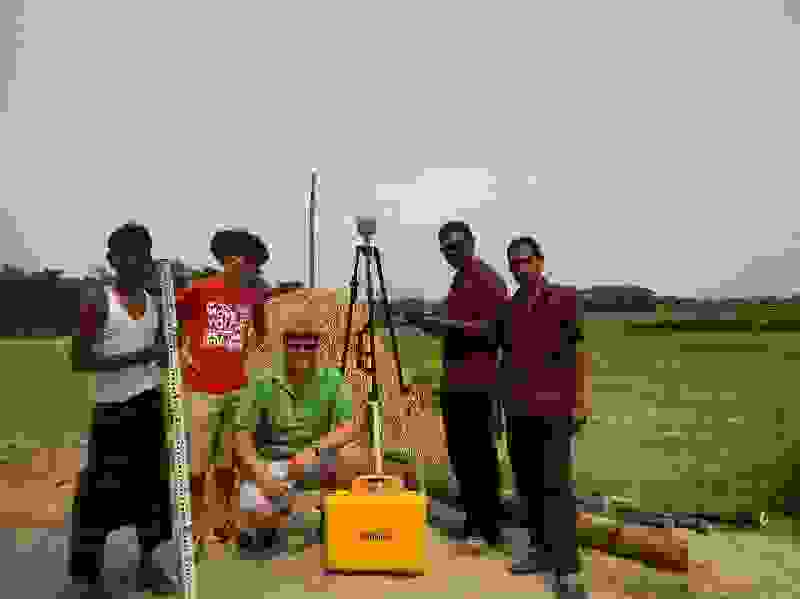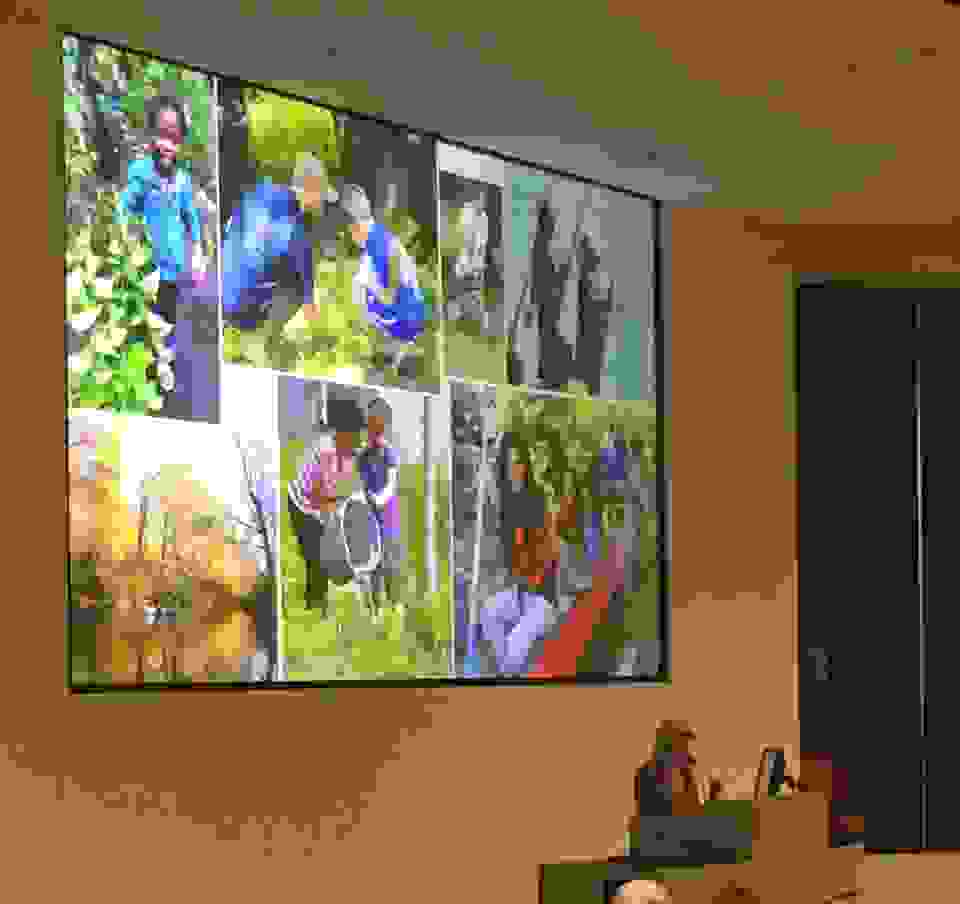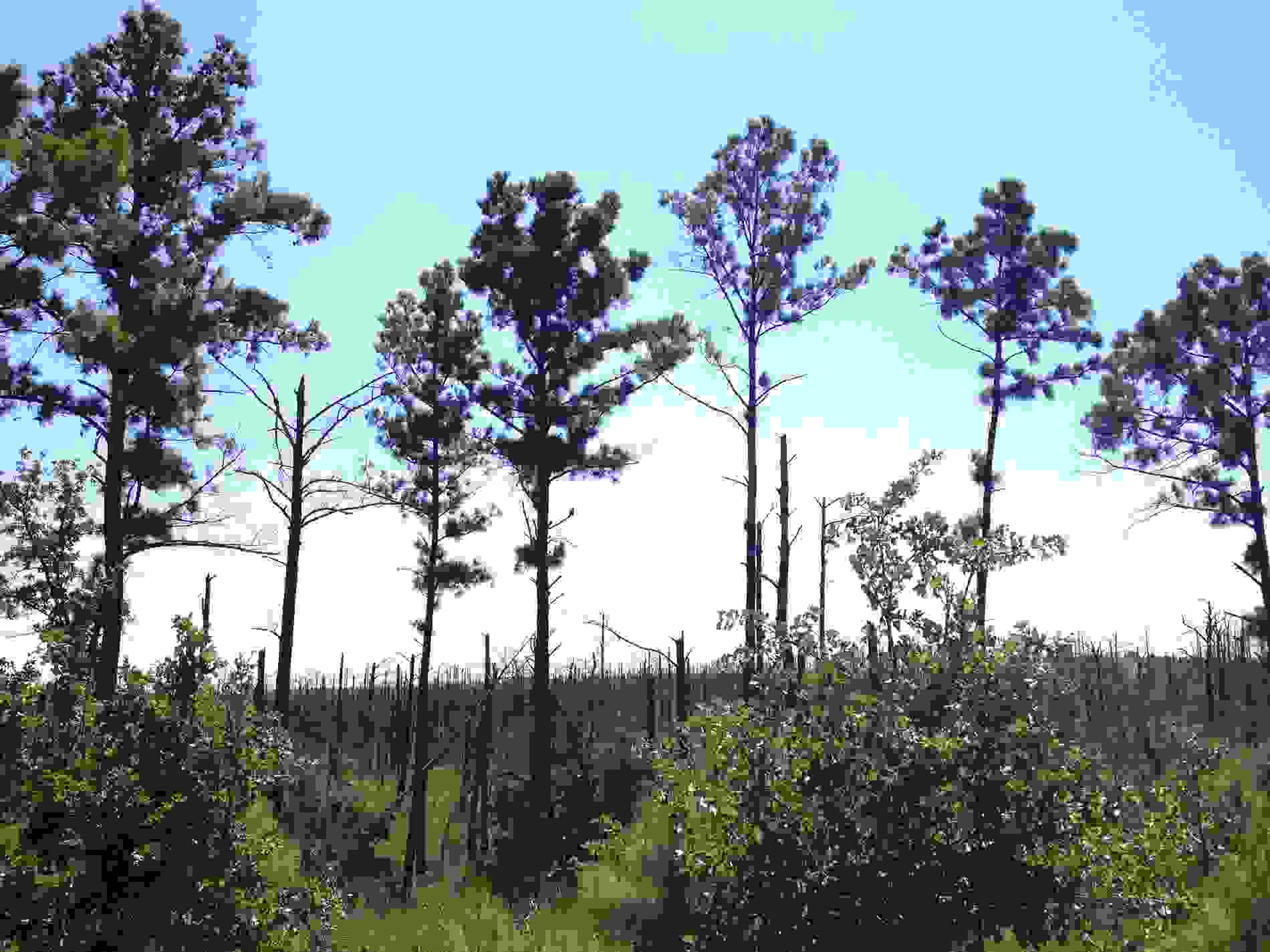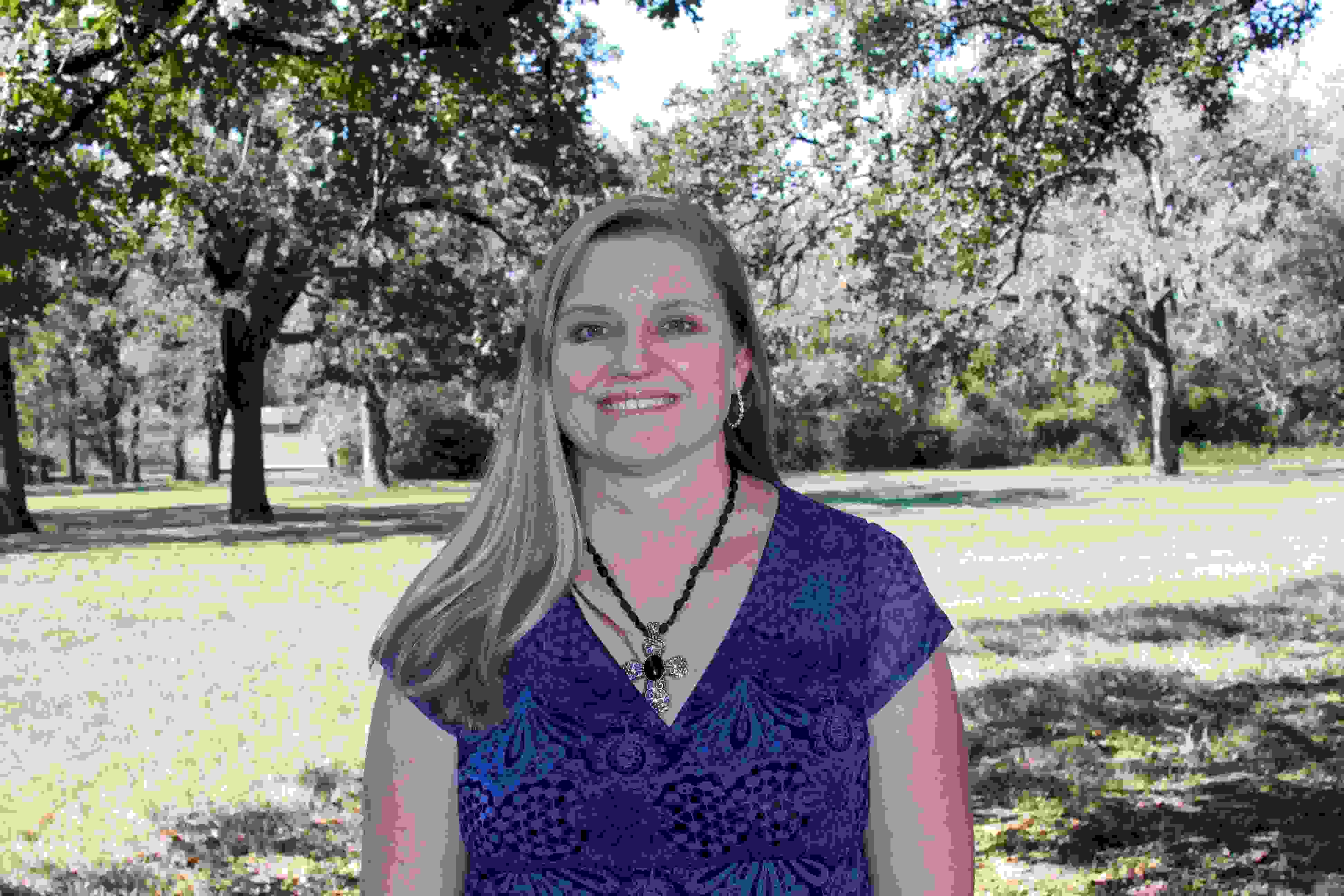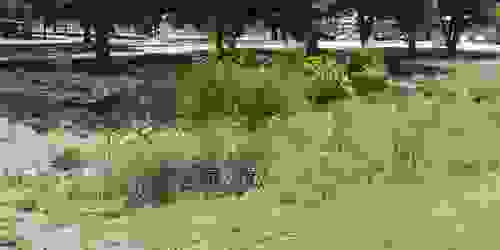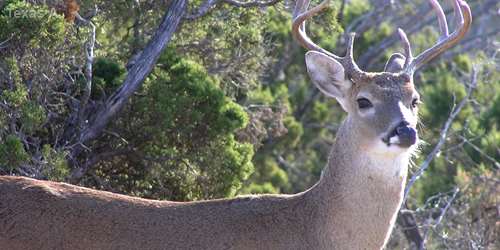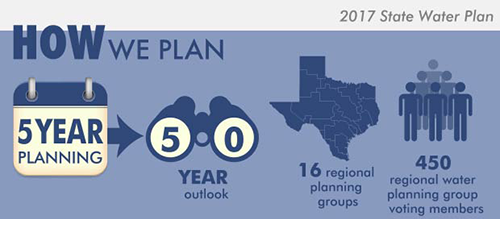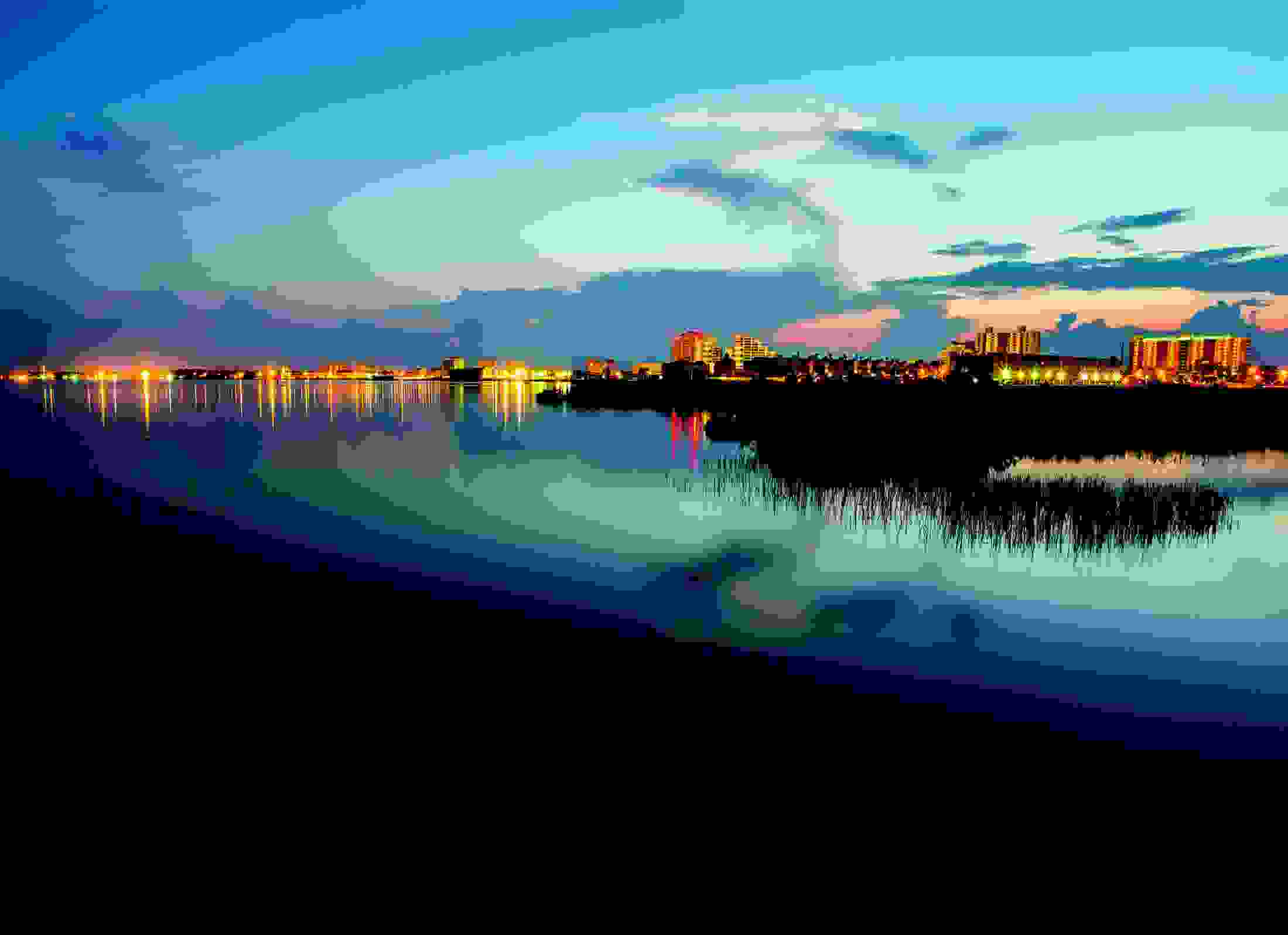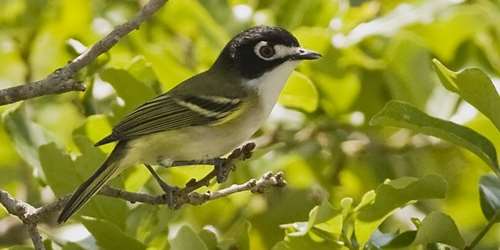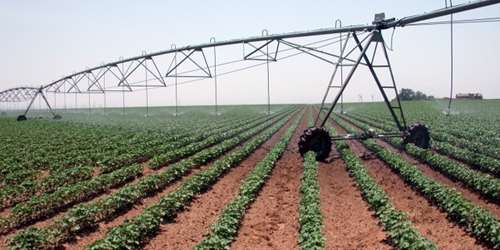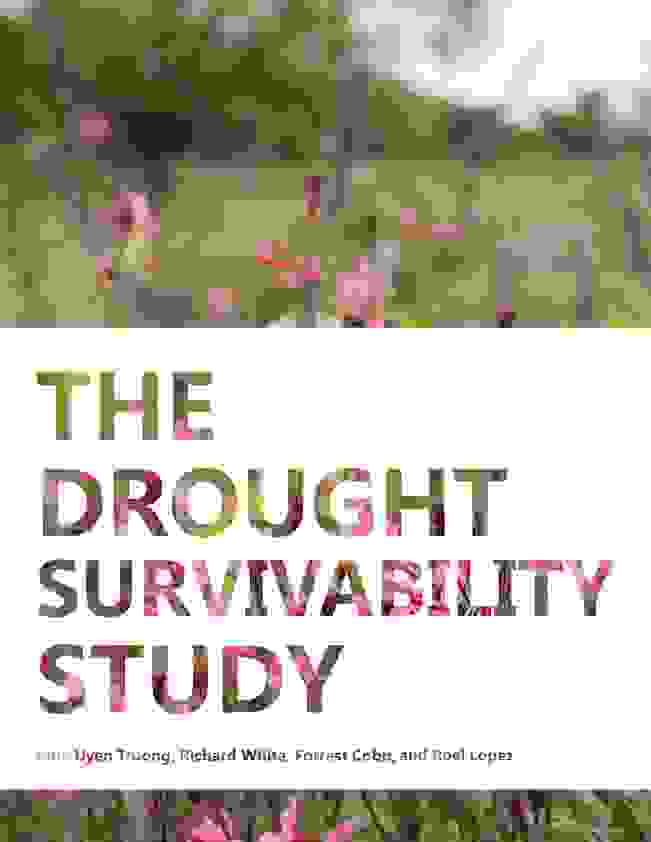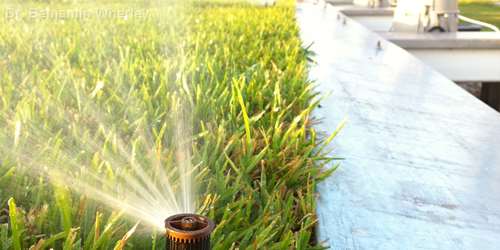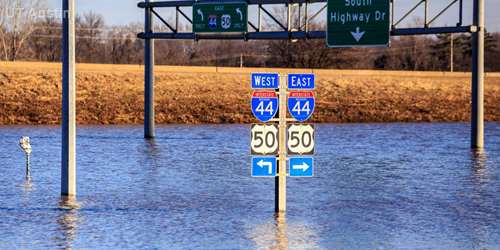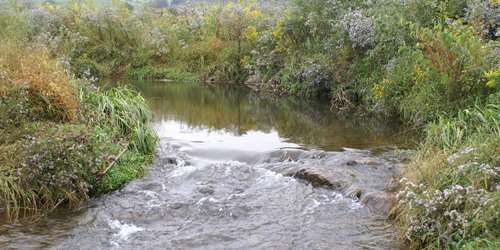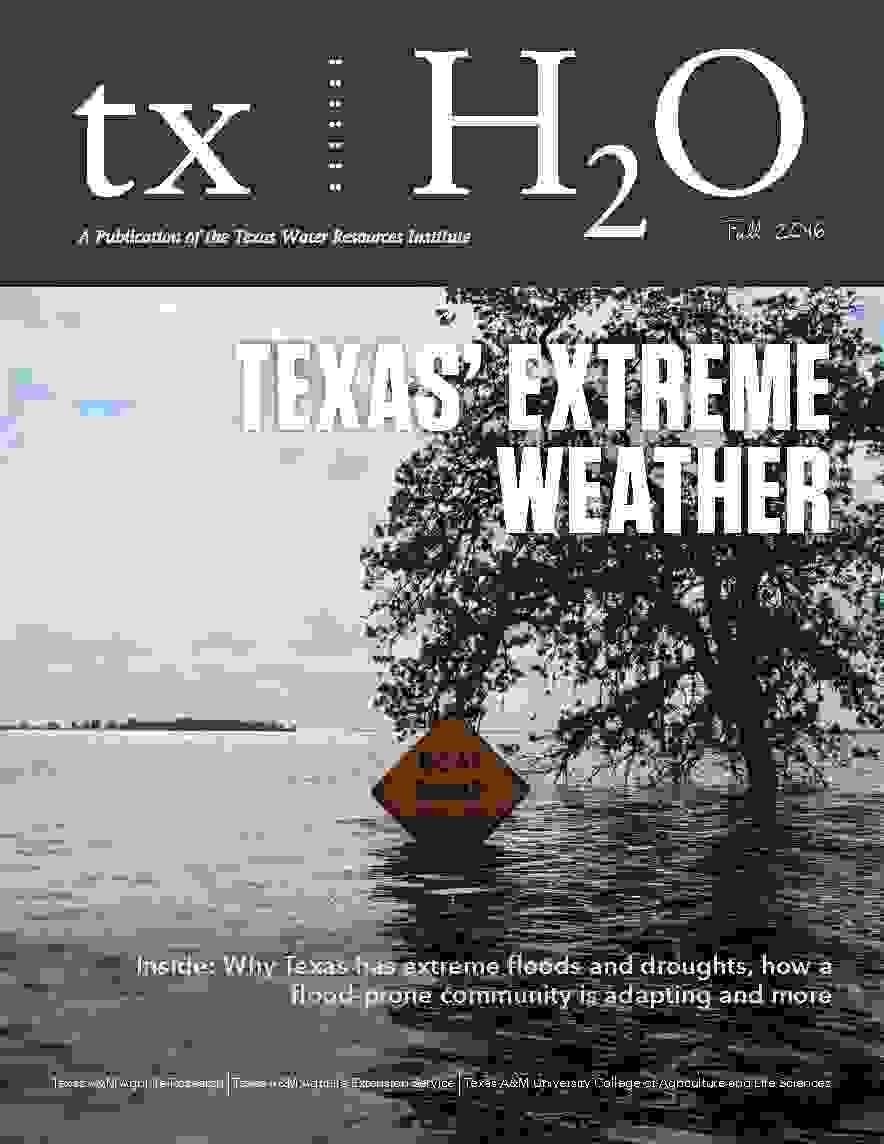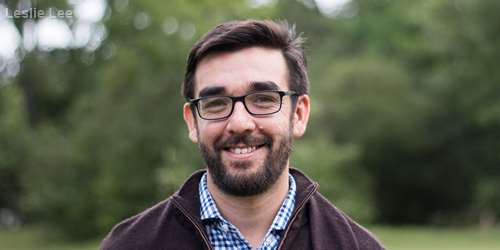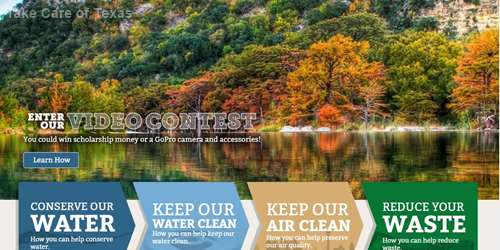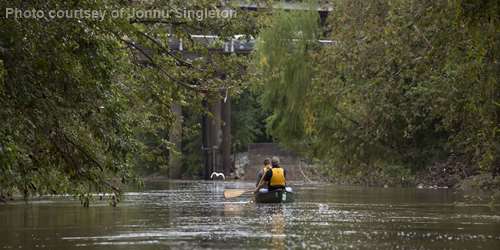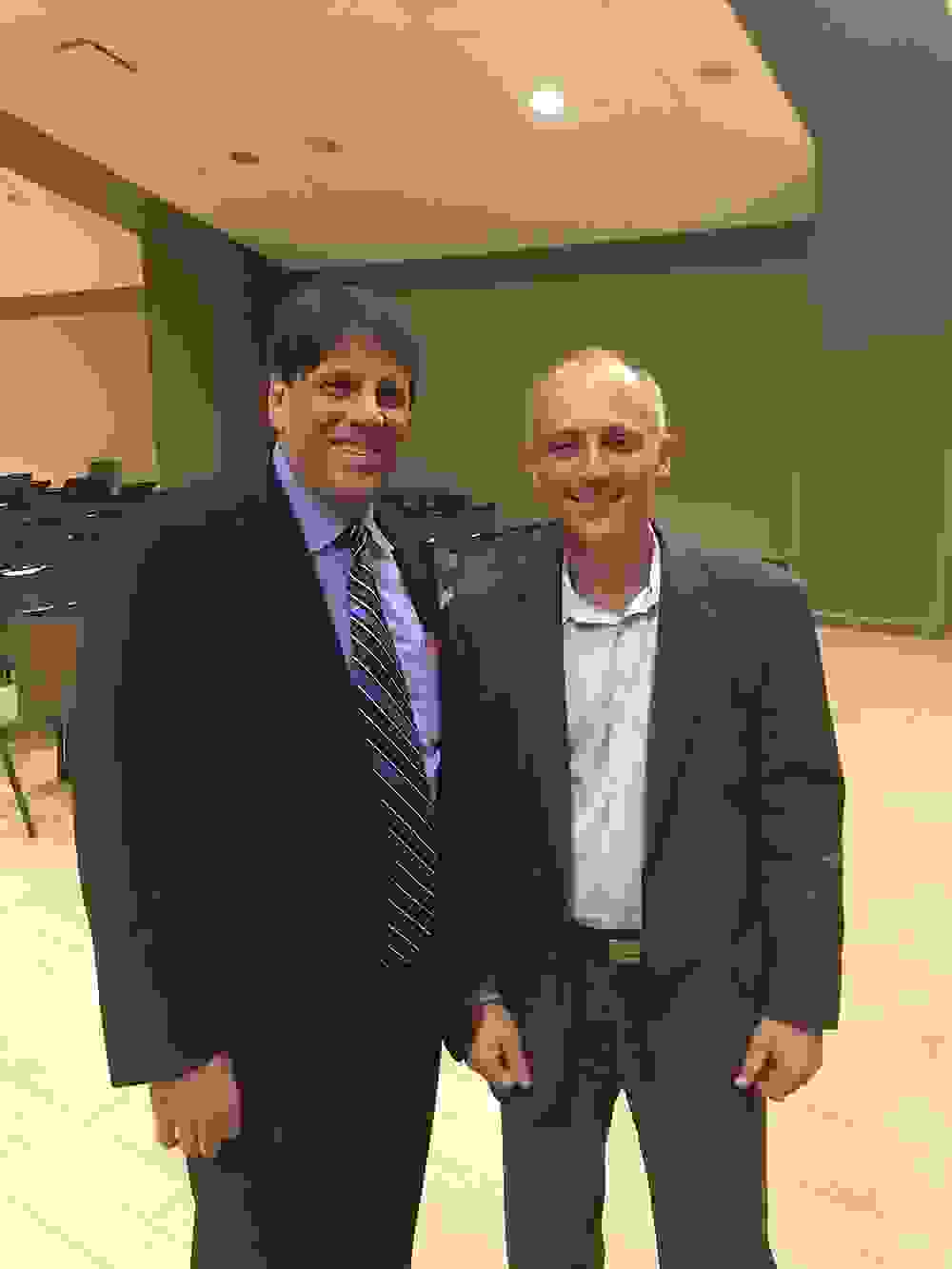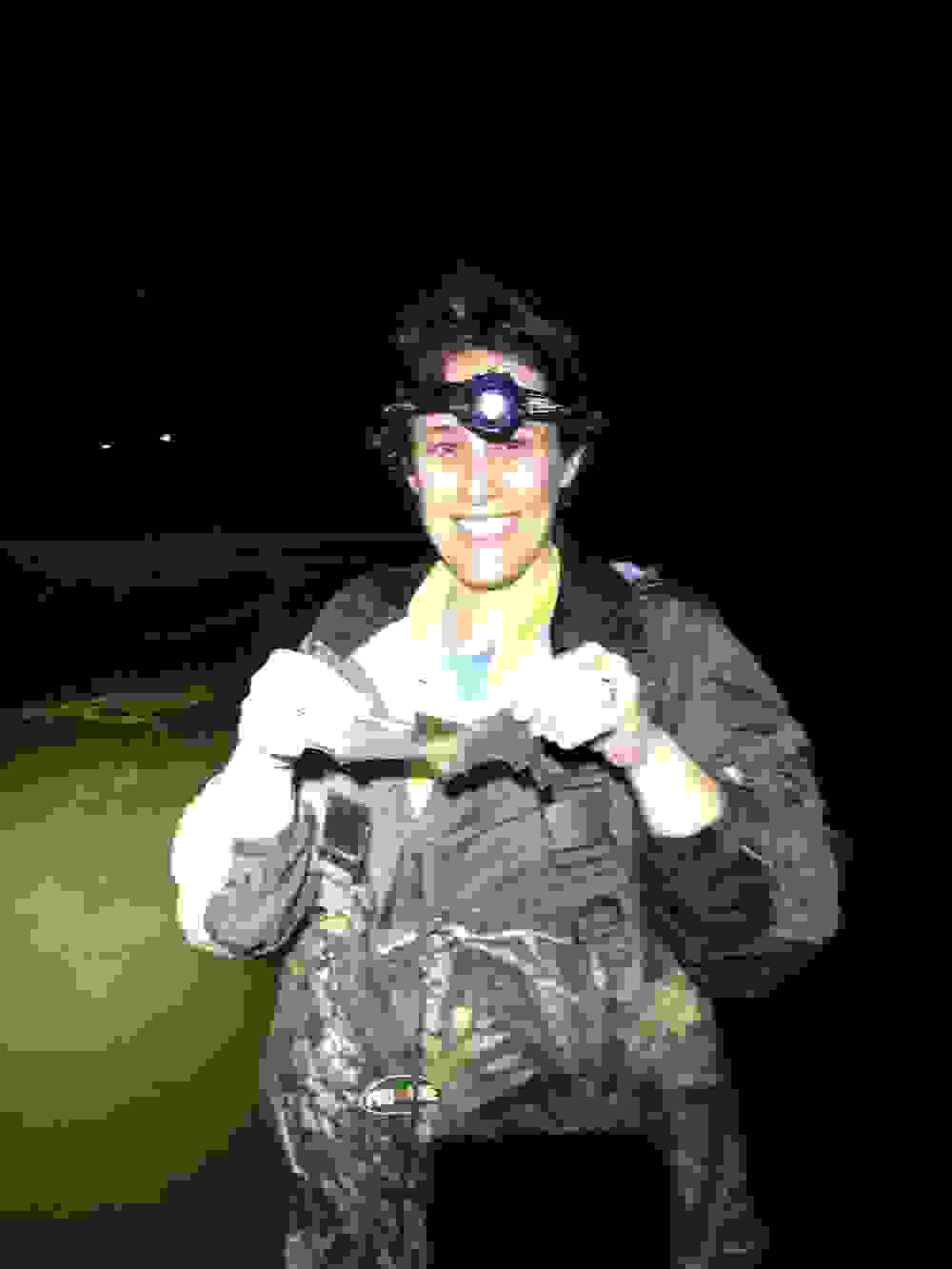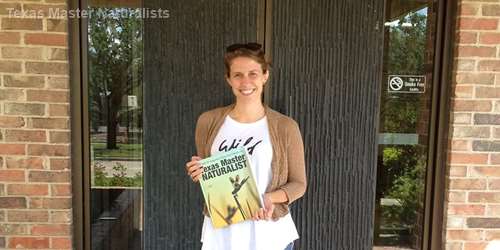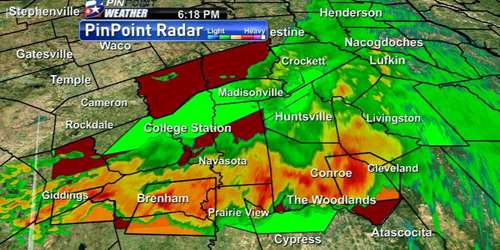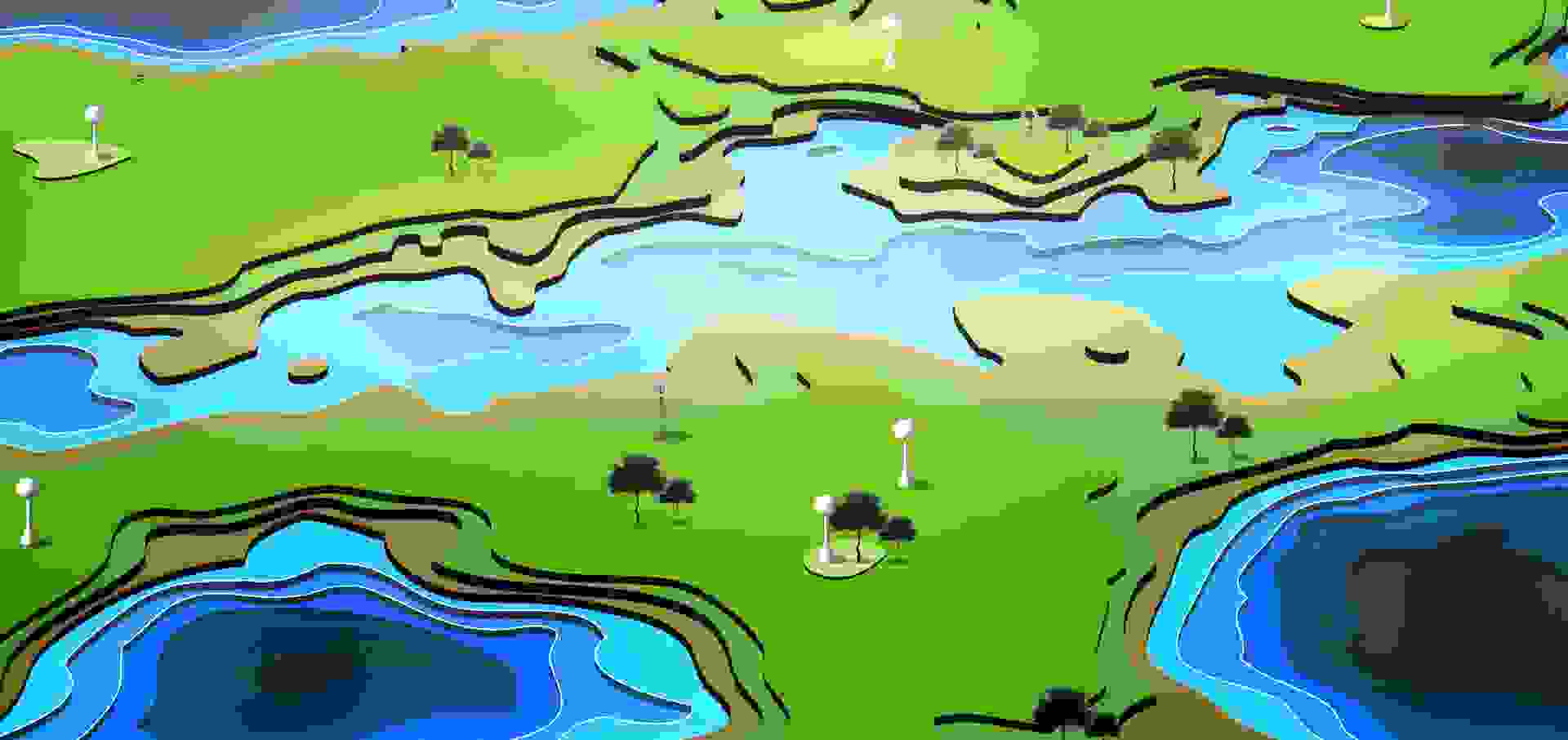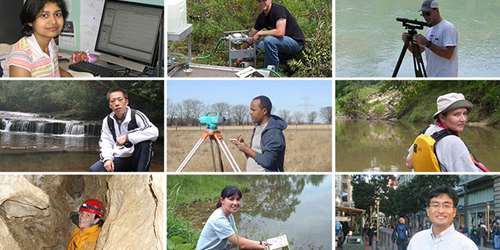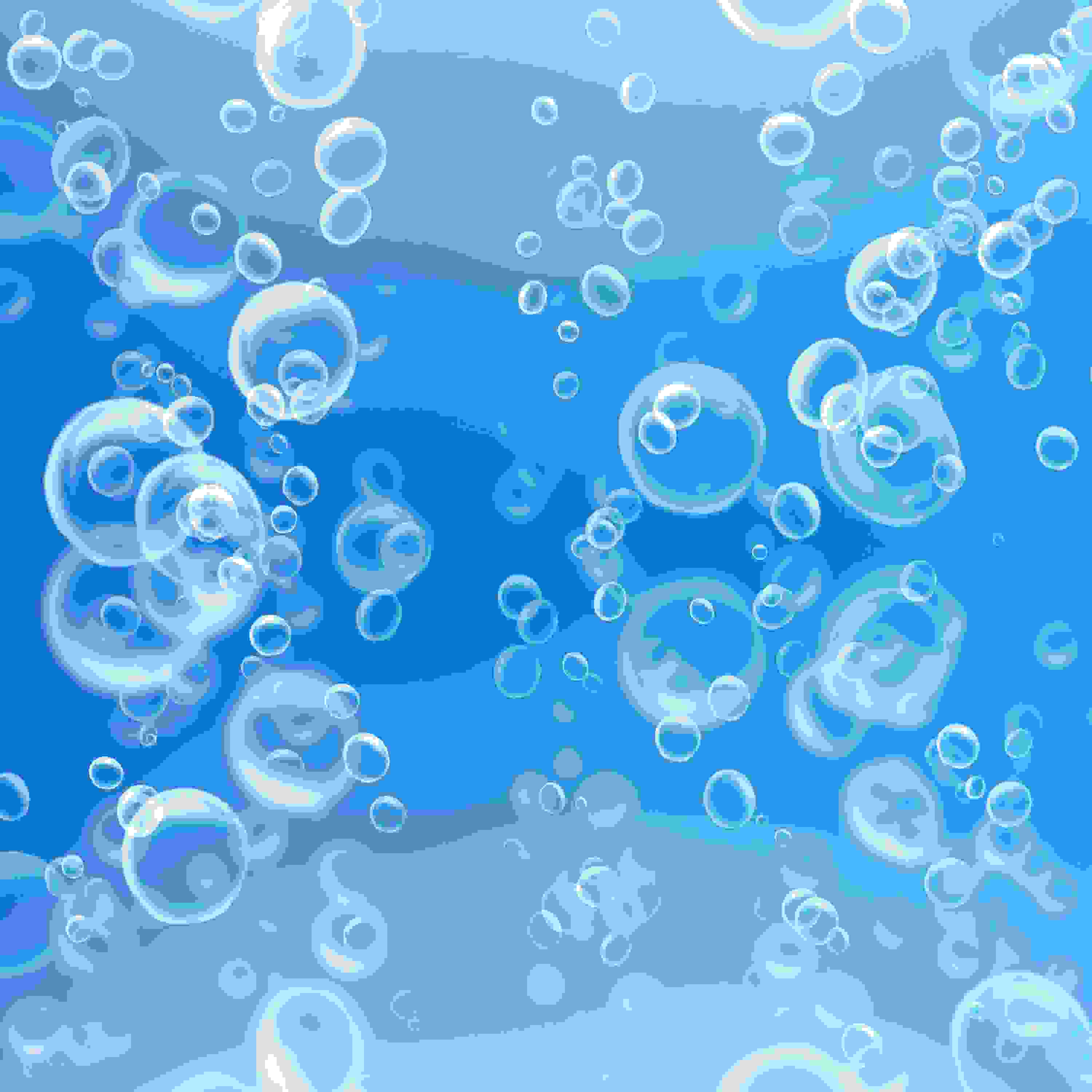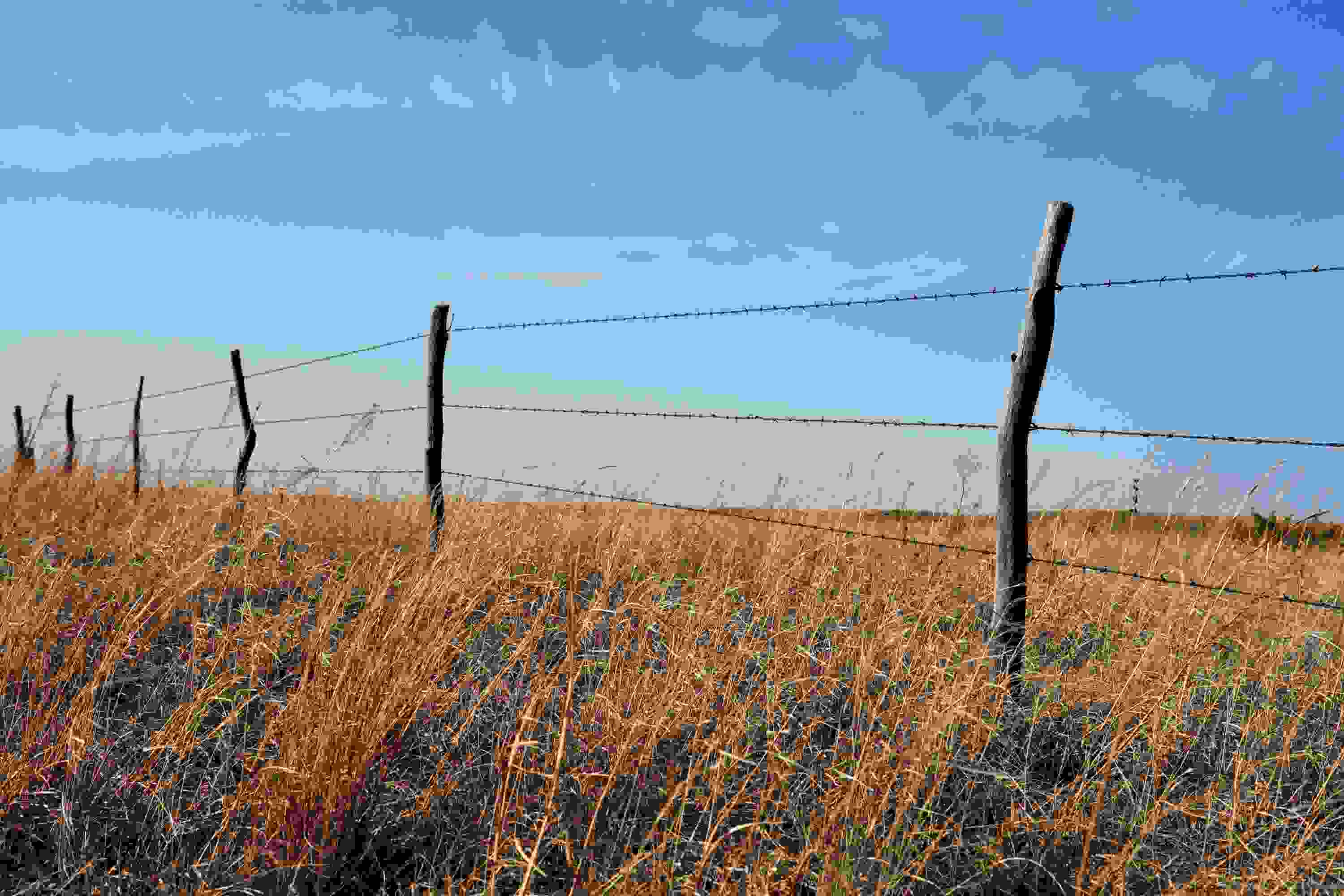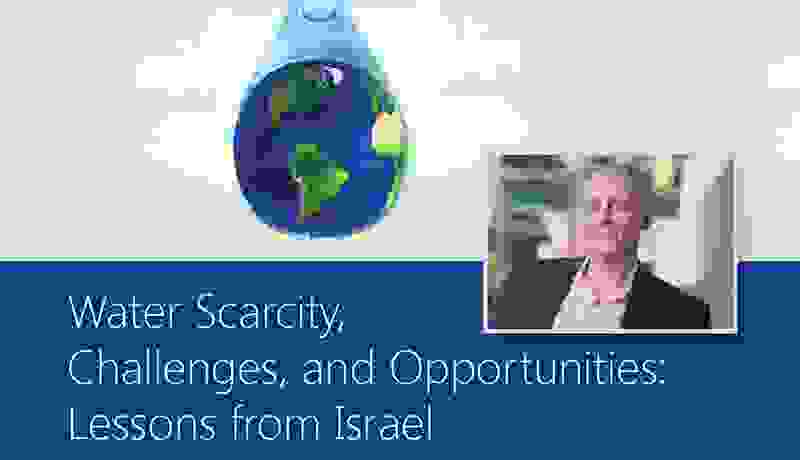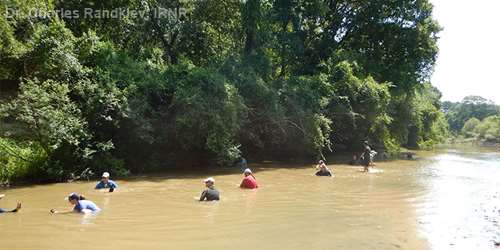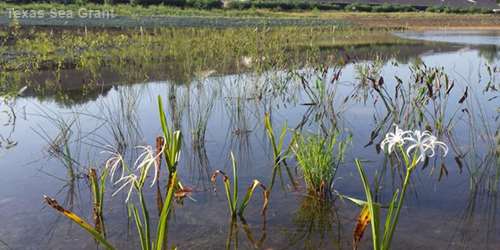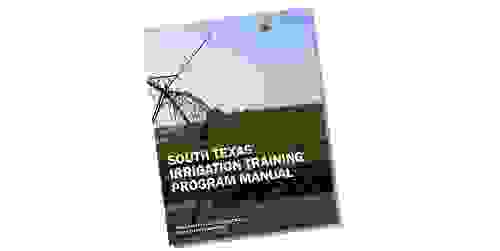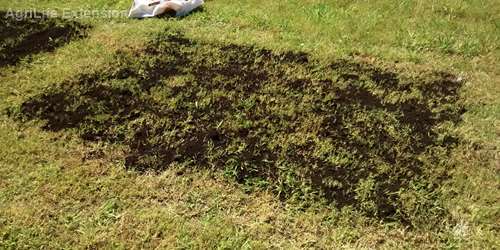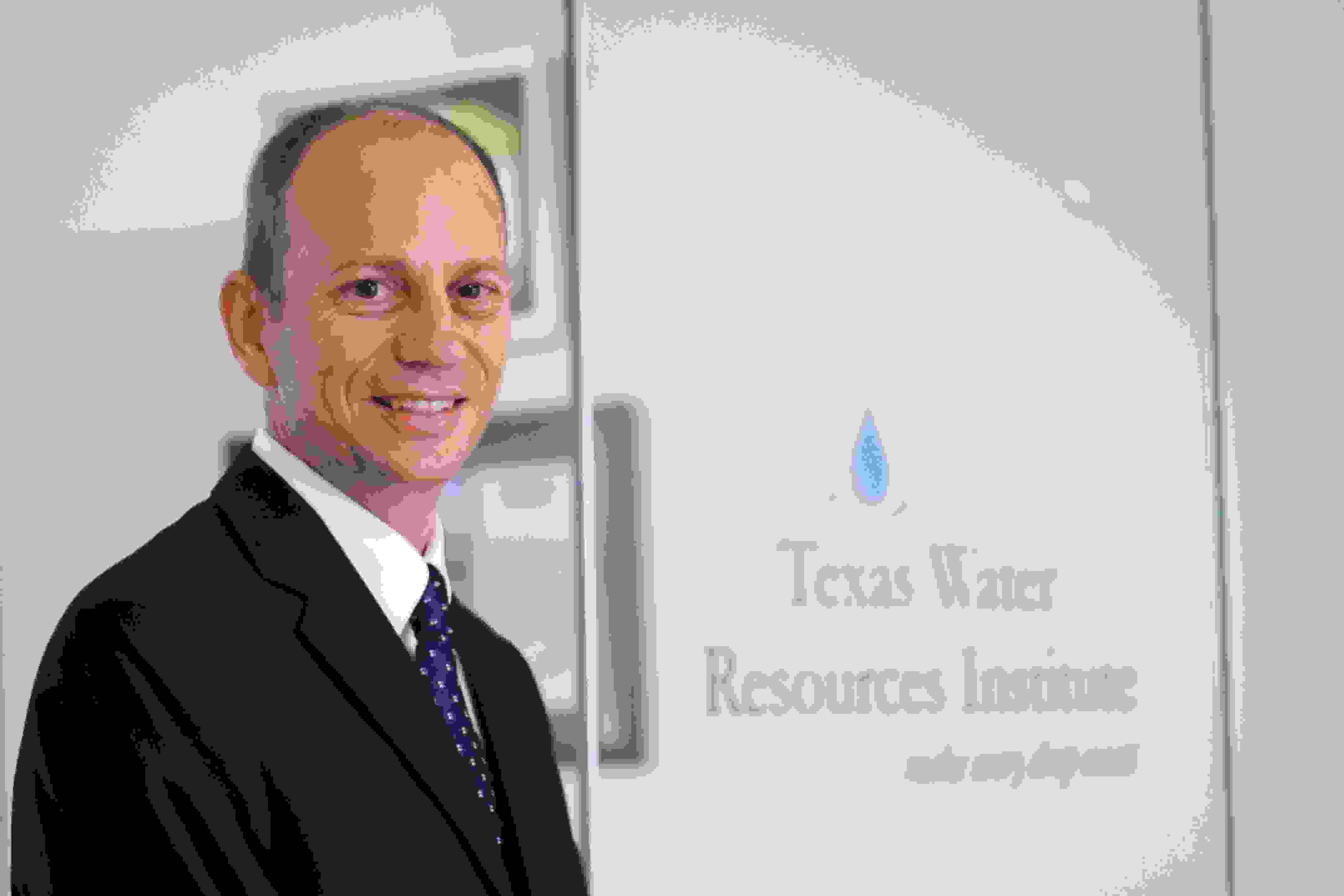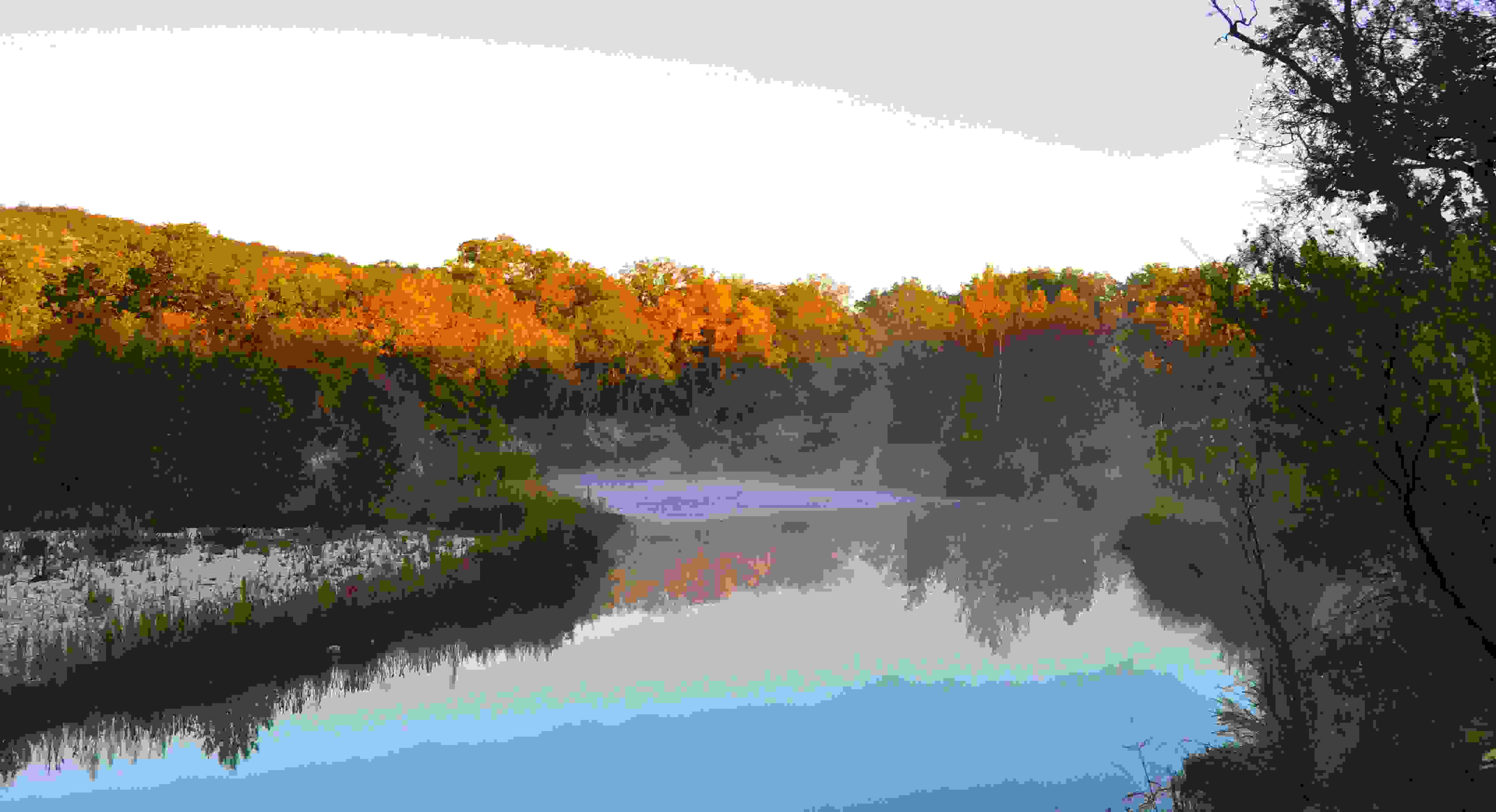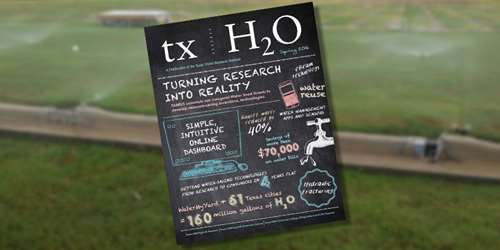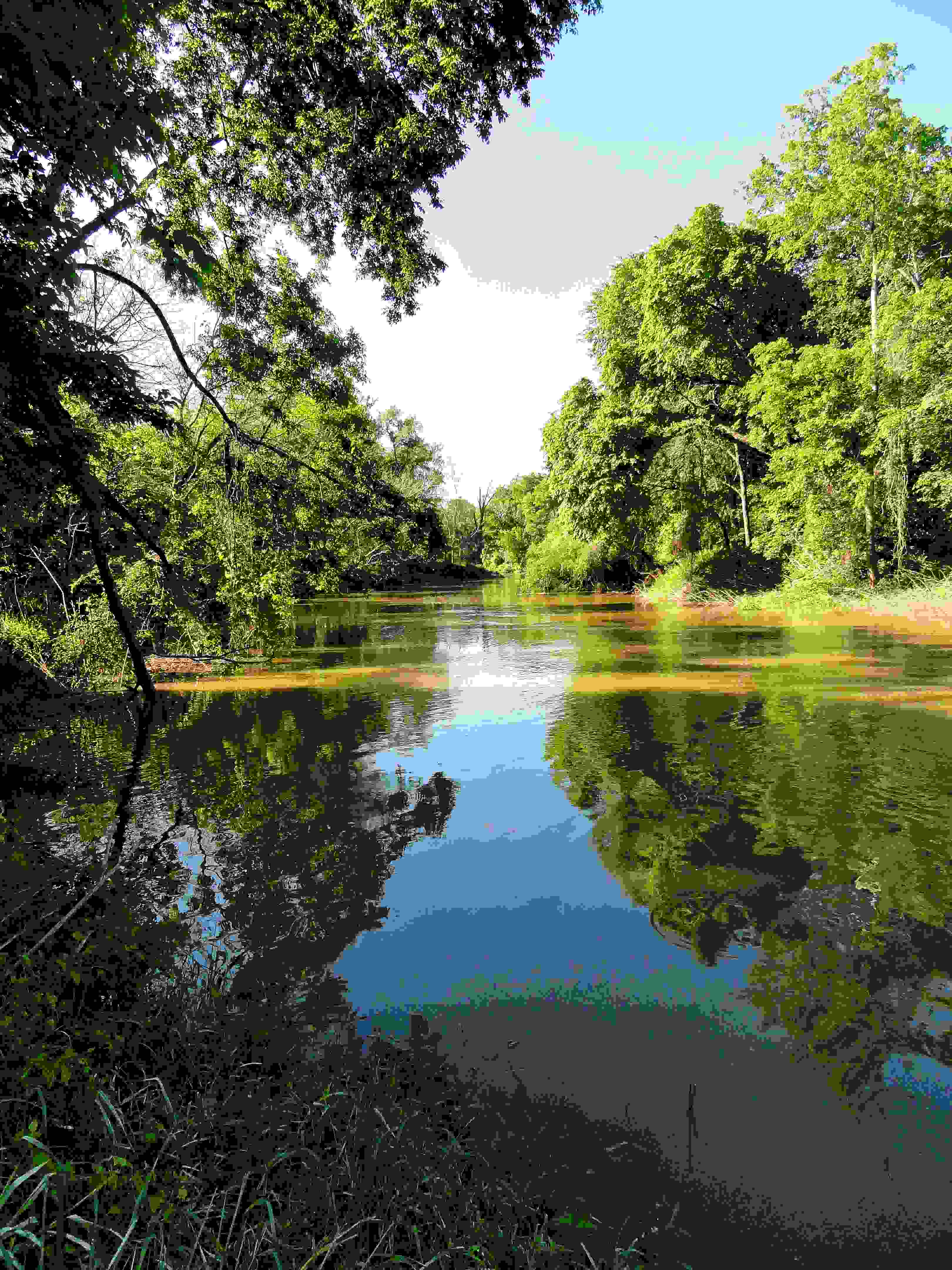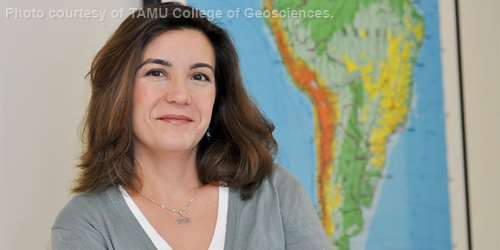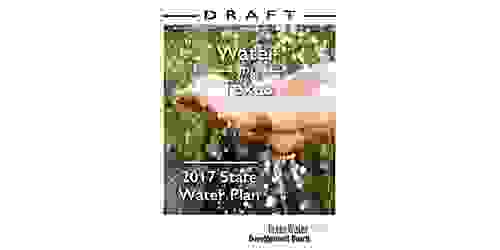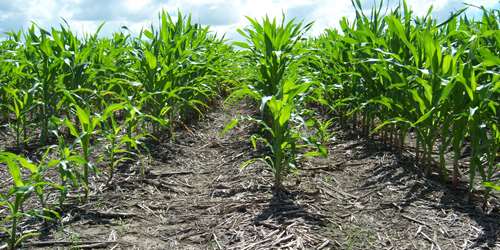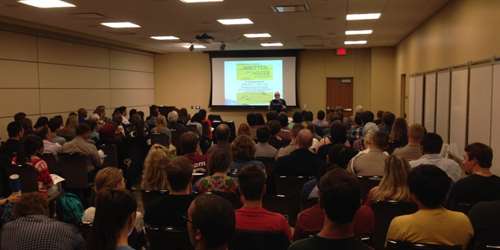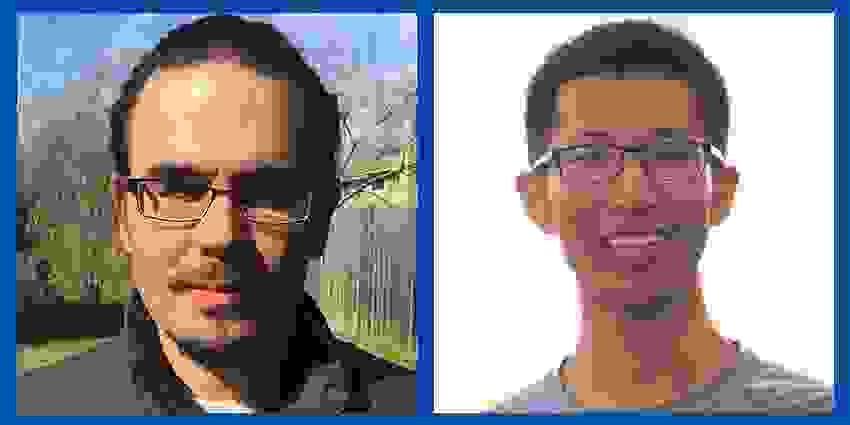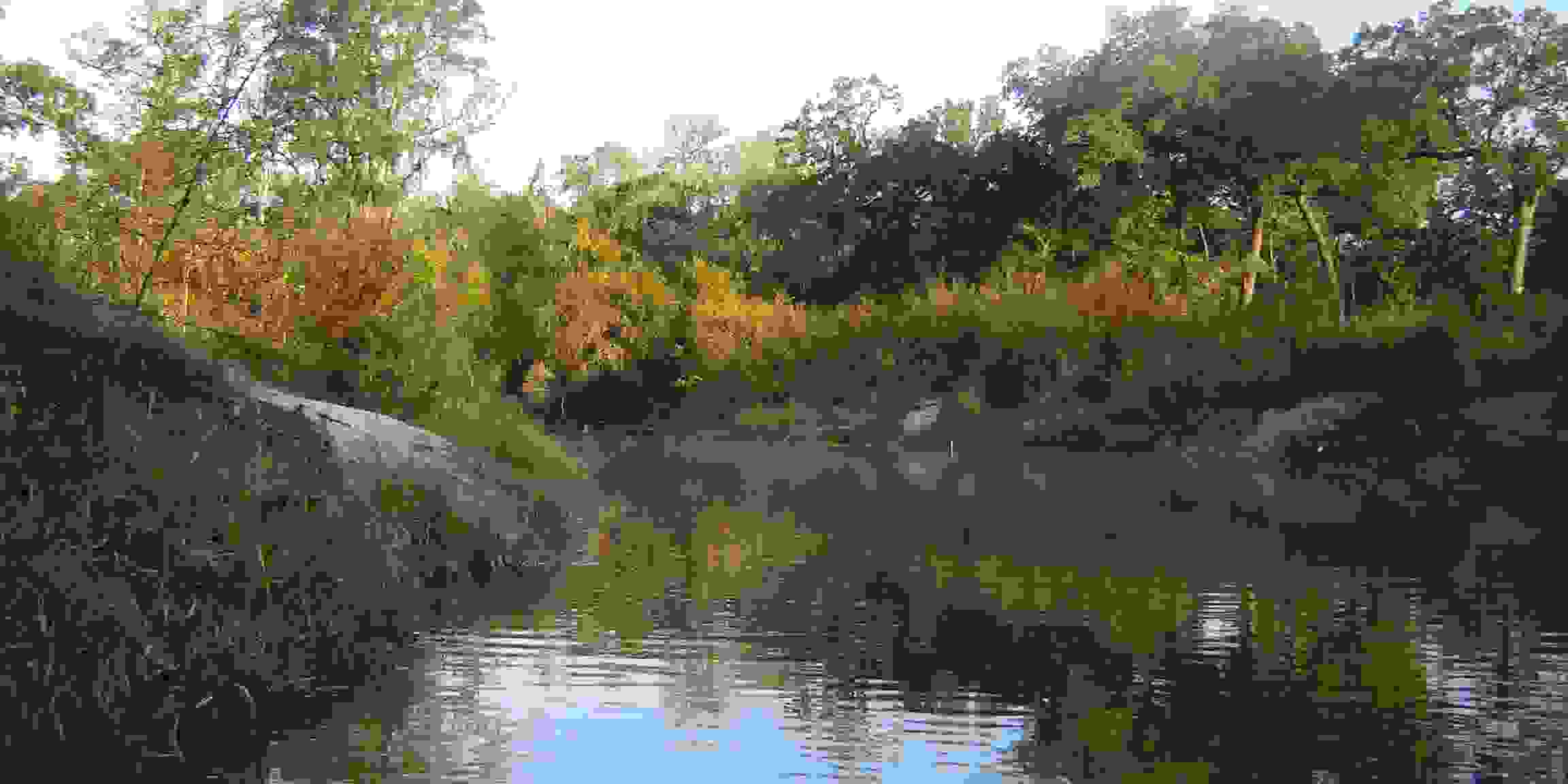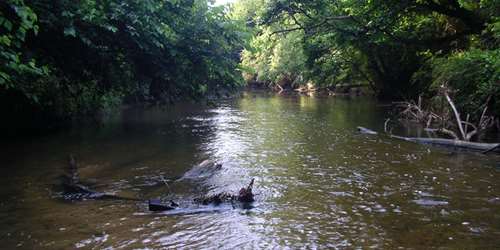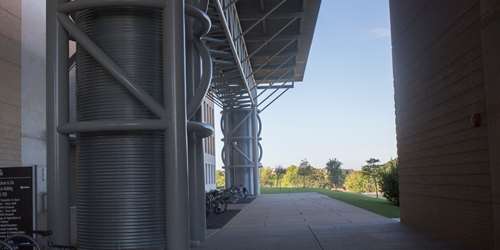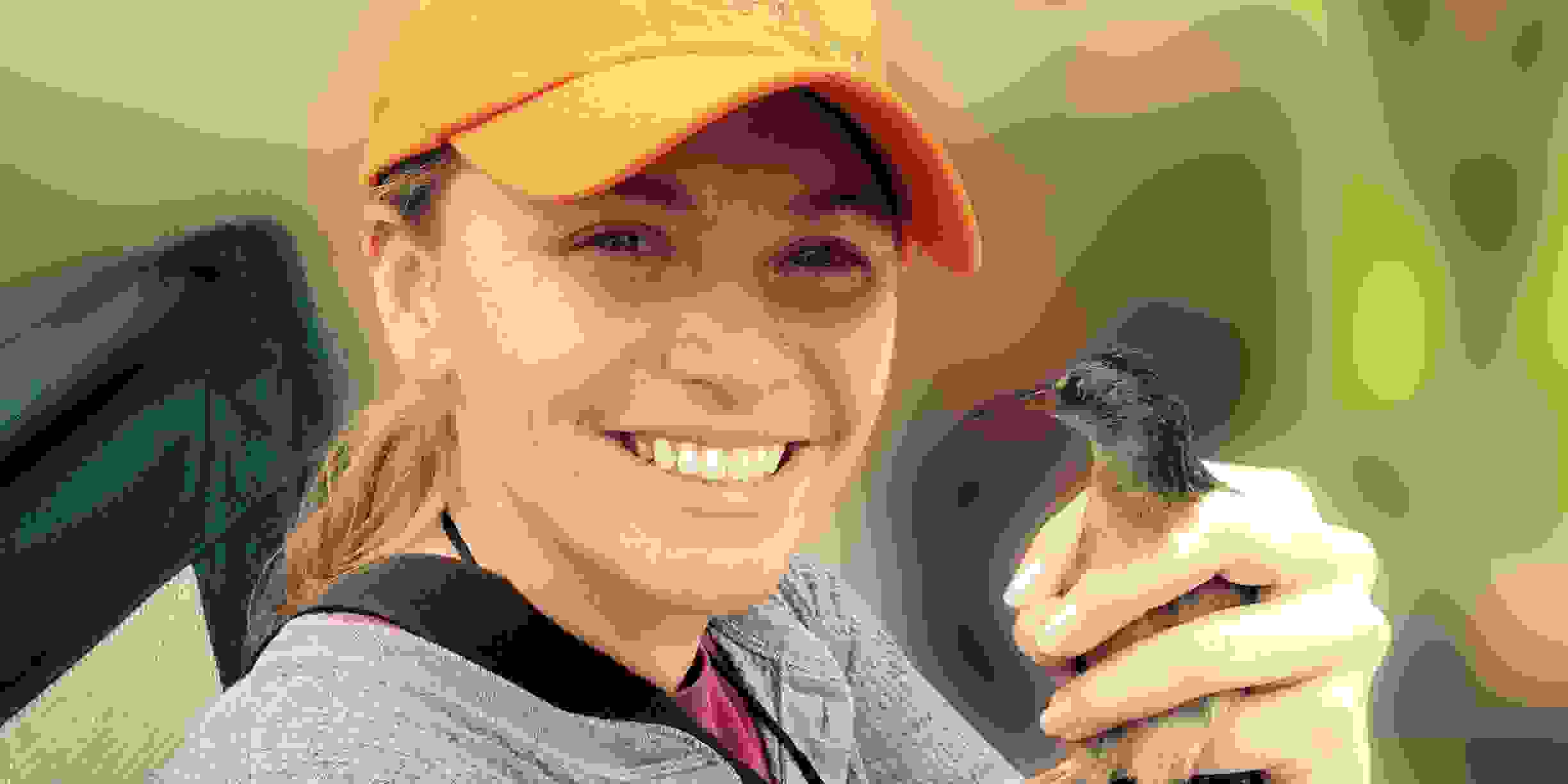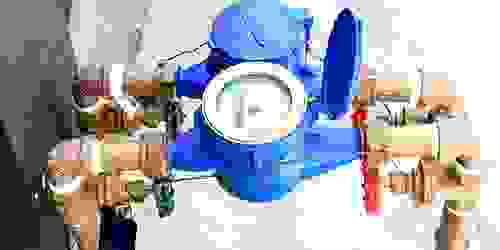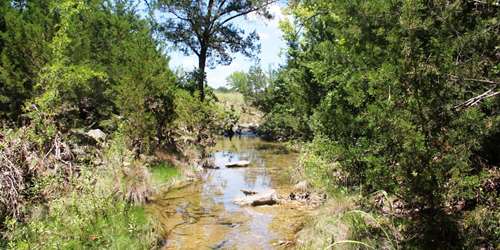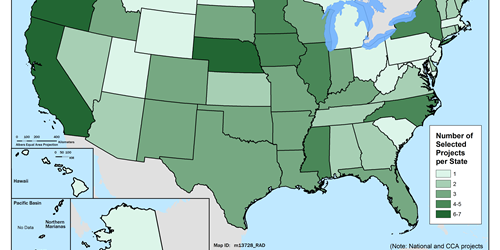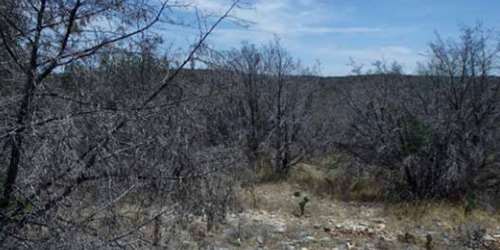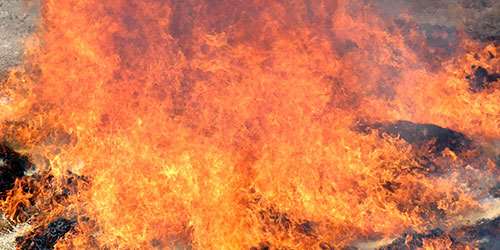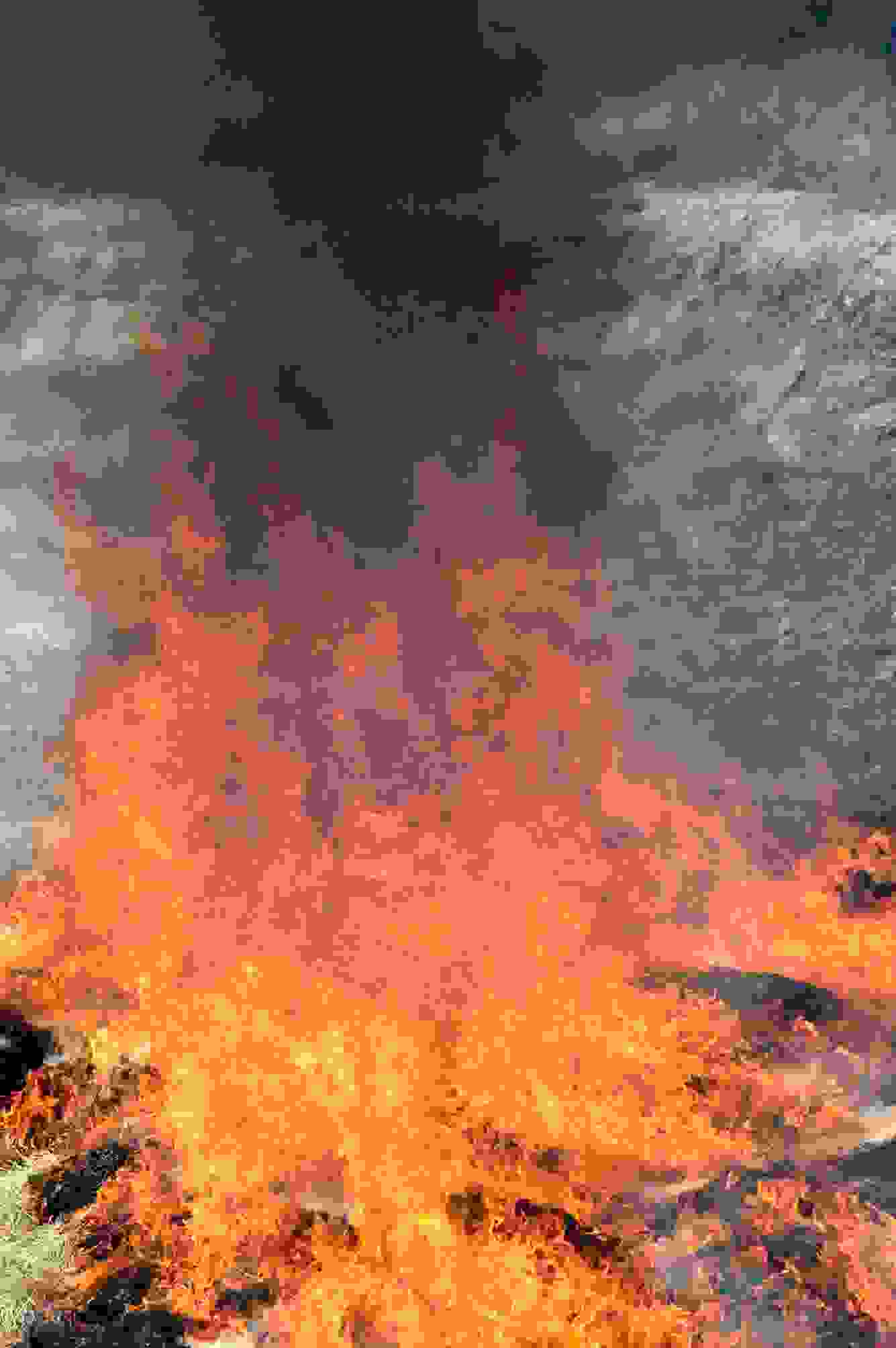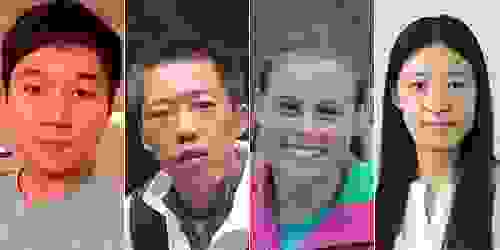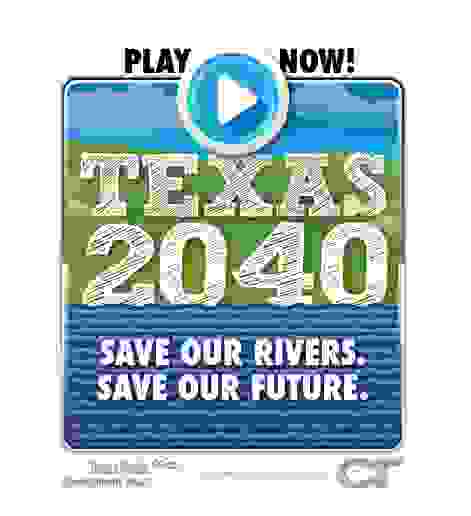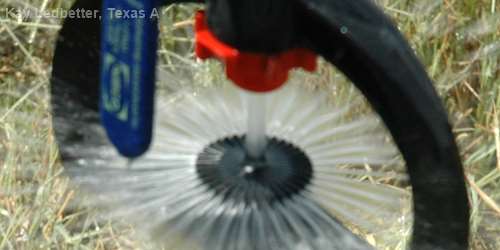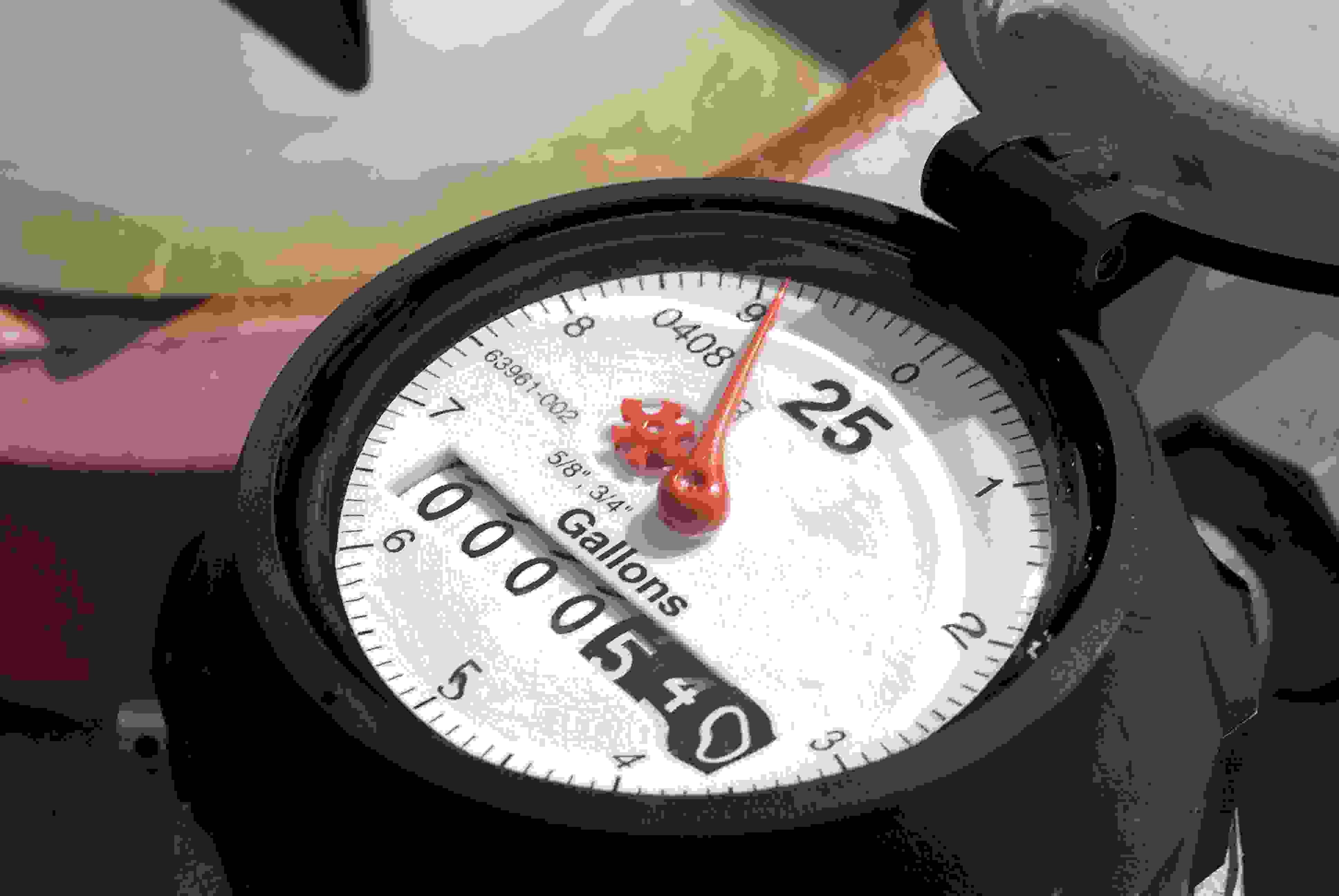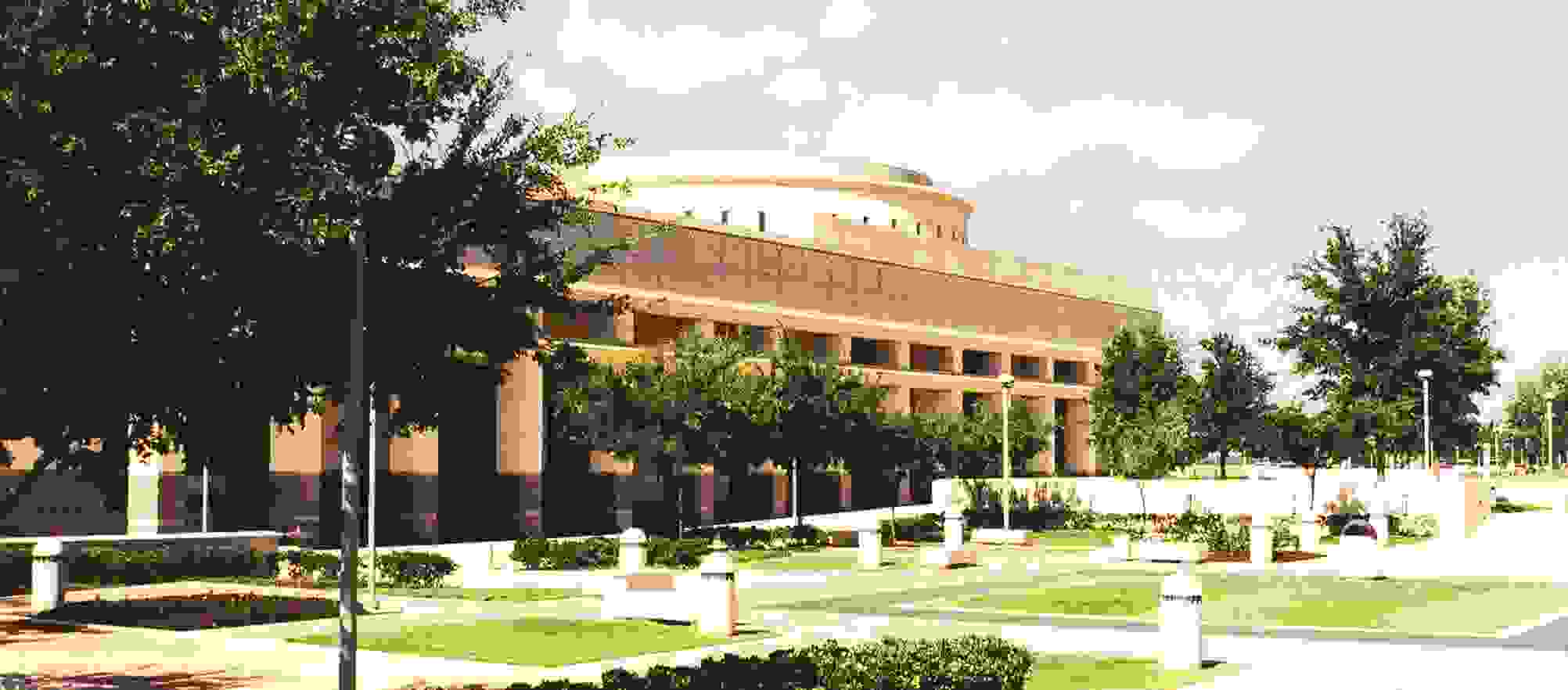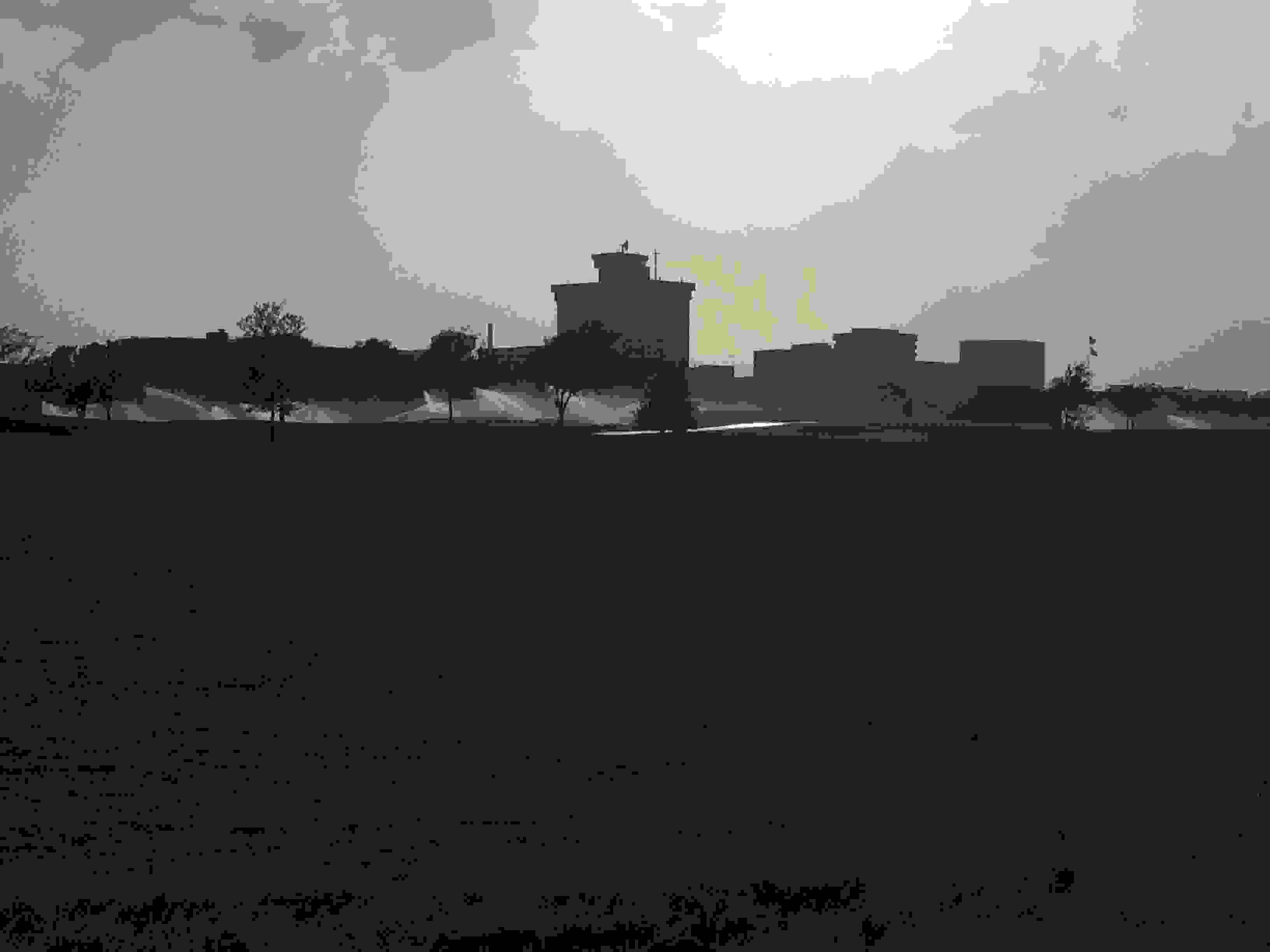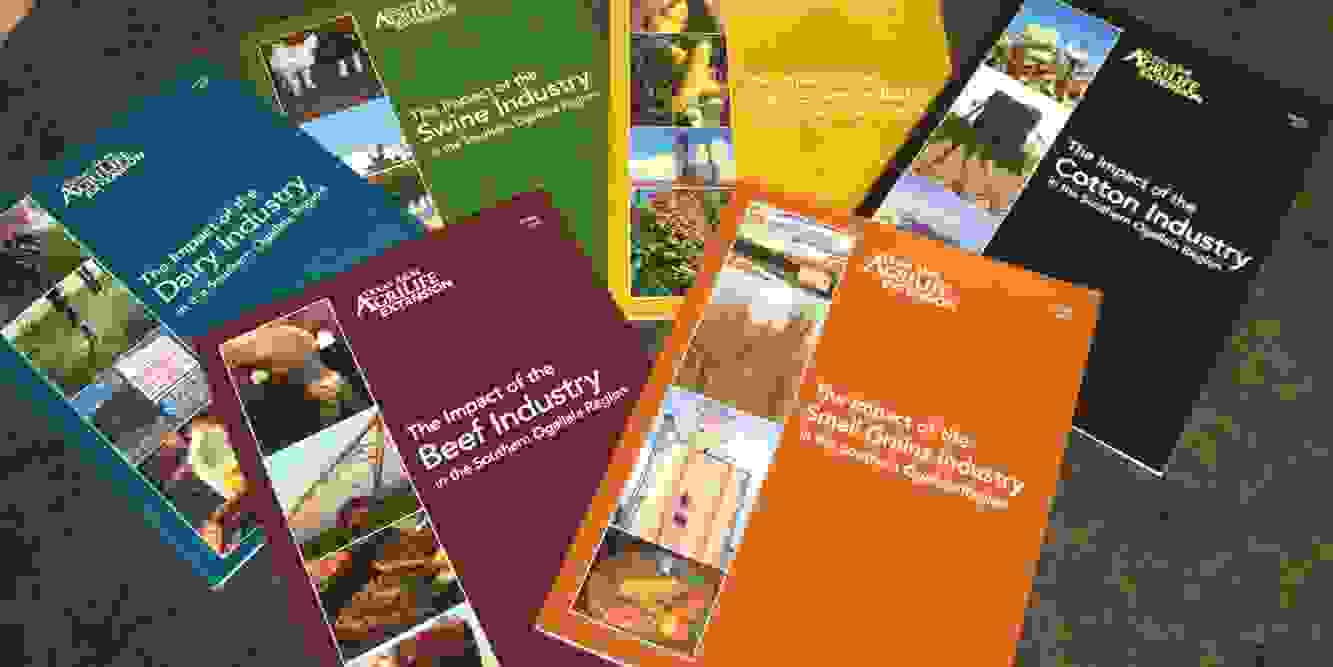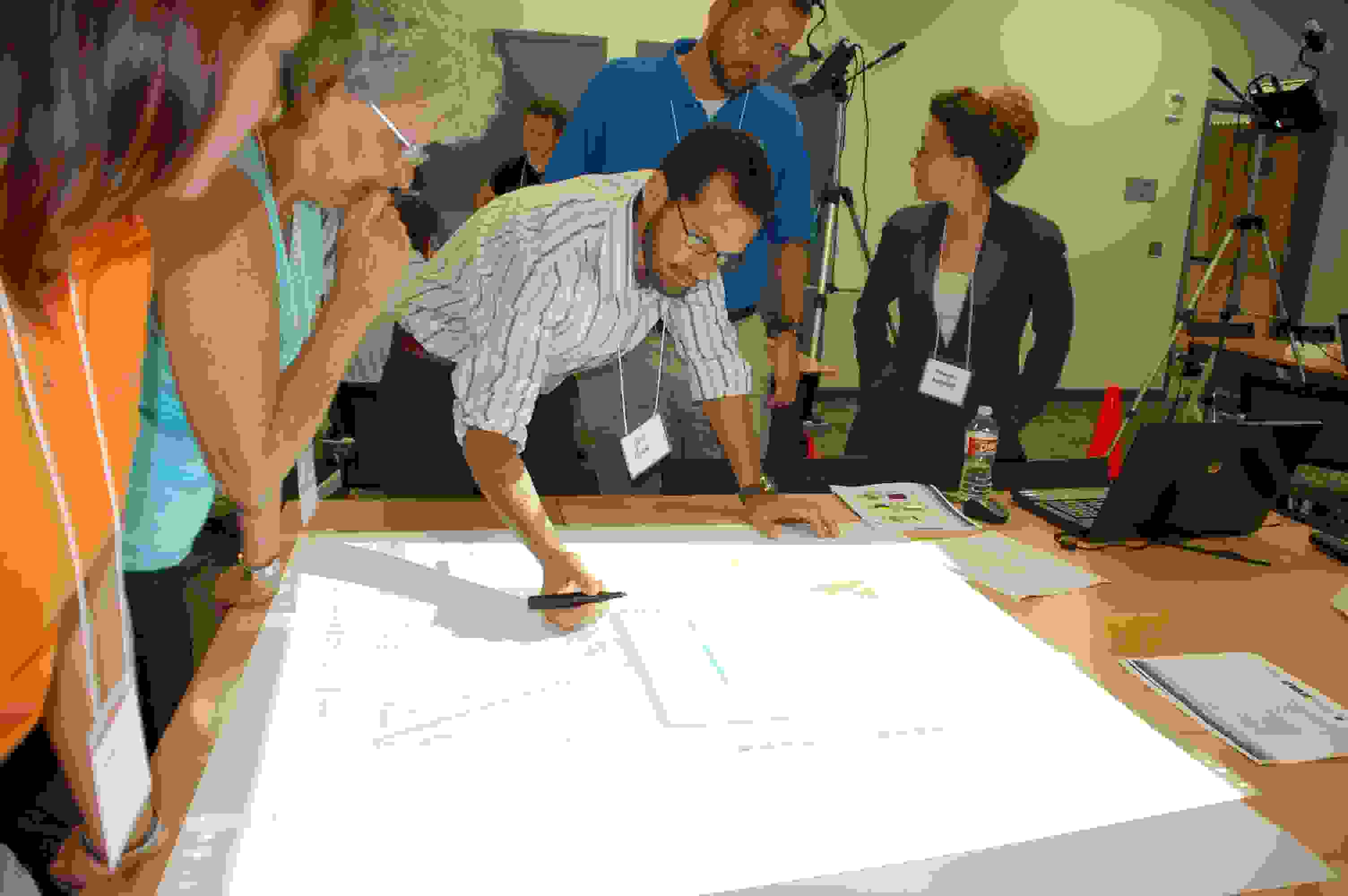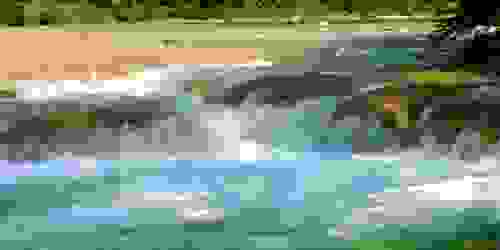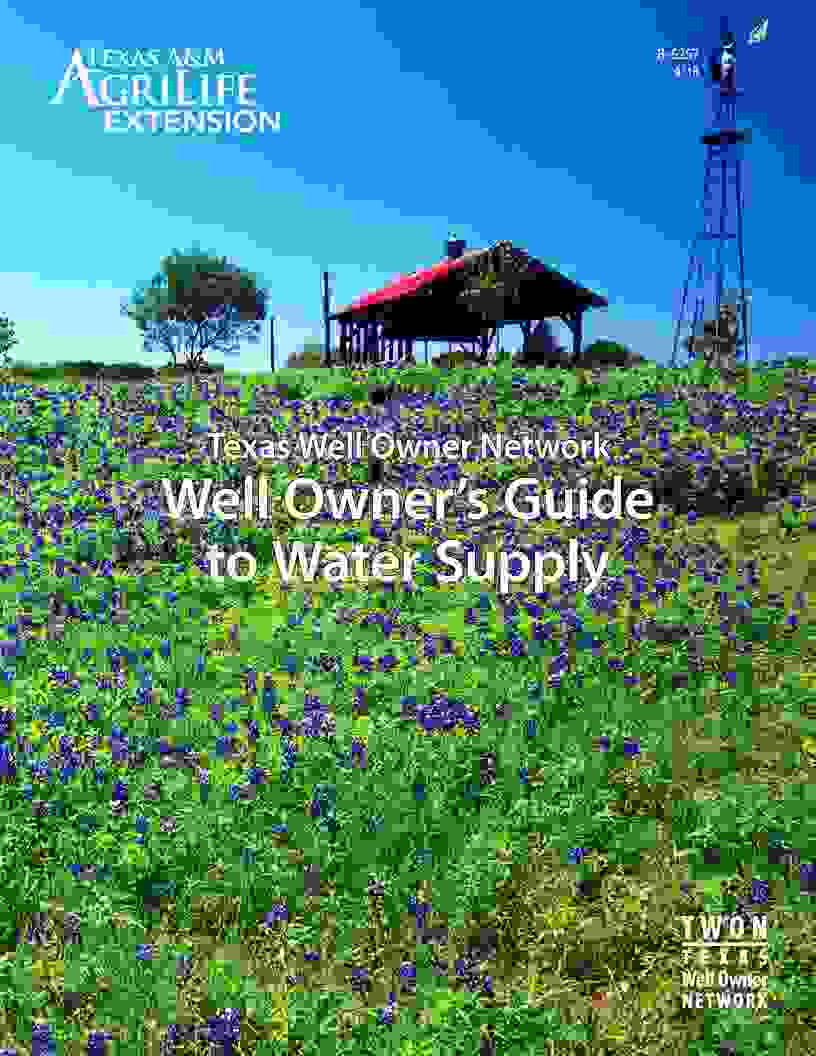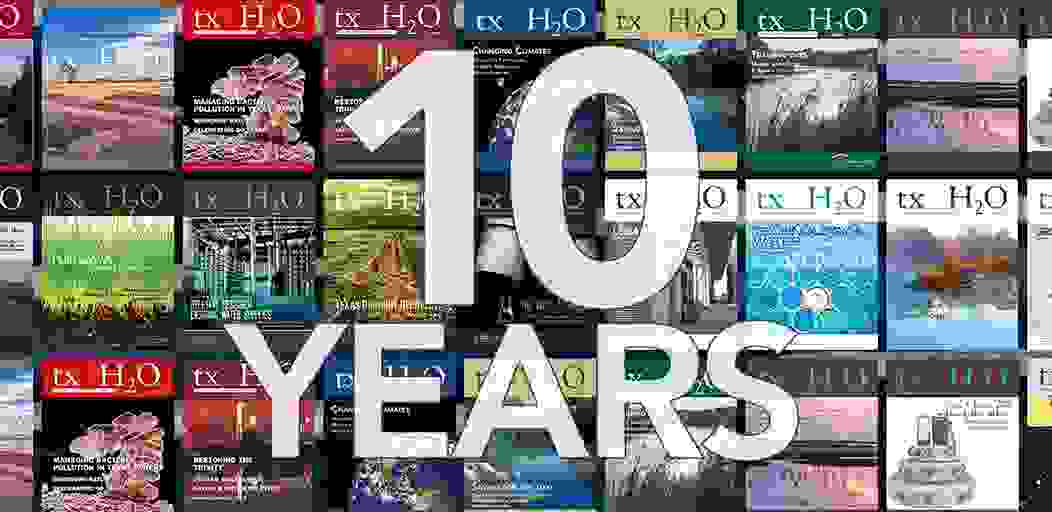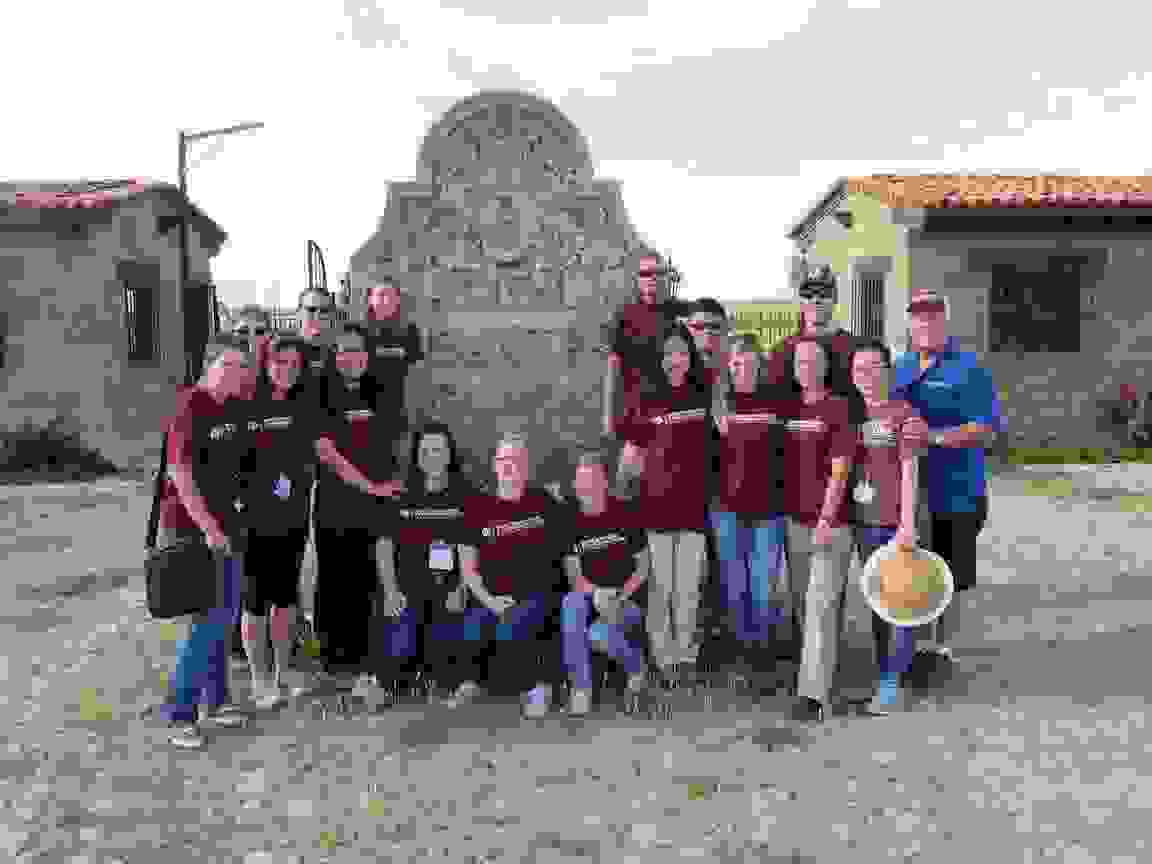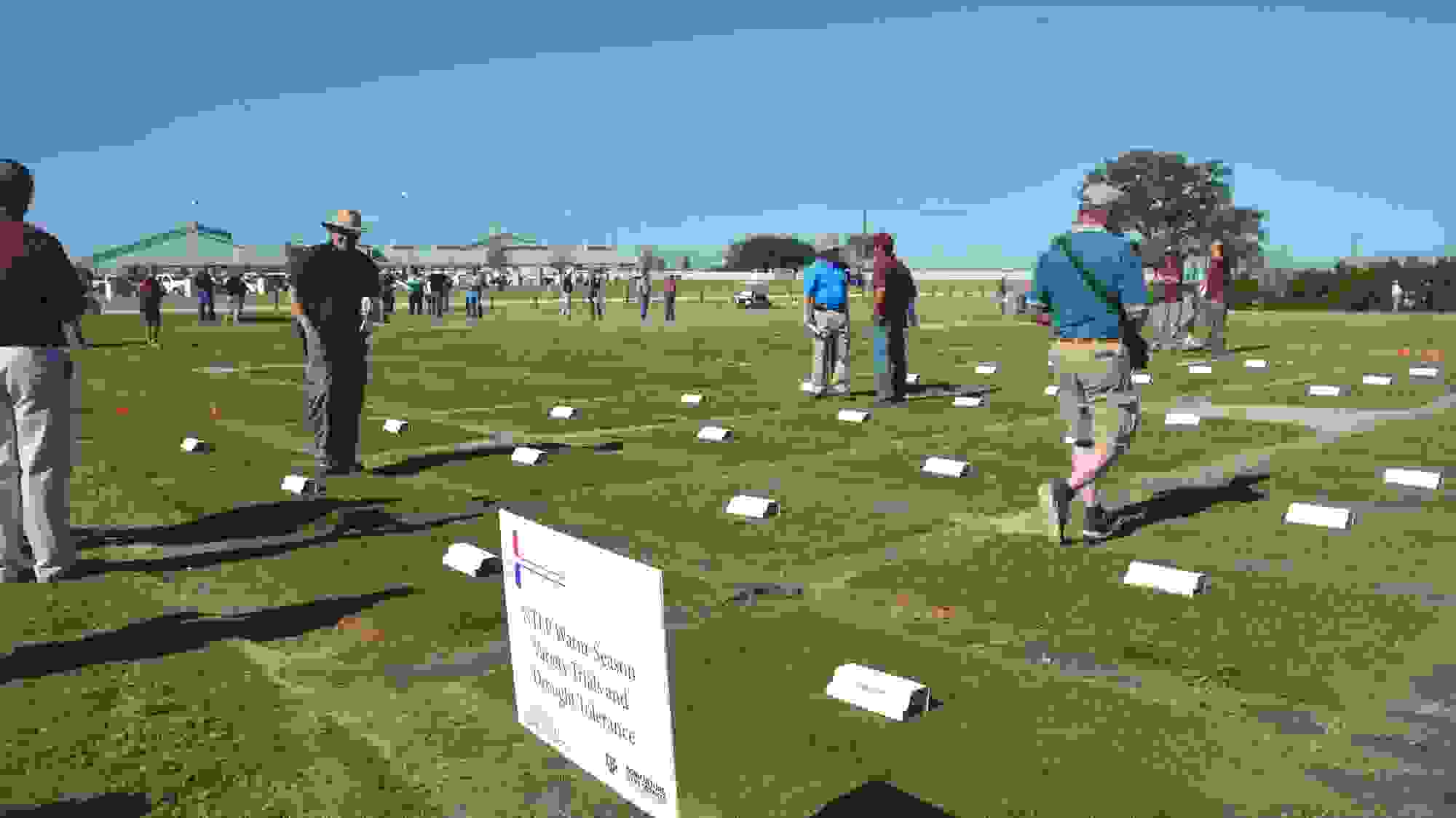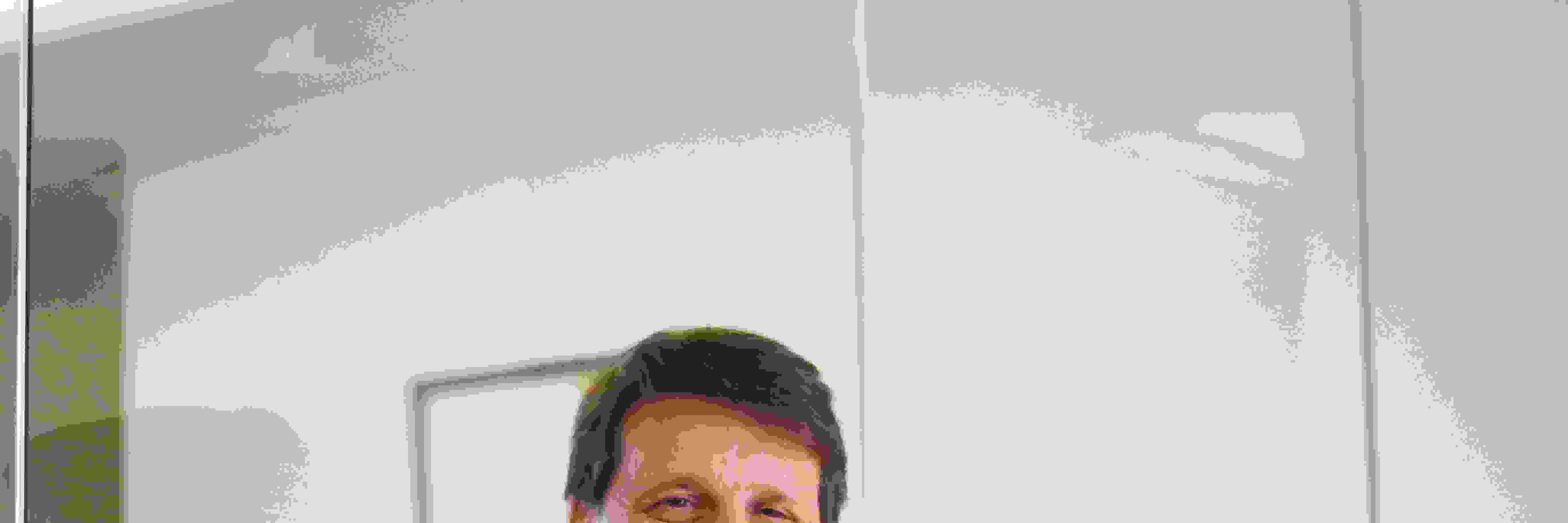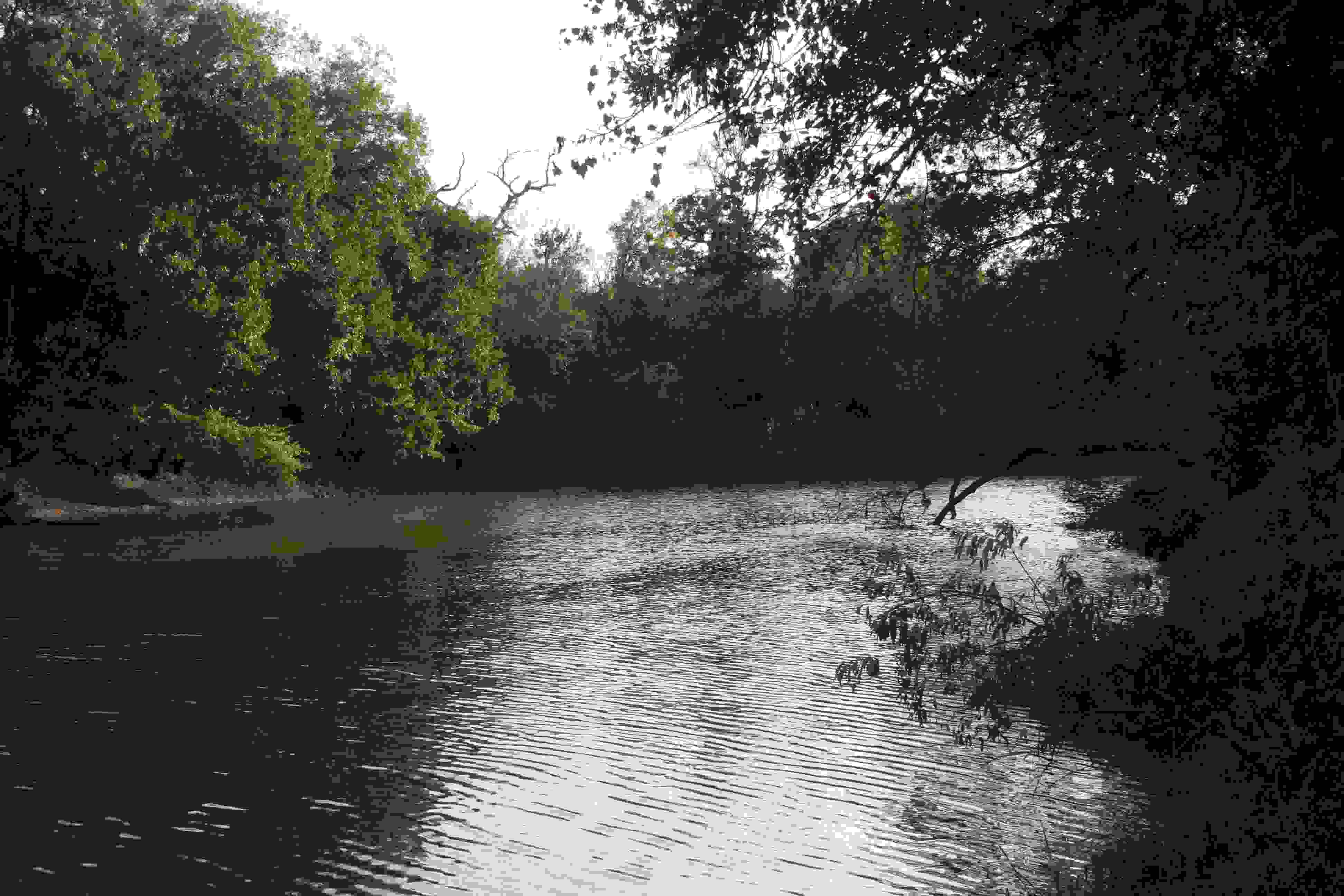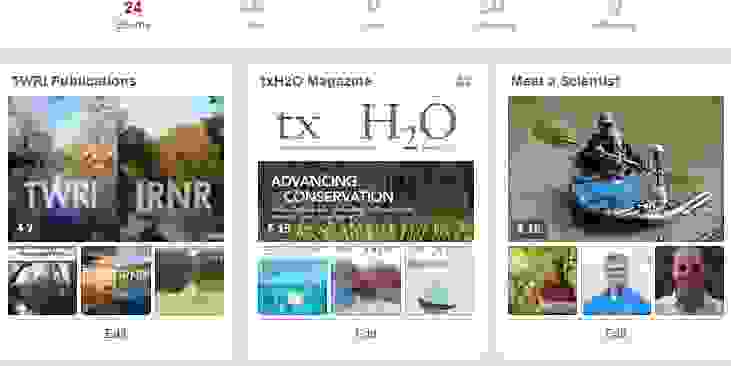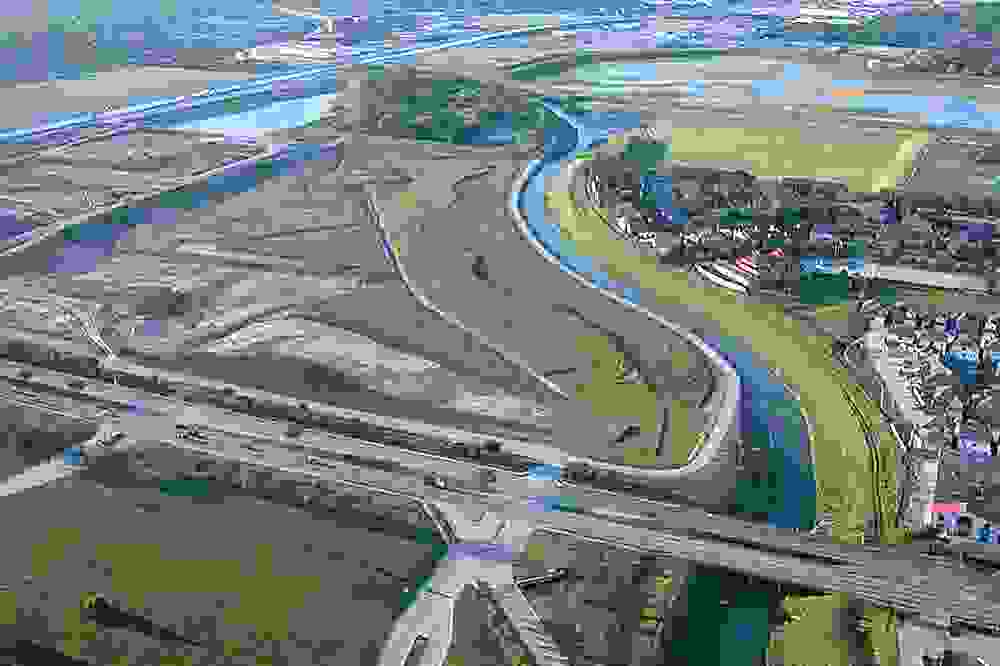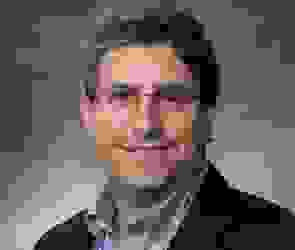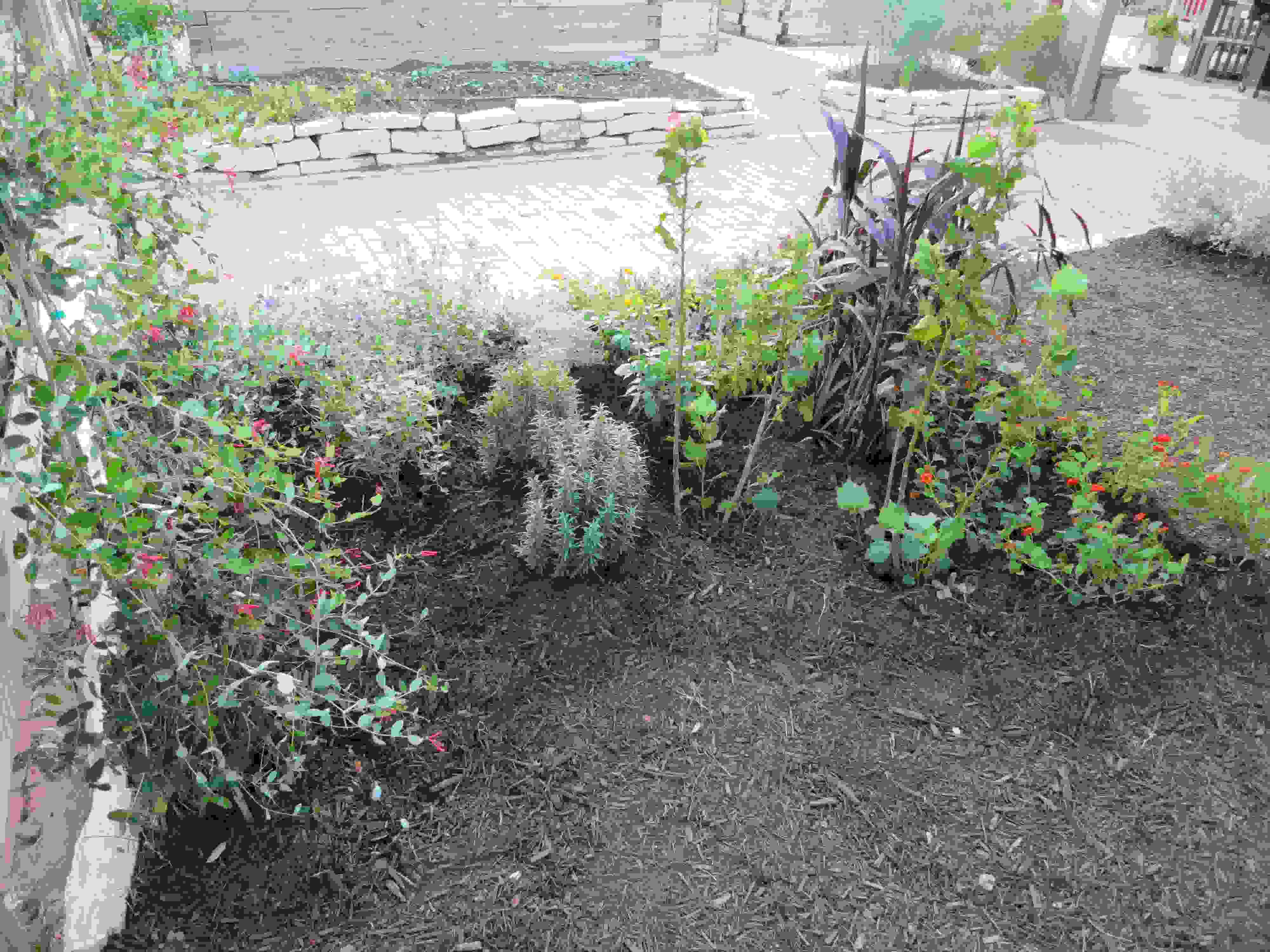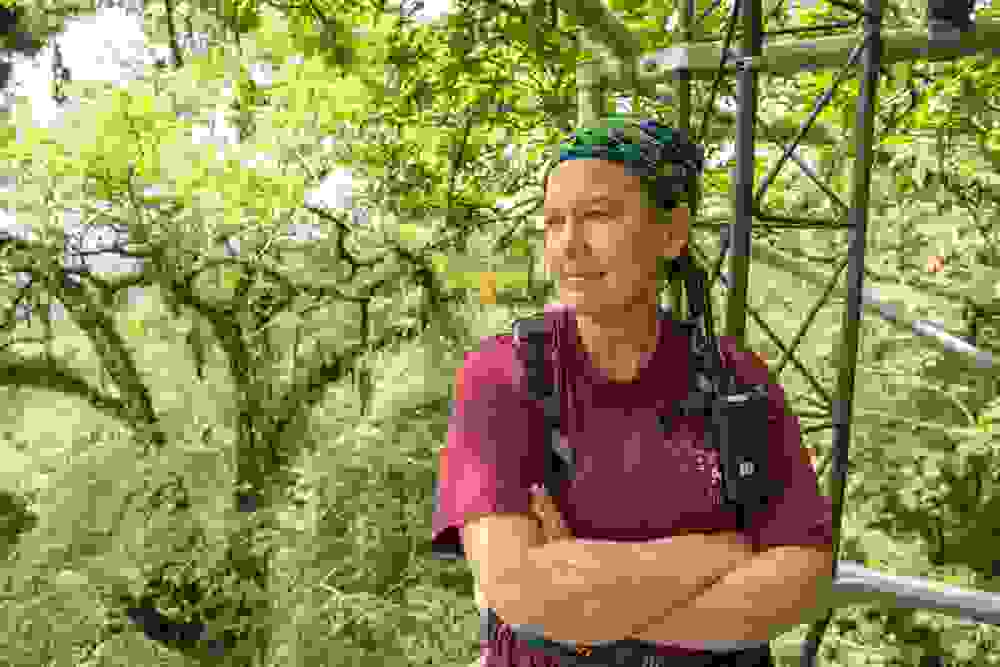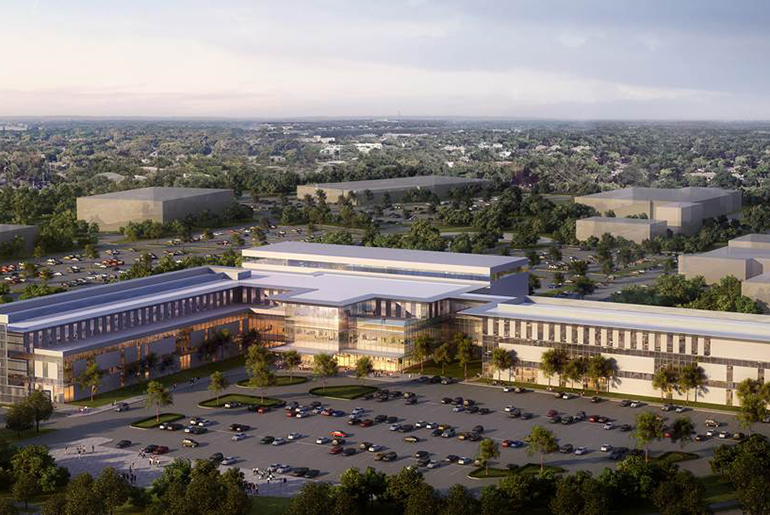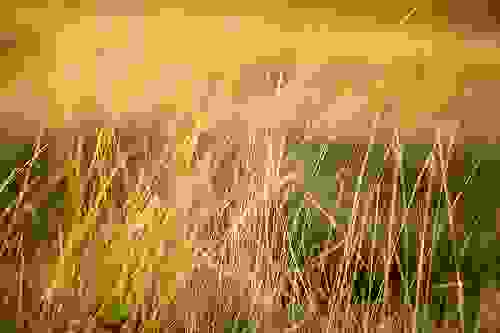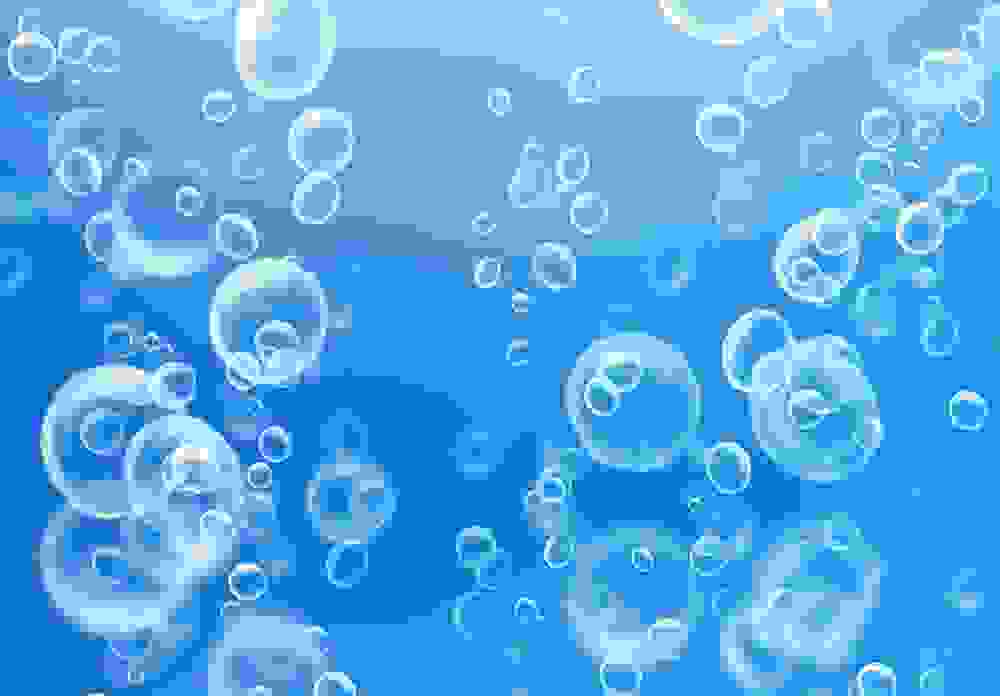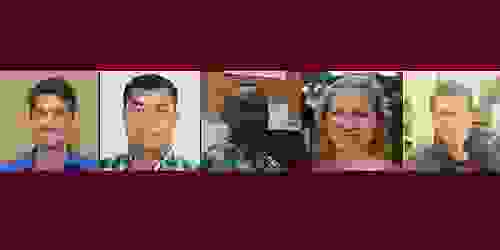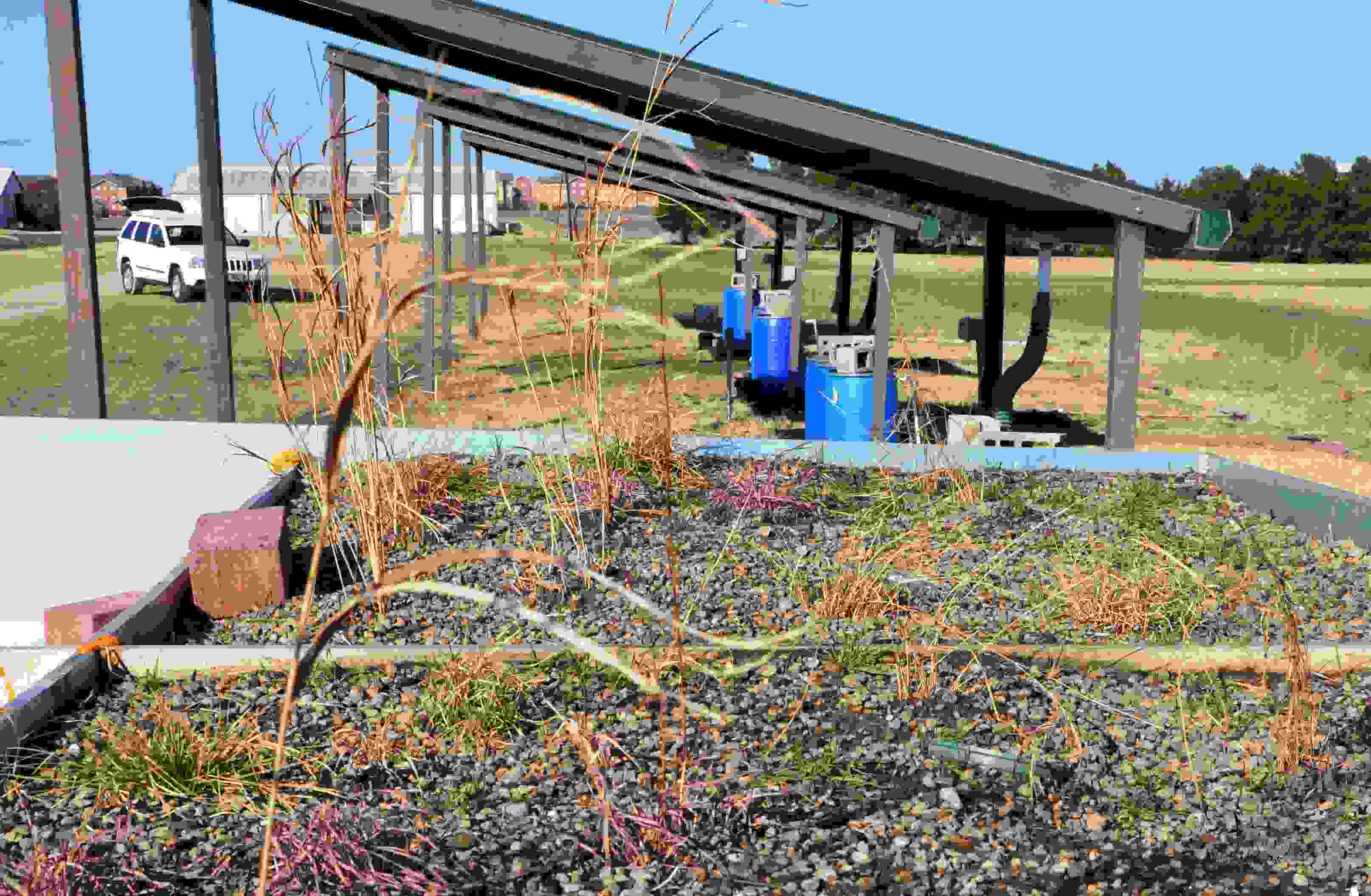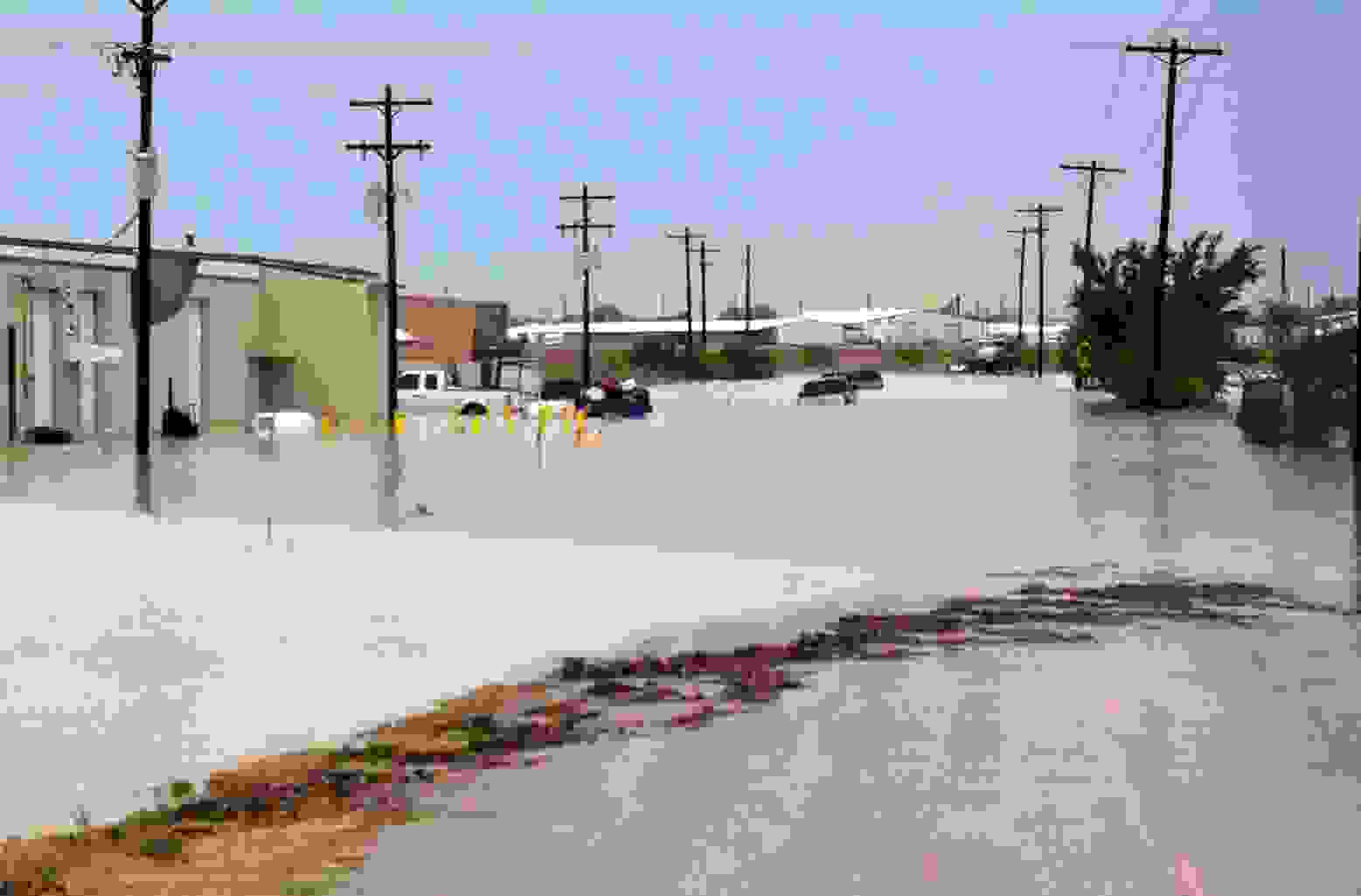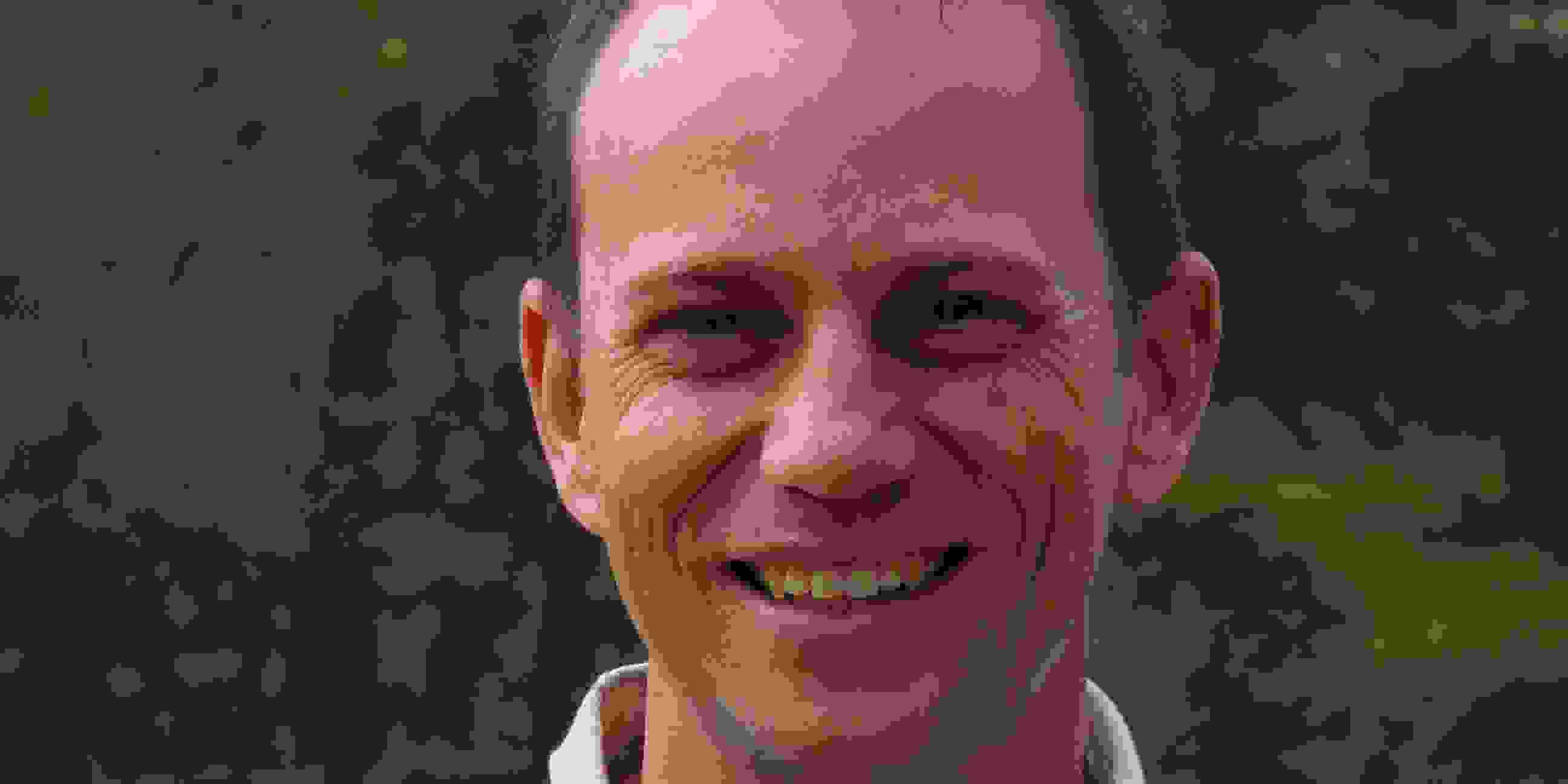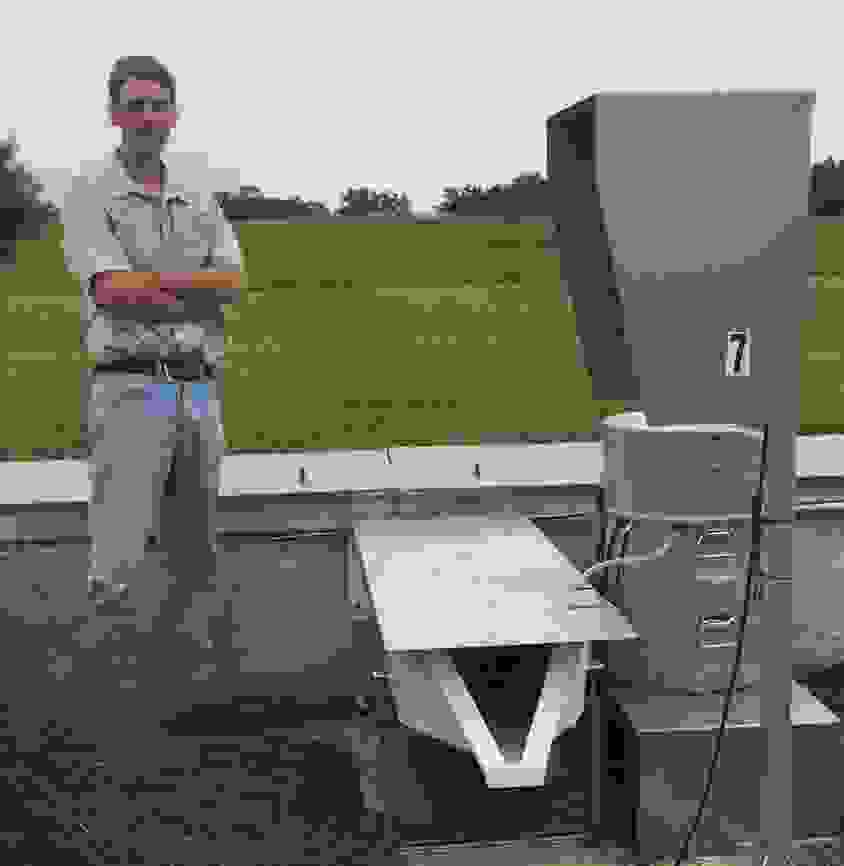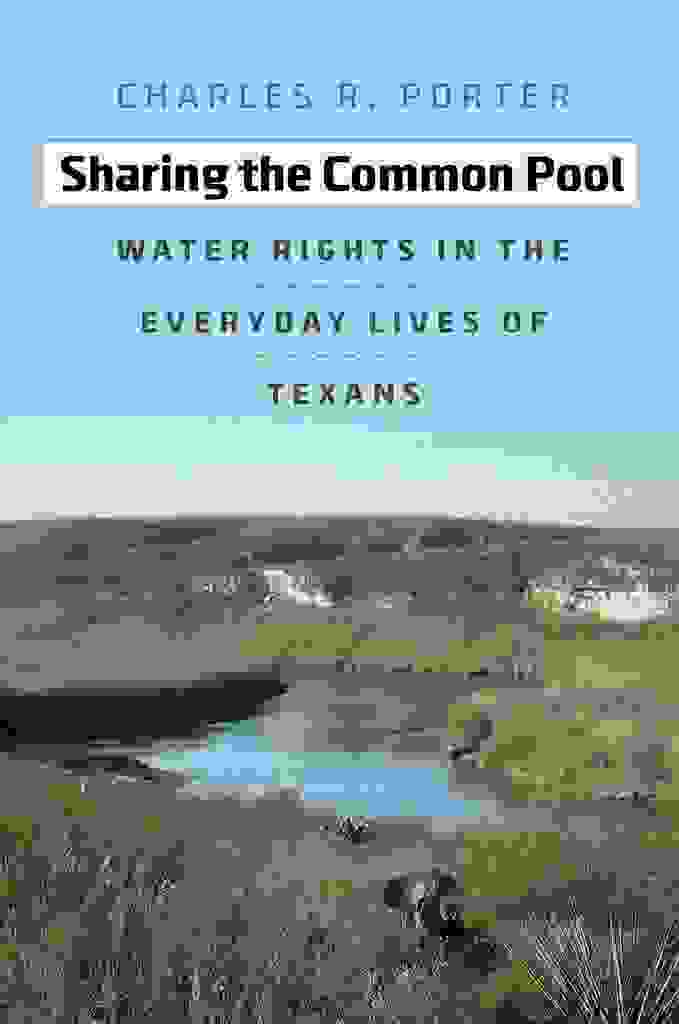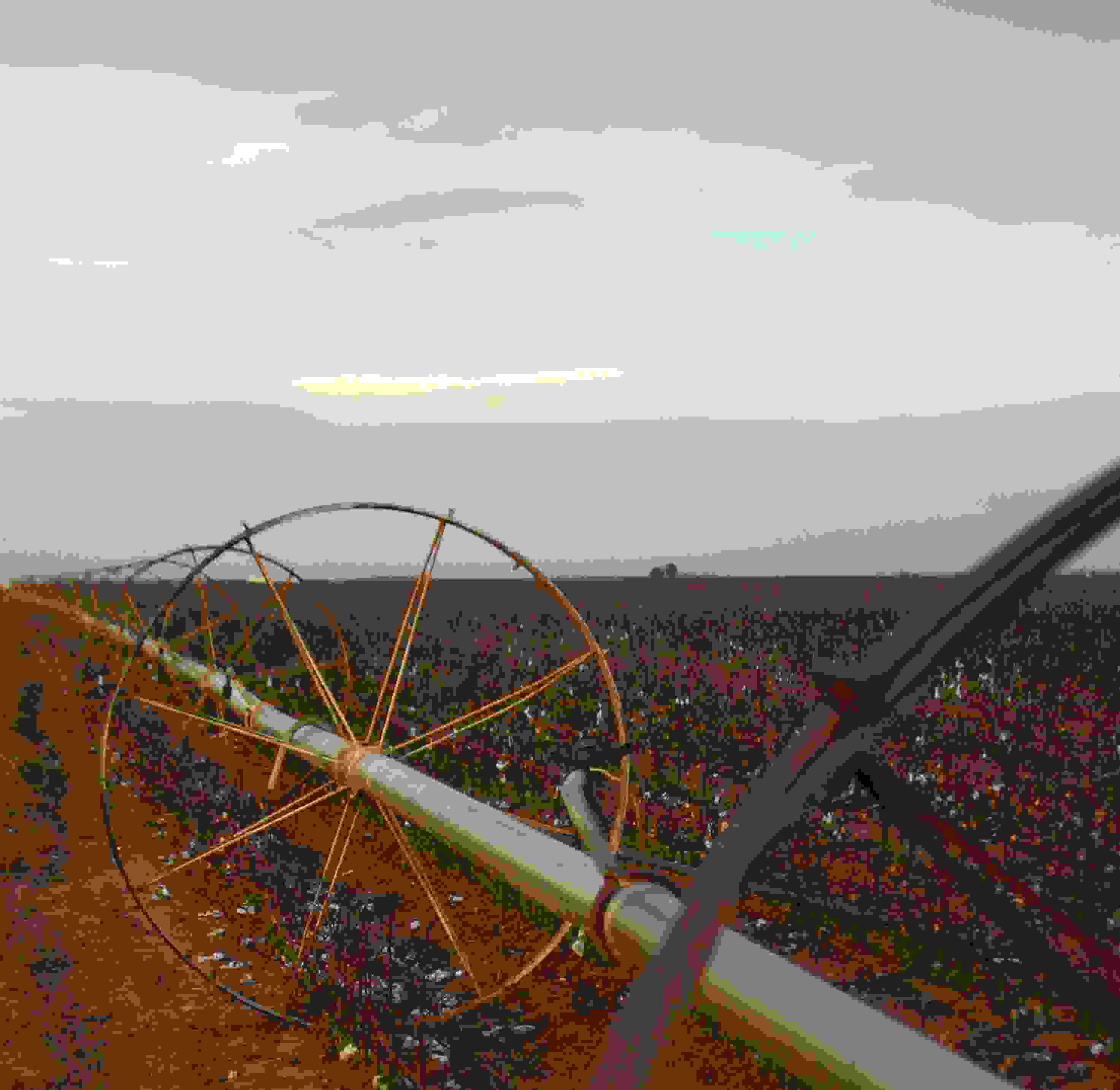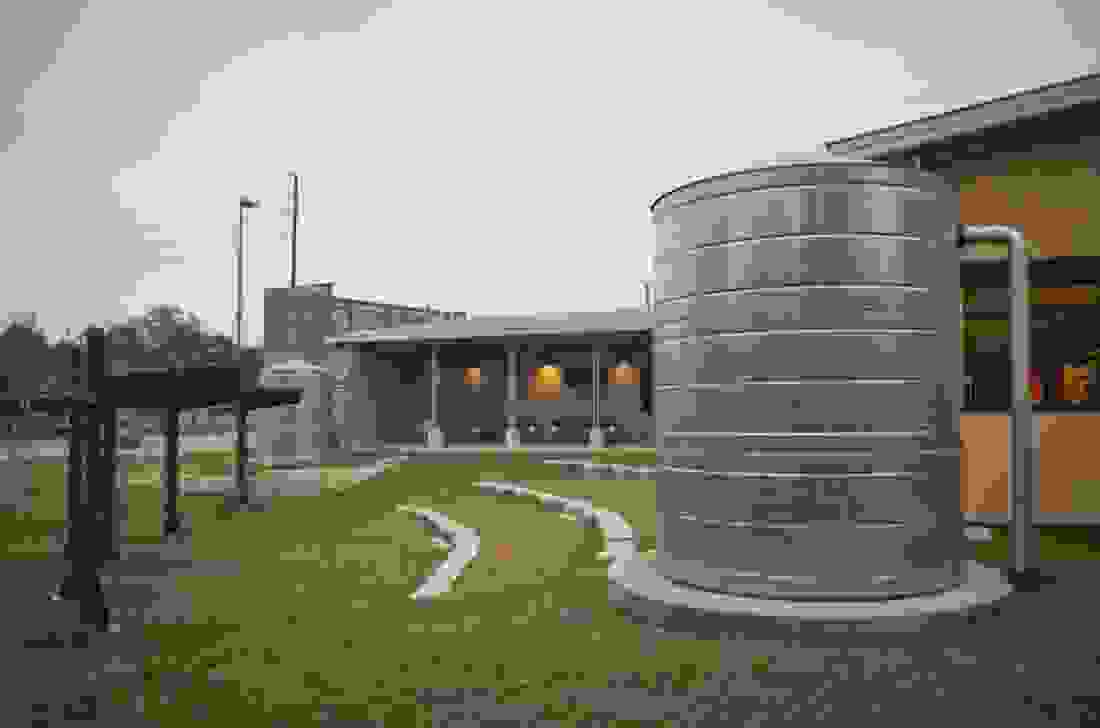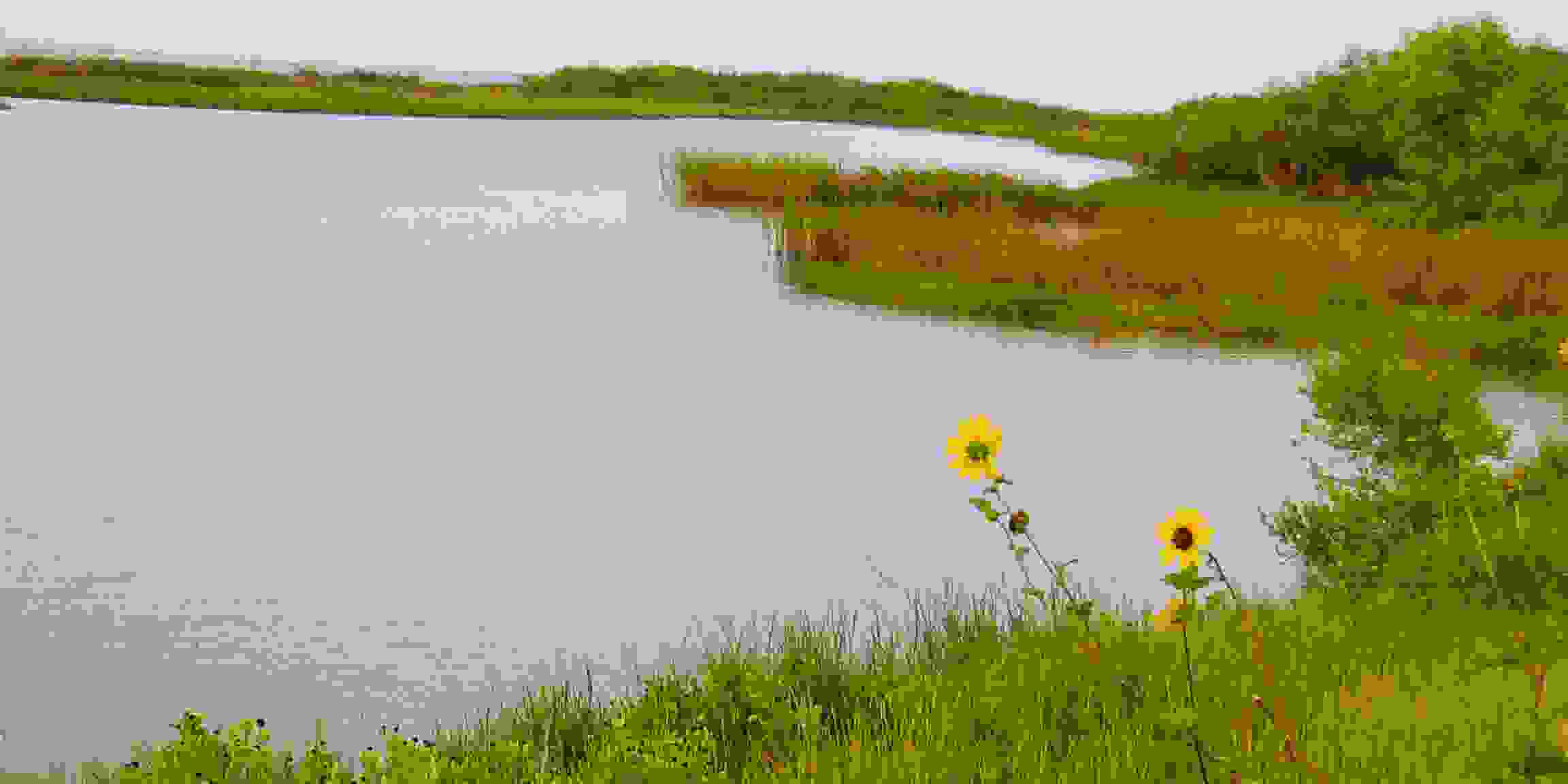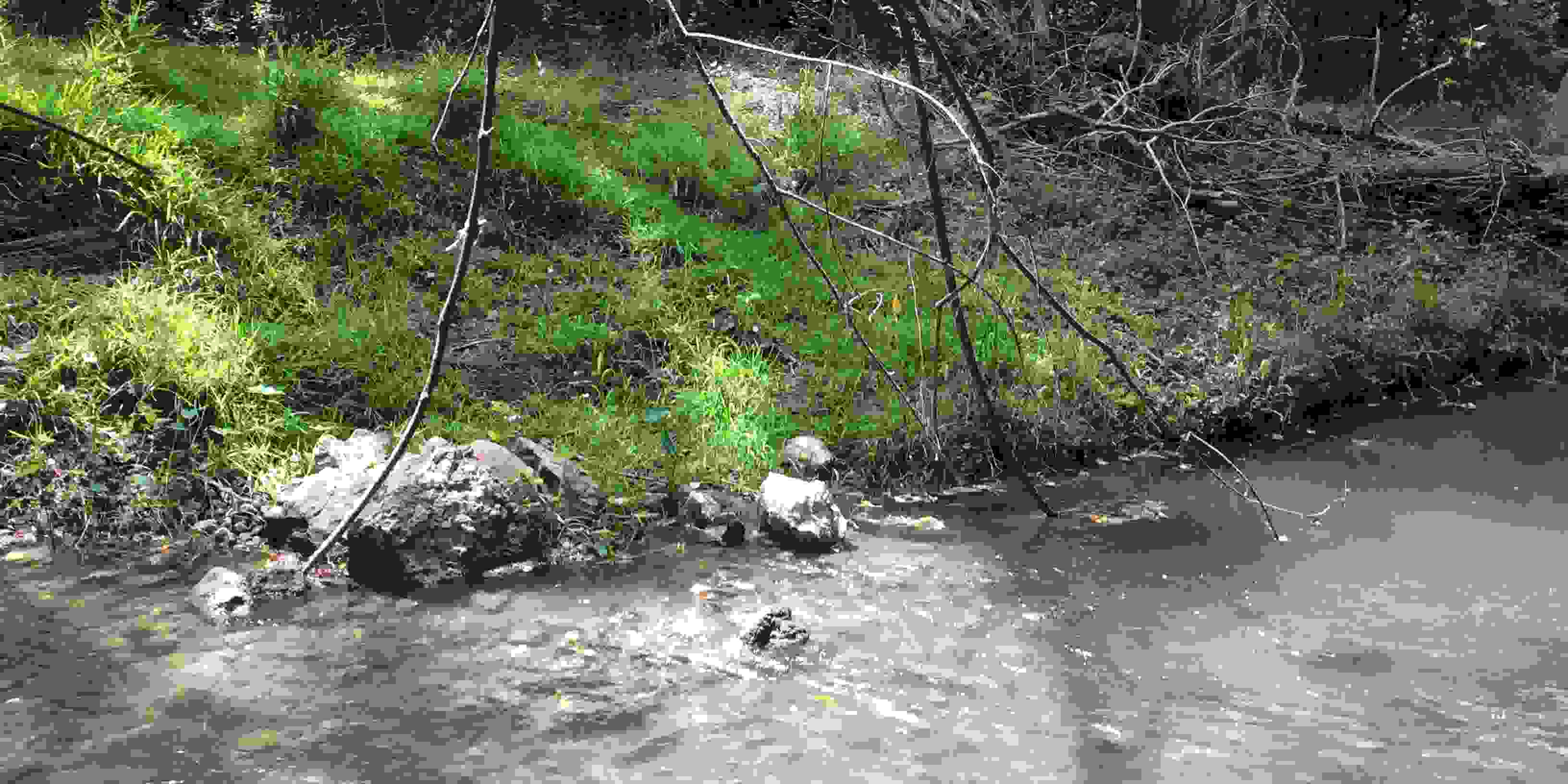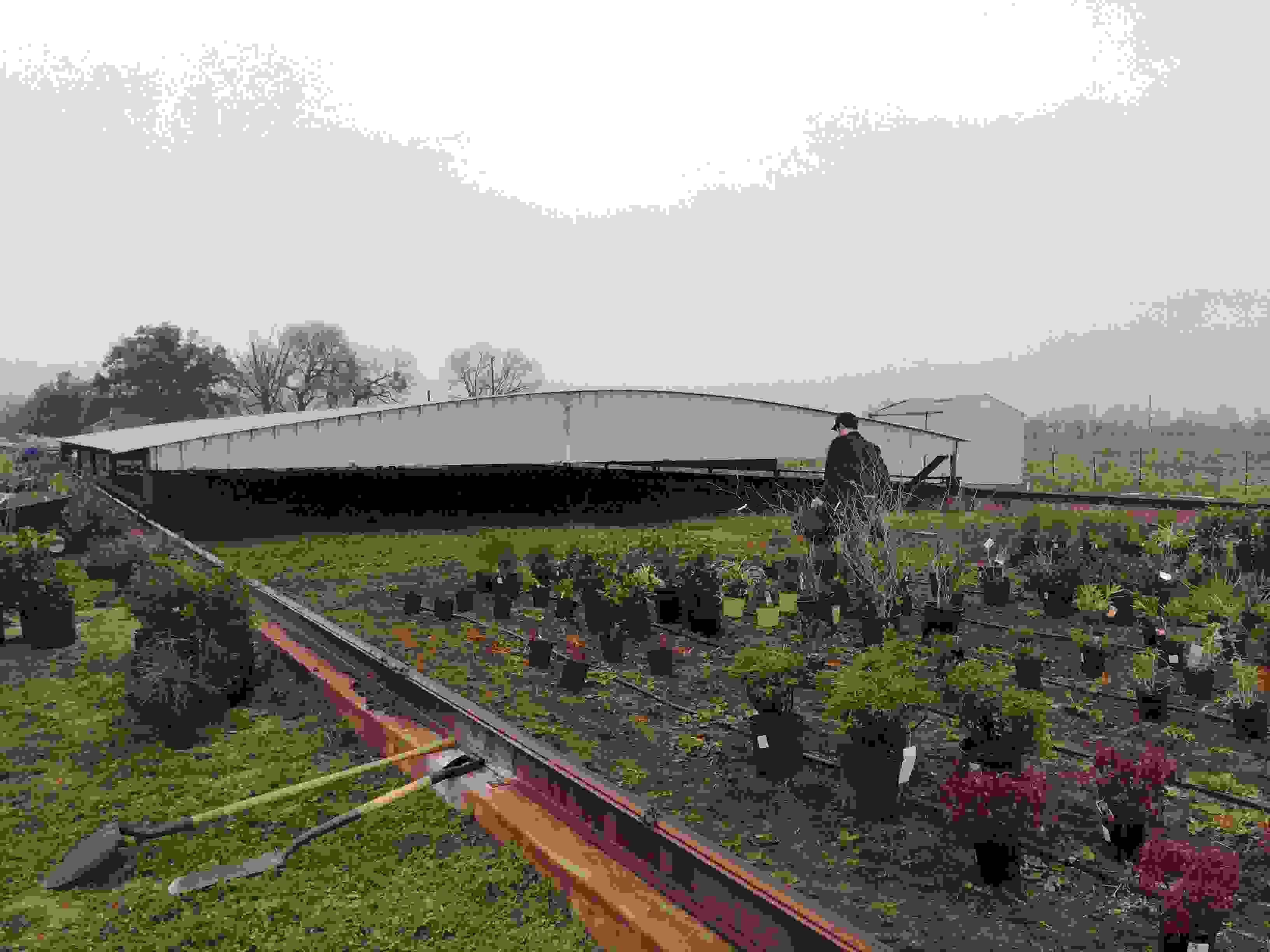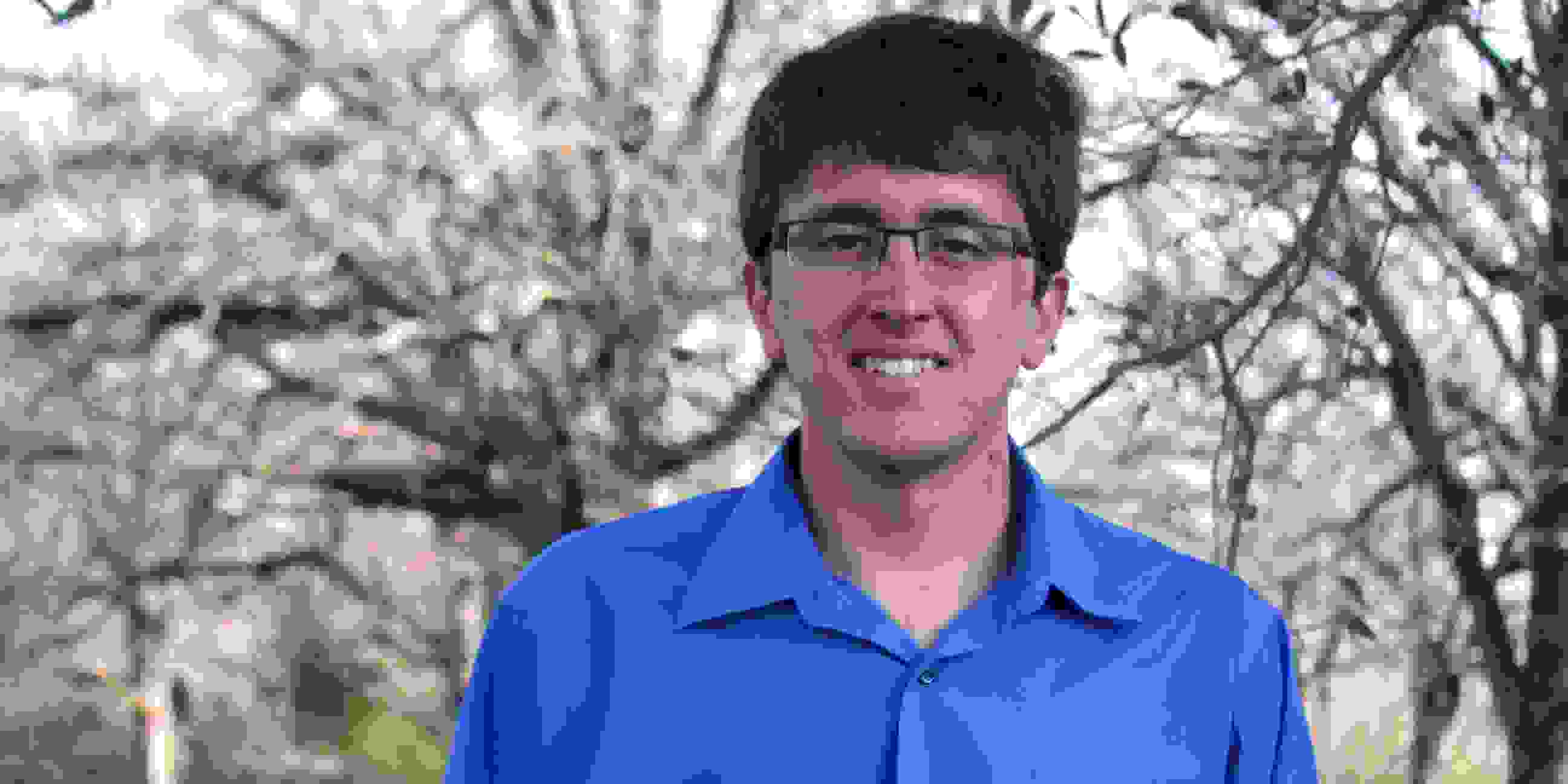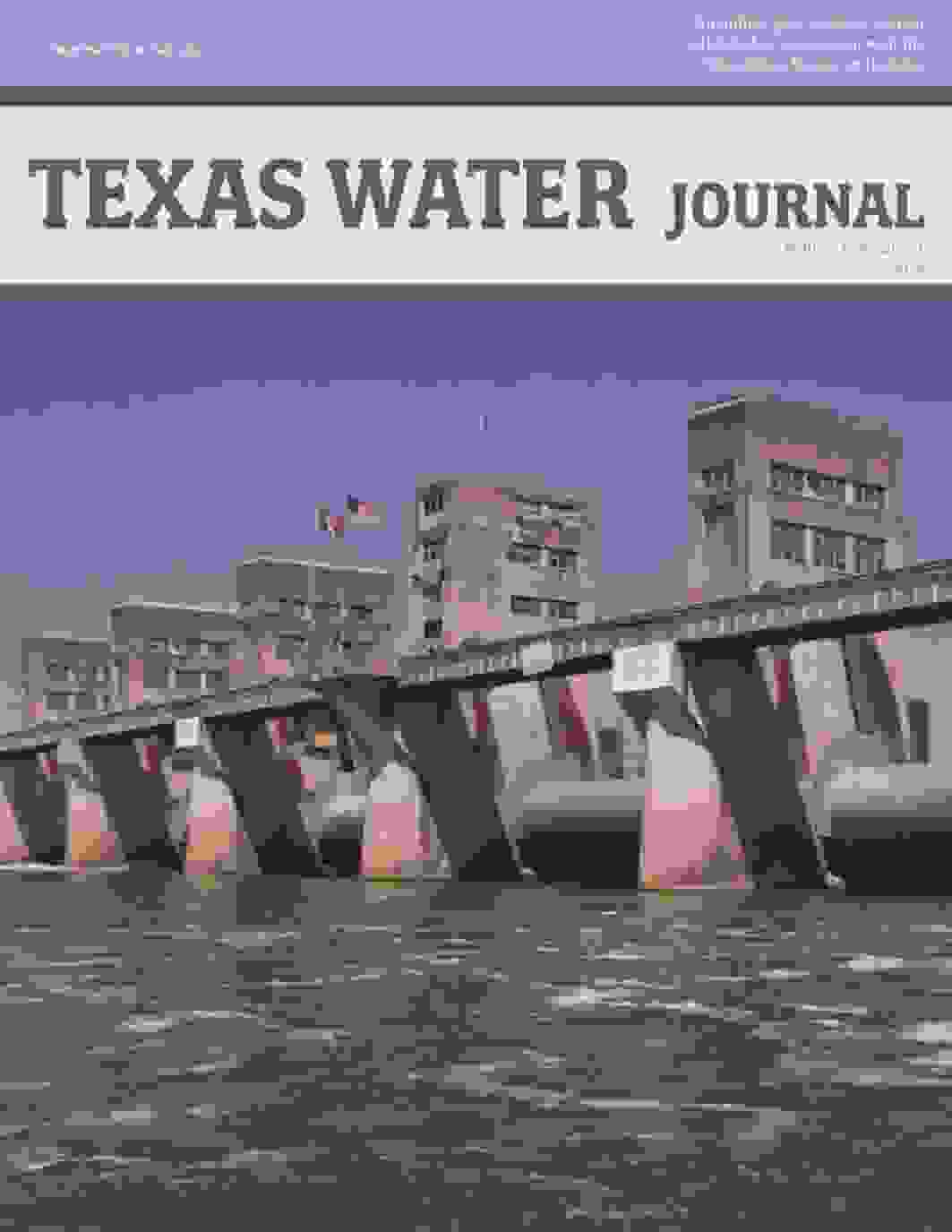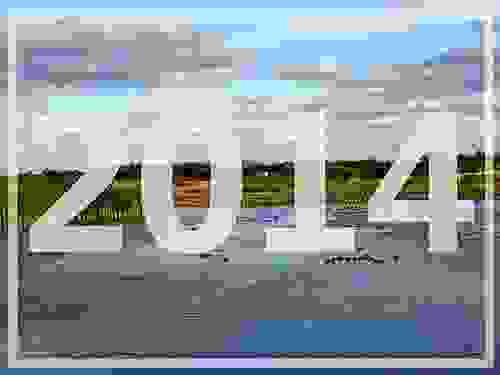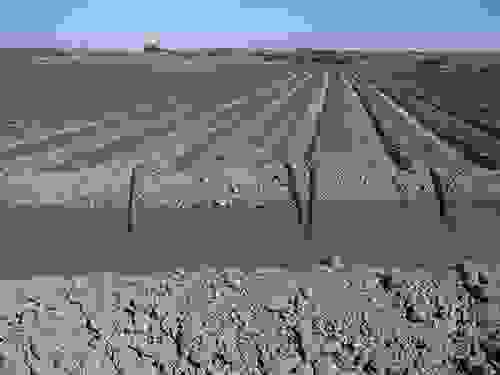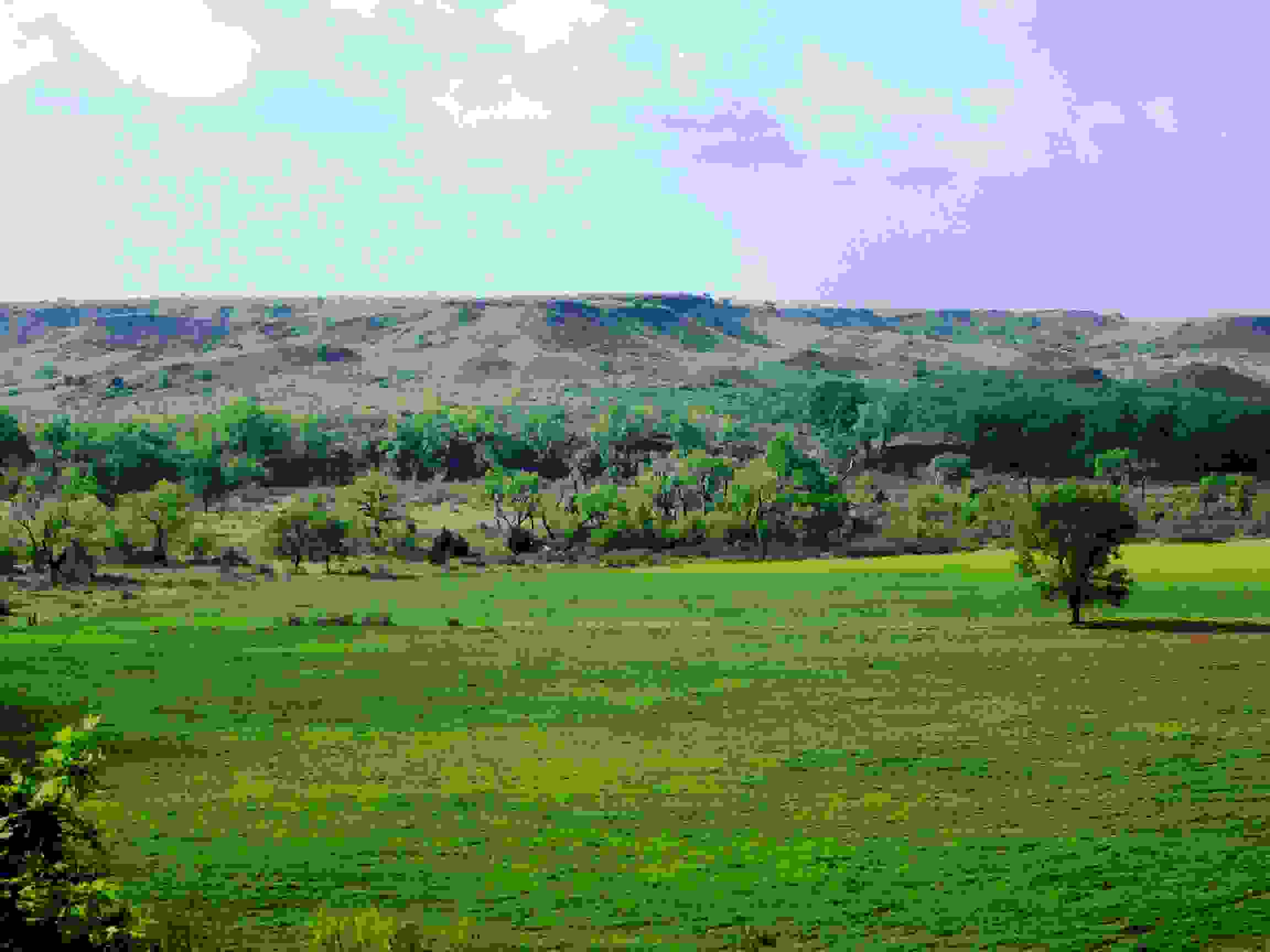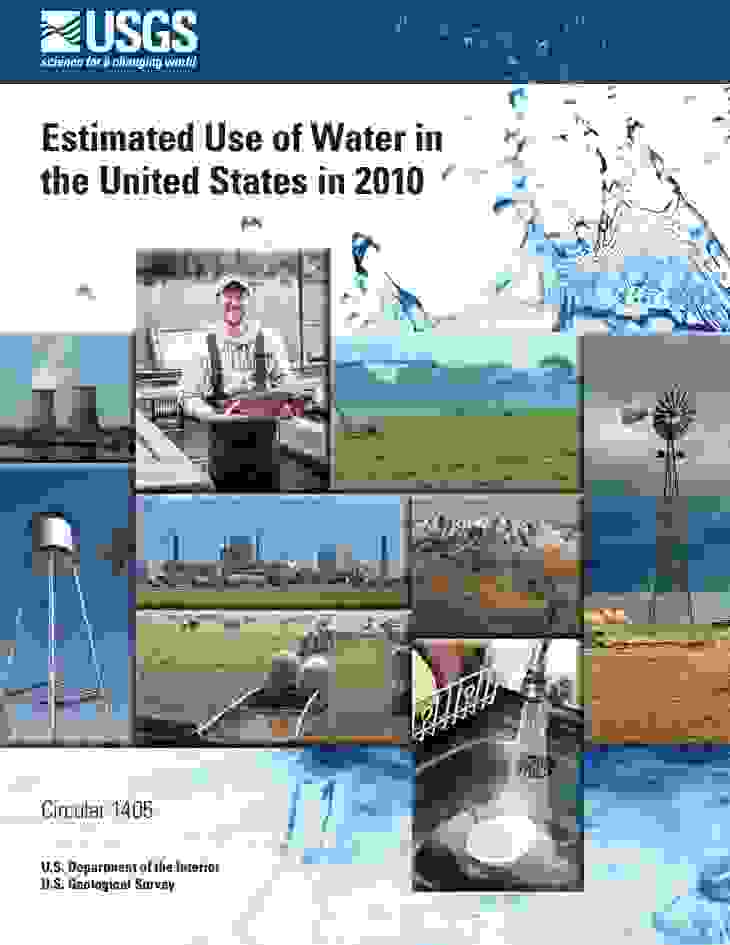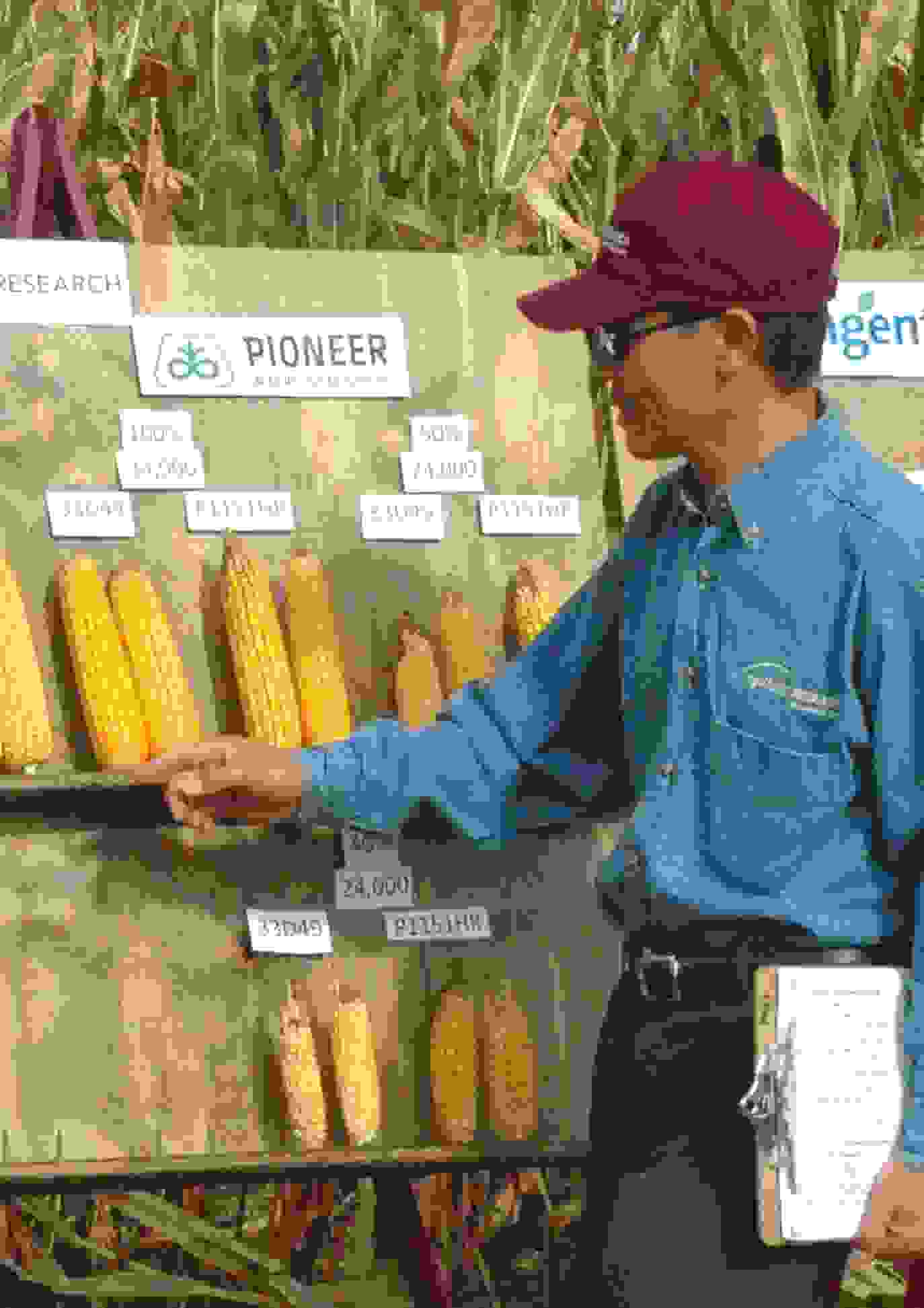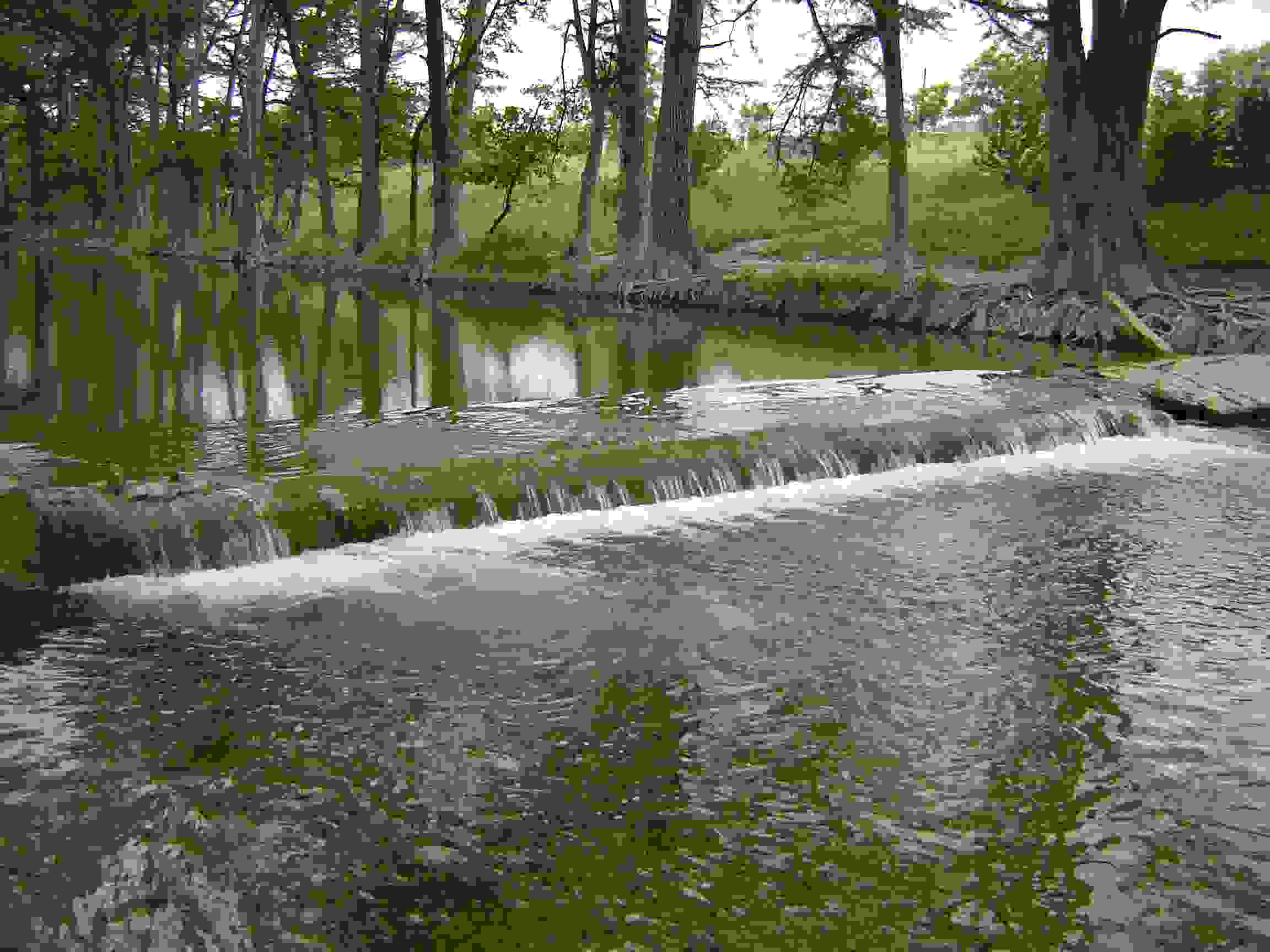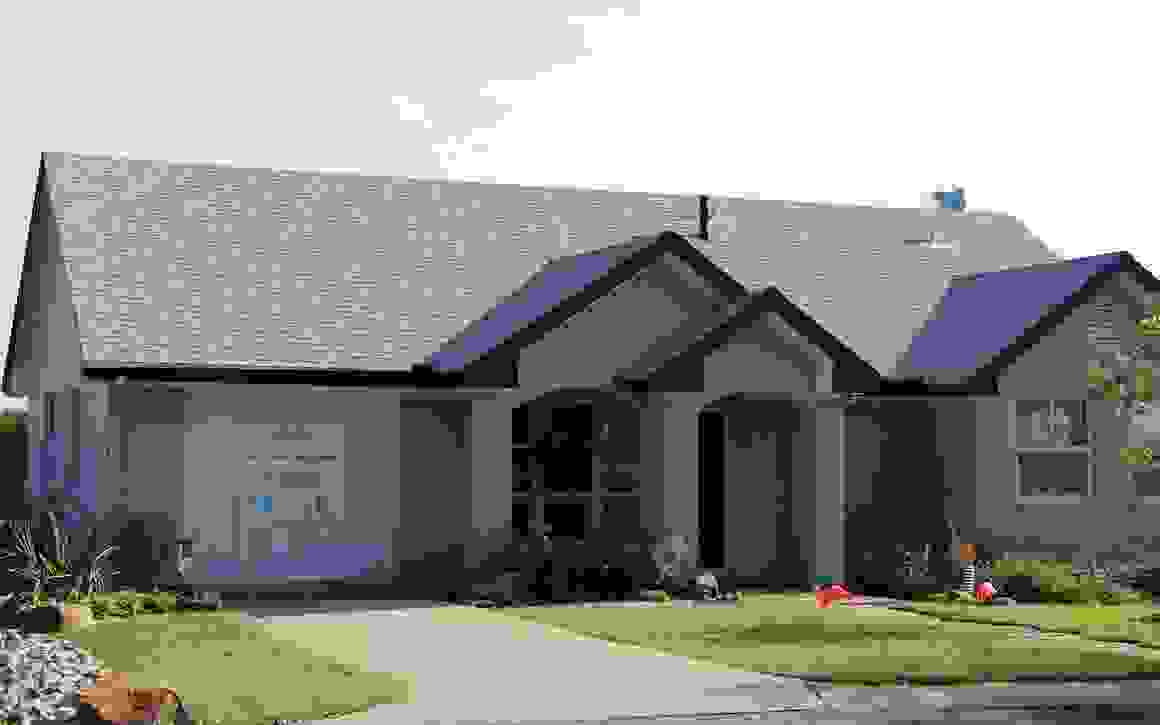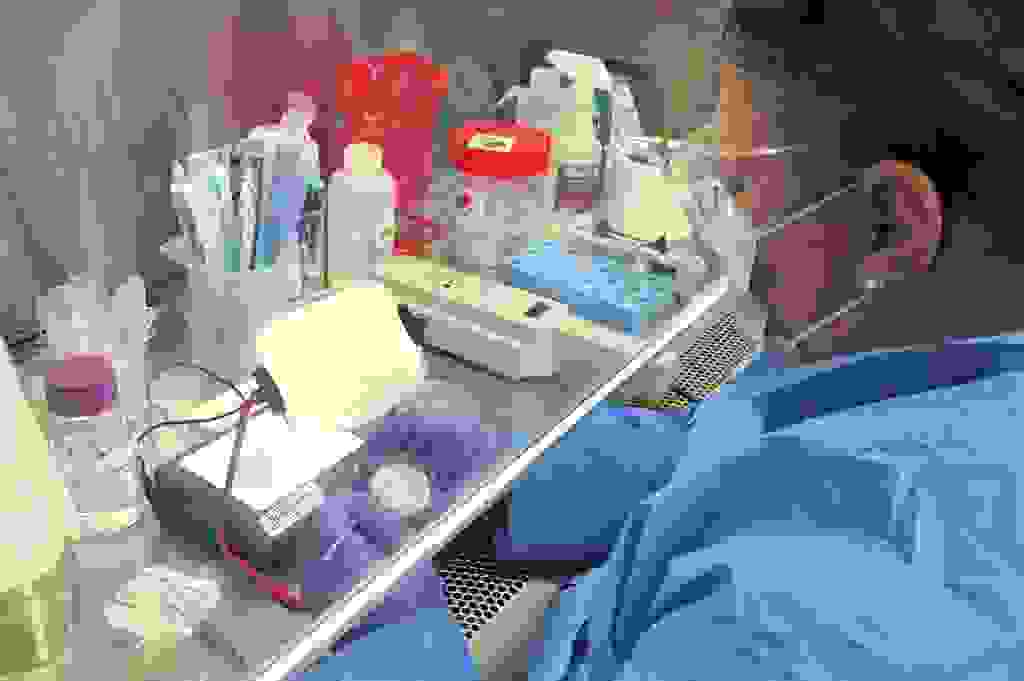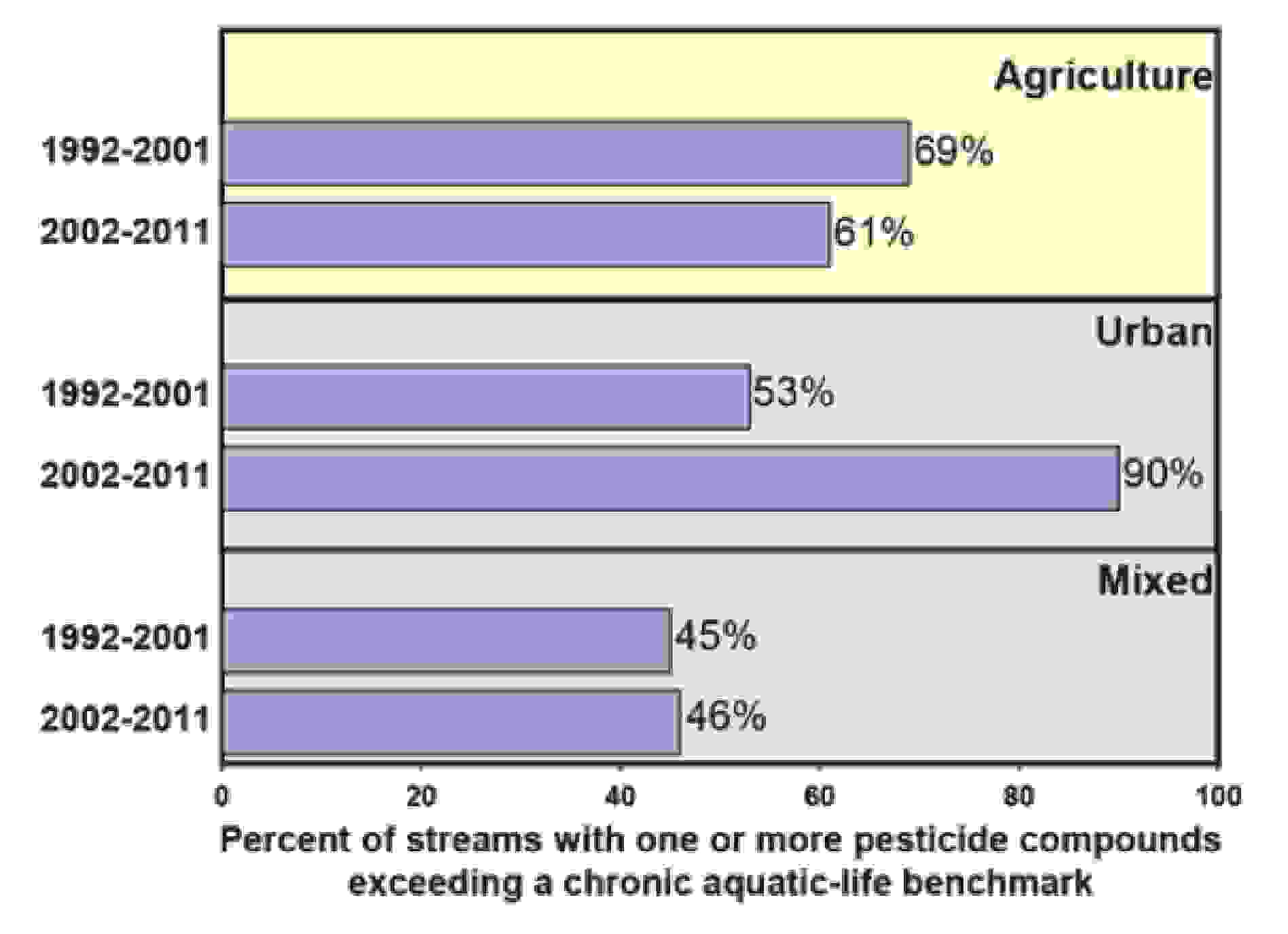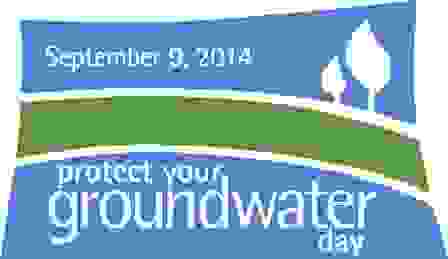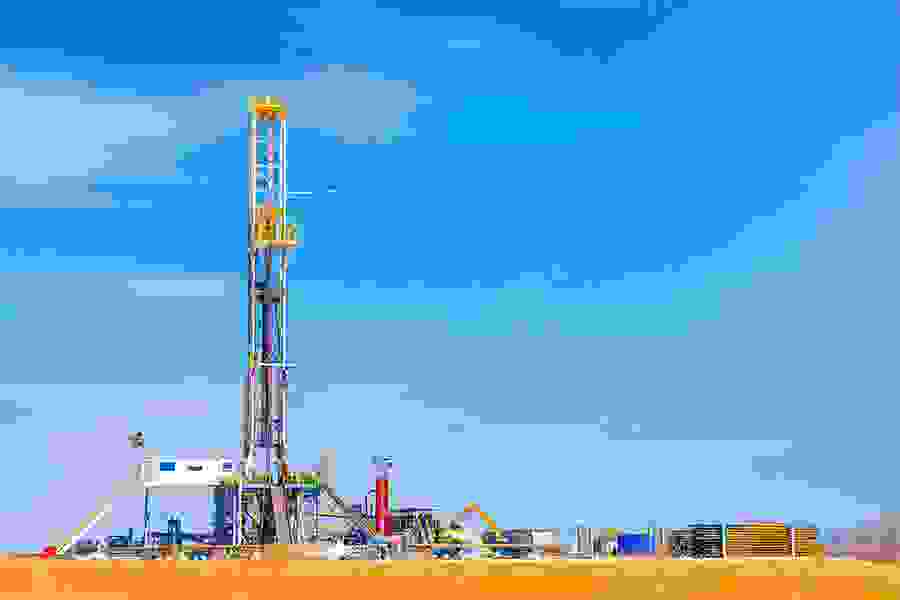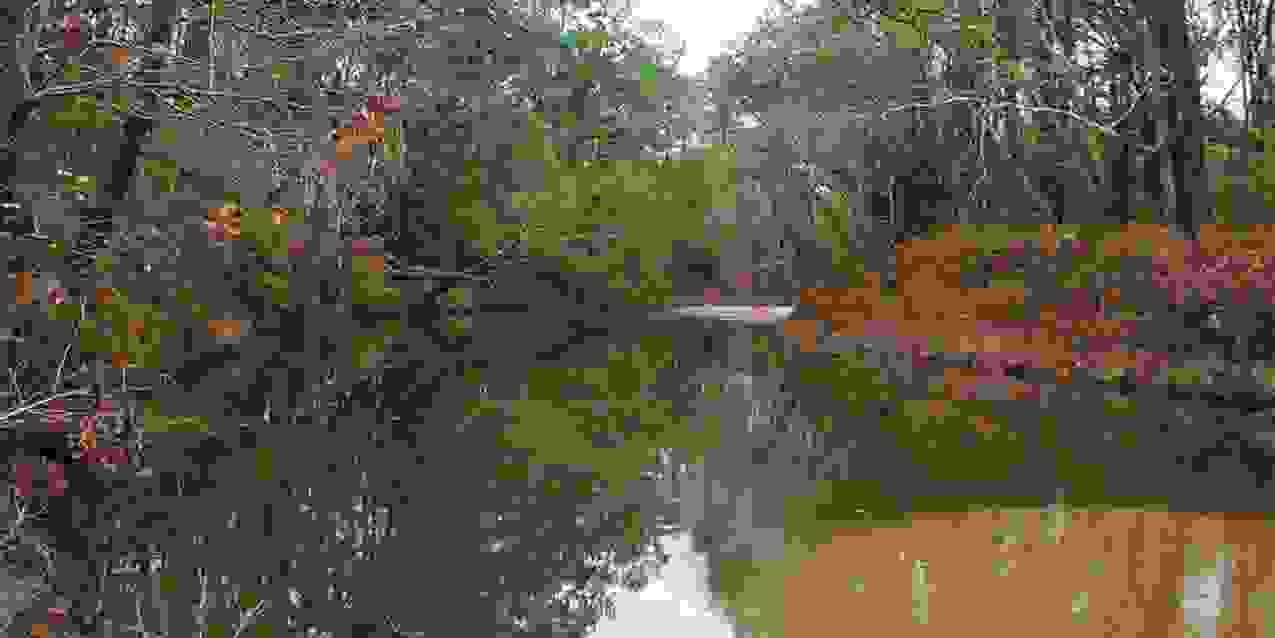New TWRI-led Grow Zone project at Wolf Pen Creek Park shows promise for stream restoration, cultivates native plants along urban creek.
Read MoreFollow along with TWRI's water team as we monitor one of our newest projects, Sandy Creek.
Read MoreAs part of TWRI's Watershed Planning Short Course program, watershed coordinators and other water resource professionals convened in College Station for a watershed roundtable May 20.
Read MoreCatch up on the latest peer-reviewed research on Texas water from universities throughout the state.
Read MorePreparing students for water-focused careers, Texas A&M professor expands one of the university's fastest-growing courses.
Read MoreThis Texas A&M researcher has dedicated his career to improving community resilience and environmental public health outcomes.
Read MoreResidents near Benavides, Falfurrias, Robstown, Rio Grande City, Laredo, Zapata, Hebbronville, Alice and Kingsville are invited to free well water screenings and results meetings.
Read MoreLocal stakeholders invited to learn about and contribute to improving water quality.
Read MoreThe Texas Water Journal has published a new article in Volume 16, titled “Dam Failure and Reconstruction in the Guadalupe Valley Lakes Region of Central Texas,” by Andrew T. Adams, Melinda Villagran, and Robert E. Mace.
Read MoreTexas A&M undergraduate students have gained valuable technical and professional skills while working alongside TWRI scientists.
Read MoreFollow along with TWRI's water team as they collect water measurements and PFAS samples in the Lavaca River and Port Lavaca.
Read MoreResidents of the Brushy Creek watershed and well owners near Thrall, Georgetown and Taylor are invited.
Read MoreSan Fernando and Petronila Creek watershed residents are invited to a free educational workshop on septic system maintenance.
Read MoreThe public is invited to join in helping improve local water quality on June 5.
Read MoreResidents of the La Nana Bayou watershed are invited to the educational program.
Read MoreResidents of Blanco County are invited to well water screenings and a results meeting.
Read MoreThe Texas Water Journal has published a new article in Volume 16, titled "Projected Reservoir Rating Curves and Their Utility for Water Planning in Texas," by John Zhu, D. Nelun Fernando, Holly Holmquist, Nathan Leber, and Carla G. Guthrie.
Read MoreResidents of Medina County are invited to well water screening and results meeting.
Read MoreResidents in and near the Medina River watershed are invited to learn more about riparian management.
Read MoreStudent researchers from across campus presented science-based solutions to some of the world’s most pressing water problems on April 23 at Texas A&M Water Day.
Read MoreCatch up on the latest peer-reviewed research on Texas water from universities throughout the state.
Read MoreTWRI and Texas A&M AgriLife agencies help promote the importance of voluntary land stewardship.
Read MoreRevisit the 2025 Urban Riparian Symposium, cohosted by the Texas Water Resources Institute and the Texas Riparian Association.
Read MoreResidents of Harrison, Gregg, Rusk, Marion, Panola Counties are invited to water well screenings and results meetings.
Read MoreLocal stakeholders are invited to learn about and contribute to improving water quality in the watershed.
Read MoreTWRI is sponsoring a Texas A&M University graduate student, Cash Kinsey, as he works at the Environmental Protection Agency headquarters in Washington, D.C..
Read MoreMary Michael Zahed and Deborah Breedlove recently joined the institute’s team.
Read MoreResidents of Brewster, Jeff Davis and Presidio Counties Counties are invited to water well screenings and results meetings.
Read MoreMill Creek watershed area residents are invited to the free program.
Read MoreResidents of Andrews, Crane, Ector, Howard, Loving, Martin, Midland, Upton, Ward, and Winkler counties are invited to water well screenings and results meetings.
Read MoreLearn about TWRI’s water quality monitoring process with this dispatch from a recent spring day collecting data at Town Creek in beautiful weather.
Read MoreMatt Stellbauer and Texas A&M researchers conducted a review on multiple-use water services (MUS).
Read MoreResidents in Hays County are invited to low-cost water well screenings and results meeting.
Read MoreThe Texas Water Journal has published a new article titled Microplastics and Microfibers in River Sediments: A Review of Current Literature and New Data from Texas Rivers, by Rebecca A. Owens.
Read MoreFacing similar water research challenges, TWRI leadership met with Italian water scientists and leaders in January.
Read MoreSince 2008, the short course has taught hundreds of water professionals how to develop watershed protection plans.
Read MoreThe U.S. EPA recently reviewed and accepted the Middle Yegua Creek Watershed Protection Plan, a major accomplishment for the coalition of local stakeholders and state officials who collaboratively created the science-based plan, led by TWRI.
Read MoreTWRI continued to lead and innovate in 2024, and the institute welcomed new TWRI Director Giovanni Piccinni, Ph.D.
Read MoreTexas A&M’s Kung-Hui “Bella” Chu centers her research on the biodegradation of environmental contaminants.
Read MoreCatch up on the latest peer-reviewed research on Texas water from universities throughout the state.
Read MoreLocal stakeholders invited to Medina River watershed protection plan meeting focused on urban stormwater and improving local water quality
Read MoreCarters Creek watershed area residents are invited to the free program.
Read MoreCatch up on new research on Austin-area drinking water, international household water insecurity, Houston wastewater treatment plants in heavy rain events, arsenic levels and more.
Read MoreLocal stakeholders are invited to learn about and contribute to improving water quality in Davidson Creek.
Read MoreTWRI’s Rosario Sanchez, Ph.D., and colleagues studied groundwater hotspots along the U.S.-Mexico border.
Read MoreThe “Building a Resilient Texas: Symposium on the Food, Energy, Water, and Health (FEWH) Nexus as a Catalyst for Sustainability in Texas and Beyond” will be Feb. 24-25 in College Station, hosted by the Division of Research at Texas A&M University.
Read MoreThe voluntary, stakeholder-driven watershed protection plan was created to improve water quality in the Medina River below Diversion Lake, located in the San Antonio River basin.
Read MoreThe workshop will cover best management practices for grazing livestock, weed management and feral hogs, and TWRI's Matt Stellbauer will give a Matagorda Basin Watershed update.
Read MoreThe Texas Water Journal has published a new program review in Volume 16, titled 2024 State Flood Plan: History in the Making, by the Texas Water Development Board.
Read MoreResidents are invited to water well screenings and results meeting.
Read MoreProgram specialists Anna Eismont and Sarah Stannard have joined TWRI’s water team.
Read MoreScientists examined PFAS chemical prevalence in a rapidly urbanizing Rio Grande Valley watershed.
Read MoreTexas A&M AgriLife hosted the 2024 Turfgrass and Landscape Field Day at the Dallas AgriLife Research and Extension Center in October to highlight ongoing turfgrass research studies.
Read MoreThe Texas Water Journal has published a new commentary in Volume 15, titled Now or Never: It’s Time to Address Water Scarcity in Texas by Senator Charles Perry, Chairman of the Senate Water, Agriculture, and Rural Affairs Committee.
Read MoreCatch up on the latest peer-reviewed research on Texas water by TWRI scientists and from universities throughout the state.
Read MoreWilson County residents are invited to a water well screening and a results meeting.
Read MoreThe Texas A&M University student is researching rain garden design as part of a sustainable approach to urban stormwater management.
Read MoreTWRI is hosting the virtual workshop to help water resources and natural resources professionals.
Read MoreLin researches optical sensors for water quality monitoring.
Read MoreThe institute is currently hiring a part-time administrative assistant, who will provide the TWRI leadership team with scheduling, coordination and administrative support.
Read MoreTWRI Research Specialist Ed Rhodes was recently honored for research published on the rangeland implications of the declining Ogallala Aquifer.
Read MoreLocal stakeholders are invited to continue learning about improving water quality in the Medina River below Medina Diversion Lake.
Read MoreThe Texas Water Journal has published a new article in Volume 15, titled Best Management Practices to Mitigate Contamination of Karstic Aquifers from Emergency Fire-Control Runoff by Rudolph A. Rosen, Geary M. Schindel, Ronald Green, and Walter Den.
Read MoreBrushy Creek watershed area residents are invited to the free program.
Read MoreThe Healthy Lawns and Healthy Waters Program will host a residential rainwater harvesting and turf management training on Nov. 13 for Bastrop County.
Read MoreYing Li, Ph.D., has dedicated his career to addressing environmental challenges caused by greenhouse gas emissions and made strides toward solar-energy enabled water purification techniques.
Read MoreRead the latest peer-reviewed research on Texas water by TWRI scientists and from universities throughout the state.
Read MoreThe program has empowered thousands of watershed professionals with the tools and skills needed to help stakeholders improve local water quality.
Read MoreThe Texas Water Resources Institute has awarded 2024-25 Mills Scholarships to five graduate students conducting water-related research at Texas A&M University.
Read MoreThe institute has awarded 2024-25 U.S. Geological Survey Graduate Research Grants to Sarah Davis and Alexandra Prouse, Elena Lundeen, and Nowrina Rahim for their water-related research projects.
Read MoreThe Texas Water Resources Institute has named two Texas A&M University professors as 2024-2025 TWRI Faculty Fellows, awarding $15,000 in federal funding to each faculty member to support their water-related research.
Read MoreThe no-cost program is open to Falls, Bell, Milam and Robertson County residents.
Read MoreThe workshop includes a discussion on watershed systems, types and sources of water pollution.
Read MoreLocal residents and stakeholders are asked to send input by Nov. 18.
Read MoreArea residents are invited to the free program.
Read MoreLocal stakeholders are invited to learn about and contribute to improving water quality in the Thompsons Creek watershed.
Read MoreThe Texas Water Journal has published a new article: Addressing Challenges to Ensuring Justice and Sustainability in Policy and Infrastructure for Texas Water Resources in the 21st Century.
Read MoreOutreach and education professionals are invited to the workshop and can learn new evaluation skills and tools such as mapping, surveys and storytelling.
Read MoreArea residents are invited to the free program.
Read MoreLocal stakeholders can learn about, contribute to improving water quality in the Medina River below Medina Diversion Lake.
Read MoreFrom creeks flowing backward to disappearing streambanks, TWRI's water quality monitoring team offers post-flooding streamside tales and insights on how extreme rain events alter water quality in creeks and rivers.
Read MoreFollow along with our water team as they conduct regularly scheduled water monitoring at one of our newest project sites, Town Creek.
Read MoreTWRI researchers conducted a broad analysis of existing U.S. water quality BMP research and found that BMPs make a measurable impact.
Read MoreAudrey McCrary and Alexander Neal were both honored with the early-career award for outstanding service to the state.
Read MoreThe Texas Water Journal has published a new article in Volume 15, titled Differences in the Hydration State of Riparian Pecan Trees Between Rural and Urban Settings, by Michael H. Snook, Ashley M. Matheny, Ana Maria Restrepo Acevedo and Maria Ulatowski.
Read MoreBandera County area residents are invited to attend the free workshop.
Read MoreKendall County residents are invited to the free rainwater harvesting and turf management program.
Read MoreResidents of the Leon River watershed are invited to the free program.
Read MoreFree soil testing will be available.
Read MoreThe Texas Water Resources Institute, or TWRI, will host a free Texas Riparian and Stream Ecosystem Education Program from 8 a.m.-4:30 p.m. Oct. 30 near Bay City for area residents interested in land and water stewardship in the watersheds of Matagorda Bay.
Read MoreGiovanni Piccinni, Ph.D., brings global and agricultural experience to the institute.
Read MoreUsing historical records, TWRI Research Scientist Ed Rhodes and co-authors have published new research about the ever-changing Navasota River.
Read MoreTWRI Program Specialist Audrey McCrary always knew her future was in science and the outdoors.
Read MoreSamples will be screened for contaminants and salinity.
Read MoreThe Texas Well Owner Network will provide low-cost water screenings for contaminants, including total coliform bacteria, E. coli, nitrate-nitrogen and salinity.
Read MoreStakeholders are invited to learn about and contribute to improving water quality in the Medina River below Medina Diversion Lake.
Read MoreThe Texas Water Resources Institute recently published the summer 2024 issue of txH2O magazine, focused on the modern challenges facing Texas aquifers.
Read MoreThe Texas Well Owner Network, TWON, is hosting well water screenings Aug. 13-14 in Hempstead for residents of Waller County. Samples will be screened for contaminants and salinity.
Read MoreRead the latest peer-reviewed research on Texas water by TWRI scientists and from universities throughout the state.
Read Morestormwater quality and quantity by measuring the runoff at community garden sites in the Dallas area.
Read MoreCrista Kieley, a graduate student in the Department of Marine Biology at Texas A&M University, researches the complex forces driving cyanobacterial blooms in warm monomictic lakes, which overturn only once a year.
Read MoreLoren Henley is the newest team member at the Texas Water Resources Institute (TWRI).
Read MoreBaffin Bay watershed residents are invited to free educational workshops on septic system maintenance.
Read MoreRound Rock area residents are invited to the free Healthy Lawns and Healthy Waters event on July 24.
Read MoreResidents are invited to learn about, and contribute to, improving water quality in the watershed.
Read MoreMeet Bardia Heidari, Ph.D., whose childhood interest in animals and ecosystems led him to his current role as a TWRI research scientist studying green infrastructure, climate change impacts and urban stormwater.
Read MoreRead the latest peer-reviewed research on Texas water by TWRI scientists and from universities throughout the state.
Read MoreThe Texas Water Journal has published a new article in Volume 15, titled Water Reuse in the Hill Country: Lessons from Existing Reuse Facilities in Texas and Opportunities to Advance Reuse in Comal County, by Rachel N. Hanes.
Read MoreResidents will learn about, contribute to water quality improvements.
Read MoreGiovanni Piccinni, Ph.D., will return to Texas A&M AgriLife Research with a wealth of expertise to bolster his new role as director of TWRI effective Aug. 1.
Read MorePrivate water well screenings set for Barton Spring Edwards Aquifer Conservation District July 10-11
Residents in the Barton Springs Edwards Aquifer Conservation District are invited to water well screenings and results meeting July 10-11.
Read MoreTexas Water Resources Institute held its semi-annual Texas Watershed Coordinator Roundtable in Combine, Tx Apr. 30- May 1. The two-day tour and roundtable is part of the Watershed Planning Short Course program and brings together watershed coordinators and other water resource professionals from across the state.
Read MoreEmi Kimura, Ph.D., has had a passion for plants her entire life. Now an associate professor in the Department of Soil and Crop Sciences in Texas A&M University’s College of Agriculture and Life Sciences, a Texas A&M AgriLife Extension Service agronomist and the extension state peanut specialist, she helps agricultural producers across Texas.
Read MoreLocal stakeholders are invited to learn about and contribute to improving water quality in Middle Yegua Creek.
Read MoreThe free workshop is open to local residents and stakeholders.
Read MoreResidents near Benavides, Falfurrias, Robstown, Rio Grande City and Kingsville are invited to free water well screenings and results meetings.
Read MoreLocated at the Texas A&M AgriLife Research and Extension Center in Dallas, these water experts are pursuing solutions for urban and suburban water challenges.
Read MoreTWRI's Kelly Albus helped hundreds of students develop videos for the National Geographic competition.
Read MoreGet a behind-the-scenes look at TWRI's water team conducting regular water quality monitoring in Deer Creek and Pond Creek during the total solar eclipse on April 8.
Read MoreLandowners, producers, Ogallala Aquifer Program scientists and lawmakers shared challenges and solutions at the March summit, followed by the OAP Annual Meeting.
Read MoreThe University Council on Water Resources (UCOWR) recently named the Texas Watershed Planning Program as the recipient of the 2024 Education and Public Service Award.
Read MoreRead peer-reviewed publications related to Texas water by scientists from universities throughout the state.
Read MoreThe Texas Water Resources Institute is hiring a communications student intern, a position open to graduate or undergraduate students.
Read MoreTexas Water Resources Institute has partnered with the Texas State Soil and Water Conservation Board (TSSWCB) and the Association of Texas Soil & Water Conservation Districts to highlight Soil and Water Stewardship Week and the importance of voluntary land stewardship in Texas.
Read MoreStakeholders in the Little Bay area are invited to learn about ongoing water quality and human health research in the watershed.
Read MoreTWRI will host a free Texas Riparian and Stream Ecosystem Education Program May 14 from 9 a.m. - 5p.m. in Azle for area residents interested in land and water stewardship in the Eagle Moutain Lake Watershed.
Read MoreLocal stakeholders are invited to learn about and contribute to improving water quality in Middle Yegua Creek.
Read MoreTWRI will host a free Texas Riparian and Stream Ecosystem Education Program from 8 a.m.-4:30 p.m. May 2 in Kingsville for area residents interested in land and water stewardship in the Baffin Bay watershed.
Read MoreResidents of Ector and Midland counties are invited to water well screenings and results meetings.
Read MoreCatch up on peer-reviewed publications and research by Texas Water Resources Institute, Texas A&M AgriLife, Rice University, University of Texas, Texas State University and Texas A&M University scientists.
Read MoreThe Texas Water Journal has published a new article in Volume 15, titled Case Study of Groundwater Management Issues at the Forefront of Large scale Production from a Confined Aquifer: The Vista Ridge Project, by Steven C. Young, Carlos Rubinstein, and Russell Johnson.
Read MoreMarch 27 at Texas A&M, students filled the 12th Man Hall with research posters, gathering together faculty, graduate students and undergraduate students from many departments and programs to present and share water-related research.
Read MoreLocal stakeholders are invited to learn about and contribute to improving water quality in the Thompsons Creek watershed.
Read MoreLocal landowners and residents are invited, and continuing education units are available.
Read MoreThe free workshop is for local residents and landowners, and continuing education units are available.
Read MoreWorkshop will focus on watershed health and minimizing bacteria contamination originating from grazing livestock and wild pigs.
Read MoreLocal stakeholders are invited to continue learning about and contributing to improving water quality in the Medina River below Medina Diversion Lake.
Read MoreResidents of Cottle, Childress, Foard, Hardeman, King and Motley counties are invited to water well screenings and results meeting
Read MoreThree new faces and one returning have joined the Texas Water Resources Institute's staff: Marisa Collura, Samantha Murray, Ward Ling and Tina Hendon.
Read MoreThe Texas Water Resources Institute is partnering with Texas A&M’s College of Arts and Sciences to provide valuable internships.
Read MoreTexas A&M students are invited to present research posters, the afternoon water lecture is open to the campus community and volunteers are needed.
Read MoreThe institute looks back on a productive year of providing science-based, community-supported solutions for Texas’ pressing water quantity and quality challenges through internal expertise and external collaborations.
Read MoreLocal stakeholders are invited to Giddings meeting to learn about and contribute to improving water quality in Middle Yegua Creek
Read MoreShankar Chellam, Ph.D., a professor, civil engineer and researcher in Texas A&M’s Zachary Department of Civil and Environmental Engineering, reflects on his career and advises the next generation of students.
Read MoreUpper Medina River watershed residents and stakeholders are invited to attend
Read MoreLocal stakeholders are invited to learn about and contribute to improving water quality in Middle Yegua Creek.
Read MoreThe Texas Well Owner Network is hosting a “Well Educated” water well screening Feb. 7 in Hondo to give area residents the opportunity to have their well water screened. Residents will receive water test results at Feb. 8 educational meeting.
Read MoreThe Texas Well Owner Network, in conjunction with the Mill Creek Watershed Partnership, is hosting a “Well Educated” water well screening Feb. 5 in Bellville and Brenham to give area residents the opportunity to have their well water screened. Test results meeting on Feb. 7.
Read MoreRead peer-reviewed publications by scientists from Texas A&M University, Texas A&M AgriLife, University of Texas at San Antonio, University of Texas at Austin and more.
Read MoreMeet the new and returning staff joining the institute: Matt Stellbauer, Christine Fernandez and Dean Minchillo.
Read MoreReflecting on a productive year, the TWRI team shares our top 10 most-read articles.
Read MoreMiddle and high school students can submit environmental videos to the competition, which is supported by TWRI’s Kelly Albus.
Read MoreMedina River area residents can become involved in improving water quality in the Lower Medina River watershed during a meeting in Castroville Jan. 9. Local stakeholders are invited to continue learning about and contributing to improving water quality in the Medina River below Diversion Lake.
Read MoreLocal stakeholders are invited to learn about and contribute to improving water quality in Middle Yegua Creek.
Read MoreRead peer-reviewed publications by scientists from Texas A&M University, Texas A&M AgriLife, Texas A&M - Corpus Christi, Sam Houston State University and more.
Read MoreTWRI is seeking interested and qualified early career graduate students for graduate research assistantship position(s) available at the start of the Spring 2024 semester.
Read MoreRecently published research co-authored by Texas Water Resources Institute and Oklahoma Water Resources Center scientists shows how small land management changes can improve local waterways.
Read MoreResidents of Llano, Lampasas and Goldthwaite areas are invited to private water well screenings and results meetings.
Read MoreStakeholders in the Little Bay area are invited to learn about ongoing water quality and human health research in the watershed.
Read MoreTWRI will host a free Texas Riparian and Stream Ecosystem Education Program from 8 a.m.-4:30 p.m. Dec. 6 in Glen Rose for area residents interested in land and water stewardship in the Paluxy River watershed.
Read MoreA first-of-its-kind public awareness study by Texas Water Resources Institute scientists shows that knowledge of PFAS chemicals is low.
Read MoreThe natural environment one grows up in can heavily influence their interests and path in life. Texas Water Resources Institute Research Specialist Jason Gerlich grew up outdoors, happiest when surrounded by agriculture and nature, and pursuing that love has taken him across the world and back to his home state to work on water quality issues.
Read MoreTexas Water Resources Institute held its semi-annual Texas Watershed Coordinator Roundtable in Houston Oct. 9-10. The two-day tour and roundtable is part of the Watershed Planning Short Course program and brings together watershed coordinators and other water resource professionals from across the state.
Read MoreTWRI's Duncan Kikoyo, Ph.D., developed a framework that harmonizes the characterization of drainage units on the continent of Africa in recent research published in the journal, Physics and Chemistry of the Earth.
Read MoreRead peer-reviewed publications by Texas Water Resources Institute and Texas A&M AgriLife scientists.
Read MoreResidents around the Salado Creek watershed area are invited to the free educational event.
Read MoreThe Texas Water Resources Institute recently published the fall 2023 issue of txH2O magazine, focused on new challenges facing Texas water supplies.
Read MoreSuresh Pillai, Ph.D., has worn many hats throughout his life that have led him to Texas A&M (and his current DJ hobby). As the director of the National Center for Electron Beam Research, Pillai's research and leadership has the chance to make a global impact.
Read MoreAgricultural producers in Milam and Burleson counties are invited to an agricultural irrigation workshop Nov. 10 in Caldwell, hosted by the Post Oak Savannah Groundwater Conservation District and the Texas A&M AgriLife Extension Service.
Read MoreCatch up on recent peer-reviewed research by TWRI scientists and water researchers around the state.
Read MoreWimberley area residents can have their well water screened by the Texas Well Owner Network Nov. 15.
Read MoreBrady Creek area residents are invited to learn about supporting healthy riparian areas and ecosystems.
Read MoreMilano area residents are invited to an Earth-Kind landscapes workshop Nov. 3, hosted by the Post Oak Savannah Groundwater Conservation District and the Texas A&M AgriLife Extension Service.
Read MoreLearn why the areas of land surrounding water bodies are critically important.
Read MoreAgricultural producers, local decision-makers invited to attend workshop in preparation for future conditions
Read MoreSoil erosion caused by the movement of water along the topsoil of agricultural land is a silent cause of years-long ecosystem problems.
Read MoreLocal stakeholders are invited to learn about and contribute to improving water quality in the Medina River below Diversion Lake.
Read MoreThe Texas Water Resources Institute currently has two full-time positions open on its Water Team.
Read MoreThe Texas Well Owner Network is hosting upcoming events in West Texas Oct. 10-13 to allow residents to have their well water screened.
Read MoreFunded by state appropriations from the Texas Legislature to Texas A&M AgriLife Research, the multidisciplinary research projects will advance water management in Texas.
Read MoreThe Texas Water Resources Institute (TWRI) has awarded 2023-24 U.S. Geological Survey (USGS) Graduate Research Grants to three Texas A&M University students for water-related research projects.
Read MoreThe Texas Water Resources Institute has named two Texas A&M University professors 2023-2024 Faculty Fellows, awarding $15,000 in federal funding to each faculty member to support their research.
Read MoreThe Texas Water Resources Institute has awarded 2023-24 Mills Scholarships to six graduate students conducting water-related research at Texas A&M University.
Read MoreThe Texas Water Journal has published a new commentary in Volume 14, titled 88th Texas State Legislature: Summaries of Water-Related Legislative Action, by Sarah Kirkle, Leah Martinsson, Sarah Rountree Schlessinger, Alex Ortiz, Perry Fowler, Vanessa Puig-Williams, Todd H. Votteler and Jeremy Mazur.
Read MoreCatch up on recent peer-reviewed research by TWRI scientists and water researchers around the state.
Read MoreResidents near Munday, Seymour, Granbury, Montague, Weatherford, Vernon, Wichita Falls, Henrietta, Benjamin, Decatur and Springtown are invited to Texas Well Owner Network water well screenings and results meetings.
Read MoreA Texas Watershed Steward workshop on water quality related to the Middle Yegua Creek watershed will be held Sept. 26 in Giddings.
Read MoreKeep up with the evolving drought and heat impacts in Texas with first-hand accounts from around the state.
Read MoreCatch up on recent peer-reviewed research by TWRI scientists and water researchers around the state.
Read MoreEver wondered what happens when our water quality monitoring team goes out to conduct regular monitoring? Get an up-close look at the process and learn more about what we do in this photo essay.
Read MoreLearning the ins and outs of water well maintenance can be daunting. Joel Pigg and the Texas Well Owner Network answer well owners' common questions and provide insights on protecting well water quality.
Read MoreThe Texas Water Journal has published a new article in volume 14, titled Discrete Streamflow Measurements and Waterborne Self-Potential Logging of a 43-Kilometer-Long Reach of the Elm Fork Trinity River Upstream from Dallas, Texas, by Jonathan V. Thomas, Scott J. Ikard, Roger K. Trader and David Rodriguez.
Read MoreThe award recognized a direct-mail campaign educating residents about livestock grazing management practices and septic tank maintenance activities that help protect local water quality.
Read MoreTWRI will host a free Texas Riparian and Stream Ecosystem Education Program Sept. 6 in Katy for area residents interested in the Buffalo Bayou Watershed.
Read MoreThe Texas Water Resources Institute (TWRI) Urban Riparian and Stream Restoration Program will host a workshop Aug. 16 in Nacogdoches for professionals interested in conducting stream restoration projects in East Texas.
Read MoreGrowing up in Mexico City inspired Itza Mendoza-Sanchez to care about water issues. Now a Texas A&M School of Public Health professor, she looks to connect human health and the environment through her research.
Read MoreCatch up on recent peer-reviewed research by TWRI scientists and water researchers around the state.
Read MoreSept. 26-27 in San Antonio water professionals and practitioners are invited to attend the 2023 American Rainwater Catchment Systems Association (ARCSA) Annual Conference and Expo, co-hosted by TWRI.
Read MoreOn May 3 the U.S. Environmental Protection Agency accepted the La Nana Bayou Watershed Protection Plan, which was developed by TWRI, Stephen F. Austin State University, Angelina & Neches River Authority, and stakeholders of Nacogdoches County.
Read MoreThe Texas Water Journal has published a new article in volume 14, titled Frac Sand Facilities and Their Potential Effects on the Groundwater Resources of the Monahans-Mescalero Sand Ecosystem, Permian Basin, Texas, by Robert E. Mace and Chelsea Jones.
Read MoreThe Texas Well Owner Network invites residents near Cameron, Belton, Killeen and Temple to free water screenings and results meetings.
Read MoreTeachers who work with students of all ages are invited to a Junior Master Gardener and Citizen Science Training July 12 in Fort Worth.
Read MoreThe summer 2023 issue of txH2O magazine, a publication by the Texas Water Resources Institute, will be available soon. This issue’s theme is new problems facing Texas water and the scientists developing practical solutions.
Read MoreThe Texas Water Resources Institute's water team is growing, and two new staff members recently joined the team: Adriana Williams and Amanda Tague.
Read MoreTrevor Johnson is a Ph.D. student at Texas Tech University studying agricultural economics, and his research on the economics of carbon sequestration and agricultural production is supported by the Southern Great Plains Regenerative Agriculture project.
Read MoreAs part of TWRI's Watershed Planning Short Course program, watershed coordinators and other water resource professionals convened in Corpus Christi for a two-day watershed tour and roundtable April 18-19.
Read MoreThe Texas Water Resources Institute is hiring communications student interns.
Read MoreCatch up on recent peer-reviewed research by TWRI scientists and water researchers around the state.
Read MoreThanks to tireless schoolteachers, students’ ingenuity and hard work, and support from TWRI professionals, this spring middle and high school students in Texas produced educational videos about environmental science for the National Geographic Slingshot Challenge.
Read MoreThe Texas Water Resources Institute will host a free Texas Riparian and Stream Ecosystem Education Program May 31 in Wallisville for area residents interested in land and water stewardship in the Double Bayou Watershed.
Read MoreResidents near Benavides, Falfurrias, Robstown, Rio Grande City, Kingsville and Cuero are invited to free water well screenings and results meetings.
Read MoreThe free training will cover the processes and benefits of riparian areas.
Read MoreJustin Thompson, Ph.D., strives to help Texas communities understand groundwater recoverability. With support from a 2021-22 Research Grant from the Texas Water Resources Institute (TWRI) and the U.S. Geological Survey (USGS), his research findings are helping citizens, groundwater districts and government agencies.
Read MoreTexas A&M AgriLife Extension Service’s Healthy Lawns and Healthy Waters Program will host a residential rainwater harvesting and turf management training for Brazoria County residents May 12 in Angleton.
Read MoreMeet Garrett McKay, Ph.D., assistant professor position in the Zachry Department of Civil and Environmental Engineering at Texas A&M University, who leads an Aquatic Chemistry lab and researches environmental photochemistry.
Read MoreTexas A&M University graduate student Sayantan Samanta has produced new data showing reduced or no-tillage management practices' positive impacts on runoff and soil erosion reduction in a Texas agricultural watershed.
Read MoreTexas A&M AgriLife Extension Service’s Healthy Lawns and Healthy Waters Program will host a residential rainwater harvesting and turf management training May 4 for Bell, Burnet, Coryell, Hamilton, Lampasas, Mills and Williamson counties.
Read MoreResidents near Mount Pleasant, Longview and Marshall are invited to free water well screenings and results meetings.
Read MoreFocus will be proper management, protection and restoration of riparian areas.
Read MoreWater Daze 2023 brought a student research poster competition and water seminar to Texas A&M University March 29, showcasing original research from 40 students in numerous academic programs, hosted by TWRI and Texas A&M's Water Management and Hydrological Science Program.
Read MoreEvery two years the Texas Legislature convenes in Austin for a whirlwind 180-day session. Thousands of bills are filed each session, and numerous water-related bills have been filed in the 88th Regular Session of the Texas Legislature.
Read MoreThe Journal of Contemporary Water Research and Education (JCWRE) editors recently selected the paper “Total Maximum Daily Loads and Escherichia coli Trends in Texas Freshwater Streams,” by Michael Schramm and co-authors Lucas Gregory, Ph.D., and Anna Gitter, for the JCWRE Paper of the Year Award.
Read MoreThe San Fernando and Petronila Creeks Watershed Protection Plan has been reviewed and accepted by the U.S. Environmental Protection Agency, a major accomplishment for the coalition of local stakeholders and state officials who collaboratively created the science-based plan.
Read MoreThe Texas Water Resources Institute Urban Riparian and Stream Restoration Program will host a workshop from 9:00 a.m. to 4:30 p.m. on April 18 in Austin for professionals interested in conducting stream restoration projects around central Texas.
Read MoreThe 2023 Urban Riparian Symposium brought water professionals from across Texas together to learn about completed, ongoing and future urban stream restoration projects. The annual event was held Feb. 8-10 in San Marcos, co-hosted by the Texas Water Resources Institute and Texas Riparian Association.
Read MoreCatch up on recent peer-reviewed research by TWRI scientists and water researchers around the state.
Read MoreNot only has population growth and aging infrastructure put a strain on existing stormwater drainage systems in Texas, but climate change impacts have also made extreme one-day rainfall events more common.
Read MoreThe Texas Water Resources Institute has published its latest Annual Report, sharing accomplishments and project highlights from 2022.
Read MoreThe Texas Water Journal has published a new article in volume 14, titled The Use of Historical Data and Global Climate Models to Assess Historical and Future Surface Water and Groundwater Availability in the Trinity River Basin in Texas, by Molly Milmo, Jeremy McDowell, Monica Yesildirek and Glenn Harwell.
Read MoreThe workshop will focus on East Texas water quality and watersheds, including La Nana Bayou.
Read MoreLa investigadora dedica su vida a cuidar mantos acuíferos transfronterizos.
Read MoreYina Liu's academic path has led her across oceans and deep into emerging research fields. Now an assistant professor of oceanography at Texas A&M, she is working to further our understanding of PFAS.
Read MoreAn introduction to the science behind per- and polyfluoroalkyl substances and their implications for human and environmental health.
Read MoreCatch up on recent peer-reviewed research by TWRI scientists and water researchers around the state.
Read MoreNew research from TWRI research specialist Ed Rhodes and co-authors suggests that rangeland management strategies could help slow the depletion of the Ogallala Aquifer, a key freshwater resource.
Read MoreTWRI researchers analyzed how Green Stormwater Infrastructure (GSI) can help solve communities' stormwater challenges in a recent research review, and the proposed strategies can help local decision-makers overcome barriers and install GSI for long-term benefits
Read MoreRead new technical reports and watershed protection plans recently published by the Texas Water Resources Institute's water team.
Read MoreThe Texas Water Journal has published a new article in volume 14, titled Low Flow Trends in Texas Stream Segments Serving Unique Hydrologic Functions, by Kartik Venkataraman, Narayanan Kannan, and Victoria Chraibi.
Read MoreThe Texas Water Resources Institute’s Urban Riparian and Stream Restoration Program will host a workshop from 8:30 a.m. - 4 p.m. March 1 in The Woodlands for professionals interested in conducting stream restoration projects around southeast Texas.
Read MoreThe Texas Well Owner Network is hosting a “Well Educated” water well screening Feb. 27 in Bastrop to give area residents the opportunity to have their well water screened.
Read MoreWendy Jepson, Ph.D., Texas Water Resources Institute associate director, has been recognized as a Fellow of the American Association for the Advancement of Science.
Read MoreCatch up on recent peer-reviewed research by TWRI scientists and water researchers around the state.
Read MoreThe Texas Water Resources Institute team continues to expand, and new staff members have joined the TWRI communications team and water team since the fall of 2022.
Read MoreThe Texas Water Journal has published a new commentary in volume 14, titled Water Infrastructure and Supply Are the Backbone or Achilles’ Heel of Texas’ Future: The Choice is Ours, by Senator Charles Perry, Chairman of the Senate Water, Agriculture, and Rural Affairs Committee.
Read MoreAn associate professor in the Zachry Department of Civil and Environmental Engineering at Texas A&M University, Xingmao "Samuel" Ma, is on the forefront of PFAS research.
Read MoreTexas Water Resources Institute scientist Rosario Sanchez produces the first-ever complete U.S.-Mexico transboundary aquifer map.
Read MoreOfficially, the U.S. and Mexico share 11 groundwater basins. A new map bumps that figure up to a stunning 72.
Read MoreTWRI will host a free Texas Riparian and Stream Ecosystem Education Program Dec. 6 in Denton for area residents interested in the Hickory Creek watershed.
Read MoreThe Texas Water Resources Institute has awarded two U.S. Geological Survey research grants for September 2022-August 2023.
Read MoreThe Texas Water Journal has published three new papers in volume 13: an article titled Determining Geothermal Resources in Three Texas Counties, by Joseph Batir and Maria Richards; a commentary titled Texas Comptroller’s Good for Texas Tour: Water Planning and Innovations, by Glenn Hegar; and an article titled Water Management in the Rio Conchos Basin: Impacts on Water Deliveries Under the 1944 Treaty, by Rodrigo Israel Gonzalez-Velazquez and Jose Luis Castro-Ruiz.
Read MorePartners from AgriLife Research, AgriLife Extension and the University of North Texas build an alliance to advance sustainable, equitable stormwater management.
Read MoreBill Balboa, the executive director of the Matagorda Bay Foundation, has dedicated his life and career to advocating for the protection of Matagorda Bay.
Read MoreThe Texas Water Resources Institute team has grown a lot in the past year, and it’s still growing. TWRI’s Luna Yang transitioned from being a graduate research assistant to being a full-time research specialist earlier this year. More recently, Audrey McCrary joined the TWRI team as a program specialist.
Read MoreAllen Berthold, Ph.D., has been named interim director of the Texas Water Resources Institute (TWRI); his term began June 1.
Read MoreScientists from Texas A&M AgriLife Research and the College of Agriculture and Life Sciences are undertaking a project that will shed light on how changes in land use and the encroachment of woody plant thickets are dramatically reducing groundwater recharge.
Read MoreThe Texas Water Resources Institute is continuing to grow. Three new faces have joined the team in recent months: Alexander Neal as a program specialist, Jason Nitsch as a grant administrator and Jason Gerlich as a research specialist.
Read MoreAn associate professor in Texas A&M University’s Zachry Department of Civil and Environmental Engineering, Huilin Gao, Ph.D., investigates and monitors hydrologic systems using remote sensing technology.
Read MoreWildfires are a natural phenomenon that can have regenerative properties for ecosystems. According to the U.S. Environmental Protection Agency, these fires have become more severe and harmful to vegetation, wildlife and water due to climate change.
Read MoreThe Texas Water Journal has published a new article in volume 13, titled Beyond Senate Bill 3: How to Achieve Environmental Flows in Texas Under Prior Appropriation, by Carlos Rubinstein, Curtis Seaton and Robert Mace.
Read MoreLucas Gregory, Ph.D., associate director of the Texas Water Resources Institute, will be presenting on topics in watershed management and urban riparian restoration at the Upper Guadalupe River Authority’s Riverside Nature Center in Kerrville, Texas.
Read MoreThe newest issue of txH2O magazine focuses on the future of water, examining the outlook of water infrastructure, workforce needs and alternative water sources on a changing planet.
Read MoreOver the last few months, the Texas Water Resources Institute has added two new research scientists to the team: Sayd Randle, Ph.D., and Bardia Heidari, Ph.D.
Read MoreA research specialist at Texas Water Resources Institute, Duncan Kikoyo, Ph.D., dedicates his professional life to promoting equitable stakeholder participation in water resources management and planning.
Read MoreA boil water notice, also known as a BWN, is used when water quality in a public water system falls below minimum safety standards and can pose health risks to its customers.
Read MoreTexas+Water Editor-in-Chief Todd Votteler, Ph.D., interviews Adriana Reséndez Maldonado, Mexican commissioner of the International Boundary and Water Commission.
Read MoreTexas+Water Editor-in-Chief Todd Votteler, Ph.D., interviews Maria-Elena Giner, Ph.D., U.S. commissioner of the International Boundary and Water Commission for United States and Mexico (IBWC).
Read MoreThe Texas Water Journal has published the first article of 2022 in Volume 13, titled Optimizing Water Supply through Reservoir Conversion and Storage of Return Flow - A Case Study at Joe Pool Lake, by Srividya Sekar, Amin Daghighi, Victoria CP Chen, Glenn Clingenpeel, Yu Zhang, Jay M Rosenberger and Azam Boskabadi.
Read MoreSoil and Water Stewardship Week is April 24–May 1, 2022.
Read MoreLucas Gregory, Ph.D., associate director of TWRI, spoke to KTRE 9 News of Lufkin and Nacogdoches, Texas during the Feb. 16 La Nana Bayou stakeholder meeting about the impact of E. coli in the creek and what stakeholders can do.
Read MoreSrinivasulu Ale, Ph.D., devotes his professional work to sustainable management of water resources on crop, pasture and grazing lands.
Read MoreThe Texas Water Resources Institute announces its call for proposals for students conducting water resources research. The deadline for proposal submissions is by 11:59 p.m. on March 27, 2022.
Read MoreOn January 25, the Permanent Forum of Binational Waters held an online “coffee break” discussion forum focused on native communities’ role in transboundary water conservation and management.
Read MoreTexas Water Resources Institute Senior Research Scientist Rosario Sanchez, Ph.D., recently coauthored a new white paper about U.S.-Mexico border water management.
Read MoreThe Texas Water Journal, which is published in cooperation with the Texas Water Resources Institute, achieved some significant milestones in 2021.
Read MoreThe complete 2021 volume of the Texas Water Journal (TWJ), Volume 12, has been published. Volume 12 includes the greatest number of articles published in a single volume, including TWJ’s 100th article.
Read MoreThe Water Conservation Advisory Council is seeking help with determining the level of stakeholder interest in advancing and supporting accessibility of evapotranspiration (ET) data in Texas.
Read MoreThe draft Petronila and San Fernando Creek Watershed Protection Plan is out for review following a few minor adjustments made after the January 26 stakeholder meeting.
Read MoreFrom the time he first witnessed the massive irrigation infrastructure growing up in Indus River Basin in Pakistan, Ali Ajaz, Ph.D., program specialist with Texas Water Resource Institute, has dedicated his studies and professional activities to irrigation engineering.
Read MoreMembers of the Texas Water Resources Institute’s water team have published two new papers: Direct Mailing Education Campaign Impacts on the Adoption of Grazing Management Practices and Binational reflections on pathways to groundwater security in the Mexico–United States borderlands.
Read MoreAfter a productive year, the Texas Water Resources Institute communications team has put together a list of the top 10 most-read articles, including many from the winter 2021 issue of txH2O, which focused on binational water challenges along the Rio Grande.
Read MoreThe transboundary aquifers shared by the United States and Mexico are now included on the official global map of transboundary aquifers, thanks to new research by Texas Water Resources Institute (TWRI) senior research scientist Rosario Sanchez, Ph.D., and TWRI graduate research assistant Laura Rodriguez.
Read MoreThe Texas Water Journal has published a new article in Volume 12, titled Groundwater Withdrawals Associated with Oil and Gas Production from Water Supply Aquifers in Texas: Implications for Water Management Practices, by Katie Coeckelenbergh, Dorina Murgulet, Kristine Uhlman and Chris Vickers.
Read MoreHaving enough water for growing populations in Texas is an important issue for city water utilities to anticipate. In the article Diversifying water portfolios, from the summer 2019 issue of txH2O, El Paso Water and San Antonio Water System (SAWS) describe the water management strategies they have implemented to supply enough water to their growing populations.
Read MoreThe Texas Water Resources Institute has awarded U.S. Geological Survey graduate student research grants to three students for September 1, 2021–August 31, 2022.
Read MoreThe new biennium of funding for the Research, Engineering and Extension: Development of Water Programs of Excellence, also called the Water Exceptional Item, has kicked off. Each submission went through a panel review process, and four projects were selected by Texas A&M AgriLife Research, Texas A&M AgriLife Extension Service and Texas A&M Engineering Experiment Station.
Read MoreScientist, farmer and rodeo athlete: Meet soil chemist Katie Lewis
Read MoreThe fall 2021 issue of txH2O magazine, a publication by the Texas Water Resources Institute, will be available soon. This issue’s theme is the future of water, with a focus on the outlook of water infrastructure, workforce needs and alternative water sources.
Read MoreTexas Water Resources Institute’s Wendy Jepson, Ph.D., is stepping into an expanded role at the institute as associate director of research (social science).
Read MoreThe Texas Water Resources Institute is hiring for two, full-time staff positions at its College Station, Texas office. Applications are being accepted for a research specialist and a program specialist.
Read MoreThe Texas Water Journal has published a new article in Volume 12, titled Estimating statistical power for detecting long term trends in surface water Escherichia coli concentrations, by Michael Schramm.
Read MoreIn anticipation of the fall 2021 issue of txH2O, the past article being highlighted is Health at the nexus of water insecurity. In the article, experts explain how complicated water insecurity can be. This topic is further discussed in the upcoming txH2O.
Read MoreRosario Sanchez, Ph.D., TWRI senior research scientist, and Laura Rodriguez, a geologist and TWRI graduate research assistant, have been mapping the aquifers along the U.S.-Mexico border.
Read MoreAn article was recently published in the Victorian Advocate about the work of Allen Berthold, Ph.D., associate director at TWRI.
Read MoreA pair of international water groups, with the help of Texas Water Resources Institute Senior Research Scientist Rosario Sanchez, Ph.D., put on a simulated negotiation over transboundary water resources in an effort to improve understanding of transboundary issues and negotiations.
Read MoreThe paper, titled Identifying Barriers to Adoption of Irrigation Scheduling Tools in Rio Grande Basin, by Texas Water Resources Institute‘s Allen Berthold, Ph.D., Ali Ajaz, Ph.D., Taylor Olsovsky and Dhruva Kathuria, was recently published in the online journal, Smart Agricultural Technology.
Read MoreJust ahead of the Year of Groundwater, the United Nations Educational, Scientific and Cultural Organization (UNESCO) is hosting the second International Shared Aquifer Resources Management (ISARM) Conference. This year’s online conference will focus on transboundary aquifers and will include participation by Texas Water Resources Institute’s own Rosario Sanchez, Ph.D.
Read MoreBeginning in high school, Molly McKinney ’23 knew she wanted to pursue a water management and conservation career. Her participation in several water conservation programs led the junior environmental studies major from San Antonio to the Texas A&M College of Agriculture and Life Sciences Department of Plant Pathology and Microbiology.
Read MoreTo keep up with a growing population, state water planners in Texas are more likely to include alternative water sources to bridge the supply gap. Two increasingly likely water sources include desalination and reuse water, according to the article Microfilters, major results from the fall 2017 issue of txH2O magazine.
Read MoreThe Texas Water Journal has published a new article in Volume 12, titled Focused Flows to Maintain Natural Nursery Habitats, by Paul A. Montagna, Ph.D., Larry McKinney, Ph.D., and David Yoskowitz, Ph.D.
Read MoreIn 2020, seven multidisciplinary teams were chosen as recipients of the fiscal year 2020-2021 Water Seed Grant Initiative, “Research, Engineering and Extension: Creation and Deployment of Water-Use Efficient Technology Platforms.” On August 23, 2021, a project investigator from each of the seven teams provided a presentation update on the progress of their work virtually during the Water Seed Grant webinar event.
Read MoreThe Texas Water Resources Institute has recently added new members to the water team: Paul Schwab, Ph.D., senior research scientist, Taylor Olsovsky, research associate and Ennis Rios, research assistant.
Read MoreThe Texas Water Journal has published a new commentary in Volume 12, titled 87th Texas State Legislature: Summaries of Water-Related Legislative Action, by Sarah Kirkle, Leah Martinsson, Sarah Rountree Schlessinger, Ken Kramer, Ph.D., Alex Ortiz, Perry Fowler, Jeff Chapman, Trent Hightower and Kyle Frazier.
Read MoreMore cities are using smart technology to save natural resources, money and time. The article Giving water an upgrade in the summer 2019 issue of txH2O magazine describes how smart cities are using different types of electronic sensors and technology to collect data, allowing the more efficient management of assets and resources.
Read MoreThree of the 13 distinguished faculty members from across Texas A&M University recognized as 2021 Chancellor’s Enhancing Development and Generating Excellence in Scholarship, EDGES, Fellows are affiliated with Texas A&M AgriLife and the College of Agriculture and Life Sciences.
Read MoreAn article was recently published in Morning Ag Clips about the work of TWRI research assistant, Stephanie deVilleneuve, to improve producers’ soil and water quality.
Read MoreThe Urban Riparian and Stream Restoration Program has been approved to continue its research at a demonstration site along Geronimo Creek for another three years. The team's goal is to reduce sedimentation rates and erosion along the stream banks.
Read MoreDepending on where you turn on the tap, water can taste different. That doesn’t necessarily mean there is anything to be concerned about.
Read MoreKathleen O’Reilly, Ph.D., is a professor in the Geography Department at Texas A&M University where she focuses on how people’s location and gender affect their relationship with water and sanitation. But her road to these unique focuses was a long and unusual journey.
Read MoreThe Soil Science Society of America in June announced Ali Fares, Ph.D., endowed professor of water security and Water Food Energy Nexus at Prairie View A&M University, as one of its 2021 SSSA Fellows. The award will be presented during the society’s annual meeting in November.
Read MoreThe Texas Water Journal has published a new article in Volume 12, titled Pricing Options on Water in Texas, by Quinn McColly, Ph.D., Robert Mace, Ph.D., Philippe Tissot, Ph.D. and David Yoskowitz, Ph.D .
Read MoreExperts have learned that urban landscapes can lose about one-third of irrigation water to runoff. Urban landscape irrigation runoff can be a big problem, according to the article Off and running in the spring 2016 issue of txH2O magazine.
Read MoreTake care of Texas is a new campaign from the Texas Commission on Environmental Quality. It provides helpful information about environmental protection, encouraging all Texans to help keep the air and water clean by conserving water and energy and reducing waste.
Read MoreLucas Gregory, Ph.D., assistant director of TWRI, spoke to KTRE 9 News of Lufkin and Nacogdoches, Texas. He spoke to reporters during the Aug. 11 La Nana Bayou stakeholder meeting about the impact of E. coli in the creek and what stakeholders can do.
The Texas Water Resources Institute has published its latest Annual Report, focusing on accomplishments and project highlights during the 2020 pandemic.
Read MoreTWRI researchers surveyed irrigators on barriers to irrigation technology adoption. They found that while several barriers exist, Rio Grande irrigators are motivated by concern for soil quality and ensuring the availability of water for future generations.
Read MoreStephanie deVilleneuve is a water and soil scientist and research associate at Texas Water Resources Institute.
Read MoreThe riparian education program, managed by Texas Water Resources Institute, will be co-hosting free riparian and stream ecosystem trainings in September 2021 with the Texas A&M Natural Resources Institute, the Texas A&M AgriLife Extension Service and Texas Riparian Association.
Read MoreThe Texas Water Development Board unanimously voted to adopt the 2022 State Water Plan on July 7, 2021.
Read MoreThe Texas Water Journal has published a new article in Volume 12, titled Water Rights Analysis Package Modeling System, by Ralph A. Wurbs.
Read MoreIn the article Less is more, experts explain the benefits of using Texas A&M AgriLife Extension Service’s Irrigation Technology Program, WaterMyYard.
Read MoreHaving grown up in a big city with a love for animals and the ocean, Pam Plotkin, Ph.D., built a career around sea turtles and marine conservation and restoration, which allowed her to travel widely in tropical environments and fulfill her childhood dream.
Read MoreThe Texas Water Journal has published a new commentary in Volume 12, titled Texas Reimagines the Fight Against Floods, by Peter Lake, former Chairman of the Texas Water Development Board.
Read MoreRon Lacewell, Ph.D. — one of two men jointly awarded the Warren A. Hall Medal for 2021 — has a lifetime of collaboration. His work with Utah State University's Mac McKee, Ph.D., has marked water resource work in many ways.
Read MoreIn the article Feeding the future, partners of the Innovation Laboratory for Small-Scale Irrigation at the Norman Borlaug Institute for International Agriculture, a unit of the Texas A&M University system, are working in Ethiopia, Ghana, and Tanzania to help farmers improve the use of scarce water supplies through innovations in small-scale irrigation.
Read MoreA series of videos have been produced about irrigation methods along the Rio Grande as part of the Diversifying the Water Portfolio for Agriculture in the Rio Grande Basin, a Coordinated Agriculture Project.
Read MorePrivate well owners can get their water tested and learn about well maintenance at a series of "Well Informed" and "Well Educated" events from the Texas Well Owner Network taking place in mid-June
Read MoreThe 2021 Atlantic hurricane season is swiftly approaching. With the potential for a busy season ahead, now is the time to prepare.
Read MorePaul Montagna, Ph.D., is the Chair for HydroEcology at the Harte Research Institute for Gulf of Mexico Studies at Texas A&M University-Corpus Christi. He is among the top 2% of researchers in the world for scientific impact and he contributed to the largest environmental settlement in history.
Read MoreThe Texas Water Journal has published a new article in Volume 12 titled Economic Analyses of the Seadrift Wind-Aided Wastewater Treatment Plant Operations, by Ange H. Abena Mbarga, Ken Rainwater, Lianfa Song, Theodore Cleveland and W. Ross Williams.
Read MoreTexas A&M University's Ron Lacewell, Ph.D. and Utah State University's Mac McKee, Ph.D. jointly won UCOWR’s prestigious Warren A. Hall Award for lifetime achievement in water resources management. This is the first time in the history of the award that it has gone to two people.
Read MoreTWRI has announced a request for proposals for Water Programs of Excellence for the fiscal years of 2022-2023. Proposals are due June 10.
Read MoreWith hurricane season approaching, this txH2O highlight is an article about planning for flooding in Texas. The article, Planning for the next big one, asks researchers about innovative flood solutions.
Read MoreMay is American Wetlands Month, celebrating the ecological, economic, and social importance of wetlands.
Read MoreArbor Day is all about trees. But healthy trees and healthy forests do more than just clean the air. They also help keep our water clean.
Read MoreThe Texas Water Resources Institute recently published the Winter 2020 issue of its magazine, txH2O, spotlighting the Rio Grande.
Read MoreRobert Mace, Ph.D., the Executive Director and Chief Water Policy Officer at The Meadows Center for Water and the Environment and a professor in the Department of Geography at Texas State University, has worked as a water researcher for over 30 years helping people understand water.
Read MoreLike so many people, TWRI staff started working from home about a year ago due to the COVID-19 pandemic. Everyone has learned their own ways to find balance, retain some normalcy and keep on moving even when things are uncertain.
Read MoreDuncan Kikoyo, Ph.D., has joined the Texas Water Resources Institute (TWRI) team as a research specialist. His work will focus on the development and implementation of watershed protection plans, total maximum daily loads and their implementation plans, and other projects that address critical water issues in Texas.
Read MoreThe Texas Well Owner Network is hosting several water well screenings in early May for residents in Brewster, Crockett, Culberson, Ector and Midland, Hudspeth, Jeff Davis, Presidio, Reeves and Terrell counties. These events will give area residents the opportunity to have their well water screened.
Read MoreThe Universities Council on Water Resources announced that TWRI's Lucas Gregory, Ph.D. was elected to serve on the board of directors.
Read MoreThis txH2O highlight is a profile article about Jude Benavides, Ph.D., an associate professor in the School of Earth, Environmental and Marine Sciences at the University of Texas Rio Grande Valley.
Read MoreWorld Water Day, held every year on March 22, aims to celebrate water and bring awareness to the 2.2 billion people living without access to safe water. The theme of this year’s World Water Day is about what water means to people, its true value and how we can become better stewards of this resource.
Read MoreThe 2021 Ogallala Aquifer Summit focused on sharing information about community-led activities and identifying current barriers and opportunities related to effectively managing this valuable resource over the short and long term.
Read MoreThe book “Climate Change and Extreme Events,” recently published by Elsevier, explores the relationship between climate change-related weather events and their impact on human lives through a multidisciplinary lens.
Read MoreJaclyn Robertson is a third-generation Aggie and the fourth generation to live on her family's property in Milano County, Texas. Her strong connection to her community and deep Texas roots is what motivates her work as an AgriLife Extension associate for the Texas Water Resources Institute.
Read MoreThe big freeze in Texas left a lot of people without clean water and with questions. Local and national news media reached out to TWRI experts for answers.
Read MoreThe Blackland Research Center, a part of Texas A&M AgriLife Research and Extension Center in Temple, TX, is seeking to hire a full-time non-tenure-track faculty member.
Read MoreThe Texas Water Journal has published two new papers in Volume 12: an article titled Storage and Regulation of River Flows by Dams and Reservoirs by Ralph A. Wurbs and a commentary titled Fresh, Clean Water for Texans Now and for Generations to Come by Tracy O. King, a Texas state representative and chairman of the Texas House of Representative Committee on Natural Resources.
Read MoreTWRI Director John Tracy, Ph.D., spoke to Miranda Suarez of KERA News about the surprise shutdown of three of Fort Worth's four water plants during the big freeze of Winter Storm Uri.
Read MoreTexans are no strangers to extreme weather events such as drought, flood and now freeze. In light of the severe winter storm that hit Texas earlier this year, this month’s txH2O highlight is Extremely Expected from the Texas’ Extreme Weather issue of txH2O.
Read MoreLucas Gregory, Ph.D., assistant director of TWRI, spoke to Bryan-College Station, TX-local news station KBTX-TV3’s Donnie Tuggle on February 18 about discolored water after the freeze from Winter Storm Uri.
Read MoreWendy Jepson, Ph.D., associate director of TWRI, talked to radio show Think's host Krys Boyd on February 22 about the energy-water nexus and what went wrong during the big freeze during Winter Storm Uri.
Read MoreTWRI has awarded 2021 Mills Scholarships to five graduate students conducting water-related research at Texas A&M University. Winners include John Brien, Charles Schaub, Jacqueline (Jackie) Rambo, Ennis A. Rios and Anna Marie Van de Graft.
Read More Texas' winter wildfire season is driven by winds on dry grass. La Niña worsens the dry fire situation and invites “high impact fire weather events” that make wildfire conditions worse.
Land use changes and climate change are making the flood mitigation equation worse. Experts say protecting cities will require adding up multiscale solutions.
Read MoreNathan Glavy is a San Antonio native, a two-time graduate of Texas A&M University and an Extension program specialist at Texas Water Resources Institute, TWRI.
Read MoreThe Texas Water Journal has published the first article in Volume 12 titled, Best Management Practices for Firefighting in the Karstic Edwards Aquifer of South-Central Texas, by Geary M. Schindel and Rudolph A. Rosen.
Read MoreSince the next Ogallala Aquifer Summit is right around the corner, this month’s txH2O highlight is on the article Ogallala Aquifer Summit from the Ogallala Aquifer-themed issue of txH2O.
Read MoreA recent report by the Texas A&M Natural Resources Institute, Texas Water Resources Institute and Texas Land Trust Council shows state-funded conservation easements in Texas provide numerous financial and ecological benefits.
Read MoreThe Ogallala Aquifer Virtual Summit, designed to tackle issues faced by communities that rely on the declining Ogallala Aquifer resource, is set for Feb. 24-25, almost a year after it was originally scheduled.
Read MoreTexas state climatologist John Nielsen-Gammon gives TWRI an outlook on possible climate and weather conditions for 2021.
Read MoreThis month’s txH2O highlight focuses on projects led by an interdisciplinary group of Texas A&M University System researchers. These projects aimed to study and map the quantity, movement and management of these waters to lead to a better understanding of their governance.
Read MoreThe first coffee break from the Permanent Forum of Binational Waters will focus on the strategic value of the Rio Conchos and the social and cultural importance of this transboundary river.
Read MoreThe unique nature of the ground under Houston and the Gulf Coast, plus the area’s long history of groundwater pumping, create the perfect storm for sinking cities
Read MoreWith a new presidential administration, regulations may be coming for PFAS, potentially carcinogenic chemicals that have seeped into drinking water across the country.
Read MoreGrowing up in the Texas Hill Country, Lindsay Sansom, Ph.D., fell in love with water. As an adult, she has spent her entire career helping others connect with — and protect — their local water sources.
Read MoreA busted water main can cause thousands to millions of gallons of water to come gushing out of the ground, putting a city’s water supply at risk. Texas residents live in a state with erratic weather patterns and are no strangers to these occurrences.
Read MoreThe Texas Water Journal invited Texas state Sen. Charles Perry, chair of the Senate Committee on Water and Rural Affairs, to share his thoughts on the role of water in the coming 87th legislative session of the Texas Legislature in a commentary titled, “Water: A Preventable Disaster.”
Read MoreThe Texas Water Journal has published a new article in the Volume 11 issue titled “Exploring Groundwater Recoverability in Texas: Maximum Economically Recoverable Storage,” by Justin C. Thompson, Charles W. Kreitler and Michael H. Young.
Read MoreIn the midst of the pandemic and converting in-person events to virtual meetings, the TWRI communications team has covered everything from per- and polyfluoroalkyl substances (PFAS) to flood planning. Read the top 10 articles from 2020.
Read MoreA popular txH2O article read in 2020 is Water, but no workers, from the summer 2019 Water Utilities Challenges issue.
Read MoreOne of the main outcomes of the Permanent Forum of Binational Waters’ first conference was the idea for a task force to help strategically focus future work on binational groundwater management.
Read MoreThe Texas Water Resources Institute is happy to announce its call for pre-proposals for students conducting water resources research.
Read MoreA new review article addresses common myths about water security in high-income countries.
Read MoreThe Texas Water Resources Institute is offering new fellowship opportunities through the U.S. Geological Survey 104b program to provide resources in support of the development and submission of proposals for external funding. TWRI is seeking applicants who are engaged in water resources-related research and are looking to: build their research acumen; expand their colleague and collaborator network; and gain valuable experience in leading diverse, multi-partner research proposals.
Read MoreAt the Texas Water Resources Institute, a Graduate Student Research Grant Program exists to help Texas university graduate students in water resources and related fields gain experience applying for competitive research grants. The article, Getting their feet wet, from the 2010 issue of txH2O, has more information about the program.
Read MoreThe Texas Water Journal has published a new program review in the Volume 11 issue, titled “Internet of Texas Water: Use Cases for Flood, Drought, and Surface Water–Groundwater Interactions,” by Rudolph A. Rosen, Robert E. Mace, Sam Marie Hermitte and Richard Wade.
Read MoreA winding career in chemistry has inspired a Texas A&M professor to tackle environmental problems using a single compound.
Read MoreThe Arroyo Colorado Watershed Partnership has updated its website with a modern, easy-to-navigate layout. The new site has much of the same information as the old one and includes a story map with a tour of the Lower Rio Grande Valley.
Read MoreTWRI’s new irrigation specialist, Ali Ajaz, Ph.D., sees an innovation opportunity at the nexus of irrigation management and drought monitoring.
Read MoreThe Texas Water Journal invited The Honorable Jayne Harkins, P.E., U.S. Commissioner for the International Boundary and Water Commission, to share her thoughts on water deliveries from Mexico to the Rio Grande in a commentary titled, “Commentary: Fact vs. Fiction on Rio Grande Deliveries.”
Read MoreVirender Sharma, Ph.D., a professor in the Texas A&M School of Public Health, uses a simple, abundant and environmentally friendly element — iron — to clean water. In the txH2O article, Working wonders with ferrate, Sharma explains the process he has been researching for years.
Read MoreTexas Water Resources Institute partner group, the Hill Country Headwaters Conservation Initiative, is offering a stewardship funding opportunity for ranchers, farmers and wildlife managers. Pre-applications are being accepted through Oct. 30.
Read MoreResearchers from Texas A&M University and the University of Texas-El Paso have won a $1.2 million grant from the National Science Foundation. The researchers want to close the current knowledge gap about CO2 emissions from chemical reactions in irrigated soils.
Read MoreThe Texas A&M-Kingsville Citrus Center has released a new video that details a novel way to irrigate citrus trees that could benefit plant health, yield, economic, and water conservation for the producer.
Read MoreEstuaries — one of the most productive ecosystems in the world — rely on a series of delicate balances. Increasingly, land use changes and climate changes are upsetting those balances.
Read MoreThe Permanent Forum of Binational Waters is hosting the U.S.-Mexico Transboundary Groundwater Conference titled Innovation and Creativity: Strategies for Unprecedented Challenges. The interactive online event will be Oct. 14-15, 2020 via Zoom.
Read MoreMeasuring hurricane risks — and understanding what those risks mean for the public — is complicated. Here’s a place to start.
Read MoreSummer 2020 has seen the TWRI team grow, adding Wendy Jepson, Ph.D., in leadership, Ward Ling as a watershed specialist and Lexus Castro in communications.
Read MoreBetween his family’s natural love of science and computing and his need for speed, Saurav Kumar, Ph.D. always knew he would get into science and coding. But he didn’t know he would apply those skills to water systems.
Read MoreThe Texas Water Journal has published a new article in the Volume 11 issue titled “Dams Are Coming Down, but Not Always by Choice: The Geography of Texas Dams, Dam Failures, and Dam Removals” by Erin D. Dascher and Kimberly Meitzen.
Read MoreIn the summer 2015 issue of txH2O, the article Disappearing habitat explains how water and land management changes in Texas impacted the rice production industry and waterfowl habitat.
Read MoreTWRI and a coalition of groups has been given the green light to draft a watershed protection plan for the Petronila and San Fernando Creek watershed. This watershed feeds the Baffin Bay of southeastern Texas.
Read MoreTexans with water wells in the path of Hurricanes Laura and Marco should take precautions before and after. Some simple efforts can help protect your well and your health.
Read MoreOver 2.2 million Texas homes and businesses depend on septic systems, but these can cause human health and water quality problems if they aren’t working right. Read more to learn ways to find potential funding aid for repairing or replacing failing systems.
Read MoreTexas A&M AgriLife Extension Service’s Healthy Lawns and Healthy Waters Program will host five residential rainwater harvesting and turf management trainings focused on watersheds throughout Texas in August.
Read MoreThe U.S. Environmental Protection Agency has accepted the Carancahua Bay Watershed Protection Plan, published by the Texas Water Resources Institute.
Read MoreSee the most recent publications by the TWRI water team including watershed protection plans, newsletters and technical reports.
Read MoreWater security in Texas depends on water quality monitoring. At Texas Water Resources Institute, watershed restoration projects require consistent water quality monitoring once every two weeks for two years. In the water security issue of txH2O, the article How does water quality monitoring work? gives a behind-the-scenes look.
Read MoreThe Healthy Lawns and Healthy Waters program is helping residents use better lawncare to improve water quality and save time and money.
Read MoreAli Fares, Ph.D., professor of water security at Prairie View A&M has been selected as an American Society of Agronomy Fellow and included in the society’s 2020 Awards Hall of Fame.
Read MoreTexas A&M University ranked 10th in the world in water resources in the latest subject-specific rankings from the Center for World University Rankings (CWUR). CWUR ranks the world’s leading universities in 227 subject areas based on the number of research articles in top-tier journals.
Read MoreJuan Enciso, Ph.D. was inspired by the beauty of agriculture and the natural world to study irrigation. Now he sees irrigators as key stewards of a more water-efficient future.
Read More
The article On the fast track summarizes how Texas A&M AgriLife Research scientists and Texas A&M AgriLife Extension Service professionals were able to help producers make the most of their available water resources when they were limited.
Read MoreThe Texas Water Development Board has created the Texas Water Newsroom, a platform to share stories about Texas water supplies, planning, financing and research.
Read MoreThe Texas Water Journal published a new article in the Volume 11 issue titled “Hydrodynamic Modeling Results Showing the Effects of the Luce Bayou Interbasin Transfer on Salinity in Lake Houston, TX” by Erik A. Smith and Sachin Shah.
Read MoreThe Texas Well Owner Network is hosting a water well screening July 28 in Levelland to give area residents the opportunity to have their well water screened. Samples need to be dropped off the day before on July 27.
Read MoreWith almost 2,000 miles of shared borders between the U.S. and Mexico, a passionate group has created a virtual space for binational collaboration that prioritizes solutions, activities and resources to solve transboundary water issues.
Read MoreThe COVID-19 pandemic may further complicate the forecasted above-normal 2020 Atlantic hurricane season.
Read MoreSamuel Brody, Ph.D., wants to help make society more resilient to natural hazards. To do that, one must first understand how to “bridge the gap between knowledge and action,” he said.
Read MoreThe Texas Water Development Board is looking for Texans interested in participating on new regional flood planning groups to help direct the future of flood planning in the state.
Read MoreKeeping water safe means disinfecting it, usually with chlorine. But where does the chlorine come from? The supply lines of this key water disinfectant are luckily very local.
Read MoreDo you live in one of the most flood-prone regions in North America? Just in time for hurricane season, the June txH2O highlight is Do you live in Flash Flood Alley? from the fall 2016 Texas’ Extreme Weather issue.
Read MoreFrom aquifer-recharging playas to carbon-storing salt marshes, Texas’s diverse wetlands are matched by an equally diverse set of threats. Texans are finding innovative solutions.
Read MoreIn the face of increasing droughts, 3.8 million people and counting will need more drinking water in North Texas. Water districts have built wetlands to help.
Read MoreResearchers have been looking to the sewers for the novel coronavirus lately. Wastewater surveillance is nothing new, but it might be a useful tool in the current pandemic.
Read MoreThe Texas Water Resources Institute is hiring for two full-time staff positions at its College Station, Texas office.
Read MoreThe vadose zone, the layer of earth that lies between topsoil and groundwater, could have answers for drought prediction and mitigation according to the fall 2012 txH2O article, Unlocking secrets of the vadose zone.
Read MoreIn her new role at the Dallas Center, Dr. Becky Bowling is eager to work to make Texas’ growing urban landscapes more water efficient and uniquely beautiful in their own Texan way.
Read MoreThe Texas Water Resources Institute has published its latest Annual Report, focusing on accomplishments and project highlights from 2019.
Read MoreThe Texas Water Journal published a new book review in the Volume 11 issue titled, “Book Review: Regulating Water Security in Unconventional Oil and Gas” by Jessica Foster.
Read MoreA Texas A&M professor of political science explains how the federal government might end shutoffs & keep water flowing during the COVID-19 crisis.
Read MoreApril 22, 2020 is the 50th anniversary of Earth Day. To commemorate this occasion, we have made a list of 10 ways to celebrate.
Read MoreMore than just water users, trees are an essential part of the water cycle by drawing up water from the ground and transferring it to the atmosphere through transpiration.
Read MoreFieldwork is fun but taking water training online means TWRI’s educational reach has expanded. Online formats also offer the opportunity for greater accessibility.
Read MoreIf you’ve never heard of “ecohydrology,” you’re not alone. The relatively new, intersectional discipline combines elements of ecology and hydrology to look at how water, soil and life interact.
Read MoreThe Texas Water Resources Institute has awarded two U.S. Geological Survey graduate student research grants for March 2020 – February 2021.
Read MoreIn the face of the COVID-19 pandemic, Texas Water Resources Institute (TWRI) staff shifted to working remotely, sheltering in place with their families and roommates. As TWRI staff members have adjusted to this temporary new normal, they’ve found new ways to work and stay connected.
Read MoreIn the summer 2015 issue of txH2O, the article Satellites, sensors and soil explains how NASA, the University of Texas at Austin and Texas A&M University use different monitoring strategies, including satellites and in-ground sensors, to research soil moisture.
Read MoreThe Texas Water Journal published a new article in the Volume 11, Number 1, 2020 issue titled “Runoff Inflow Volumes to the Highland Lakes in Central Texas: Temporal Trends in Volumes and Relations between Volumes and Selected Climatic Indices” by Raymond M. Slade, Jr.
Read MoreEnjoy the Ecological Integration Symposium from your couch! The XXI Ecological Integration Symposium, held April 2-3, is going virtual this year and invites attendees to join from the comfort of their own home.
Read MoreTap water is safe and available at home while going out to buy bottled water can put you at risk.
Read MoreTHIS SUMMIT HAS BEEN POSTPONED. Updates on the rescheduling of the event will be posted on the 2020 Ogallala Aquifer Summit website.
Read MoreWith Groundwater Awareness Week in March, we are highlighting an article from the Ogallala Aquifer edition of the fall 2018 txH2O, Living life with less water.
Read MoreFor the month of March, we are spotlighting our groundwater programs, which include the Texas Well Owner Network, the Ogallala Aquifer Program, the Ogallala Water Coordinated Agricultural Project and the Transboundary Water Portal.
Read MoreWe recently published the Winter 2020 issue of our magazine, txH2O, highlighting the connection between water and health, including pathogens, poverty, PFAS and other water-health issues and developing potential solutions.
Read MoreDr. Zhuping Sheng strives to see technology and engineering give good, workable answers to water users' questions.
Read MoreThe Texas Water Journal Board of Directors has selected TWRI's own Chantal Cough-Schulze as its new managing editor.
Read MoreThe Texas Water Journal published the second paper for the Volume 11, Number 1, 2020 issue: an article titled “Oilfield Water Infrastructure Connectivity: The Case for a ‘Hydrovascular’ Network in the Permian Basin,” by Gabriel Collins.
Read MoreThe Texas Well Owner Network trainings scheduled for March 23 in Bandera and March 24 in Bulverde have been postponed.
CANCELED: Urban Stream Processes and Restoration Training workshop on March 18 in Austin.
Read MoreAs a Texas A&M AgriLife Extension Service program specialist for the Texas Water Resources Institute, Monroe connects the public with what they need, from educational events to septic systems, to accomplish their goals.
Read MoreThe Texas Water Resources Institute has published the newsletter, Natural Resources Training Courses Update, with a list of scheduled trainings for 2020.
Read MoreThe Texas Water Resources Institute has been working with the Attoyac Bayou Watershed Partnership for the past decade to improve water quality, which includes repairing and replacing septic systems.
Read MoreThe Attoyac Bayou Watershed Partnership was developed with interested local stakeholders to better understand the sources of high E. coli levels in the watershed.
Read MoreThe National Integrated Water Availability Assessments concept map by the U.S. Geological Survey shows the latest available daily estimate of natural water storage in the continental-United States relative to historical conditions.
Read MoreWhat does water security mean to you? In preparation for the publication of our winter 2020 issue of txH2O — a focus on the connection of water and health — we are highlighting the article Understanding water security.
Read MoreThe Texas Water Journal published the first paper for the Volume 11, Number 1, 2020 issue: a policy review titled “State Legislature, Voters Move to Eighty-Six Texas’s Flooding Challenges,” by Matthew D. Berg.
Read MoreIn January, we spotlighted our Mills Scholars Program, which awards at least four $5,000 scholarships to graduate students who are pursuing research in water-related studies at Texas A&M University, Texas A&M–Galveston and Texas A&M–Qatar.
Read MoreThe Texas Water Resources Institute’s Urban Riparian and Stream Restoration Program will host an Urban Stream Processes and Restoration Training workshop 8:30 a.m.-4 p.m. Feb. 20 in San Benito for professionals interested in conducting stream restoration projects around the South Texas area.
Read MoreA Texas Well Owner Network, or TWON, training has been scheduled for Feb. 5 in College Station.
Read MoreThe Attoyac Bayou Watershed Partnership is coordinating a septic system repair and replacement program for residents in the Attoyac Bayou watershed to help improve and protect water quality.
Read MoreThe Texas Water Resources Institute announces the release of the Request for Proposals (RFPs) for the FY 2020 National Competitive Grant Program by the U.S. Geological Survey in cooperation with the National Institutes for Water Resources.
Read MoreTexas A&M AgriLife Research, Texas A&M AgriLife Extension Service and Texas A&M Engineering Experiment Station have selected seven multidisciplinary teams as recipients of the FY2020-21 Water Seed Grant Initiative.
Read MoreThe Texas Water Resources Institute has awarded 2020 Mills Scholarships to four graduate students conducting water-related research at Texas A&M University.
Read MoreThe Texas Water Resources Institute was recently rated as outstanding by the U.S. Geological Survey in the federal agency’s multiyear review of the institute.
Read MoreIn case you missed it, our November 2019 Conservation Matters program spotlight focused on the Texas A&M AgriLife Center at Dallas, or Dallas Center.
Read MoreWith Texas’ decreasing water availability and increasing water demand, a growing number of water providers are using or considering water reuse, either direct or indirect, for drinking water.
In the spring 2016 issue of txH2O, TWRI published an article about scientists from the Texas A&M University System successfully demonstrating the feasibility of using electron beam, or eBeam, to treat wastewater for direct potable reuse.
Read MoreThroughout the past five decades, TWRI has awarded Mills Scholarships to select Texas A&M University graduate students studying water resources and hydrology issues in Texas.
Read MoreThe Texas Water Journal has published the final article in the Volume 10, Number 1, 2019 issue titled “Interjecting Economics into the Surface Water Dialogue” by Maria Vaca, Stefni Richards, Alexa Davis, Kylie Jackson, Nanag Timur, Fahad Manzoor, Said Azam, Robert Feltman and James Griffin.
Read MoreTCEQ has added an interactive map viewer showing watershed plans and projects in Texas to reduce nonpoint source water pollution.
Read MoreDuring 2019, Texas Water Resources Institute’s communications team covered everything from challenges of water utilities to profiles of water resources professionals across Texas.
Read MoreDo you own a septic system?
The Texas Water Resources Institute has published a new educational material titled Septic System Maintenance & Inspection Pocket Guide to help homeowners with problem solving and best management practices for their septic systems.
Read MoreWhen making New Year’s resolutions for 2020, add water conservation to your goals! What’s your water footprint?, an article in our Fall 2009 txH2O, lists the amount of water used for many common activities.
Read MoreA free Drip Irrigation Workshop will be held from 10 a.m.-noon Jan. 11 in the vegetable garden of the Freedom Home Baptist Church, 3405 Oak Springs Drive in Austin.
Read MoreDr. Genhua Niu is always on the lookout for the next agricultural innovation. As a professor of urban agriculture at the Texas A&M AgriLife Center at Dallas, she studies how growing environments can be adjusted to enhance plant growth and quality in urban settings, such as by manipulating the light quality, light intensity or nutrient solution.
Read MoreAcross Texas, Texas A&M AgriLife Extension Service and Texas A&M AgriLife Research address local needs related to everything from mitigating drought impacts to enhancing food security to improving human health outcomes through education, outreach and research activities. To help support AgriLife’s mission, Texas Water Resources Institute (TWRI) has been tasked with leading the development of future water resources programs and activities in the Dallas-Fort Worth region, with the Texas A&M AgriLife Center at Dallas serving as the coordination hub for the region.
Read MoreThe Texas A&M AgriLife Center at Dallas will host the first Controlled Environment Urban Agriculture Conference Dec. 5, which will provide information on a wide range of topics as well as access to Texas A&M AgriLife and industry experts.
Read MoreDid you know that Texas A&M AgriLife opened the first WaterSense-labeled house in the Dallas-Fort Worth region? We spotlighted the home in our Fall 2013 issue of txH2O and you will find it on page 12 in the issue’s pdf.
Read MoreThe Texas Water Resources Institute, Texas Commission on Environmental Quality and the Angelina and Neches River Authority will host a meeting Nov. 22 in Lufkin for anyone interested in water quality impairments in Jack, Cedar, Hurricane and Biloxi creeks, tributaries of the Neches River below Lake Palestine.
Read MoreTexas A&M AgriLife Research, on behalf of the Texas Water Resources Institute, recently signed a specific agreement with Instituto Mexicano de Tecnologia del Agua to work on various topics related to groundwater along the Texas-Mexico border.
Read MoreThe Texas Water Resources Institute in collaboration with the Texas Commission on Environmental Quality will host two meetings Nov. 21 in Woodville and Jasper for anyone interested in joining a partnership to improve and protect water quality in the Sandy and Wolf creeks.
Read MoreThe Texas Water Journal published an article in the Volume 10, Number 1, 2019 issue titled “Transboundary Water Sharing: Risk Perceptions Held by Texas Border Decision Makers” by Lindsay Sansom.
Read MoreThe Texas Water Resources Institute is hosting free Texas Riparian and Stream Ecosystem Education Program workshops Nov. 6 in Bishop and Nov. 13 in Temple for area residents interested in land and water stewardship.
Read MoreThis month in our Program Spotlight, we feature the Texas Well Owner Network.
Read MoreThe Texas Water Resources Institute’s Urban Riparian and Stream Restoration Program will host Urban Stream Processes and Restoration trainings Nov. 14 in Waco and Nov. 19 in Corpus Christi for professionals interested in conducting stream restoration projects.
Read MoreWith pre-proposal deadlines approaching on Oct. 28 for Texas Water Resources Institute’s graduate scholarship programs, this txH2O highlight is focused on an article about the success of previous scholarship recipients.
Read MoreThe Texas Water Resources Institute’s Urban Riparian and Stream Restoration Program will host an Urban Stream Processes and Restoration Training from 8:30 a.m.-4 p.m. Oct. 29 in New Braunfels for professionals interested in conducting stream restoration projects around the Interstate 35 corridor.
Read MoreIf you follow Texas Water Resources Institute on social media (@TxWRI), you may have noticed our monthly program spotlights, but in case you missed it, for the month of September the focus was on our Urban Riparian & Stream Restoration Program.
Read MoreThe Texas Well Owner Network will present water well screenings in October in six Texas counties to give area residents the opportunity to have their well water tested.
Read MoreKTRE Channel 9 recently covered efforts by Texas Water Resources Institute, Stephen F. Austin State University's Arthur Temple College of Forestry and Agriculture and Angelina and Neches River Authority in East Texas to improve water quality.
Read MoreThe Texas Well Owner Network has scheduled several free Well Educated trainings for November for private water well owners who depend on household wells for their water needs.
Read MorePrivate water well owners whose wells flooded from the recent rains from Tropical Depression Imelda should assume that their well water is contaminated until tested.
Read MoreNearly a half-million dollars in grant funding has been earmarked for working with agriculture interests along the Arroyo Colorado to reduce pollution in the key Valley waterway.
Read MoreThe FY2020-21 Water Seed Grant Initiative, “Research, Engineering and Extension: Creation and Deployment of Water-Use Efficient Technology Platforms,” is seeking proposals that focus on water technologies and management approaches.
Read MoreThe Texas Water Resources Institute announces its call for pre-proposals for students conducting water resources research. TWRI has funds available for graduate students at Texas universities through two programs, the TWRI Mills Scholarship Program (available to students at Texas A&M University College Station, Galveston and Qatar only) and the U.S. Geological Survey Graduate Research Program (available to students at all Texas universities).
Read MoreRivers and streams are the veins that carry surface water. Have you given much thought to their health?
Read MoreAs a Texas A&M University associate professor and extension specialist at the Texas A&M AgriLife Research and Extension Center at Dallas, Fouad Jaber applies concepts of ecological engineering to managing urban water using natural elements to try to solve problems related to stormwater pollution.
Read MoreThe Urban Riparian and Stream Restoration Program, coordinated by the Texas Water Resources Institute, in collaboration with Texas A&M AgriLife Research in Dallas, is bringing awareness, education and the value of stream restoration to urban areas around Texas.
Read MoreThis month’s txH2O highlight is from the Fall 2017 issue of the magazine and focuses on the effectiveness of low impact development (LID) practices in reducing negative environmental impacts of urban growth.
Read MoreThe Texas Water Resources Institute is hosting free Texas Riparian and Stream Ecosystem Education Program workshops Oct. 15 in Lockhart and Oct. 23 in Junction for area residents interested in land and water stewardship.
Read MoreThe Texas Water Resources Institute along with Texas A&M AgriLife Extension Service and the Texas Water Development Board co-hosted an education program July 15 for Rio Grande Valley irrigation district managers and board members.
Read MoreTexas A&M University-Kingsville's Frank H. Dotterweich College of Engineering has received a five-year, $5 million grant from the National Science Foundation to establish a Center for Research Excellence in Science and Technology for Sustainable Water Use.
Read MoreThe Texas Water Journal published a commentary in the Volume 10, Number 1, 2019 issue titled “86th Texas State Legislature: Summaries of Water-related Legislative Action” by Ken Kramer, Christopher Mullins, Dean Robbins, Stacey Allison Steinbach, Leah Martinsson, Trent Hightower, and Perry L. Fowler.
Read MoreThe Urban Riparian and Stream Restoration Program of the Texas Water Resources Institute will host an Urban Stream Processes and Restoration training from 8:30 a.m.-4 p.m. Sept. 19 in McKinney for professionals interested in conducting stream restoration projects in and around the Dallas area.
Read MoreTexas Water Resources Institute staff report positive results in one East Texas watershed and substantial progress in another while working with stakeholders and a team of university researchers and agency staff to improve water quality in the region’s many watersheds.
Read MoreTexas Water Resources Institute research assistant Anna Gitter bridges the gaps between environmental science and public health, scientists and nonscientists, and fieldwork and computer work.
Read MoreMore than 150 participants from 13 states and South Africa attended the recent Southern Region Water Conference, “Improving Adoption of Sustainable Water Management Practices,” hosted by the Texas A&M AgriLife Extension Service in College Station.
Read MoreUpdated editions and new manuals for the Water Rights Analysis Package, a computer modeling system that simulates river and reservoir systems and assesses water availability under specified alternative sets of conditions, were recently added to the Texas Water Resources Institute (TWRI) website.
Read MoreThe Texas Water Resources Institute has awarded U.S. Geological Survey graduate research grants to two students for June 2019 – June 2020.
Read MoreAugust is Water Quality Month, and we are sharing information from the Water Security issue of txH2O, How does water quality monitoring work?, an explainer on the process of watershed restoration.
Read MoreFor Water Quality Month, start adopting these practices to contribute to improved water quality in your community.
Read MoreWith populations increasing, there is an increased likelihood of the need for intensive water reuse, according to experts. August’s txH2O highlight is Safe water = Secure water, an article about Texas A&M University researchers studying ways to remove more chemicals from water during the treatment process.
Read MoreWe recently published the Summer 2019 issue of our magazine, txH2O, highlighting water utilities challenges and potential solutions.
Read MoreThe Texas Water Journal published an article in the Volume 10, Number 1, 2019 issue titled “Economically Recoverable Water in Texas: An Underappreciated Water Management Strategy?” by Dr. Timothy T. Loftus.
Read MoreUnderneath the border of the United States and Mexico lie transboundary aquifers. Little is known about most of these aquifers or how the two countries can mutually manage these waters.
Read MoreLaura Rodriguez Lozada, a graduate student at Texas A&M University and graduate research assistant at Texas Water Resources Institute, is a member of the Transboundary Aquifer Assessment Program team conducting binational scientific research on transboundary aquifers.
Read MoreRead through a photo essay from the Agricultural Best Management Practices for Watershed Planning Training at the USDA’s ARS Grassland Research Laboratory in Riesel, TX.
Read MoreThe Arroyo Colorado Watershed Partnership, Texas Water Resources Institute and the city of San Benito have been working on projects designed to reuse treated wastewater to fill abandoned wastewater treatment ponds.
Read MoreDid you know a whole crop can be irrigated using a cell phone app? July is Smart Irrigation Month and TWRI has many resources about modern irrigation practices for producers in our magazine, txH2O.
Read MoreTexas Water Resources Institute’s Dr. Lucas Gregory and Dr. John Tracy recently gave presentations on TWRI research at the annual water resources conference held by the Universities Council on Water Resources and the National Institutes for Water Resources in Snowbird, Utah.
Read MoreRice producers in 12 counties in southeast Texas can submit applications until June 28 for the next funding cycle of the Conservation Stewardship Program (CSP), part of the U.S. Department of Agriculture Natural Resources Conservation Service’s Regional Conservation Partnership Program.
Read MoreAlmost every watershed coordinator in the state has now attended and benefited from the Texas Watershed Planning Program of the Texas Water Resources Institute.
Read MoreThe Texas Water Journal published an article in the Volume 10, Number 1, 2019 issue titled “A Tool for Rapid Assessment of Hydrological Connectivity Patterns in Texas Coastal Wetlands: Linkages between Tidal Creeks and Coastal Ponds” by Todd M. Swannack, Jeffrey R. Wozniak, William E. Grant and Stephen E. Davis III.
Read MoreJune 15 is Nature Photography Day. At TWRI, our Water Team members provide us with awesome nature photos while helping make every drop count!
Read MoreA Texas Watershed Steward workshop is set for 8:30 a.m.-12:30 p.m. July 17 in Weslaco. The workshop is part of efforts by the Texas Water Resources Institute to improve and protect water quality in the Arroyo Colorado.
Read MoreThe Separation Sciences Group at the Process Engineering Research & Development Center at Texas A&M University will host a hands-on, practical short course, Water Quality Management: Municipal, Industrial and Environmental Applications, July 14-16 in College Station.
Read MoreIn May’s issue of Texas+Water, Dr. Rosario Sanchez, TWRI senior research scientist, was interviewed by Editor-in-Chief Dr. Todd Votteler.
Read MoreSummer is here, and despite the recent increase in rainfall, water conservation is still important for the increasing population of Texas. txH2O highlight No. 6 is an article about how homeowners and utilities can conserve water using new technologies.
Read MoreThe Arroyo Colorado Partnership, Texas Water Resources Institute, Texas Stream Team and Los Fresnos Consolidated Independent School District are partnering to implement and monitor stormwater best management practices on a wetland adjacent to the Los Fresnos High School campus in the Lower Rio Grande Valley as part of the Falcon Pond Beautification Project.
Read MoreThe Texas A&M University School of Law recently published a report on legal mechanisms and tools for responding to the impacts of recent and future flooding events resulting from storm events and sea level rise.
Read MoreA Texas Watershed Steward workshop on water quality related to the Neches River will be held from 1-5 p.m. May 21 in Jasper. The workshop will be held at the Jasper County Courthouse Annex, 271 E. Lamar St. It will be presented by Texas A&M AgriLife Extension Service and the Texas State Soil and Water Conservation Board in cooperation with the Texas Water Resources Institute.
Read MoreThe Texas Water Resources Institute, or TWRI, will host a meeting May 21 in Rogers for anyone interested in joining a partnership to improve and protect water quality in the Big Elm Creek watershed.
Read MoreThe Texas Water Resources Institute has published its latest annual report, focusing on accomplishments and project highlights from 2018.
Read MoreThe Texas Water Resources Institute has a new look to its website.
Read MoreProblem-solving and water management go hand-in-hand for David Smith, a Texas A&M AgriLife Extension Service program specialist at Texas A&M University in the Department of Biological and Agricultural Engineering. He is also program coordinator for the award-winning Texas 4-H Water Ambassadors Program.
Read MoreApril showers have brought some May floods. This month’s txH2O highlight includes a list of resources related to flooding and drought.
Read MoreA Texas Watershed Steward workshop on water quality related to the La Nana Bayou, Angelina and Middle Neches Rivers will be held from 8 a.m.-noon May 22 in Lufkin.
Read MoreThe Texas Water Resources Institute is offering two Watershed Planning Program trainings for watershed coordinators and other water professionals involved in watershed-based planning in Texas.
Read MoreA Brazos Valley water conservation program, BV WaterSmart, garnered two state awards recently for its water conserving efforts and educational activities toward reducing water waste.
Read MoreThe Texas Water Journal published an article in the Volume 10, Number 1, 2019 issue titled “Floating Solar: An Emerging Opportunity at the Energy-Water Nexus” by Carlos Gamarra and Jennifer J. Ronk.
Read MoreThe Texas Well Owner Network is hosting a water well screening May 8 in Junction to give area residents the opportunity to have their well water screened. The screening will be from 8:30–10 a.m. at the Kimble County Courthouse, second floor, 501 Main St.
Read MoreTwo innovative, constructed wetlands in the Dallas-Fort Worth area have the ability to divert over 180 million gallons of treated wastewater per day from the Trinity River and naturally filter it for reuse.
Read MoreInternationally renowned experts Dr. Francesco Sindico of University of Stathclyde in Glasgow, Scotland and Ambassador (retired) Ram Aviram of BIT Consultancy recently spoke on the difficulties of managing and governing groundwater resources in transboundary aquifers.
Read MoreTexas Water Development Board member Kathleen Jackson and Texas Water Resources Institute senior research scientist Dr. Rosario Sanchez spoke at the Texas A&M University Water Management and Hydrological Science program's Water Daze.
Read MoreJain Irrigation Systems Limited, the largest irrigation technology company in the world, is establishing a new university in India that will address the sustainable development of agriculture, water resources and renewable energy.
Read MoreApril’s txH2O highlight is about the predictions of climate change impacts in Texas. The article, Texas is vulnerable to climate change, from the winter 2008 climate change issue, mentions future challenges resulting from increased populations, hotter temperatures and high greenhouse gas emissions.
Read MoreThe Texas Water Resources Institute (TWRI) is hosting a meeting April 5 in Victoria to discuss water quality in the Garcitas and Arenosa Creek watersheds and another meeting April 10 in Palacios to discuss implementation of the Tres Palacios Watershed Protection Plan.
Read MoreThe Texas A&M AgriLife Extension Service will offer several Texas Well Owner Network well water screenings in April in the North Texas area.
Read MoreThe Texas Water Resources Institute’s Urban Riparian and Stream Restoration Program will host two workshops in April for professionals interested in conducting stream restoration projects.
Read MoreThe Texas Water Resources Institute will host a free Texas Riparian and Stream Ecosystem Education Program workshop April 16 in Kingsville for area residents interested in land and water stewardship in Kleberg County and a workshop May 1 in Baytown for area residents interested in land and water stewardship in the Double Bayou and Cedar Bayou watershed.
Read MoreThe Texas Water Resources Institute is hosting a meeting April 16 in Rogers for anyone interested in joining a partnership to improve and protect water quality in the Big Elm Creek watershed.
Read MoreDr. Ralph Wurbs, senior professor in the Zachry Department of Civil Engineering at Texas A&M University and former associate director of engineering for Texas Water Resources Institute, was selected as the first American Academy of Water Resources Engineers Outstanding Research and Innovation Award recipient.
Read MoreFrom Lubbock to Athens, and now College Station, Dr. Rebecca Grubbs-Bowling, Texas A&M University assistant professor and Texas A&M AgriLife Extension Service turfgrass specialist in the Department of Soil and Crop Sciences, helps Texans better understand their turfgrass.
Read MoreKentucky Water Resources Research Institute director and modeler Dr. Lindell Ormsbee cautioned researchers to strive to develop useful but not too complex models at a recent seminar at the Texas Water Resources Institute in College Station.
Read MoreThis month’s txH2O highlight was chosen with Groundwater Awareness Week (March 11-15) in mind. Underground and Under Scrutiny from the Summer 2014 groundwater issue of txH2O examines the options for keeping the growing number of residents in Texas supplied with water.
Read MoreThe Water Management and Hydrological Science (WMHS) program at Texas A&M University is hosting Water Daze, a student poster competition and water lectures, March 27 on the Texas A&M campus.
Read MoreA new Council of Agricultural Science and Technology (CAST) paper, authored by a task force of university and government researchers, explores the long-term impact of aquifer depletion on U.S. agriculture, suggesting that increased competition for the use of water from aquifers may negatively affect future agricultural practices in drier regions of the United States.
Read MoreThe Texas A&M AgriLife Extension Service is hosting the Southern Region Water Conference, “Improving Adoption of Sustainable Water Management Practices,” July 23-25 at the Texas A&M Hotel and Conference Center, 177 Joe Routt Blvd. in College Station.
Read MoreMore than 40 speakers, panelists and moderators will present current information, ideas and realities that face the Rio Grande and the states and countries that share its water at a two-day conference April 23-25 in Las Cruces, New Mexico.
Read MoreGrain sorghum production is highly susceptible to changes in climatic conditions, more so than to different irrigation regiments a producer might implement on the crop, according to a Texas A&M AgriLife Research modeling study.
Read MoreThe Texas Water Journal published the first program review in the Volume 10, Number 1, 2019 issue titled “An Internet for Water: Connecting Texas Water Data” by Dr. Rudolph A. Rosen, Sam Marie Hermitte, Dr. Suzanne Pierce, Sarah Richards, Dr. Susan V. Roberts and includes an editor’s note by Dr. Robert E. Mace.
Read MorePlayas are capable of providing up to 95 percent of an aquifer's recharge. The goal of the Texas Playa Conservation Initiative is to restore playas and increase awareness among the public of the important role playas play in their daily lives. Do you have a playa on your land?
Read MoreThe Texas Water Resources Institute, Texas A&M University School of Law and Texas A&M University Water Management and Hydrological Science program are hosting the 6th annual Water Seminar Series, March 25-27.
Read MoreThe deadline for the pre-proposals for the FY 2019 National Competitive Grant Program by the U.S. Geological Survey (USGS) in cooperation with the National Institutes for Water Resources is due by Feb. 15.
Read MoreAn educational program called “Managing Under Drought: Water Management Information for Growers in the Middle Rio Grande” will be offered Feb. 19 in El Paso.
Read MoreThis month’s txH2O highlight focuses on the successful restoration of a Texas wetland project. The saltwater marsh known as Magic Ridge Marsh had blocked tidal flow. Over the years, blocked channels and stagnant, salty waters caused the marsh to degrade.
Read MoreThe Texas Water Resources Institute is hosting a meeting Feb. 19 in Rogers for anyone interested in joining a partnership to improve and protect water quality in the Big Elm Creek watershed.
Read MoreA Texas Well Owner Network training has been scheduled for 1-5 p.m. Feb. 22 at the Falls County Courthouse, 125 Bridge St., County Court Room 110 in Marlin.
Read MoreThe Texas Water Resources Institute will host a free Texas Riparian and Stream Ecosystem Education Program workshop from 8 a.m.-4 p.m. March 6 in Bandera for area residents interested in land and water stewardship in Bandera County.
Read MoreTexas A&M AgriLife Research and Australia’s Department of Agriculture and Water Resources have entered into a cooperative research initiative to promote food, water security and international development.
Read MoreThe Texas Water Journal published the first papers for the Volume 10, Number 1, 2019 issue: an article titled “A Refined Hydrogeologic Framework Model for Gaines, Terry, and Yoakum Counties, Texas” by Jonathan V. Thomas, Andrew P. Teeple, Jason D. Payne, and Scott J. Ikard, and a commentary titled "Water Fuels our Future" by Charles Perry, Senator, Texas Senate; Chairman, Senate Committee on Water and Rural Affairs.
Read MoreFor the Texas Water Resources Institute, 2018 marked another successful year of addressing Texas water resource issues.
Read MoreConservation Matters is beginning a new series highlighting previous articles from TWRI's biannual magazine, txH2O.
Read MoreDr. John Tracy, Texas Water Resources Institute’s director, was recently selected as a fellow for the Institute for Science, Technology and Public Policy.
Read MoreThe Texas Water Resources Institute announces the release of the draft Request for Pre-Proposals for the FY 2019 National Competitive Grant Program by the U.S. Geological Survey in cooperation with the National Institutes for Water Resources.
Read MoreResults from Texas well water screenings in areas affected by flooding over the past few years show the importance of those screenings in helping ensure water quality and human health, said Texas A&M AgriLife Extension Service personnel supporting the agency’s Texas Well Owner Network.
Read MoreThe Texas Water Resources Institute will host a Texas watershed coordinator roundtable Jan. 31 in Waco for water and natural resource professionals.
Read MoreAlmost a year and a half after Hurricane Harvey and its torrential rains wreaked havoc on parts of Texas, the infamous hurricane and its ramifications are still in the news.
Read MoreThe Texas Water Journal published the final paper for its Volume 9, Number 1, 2018 titled “Surface water-groundwater interaction issues in Texas” by Dr. Steven C. Young, Dr. Robert E. Mace and Carlos Rubinstein.
Read MoreAgricultural water conservation is extremely important, especially in the Ogallala Aquifer region. Targeting the agricultural water users in the North Texas area, a program began in 2016 that focuses on conserving irrigation: the Master Irrigator program.
Read MoreThe Texas Water Resources Institute announces the release of the draft Request for Pre-proposals for the FY 2019 National Competitive Grant Program by the U.S. Geological Survey in cooperation with the National Institutes for Water Resources.
Read MoreDr. Rosario Sanchez of the Texas Water Resources Institute was recently interviewed by Yale University’s Climate Connections about the possibility that groundwater could become a source of conflict between U.S. and Mexico.
Read MoreThe Texas Water Resources Institute will host an Implementing Watershed Plans Training Dec. 17 in College Station for watershed coordinators and water and natural resource professionals.
Read MoreThe Texas Water Journal recently published a paper titled “Water security for Texas: a post-secondary education pathway for water workforce readiness” by Rudolph A. Rosen, Luis A. Cifuentes, James Fischer, Howard Marquise and John C. Tracy.
Read MoreThroughout the year, TWRI’s water team publishes technical reports as projects are wrapped up or have new publications related to activity on the project.
Read MoreThe Texas Water Resources Institute and Texas A&M AgriLife Extension Service are offering two free educational events on the maintenance of septic systems in December for Matagorda County homeowners.
Read MoreThe Texas Water Resources Institute has published the Fall 2018 issue of its magazine, txH2O, highlighting the range of research activities across the Ogallala Aquifer region including a Q&A with Ogallala Aquifer project managers, celebrating 40 years of center pivot and more!
Read MoreMuch of the water under the Ogallala Aquifer region is declining at a faster rate than it recharges by rainfall. What does the dwindling supply of groundwater mean for the producers in this region? txH2O talked to a few producers about what it is like farming on a declining water resource.
Read MoreThe Texas Water Resources Institute announced its call for pre-proposals for students conducting water resources research. The deadline for pre-proposal submissions is Nov. 28, 2018.
Read MoreIf you have your own private water well, do the boil water notices in your area affect you? What do you do if you think your water well has flooded? Is your well water safe to drink and to use for household duties?
Read MoreThe climate and its impacts on agricultural and ecological systems were highlighted in a recent symposium held at the Texas A&M AgriLife Center on the Texas A&M University campus in College Station.
Read MoreThe Texas Water Resources Institute (TWRI)’s Urban Riparian and Stream Restoration Program will host an Urban Stream Processes and Restoration workshop from 8:30 a.m. - 4 p.m. Nov. 29 in Belton.
Read MoreDr. Jason Krutz, director of the Mississippi Water Resources Research Institute, recently spoke to a group from the Lower Rio Grande Valley about how a combination of technology and management approaches being applied in the Mississippi Delta could be used in the Valley to help reduce water use in furrow-irrigated fields while maintaining or increasing yield.
Read MoreThe Norman Borlaug Institute for International Agriculture, part of Texas A&M AgriLife Research, has received an additional $12.5 million from the U.S. Agency for International Development for the Innovation Laboratory for Small Scale Irrigation, one of 24 innovation labs within Feed the Future, the U.S. government’s global hunger and food security initiative.
Read MoreThe Texas Water Journal has published a new article titled “Texas’ water quality challenge and the need for better communication in an era of increasing water quality contamination events” authored by Sapna Mulki, Carlos Rubinstein and Julianne Saletta.
Read MoreFrom a math major to a watershed saver, Clare Entwistle, Texas Water Resources Institute (TWRI) research associate, knows that protecting riparian areas is important for the future of Texas.
Read MoreThe Texas Water Resources Institute will host an Agricultural Best Management Practices for Watershed Planning Training Oct 10. in Reisel for watershed coordinators and water professionals.
Read MoreThe Texas Water Resources Institute is hosting a meeting Nov. 7 in Victoria for anyone interested in becoming involved in a partnership to improve and protect water quality in the Garcitas and Arenosa Creek watersheds.
Read MoreA Texas Well Owner Network Well Educated training has been scheduled for 1-5 p.m. Oct. 18 at the Bee County Expo Center, 214 S. Farm to Market 351 in Beeville.
Read MoreThe Texas Water Resources Institute’s Texas Riparian and Stream Ecosystem Education Program will host a free workshop from 8 a.m.-4 p.m. Oct. 23 in Lampasas for area residents interested in land and water stewardship in the Lampasas River watershed.
Read MoreAn Oct. 10 turfgrass and landscape field day for professionals and enthusiasts will offer industry networking opportunities, research facility tours and technical discussions by Texas A&M AgriLife researchers and specialists.
Read MoreResearchers in Texas A&M University’s Department of Ocean Engineering are working to better understand the natural adaptation of coastal ecosystems to environmental stressors such as storms, rising temperatures and sea levels.
Read MoreA group of students from Texas A&M University School of Law recently published a report, Flooding Events Post Hurricane Harvey: Potential Liability For Dam and Reservoir Operators and Recommendations Moving Forward.
Read MoreThe Center for Materials for Water and Energy SysTems (M-WET), a new multi-university research center headquartered in The University of Texas (UT) at Austin’s Cockrell School of Engineering, was recently announced.
Read MoreTexas+Water has published its sixth newsletter. In this issue, the featured articles include topics on the overall health of Galveston Bay, the state’s lone natural lake, invasive zebra mussels clogging Austin’s water supply and more.
Read MoreThe Texas Water Journal has published a new Program Review titled Integration of the Community Collaborative Rain, Hail, and Snow Network (CoCoRaHS) observations into the West Gulf River Forecast Center operations by Gregory J. Story, hydrometeorologist with the National Weather Service.
Read MoreThe Texas A&M Water Network is dedicated to building an on-campus network of students and water professionals who share a passion for water.
Read More
The U.S. Environmental Protection Agency recently accepted the Lavaca River Watershed Protection Plan developed by the Texas Water Resources Institute and watershed stakeholders.
Read MoreAs Labor Day signals the end of summer and beginning of fall, field days across the Ogallala Aquifer region sent attendees off with information about water management and summer crops to carry into next year’s growing season.
Read MoreThe Texas Well Owner Network is hosting water well screenings Sept. 18 in Leming and San Antonio to give area residents the opportunity to have their well water screened.
Read MoreTexas A&M AgriLife Extension Service’s Healthy Lawns and Healthy Waters Program is hosting two residential rainwater harvesting and turf management trainings in Boerne and San Antonio on Sept. 20 and 21, respectively.
Read MoreThe Texas Water Resources Institute’s Texas Riparian and Stream Ecosystem Education Program will host a free workshop from 8 a.m.-4 p.m. Sept. 19 in Corsicana for area residents interested in land and water stewardship in the Richland-Chambers Reservoir watershed.
Read MoreA Texas Well Owner Network training has been scheduled for Sept. 25 in Carthage.
Read MoreThe Texas Water Resources Institute’s Urban Riparian and Stream Restoration Program will host a workshop from 8:30 a.m.-4 p.m. Sept. 27 in Bryan for professionals interested in conducting stream restoration projects around the Bryan-College Station area.
Read MoreThe Texas Water Research Network (TWRN), part of the Environmental Science Institute at the University of Texas, will meet Sept. 13-15 in Austin and the meeting is open to anyone interested. Registration is free.
Read MoreThe Texas Water Resources Institute is part of a new interdisciplinary research project funded by Texas A&M University’s X-Grants program. Only eight total X-Grant proposals were funded across the university.
Read MoreWhile August is Water Quality Month, the Texas Water Resources Institute’s water team is always working on water quality, traveling to watersheds throughout Texas. The team is on the road again — this time evaluating water quality near the Texas coast to support local stakeholders in their efforts to restore the water to good health.
Read MoreThe Texas Water Resources Institute’s Urban Riparian and Stream Restoration Program will host a workshop from 9 a.m.-4:30 p.m. Aug. 16 in The Woodlands for professionals interested in conducting stream restoration projects in and around the Houston area.
Read MoreThree FFA students from different areas in Texas took home the top honors for their speeches about watersheds at the Soil Stewardship Public Speaking Contest in July.
Read MoreThe Texas Well Owner Network is conducting two Well Educated trainings in West Texas and a sampling screening campaign in August.
Read MoreThe Texas Water Resources Institute is hosting a meeting Aug. 16 in Victoria for anyone interested in becoming involved in a partnership to improve and protect water quality in the Garcitas Creek and Arenosa Creek watersheds.
Read MoreEverything is bigger in Texas including the temperatures. On July 23, the temperature in Waco peaked at 114 degrees and the temperature in San Angelo was 108, the highest ever recorded for both cities, according to the Office of the Texas State Climatologist (OSC) at Texas A&M University.
Read MoreThe Texas Water Resources Institute is hosting a meeting Aug. 23 in Belton for anyone interested in joining a partnership to improve and protect water quality in the Big Elm Creek watershed.
Read MoreDr. Becky Grubbs, Texas A&M AgriLife Extension Service turfgrass specialist in College Station, has published a Water-Wise Checklist for Texas Home Lawns and Other Turfgrass Areas to help with lawn maintenance this summer.
Read MoreThe Texas Water Journal recently published a paper titled “Systems-level thermodynamic and economic analysis of a seawater reverse osmosis desalination plant integrated with a combined cycle power plant” by Andrew S. Reimers and Dr. Michael E. Webber, both of the University of Texas, Austin.
Read MoreThe grand opening for the Leach Teaching Gardens at Texas A&M University in College Station occurred on June 15 with warm temperatures and sunny skies.
Read MoreA team of 20 researchers representing Texas Water Resources Institute (TWRI), Texas A&M AgriLife Research, Texas A&M AgriLife Extension Service, New Mexico Water Resources Research Institute and New Mexico State University has completed its first year of a $5 million four-year grant from the U.S. Department of Agriculture’s (USDA) National Institute of Food and Agriculture (NIFA) to address these water challenges and ensure agricultural sustainability in the basin.
Read MoreSometimes inspiration strikes in the shower or while lying in bed falling asleep, but for Dr. Girisha Ganjegunte, associate professor of water resources and salinity management with Texas A&M University’s Department of Soil and Crop Sciences, inspiration came in the form of an article about biotechnology and agriculture.
Read MoreTaking the boat to the lake is a great way to beat the heat, but zebra mussels can ruin the fun. The Texas Parks and Wildlife Department (TPWD) has a campaign to raise awareness of this invasive aquatic species and to remind boat users to clean, drain and dry their boat, trailer and gear.
Read MoreThe Texas Water Resources Institute (TWRI) has awarded U.S. Geological Survey (USGS) graduate research grants to two students for June 2018–June 2019.
Read MoreCan water, humans and animals coexist while competing for one resource? A new exhibit at the Brazos Valley Museum of Natural History dives into the competition and collaboration surrounding the Brazos River.
Read MoreThe Texas Water Resources Institute (TWRI), Texas A&M AgriLife Extension Service and Texas Commission on Environmental Quality are hosting a meeting July 11 in College Station for anyone interested in water quality in the Navasota River and its watershed downstream of Lake Limestone.
Read MoreIn a new paper published by the Texas Water Journal (TWJ), a group of researchers for the U.S. Department of Agriculture (USDA) Agricultural Research Service (ARS), found that the quality of water being extracted from the Ogallala Aquifer changes in complex and unpredictable ways.
Read MoreThe Texas A&M AgriLife Extension Service’s Texas Well Owner Network (TWON) program has scheduled several trainings and screenings in July.
Read MoreTexas A&M AgriLife Extension Service’s Healthy Lawns and Healthy Waters (HLHW) Program is hosting a residential rainwater harvesting and turf management training July 12 in Seguin.
Read MoreThe Texas Water Resources Institute (TWRI) is holding two trainings in College Station in July for water resources professionals as part of its Texas Watershed Planning Program.
Read MoreThe Texas Water Resources Institute recently published the Spring 2018 issue of its magazine, txH2O, highlighting the global impacts of Texas water research.
Read MoreA Rainwater Harvesting for Large Systems workshop will be 9 a.m. to noon June 9 at the Texas Tech University – Junction Center, 254 Red Raider Lane in Junction.
Read MoreJune 21 meeting to discuss plan implementation.
Read MoreMore than 200 leaders in water management from all eight states that overlay the Ogallala Aquifer traveled to Garden City, Kansas in April to attend the Ogallala Aquifer Summit.
Read More“Transboundary aquifers between Chihuahua, Coahuila, Nuevo Leon and Tamaulipas, Mexico, and Texas, USA: Identification and categorization,” published in the Journal of Hydrology: Regional Studies, identifies and classifies the transboundary hydrogeological units shared between Chihuahua, Coahuila, Nuevo Leon and Tamaulipas, Mexico, and Texas, and assesses their potential transboundary linkages.
Read MoreThe Texas Water Resources Institute (TWRI) will host a meeting June 7 in Lolita for anyone interested in becoming involved in a partnership to improve and protect water quality in Carancahua Bay.
Read MoreWith June 1 marking the start of hurricane season, the Texas A&M AgriLife Extension Service is reminding Texans the agency provides a wealth of disaster and emergency preparedness and recovery information.
Read MoreThe Texas A&M AgriLife Extension Service, working with area residents, the Clear Lake City Water Authority (CLCWA) and Exploration Green Conservancy, have been collaborating to transform an about-to-be paved golf course into a new kind of nature park that provides recreation while protecting thousands of homes from flooding caused by natural disasters such as Hurricane Harvey.
Read MoreThe journal, an online, peer-reviewed journal published by the nonprofit The Texas Water Journal and the Texas Water Resources Institute, publishes papers as they are complete.
Read MoreThe Texas A&M AgriLife Extension Service will offer several Texas Well Owner Network trainings and screenings in July, said program coordinators.
Read MoreThe Texas Water Resources Institute (TWRI) has published its latest annual report, highlighting accomplishments from 2017.
Read MoreLearn about Dr. Rabi Mohtar's work on the Water-Energy-Food Nexus and how he returned to his roots in Lebanon to make an impact.
Read MoreThe U.S. Department of Agriculture’s (USDA) National Institute of Food and Agriculture (NIFA) has announced the availability of up to $80 million in funding for integrated projects to increase sustainable production of food and agricultural products.
Read MoreEighteen student posters with topics across a wide range of water-related issues were featured in the Water Daze poster competition April 3 on the Texas A&M University campus.
Read MoreTexas A&M AgriLife Research is poised to be a catalyst in the next major leap forward for water and energy use relating to food and landscape irrigation systems.
Read MoreA Texas Watershed Steward workshop on water quality related to Big Elm Creek will be held from 8 a.m.-noon May 15 at the Yards of Cameron, 301 Adams Ave. in Cameron.
Read MoreDr. Joan B. Rose, an international expert in water microbiology, water quality and public health from Michigan State University, has spent her career trying to answer the question: How safe is the water?
Read MoreThe Texas Water Resources Institute (TWRI) is hosting another Urban Riparian and Stream Restoration Program workshop from 8:30 a.m.-4 p.m. May 15 in the Woodlands for professionals interested in conducting stream restoration projects around the Houston area.
Read MoreTexas 4-H is about so much more than just raising animals. Kids ages 5-18 can participate in all aspects of the club including food science, healthy living, robotics, fashion, photography and more.
Read MoreWhile many Texans were bracing for Hurricane Harvey’s landfall in late August 2017, a team of Texas university researchers set out to deploy instrument pods along the Texas coast.
Read MoreThe Texas Well Owner Network (TWON) has received the Texas Commission on Environmental Quality’s 2018 Texas Environmental Excellence Award in the category of education.
Read MoreThe Texas Water Resources Institute water team along with Ward Ling, Geronimo and Alligator Creek watershed coordinator, and volunteers recently planted native species along the Urban Riparian and Stream Restoration Program demonstration site located on Geronimo Creek at the Irma Lewis Seguin Outdoor Learning Center in Seguin, Texas.
Read More
A new newsletter about Texas water news, Texas+Water, was launched on March 22 in celebration of World Water Day.
Read MoreA free Texas Well Owner Network training has been scheduled for April 24 in Stephenville.
Read MoreThe Texas Water Resources Institute’s Texas Riparian and Stream Ecosystem Education Program will host a free workshop from 8 a.m.-4 p.m. April 25 in Goliad for area residents interested in land and water stewardship in the Mission, Aransas and Lower San Antonio watersheds.
Read MoreA Texas A&M AgriLife Research water conservation horticulturist said home and business owners should repair and maintain sprinkler systems to save money and time while reducing wasted water resources.
Read MoreDr. Rosario Sanchez, senior research scientist for the Texas Water Resources Institute, will be a facilitator at one of three sessions at an international transboundary conference in May.
Read MoreThe Texas Water Resources Institute’s Urban Riparian and Stream Restoration Program will host a workshop from 8:30 a.m.-4 p.m. April 11 in Austin for professionals interested in conducting stream restoration projects around the Austin area.
Read MoreThe Texas Water Resources Institute is joining with The Meadows Center for Water and the Environment at Texas State University and the Texas Water Journal to launch an electronic newsletter, Texas+Water
Read MoreInternational water expert Dr. Joan B. Rose, winner of the 2016 Stockholm Water Prize, will speak April 3 at Texas A&M University in College Station and April 4 at the Texas A&M University School of Law in Fort Worth as part of the fifth annual Water Lecture Speaker Series, Perspectives on Law and Policy.
Read MoreThe new Urban Riparian and Stream Restoration Program, coordinated by the Texas Water Resources Institute in collaboration with the Texas A&M AgriLife Research Center in Dallas, is bringing awareness, education and the value of stream restoration to urban areas around Texas.
Read MoreThe Texas Water Resources Institute (TWRI) is celebrating National Groundwater Awareness Week March 11-17 along with the National Groundwater Association, the Texas Groundwater Protection Committee and other organizations across the United States to highlight the responsible development, management and use of groundwater.
Read MoreThe Water Management and Hydrological Science (WMHS) program at Texas A&M University is hosting Water Daze, a student poster competition and water lecture, April 3 on the Texas A&M campus.
Read More“Developing Agricultural Solutions for the Southern Plains: Responding to Climate Change and Resource Constraints, A Research and Extension Roadmap for Agriculture and Forestry,” a report based on outcomes of the Resilient Southern Plains Agriculture and Forestry in a Varying and Changing Climate conference, held in July 2017 in El Reno, Oklahoma, is now available online.
Read MoreA new study led by Dr. Itza Mendoza-Sanchez, research assistant professor in the Department of Environmental and Occupational Health at the Texas A&M University School of Public Health, applied experimental data and mathematical models to understand limitations of biodegradation of toxic pollutants frequently found in contaminated aquifers.
Read MoreLess than 1 percent of the water supply on earth can be used as drinking water, according to the Environmental Protection Agency. World Water Day focuses on the importance of that 1 percent.
Read MoreThe Brazos Valley Groundwater Conservation District hopes to significantly lower water use per person with public education and outreach programs, starting with elementary school presentations.
Read MoreThe Texas Water Resources Institute (TWRI) has awarded 2018 Mills Scholarships to four graduate students conducting water-related research at Texas A&M University.
Read MoreThe Ogallala Aquifer Program (OAP) was featured in the December 2017 issue of the Journal of Contemporary Water Research & Education, a publication of the Universities Council on Water Resources.
Read MoreA Texas Watershed Steward workshop on water quality related to the Carancahua Bay and Tres Palacios watersheds will be held from 1-5 p.m. Feb. 15 at the First United Methodist Church, 209 Lucas Ave., Palacios.
Read MoreDr. John Tracy, Texas Water Resources Institute (TWRI)’s director; Dr. Allen Berthold, TWRI research scientist; and Dr. Askar Karimov, research associate in the Department of Biological and Agricultural Engineering, recently attended the Agriculture and Food Research Initiative project directors’ meeting for the U.S. Department of Agriculture National Institute of Food and Agriculture (USDA-NIFA) in Washington, D.C.
Read MoreTexas A&M AgriLife Extension Service’s Healthy Lawns and Healthy Waters (HLHW) Program is hosting two residential rainwater harvesting and turf management trainings in Kyle and San Antonio on Feb. 22 and 23, respectively.
Read MoreThe Texas Water Resources Institute (TWRI) is hosting a Feb. 13 meeting in Lolita for anyone interested in becoming involved in a partnership to improve and protect water quality in Carancahua Bay.
Read MoreThe Texas Water Journal has launched a new website on a new url: https://twj.media. The new website is more dynamic and makes all of the journal’s information easier to access.
Read More
Some 5,500 College Station single-family residences have reduced outdoor water use by an estimated 320 million gallons from 2010 to 2016, through participating in water conservation research and educational programs conducted by a team of Texas A&M University and city of College Station staff.
Read MoreSpecializing in agricultural irrigation, Dr. Dana Porter evaluates and promotes appropriate applications of advanced irrigation technologies that are water efficient.
Read MoreTwo Texas A&M University professors — Dr. Binayak Mohanty and Dr. Andrew Dessler — were recently elected as Fellows by the Council of the American Association for the Advancement of Science within the section on atmospheric and hydrospheric sciences.
Read MoreDr. R. Karthikeyan, associate professor in the Texas A&M University Department of Biological and Agricultural Engineering, was recently appointed as the program chair for the Texas A&M’s Water Management and Hydrological Science (WMHS) Program, an interdisciplinary program housed in the College of Geosciences.
Read MoreDr. Gretchen Miller, associate professor in Texas A&M University’s Zachry Department of Civil Engineering, researches a topic that is getting attention in the Texas water news: managed aquifer recharge or aquifer storage and recovery.
Read MoreThe Texas Water Resources Institute (TWRI) is continuing to accept pre-proposals for the FY 2018 National Competitive Grant Program by the U.S. Geological Survey in cooperation with the National Institutes for Water Resources.
Read MoreThe Texas Water Resources Institute (TWRI)’s Texas Watershed Planning Training Program recently held its 9th short course at Camp Allen Conference and Retreat Center near Navasota to train 30 watershed coordinators and other water resource professionals in watershed planning.
Read MoreThe U.S. Environmental Protection Agency has accepted the Update to the Arroyo Colorado Watershed Protection Plan, developed by the Arroyo Colorado Watershed Partnership, Texas Water Resources Institute and the Texas Commission on Environmental Quality.
Read MoreWhat if understanding the soil and grass in residential lawns could help with water quality and reducing runoff? The Healthy Lawns and Healthy Waters Program is doing just that by helping Texas homeowners make better management decisions that will have a lasting impact on watersheds.
Read MoreThe Texas Water Resources Institute (TWRI) announces the Request for Pre-Proposals for the FY 2018 National Competitive Grant Program by the U.S. Geological Survey in cooperation with the National Institutes for Water Resources. Pre-Proposals are requested on the topics of improving and enhancing the nation’s water supply and availability. Any investigator at an institution of higher learning is eligible to apply.
Read MoreTeam members of the Ogallala Water Coordinated Agriculture Project heard updates on the project’s year two accomplishments and reviewed timelines and goals in anticipation of its next project year, which starts in mid-March, at their recent annual meeting in Manhattan, Kansas.
Read MoreResearchers from The Texas A&M University System were part of a multistate project team that recently received the National Water and Energy Conservation Award from the Irrigation Association for significant achievements in the conservation of water and energy relating to irrigation procedures, equipment, methods and techniques.
Read MoreAnyone interested in protecting water quality in the Navasota River and its watershed downstream of Lake Limestone are invited to a public meeting Dec. 11 in College Station.
Read MoreThe Texas Water Development Board (TWDB) is now accepting applications for Fiscal Year 2018 Agricultural Water Conservation Grants. Applications are due to the TWDB no later than Wednesday, February 14, 2018, at 12 p.m.
Read MoreMaintaining water quality is a priority for the Texas Water Resources Institute water team. Research, planning, educational outreach and community implementation go into the creation of a successful watershed protection plan designed to restore water quality and monitor impairment levels for years to come.
Read MoreDid you know that studying fish populations helps with understanding water management? Looking at the behaviors and patterns of organisms such as fish can give researchers a better perspective of how to manage water.
Dr. Joshuah Perkin, assistant professor in Texas A&M University’s Department of Wildlife and Fisheries Sciences and fish ecologist, is doing just that.
Read MoreDr. Rosario Sanchez, Texas Water Resources Institute’s research scientist, received a Recognition Award from the Mexican Association of Hydrogeologists during the XI National Congress of Groundwater in Puebla, Mexico.
Read MoreA team of Virginia Polytechnic Institute and State University (Virginia Tech) professors and students are helping reach Texas well owners with vital information on well-water supply contamination, the likelihood of which increases following hurricanes.
Read MoreThe National Science Foundation (NSF) recently announced awards totaling more than $1.2 million to support 13 research projects throughout the Texas A&M University System that aim to understand the effects of natural disasters like Hurricane Harvey.
Read MoreFour Texas A&M University professors are collaborating with University of California–Riverside researchers to study and improve decision-making processes related to food, energy and water resources, or FEW.
Read MoreThe Texas A&M AgriLife Extension Service in the Lower Rio Grande Valley is offering its annual soil testing campaign through Jan. 31, according to AgriLife Extension personnel.
Read MoreWe asked a group of Texas A&M University professors involved in different areas of water expertise and research to answer these three simple questions. Here are their answers.
Read MoreWhen it comes to urban sustainability, the focus has mostly been on air, primarily as it relates to climate change, climate mitigation and climate adaptation. With much less attention on water, Dr. Kent Portney, a Texas A&M University Bush School of Government and Public Service professor, recognized this lack of attention and turned his focus to making sure water was included in the discussion.
Read MoreThe Texas Water Resources Institute (TWRI) announced its call for pre-proposals for students conducting water resources research. TWRI has funds available for graduate students at Texas universities through two programs, the TWRI Mills Scholarship Program (available to Texas A&M College Station, Galveston and Qatar only) and the U.S. Geological Survey Graduate Research Program (available to all Texas universities).
Read MoreThe U.S. Environmental Protection Agency recently accepted the Navasota River Below Lake Limestone Watershed Protection Plan, developed by the Texas Water Resources Institute (TWRI) and the Navasota River Watershed Partnership.
Read MoreDr. Aaron Wolf from Oregon State University recently discussed conflict and cooperation over transboundary water resources as part of a new lecture series at Texas A&M University — Water Security Speaker Series — that aims to bring water scholars across the campus and the world to speak on water security.
Read MoreThe Texas Water Resources Institute (TWRI) will host a social media workshop for natural resources professionals Nov. 6-7 at the Upper Trinity Regional Water District, 900 N. Kelly St. in Lewisville.
Read MoreThe Texas A&M Turfgrass and Landscape Field Day will be Oct. 11 at the new Scott’s Miracle-Gro Facility for Lawn and Garden Research on F&B Road in College Station.
Read MoreTexas A&M AgriLife Extension Service’s Healthy Lawns and Healthy Waters Program is hosting two residential rainwater harvesting and turf management trainings in the Texas Hill Country Oct. 12-13.
Read MoreAfter the devastating flooding of Hurricane Harvey, Texas A&M AgriLife Today published a few articles to help those affected. Below are links to practical flood recovery, how to salvage documents and books, how to watch for fraud and more. For more articles on Harvey and flooding, visit AgriLife Today’s website.
Read MoreThe Texas Water Resources Institute’s (TWRI) water team continues to increase its expertise and capabilities, adding three members within the last year.
Read MoreIn view of changing economic and environmental factors, the Southern Plains Climate Hub of the U.S. Department of Agriculture Agricultural Research Service sponsored a conference, “Resilient Southern Plains Agriculture and Forestry in a Varying and Changing Climate,” July 18-19 in El Reno, Oklahoma.
Read MoreThe Texas Watershed Coordinator Roundtable, hosted by Texas Water Resources Institute, was held July 26 in College Station. The roundtable, held biannually, featured presentations by watershed and natural resource professionals from across the state.
Read MoreThe Texas Water Journal recently published a commentary by four water-related organizations that work closely with the Texas Legislature.
Read MoreThe Attoyac Bayou Watershed Partnership is addressing homeowner septic systems in the watershed by hosting a training on maintaining septic systems and initiating a repair and replacement program to help improve and protect the watershed’s water quality.
Read MoreThe Texas Water Resources Institute’s Texas Riparian and Stream Ecosystem Education Program will host a free workshop Sept. 26 in the Plum Creek watershed for area residents interested in land and water stewardship.
Read MoreDr. Kevin Wagner, former deputy director of engagement for the Texas Water Resources Institute (TWRI), became director of the Oklahoma Water Resources Center at Oklahoma State University (OSU) in Stillwater on July 31.
Read MoreThe U.S. Geological Survey (USGS) has released a new report detailing changes of groundwater levels in the Ogallala, or High Plains, Aquifer. The report presents water-level change data in the aquifer for two separate periods: from 1950 (which was prior to significant groundwater irrigation development) to 2015, and from 2013 to 2015.
Read MoreWhen oil mixes with or enters into water, conventional methods of cleaning the water and removing the oil can be challenging, expensive and environmentally risky. But researchers in the Cockrell School of Engineering at The University of Texas at Austin (UT Austin) believe they may have developed a better method.
Read MoreThe Texas Well Owner Network is having several private water well screenings in August as well a training program for those interested in private water well management, Aug. 23 in Conroe.
Read MoreThe Texas AgrAbility program of the Texas A&M AgriLife Extension Service will present a back-to-back farm tour and workshop Aug. 4-5 in Dallas.
Read MoreTexas Water Resources Institute (TWRI) researchers and Texas A&M University faculty and students participated in the XVI World Water Congress, hosted by the International Water Resources Association (IWRA) and held in Cancun, Mexico, May 29-June 3.
Read MoreA team of researchers representing various Texas A&M entities and the New Mexico Water Resources Institute has been awarded a $5 million four-year grant from the U.S. Department of Agriculture’s National Institute of Food and Agriculture to address water challenges in the Rio Grande Basin.
Read MoreThe idea of uncertainty can be an unsettling topic. Dr. Rosario Sanchez-Flores, a Texas Water Resources Institute research scientist, is using science to tackle a major source of uncertainty affecting agriculture and water security along the Texas-Mexico border: transboundary aquifers.
Read MoreThe Texas Water Resources Institute (TWRI) has published its latest annual report, highlighting some of our major project accomplishments from 2016. From watershed protection to education, we've helped protect and conserve water resources throughout Texas.
Read MoreStretching from Texas to South Dakota, the Ogallala Aquifer is the largest underground water reservoir in the United States. Multiple research and outreach efforts are working to ensure the sustainable use of these groundwater resources.
Read MoreThe Texas Well Owner Network will be having free water well trainings July 26 in Fredericksburg and July 27 in Wimberley for anyone interested in private water well management.
Read MoreThe Texas Water Resources Institute (TWRI) water team is holding two watershed planning-based meetings in the coming weeks.
Read MoreThe College Station offices of the Texas A&M Institute of Renewable Natural Resources (IRNR) and the Texas Water Resources Institute (TWRI) are now located in the first floor of the AgriLife Services Building on the Texas A&M University campus.
Read MoreTo highlight the importance of voluntary land stewardship in Texas, the Texas Water Resources Institute (TWRI) and the Texas A&M Institute of Renewable Natural Resources (IRNR) are partnering with the Texas State Soil and Water Conservation Board (TSSWCB), Association of Texas Soil and Water Conservation Districts, Texas Agricultural Land Trust, Texas Wildlife Association, and Texas and Southwestern Cattle Raisers Association.
Read MoreWater security for people and the environment is a hot topic around the globe, and the World Wildlife Foundation is right in the midst of it, according to Karin Krchnak, the freshwater director of the World Wildlife Fund-U.S.
Read MoreThe Texas Water Resources Institute (TWRI) currently has two job openings in its water team, which provides leadership and support for various watershed assessment, planning, management and education programs around the state.
Read MoreAn education program for Rio Grande Valley citrus growers on the practical aspects of new water conservation technologies will be held May 9 at the Lone Star Citrus Growers, 9625 N. Moorefield Road, Mission.
Read MoreThe Texas Water Resources Institute (TWRI) will host a free workshop from 8 a.m.- 4 p.m. May 16 in Fredericksburg for area residents interested in land and water stewardship in the Pedernales River watershed area.
Read MoreThe Texas Water Resources Institute (TWRI) is hosting a meeting May 4 in Edna to discuss improving and protecting water quality in the Lavaca River and its watershed.
Read MoreThe Texas Water Resources Institute (TWRI) is hosting two meetings in May for anyone interested in becoming involved in a partnership to improve and protect the mid and lower Cibolo Creek watershed.
Read MoreEarly estimates of agricultural losses due to the recent wildfires in the Texas Panhandle are $21 million, but that could change as producers make final reports of their actual damages in the coming weeks, according to a Texas A&M AgriLife Extension Service economist.
Read MoreFrom working at NASA’s Goddard Space Flight Center in Maryland, to serving in the White House, to teaching in a lecture hall at Texas A&M University, Dr. Andrew Dessler has served in many roles as a scientist.
Read MoreCiting the need for heightened interest in water availability globally, Dr. Rabi Mohtar, biological and agricultural engineering professor at Texas A&M University, took center stage March 24 at Vatican City as part of Watershed, a conference to spark global conversations of the importance of water and the future.
Read MoreThe Annual Water Lecture Series: Perspectives on Law and Policy is hosting two upcoming lectures by Karin Krchnak, freshwater director for the World Wildlife Fund – U.S., April 3 in Fort Worth and April 4 in College Station.
Read MoreThe Texas A&M Institute of Renewable Natural Resources has welcomed Dr. Jim Cathey as an associate director. Cathey previously served as a professor and Extension wildlife specialist and associate department head for Texas A&M AgriLife Extension Service unit in the Department of Wildlife and Fisheries Sciences at Texas A&M University.
Read MoreThe Texas Watershed Planning Program of the Texas Water Resources Institute(TWRI) will hold a social media workshop for natural resources professionals April 13-14 at the Texas Commission on Environmental Quality, 12100 Park 35 Circle in Austin.
Read MoreThe Texas A&M AgriLife Extension Service will offer Texas Well Owner Network (TWON) trainings and screenings throughout Texas in April, said program coordinators. The Texas Water Resources Institute (TWRI) partners with AgriLife Extension and the network on these programs.
Read MoreThe Texas Water Resources Institute (TWRI) Texas Riparian and Stream Ecosystem Education Program will host a free workshop from 8 a.m.-4 p.m. April 18 in Bandera for area residents interested in land and water stewardship in the Medina and Sabinal rivers.
Read MoreThe Texas Watershed Steward program is bringing workshops on water quality and management to the Lower San Antonio River watershed and the Upper Llano River watershed this spring.
Read MoreThe Global Petroleum Research Institute (GPRI) is hosting a Water and Wastewater Short Course: Challenges and Solutions for Oil, Gas and Industrial Waste Water at Texas A&M University May 17-19.
Read MoreThe Texas A&M AgriLife Research Blackland Research and Extension Center in Temple is hosting a Modeling Agricultural Watersheds Using ArcAPEX course April 18-29 in Temple for interested professionals.
Read MoreTexas Agriculture Commissioner Sid Miller recently announced a rule change in the Texas Administrative Code (TAC) that classifies a warfarin-based hog lure as a state-limited-use pesticide. The pesticide, “Kaput Feral Hog Lure,” is the first toxicant in Texas to be listed specifically for use in controlling the feral hog population, according to a Texas Department of Agriculture (TDA) news release.
Read MoreTexas Agriculture Commissioner Sid Miller recently announced a rule change in the Texas Administrative Code (TAC) that classifies a warfarin-based hog lure as a state-limited-use pesticide.
Read MoreThe Texas A&M AgriLife Extension Service Ranch Management University will be offered April 3-7, said Dr. Larry Redmon, Texas A&M University Department of Soil and Crop Sciences associate department head and Texas A&M AgriLife Extension Service program leader.
Read MoreThe fourth annual Hill Country Land Stewardship Conference hosted by the Texas A&M AgriLife Extension Service is scheduled for April 20-21 at the Y.O. Ranch Hotel in Kerrville.
Read MoreDr. Peter Knappett, assistant professor in Texas A&M University’s Department of Geology and Geophysics, studies Bangladesh’s water quality issues.
Read MoreRiparian and natural resource professionals discussed current innovations and issues in riparian restoration and management at the Urban Riparian Symposium: Balancing the Challenges of Healthy Urban Streams Feb. 15-17 in Houston at Rice University’s BioScience Research Collaborative Building.
Read MoreWithout human help, the “Lost Pines” may lose some of what it is known for, according to a Texas A&M AgriLife study.
Read MoreThe Texas Well Owner Network will present water well screenings in March in Mills, Llano and Lampasas counties to give residents the opportunity to have their well water screened.
Read MoreA series of landscape irrigation short courses for licensed irrigation professionals will be held through May with stops in College Station, Dallas and San Antonio.
Read MoreAs 2017 begins, the Texas A&M Institute of Renewable Natural Resources (IRNR) and the Texas Water Resources Institute (TWRI) look back on a year full of impactful research results, new funding opportunities, collaborative partnerships and key personnel additions.
Read MoreNikki Dictson, Texas A&M AgriLife Extension Service program specialist III at the Texas Water Resources Institute (TWRI), received AgriLife Extension’s Superior Service Award in the Extension Program Specialist category during a ceremony Jan. 10 at Texas A&M University.
Read MoreA new Texas 4-H Youth Water Ambassadors Program is aiming to encourage high school students’ interest in the water industry.
Read MoreA green infrastructure/low-impact development workshop will be held from 8:30 a.m.-noon Feb. 2 at the Texas A&M AgriLife Research and Extension Center, 17360 Coit Road in Dallas.
Read MoreWinter pond management can mean better fish production in the spring, according to a Texas A&M AgriLife Extension Service specialist.
Read MoreThe Texas A&M School of Law will host the Energy Law Symposium March 23-24 in Fort Worth.
Read MoreThe Texas Soil Health Short Course will focus on building a functioning foundation Feb. 22-23 at the Region 9 Educational Center in Wichita Falls.
Read MoreThe Texas A&M Institute of Renewable Natural Resources (IRNR) bat research team is asking for help from citizens in its efforts to document bat populations in Texas.
Read MoreThe U.S. Geological Survey (USGS) is near the midpoint of a complex survey of the quality of the nation’s groundwater, its largest drinking-water resource, according to a recent news release.
Read MoreThe 3rd annual Texas Water Roundtable will be held Feb. 2 from 1-3:30 p.m. in the Capitol Auditorium, at the state capitol in Austin.
Read MoreThe Texas Animal Health Commission (TAHC) has announced that its chronic wasting disease rule proposal, originally published for comment on Dec. 30, 2016, has been republished in the Texas Register, due to editing errors.
Read MoreFor more than a decade, the Texas Bacterial Source Tracking Program has improved the identification process for bacterial pollution sources in watersheds across Texas to help restore water quality and protect human health, according to a Texas Water Resources Institute official.
Read MoreThe 2011 statewide drought is ranked as the most severe one-year drought on record. In the five years since, 16 regional water planning groups throughout the state have worked to develop regional water plans that would form the basis for the 2017 State Water Plan.
Read MoreThe Texas Water Resources Institute (TWRI) has announced the request for pre-proposals for the National Competitive Grant Program by the U.S. Geological Survey, in cooperation with the National Institutes for Water Resources.
Read MoreThe Texas A&M Institute of Renewable Natural Resources (IRNR) bat research team is asking for help from citizens in its efforts to document bat populations in Texas.
Read MoreThe 2017 the Universities Council on Water Resources (UCOWR) and the National Institutes for Water Resources (NIWR) conference will be held June 13-15, 2017, in Fort Collins, Colorado.
Read MoreThe Texas Sea Grant College Program has released its 2018-2020 request for research proposals.
Read MoreIn a December news release, the Texas Parks and Wildlife Department (TPWD) announced its support of the U.S. Fish and Wildlife Service (USFWS) proposal to remove the black-capped vireo from the federal endangered species list.
Read MoreThe Texas Water Development Board (TWDB) is soliciting applications for Agricultural Water Conservation Grants.
Read MoreWhat if there was a way to irrigate less but still have good-looking landscapes?
Thanks to research results recently published by the Texas A&M Institute of Renewable Natural Resources and the Texas Water Resources Institute, homeowners and landscapers can now learn exactly how little water popular Central Texas ornamental plants need to not only survive but thrive.
Read MoreFifteen years ago, Dr. Richard White began to think about the need to consolidate Texas A&M University’s Department of Soil and Crop Sciences turfgrass research in College Station. For years, the professor and his colleagues had conducted field research and analyzed data in two separate locations making their work more difficult and less efficient.
Read MoreThe U.S. Environmental Protection Agency (EPA) has given $3.9 million to researchers in the Cockrell School of Engineering at The University of Texas at Austin to establish the Center for Infrastructure Modeling and Management. The center will develop and improve open source water infrastructure models and share tools and research findings to assist local communities and stakeholders.
Read MoreThe Texas Water Resources Institute is hosting a meeting Dec. 15 for anyone interested in improving and protecting the Lavaca River watershed.
Read MoreThe Texas Water Resources Institute (TWRI)’s Texas Riparian and Stream Ecosystem Education Program will host a workshop from 8:45 a.m.- 4:30 p.m. Dec. 7 in Kenedy for area residents interested in land and water stewardship in the Lower San Antonio River watershed.
Read MoreThe Texas Water Resources Institute (TWRI), the Texas A&M AgriLife Extension Service and the Texas State Soil and Water Conservation Board (TSSWCB) are hosting two public meetings Dec. 8 for anyone interested in improving and protecting water quality in the Navasota River and its watershed downstream of Lake Limestone.
Read MoreThe U.S. Environmental Protection Agency (EPA) recently accepted the Upper Llano River Watershed Protection Plan, which will help prevent future declines in water quality and stream flow, according to plan developers.
Read MoreThe Texas Water Resources Institute recently published a new issue of txH2O, featuring insights into weather extremes in Texas. In the magazine, researchers and scientists explain Texas’ propensity for droughts as well as the Central Texas phenomenon of Flash Flood Alley.
Read MoreGrowing up in eastern North Carolina, Michael Schramm spent most of his youth surfing, fishing and exploring the rugged Atlantic coast. The barrier island beaches not only influenced his childhood activities but also helped develop his professional interests.
Read MoreThe new website recently launched by Take Care of Texas, an initiative of the Texas Commission on Environmental Quality, provides a variety of resources for Texans.
Read MoreThe Texas Water Resources Institute (TWRI), Texas A&M Engineering Experiment Station and Johnson Controls Inc. are holding advanced metering infrastructure system workshops for water utilities personnel in five Texas cities in November.
Read MoreThe iconic, endangered whooping crane has embarked on its annual fall migration and the Texas Parks and Wildlife Department (TPWD) is reminding Texans to expect the large birds to be moving through the state in the weeks ahead as they travel to wintering grounds along the Texas coast.
Read MoreThe Texas Water Resources Institute (TWRI) Texas Riparian and Stream Ecosystem Education Program will host a workshop from 8 a.m-4 p.m. Nov. 9 in Centerville for area residents interested in land and water stewardship, to benefit stream and riparian areas along the Navasota River.
Read MoreThe Texas A&M AgriLife Extension Service and Lower Colorado River Authority will present a Landscape Irrigation System Evaluation Workshop Nov. 16 in Austin.
Read MoreThe Urban Riparian Symposium will be held Feb. 15-17, 2017, in Houston, and natural resource professionals are invited to attend, share ideas and discuss management and policy issues.
Read MoreDespite its geographical location in a desert by salty seas, Israel has used technology, policy and innovation to achieve water security and even abundance, according to Gabriel Eckstein, professor of law at the Texas A&M University School of Law.
Read MoreMost people are wary of parasitic insects such as lice and ticks. But for Dr. Jessica Light, understanding these complex parasites is a driving force of her research.
Read MoreTexas Master Naturalists interested in better understanding and solving water issues across the state now have two new opportunities to do so.
Read MoreResults of recent private water well screenings in five South Texas counties underscored the importance of regular testing of private water wells, according to a Texas Well Owner Network official.
Read MoreFrom flash floods to flash droughts, the Brazos Valley is no stranger to severe weather. The region, which sits between the Navasota and Brazos rivers in southeast central Texas, has experienced extreme weather patterns in recent months. On May 26, three tornadoes hit in the area, beginning a series of weather woes.
The Texas A&M AgriLife Extension Service in the Lower Rio Grande Valley is offering its annual soil testing campaign Oct. 3 through Jan. 31, 2017, according to AgriLife Extension personnel.
Read MoreEarly registration is open for Water for Texas 2017, set for Jan. 23-25, 2017, in Austin. The two-day conference is hosted by the Texas Water Development Board (TWDB) and will focus on water issues and solutions that affect all Texans.
Read MoreThe Texas Water Resources Institute (TWRI) has called for pre-proposals for graduate students conducting water resources research in Texas. TWRI has funds available for graduate students at Texas universities through two programs.
Read MoreThe Conference Planning Committee of the Universities Council on Water Resources (UCOWR) and the National Institutes for Water Resources (NIWR) have invited proposals for special sessions during the conference, set for June 13-15, 2017 in Fort Collins, Colorado.
Read MoreOrganizers of the North Texas Conservation Easement Workshop are aiming to help rural landowners hang on to their piece of the state. The conference will start with registration at 9:15 a.m., followed by the program from 9:45 a.m. to 3:15 p.m. on Sept. 16 at the Texas A&M AgriLife Extension Service office in Parker County, 604 N. Main Street in Weatherford.
The Texas Leadership Roundtable on Water is hosting a panel discussion with Texas water experts 2:30-4 p.m. Sept. 8 in the Betty King Committee Room of the Texas Senate.
Read MoreGabriel Eckstein, professor of law at the Texas A&M University School of Law, will present a seminar Sept. 15 at Texas A&M University. The seminar, Water Scarcity, Challenges, and Opportunities: Lessons from Israel, will begin at 4 p.m. in the Gates Ballroom of the Memorial Student Center, with a reception to follow from 5 to 6 p.m.
Read MoreMore than 75 scientists, students and others heard from experts on topics related to mollusk conservation during the Texas Mollusk Symposium Aug. 8-11 in Dallas. The symposium was a collaborative effort of the Texas Parks and Wildlife Department, University of Texas at Tyler, U.S. Fish and Wildlife Service and Texas A&M Institute of Renewable Natural Resources.
Read MoreVolunteers and staff from the Texas Coastal Watershed Program (TCWP) and Clear Lake City’s Exploration Green Conservancy raced an oncoming storm earlier this summer and saw first-hand the effectiveness of their work to help manage floodwaters and improve water quality in the Galveston Bay watershed.
Read MoreResiliency is defined as the ability to recover quickly from setbacks and a group of university researchers are examining just how resilient Texas may be to future changes in its population, climate and land use in the 21st century.
Read MoreIrrigation managers and producers in South Texas have a new resource available to help them improve irrigation management and water conservation.
Read MoreAn educational workshop on redesigning parking lots to collect, filter and redirect stormwater held June 25 in Harlingen was a success, according to Jaime Flores, Texas A&M AgriLife Extension Service program coordinator for the Texas Water Resources Institute (TWRI).
Read MoreA team of Texas A&M AgriLife Extension Service experts has initiated the first research trials on ornamental turfgrass varieties applying Earth-Kind Landscaping principles, which emphasize environmental responsibility through water conservation and limited chemical inputs.
Read MoreWell owners who drink water from a private well should have the water tested at least once a year to make sure that it is safe to drink. The Texas Well Owner Network (TWON) recommends that well owners test their water at least annually for bacteria, nitrates and contaminants of local concern, such as arsenic.
Read MoreAnyone interested in private water well management is invited to attend upcoming Texas Well Owner Network (TWON) trainings and screenings around the state.
Read MoreIn rural areas of South Texas, oil and gas pipelines, well pads and related road construction cut across miles of countryside and privately owned land. Based on years of observation, researchers have believed oil and gas development activities reduce the land’s native biodiversity and increase invasive species distribution, but they had not yet collected measurable data to support those observations.
Read MoreDr. Kevin Wagner, Texas Water Resources Institute (TWRI) deputy director of engagement, was recently elected to serve on the Universities Council on Water Resources (UCOWR) board of directors.
Read MoreThe Texas Water Resources Institute (TWRI) and Texas Tech University Llano River Field Station, working with the Upper Llano Watershed Coordination Committee, recently completed the draft Upper Llano River Watershed Protection Plan. Stakeholders in the watershed can provide comments on the plan through July 8, during the formal public comment period.
Read MoreAlaska is home to some of the largest animals in North America, such as moose, caribou and muskoxen. While there, Dr. Perry Barboza spent a lot of time thinking and working on these iconic species that roam the tundra and forests.
Read MoreThe Texas Water Resources Institute (TWRI) is hosting a meeting July 7 for anyone interested in improving and protecting the Tres Palacios Creek watershed along the Texas Gulf Coast.
Read MoreSummer is beginning to heat up in Texas, and a Texas A&M AgriLife Extension Service expert advises landowners to start monitoring stocked ponds for oxygen depletion.
Read MoreThe Texas Water Resources Institute (TWRI), Texas A&M AgriLife Extension Service and Texas State Soil and Water Conservation Board are hosting two public meetings in July for anyone interested in improving and protecting water quality in the Navasota River and its watershed downstream of Lake Limestone.
Read MoreAfter extensive public testimony, the Texas Parks and Wildlife Commission recently approved an amended set of regulations for artificial movement of deer by permit as part of the state’s chronic wasting disease (CWD) management plan, according to the Texas Parks and Wildlife Department (TPWD).
Read MoreThe Texas Water Resources Institute has published the spring 2016 issue of txH2O magazine, featuring research projects from throughout The Texas A&M University System funded by the inaugural round of water research seed grants.
Read MoreOn the sprawling Texas A&M University campus, a tributary of White Creek begins near the Horticulture/Forest Science Building and flows into White Creek just before the George Bush Presidential Library and Museum.
Read MoreFrom the Sea of Galilee in Israel, to the northern Gulf of Mexico, to a neotropical river in Venezuela, Dr. Daniel Roelke’s research has led him all over the world — in pursuit of species smaller than a drop of water.
Read MoreThe Texas Water Development Board (TWDB) unanimously voted to adopt the 2017 State Water Plan at its May 19 meeting.
Read MoreThe U.S. Army Corps of Engineers Institute for Water Resources (IWR), in cooperation with the National Institutes for Water Resources (NIWR) requests proposals for grants to support applied investigations in select topic areas related to water resources issues in the United States.
Read MoreThe Texas Water Resources Institute (TWRI) Texas Watershed Planning Program is hosting a two-course series on watershed stakeholder engagement for water and natural resources professionals June 13-14 in Dallas.
Read MoreThe Texas Water Resources Institute (TWRI) is hosting three meetings this summer for anyone interested in improving and protecting the Tres Palacios Creek watershed along the Texas Gulf Coast.
Read MoreEvery year, the Texas Parks and Wildlife Department (TPWD), in partnership with the Texas Parks and Wildlife Foundation, honors landowners from across the state with the Lone Star Land Steward Award for their contributions to natural resource conservation and management.
Read MoreFrom longleaf pine forest management to big-city water conservation technologies, and from tracking Louisiana pine snakes to helping rural water well owners, the Texas A&M Institute for Renewable Natural Resources and the Texas Water Resources Institute spent 2015 improving water and natural resources conservation and management all over Texas and the country.
Read MoreFor some people, having access to clean water is not as easy as simply turning on a faucet. Some of the United States’ poorest regions rely on inadequate water delivery systems, unaffordable potable water or unclean tap water for their household water use. This is a reality for tens of thousands of households in colonias, underdeveloped communities along the U.S.-Mexico border often lacking basic infrastructure, and it is also a focus of Dr. Wendy Jepson’s research.
Read MoreWater quality monitoring on the Navasota River.
Read MoreWith no more “swimmable” water than thirsty West Texas has, it’s hard to imagine a fish, even a minnow-sized fish could remain “missing” for more than a century. But due to a mistaken identity, such is the case, said a Texas A&M AgriLife Research scientist.
Read MoreFrom restoring sagebrush to rejuvenating watersheds and landscapes after fires, ecosystem restoration can bear substantial economic fruit for local, state and national economies, according to a recent study by the U.S. Geological Survey (USGS).
Read MoreThe Crown of the Continent is a vast, unique region, with its 18 million acres stretching from Montana to across the Canadian border and holding one of the largest untouched landscapes in North America. It includes Glacier National Park, many different ecosystems and huge swaths of public lands.
Read MoreWhen spring migration begins, monarch butterflies emerge from their chrysalises by the millions, preparing for the 2,000-mile, multigenerational journey from Mexico to Canada. Migration is critical for the survival of the iconic North American butterfly, known for its bright orange and black markings, but habitat losses have led to a significant population decline in the past two decades.
Read MoreThis spring more than ever, wild turkeys across the United States are facing an increasing threat from feral swine, according to the U.S. Department of Agriculture – Animal and Plant Health Inspection Service (USDA-APHIS).
Read MoreThe U.S. Fish and Wildlife Service (USFWS) has completed analysis of aerial surveys of the Aransas-Wood Buffalo whooping crane population, the only surviving wild population of whooping cranes in the world.
Read MoreAnyone interested in private water well management is invited to attend upcoming Texas Well Owner Network trainings and screenings around the state.
Read MoreThe public comment period for the Draft 2017 State Water Plan for Texas is now open. The Texas Water Development Board (TWDB) will receive public comments on the draft plan until 5:00 pm on Monday, April 25, 2016.
Read MoreThe Texas Water Resources Institute (TWRI) and the Texas A&M Institute of Renewable Natural Resources (IRNR) are partnering with the Association of Texas Soil and Water Conservation Districts (ATSWCD), Texas Wildlife Association, Texas and Southwestern Cattle Raisers Association and Texas State Soil and Water Conservation Board (TSSWCB) to highlight the importance of voluntary land stewardship in Texas during the annual Soil and Water Stewardship Week, April 24-May 1.
Read MoreTwo Texas A&M University System-led projects were recently highlighted as part of the White House Water Summit held on March 22 — World Water Day.
Read MoreNational expert on groundwater and sustainable water management Dr. Michael Campana championed the importance of integrated water resources management (IWRM) to the nation’s water supply, stressing that successful IWRM is “a process, not a prescription” during his keynote lecture at the March 29 Water Daze event at Texas A&M University.
Read MoreThe Texas Water Resources Institute (TWRI) has awarded U.S. Geological Survey (USGS) graduate research grants to two students for March 2016 – February 2017.
Read MoreWater challenges and agricultural sustainability in the Ogallala Aquifer region are the focus of a four-year, $10 million grant that will include scientists from the Texas Water Resources Institute (TWRI), Texas A&M AgriLife Research and the Texas A&M AgriLife Extension Service.
Read MoreThe Texas Water Resources Institute’s water team recently finalized several projects concerning the Carters Creek watershed and published technical reports on its findings.
Read MoreThe Texas Water Resources Institute (TWRI)’s Texas Riparian and Stream Ecosystem Education Program is hosting three free workshops in April and May for Texas residents interested in land and water stewardship.
Read MoreThe Water Management and Hydrological Science (WMHS) program at Texas A&M University is hosting Water Daze, a public event featuring keynote speaker Dr. Michael Campana, faculty research presentations and a student poster competition, March 29-30 on the Texas A&M campus.
Read MoreDr. Kevin Wagner has been named the deputy director of engagement of the Texas Water Resources Institute (TWRI). Formerly TWRI associate director, Wagner’s new role will include engaging with the water resources community in Texas and the nation and coordinating TWRI’s outreach activities with the Texas A&M AgriLife Extension Service and The Texas A&M University System.
Read MoreOver the last decade, Texas A&M University has become a leader in water conservation and sustainability through its campus-wide rainwater harvesting strategies. Rainwater harvesting, or the practice of capturing and collecting rainfall for reuse on-site instead of allowing it to runoff, is an effective strategy for reducing water use.
Read MoreBased on her extensive avian research record, one might assume Dr. Ashley Long, Texas A&M Institute of Renewable Natural Resources (IRNR) research scientist, has been fascinated with birds her whole life. However, Long’s interest in ecology and wildlife didn’t begin until she was in college.
Read MoreWater utilities and municipalities have access to an array of technologies to help consumers save both water and money. The Texas Water Resources Institute (TWRI) recently published two free guides to assist utilities managers as they navigate the possible technologies and look to improve water conservation strategies and implementation.
Read MoreWorld Water Day will be recognized on March 22 all around the globe. The United Nations (UN) General Assembly first designated March 22 as World Water Day in 1993, creating an international observance and an opportunity to learn more about water-related issues and take action.
Read MoreThe Texas A&M Institute of Renewable Natural Resources (IRNR) will conduct an Introduction to ArcGIS 10 training course March 30-31 in San Antonio. The course will be 8 a.m.-5 p.m. both days at IRNR’s San Antonio office, 1919 Oakwell Farms Parkway, Suite 100.
Read MoreApplications are open for the Mickey Leland Environmental Internship Program (MLEIP) at the Texas Commission on Environmental Quality (TCEQ). The paid, full-time summer internship program offers undergraduate and graduate students the opportunity to work in one of 16 Texas cities and complete an internship at TCEQ, at other state agencies or in the private sector.
Read MoreThe third annual Bennett Trust Land Stewardship Conference is scheduled for April 14-15 at the Inn of the Hills Resort and Conference Center in Kerrville. The conference is funded by the Ruth and Eskel Bennett Endowment and hosted by the Texas A&M AgriLife Extension Service, said Dr. Larry Redmon, co-chair and Bennett Trust AgriLife Extension specialist.
Read MoreTexas is the recipient of three of the 84 conservation projects that are part of the U.S. Department of Agriculture (USDA) 2016 Regional Conservation Partnership Program (RCPP), a partner-driven, locally led approach to conservation.
Read MoreThe U.S. Forest Service has released a new report, Effects of Drought on Forests and Rangelands in the United States: A Comprehensive Science Synthesis, which provides a national assessment of peer-reviewed scientific research on the impacts of drought on U.S. forests and rangelands.
Read MoreThe Texas Wildlife Association and Texas A&M AgriLife Extension Service are sponsoring the Wildlife for Lunch 2016 lunchtime webinar series, airing on the third Thursday of every month. These webinars provide science-based information about wildlife, habitat and natural resource management.
Read MoreThe Academy for Ranch Management will host two rangeland prescribed burning workshops in February and March at the Texas A&M AgriLife Research Sonora Station, located on State Highway 55 between Sonora and Rocksprings.
Read MorePrivate landowners and managers tend to shy away from the use of prescribed fire for maintaining rangeland and forest ecosystems in spite of the known benefits because of potential liabilities, according to a Texas A&M AgriLife Research study.
Read MoreFor the Texas A&M Institute of Renewable Natural Resources (IRNR) and the Texas Water Resources Institute (TWRI), 2015 marked another successful year as they partnered in water and natural resource research and education. The institutes are anticipating the important work ahead in 2016 and reflecting on a productive 2015, said Dr. Roel Lopez, IRNR director and former TWRI director.
Read MoreThe Texas Water Resources Institute (TWRI) has awarded 2016 Mills Scholarships to four graduate students conducting water-related research at Texas A&M University.
Read MoreThe Colorado River Alliance, in partnership with the Texas Water Development Board, has created a free, interactive game called Texas 2040. The game helps Texans better understand the water challenges the state’s rivers will face in the next 25 years, said Brent Lyles, the alliance’s executive director.
Read MoreThe Texas Well Owner Network has received a Superior Service Award in the team category from the Texas A&M AgriLife Extension Service.
Read MoreNew strategies for protecting the Texas Hill Country came out of a recently published study by regional planning experts and graduate students at the University of Texas at Austin (UT Austin) School of Architecture. The study addresses threats to water resources, scenic beauty and cultural heritage in the face of rapid population growth in the region, according to the authors.
Read MoreThe Texas Water Resources Institute (TWRI) has announced the Request for Proposals for the FY 2016 National Competitive Grant Program by the U.S. Geological Survey in cooperation with the National Institutes for Water Resources.
Read MoreA group of 40 international scientists led by a Texas A&M University professor says three of the earth’s mightiest rivers are being damaged in the name of progress.
Read MoreThe Texas Water Journal has published “Conjunctive groundwater management as a response to socio-ecological disturbances: a comparison of 4 western U.S. states,” its first paper in Volume 7, Number 1.
Read MoreFarming is a business, and the actions of farmers will be based on economics—even when it comes to water conservation, according to a recent study by Texas A&M AgriLife Research.
Read MoreThere are several new publications from the Texas Water Resources Institute.
Read MoreThe Texas Water Resources Institute’s (TWRI) Texas Riparian and Stream Ecosystem Education Program will host a workshop from 8 a.m.-4 p.m. March 3 in Lampasas for area residents interested in land and water stewardship in the Lampasas River watershed.
Read MoreTexas A&M University students recently carried buckets of water around campus to simulate the experience of walking to access clean water and to raise awareness of the one billion people in developing countries who struggle with clean water scarcity.
Read MoreUnderstanding public opinion and policy preferences as they relate to the nexus of water, energy and food is the focus of a new study by a team of researchers from the Institute for Science, Technology, and Public Policy at the Bush School of Government and Public Service at Texas A&M University.
Read MoreSince its multi-million dollar renovation in fall of 2013, the Texas A&M University Campus Course has used water-efficient practices and technologies to establish itself as not only a premier golf course but a leader in water conservation.
Management practices to reduce water demand include careful selection of turf varieties and efficient irrigation systems, said Steven Chernosky, golf course superintendent. “I really think that a golf course should be kind of the symbol for conservation,” he said.
Read MoreSix publications analyzing the water use of the crop and livestock industry in the Southern Ogallala Aquifer region have been completed by Texas A&M AgriLife Extension Service specialists.
Read MoreWhen it comes to helping coastal communities be more resilient to weather hazards, ideas don’t need to be sandbagged, experts say. That’s why the Federal Emergency Management Agency has granted $750,000 to the Texas Coastal Watershed Program, which already is experienced in working with city leaders along the Texas coast and other Gulf states.
Read MoreThe Texas Water Journal recently published “Texas water policy appendix: the weather” by Carlos Rubinstein in its Volume 6, Number 1 issue. In the paper, Rubinstein examples weather events over the past 150 years that have resulted in policy changes at the state and federal level. These changes, Rubinstein writes has helped the state “prepare for, respond to, and prevent weather disasters.”
Read MoreThe educational publication “Texas Well Owner Network: Well Owner’s Guide to Water Supply” has received a 2015 Extension Education Community Education Materials Award from the American Society of Agronomy.
The award was presented at the 2015 ASA Educational Materials Awards Program held recently in Minneapolis.
Read MoreSince 2005, the Texas Water Resources Institute has published its flagship magazine, txH2O, and the Fall 2015 issue celebrates those 10 years of publishing as well as the announcement of Dr. John C. Tracy as the institute’s new director.
Read MoreTexas A&M University students recently took a hands-on approach to understanding water resource management concerns in rural regions. This past summer 19 graduate students from Texas A&M University and 15 students from the University of Guanajuato enrolled in a two-week water management study abroad course in Guanajuato, Mexico.
Read MoreBiodiversity: that’s a word many biologists are well familiar with.
But even before the term was coined by E. O. Wilson in his 1992 book “The Diversity of Life,” Dr. Lee Fitzgerald and his research team were cataloging biological diversity within the country of Paraguay.
Read MoreSince the 1950s, the Texas Parks and Wildlife staff, currently referred to as the Kills and Spills Team, have responded to and investigated 9,345-reported pollution events and fish and wildlife kills in the state.
Read MoreWhile most students consider a beach day to be a relaxing vacation, a handful of Texas A&M University students recently turned a coastal visit to an environmental conservation opportunity.
Twenty students from Texas A&M’s student chapter of the Marine Technology Society and Society of Naval Architects and Marine Engineers, joined hundreds of other volunteers on Sept. 26 to participate in a Galveston beach cleanup.
Read MoreNot every grass is a good fit for home lawns, golf courses or athletic playing fields, so turfgrass researcher Dr. Casey Reynolds is testing varieties and comparing them side by side under Texas conditions as a part of the National Turfgrass Evaluation Program.
Read MoreNew lawn sprinklers have built-in pressure regulators, but how accurate are they?
Charles Swanson, Texas A&M AgriLife Extension Service irrigation specialist, and Dr. Guy Fipps, AgriLife Extension irrigation engineer, set up the Irrigation Technology Program lab in 2008 to test “smart” weather-based irrigation controllers, Swanson said. The lab is part of the Department of Biological and Agricultural Engineering at Texas A&M University.
Read MoreDr. John C. Tracy was recently appointed as the new director of the Texas Water Resources Institute by Dr. Mark Hussey, vice chancellor and dean for Agriculture and Life Sciences, Texas A&M University System. Tracy will assume the TWRI director position in December 2015.
Read MoreThe Texas Water Resources Institute, Texas A&M AgriLife Extension Service and Texas State Soil and Water Conservation Board are hosting two watershed protection plan kickoff meetings in November for Brazos and Robertson county residents interested in improving and protecting water quality in the Navasota River and its watershed downstream of Lake Limestone.
Read MoreThe Texas Water Resources Institute (TWRI) is on Pinterest, and we want you to check us out! From classroom resources about conservation to gardening tips and more, TWRI’s Pinterest page is chock-full of great information.
Read MoreDr. Charles Randklev is not one to shy away from challenges. In fact, based on his current field of research, he seems to embrace them. As the principal investigator for Texas A&M Institute of Renewable Natural Resources Texas A&M University Mussel Research Group, exploring freshwater mussel populations literally involves getting his feet wet — sometimes wading waist deep in Texas streams and rivers.
Read MoreThe Fall 2015 issue of txH2O, the Texas Water Resources Institute’s flagship publication, will profile Dr. John Nielsen-Gammon, Texas’ climatologist and a regents professor in Texas A&M University’s Department of Atmospheric Sciences.
Read MoreAn international research consortium led by Dr. Sam Brody, professor in the Department of Marine Science and director of the Center for Texas Beaches and Shores at Texas A&M University at Galveston was awarded a $3.6 million Partnerships for International Research and Education grant by the National Science Foundation’s Office of International Science and Engineering.
Read MoreWith winter just around the corner, many Texas homeowners are looking for ways to maximize their landscape and garden enjoyment while conserving natural resources. One way is using Earth-Kind® Landscaping, a horticultural system developed by Texas A&M AgriLife Extension Service that combines organic and conventional landscaping practices with a focus on environmental responsibility.
Whether it’s on an island off the coast of Georgia, under the canopy of a rainforest in Costa Rica or in the arid Trans-Pecos in West Texas, for Dr. Georgianne Moore, working in the field is where she feels most at home.
Read MoreThe state of Texas has appropriated billions of dollars over the next biennium to address the state’s transportation infrastructure, including $5 million for the construction of the Center for Infrastructure Renewal, a joint venture between the Texas A&M Engineering Experiment Station and the Texas A&M Transportation Institute.
Read MoreEnvironmental markets are the buying and selling of ecosystem services such as clean air and water, and wildlife habitat. The U.S. Department of Agriculture Natural Resources Conservation Service is a federal leader in supporting the development of environmental markets, largely through its Conservation Innovation Grants program, according to NRCS.
Read MoreTony Rodger, who graduated earlier this month with a master’s degree from the Department of Wildlife and Fisheries Sciences at Texas A&M University, studied minnow species in the lower Brazos River Basin to determine how environmental flows affected early life stage survival. His study concluded that high flow events help maintain the biodiversity of fish within the lower Brazos River.
Read MoreSince 1990, top students from the College of Agriculture and Life Sciences at Texas A&M University have launched their careers with internships that allow them to directly interact with policymaking at the state, national or international level.
Read MoreThe Brazos Watermaster Program office officially opened June 1, with Molly Mohler serving as the first watermaster for the Brazos. She has nine years of experience in managing the Concho River in West Texas, according to the Texas Commission on Environmental Quality, which oversees the program.
Read MoreScientists have a better understanding of how water flows throughout the San Antonio, Texas, segment of the Edwards Aquifer because of a new U.S. Geological Survey groundwater flow model, developed in cooperation with the San Antonio Water System, according to USGS.
Read MoreThe Texas Water Development Board approved approximately $3.9 billion in financial assistance from the State Water Implementation Fund for Texas on July 23. The inaugural round of SWIFT financing will be distributed to 21 applicants for approximately $1 billion in projects in the first year and approximately $3.9 billion total over the next decade, according to TWDB.
Read MoreThe Texas Water Resources Institute recently awarded Mills Scholarships to five Texas A&M University graduate students for the 2015–16 academic year. The students will use the $5,000 scholarships to pursue water-related research.
Read MoreDr. Allen Berthold may have grown up dryland farming, but that doesn’t mean he’s not making waves now. As a research scientist at the Texas Water Resources Institute, Berthold helps coordinate various research and extension projects involving water planning, assessment and conservation.
Read MoreLandscape professionals and homeowners alike can now find a variety of science-based turfgrass resources on the newly developed Aggie Turf website.
Read MoreThe results of stormwater practice demonstrations at the Texas A&M AgriLife Research and Extension Center in Dallas demonstrate the potential benefits for using such practices in urban areas statewide, an expert said.
Read MoreThe Texas Water Resources Institute’s Summer 2015 issue of txH2O is now online. This issue spotlights innovative work in improving urban water conservation, a new partnership in the Lower Rio Grande Valley, and several natural resources nexuses, including the water, energy, food nexus and the water, soil nexus.
Read MoreAmong all the negative effects of the recent drought in Texas, there was one positive result: drought, and the resulting closure of many boat ramps, may have limited the spread of zebra mussels, an aquatic invasive species. With the recent heavy and frequent rains, however, the state’s zebra mussel outlook has changed.
Read MoreQuick reflexes and a set of hands — these were Dr. Wade Ryberg’s childhood tools for catching reptiles and amphibians. After the capture, he would often bring the animal home for further study. “I would catch something in the wild, keep it, feed it, watch it eat, and then I would just put it back where I found it,” he said.
Read MoreJuly is Smart Irrigation Month, and the Texas Water Resources Institute and Texas A&M AgriLife Extension Service have many resources to help Texans save water supplies and money by irrigating their landscapes more efficiently.
Read MoreAs many Texans recover from recent flood damage, the Texas A&M AgriLife Extension Service has resources that can help.
Read MoreAs a freshman studying biology at Howard Payne University, Dr. Kevin Wagner dreamt of becoming a physical therapist. But, he soon realized the impact of his childhood days spent playing in the streams on his grandfather’s ranch. His heart was in water resources.
Read MoreCharles Fontanier, a doctoral student in Texas A&M University’s Water Management and Hydrological Sciences Program, believes that most Texans want to conserve water, even when it comes to watering their lawns. He hopes his research helps them understand that they can save water and have their lawns too.
Read MoreA book review of Sharing the Common Pool: Water Rights in the Everyday Lives of Texans by Charles R. Porter and an article about regulating hydraulic fracturing in Texas are the two newest published articles in the Texas Water Journal, Volume 6, Number 1.
Read MoreAgriculture SecretaryTom Vilsack recently announced that the U.S. Department of Agriculture is investing $6.5 million in the Ogallala Aquifer region this year to help farmers and ranchers conserve billions of gallons of water and improve water quality. Funding will target seven focus areas in five states, including Texas, to support their primary water source and strengthen rural economies.
Read MoreThe Texas Water Development Board recently announced the recipients of its annual Texas Rain Catcher Award, a rainwater harvesting competition and recognition program.
Awards were given in in five categories: community, commercial, nonprofit, education and government.
Read MoreContinuing to work together towards the conservation of land, water and wildlife, the Texas A&M Institute of Renewable Natural Resources and the Texas Water Resources Institute both experienced growth and had positive impacts in 2014.
IRNR and TWRI received a total of $9,968,278 in funding in 2014 and administered 57 research and Extension projects. Time spent by institute personnel on educating the public in water and natural resource issues through presentations, workshops and conferences totaled more than 22,000 hours.
Read MoreThe Texas Water Resources Institute and Texas A&M Institute of Renewable Natural Resources (IRNR) have partnered with the Association of Texas Soil and Water Conservation Districts, Texas Wildlife Association, Texas State Soil and Water Conservation Board and 13 other organizations to highlight the important connection between voluntary land stewardship and sustaining water availability as part of Soil and Water Stewardship Week, April 27-May 4. This year’s theme for the statewide campaign is “Land Stewardship: Providing Water for Texans.”
Read MoreThe Texas Water Resources Institute has awarded U.S. Geological Survey graduate research grants to two students for March 2015–February 2016.
Read MoreDespite the critical need to treat and reuse wastewater, many water consumers are unaware of the process, according to Dr. Anish Jantrania of Texas A&M AgriLife Extension. Transforming complex wastewater science into easily applied information is his mission.
Read MoreA spatial model provides a cost-effective way to identify priority areas for implementing voluntary best management practices in an impaired South Texas watershed, according to results from a Texas A&M AgriLife Research and Texas Water Resources Institute (TWRI) study recently published in the Texas Water Journal.
Read MoreEven in cities, amidst the tall buildings, fast cars and busy people, there are still natural resources that need protection — particularly urban riparian areas, according to Nikki Dictson, Texas Water Resources Institute Extension program specialist. These vegetative buffers found along rivers and streams are complex ecosystems that include the land, plants, animals and network of streams within them.
Read MoreWater conservation and the management and science of groundwater dominated the discussions at a recent water symposium at Texas State University.
Read MoreThe North Texas Municipal Water District has won the Water Conservation Advisory Council Blue Legacy Municipal Award for the Water My Yard program. According to the advisory council’s announcement, the “award program recognizes outstanding water conservation efforts and successes of Texans.”
Read MoreDoes a tough modern rose really need 4 inches of water a month to survive a drought? Can a plant bounce back after an entire growing season without rain? A group of Central Texas entities is hoping to find these and other answers by analyzing popular local landscape plants in a drought-survivability study.
Read MoreConstructing a water well begins with making several design decisions, including whether to drill the well horizontally or vertically. Ben Blumenthal, former Texas Water Resources Institute research assistant, investigated the use of horizontal drilling technology for groundwater production and developed mathematical models that simplify that decision-making process.
Read MoreAn invited commentary by the chairman of the Texas Water Development Board on the Texas-Mexico water treaty and an article on the Rincon Bayou Pipeline on the Lower Nueces Delta are the first two articles in the 2015 issue of the Texas Water Journal.
Read MoreA quick look around Texas A&M University is all you need to see that the campus and the surrounding community are becoming more urbanized. But, this is not necessarily at odds with Texas A&M’s history as an agricultural college. A growing on-campus farming venture is linking Texas A&M’s agricultural heritage to today’s Aggieland, while adopting a forward-thinking perspective on sustainability, said Howdy Farm president Jessica Newman.
Read MoreIn 2014 the Texas A&M Institute of Renewable Natural Resources and the Texas Water Resources Institute wrapped-up a third full year of working together.
“2014 was a very productive year for IRNR and TWRI,” he said Dr. Roel Lopez, IRNR director and TWRI interim director. “Together the institutes received more than $9 million in external grants, which was about a 53-percent increase from 2013.”
Read MoreOn any given day one might find Lucas Gregory monitoring water quality in the field, analyzing data or writing grants and publications. “There’s really never a dull moment, and that’s one of the things that I like about working here,” said Gregory, Texas Water Resources Institute project specialist and quality assurance officer.
Read MoreA Texas Water Resources Institute-led initiative has received a $2.3 million grant from the U.S. Department of Agriculture’s Natural Resources Conservation Service to address water quantity and water quality concerns in the Lower Rio Grande Valley. The Lower Rio Grande Valley Water Improvement Initiative is being funded through the Regional Conservation Partnership Program, a new program authorized by the 2014 Farm Bill.
Read MoreNearly 60 years ago, a tug-of-war began between competing interests battling over use of the Edwards Aquifer. The recent Texas Water Journal Forum reexamined this dispute by reuniting those who worked to resolve it.
The third Texas Water Journal Forum, “History of the Edwards Aquifer Dispute: A view from the trenches,” was held Jan. 20 and centered on the conflict of environmental, municipal and agricultural interests in the Edwards Aquifer during the 1990s, at the height of the conflict.
Read MoreThe Texas Water Resources Institute’s Winter 2014 issue of txH2O is now online. This new issue focuses on the key connection between rural private lands, and land and water stewardship.
Read MoreWhen Dr. Jay Angerer earned his bachelor’s in rangeland management from Texas Tech University in 1986, he had no idea that his job would one day take him around the world.
Read MoreWhat does land conservation actually entail? How does land management impact water supplies? Why should urban Texans care about how rural land is taken care of? These are not simple questions, but the upcoming issue of txH2O will tackle all of this and more.
Read MoreGroundwater researcher and engineer Dr. Gretchen Miller wants to know how to balance the water resources needs of people, the economy and the planet.
Read MoreAccording to a new study published by the U.S. Geological Survey, about 355,000 million gallons per day (Mgal/d) of water was withdrawn for use in the United States in 2010. National water use declined by 13 percent from 2005 to 2010.
Read MoreAs water challenges for corn production on the Texas High Plains continue, Texas A&M AgriLife Research scientists are evaluating recent drought-tolerant hybrids from major seed companies.
Read MoreWhen he was 12 years old, Dr. Rusty Feagin moved to Seabrook, a city along the Texas coast surrounded by industrial development. It was then that Feagin began to consider the importance of coastal health. “Living there brought environmental issues to the forefront of my mind,” Feagin said.
Read MoreA diverse group of water and energy experts, known as the Texas Roundtable on Water, has published a set of recommendations “to ensure the security and sustainability of water resources for the long-term economic and social viability of Texas,” according to the group’s news release.
Read MoreThe Texas A&M AgriLife Research and Extension Center at Dallas has been recognized by the U.S. Environmental Protection Agency with a 2014 WaterSense Excellence Award for Outreach and Education.
Read MoreTexas A&M University’s bacterial source tracking team received the 2014 College of Agriculture and Life Sciences Dean’s Outstanding Achievement Award for Interdisciplinary Research at the college’s awards ceremony Sept. 10 in the AgriLife Center.
Read MoreAlthough she began as a pre-law student at Texas A&M University, Dr. Cristine Morgan quickly realized her passion for soil science and made a career out of it. “When I had to sit down and make a choice about what I really wanted to do with the rest of my life, I decided on soil science,” she said.
Read MoreLevels of pesticides continue to be a concern for aquatic life in many of the nation’s rivers and streams in agricultural and urban areas, according to a new U.S. Geological Survey study spanning and comparing two decades (1992–2001 and 2002–2011). However, the pesticide levels seldom exceeded human health benchmarks.
Read MoreJoin the Texas Water Resources Institute and the National Ground Water Association Sept. 9 in recognizing the importance of groundwater as part of Protect Your Groundwater Day.
Protecting groundwater consists of protecting it from contamination and using the resource wisely, and citizens’ actions directly impact groundwater quality and quantity, according to NGWA.
Read MoreDr. Kirk Winemiller became fascinated by natural science at an early age. “As a child, I liked the outdoors, and I liked animals,” he said. “I grew up in a rural area playing outside in the woods and meadows, especially streams.”
Read MoreThe Texas Water Resources Institute created the Carters Creek Stream Team in late 2012 to expand the local water quality monitoring workforce and collect water samples across the Carters Creek watershed, which encompasses much of the Bryan and College Station area.
Read MoreOil and gas exploration operations can and must operate under environmentally sound practices and according to a research study at Texas A&M University, hydraulic fracturing in the Eagle Ford Shale in South Texas can lessen its environmental impact by switching from fresh groundwater to abundant supplies of brackish groundwater.
Read MoreSevere drought across Texas since 2011 has produced a unique opportunity for Texas A&M AgriLife Research scientists to gain a greater understanding of the decaying process of trees and the effects on the surrounding ecosystem.
Read MoreThe Texas A&M AgriLife Extension Service has published a new resource for landowners and managers, “Riparian Restoration on Farms and Ranches in Texas.”
The new publication, which has been given the identification number WF-010, can be downloaded for free or purchased at $3 per hard copy through the AgriLife Bookstore, said Blake Alldredge, AgriLife Extension wildlife associate at College Station.
Read MoreTexas state parks remain among the few public places in one of the nation’s most populous and increasingly urbanized states where the starry heavens can be viewed in all their celestial glory with the minimal intrusion of artificial light. Copper Breaks State Park in the Panhandle Plains and Enchanted Rock State Natural Area in the Hill Country are the first Texas state parks to be designated International Dark Sky Parks by the International Dark-Sky Association.
Read MoreIdentifying, but more importantly gaining adoption, of the most efficient irrigation systems is an important step in water conservation within agriculture, according to a recent study conducted by Texas A&M AgriLife Research.
Read MoreWhen you hear the word “scientist” most likely the image that comes to mind is of someone in a lab coat with test tubes and beakers. While this is true of some scientists, there are many others who do not fit that image. This is especially true of natural resource scientists. To showcase this community of researchers, Conservation Matters is beginning a series called “Meet a Scientist.”
Read MoreThe U.S. Environmental Protection Agency has accepted the Buck Creek Watershed Protection Plan as meeting the agency’s guidelines for watershed-based plans and effectively outlining a strategy to reduce nonpoint source pollution in the watershed, according to a Texas Water Resources Institute official.
Read MoreA Texas A&M researcher has found that segments of the population, especially along the Texas-Mexico border, exist in a “no-win waterscape,” with no easy access to clean water, no ability to pay for it and no immediate solution.
Read MoreProducers partnering with the USDA-Natural Resources Conservation Service, working through the local soil and water conservation districts, have found a workable and economically viable solution that will continue to enhance and help protect the lesser prairie-chicken habitat.
Read MoreWith help from the Texas Sea Grant Program at Texas A&M University, the city of League City has transformed a public park into a showcase for the principles of WaterSmart landscapes: water conservation, water quality and habitat for wildlife.
Read MoreImagine being able to test water for the tiniest levels of waste contamination, even at home. A team of researchers at Texas A&M University, led by Vladislav Yakovlev, professor in the Department of Biomedical Engineering, has developed a method to detect a previously undetectable level of contamination in water associated with human and animal fecal matter.
Read MoreIt’s no secret groundwater levels have declined across the state over the past eight decades, and that the primary reason was the onset of irrigation in agriculture and population growth. But a recent Texas A&M AgriLife Research study has identified other factors having an impact.
Read MoreAt the Texas A&M Institute of Renewable Natural Resources and the Texas Water Resources Institute, we share a complementary mission. Our role is to advance the interdisciplinary approaches required to effectively address complex natural resource challenges.
Read MoreIf people knew it cost around $20 extra at the end of the month to leave their water hose on overnight, they might be more conscious about making sure it’s off. At least that’s the idea that Texas A&M AgriLife Research, Texas A&M AgriLife Extension Service and Texas A&M Engineering Experiment Station are testing in their automated metering infrastructure project, according to Joel Andrus, AgriLife Extension associate with the Texas Water Resources Institute.
Read MoreLearning about river hydrology is more impactful in a canoe than in a classroom – or at least that’s what a new graduate student course is betting on.
Read MoreMay 29 marked the 75th anniversary of the founding of the Texas Soil and Water Conservation Board and the organization is celebrating its diamond jubilee throughout the rest of the year.
Read MoreAfter a long dry period, many parts of the state have finally received some badly needed rain, and those with rainwater harvesting systems have been reaping the rewards of this belated gift from Mother Nature, said Texas A&M AgriLife water resources experts.
Read MoreMany tools are available for turf managers to help monitor soil or weather conditions, diagnose turf problems or even take the guesswork out of selecting the best-suited grass type for the shade environment, according to a Texas A&M AgriLife Research turf expert.
Read MoreDid you know groundwater is the largest source of water in Texas, comprising almost 60 percent of water use in the state? Did you also know that storing water supplies underground is becoming an important tool for helping Texans meet future water demands?
Read MoreWhile not widely used in Texas, experts with The Texas A&M University System are promoting aquifer storage and recovery through a new initiative to increase expertise in this subject area as well as conduct more research on potential aquifers and increase the public’s knowledge.
Read MoreThe Texas Well Owner Network educates private well owners throughout the state and is now publishing an email newsletter, Well-Read, with timely information on protecting groundwater and water wells and details about upcoming TWON trainings and screenings.
Read MoreDr. Ralph Wurbs, Arthur McFarland Professor in the Zachry Department of Civil Engineering at Texas A&M University, was recently named an Honorary Diplomate, Water Resources Engineer of the American Academy of Water Resources Engineers, a part of the American Society of Civil Engineers.
Read MoreThe Texas Parks and Wildlife Commission has approved a new regulation requiring that all boats operating on public fresh water anywhere in Texas be drained before leaving or approaching a lake or river to help combat the further spread of zebra mussels and other invasive species.
Read MorePublished by the Texas and Southwestern Cattle Raisers Association, The Cattleman magazine’s annual water issue recently featured the statewide education and water well screening work of the Texas Well Owner Network.
Read MoreVirginia H. Winston of Lufkin, owner of the 3,418-acre Winston 8 Ranch five miles south of Nacogdoches, has been named the 2014 recipient of the Leopold Conservation Award. Winston received the award, the state’s highest honor for private land conservation, for her family’s ecological transformation of their East Texas land in Nacogdoches County, according to the Texas Parks and Wildlife Department.
Read MoreTomorrow, April 22, is Earth Day, and if it snuck up on you this year, we’ve got you covered.
Pick from these ten simple ways to commemorate Earth Day, and learn how you can help conserve land, water and wildlife in Texas.
Read MoreThe Lower Rio Grande Valley - Texas Pollutant Discharge Elimination System Stormwater Task Force hosted its 16th Annual Lower Rio Grande Valley Storm Water Runoff Management and Planning Conference April 8-11 on South Padre Island. The conference included sessions on stormwater regulations, permitting changes, watershed protection plans, floodplain management, low impact development, nonpoint source pollution and other water research. The conference culminated in the Second Annual LRGV-TPDES Stormwater Task Force Fishing Tournament to benefit the Arroyo Colorado Conservancy on April 12.
Read MoreThe Ogallala Aquifer Program received the U.S. Department of Agriculture Secretary’s Honor Award in December 2013. The honor was given to OAP “for sustaining rural prosperity across the drought-prone Southern High Plains by finding solutions to problems from declining water availability for the Ogallala Aquifer,” the award stated.
Read MoreThe Texas State Soil and Water Conservation Board and the Texas Commission on Environmental Quality recently released the 2013 Annual Report on Managing Nonpoint Source Water Pollution. Highlights in the report include annual load reductions of nitrogen, phosphorus and sediment and success stories from water bodies across the state.
Read MoreWhat if an app on your phone could tell you how much water you are using when you take a shower or water your lawn and even calculate how much that water will cost? Would knowing that information change your water habits?
Read MoreAttendees included representatives of commercial nurseries, professional landscaping businesses, landscape designers and irrigators, the San Antonio Water System, Master Gardeners and homeowners.
Read MoreThe U.S. Environmental Protection Agency WaterSense program recently launched the H2Otel Challenge for hotels to assess, change and track their water use through best management practices. By tackling projects throughout their properties, hotels can find ways to improve their water efficiency and performance while providing the highest quality experience for guests, according to EPA.
Read MoreTexas Comptroller Susan Combs has released a report examining the effects of the water challenges facing the state and offering recommendations to the Legislature. Texas Water Report: Going Deeper for the Solution, which revisits the effects of recent drought conditions, examines research-driven approaches for augmenting Texas’ water supply and proposes practical answers for the state’s growing thirst, according to the comptroller.
Read MoreThe Salt Cedar Biological Control Team has been honored with the Texas A&M AgriLife Vice Chancellor’s Award in Excellence. The award was presented Jan. 9 during the Texas A&M AgriLife Extension Service Centennial Conference in College Station. The Vice Chancellor’s Awards in Excellence were established in 1980 to recognize the commitment and outstanding contributions of Texas A&M AgriLife faculty and staff throughout Texas and provide an opportunity to celebrate the achievements of those honored.
Read MoreArchive
Popular Tags
Meet a scientist Texas Water Journal TWON TWRI Texas Well Owner Network txH2O highlight Watershed Protection Plan Texas Riparian and Stream Ecosystem Education Program txH2O water quality Urban Riparian and Stream Restoration Program groundwater research roundup USGS Ogallala Aquifer WPP Riparian transboundary groundwater Dallas Center Mills Scholarships
















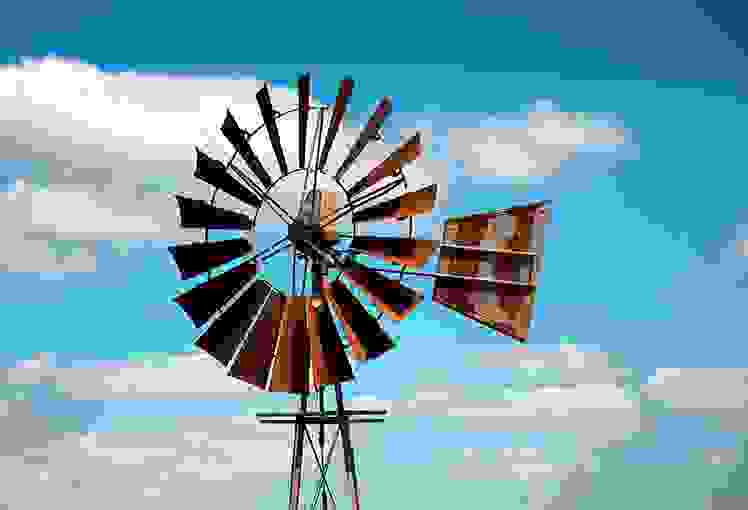
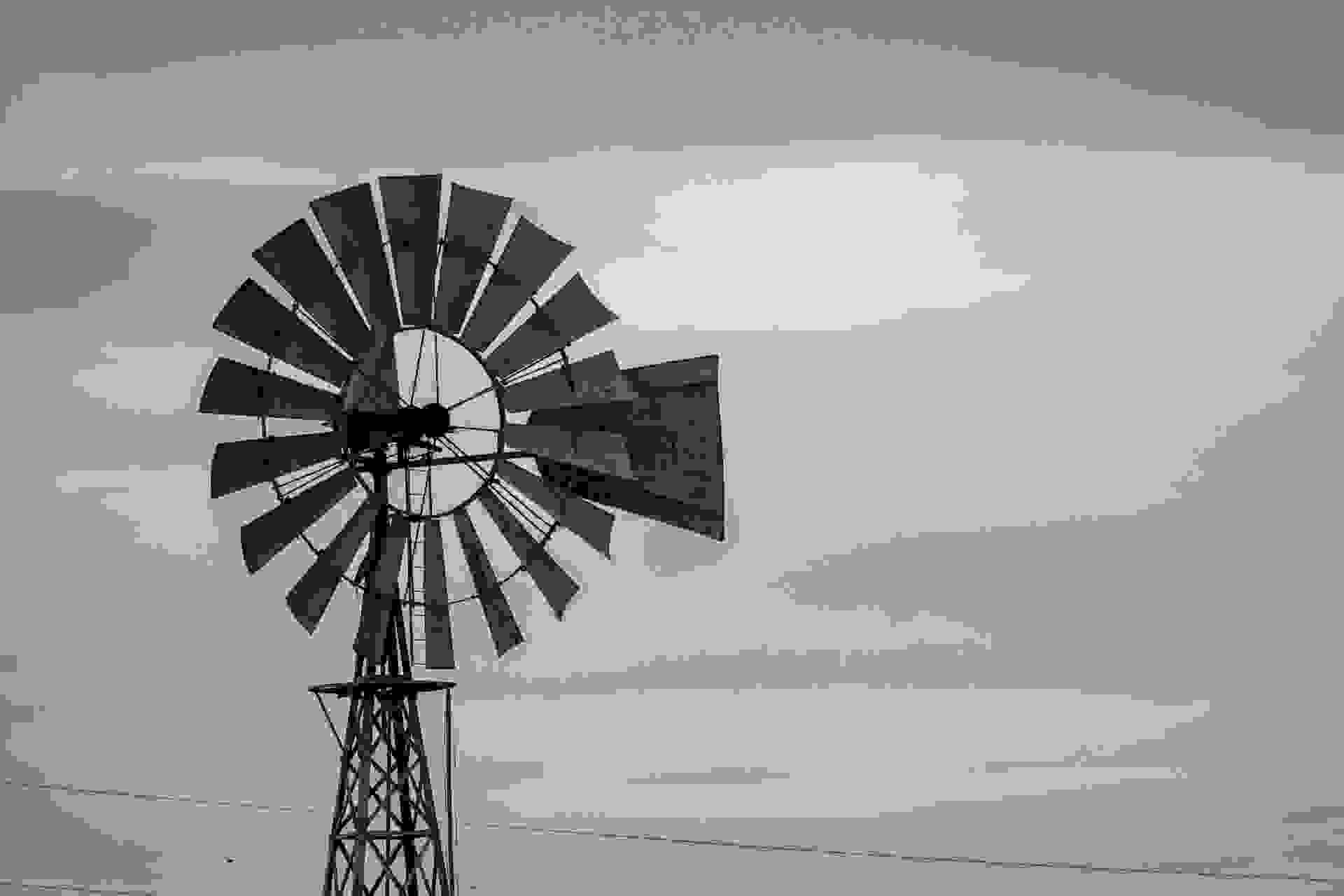




















































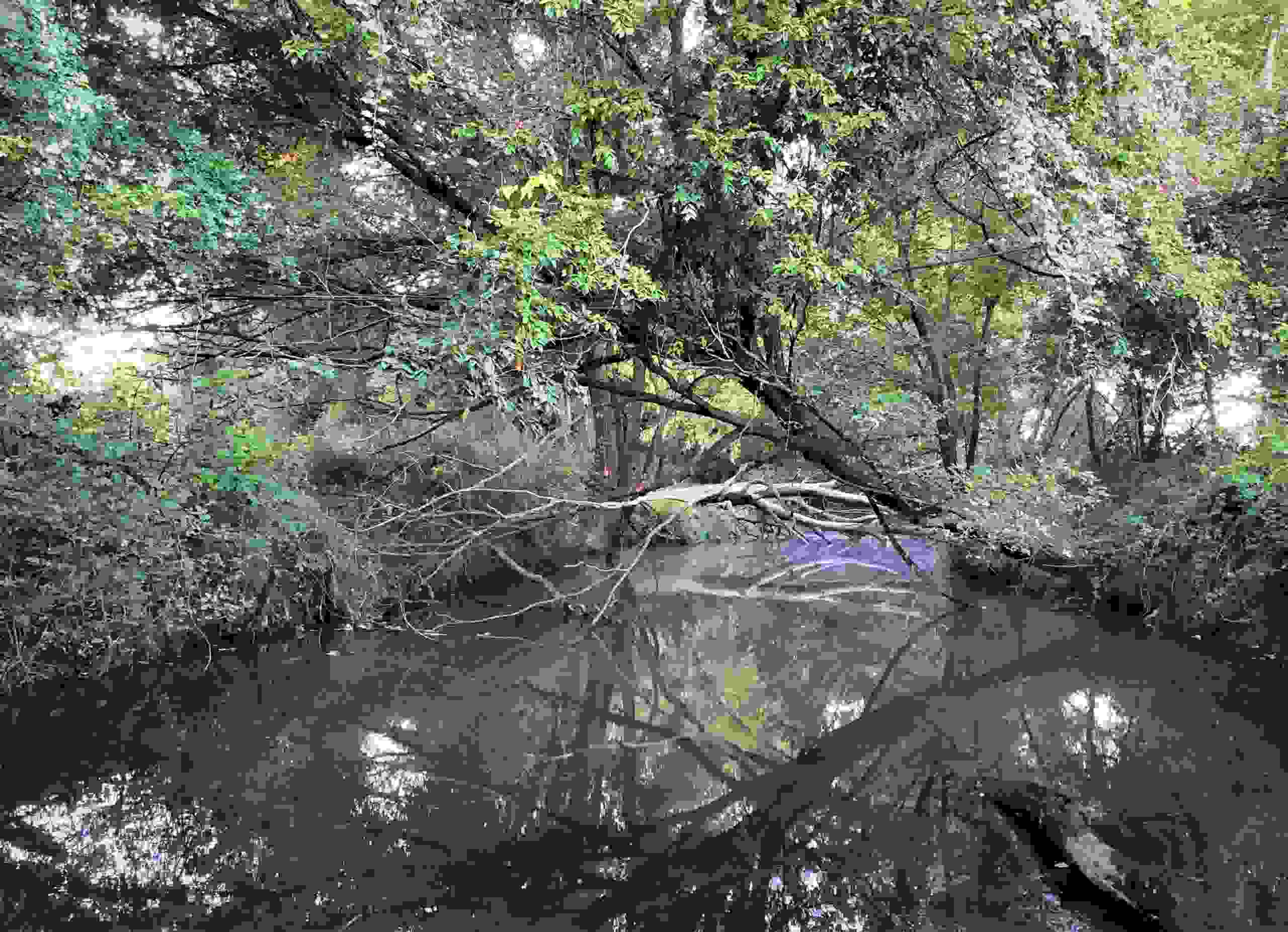
















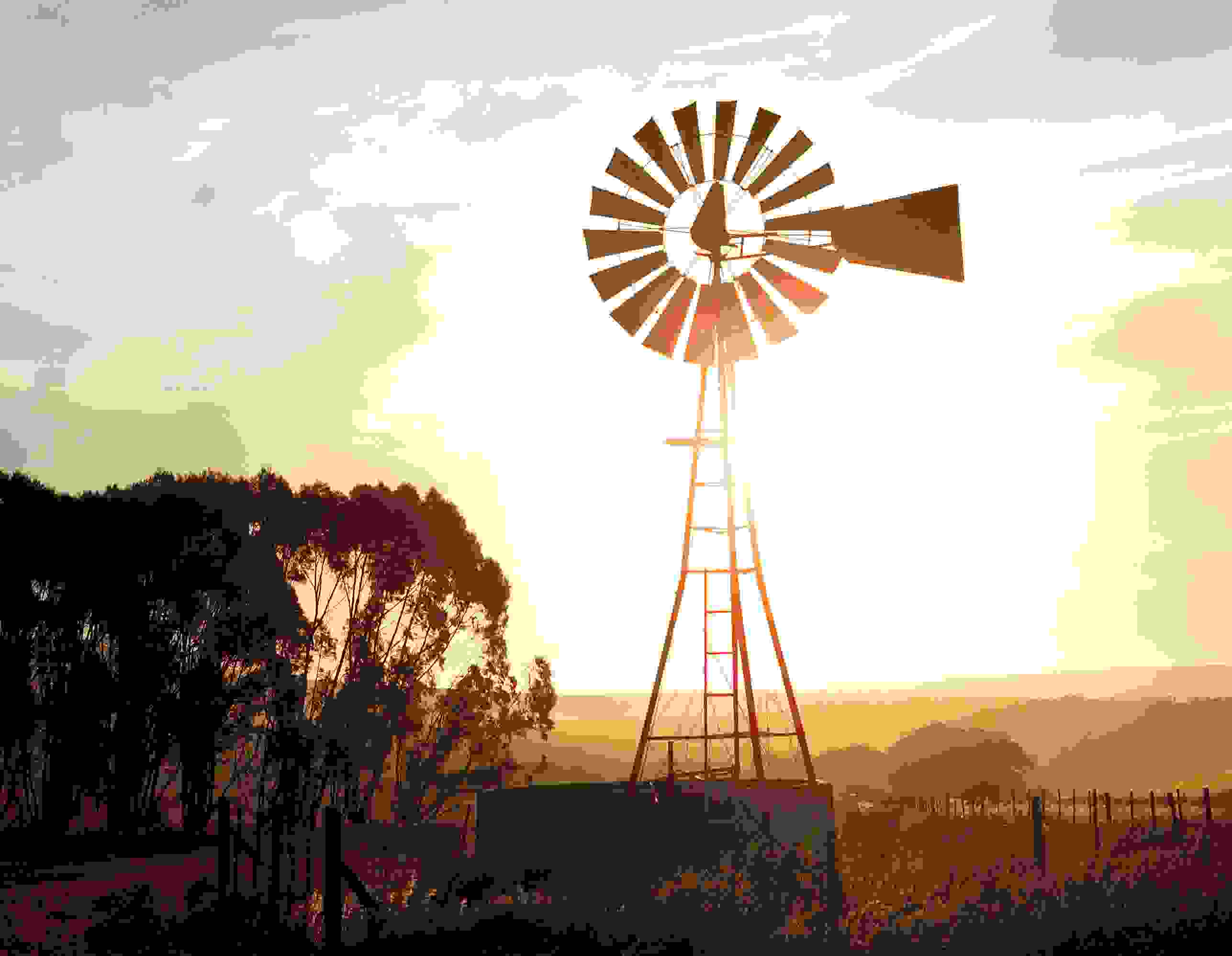













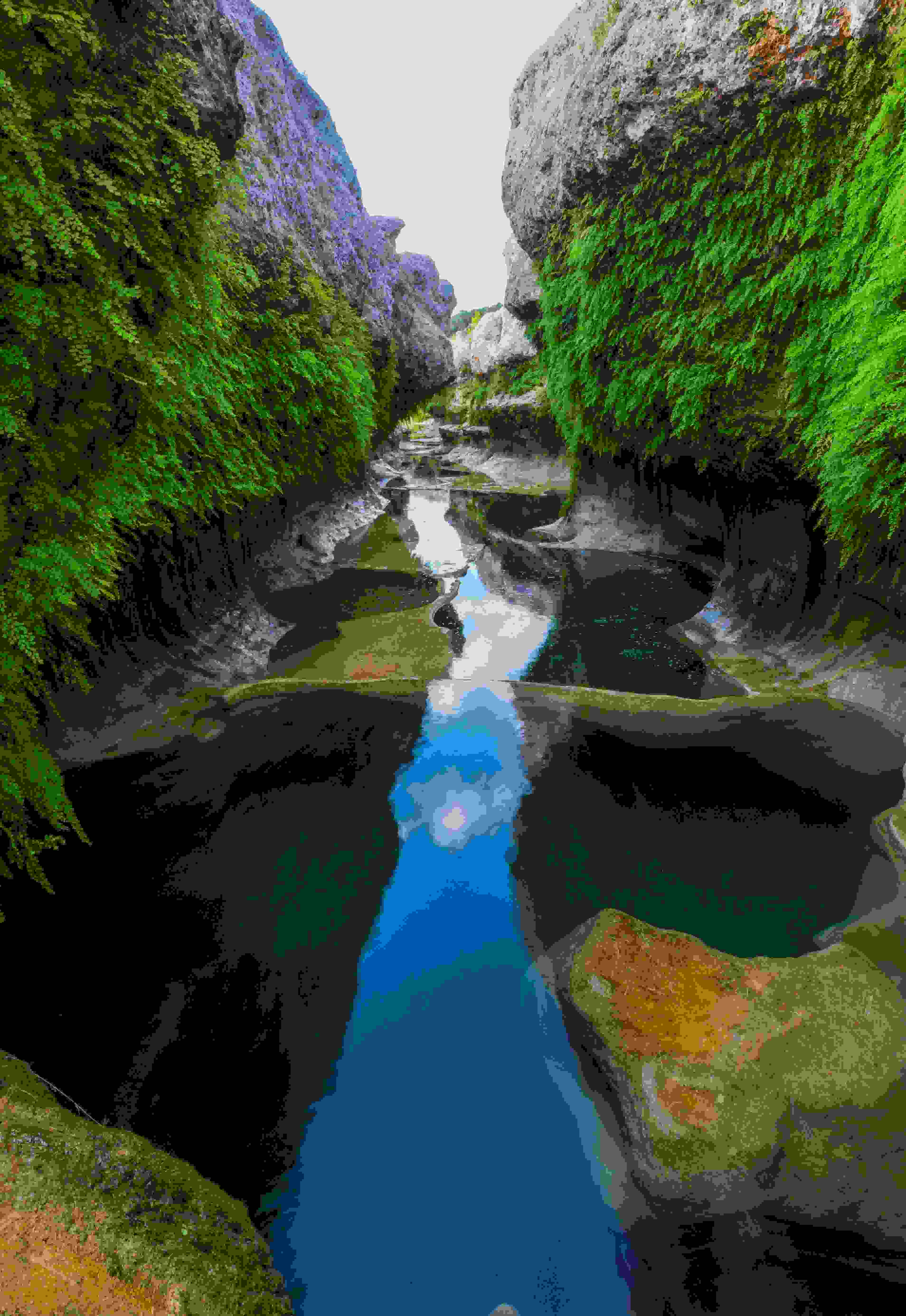
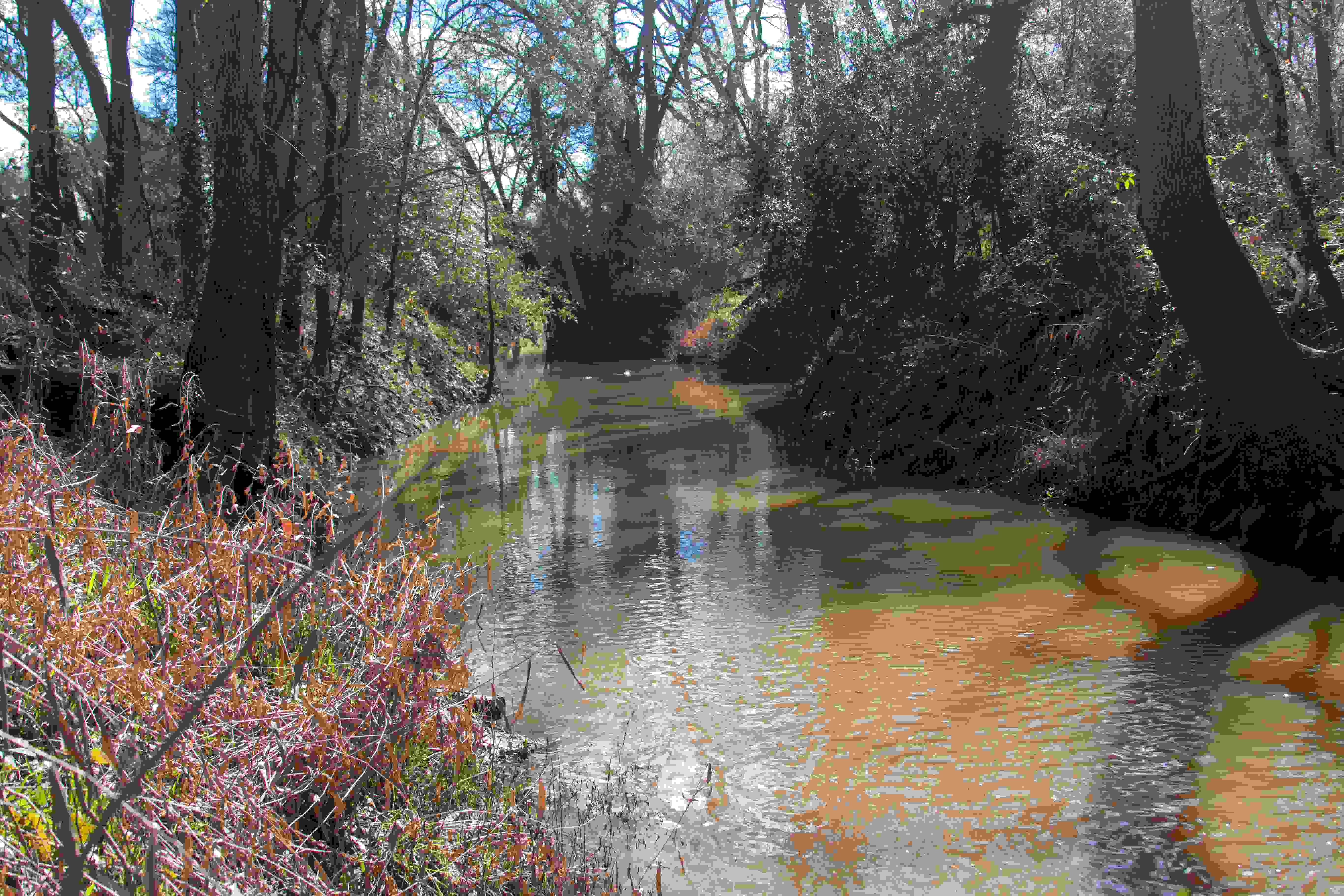







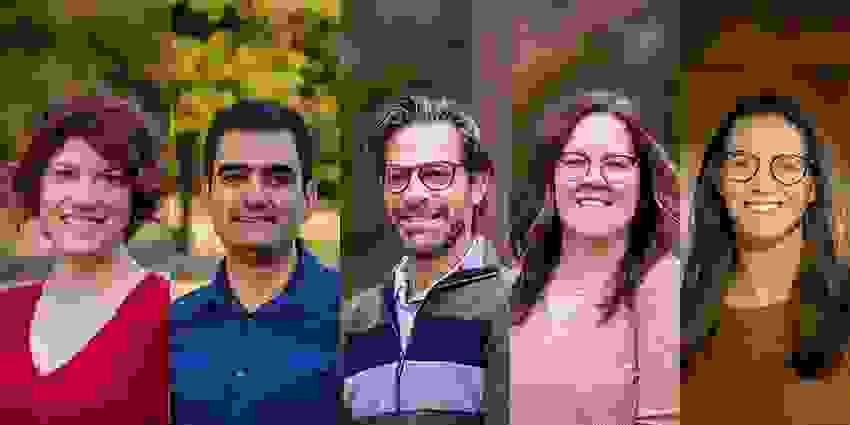

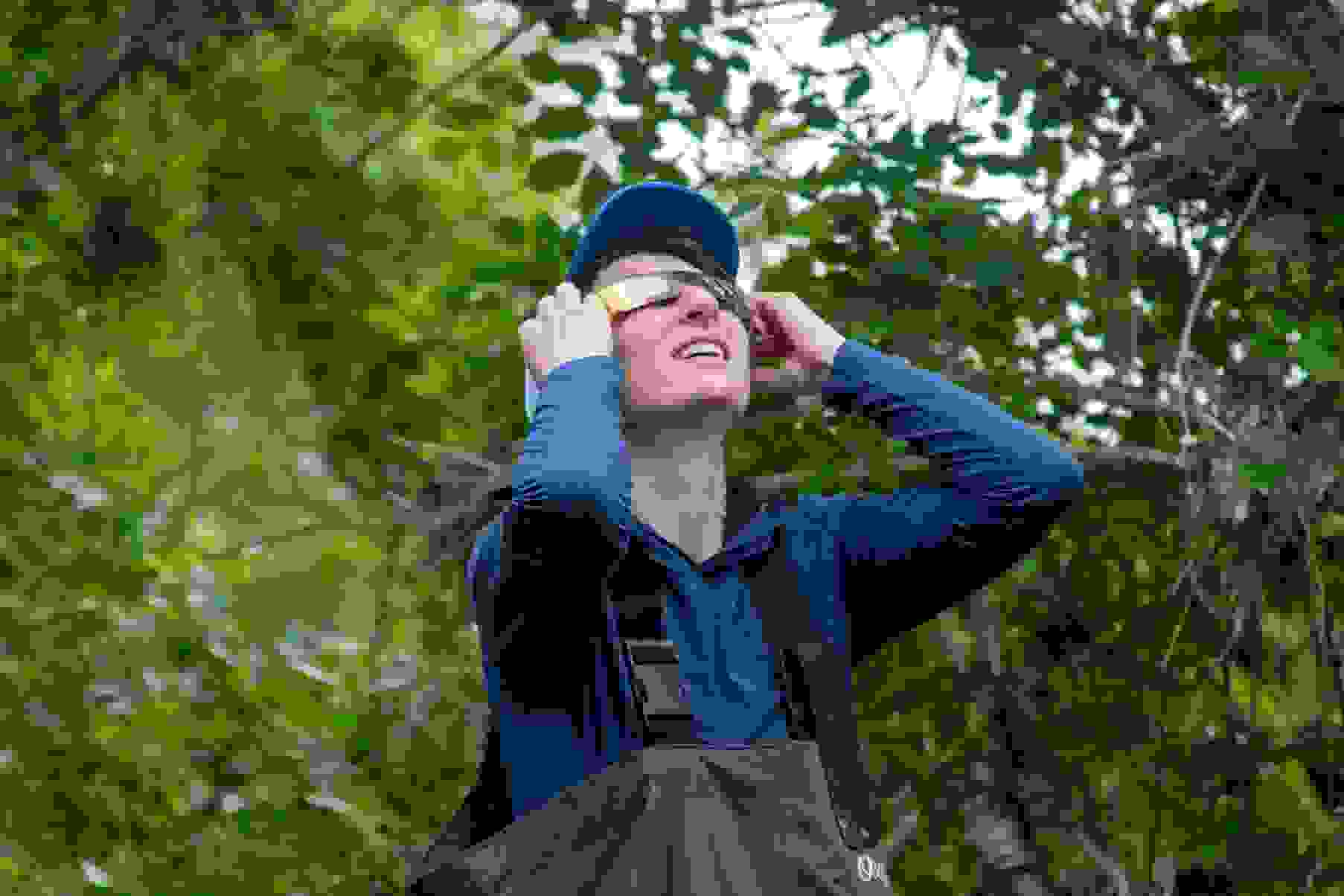
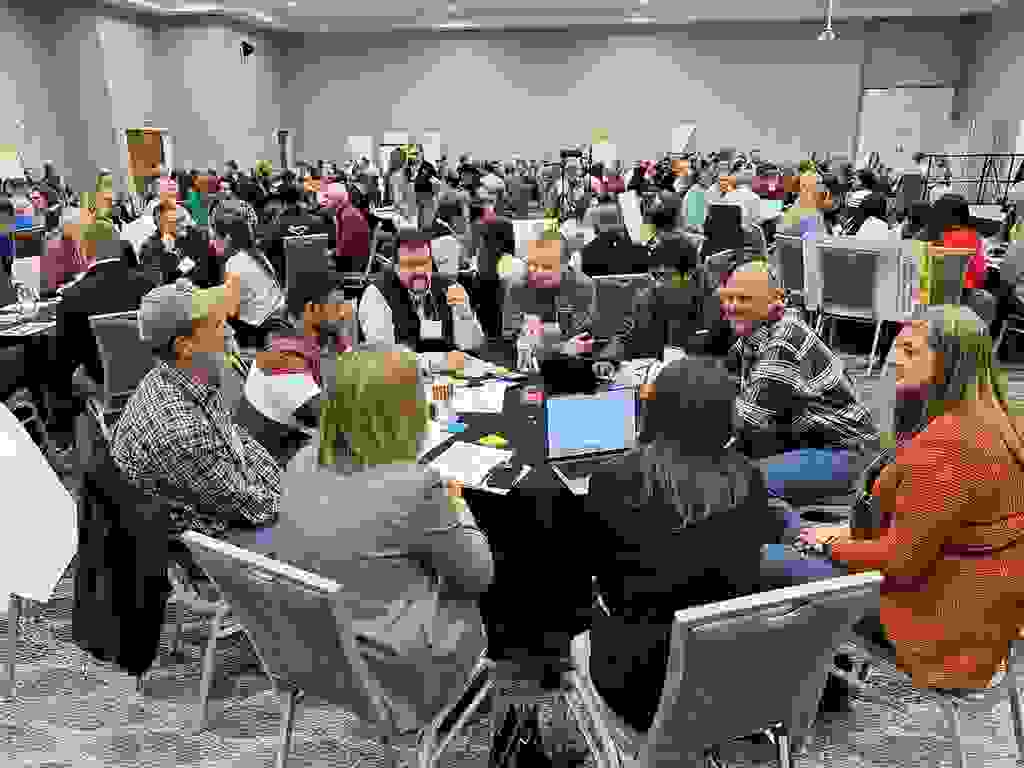

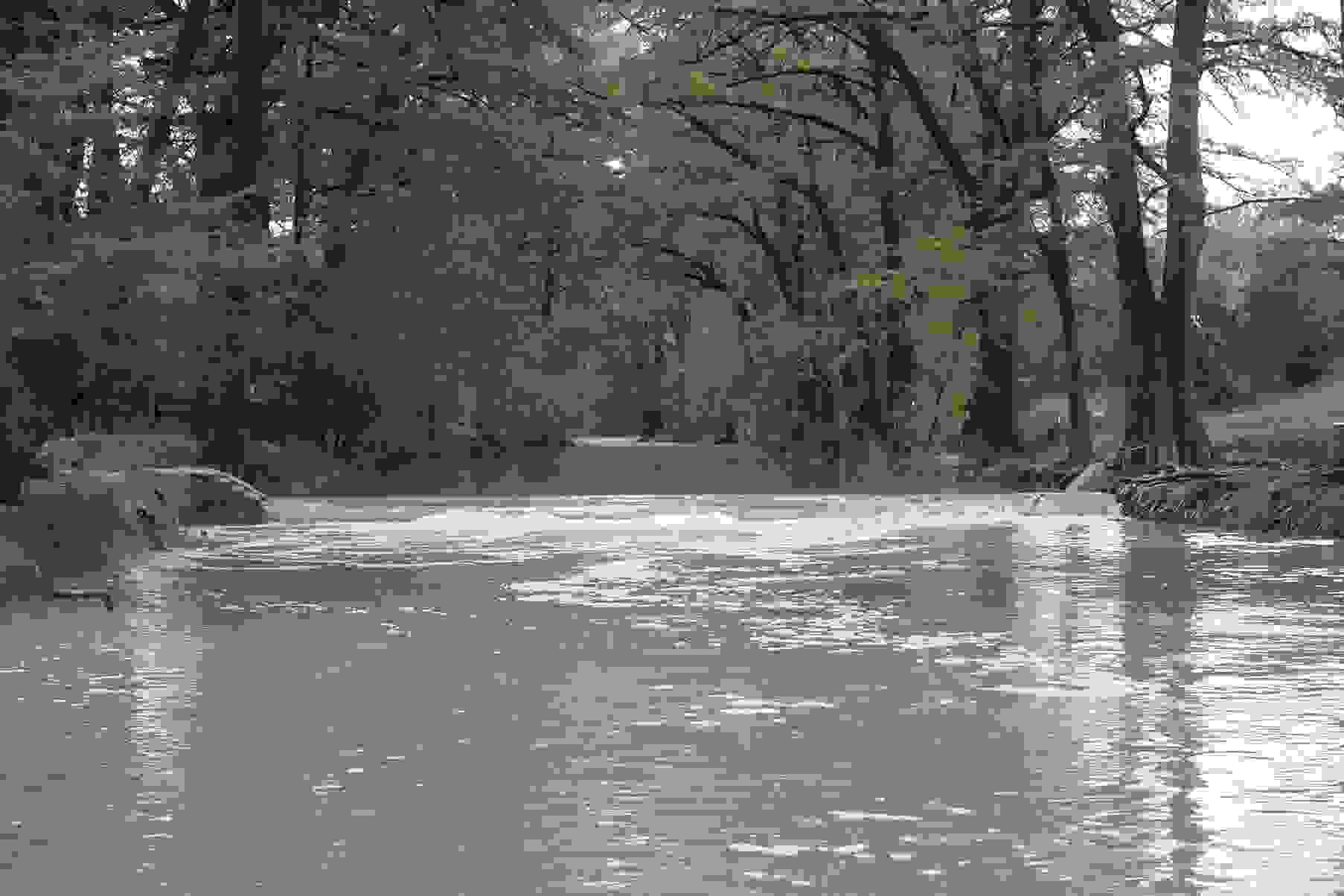
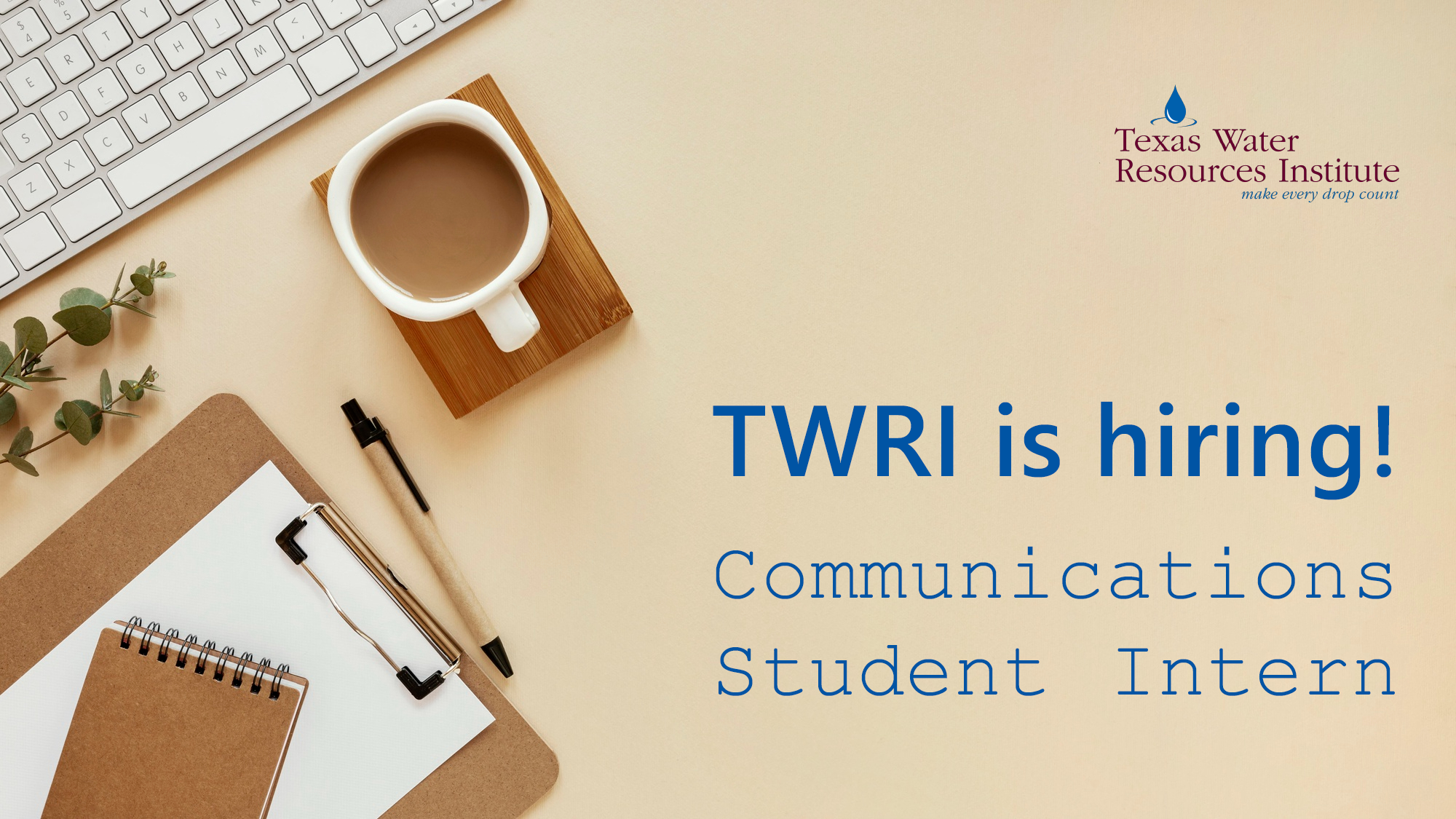

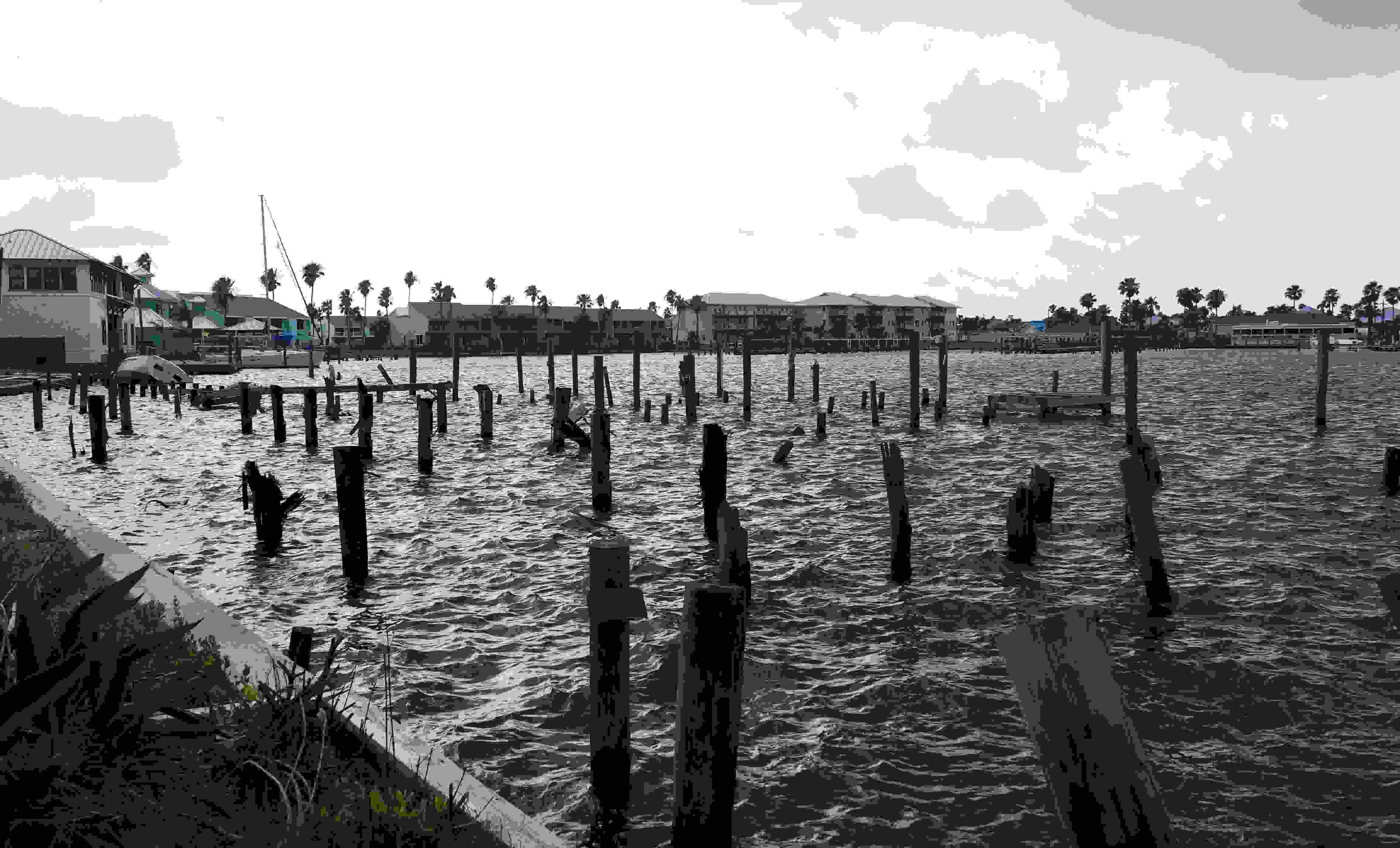
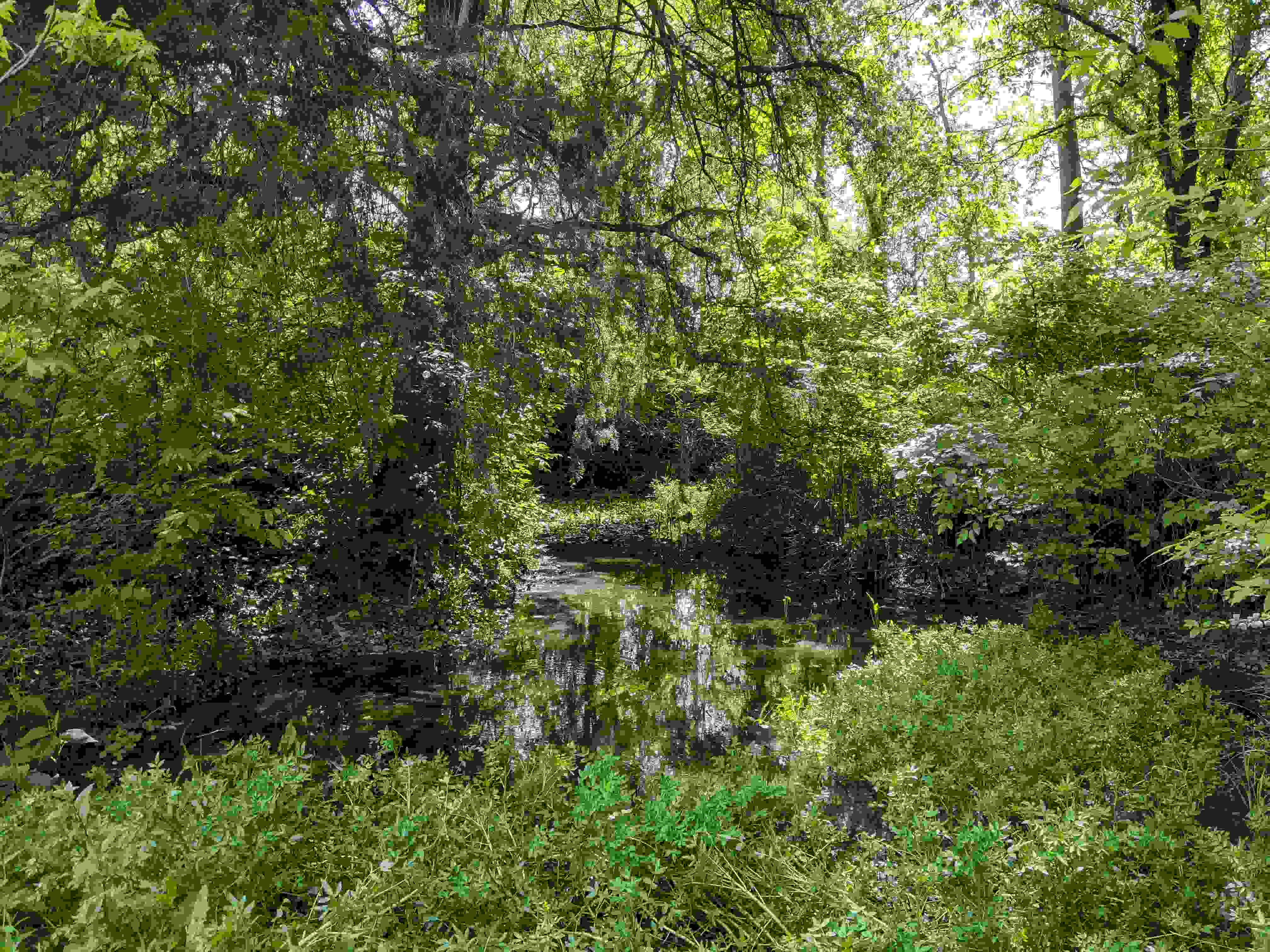
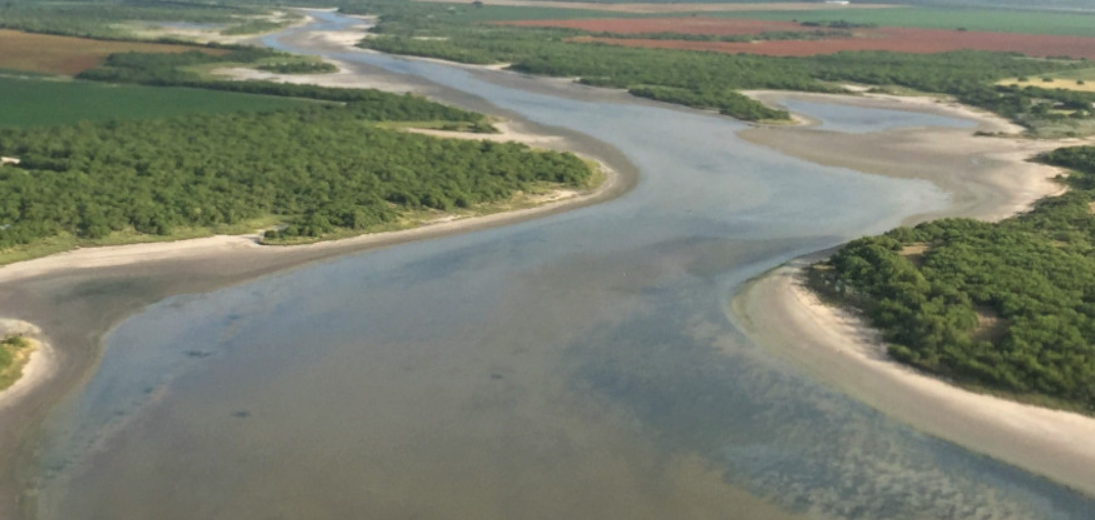
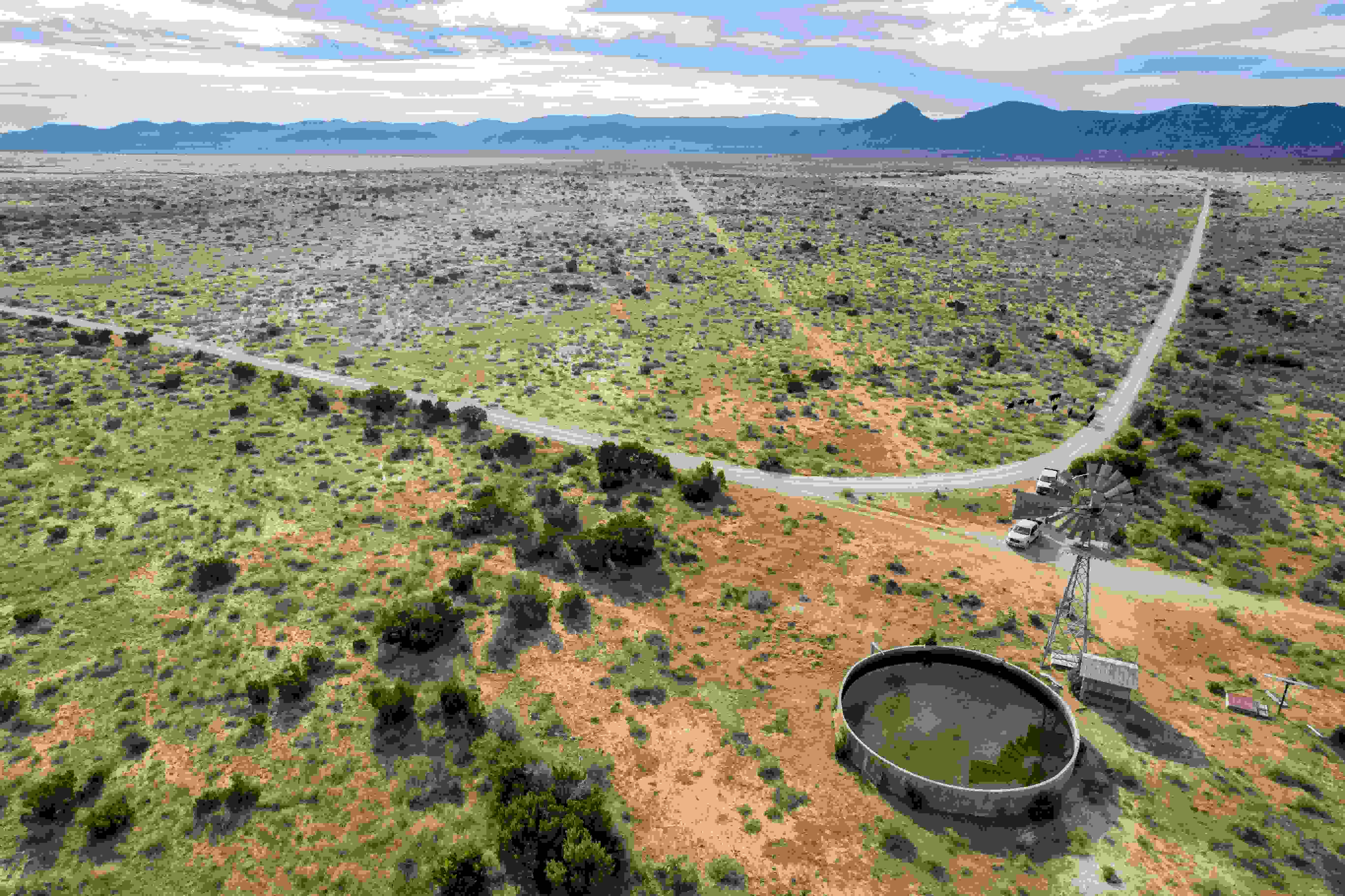
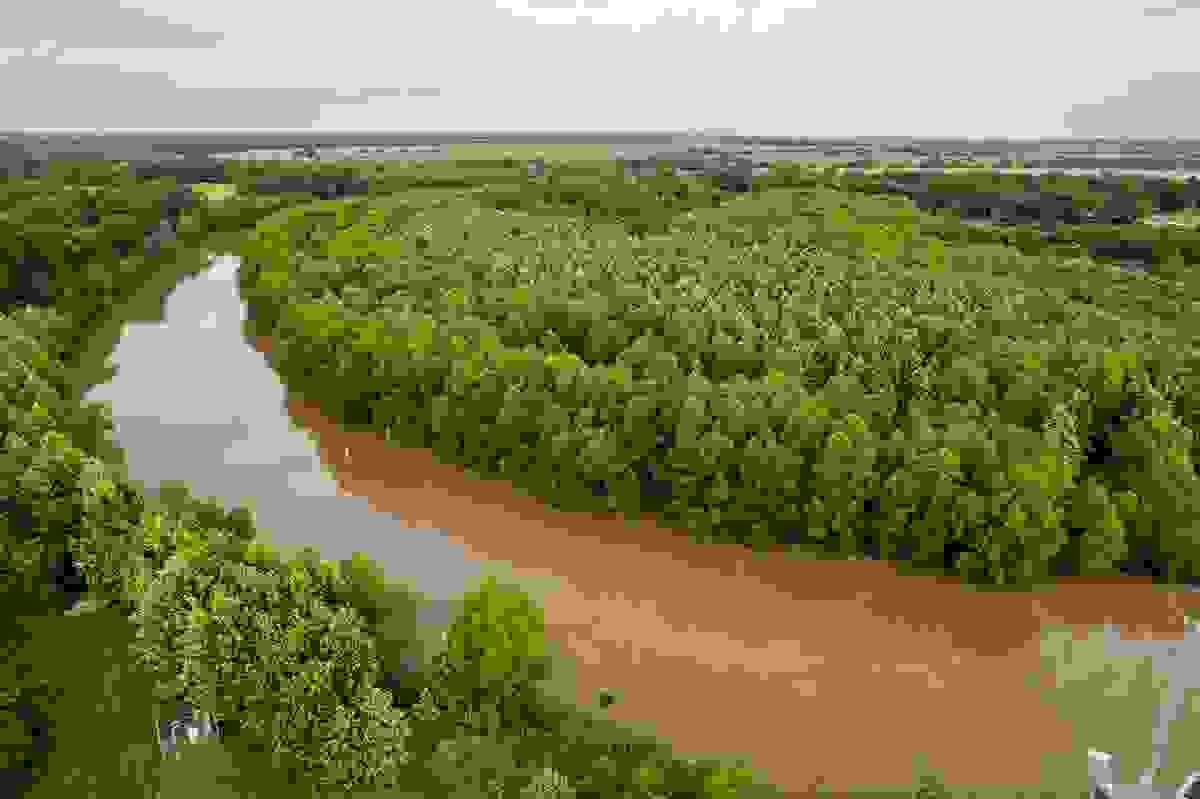
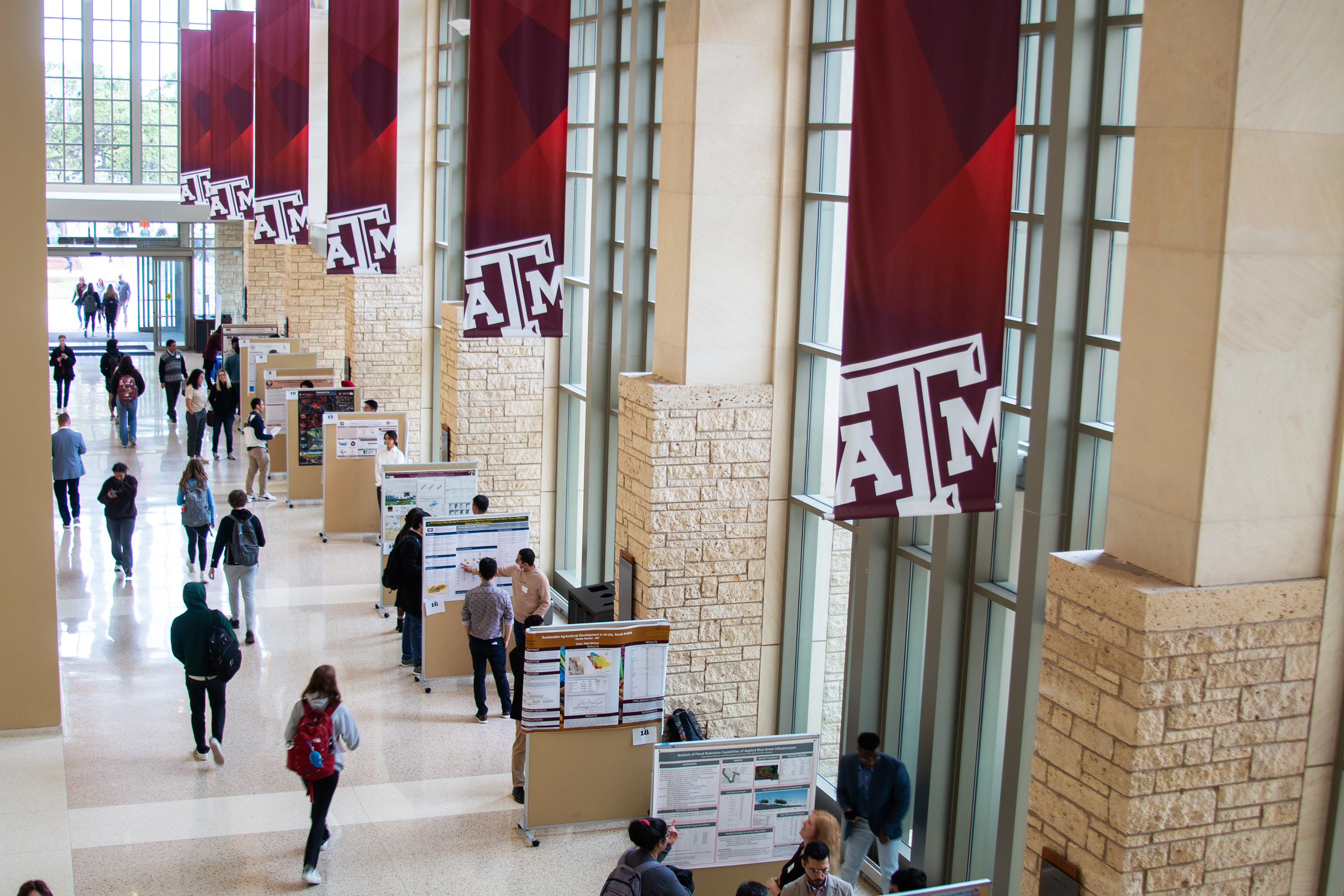

&color=fff&textposition=5,5&dropshadow=true&fontfamily=arial&fontsize=14&fontopacity=40&quality=60)

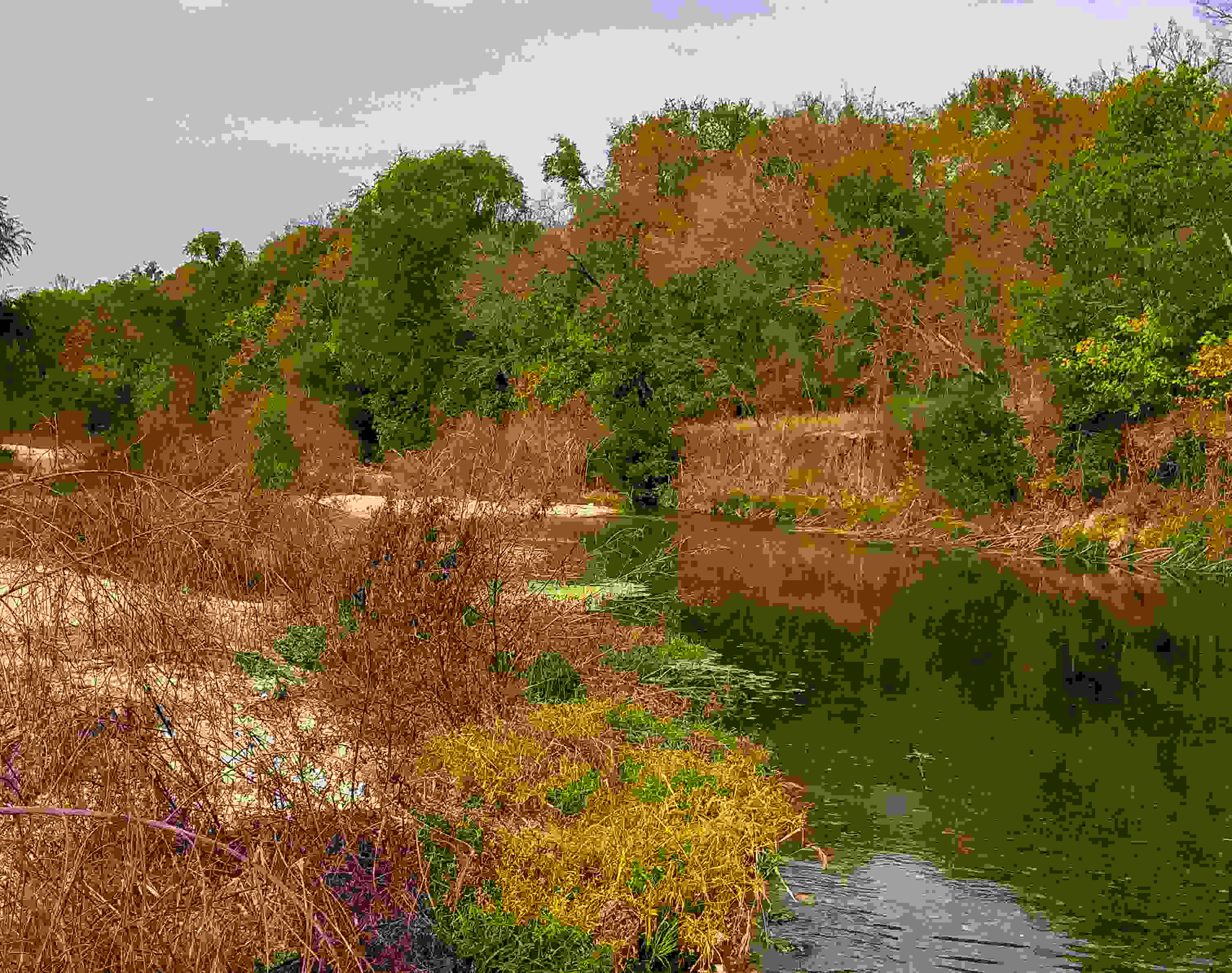
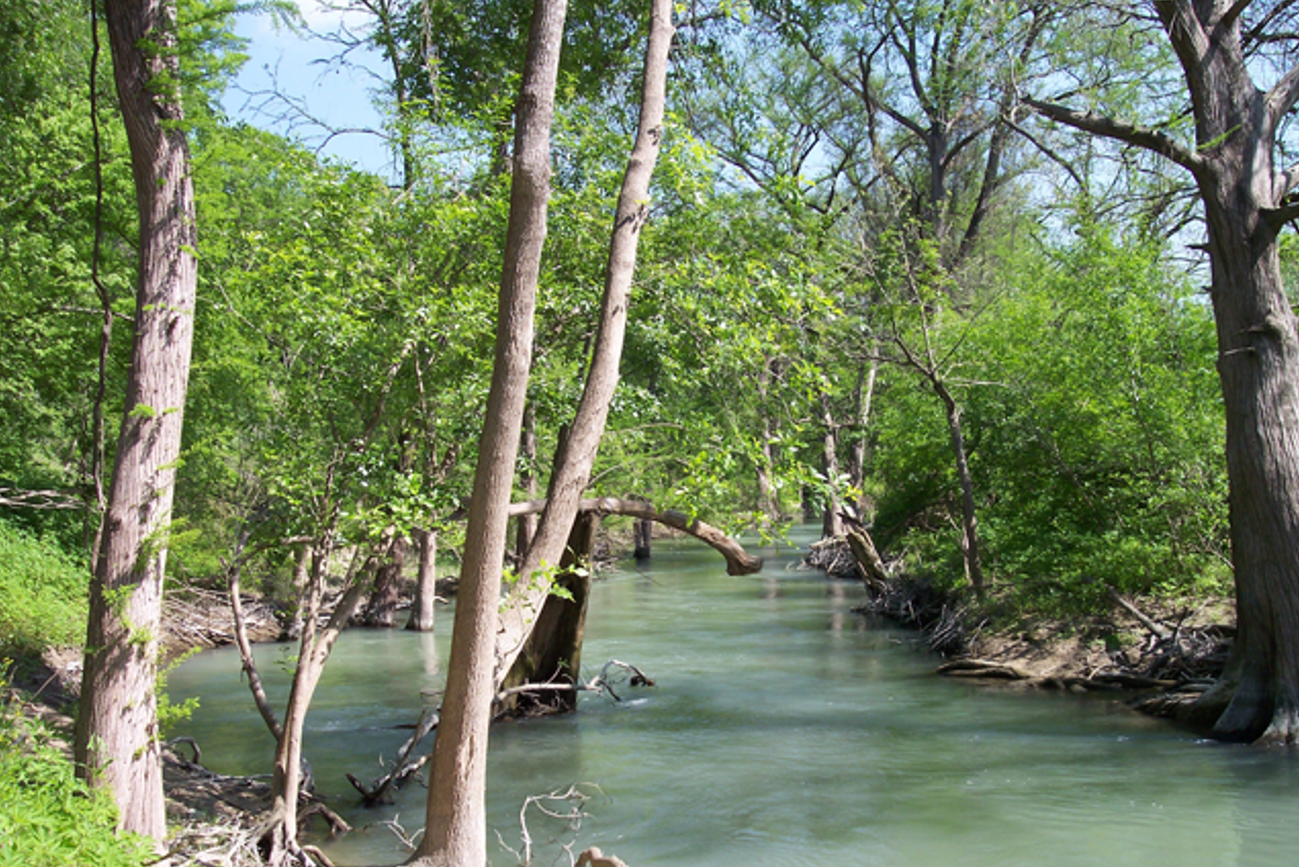
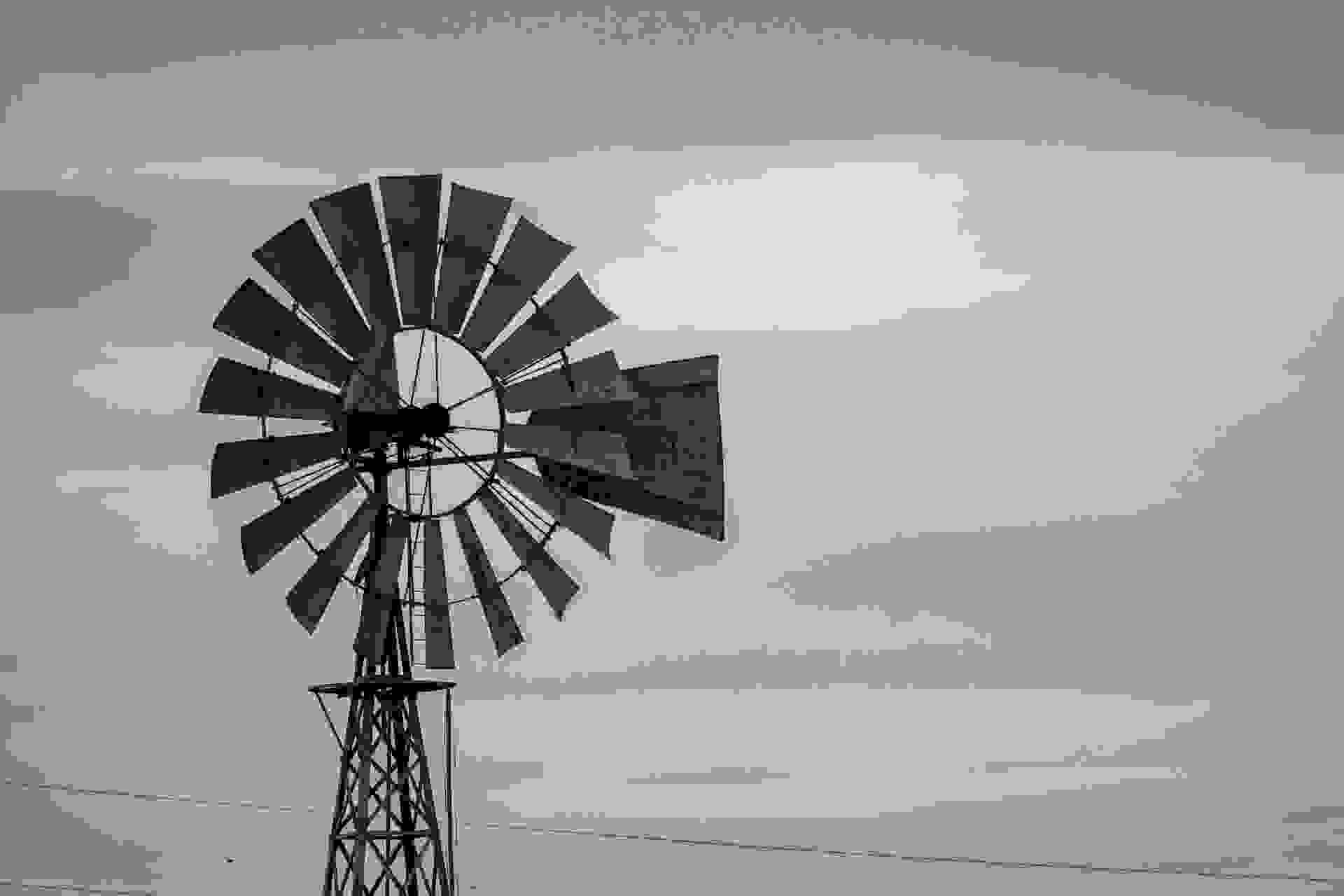
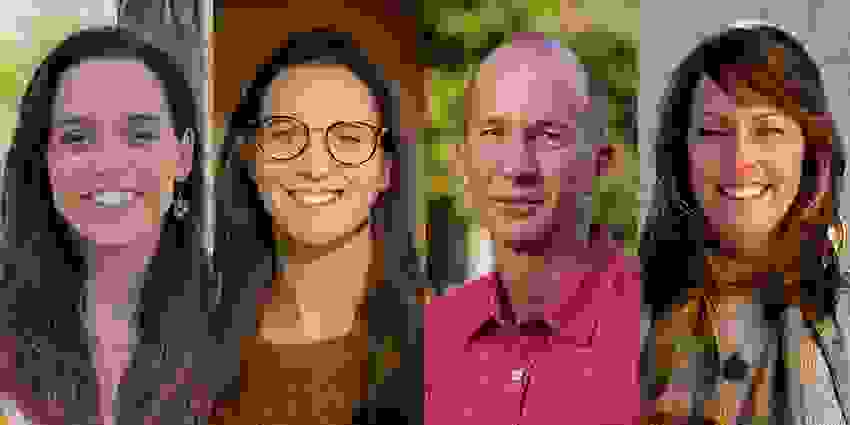

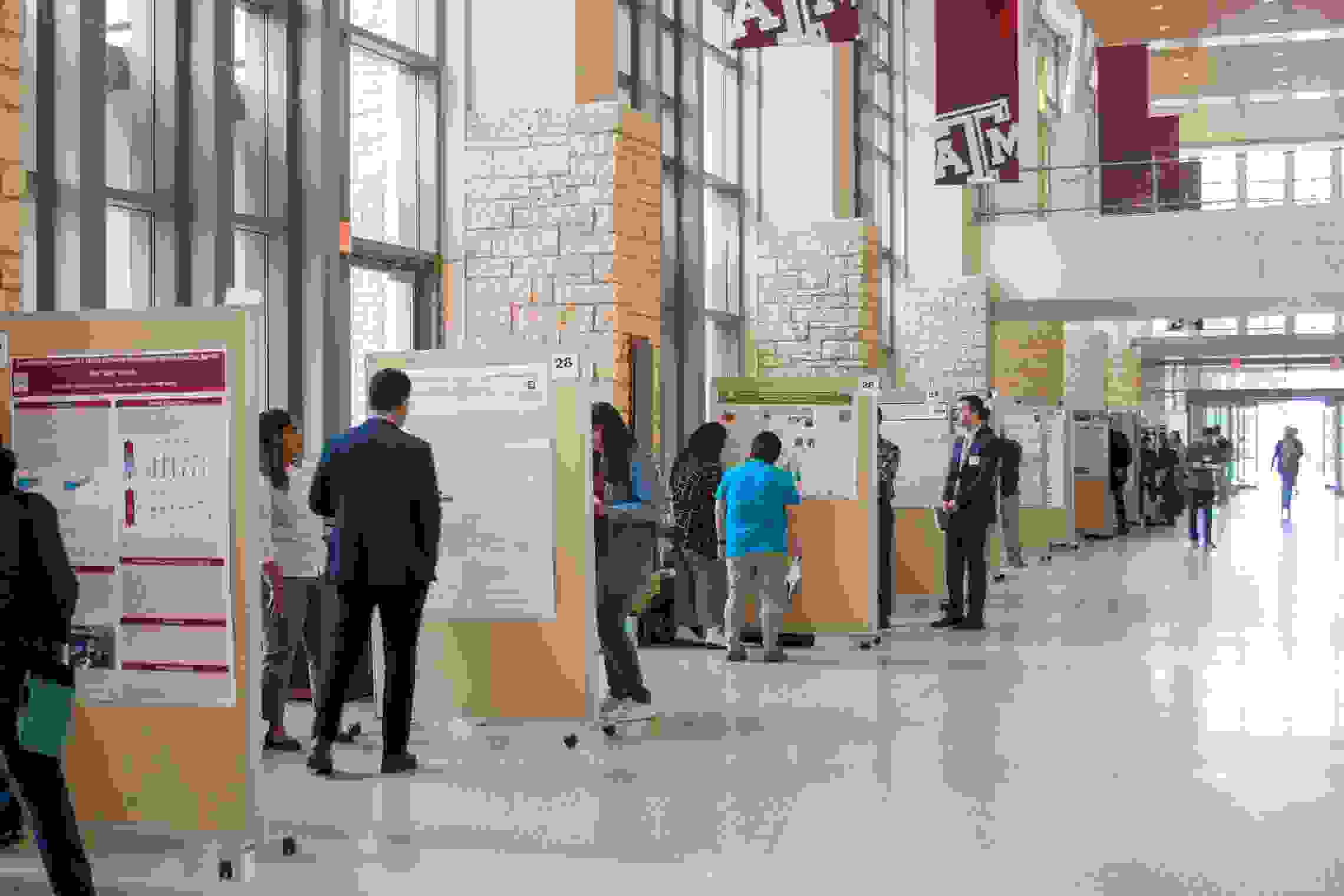

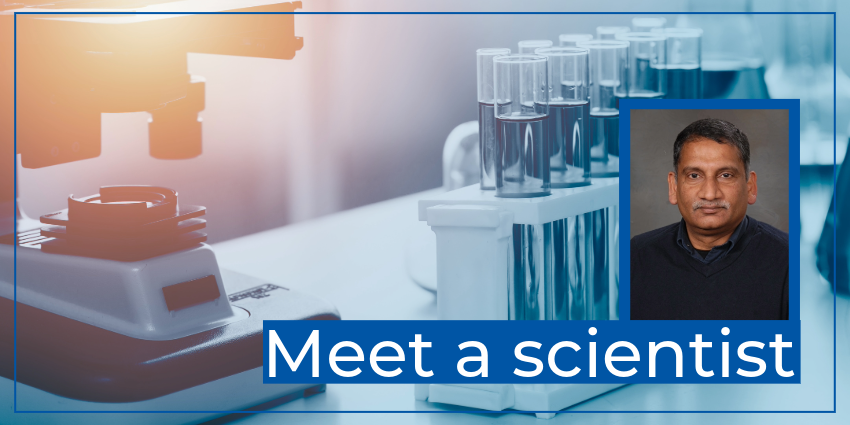

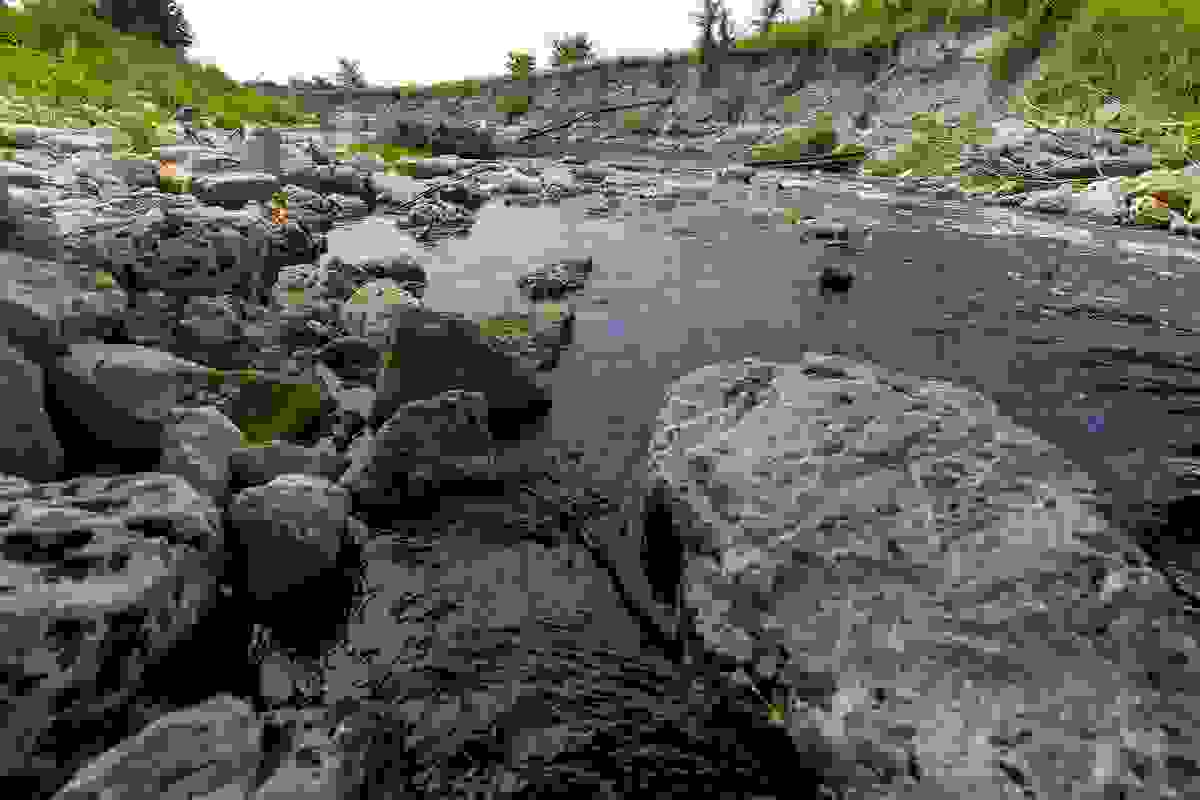
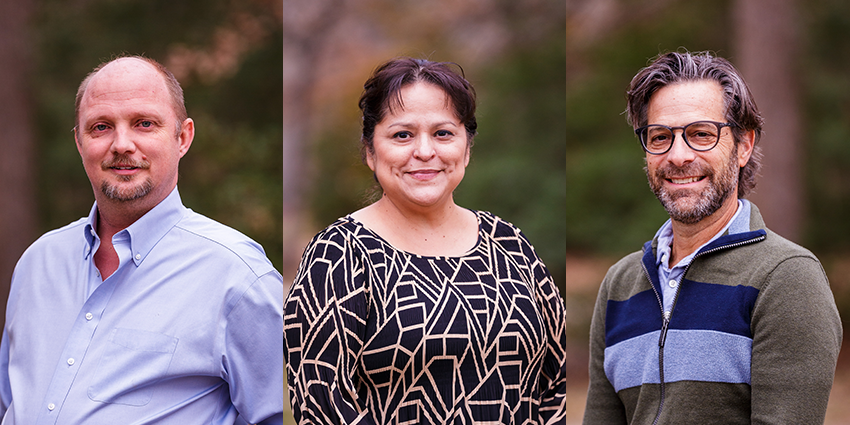
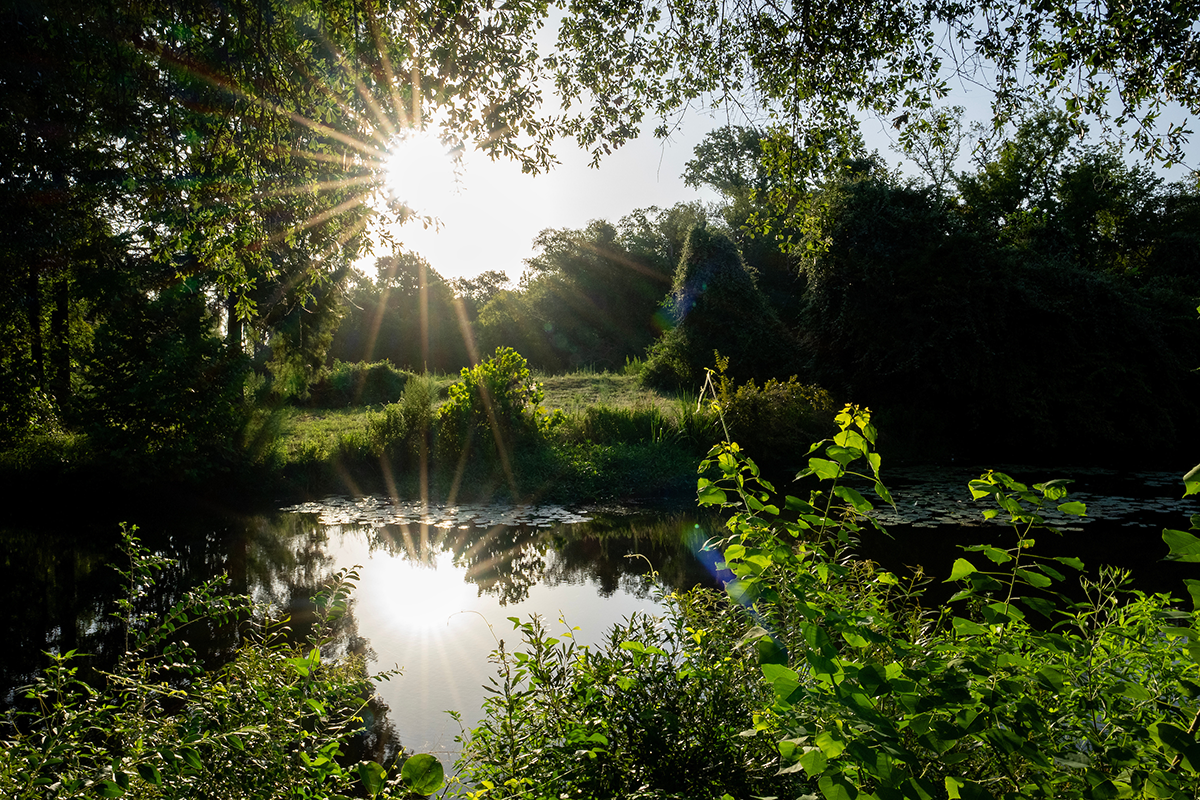
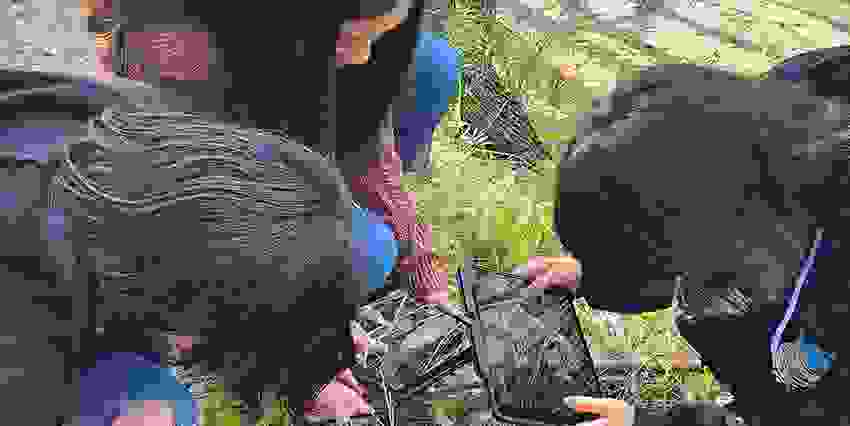
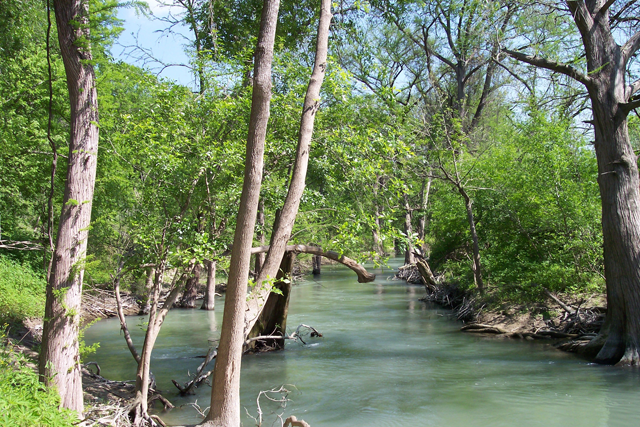
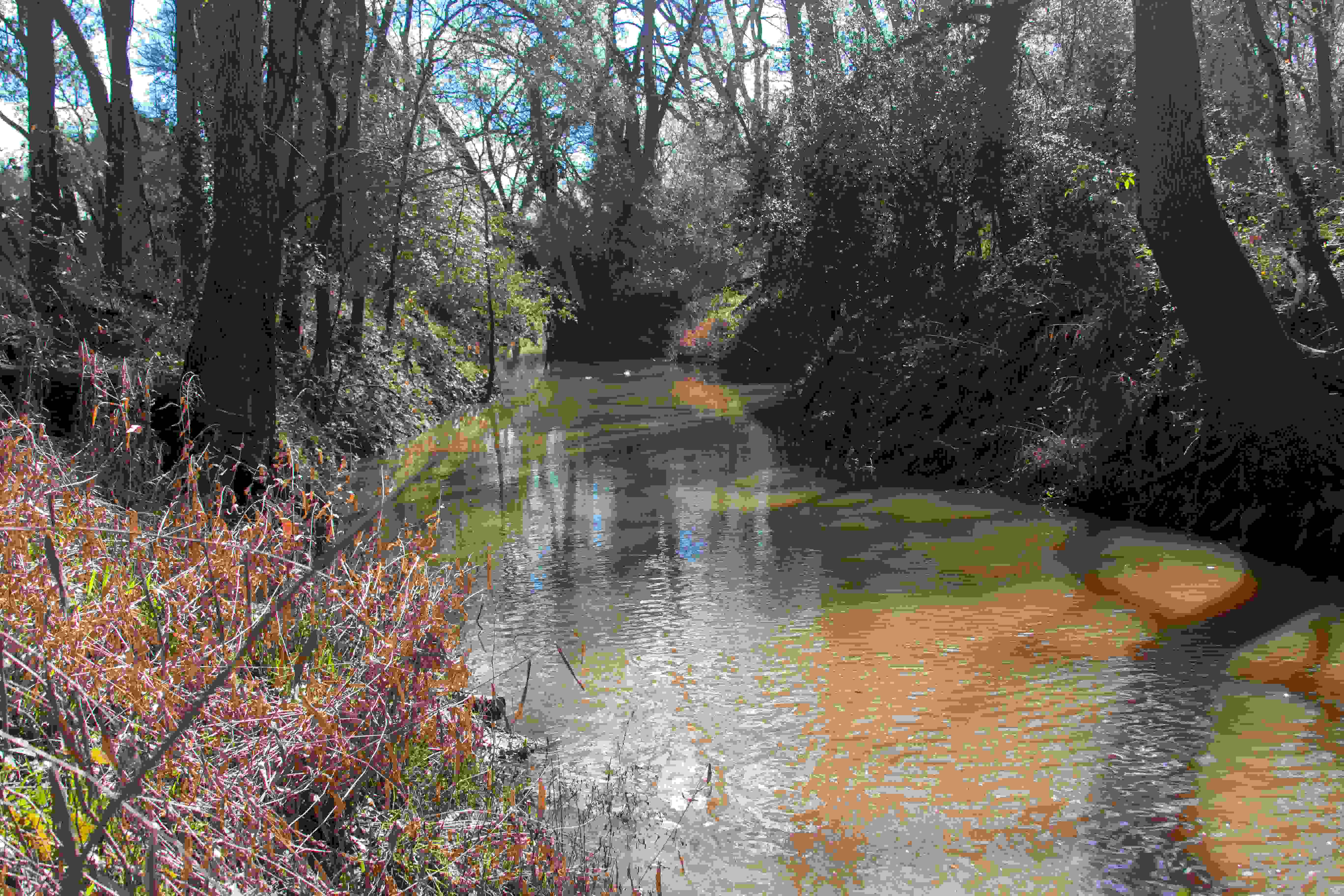
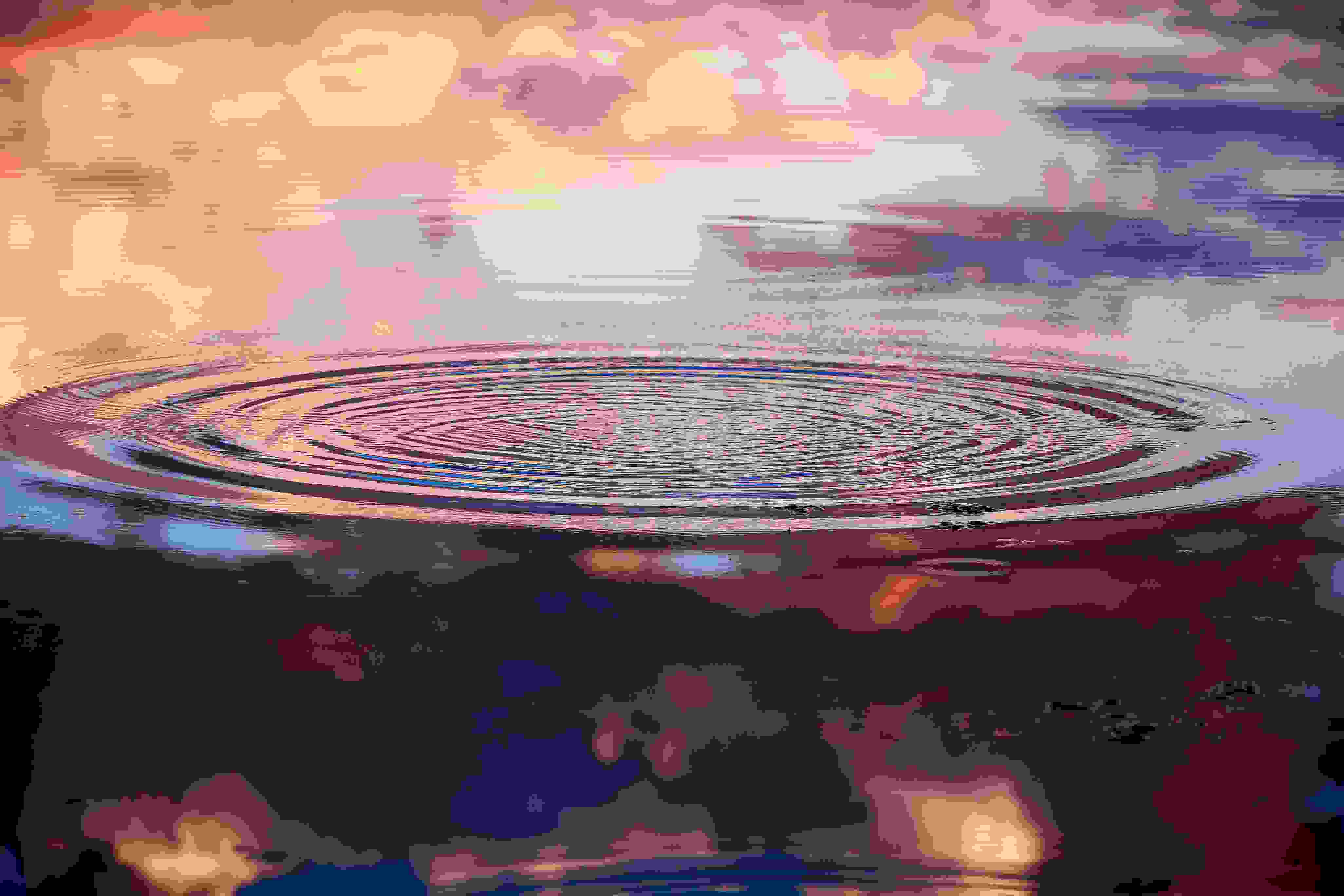

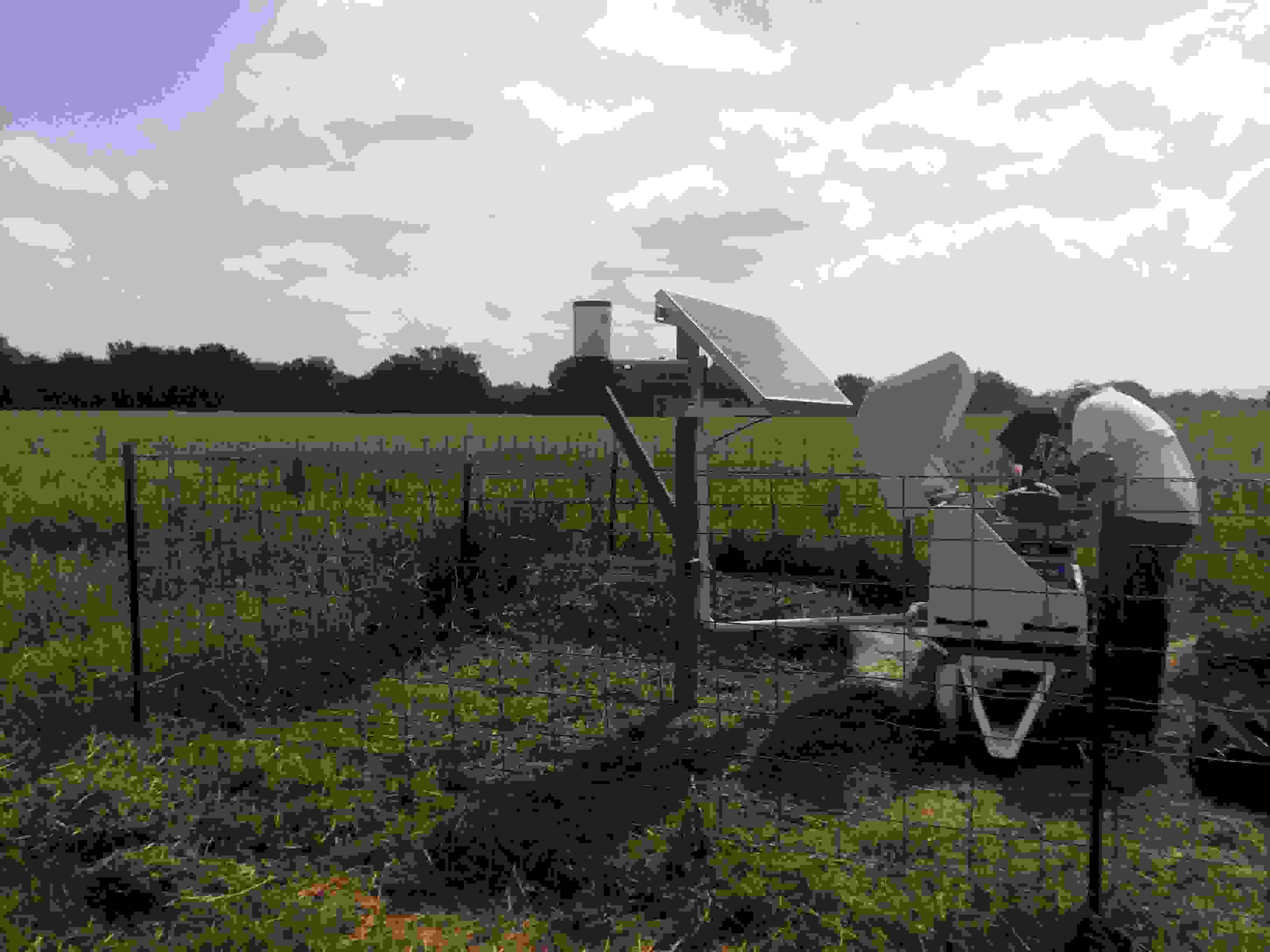
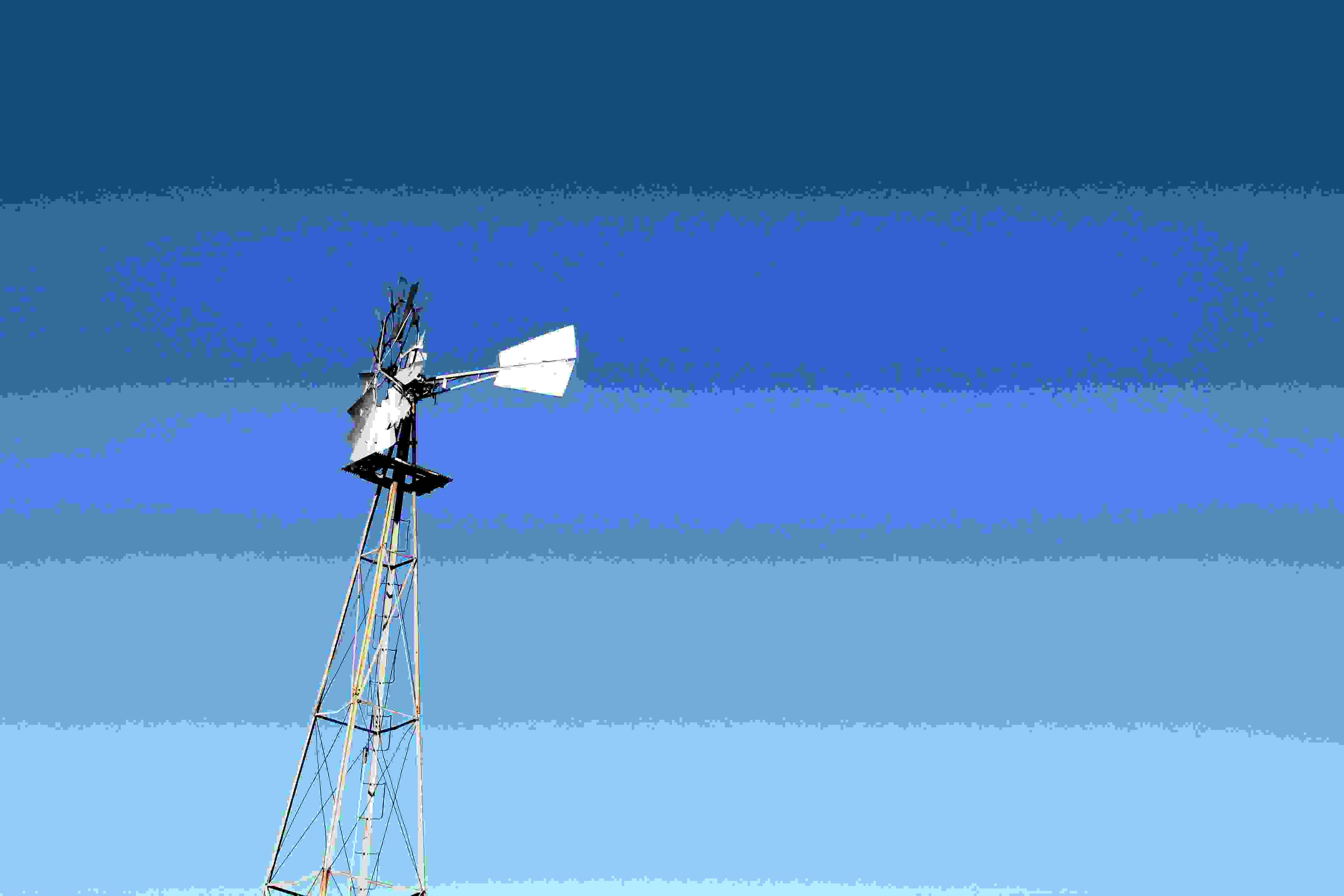
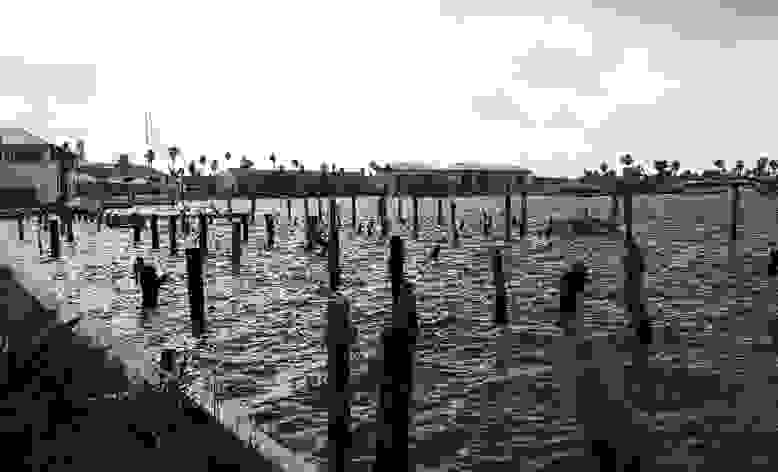

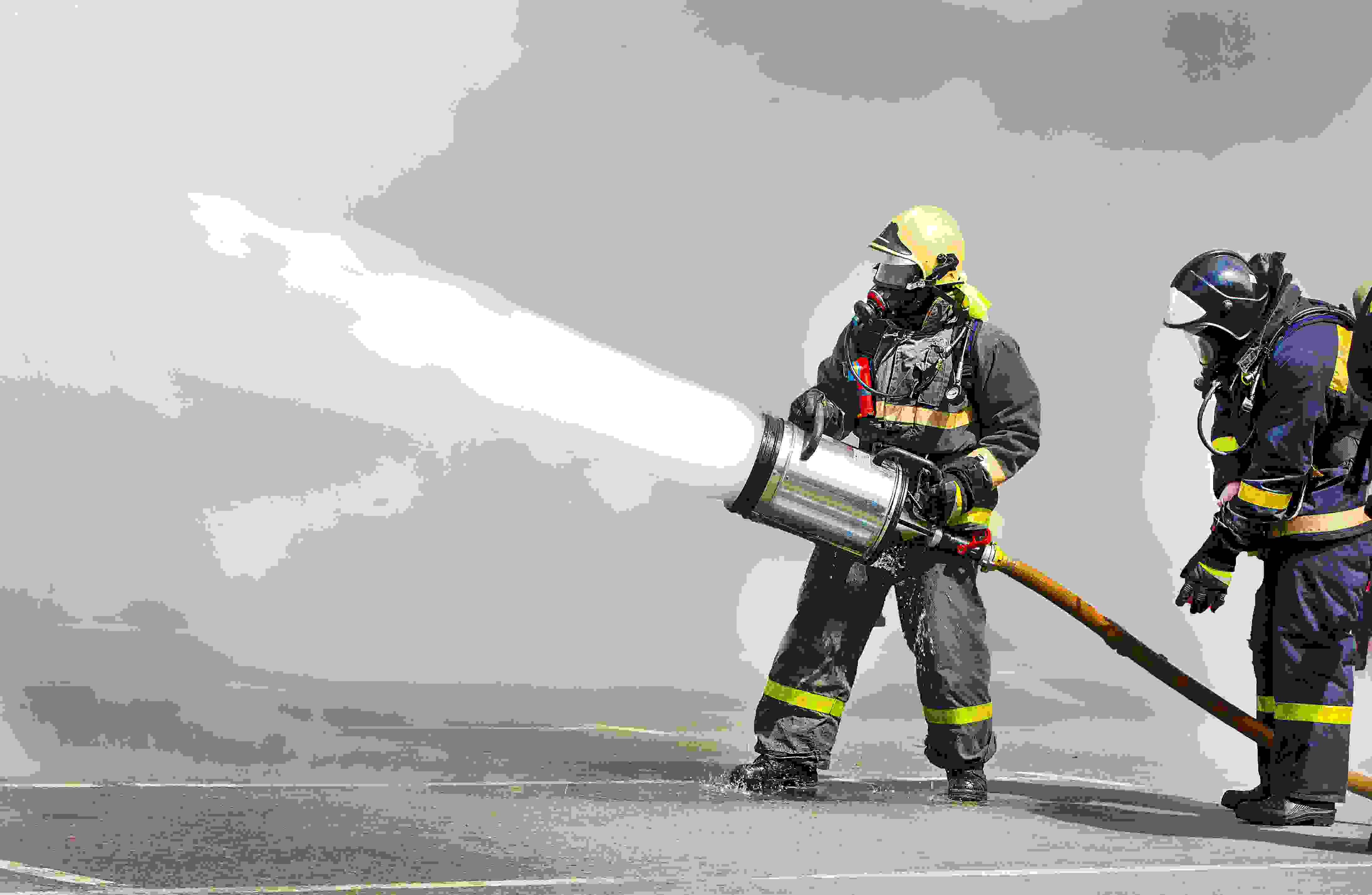


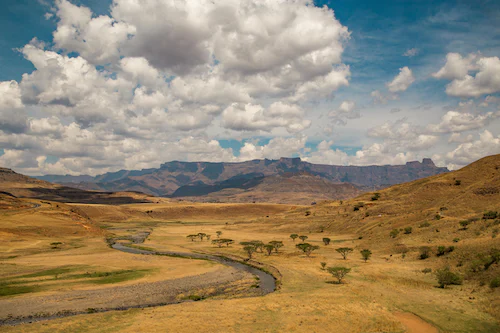
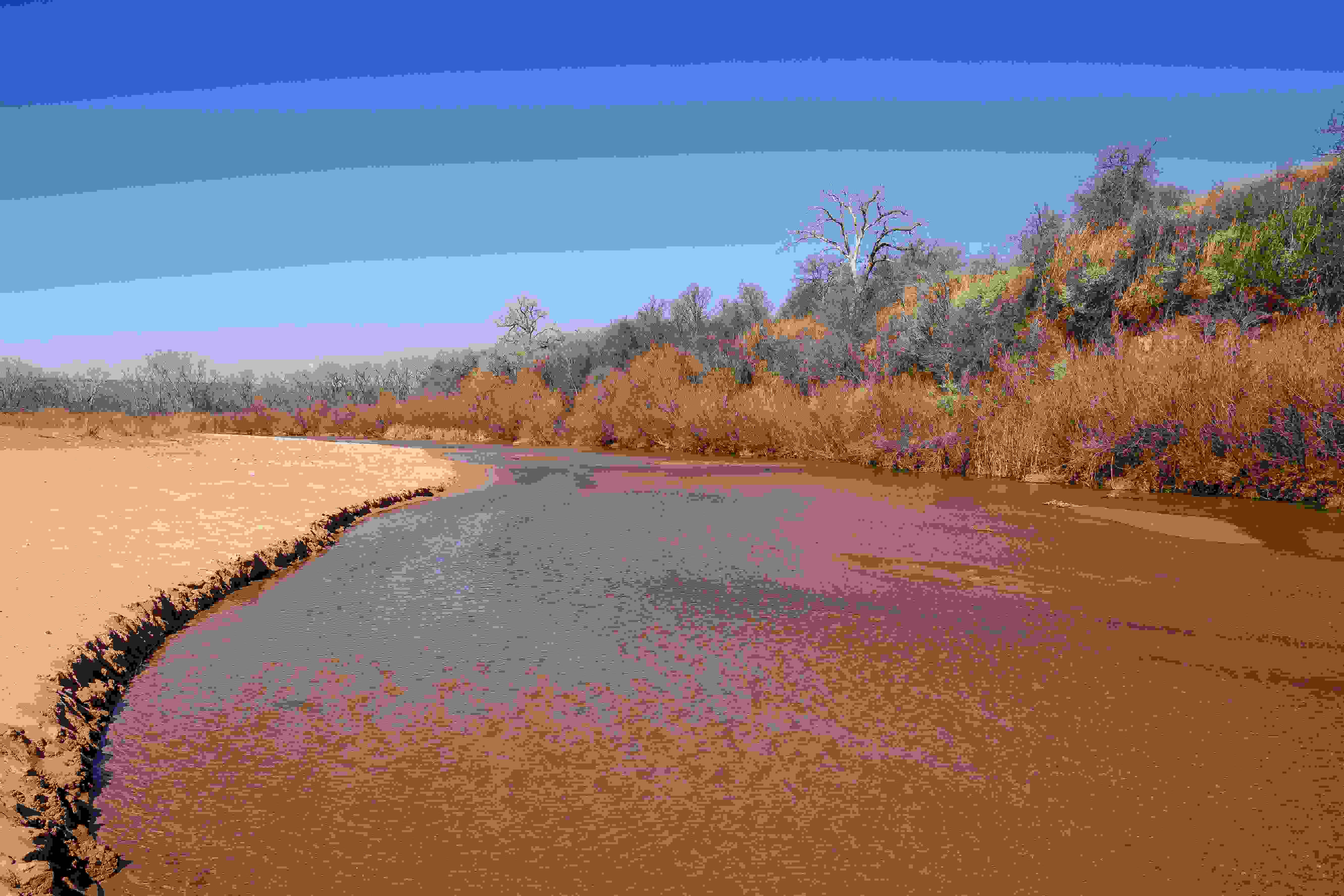
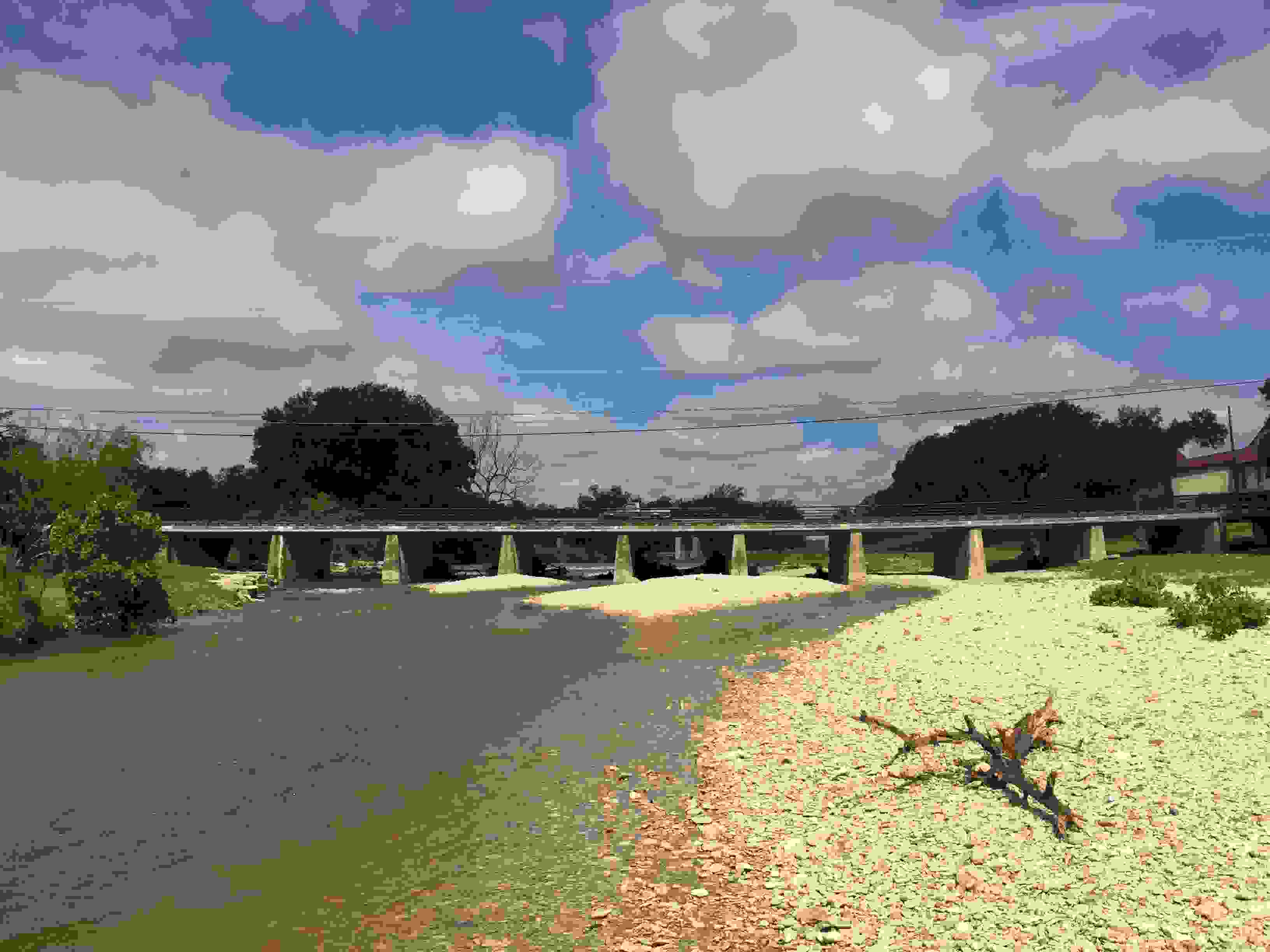
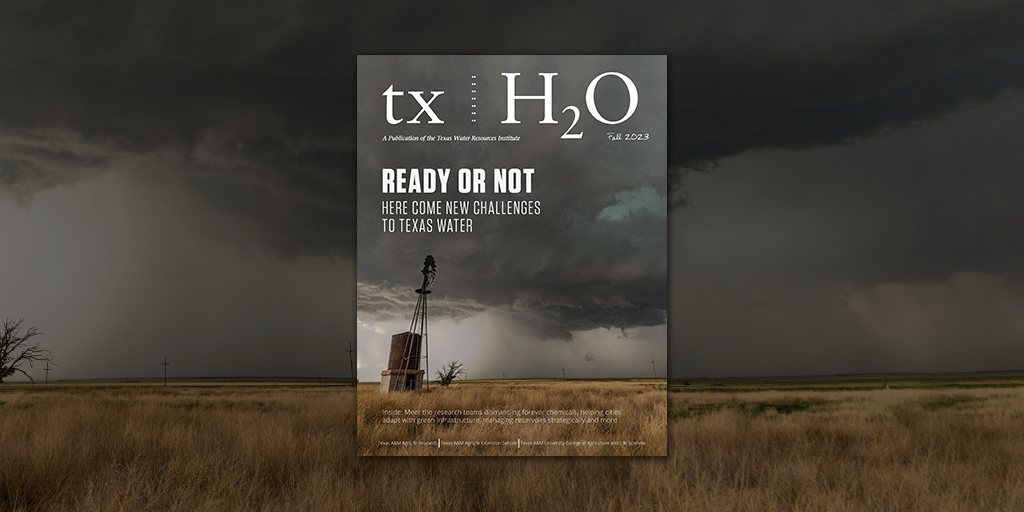
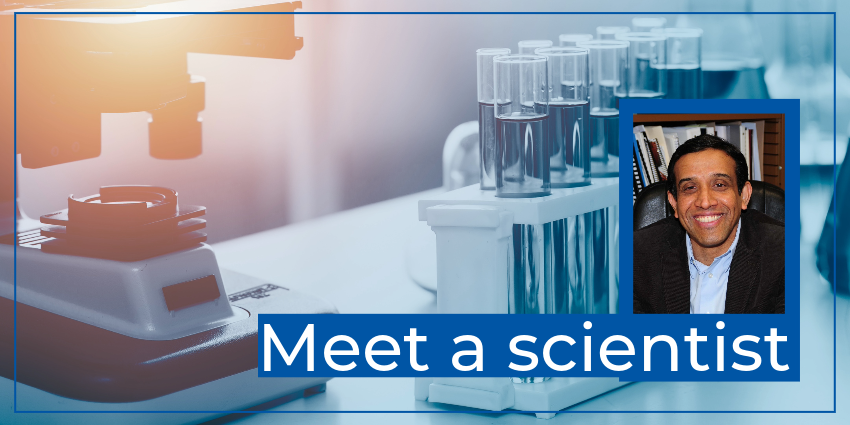

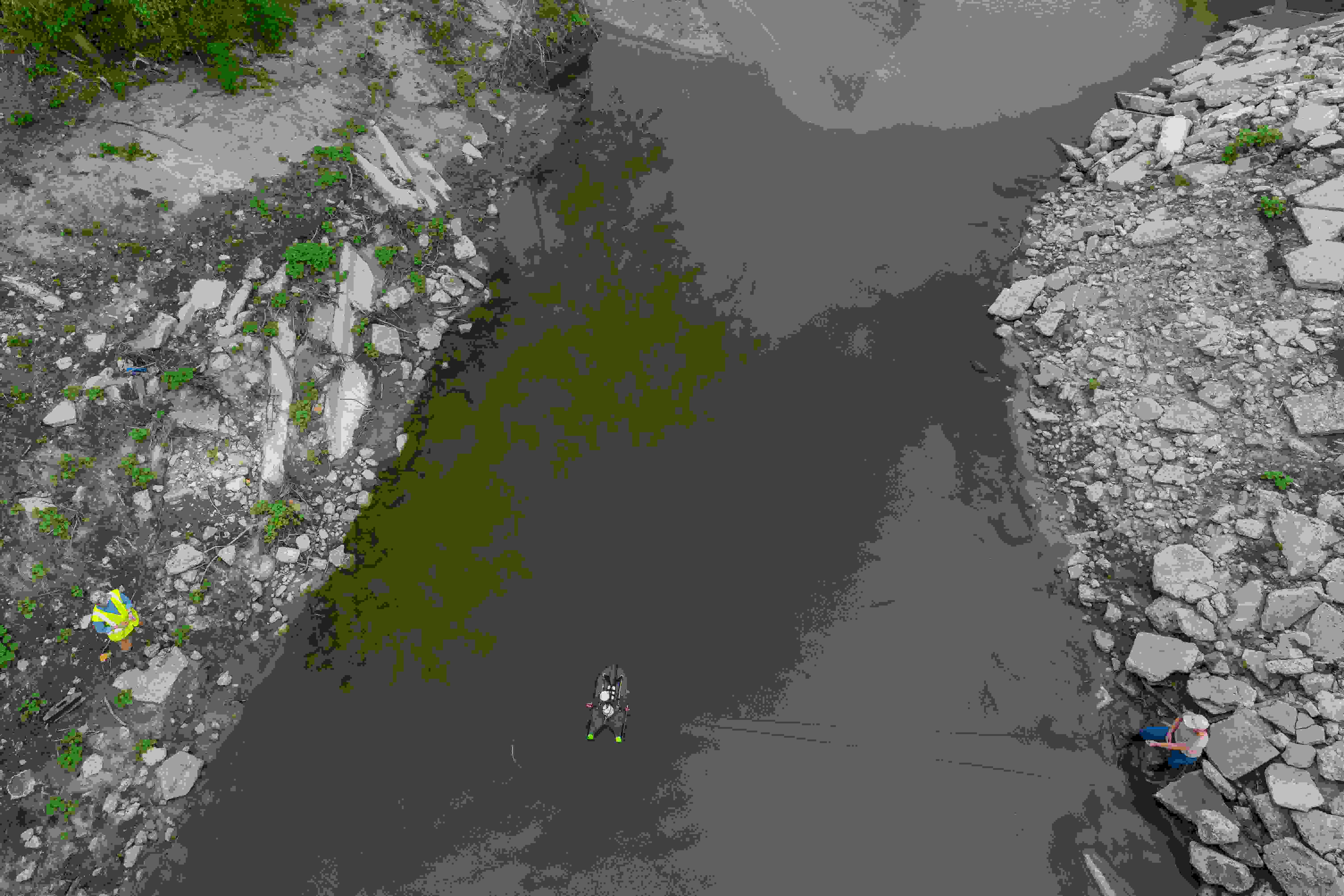
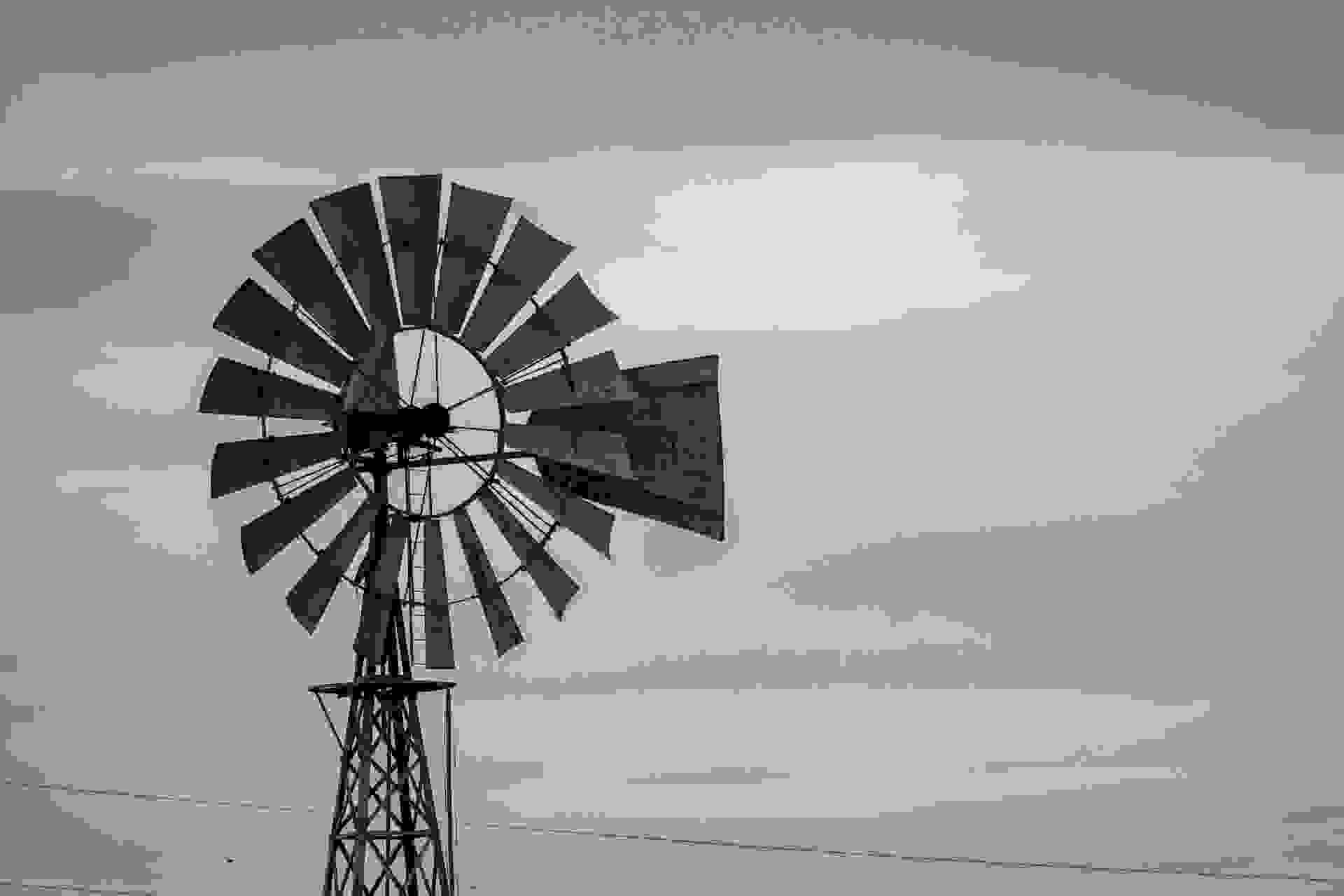
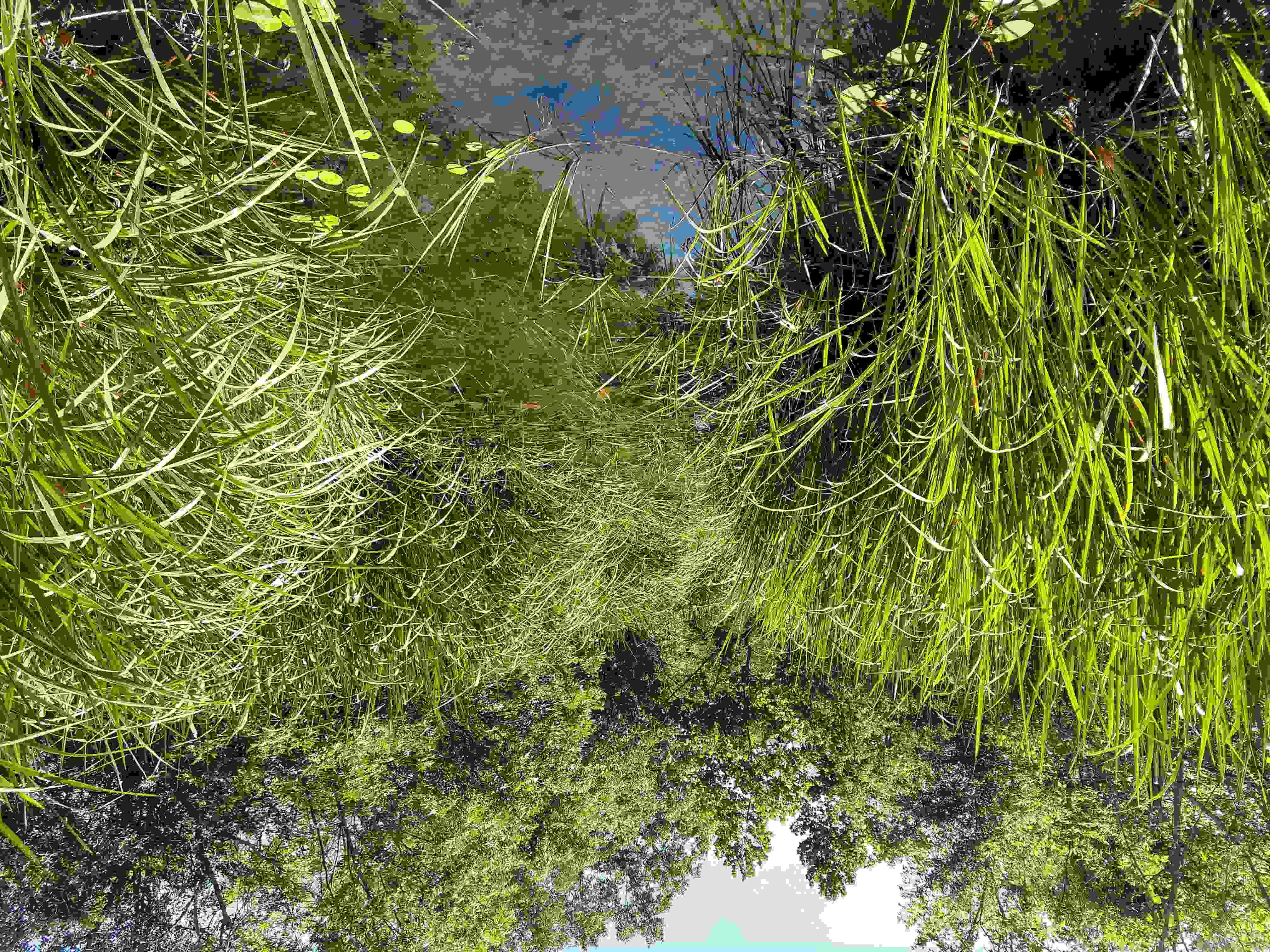
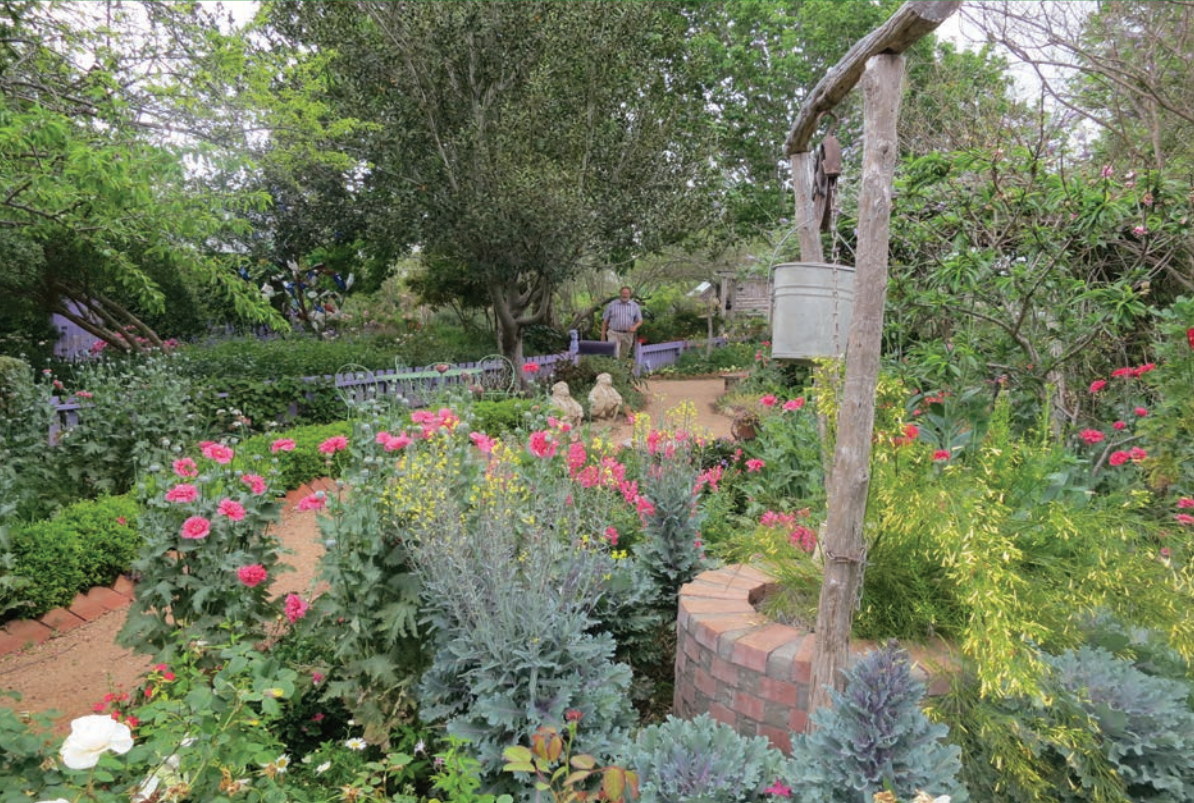

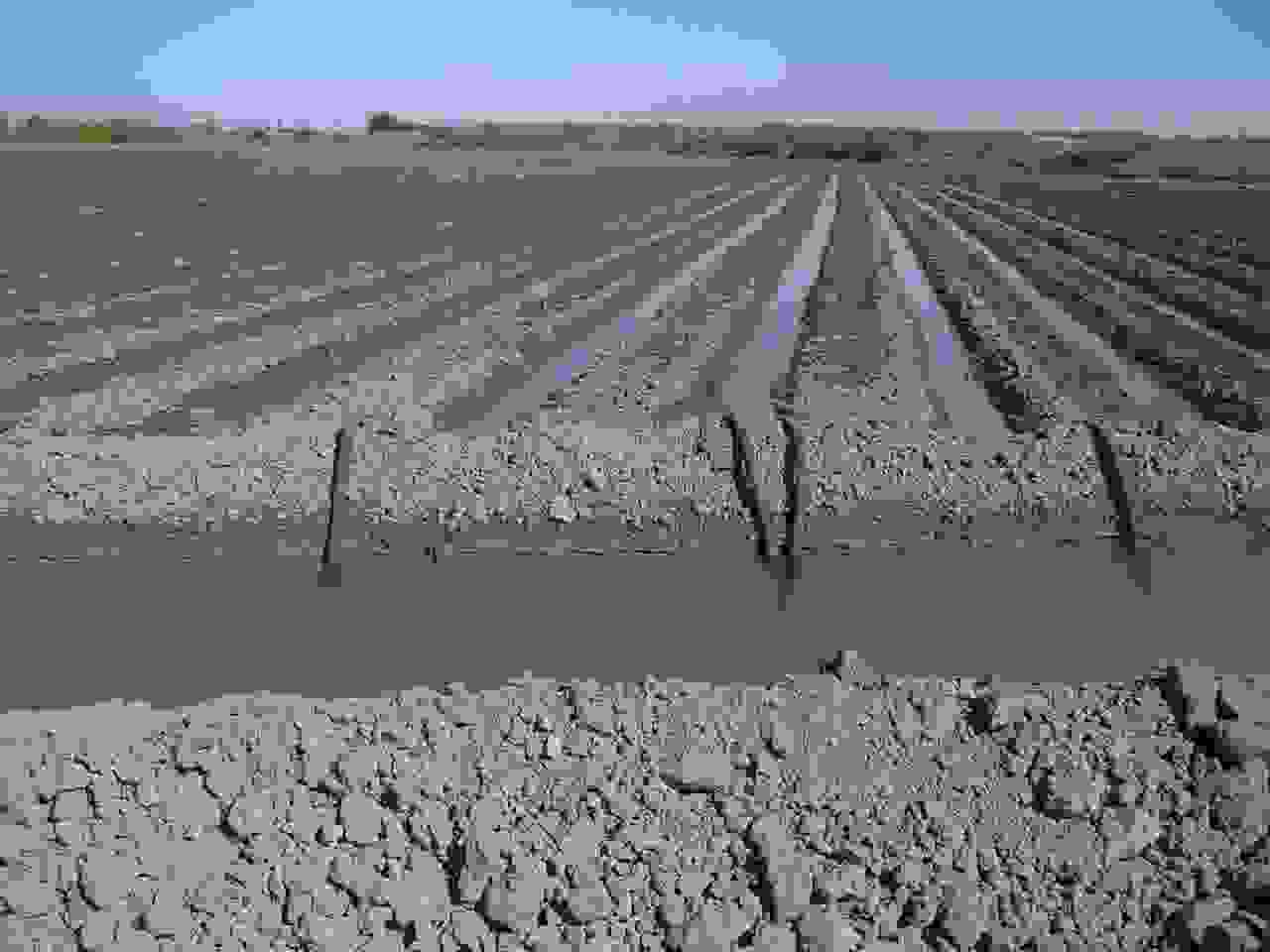
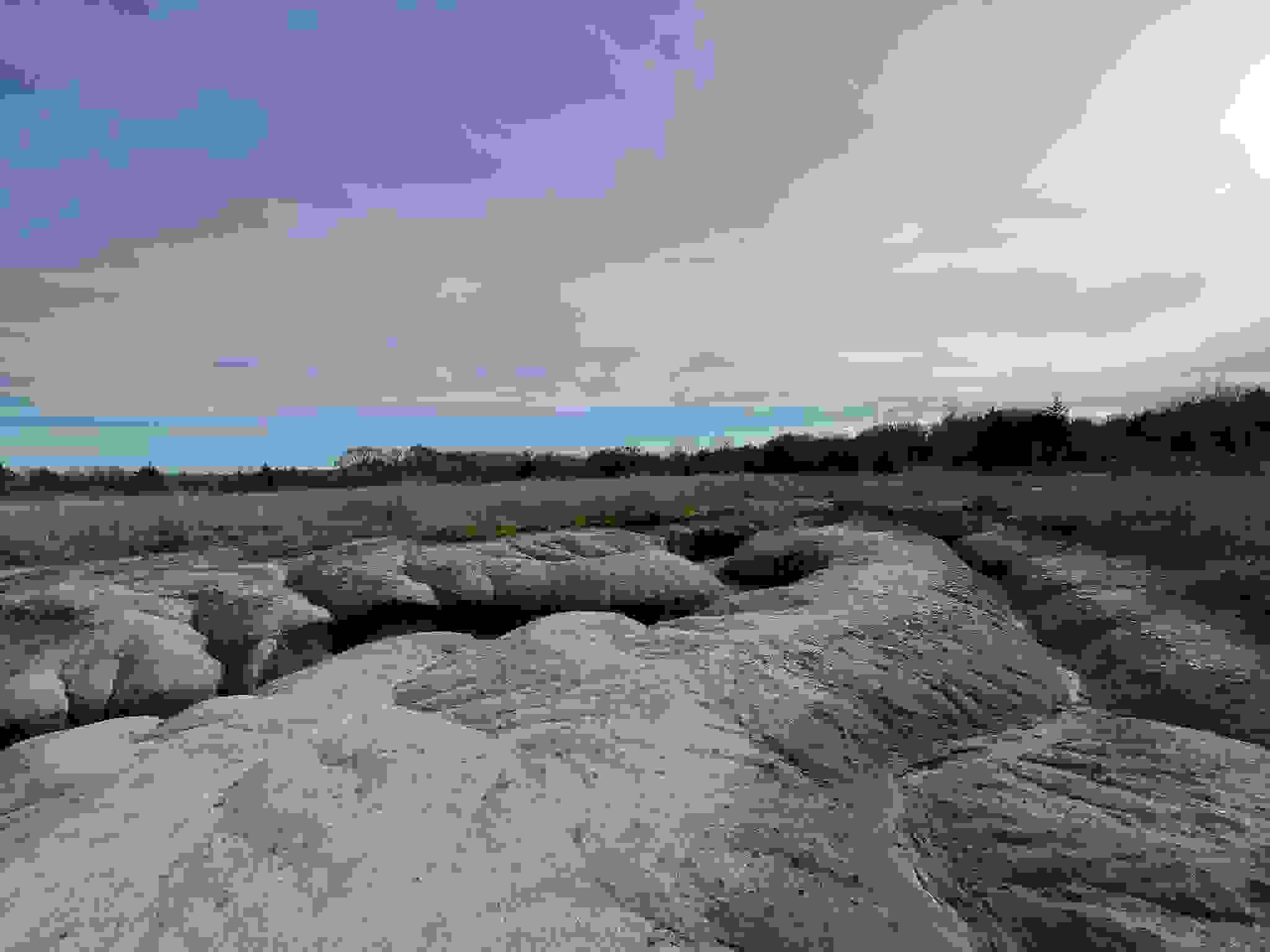
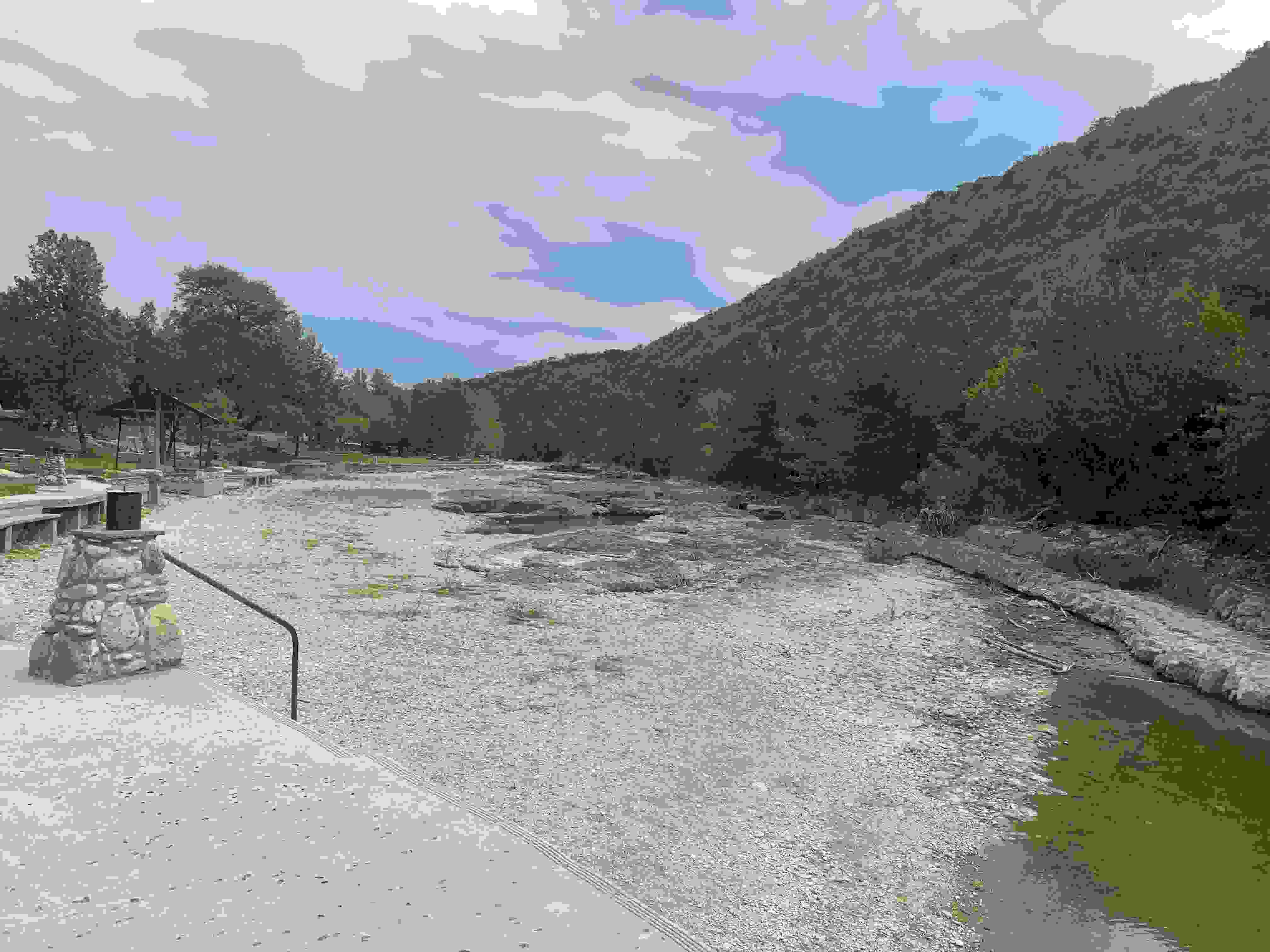
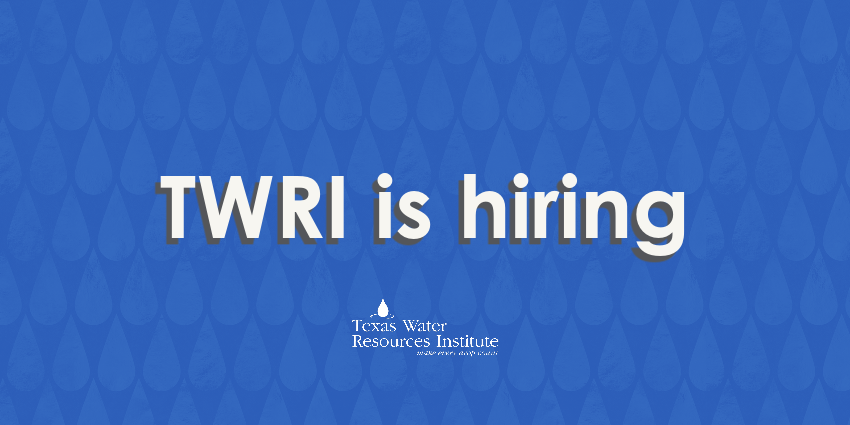
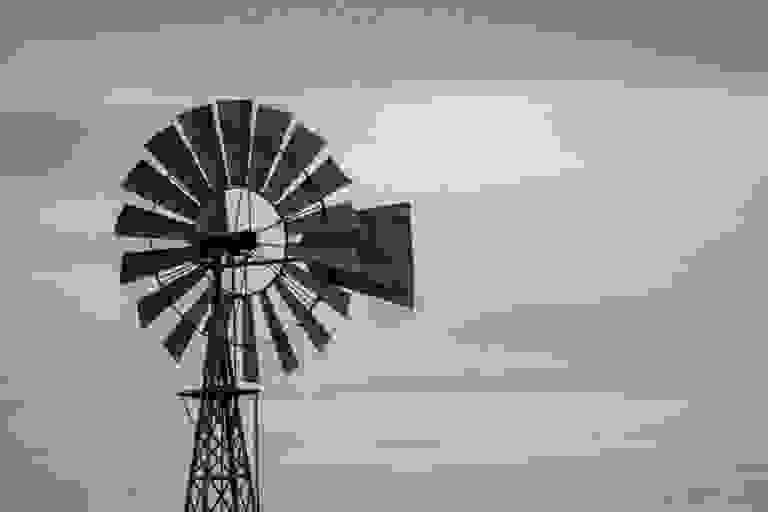
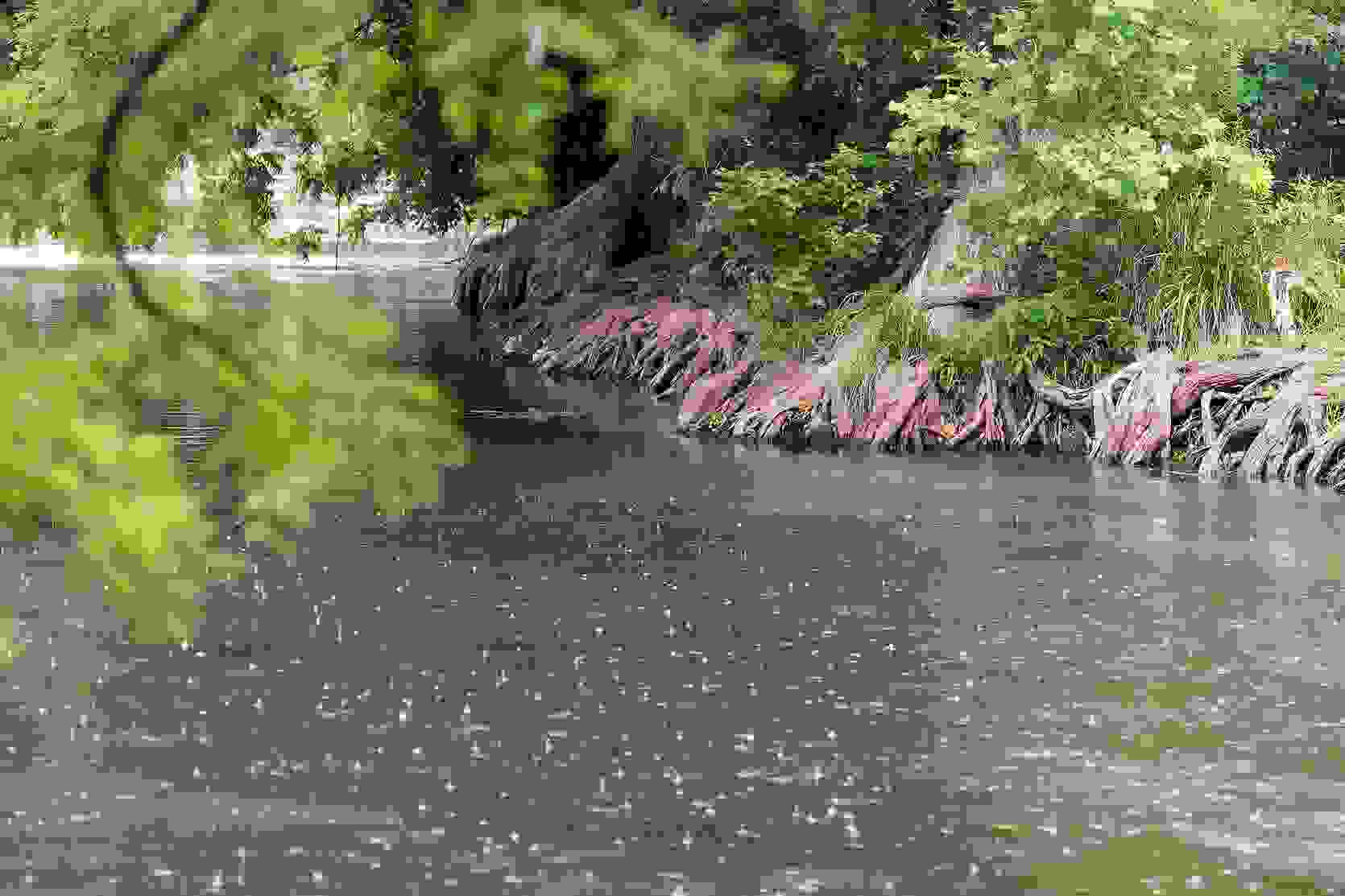
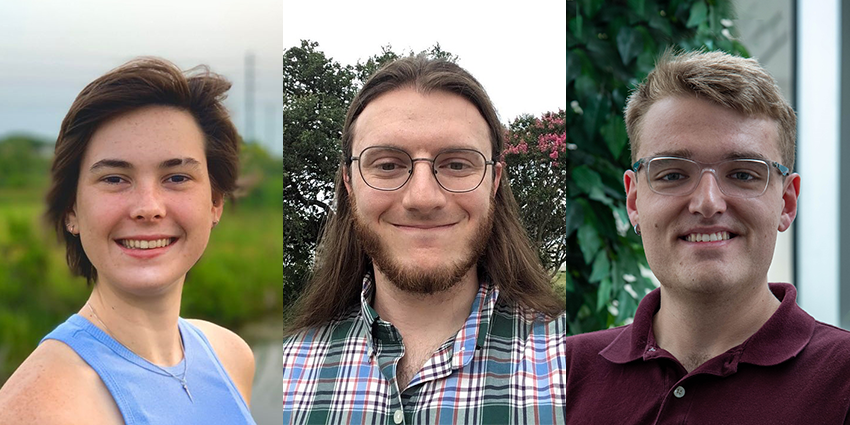

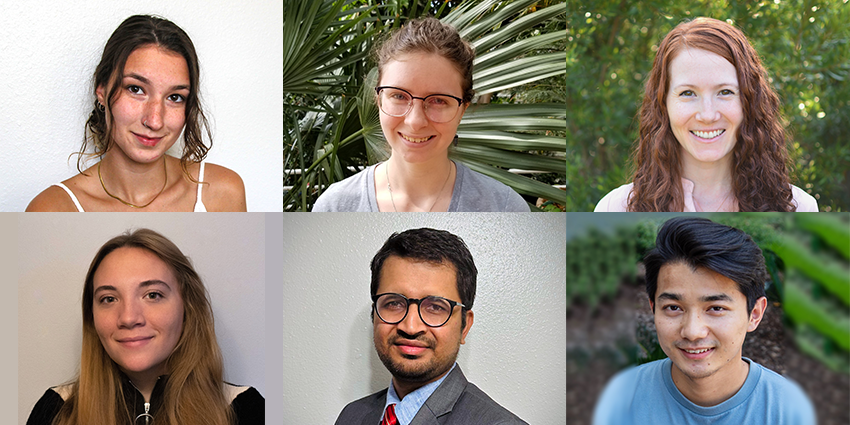


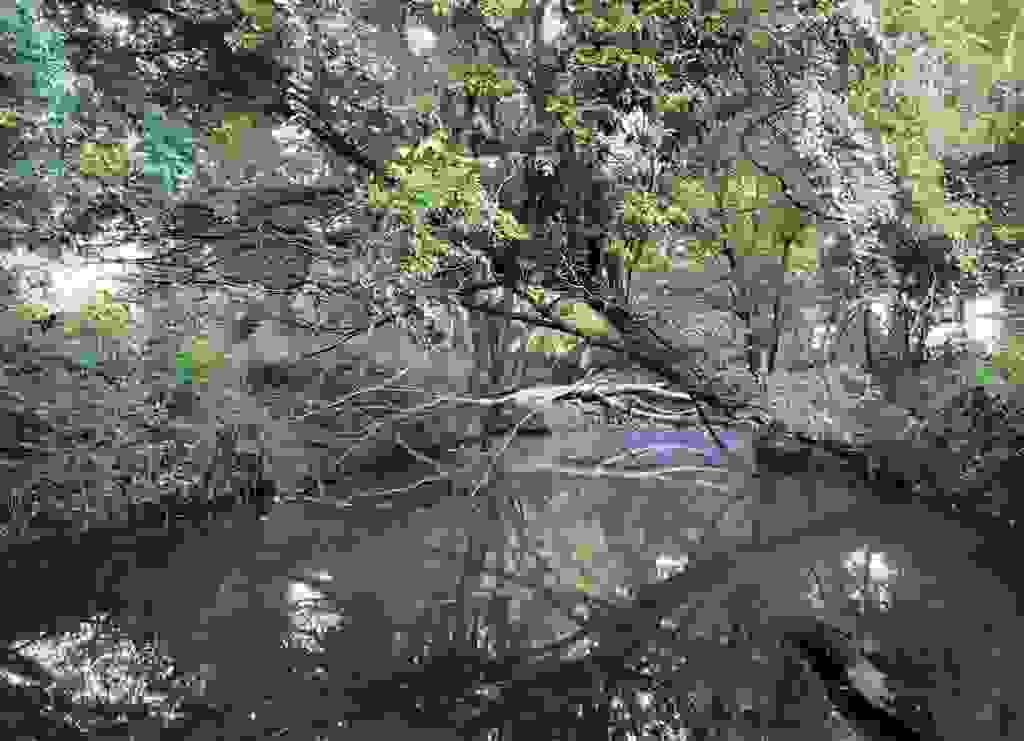
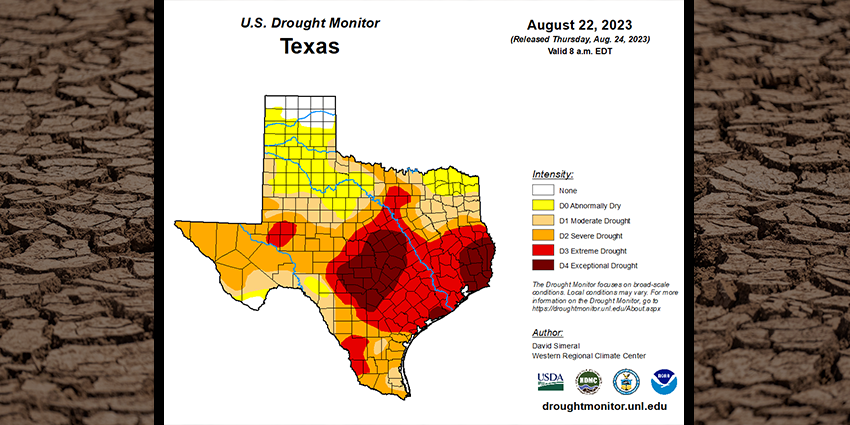
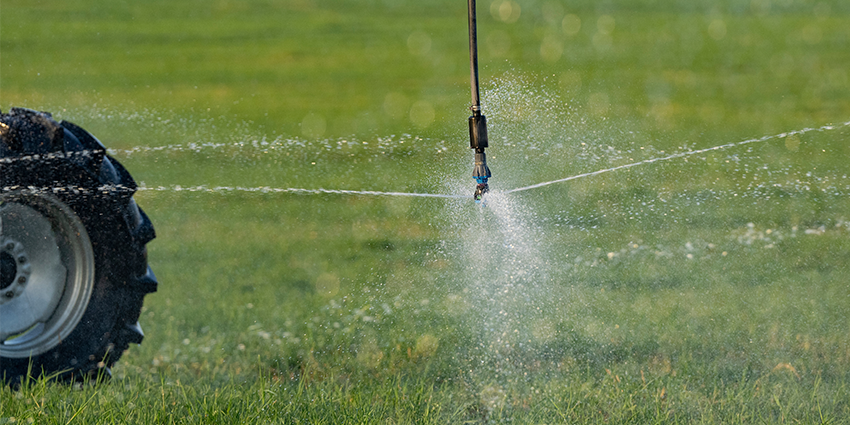
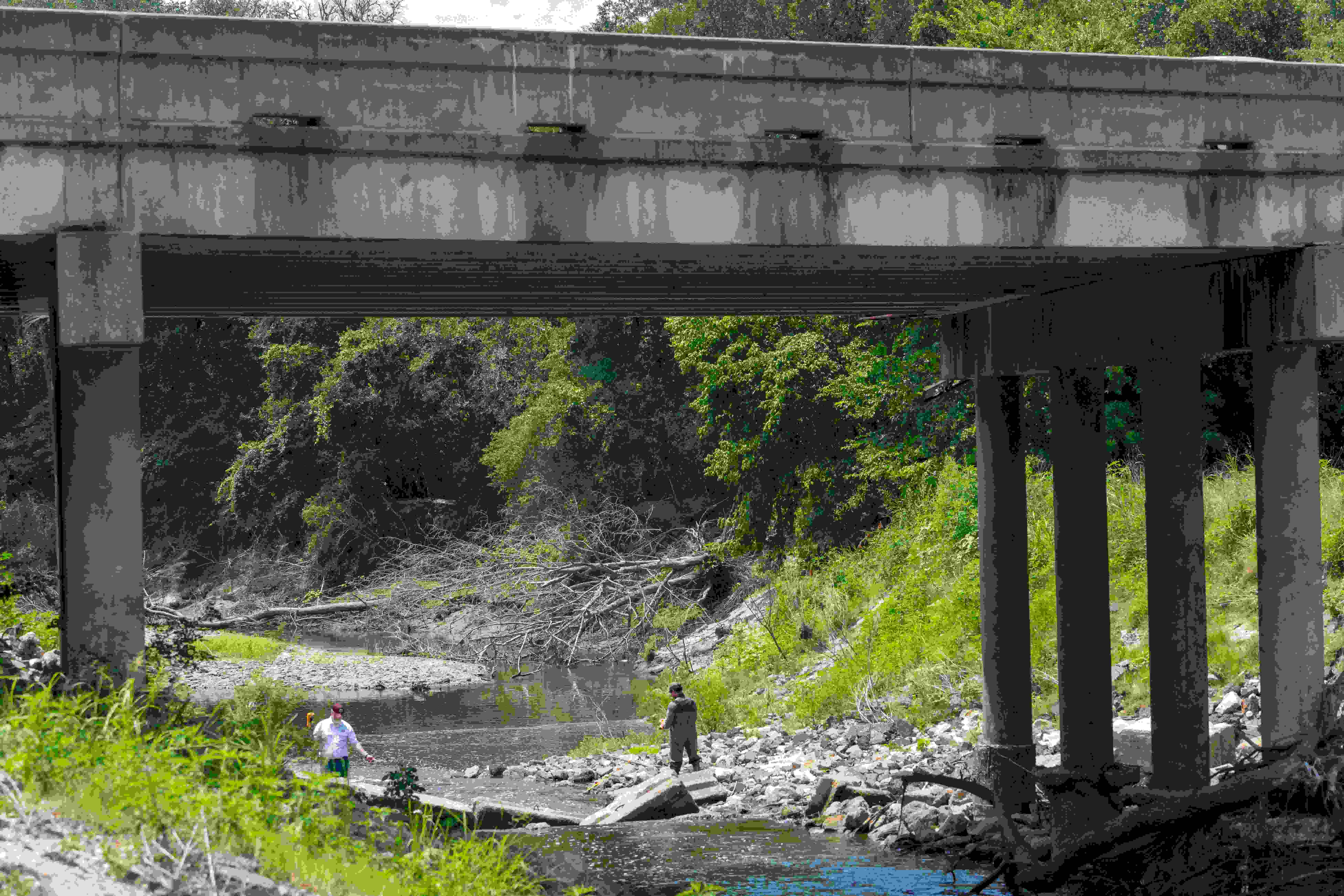
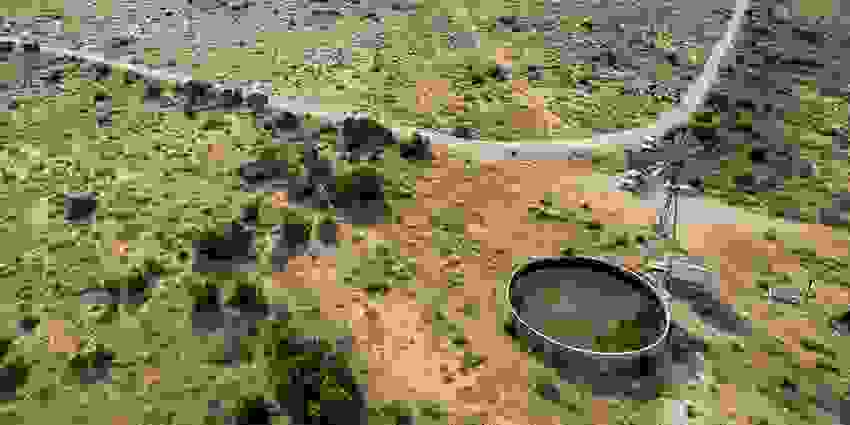
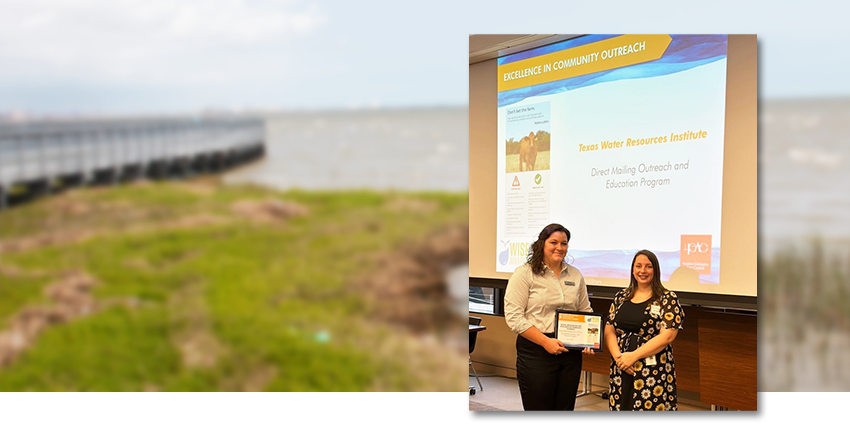
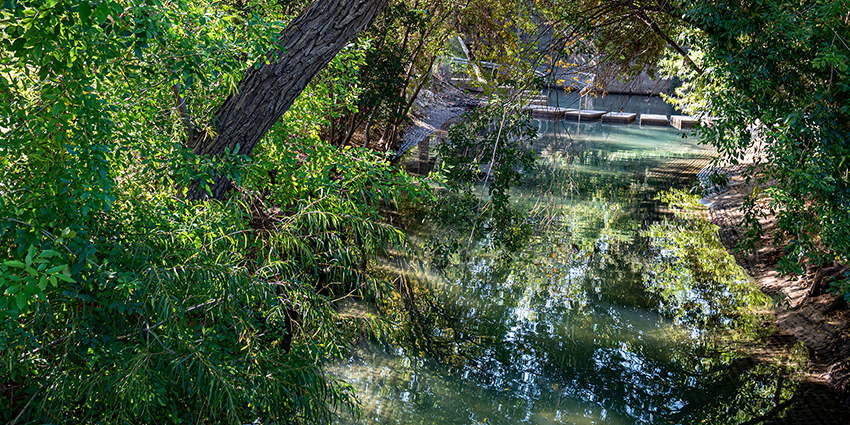
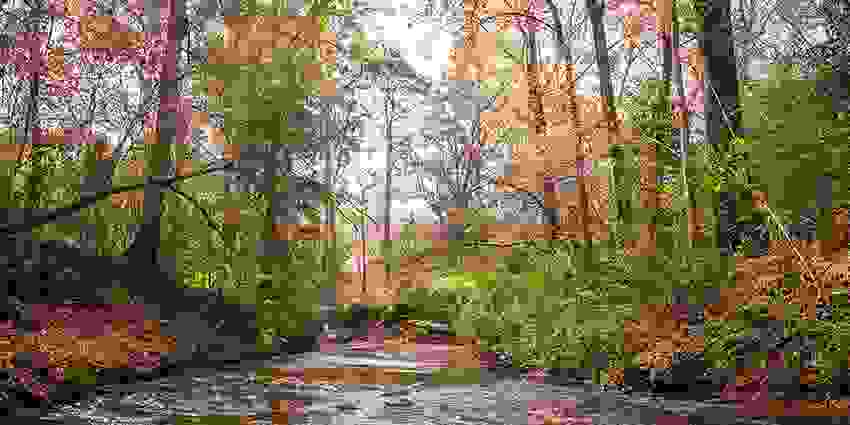
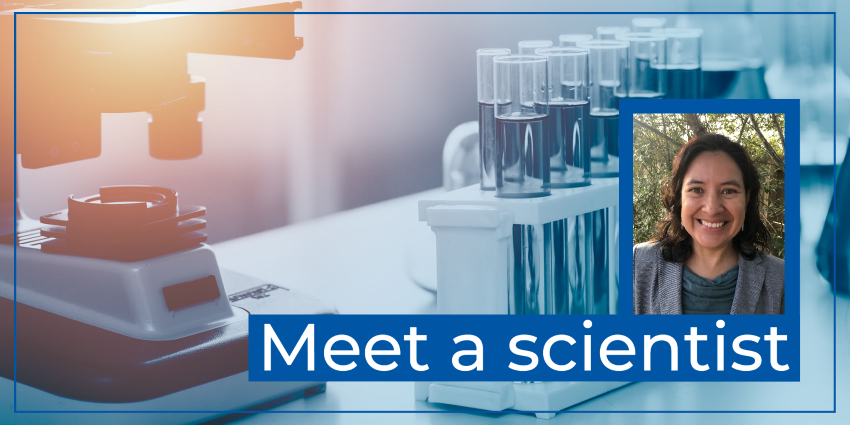

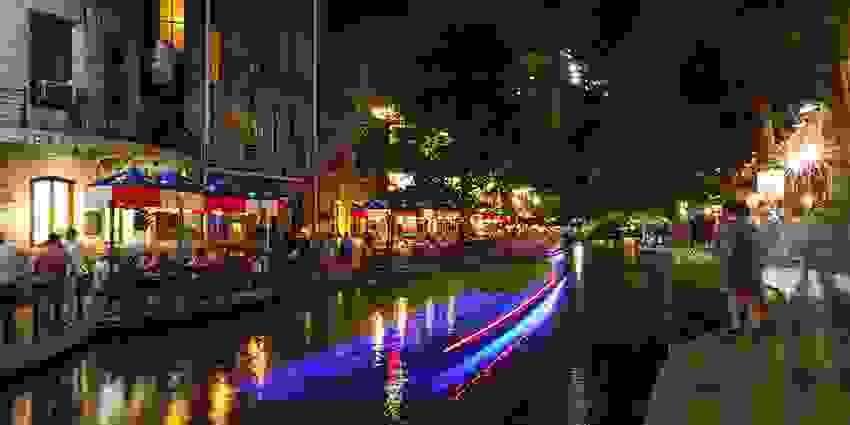



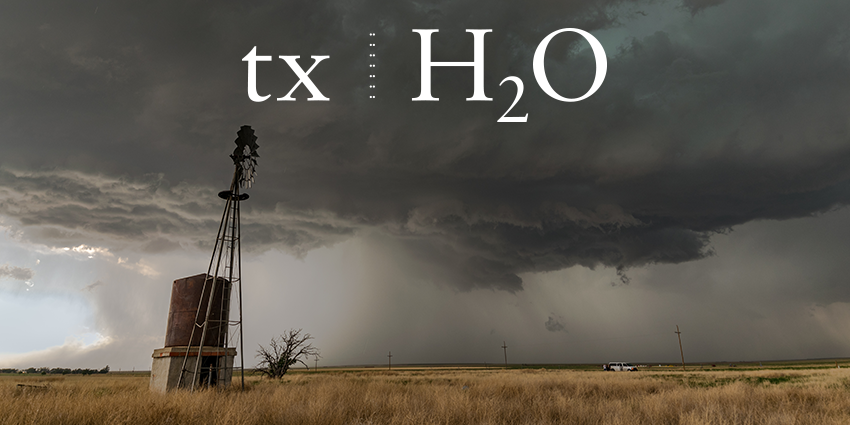
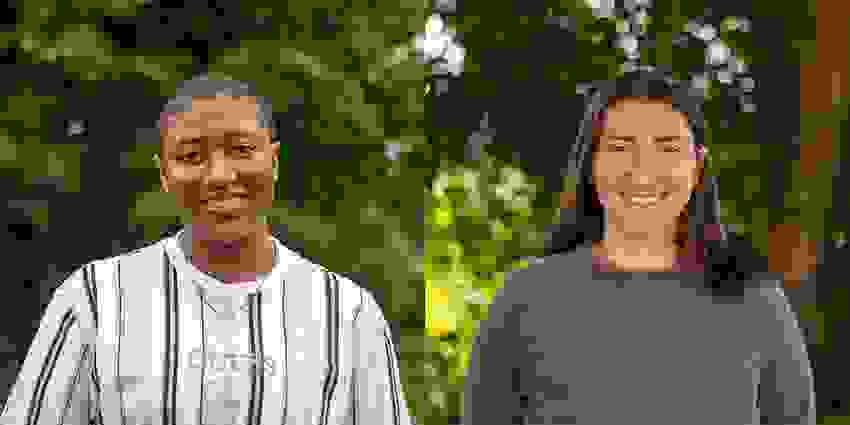

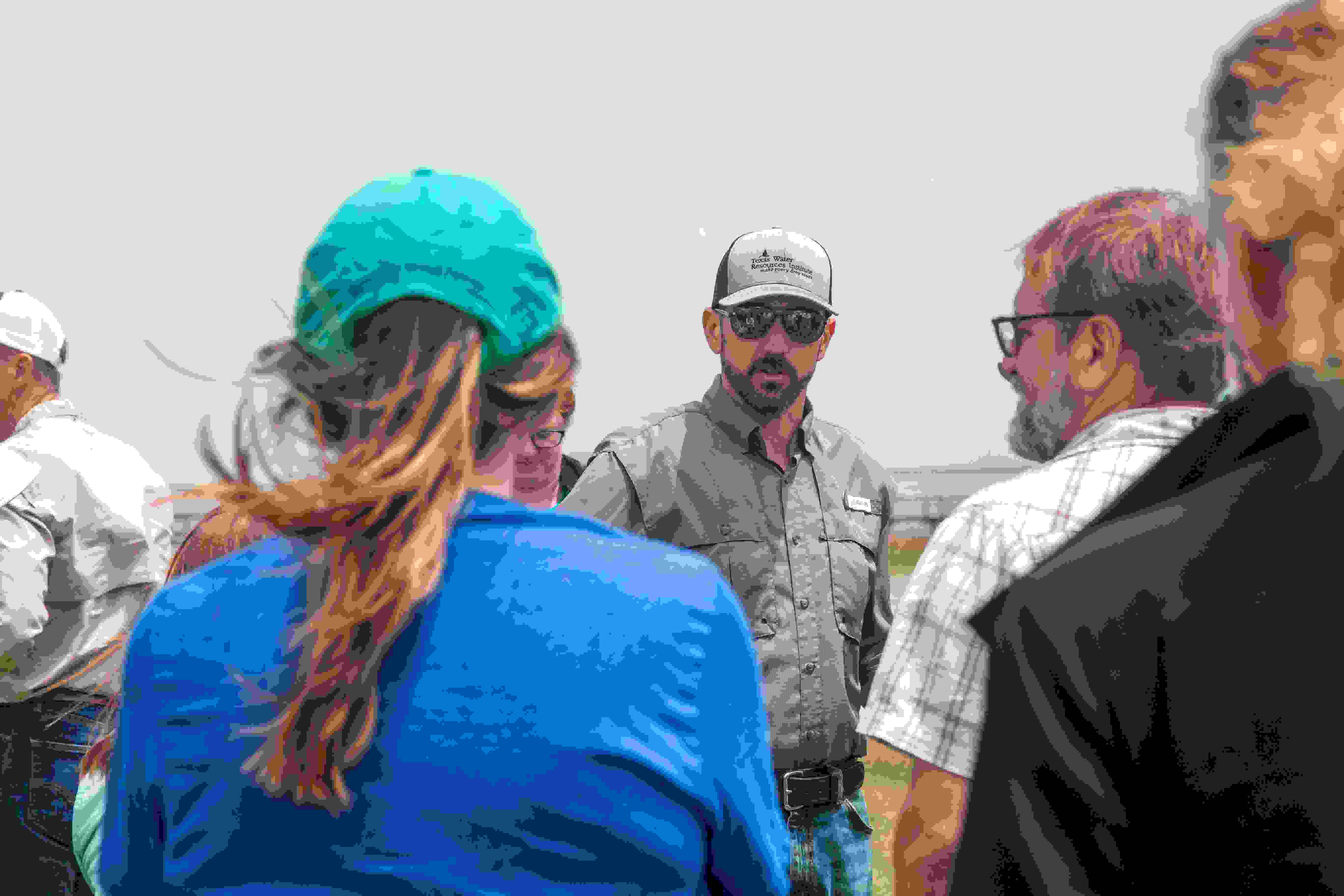
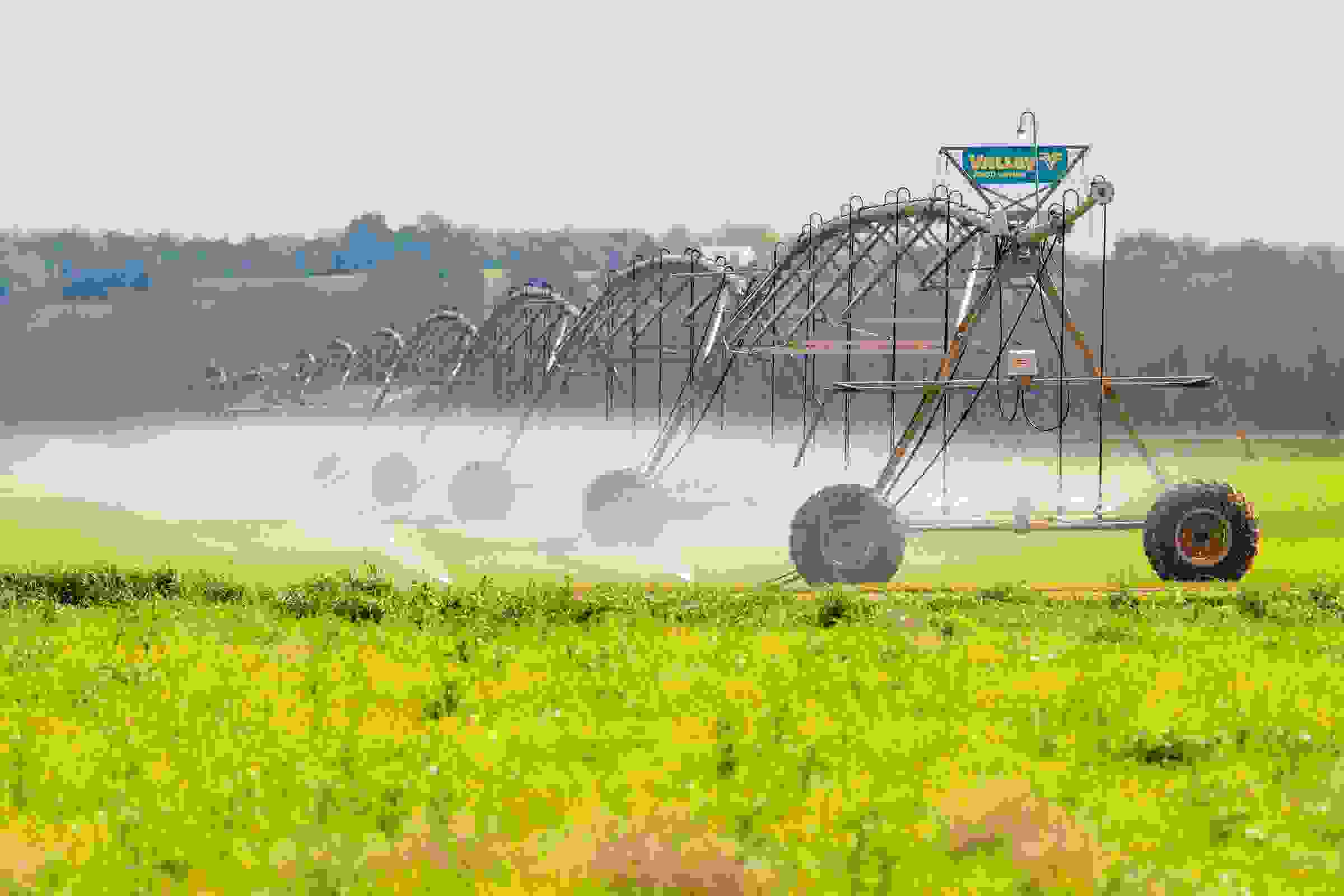
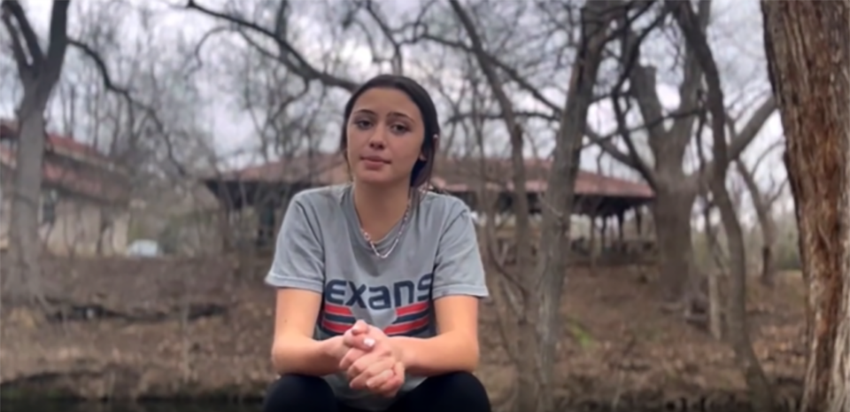
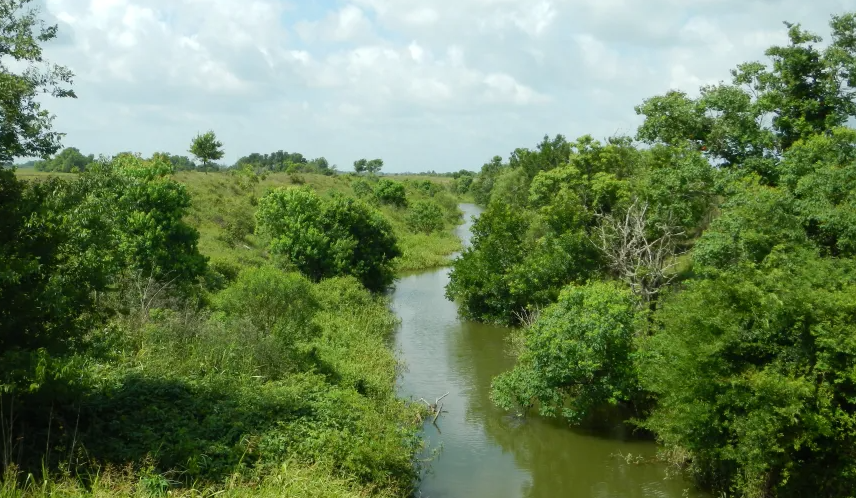
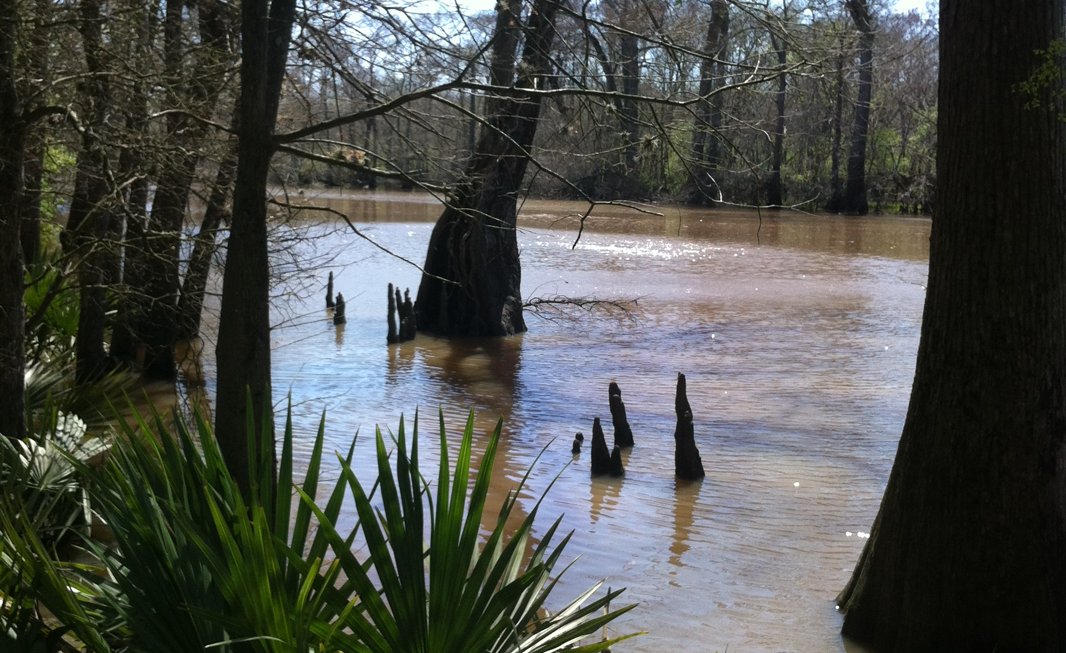
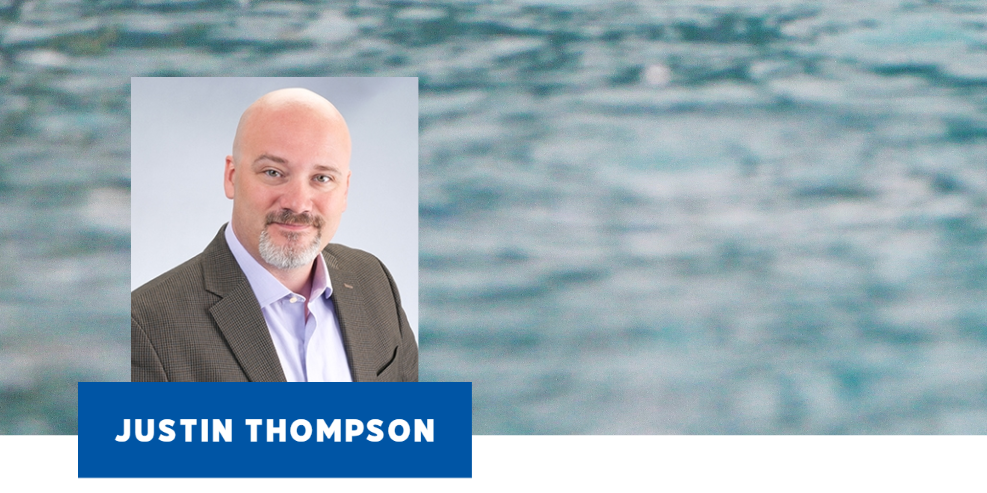
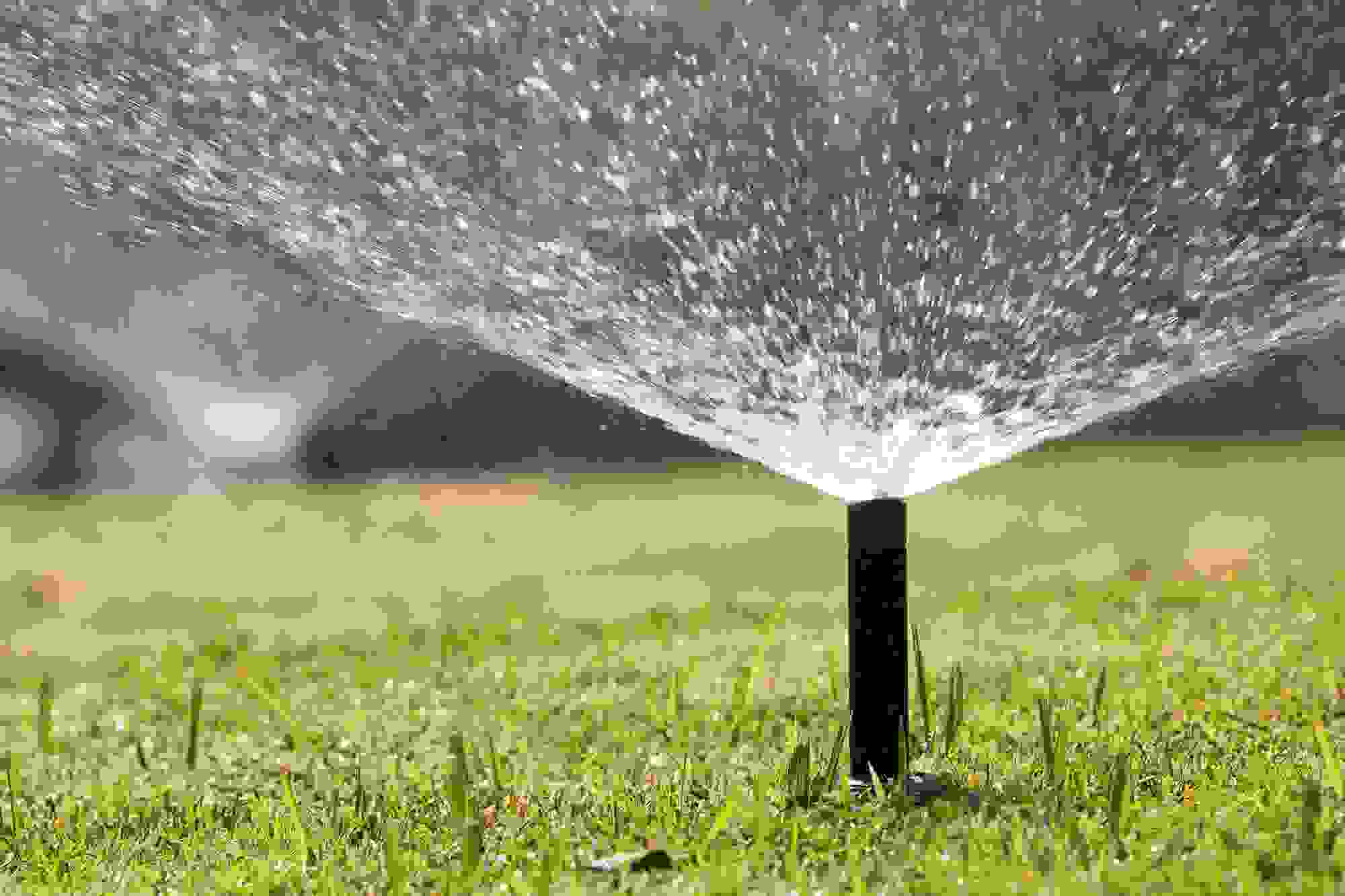
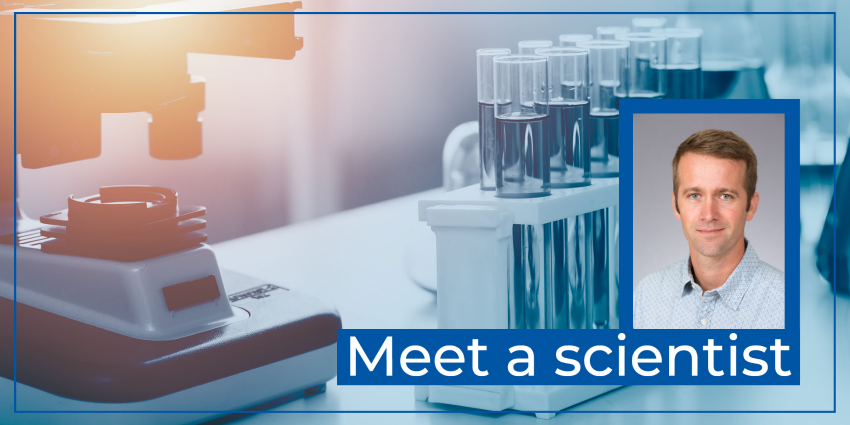

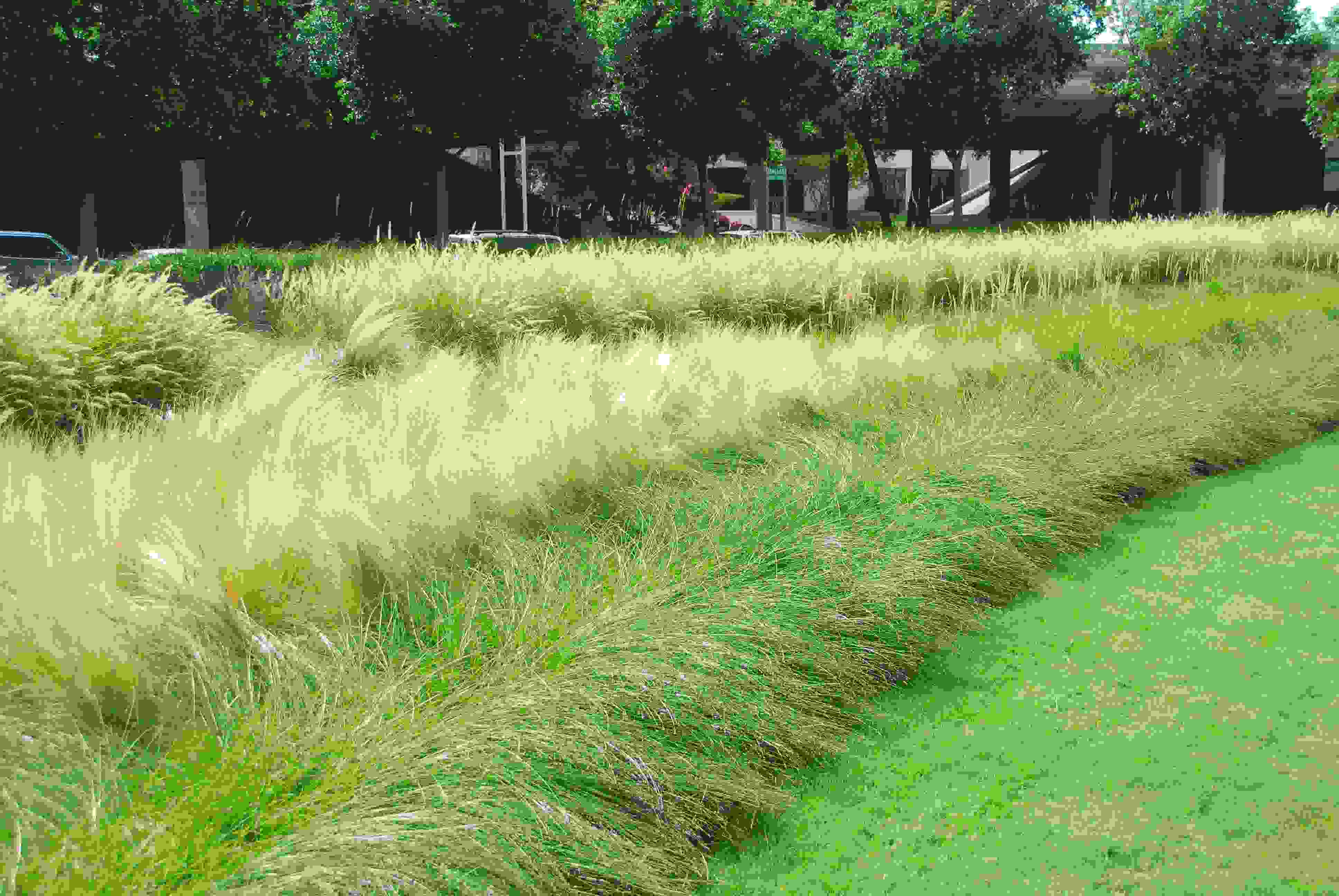
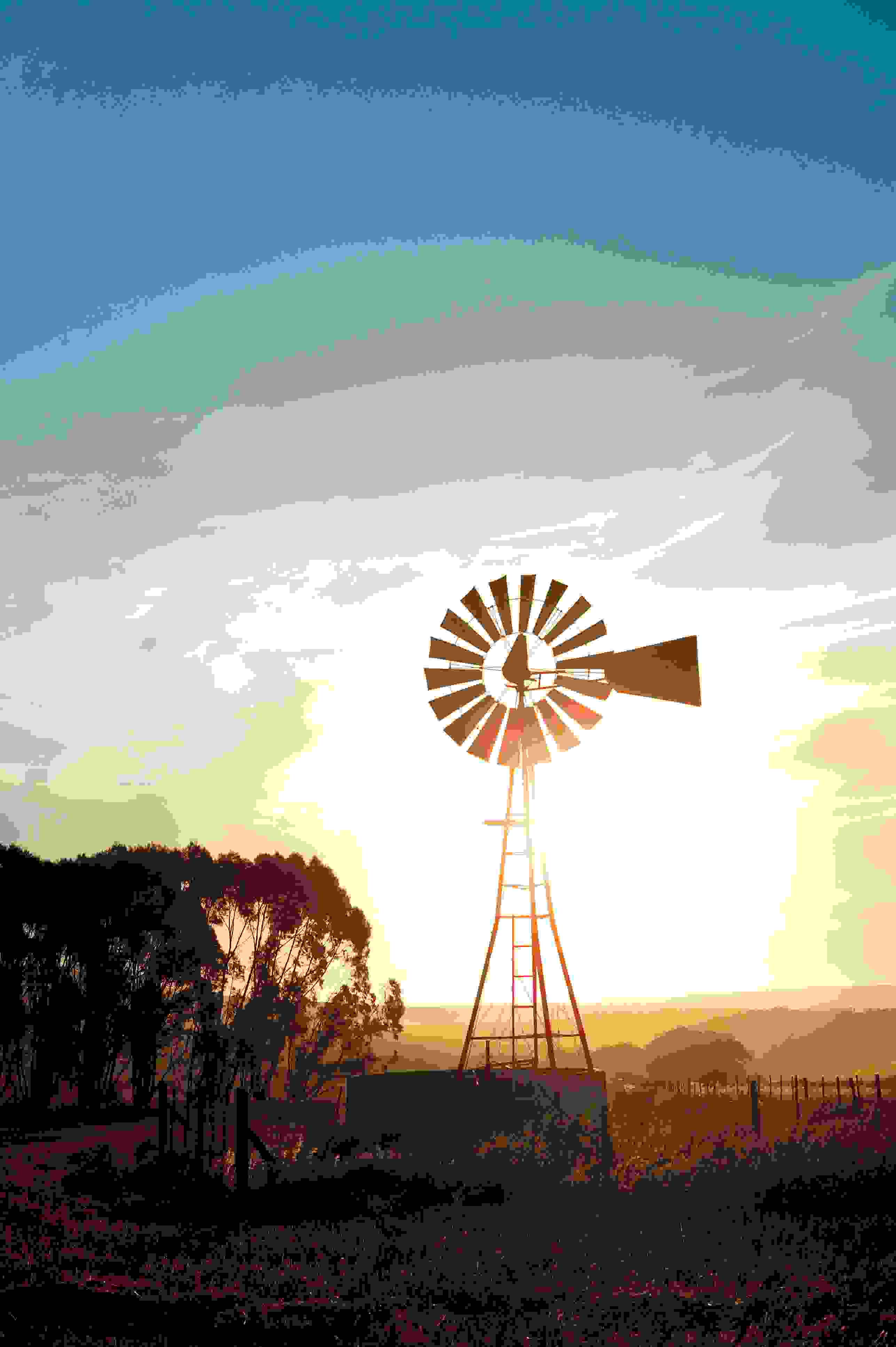
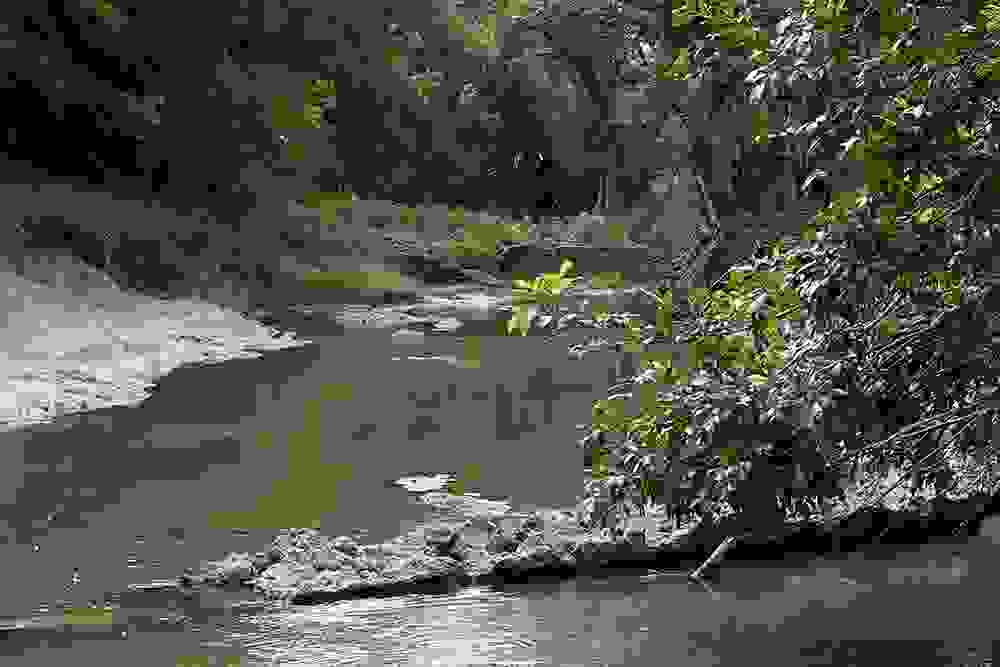
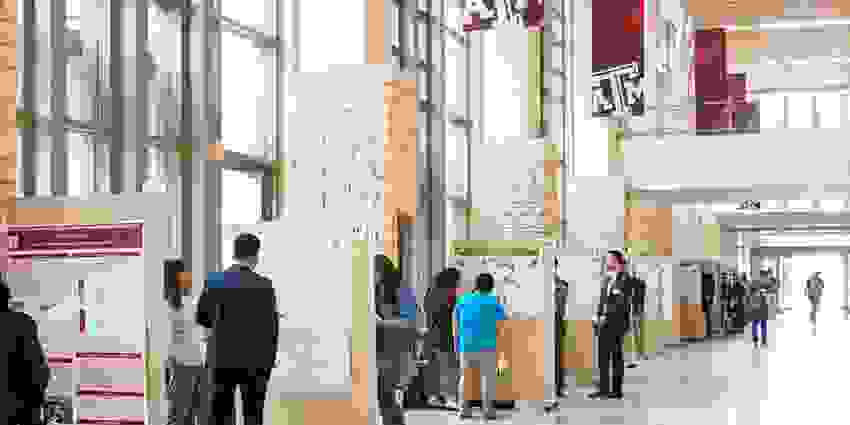


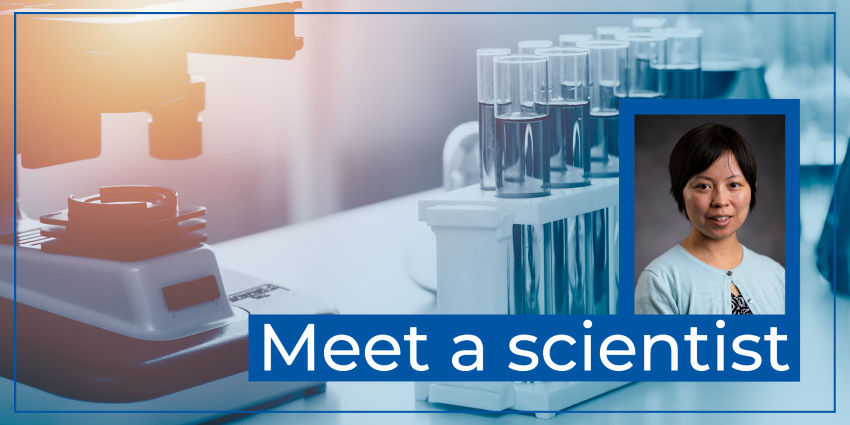


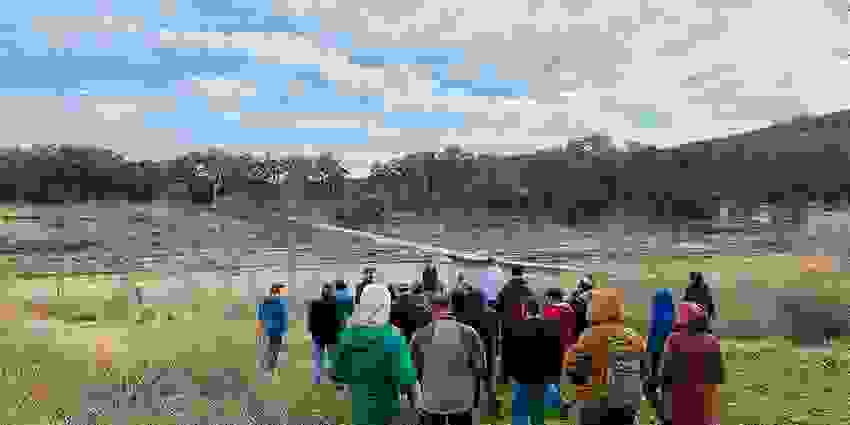
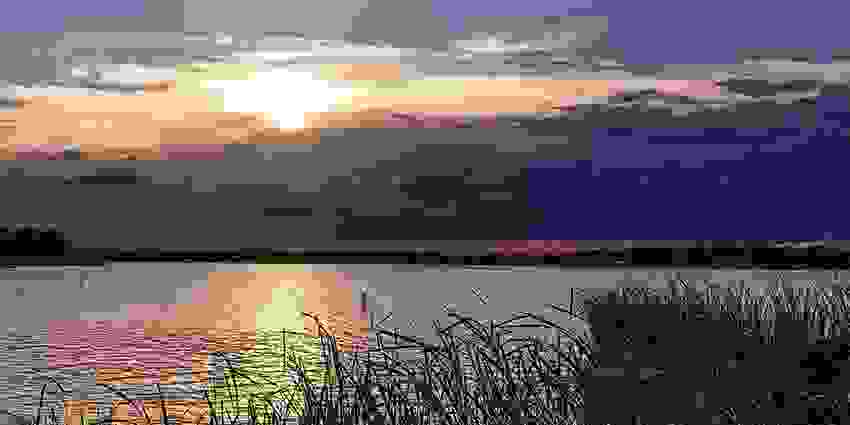


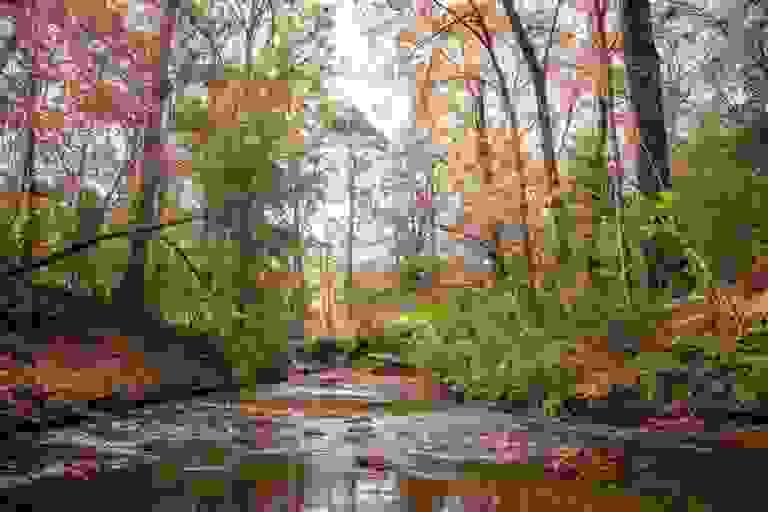





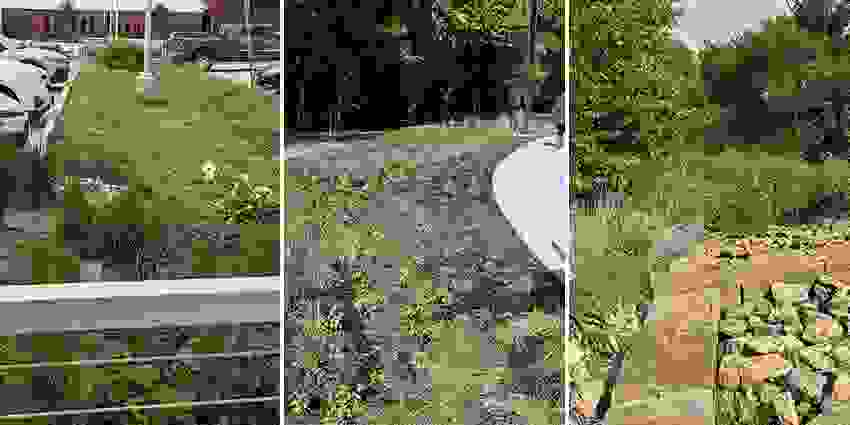
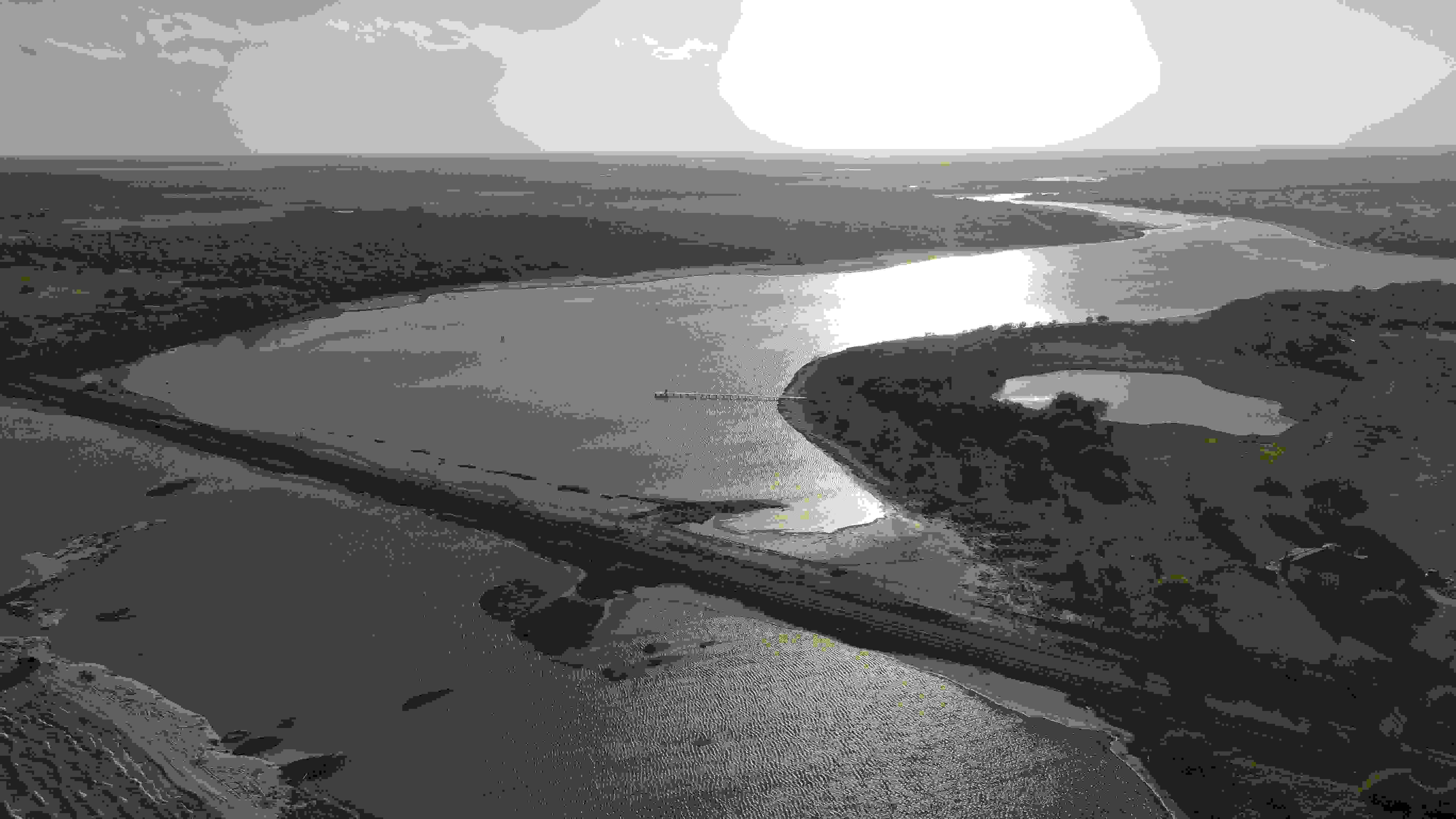
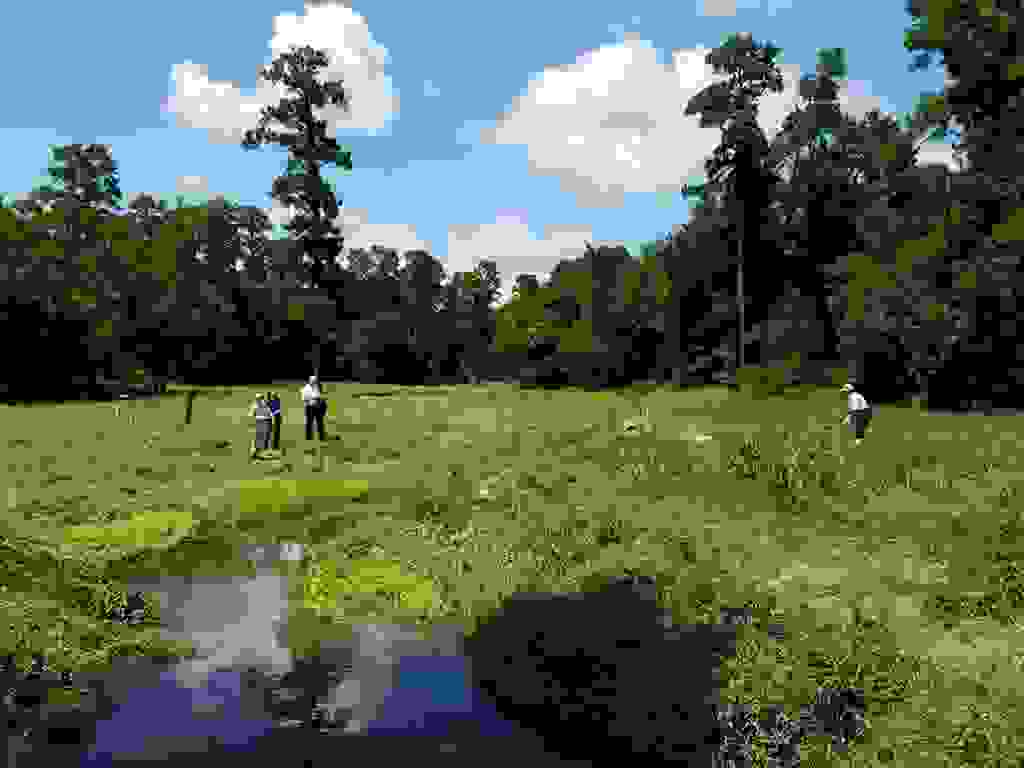
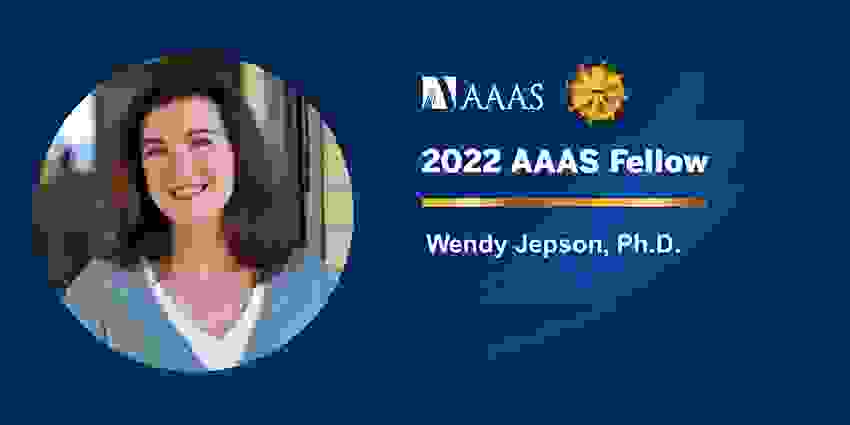



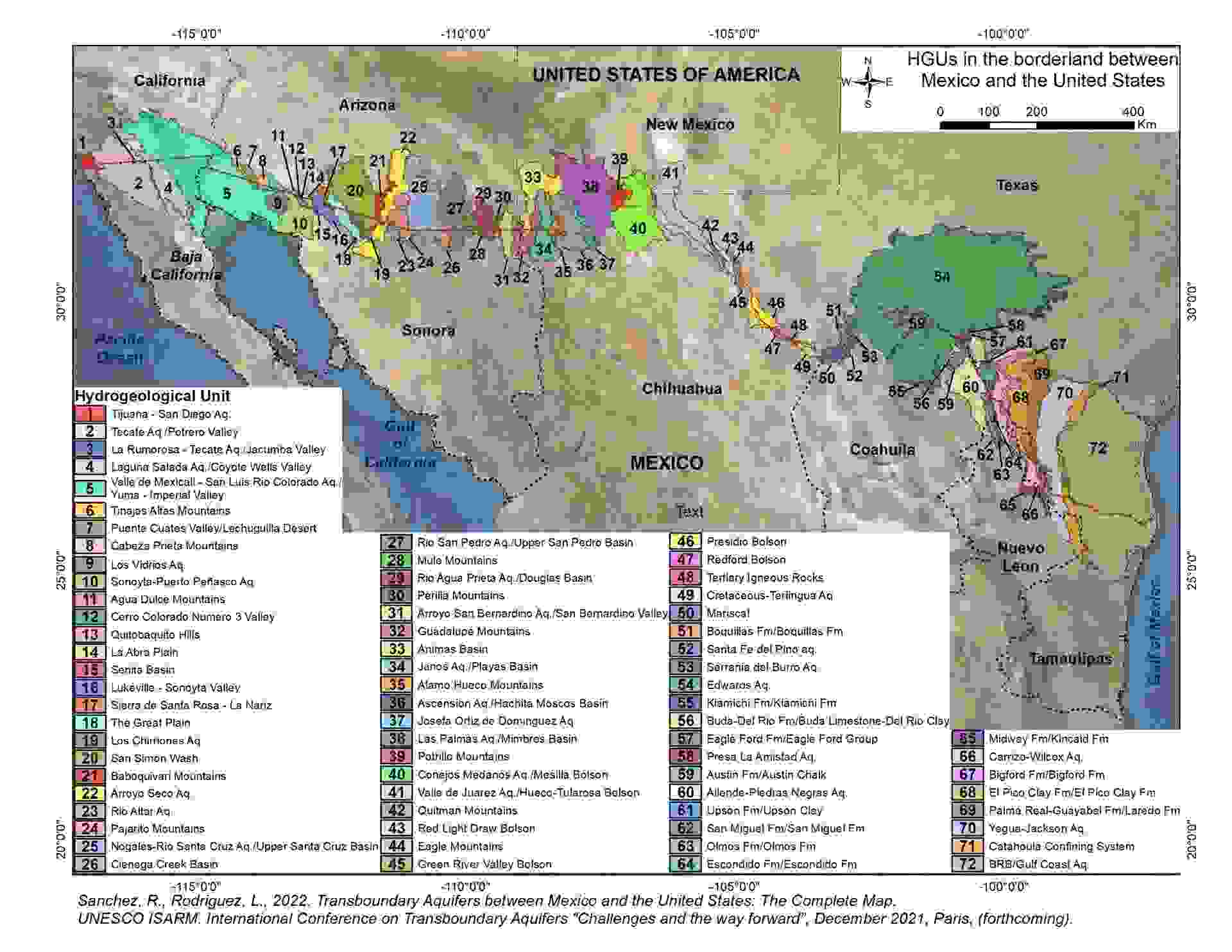

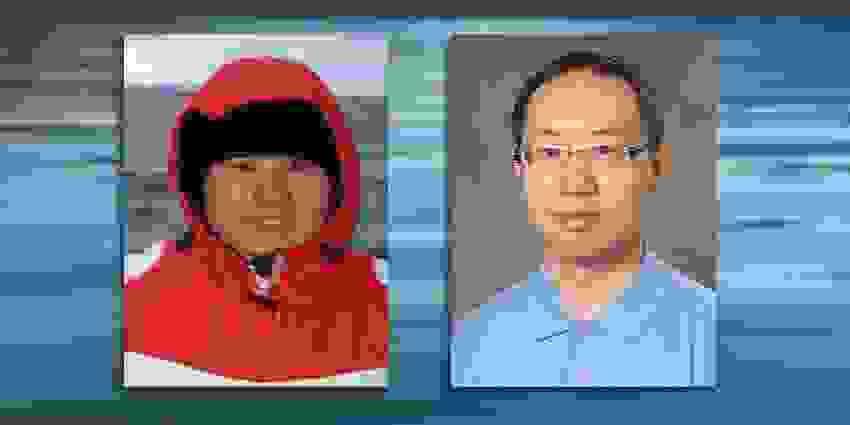


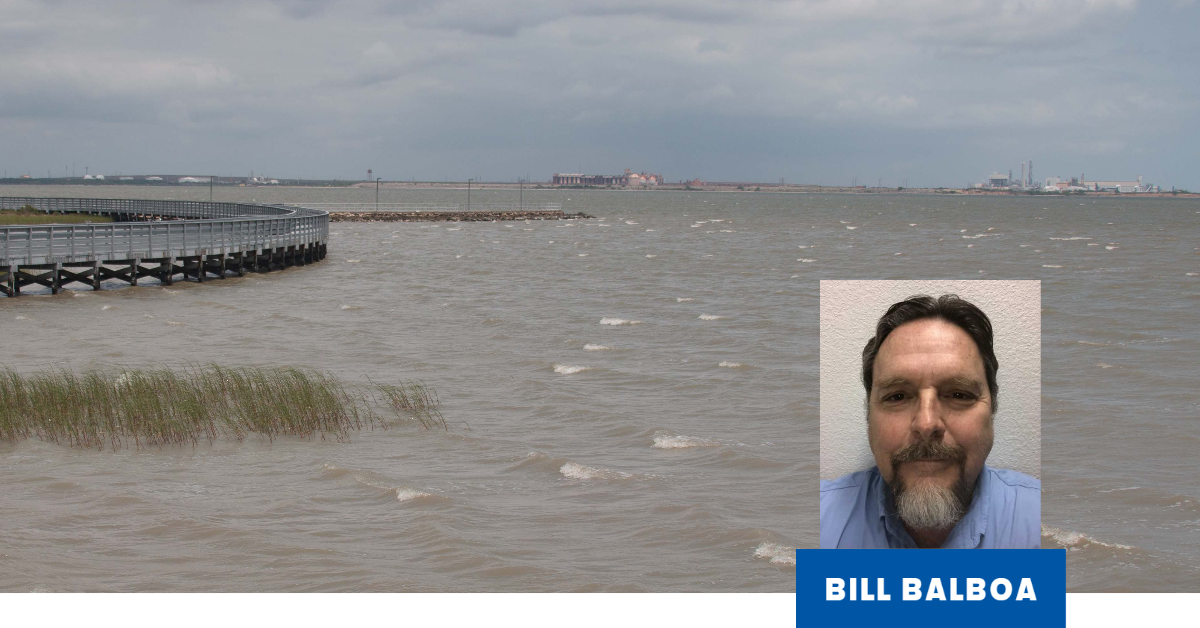

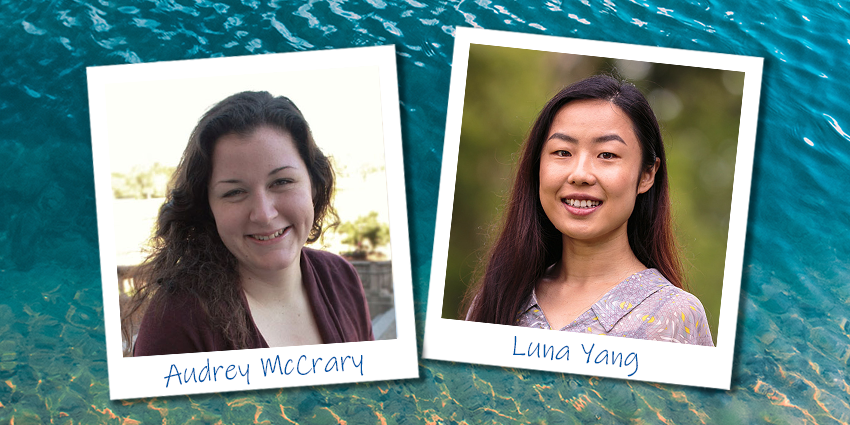


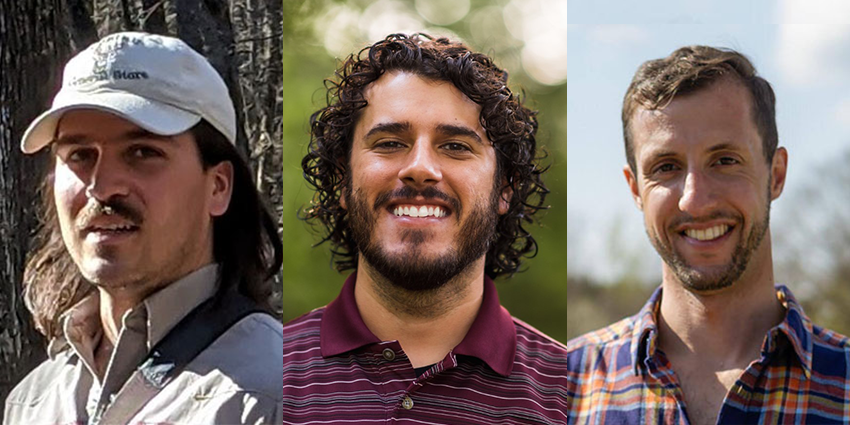
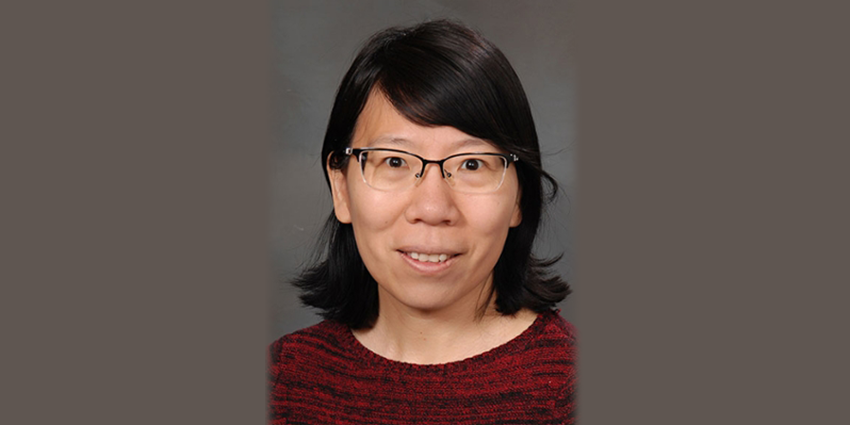



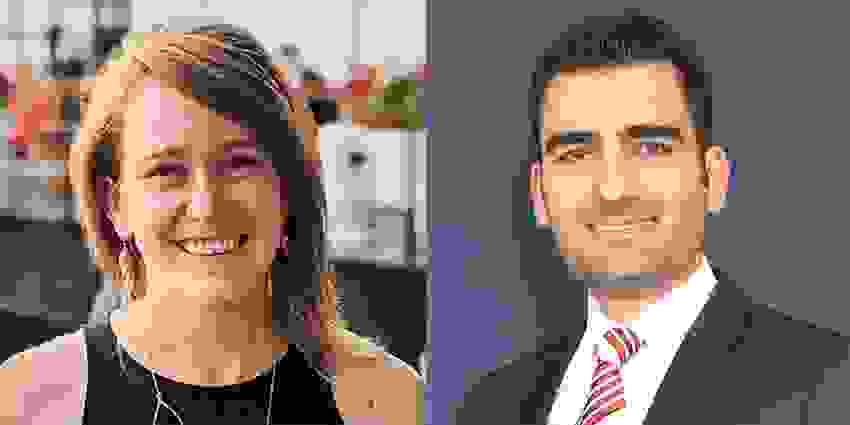





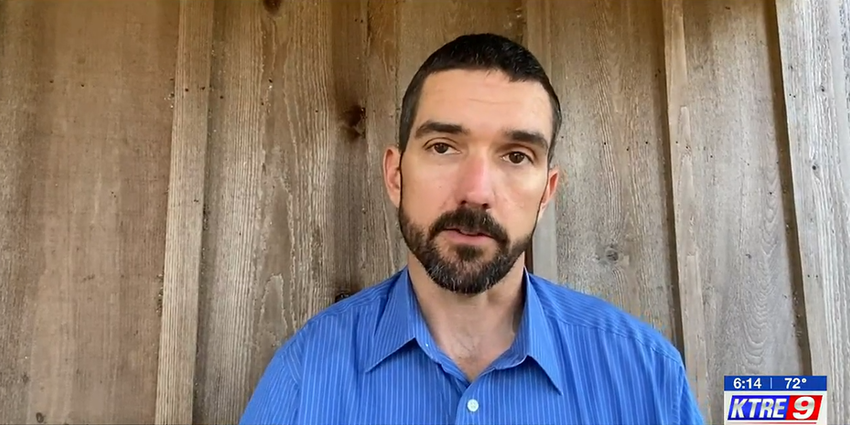

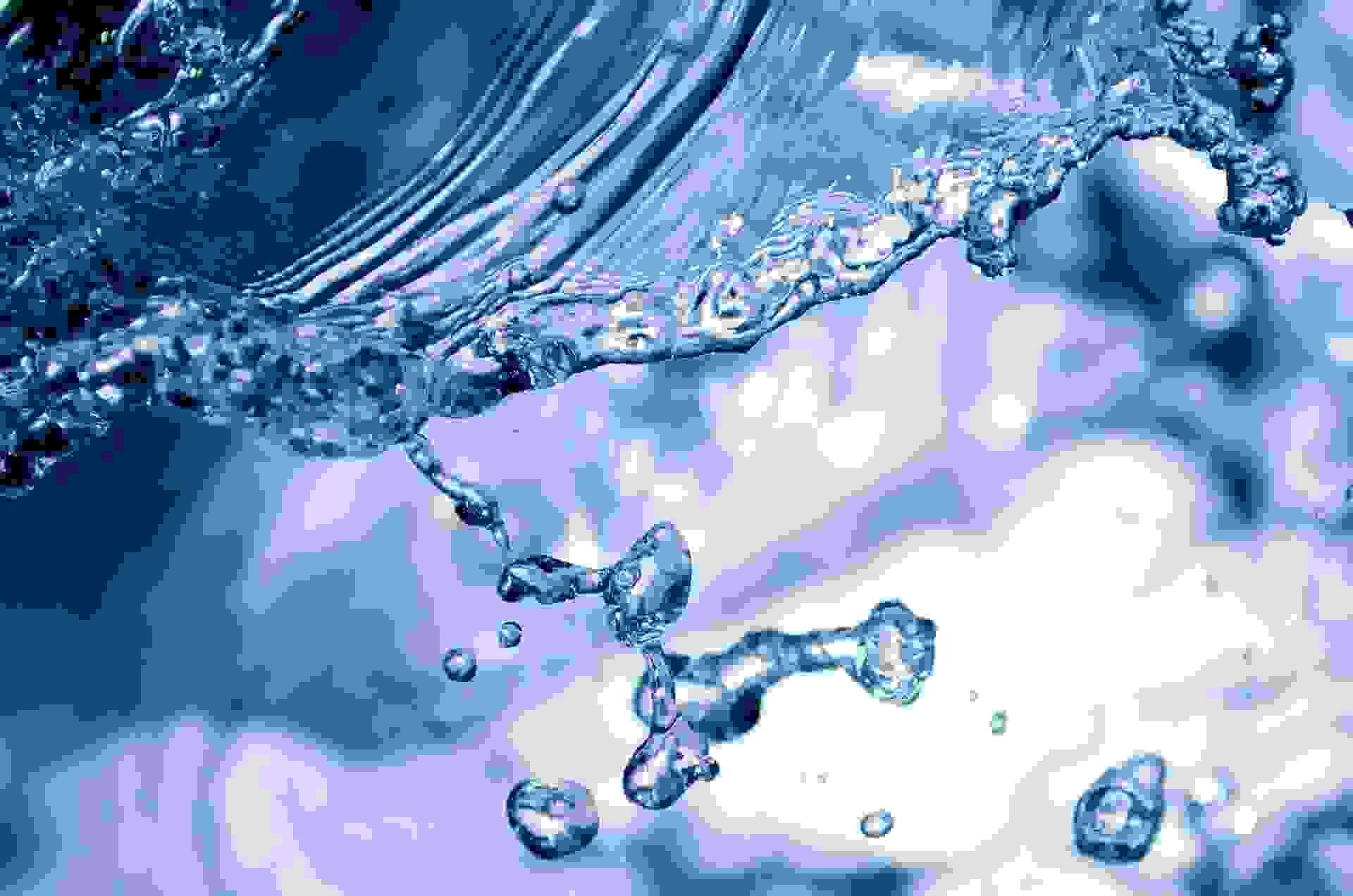
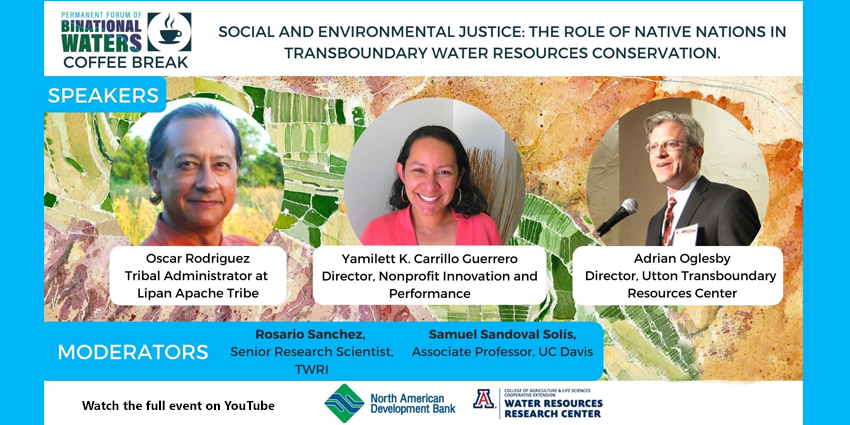
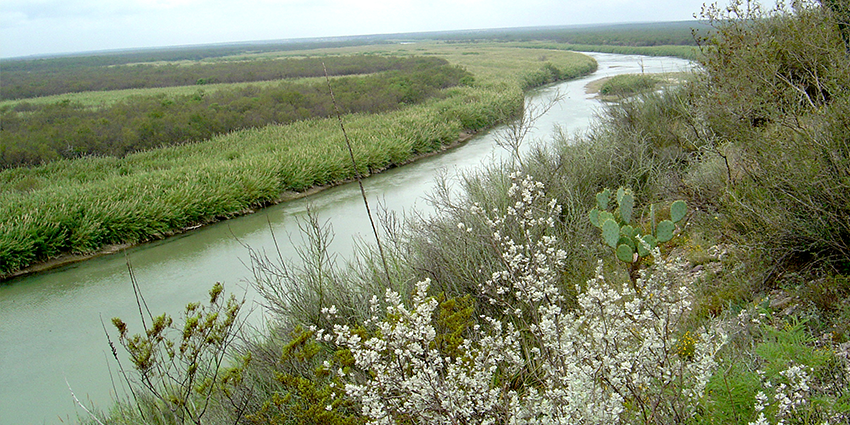
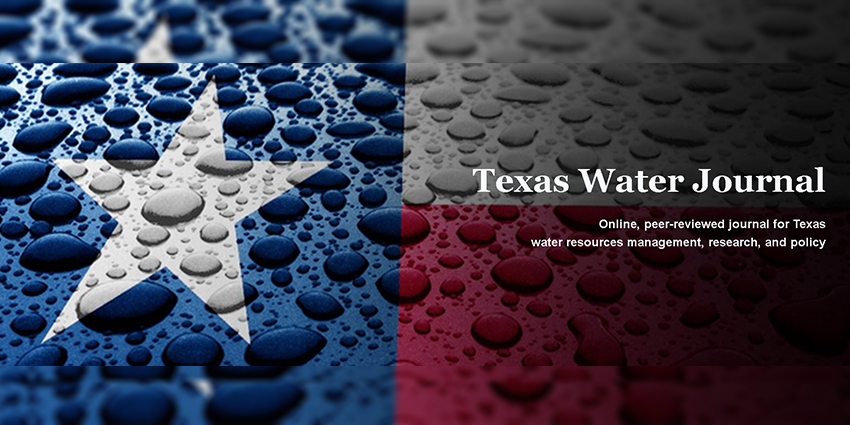
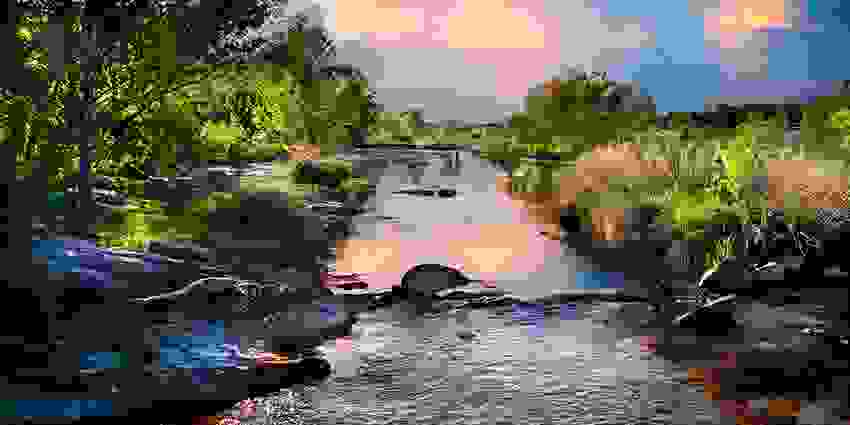


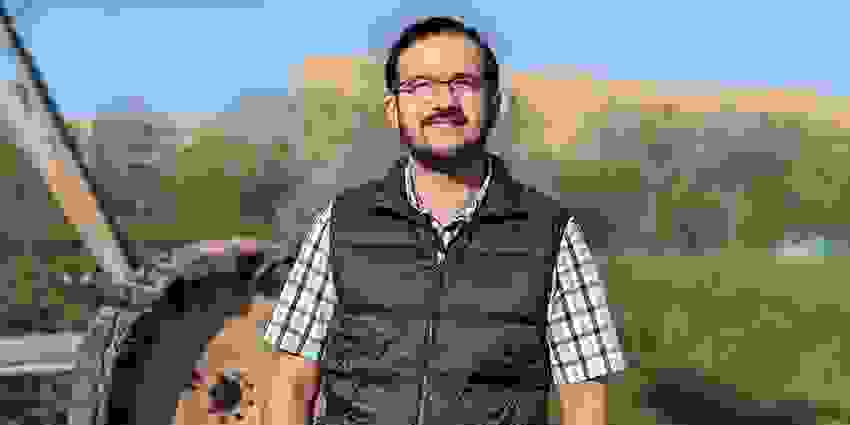




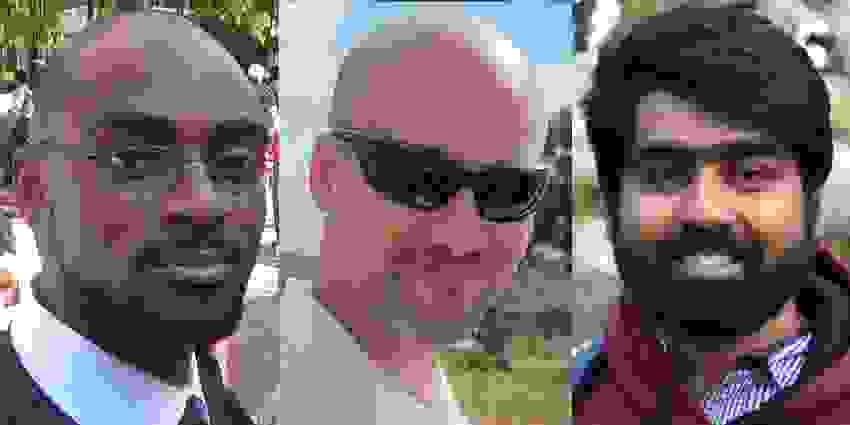







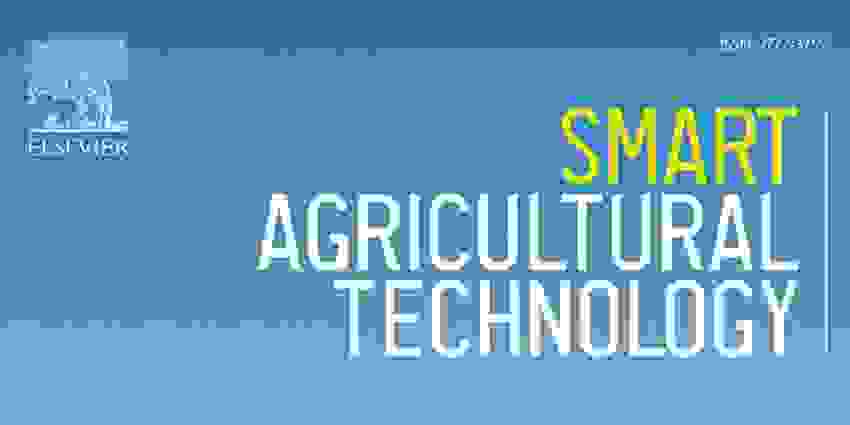
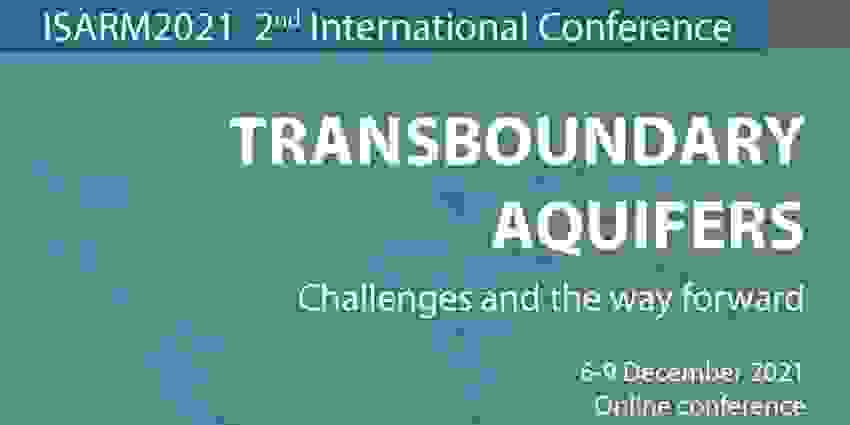






&color=fff&textposition=5,5&dropshadow=true&fontfamily=arial&fontsize=14&fontopacity=40&quality=60)

